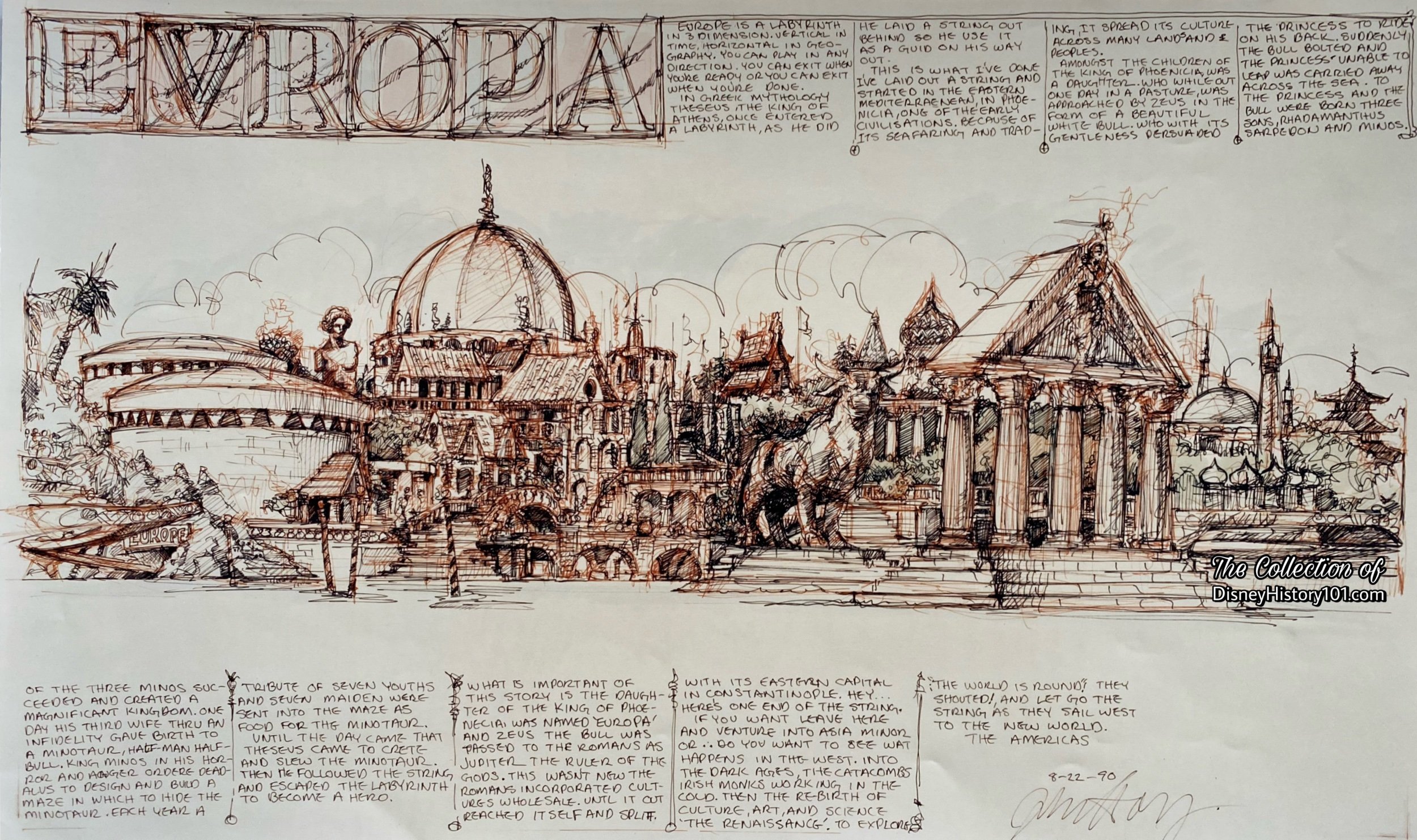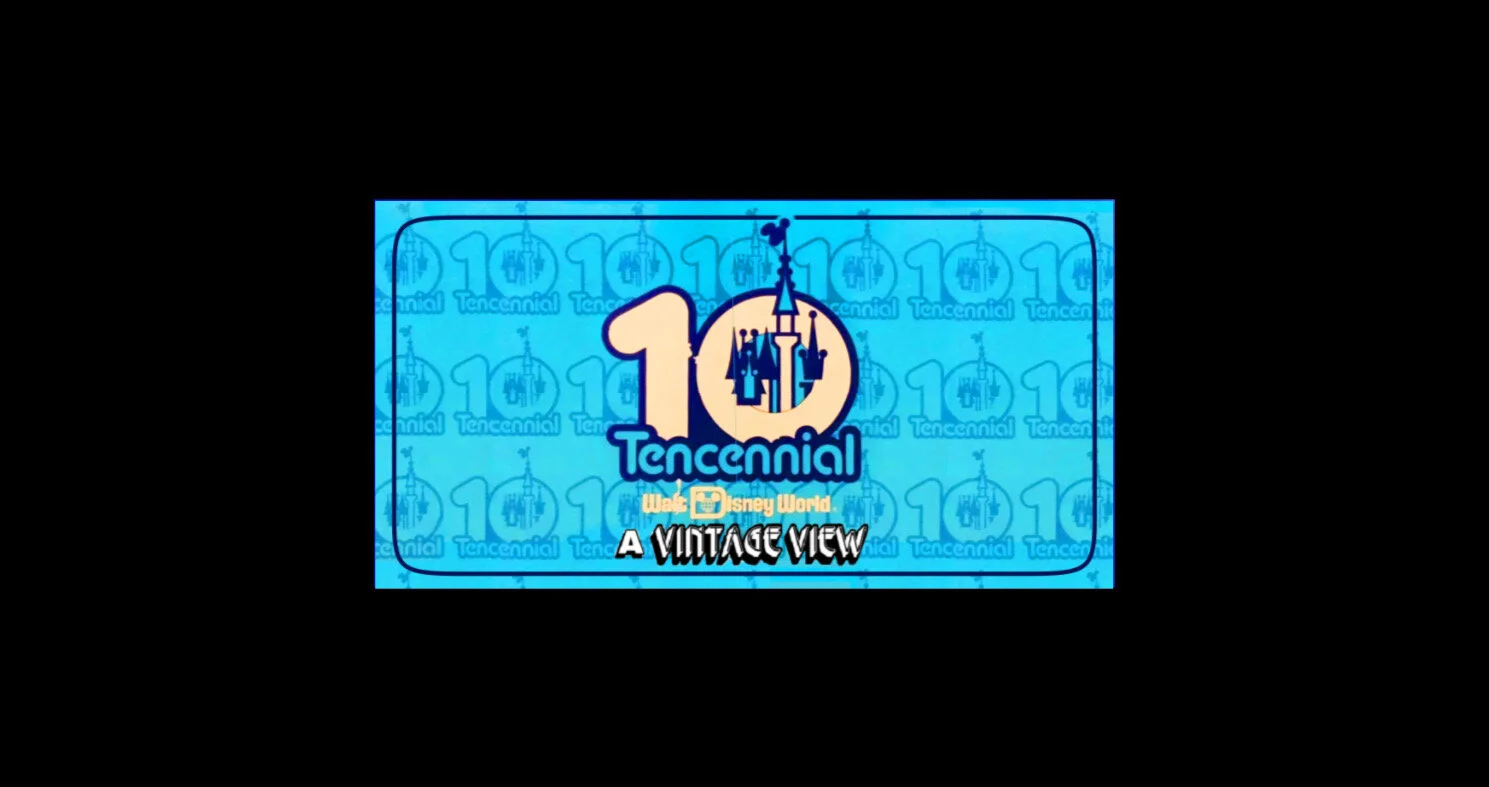POLYNESIAN VILLAGE RESORT

“Prologue: Walt Disney and Polynesia”
Walt and Lillian first experienced Hawaii in 1934, taking a six-day cruise aboard the S.S. Lurline to visit Oahu decades before Hawaii became one of the United States of America. Walt was so inspired to share the magic with Mickey Mouse and his friends in Hawaiian Holiday, released in 1939.
Decades later, the magic was shared with theme park audiences when the Polynesian Village opened as Walt Disney World's tropic island resort, located along the white, sandy beaches, palm-lined shores and crystal - clear waters of the Seven Seas Lagoon. There were eight native ‘longhouses’ named after a primary culture of Polynesia - Tahiti, Fiji, Samoa, Tonga, Hawaii, Bora Bora and Maui. These lodgings held 492 guest rooms, including suites. These were connected by winding pathways through tropical gardens and clusters of towering palm trees. On adjacent Papeete Bay, a wide variety of water recreation was available.
“At Disney's Polynesian Resort, you'll enjoy modern accommodations in a tropical island retreat. Dip your toes in toasty sandy beaches, or immerse yourself in the towering coconut palms and 75 different species of tropical and subtropical plants - even a cascading two-story waterfall.”
“Imagineering the Polynesian Resort & Village - Blue Sky for Walt Disney World Resort Hotels”
The Disney Organization had been familiar with the Hotel Resort business for quite some time. Walt’s own father Elias once ran a hotel. In 1955, Walt would follow in his father’s footsteps with the Disney-Wrather-Granville venture of the Disneyland Hotel.
After more than a decade of operating the Disneyland Hotel, the Annual Shareholders Report of 1967 (page 12), commented on the previous experience gained from the growth and expansion of the Disneyland Hotel in Anaheim, California (from 1954-1967): “both problems and solutions” were “now being called upon in the master planning of Walt Disney World.” Realizing that guests would travel from great distances, Walt’s plans for the Florida Project involved lodging establishments including two hotels and a camping facility at the time of opening.
Now (after Walt), Walt’s people and company were embarking on “Imagineering” a new, grander “theme show” for Florida audiences. The latter expression (“theme show”) was once defined as: “A controlled, usually man-made environment where as many as possible elements pertain to a single fictional or non-fictional motif. Thus, an individual placed within that environment may consciously or subliminally experience it.” But even more (as one sanctioned statement elaborated): “We are talking about all the things a guest may experience and be entertained by - colors, sounds, lights, detail - timing, taste and texture. Through art and animation, our imagination, creativity and talent blend together to make our ‘show.’”
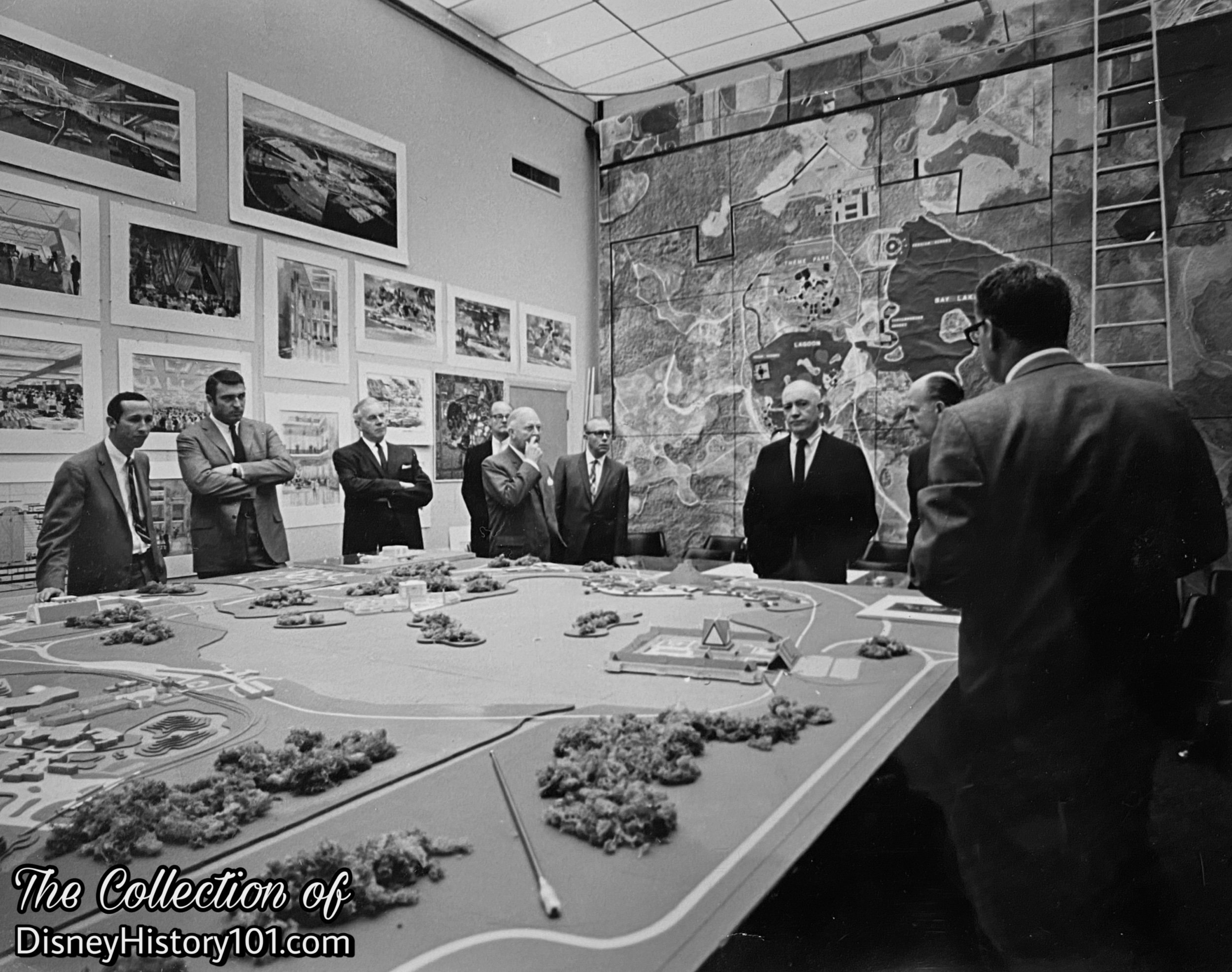
Walt Disney’s original site plan was realized. According to one c.1982 orientation instructor’s guide: “In fact, if you were to look at the original master plan you would see little deviation from that which Walt drew in 1965. The Magic Kingdom is still at the top, with hotels around the lakes, the Main Entrance Road winds its way 5 miles up through the original EPCOT site, the Monorail connects them all and the EPCOT Satellites (Tree Farm, Energy Plant, etc.) are all going on as planned.”
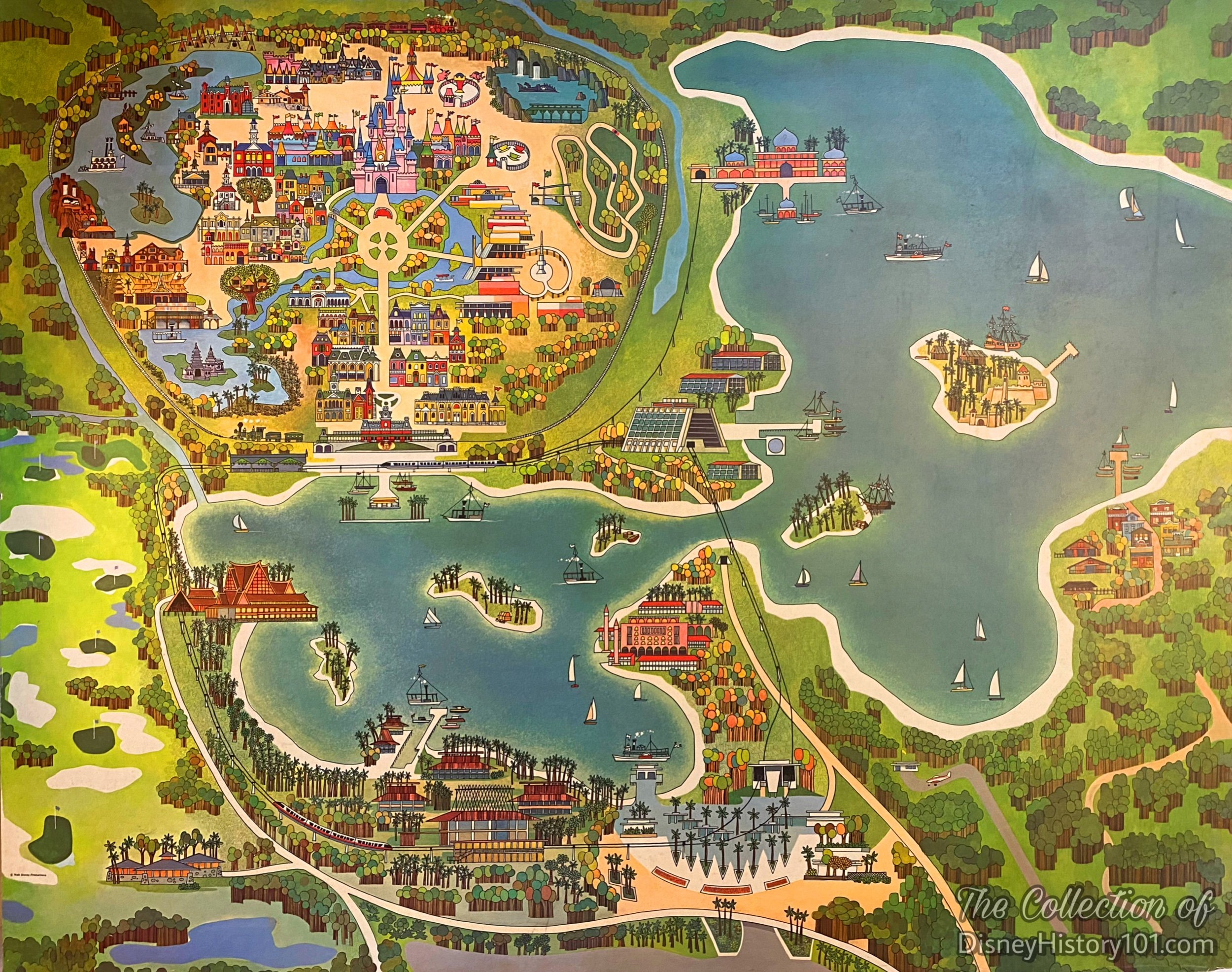
The WALT DISNEY WORLD® Vacation Kingdom complex was planned to serve as a sort of “vacation headquarters” for visitors that would also see beaches and other local attractions. However, there were many recreational opportunities and many wonders at the WALT DISNEY WORLD Vacation Kingdom. WALT DISNEY WORLD® would include hotels, camping and recreational facilities, and transportation systems to link the various parts of the complex. Recreational activities for the entire family were planned, like golf, tennis, sailing, water skiing, swimming, horseback riding and a number of noncompetitive sports and leisure time activities.
“Eastern Airlines Introduces Walt Disney World - The Family Vacation Kingdom” published by “the official airline of Walt Disney World,” before October 1971 described a Stolport (seen bottom right) “adjacent to the Disney World parking lot, is in the planning stage. Eastern contemplates providing Stol (Short Take-Off Landing) aircraft service between the Disney site and the Miami and Atlanta airports - perhaps by late 1971 or early 1972.”
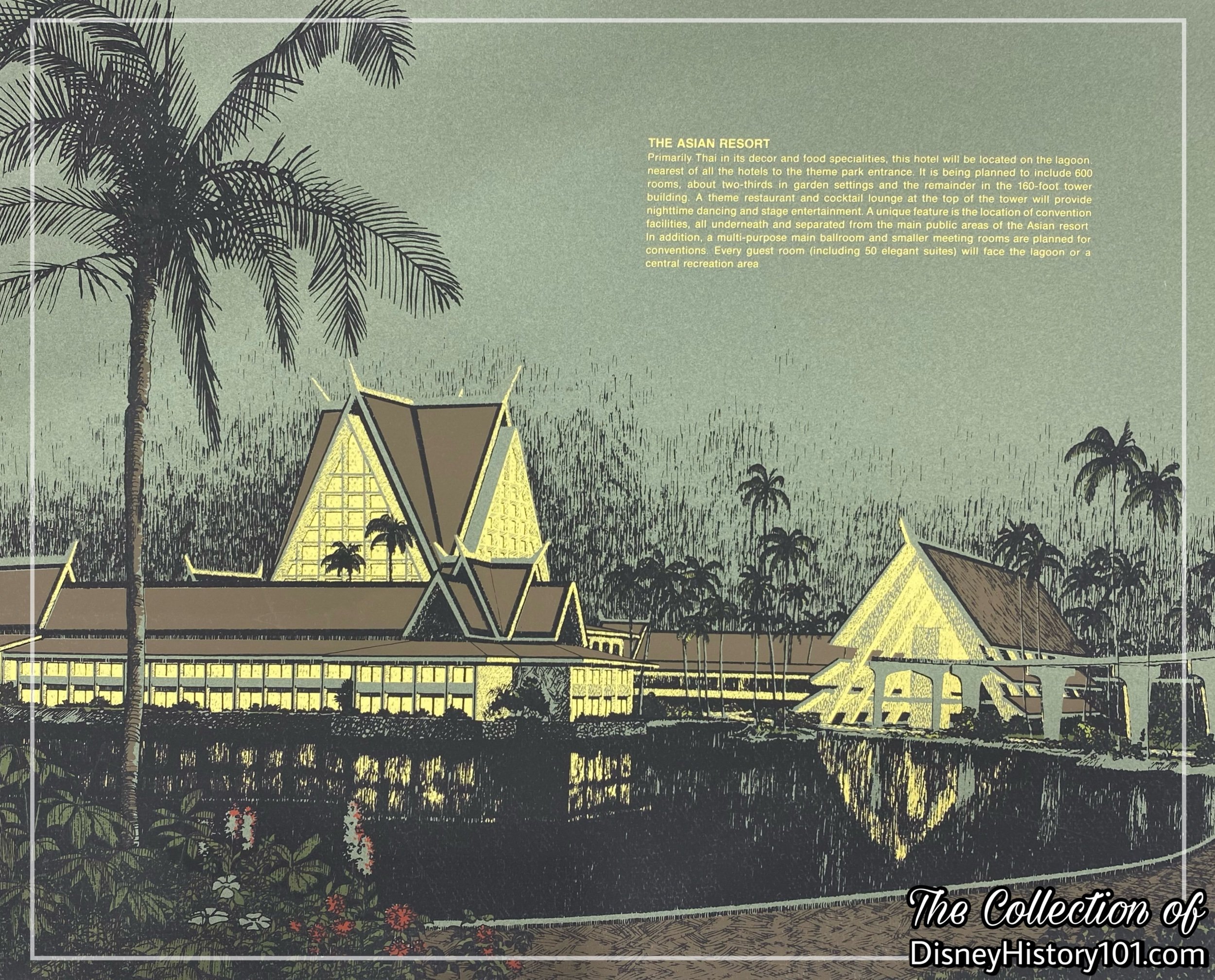
The remaining three - the Asian, Persian, and Venetian theme resorts - were to follow later. All were called ‘theme resorts’ because each hotel was to be distinct in the architectural and cultural theme it represents. Everything, from interior decor to employees costumes and special dining room menus were to carry out the overall theme. Each hotel was to be constructed around the lake and lagoon providing not only a scenic view but also affording guests a unique choice of transportation by land and water craft. Although there were no private automobiles operated on the site, guests arriving by car could drive through an underpass to a parking area at each hotel.
The Ten Year Master Plan of Walt Disney World included exciting research and development of new resort hotels. Other international-themed resort hotels (as seen in Paul Hartley’s artwork and concepts produced by Welton Becket & Associates, pictured above) were planned for the lagoon shores during latter periods of the Phase One plan. These included a new resort-hotel, based on an exotic Asian theme, planned for the shores of the Seven Seas Lagoon.
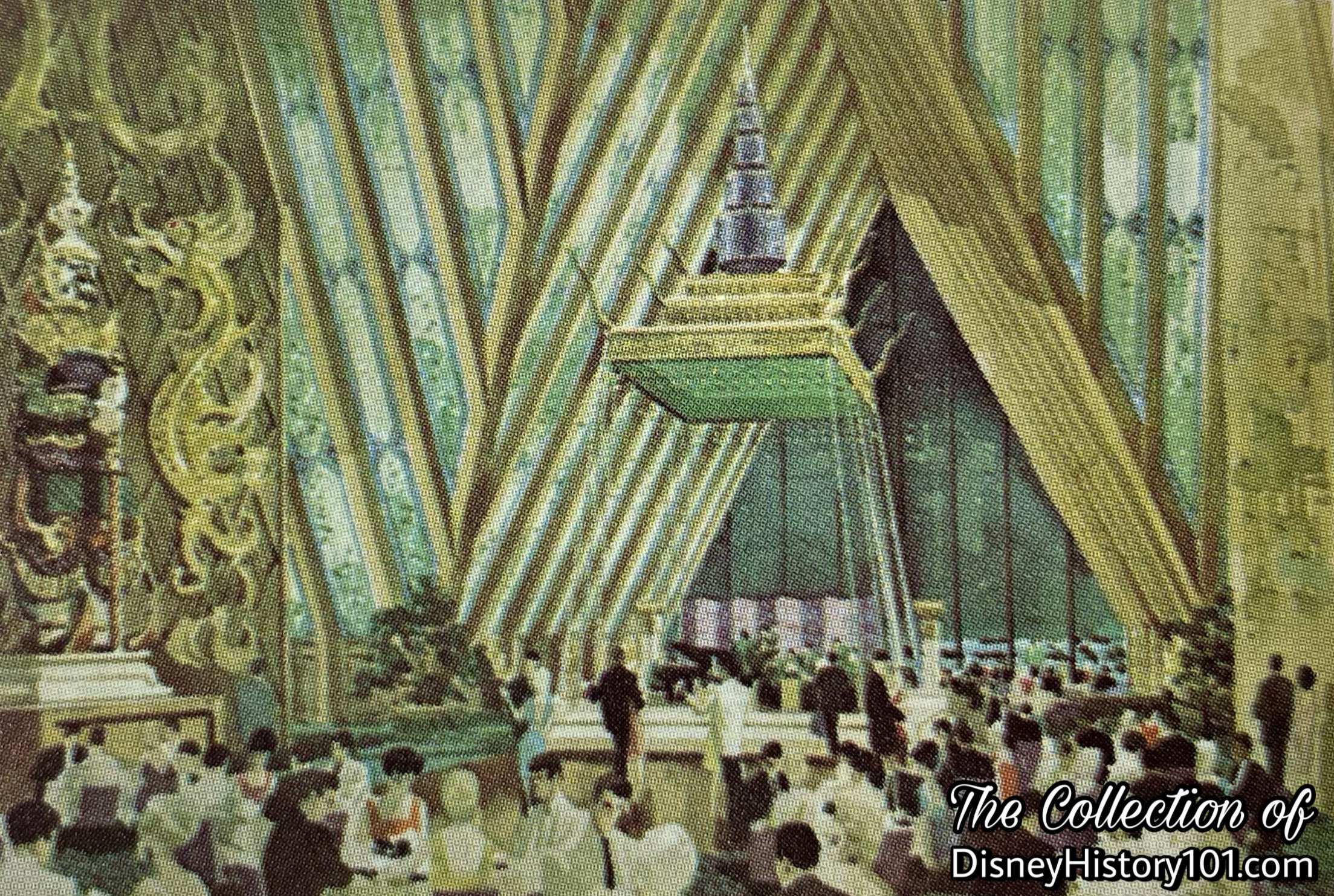
A 600-room and 50-royal suite Thai-inspired Asian Resort (with its own restaurant and lounge atop a 160-foot tower) would offer a complete range of resort facilities. “Primarily Thai in its decor and food specialities, this hotel will be located on the lagoon, nearest of all the hotels to the theme park entrance. It is being planned to include 600 rooms, about two-thirds in garden settings and the remainder in the 160-foot tower building. A theme restaurant and cocktail lounge at the top of the tower will provide nighttime dancing and stage entertainment. A unique feature is the location of convention facilities, all underneath and separated from the main public areas of the Asian resort. In addition, a multi-purpose main ballroom and smaller meeting rooms are planned for conventions. Every guest room (including 50 elegant suites) will face the lagoon or a central recreation area.” This particular additional development was planned to be completed by the Christmas of 1974 and beyond. The Asian Hotel was a WED/MAPO job in progress by September 30, 1982, costing $287,806.74.
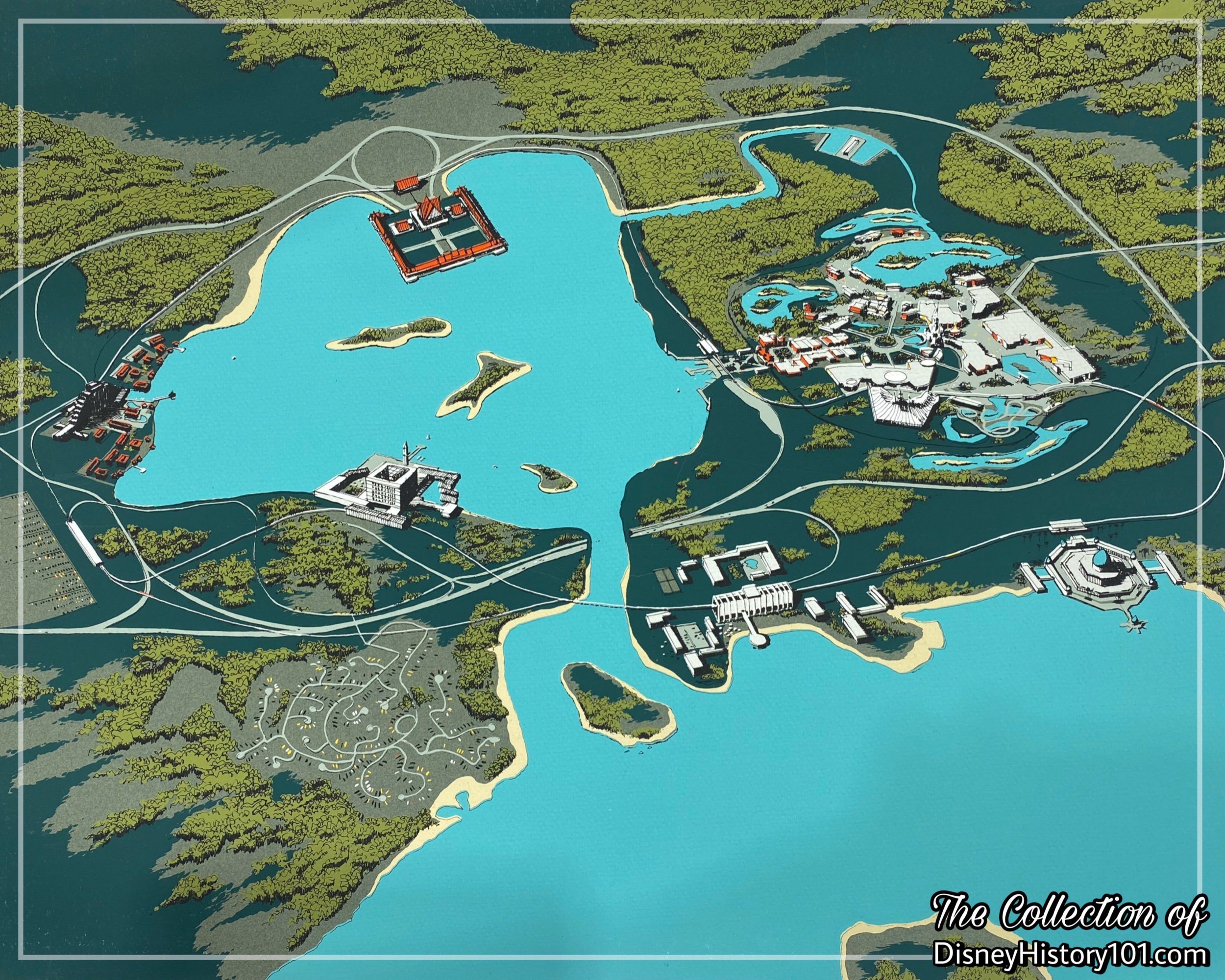
There was to be an exotic Persian-style resort hotel (with the character of Persian mosques, columns, landscaped courtyards, and terraced sundecks) planned for the northwestern shore of the Lake.
There was also to be a Venetian Resort (in similar style of St. Mark’s square) with sunlit atrium and 120-foot campanile, while the surrounding area would simulate “the City of Canals,” with gondolas maneuvering through waterways and under bridges.
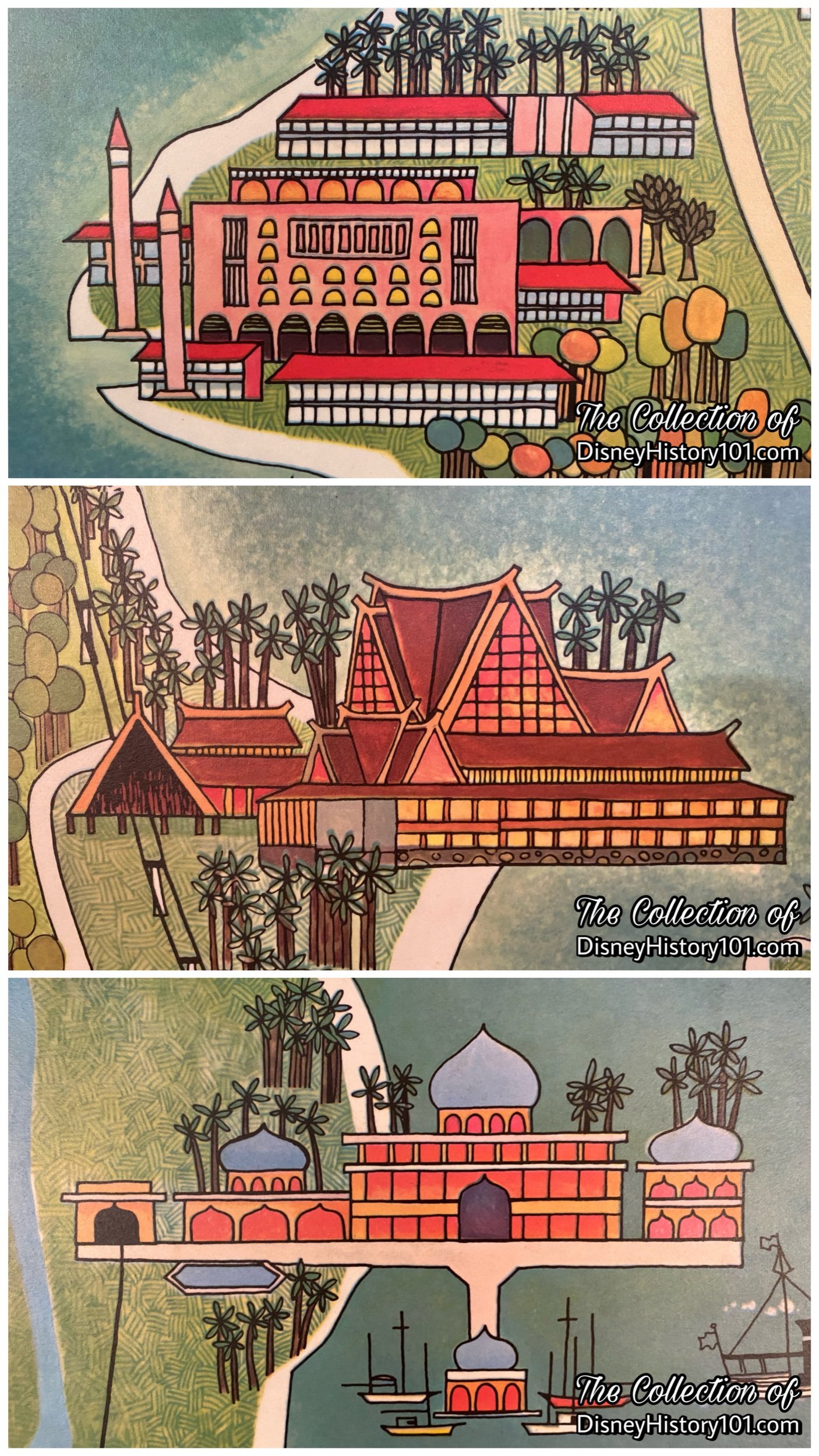
For now, there were to be four motor inns which were constructed on Disney property near the present preview center providing 1,600 more rooms only two or three miles from the theme parks. By 1982, several other resort hotels were in development, including “the Grand Floridian, Mediterranean, and Cypress Point Lodge… taking Disney art of themed resort living to new levels of luxury and sophistication.” [“The Spirit of Epcot Center” Orientation, c.1982] By September 30, 1982, development of the Mediterranean Hotel was underway (WED Job #F201-1; at a cost of $874,197.02); and a Brazilian Hotel was underway (WED Job#A070-4 at a cost of $4,320.22).
However, one “Preview of Walt Disney World” prospectus would soon announce: “‘While five theme resorts are planned, only two will be built in time for the opening of Walt Disney World, near Orlando, Fla., in October, 1971,’ says John Curry, director of the Walt Disney World Co., hotel division… First two to open are the Contemporary Theme Resort, on the lake, and the Polynesian Theme Resort, on the lagoon. Contemporary will be the convention flagship hotel with major convention and exhibit space. Other theme resorts include the Asian, the Venetian and the Persian. Each of the hotels will have meeting space most likely below the lobby level… Each resort will have a specialized design motif, food specialties, dining room menus, recreation activities, entertainment, interior decor and employee costumes. Resorts will offer nightclub entertainment and dancing. Motion pictures and stage shows will be presented in nearby theaters.”
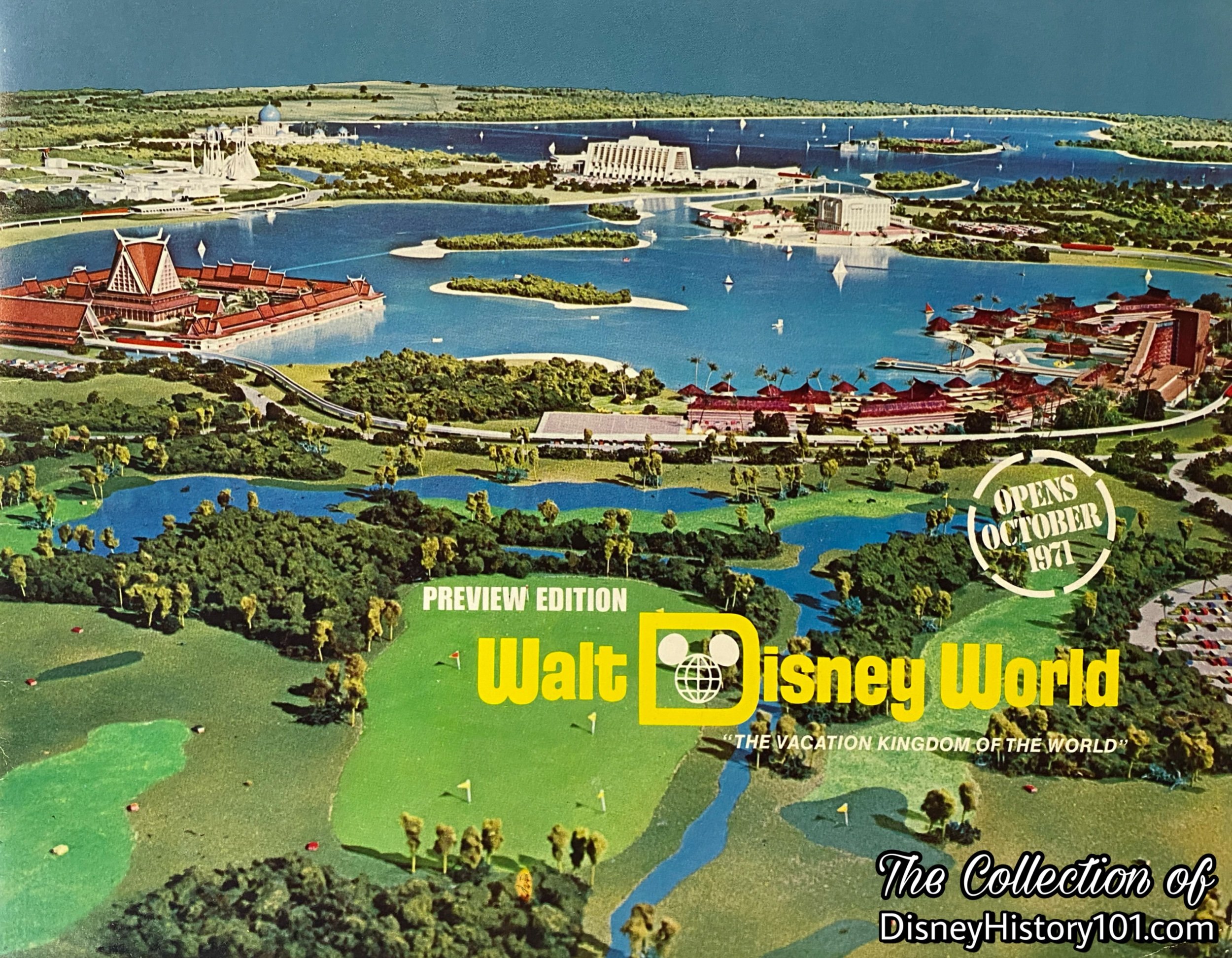
“The Path to the Polynesian Resort Hotel”
During Disneyland’s formative years, several shows featured true-life Pacific Islander (including Polynesian) entertainers and elements. Adventureland contained three shops with a scope of sales dedicated to merchandise from the Pacific Islands. For instance, Waltah & Gretchen Clark‘s Hawaiian Shop sold jewelry, garments (shirts, muumuus, and other textiles for men, women, and children), in addition to other imports from Hawaii and the South Seas. Attractions like Walt Disney’s Enchanted Tiki Room and the Oceania section of It’s A Small World featured story elements inspired by the Pacific Islands. From 1966 to 1968, the Disneyland Hotel featured Luau Grounds (“a special area for Hawaiian parties”), the Eva Jon Hawaiian Shop, and even a White Sand Beach. However, this was the first time that an entire Hotel Resort carrying the “Disney” name would be entirely themed around the character of Polynesia.
One prospectus publication (entitled “Preview of Walt Disney World”), described the Polynesian Theme Resort in the following way: “Southern shore of lagoon near monorail station entrance… 732 rooms with 1/3 in 12-story high rise, remainder in 2-story out buildings… convention facilities below lobby level… 7,000 sq. ft. ballroom, plus 6 small meeting rooms and a number of hospitality suites… no exhibit area as such, meeting rooms can be used… main dining room overlooks scuba pool… specialty restaurants on top floor… all 732 rooms face water.” Other early prospectus documents promised many things for “Walt Disney World Vacation Kingdom” including a “unique concept linking the resort-hotels and the theme park by boat and monorail transportation systems” that would allow guests to “dine in elegance in the Contemporary Hotel, enjoy the attractions and adventures of the ‘Magic kingdom’ for ‘dessert,’ and end the evening with a late show or snack at the Polynesian resort.” [“Preview Edition of Walt Disney World - The Vacation Kingdom of the World,” page 16]
The Preview Edition of Walt Disney World (published before the Grand Opening) soon described the resort, five hotels were planned. Of those that were realized, some of the entertainment that defined the character of the resorts was divulged. The Polynesian resort would offer “Tahitian Fire dances, Hawaiian luaus, and other activities inspired by the Pacific Islands.” [“Preview Edition of Walt Disney World - The Vacation Kingdom of the World,” page 16] The Contemporary Hotel would offer “popular entertainers of the day.” The local weekly Sunday supplement of “Sunrise” (of “Today”) published September 26, 1971 mentioned potential activities on the lake to be enjoyed by guests of the resort hotels, included “swimming, sailing, motor-boating, water skiing, skin diving and eventually (perhaps) surfing on artificial waves.”

“For the sports enthusiast, the concept for the Polynesian-theme hotel features a wide variety of recreation facilities. There will be boat rentals on the lagoon, of course, and a special scuba diving pool - complete with an underwater viewing area for spectators. And for the golfer, this theme resort will be closest to the Vacationland golfing complex. Plans for the Polynesian resort include a main dining room and five meeting rooms for conventions. But the most unique aspect of this hotel is that each of its 700 rooms will face the water... and many will offer an exciting view across the lagoon to the theme park. A third of the rooms are planned for the graceful high-rise structure, which includes restaurant and cocktail lounge at the top.”
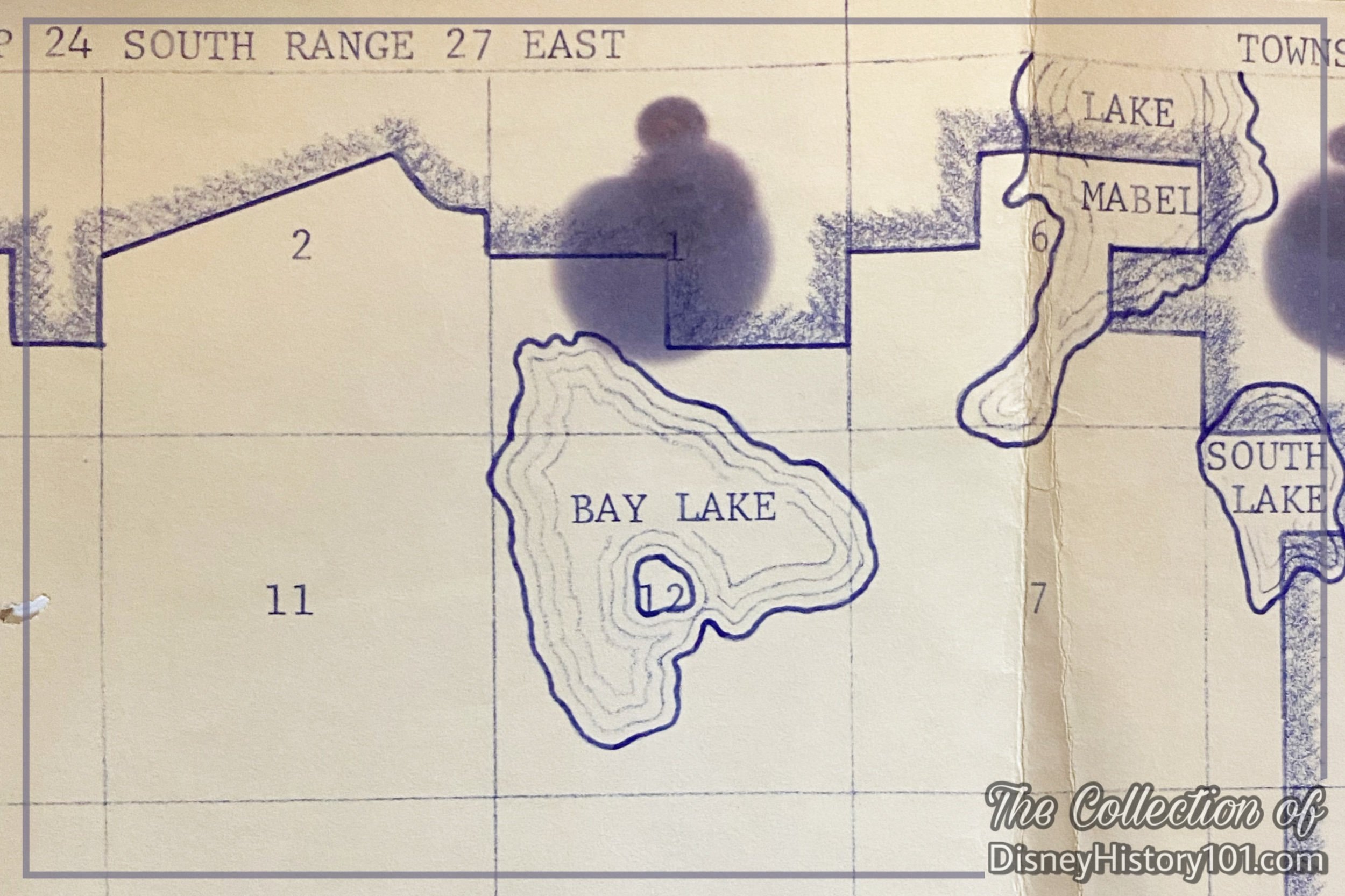
Soon, work began on draining, scraping, and refilling Bay Lake. The lakeshores were banked to prevent storm runoff from sullying the water. Many of the recreational activities were to be centered about Bay Lake (a natural lake located wholly within the complex) and its beaches, and on a lagoon style extension of Bay Lake located between the park and the resort hotels.
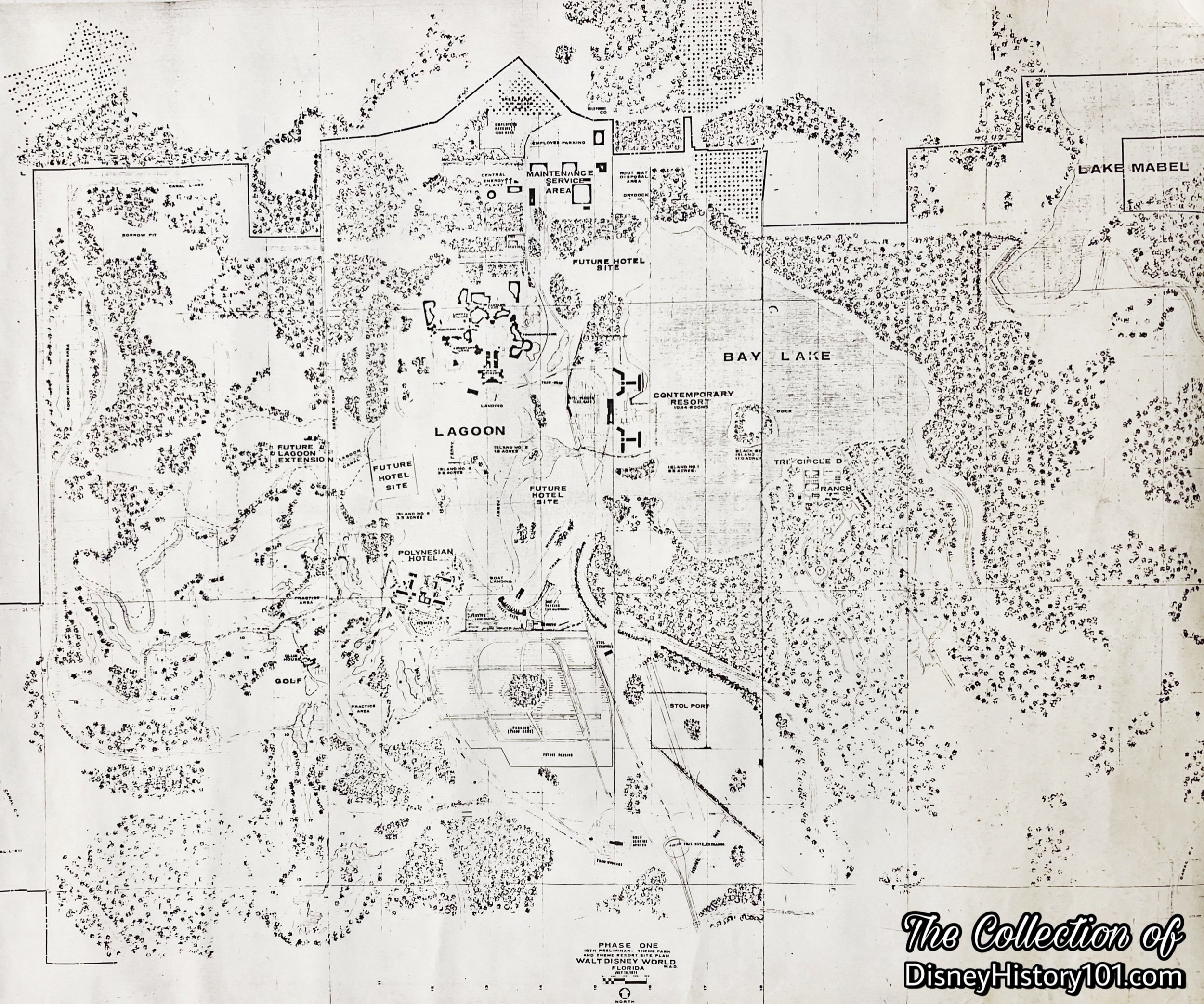
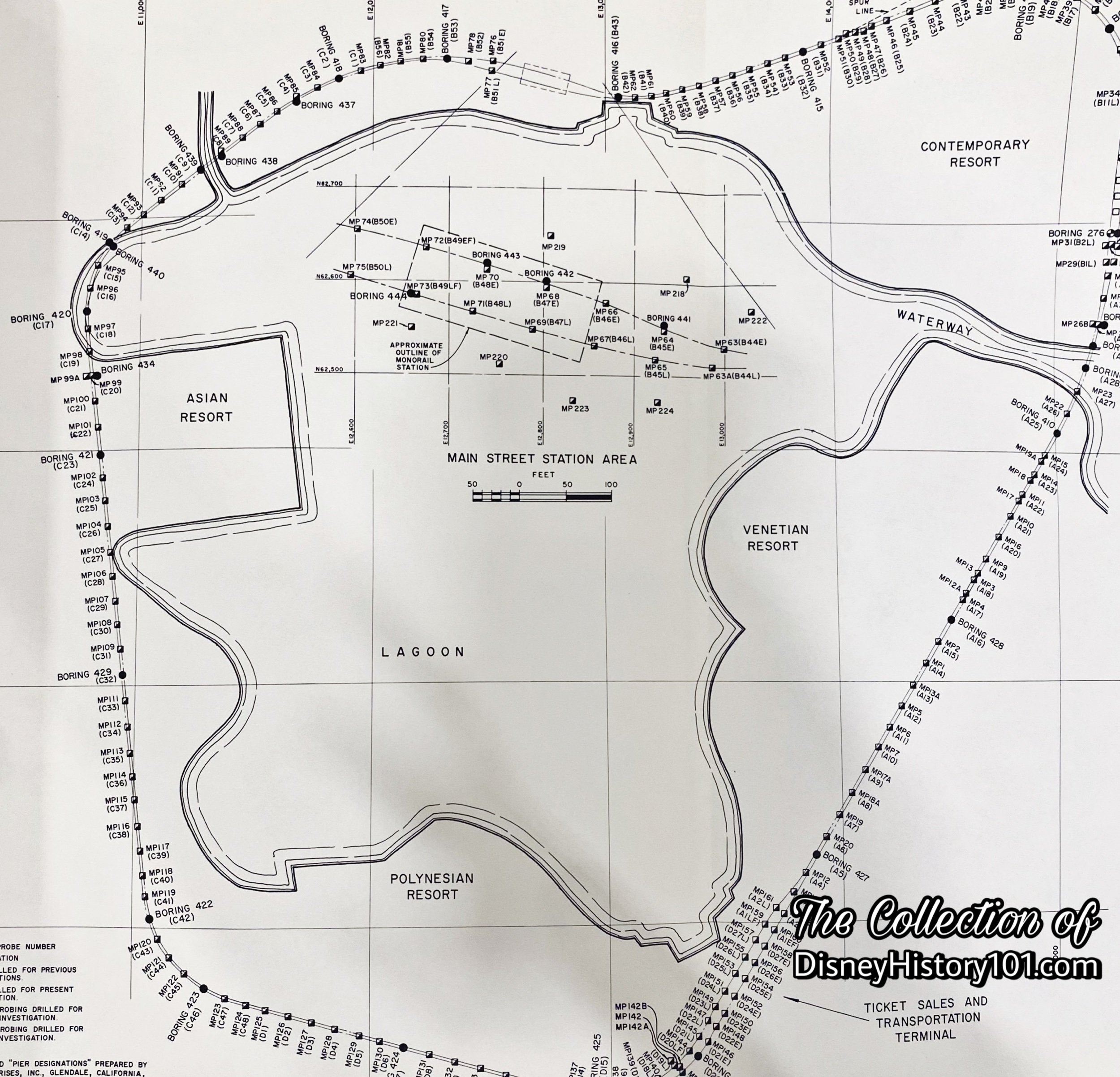
Soil samples were taken.
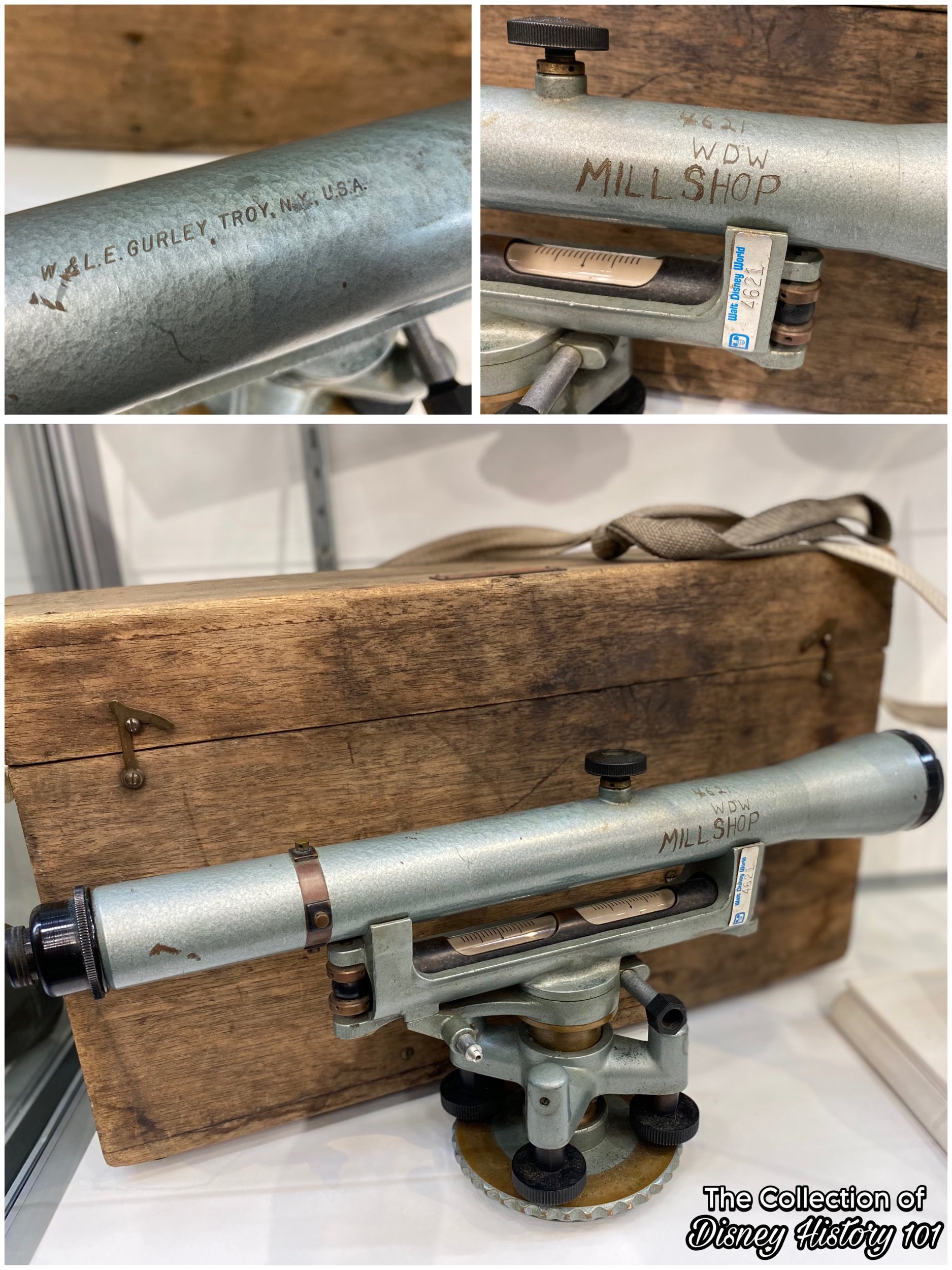
The area was surveyed.
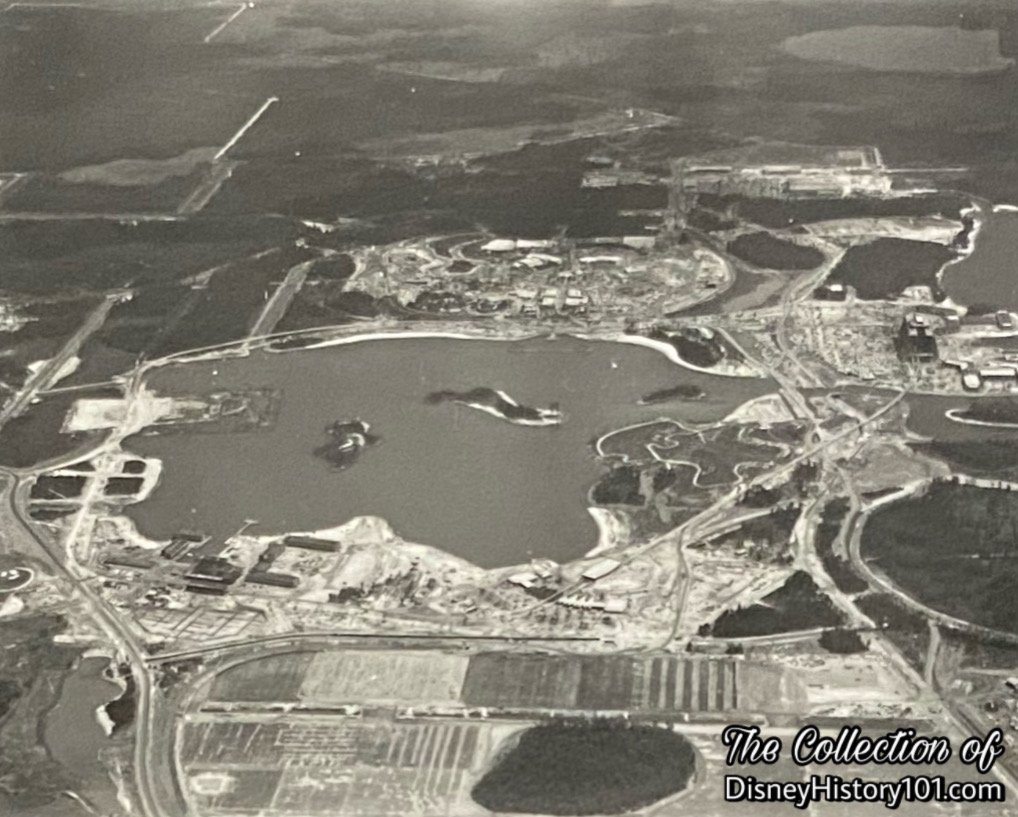
The Polynesian Village Resort Hotel was conceived as a South Seas resort for the southern shores of the 200 acre, man-made Seven Seas Lagoon of Bay Lake. The Polynesian Village Resort plans were Imagineered by Wed Enterprises, Inc. and designed by Welton Beckett and Associates (of Santa Monica, California), United States Steel Realty Developement Corporation, and (of course) with construction overseen by WED Enterprises, Inc.! The collaboration of Welton Beckett & Associates and WED Enterprises, Inc. is of particular note, as it is the very partnership that worked together to realize the buildings that housed Walt Disney’s shows for the 1964/1965 New York World’s Fair.
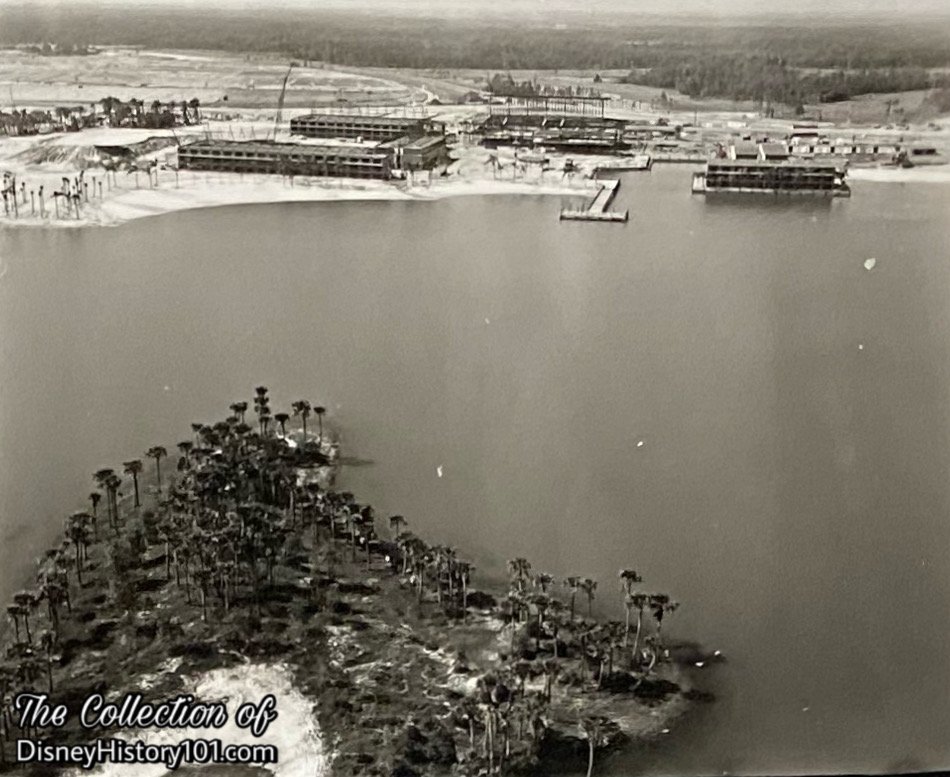
“Modular Construction”
Much of the required facilities engineering (including mechanical engineering, specifications, structural engineering design, CAD design, and Data Control documentation) was performed by Walt Disney Imagineers. The original steel framework was erected on site. Next, the individual rooms of the Polynesian Village Resort were creatively engineered by the team of WED & MAPO (supported by Walt Disney World Shops).
The Polynesian Village would have 492 guest rooms in eight separate Longhouses. The Resort-hotels would have the first manufactured assembly line steel-frame guest rooms also built by modular construction. The rooms (including carpeting and fixtures) were fabricated as separate units off-site some seven miles away at U.S. Steel’s Realty Development Division, utilizing a innovation called “unitized modular construction.” Plumbing, electrical fittings, closet, wall coverings, air conditioning, and remote TV controls were installed. The three hundred workers of U.S. Steel produced some 15 rooms a day using this method. Then, they were loaded onto flatbeds and trucked four miles to the site, hoisted into the air, and installed in their appropriate location in the framework, “as a drawer would slide into a chest of drawers,” according to “The Spirit of Epcot,” page 43. This same process was used to construct the other Walt Disney World “theme resort hotel” - the Contemporary Resort Hotel.
According to the Sunday, September 26, 1971 issue of “Sunrise” magazine, a supplement of “Today”: RCA Corp. was“creating a 21st century information-communications system for the project; Monsanto Co. developed new materials used in construction of the hotels, and Aeroject-General created a vacuum waste-disposal system” to “provide an ‘unseen housekeeper’ for the vast park.”
After all, the Polynesian Village would have an overnight Capacity of 1,700.
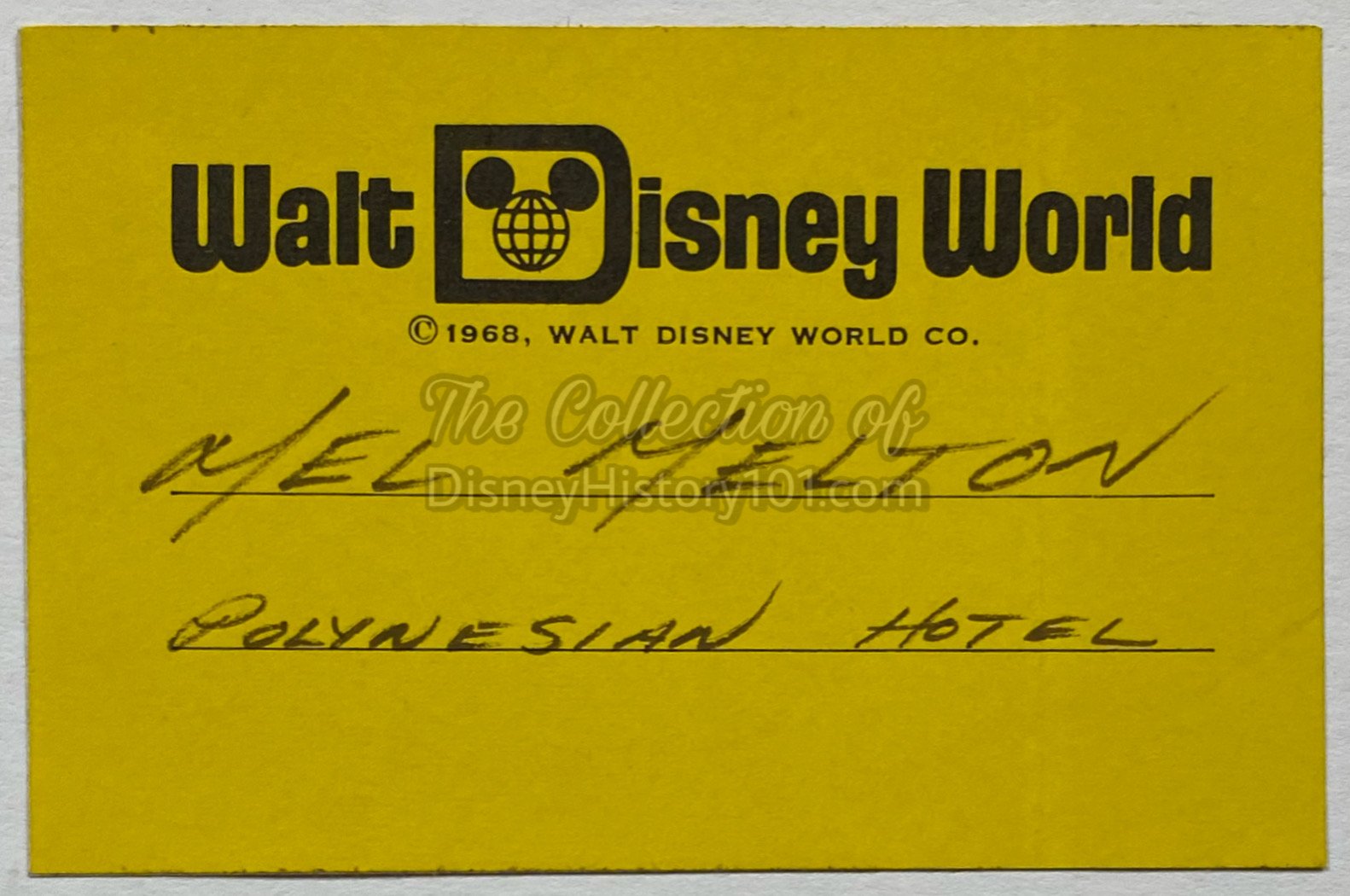
According to Donn Tatum (on December 16, 1971; for the Walt Disney Productions shareholders of 1971): “Agreement has been reached for the purchase by Walt Disney World Co. from U.S. S. Realty Division of United States Steel Corporation of its interest in the two Theme Resort Hotels at Walt Disney World. This agreement supersedes an earlier understanding which contemplated that U. S. S. Realty would own the hotels and lease them to a subsidiary of the Company under a long-term lease.”
The shareholders report continued (on page 31):
“U.S.S. Realty Division of United States Steel Corporation is nearing completion of construction of two theme resort hotels at Walt Disney World. While the original understanding between the Company and U.S.S. Realty contemplated that U.S.S. Realty would own the hotels and lease them to a subsidiary of the Company under a long-term lease, in December, 1971 Walt Disney World Co. agreed to purchase U. S. S. Realty's interest in the hotels for approximately $50,000,000, and to assume the costs of completing construction. In addition to the amounts payable to U.S.S. Realty pursuant to this agreement, Walt Disney World Co. previously expended approximately $41,000,000 for hotel furniture and fixtures, architectural and design fees and construction costs, of which $28,557,000 had been expended as of October 2, 1971.”
Much was still incompleted the day before opening (October 1, 1971). According to Edward Prizer: “Coffee and pastries are served on the bustling mezzanine of the Polynesian Hotel. Charlie Ridgway conducts another briefing. (‘We couldn’t hold the briefing here last night,’ he says. ‘There were no carpets, no wallpaper, no light fixtures.’) Magically they have all been installed overnight.” [According to one Orlando-Land article “Second Act” by Edward L. Prizer, published October of 1976, page S-3]
However, much of this was in place by the time of the Grand Opening Spectacular and Dedication Ceremony of Walt Disney World, beginning October 23rd.
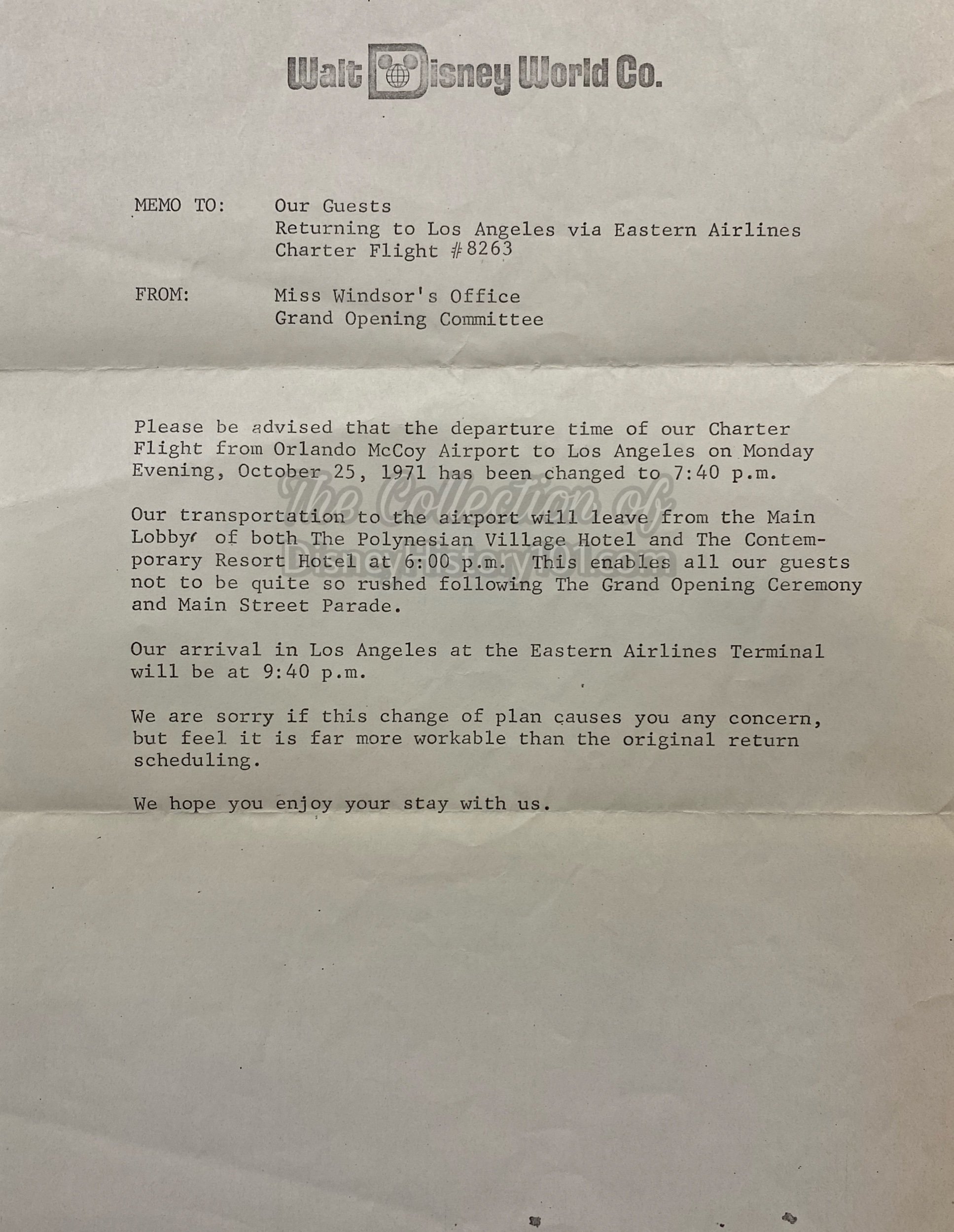
“News of Dedication From Civilization”
For the Grand Opening, Guests were flown in and depending on the flight, a Continental breakfast, cocktails and lunch was be served on the plane. Upon their arrival, Guests were met planeside by a Host or Hostess who would remain with them throughout their arrival to Walt Disney World, and be on call during their stay to coordinate their desires. All ground transportation was provided by the Hospitality Committee. Meals were complimentary. For the ladies, hairdressers had a special room, for combing and setting only, throughout Guest’s visit. A number of events were planned including the black-tie Gala Dedication Concert, the informal Grand Canyon Reception and Lakeside Buffet, the Polynesian Luau, and the Grand Opening Dedication Ceremony and Main Street Parade.
Walt Disney Studio veteran annimator and WED Imagineer Bill Justice recalled: “The Polynesian Resort dedication was my favorite. Misse and the other kids were taken by war canoe to one of the islands in the Seven Seas Lagoon for a cook-out. The rest of us were treated to a fabulous feast on the beach with at least a hundred Polynesian singers and dancers. When we left, the entertainers, all holding a large sparkler in each hand, formed two lines for us to walk through. We sure didn't have any trouble finding the path.”
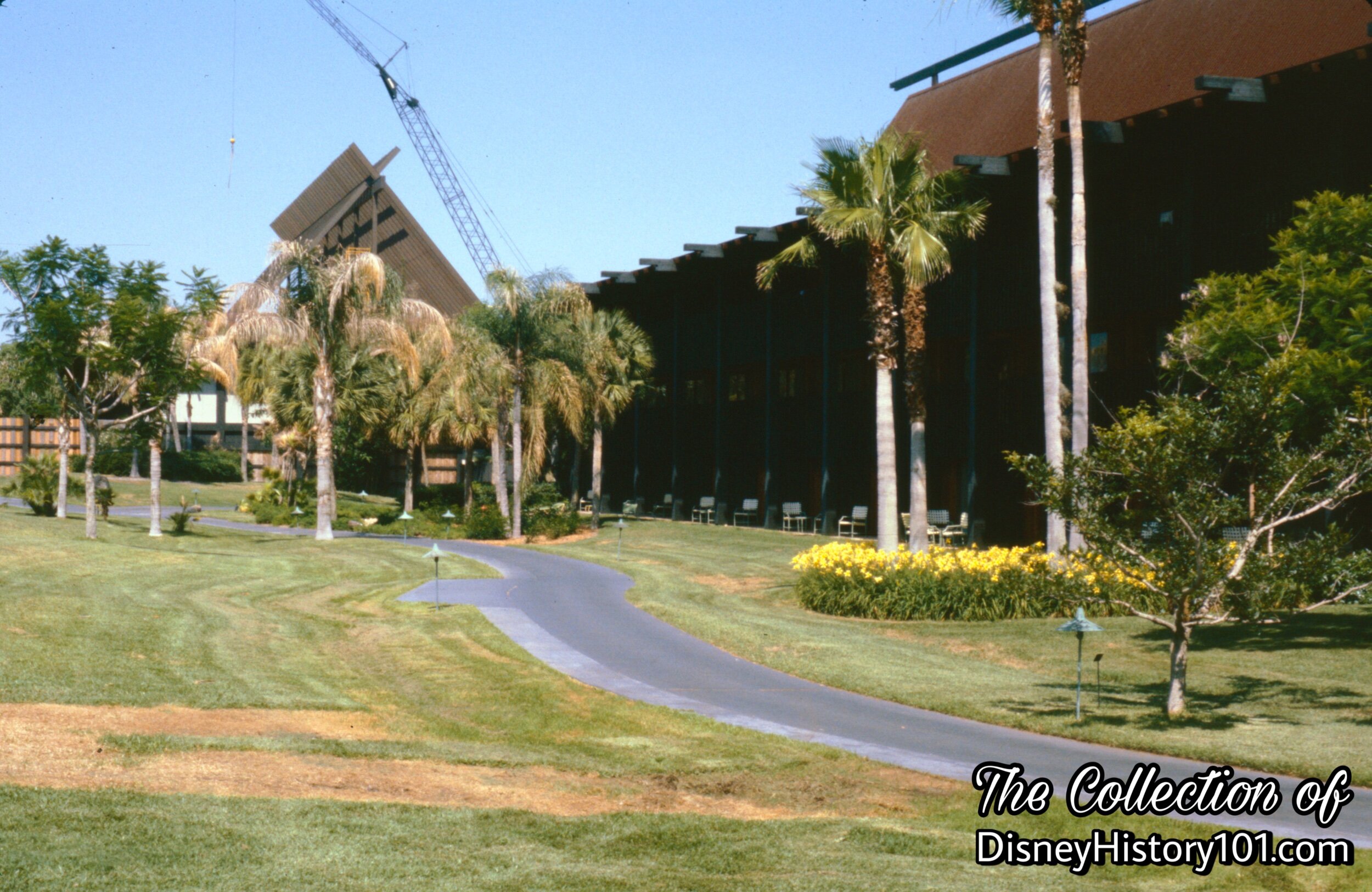
The roofs were covered with a special kind of tin called “Cor-Ten,” which is said to naturally rust and weather to “a rich, natural, earth-toned patina.” Further, “all steel structure beams are covered with wood, and the eight longhouses, which house the guest rooms, are no more than three stories tall, which keeps the silhouette long and low, befitting a Polynesian Village.”
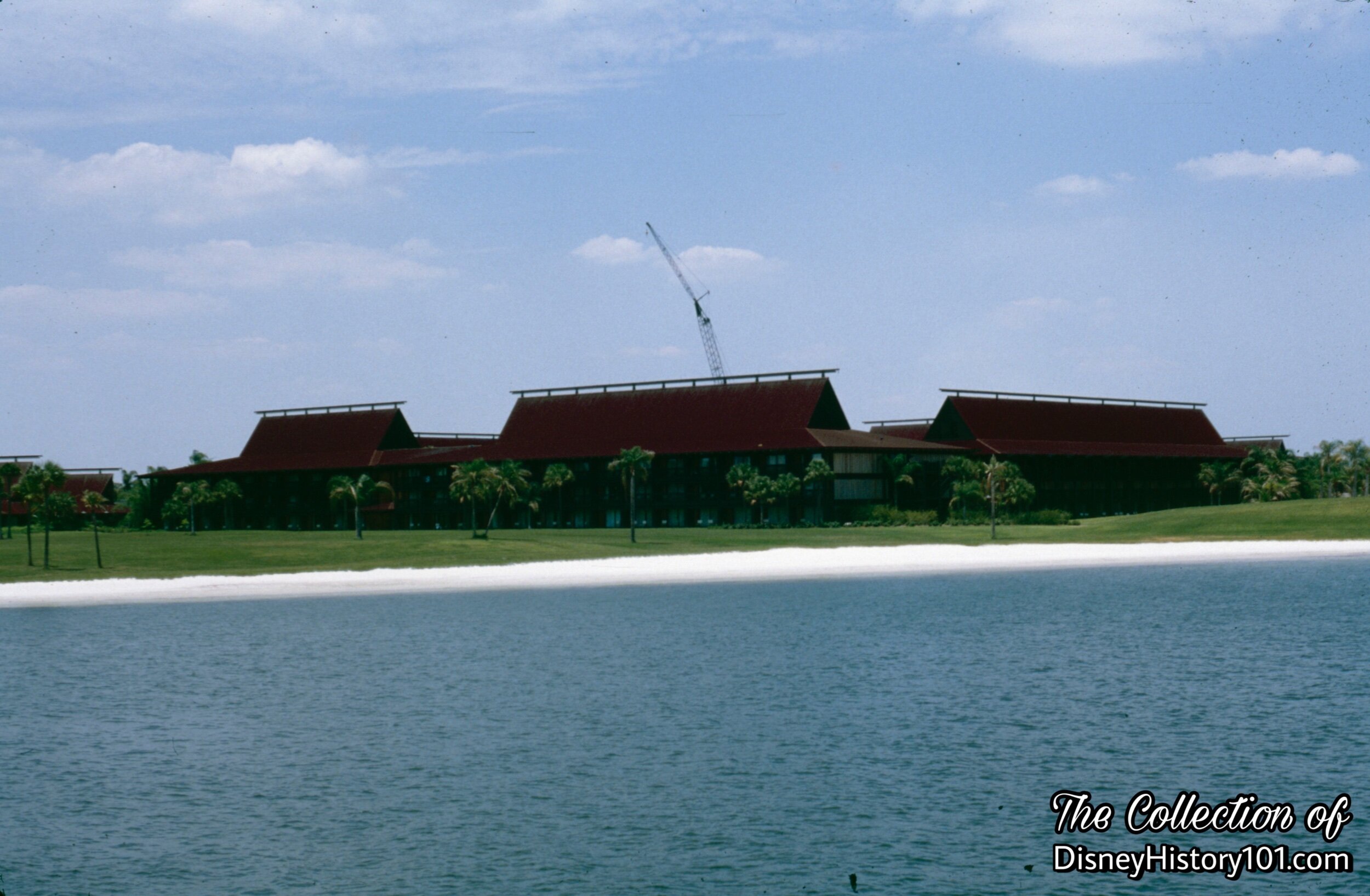
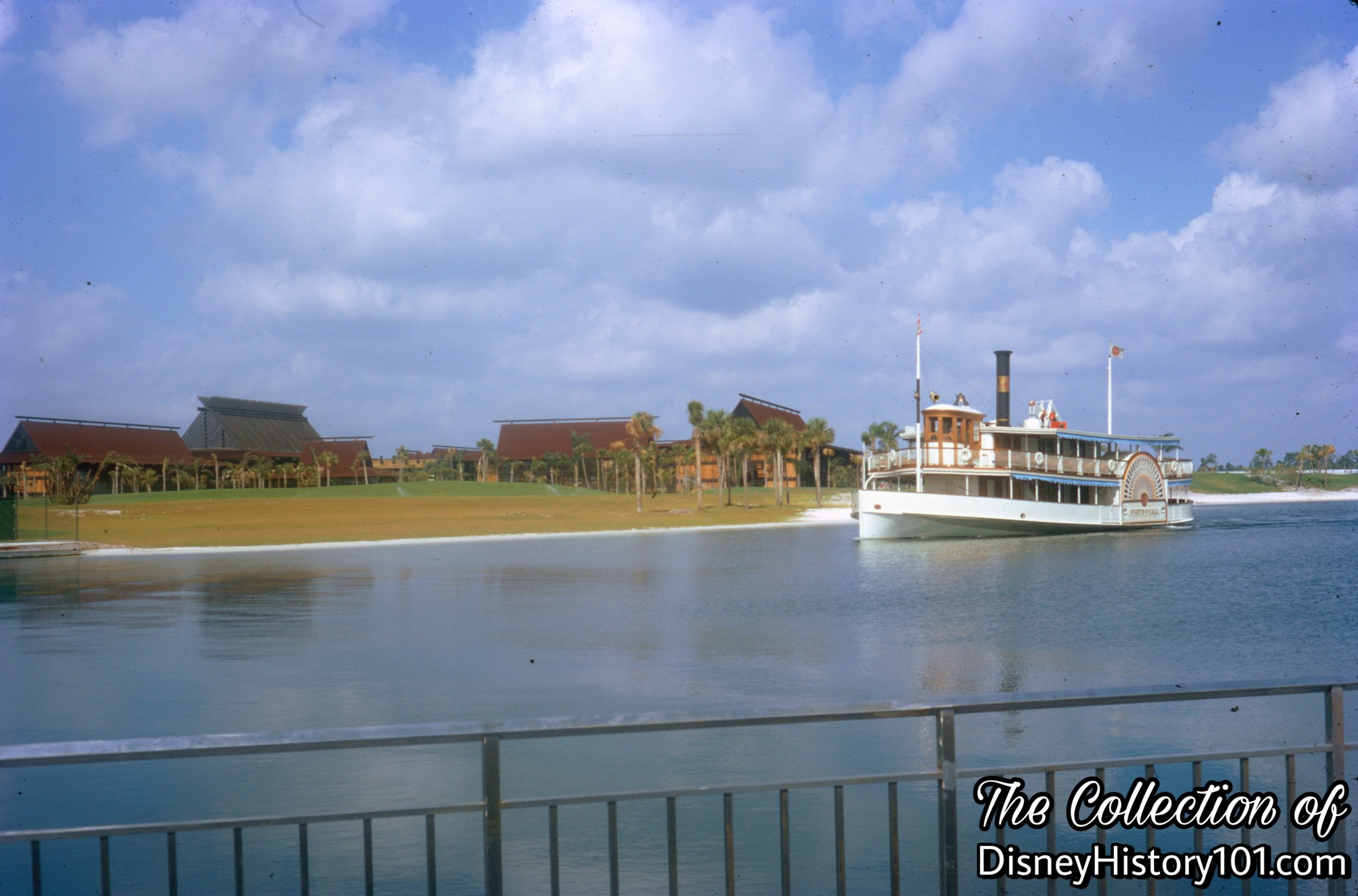
As the Magic Kingdom and other Resorts were situated around the lake, the resort hotel would have a Monorail Platform, where WED-designed transportation systems carried guests to and from the Magic Kingdom. Other modes of transportation which connected with the romantic South Seas resort included minibuses, trams, ferryboats, motor launches, and two authentic sidewheeler replicas, the Southern Seas and the Ports O' Call.

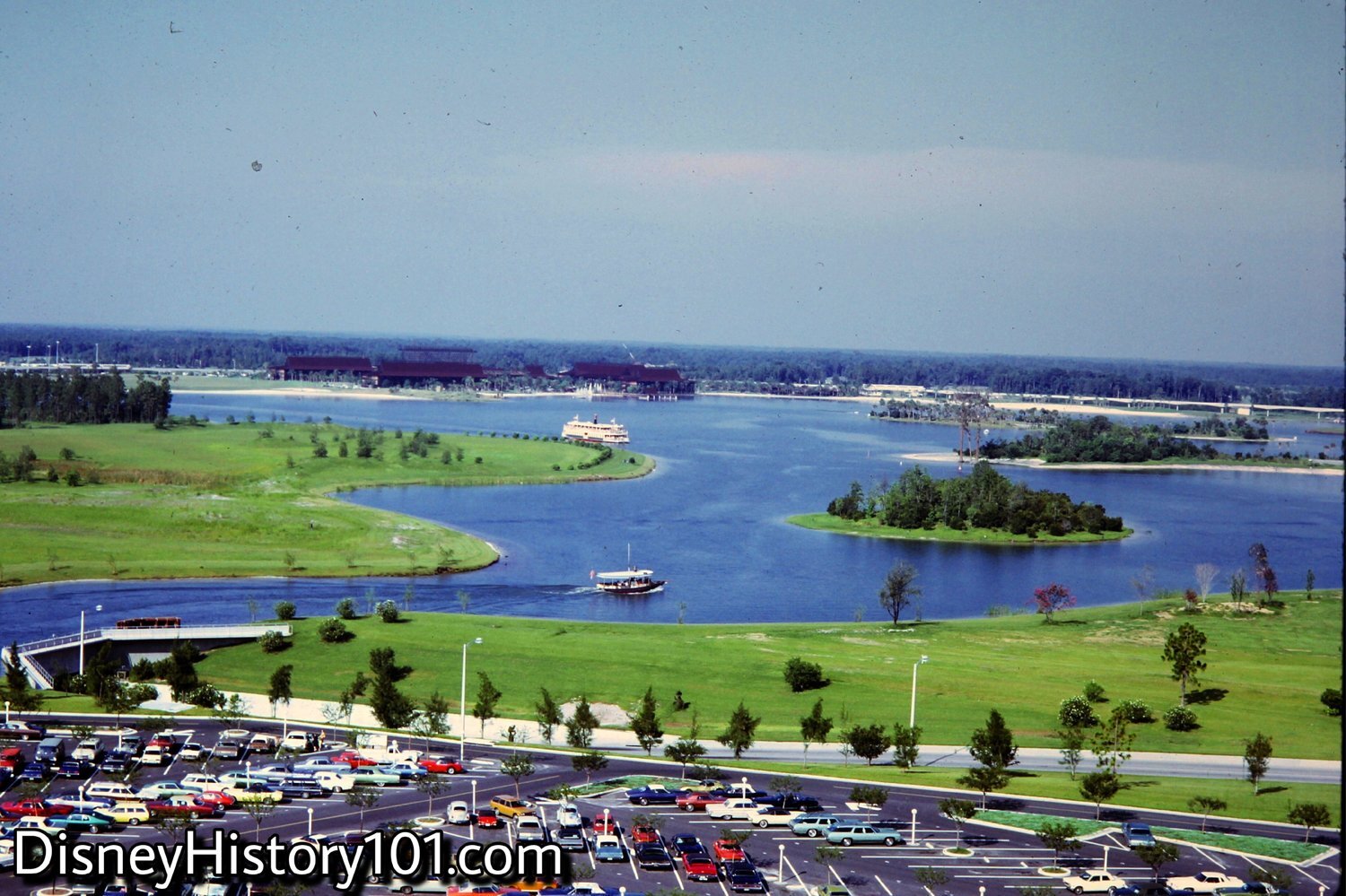
Just beyond the Parking Area, the Polynesian Resort can be seen far across the waters and islands of the Seven Seas Lagoon. The watercraft is part of the mass transit in force across the expansive Epcot Center.

The palm-lined pure white sand shore encircles the Seven Seas Lagoon of Bay Lake, and a lone African Queen Launch transporting guests.
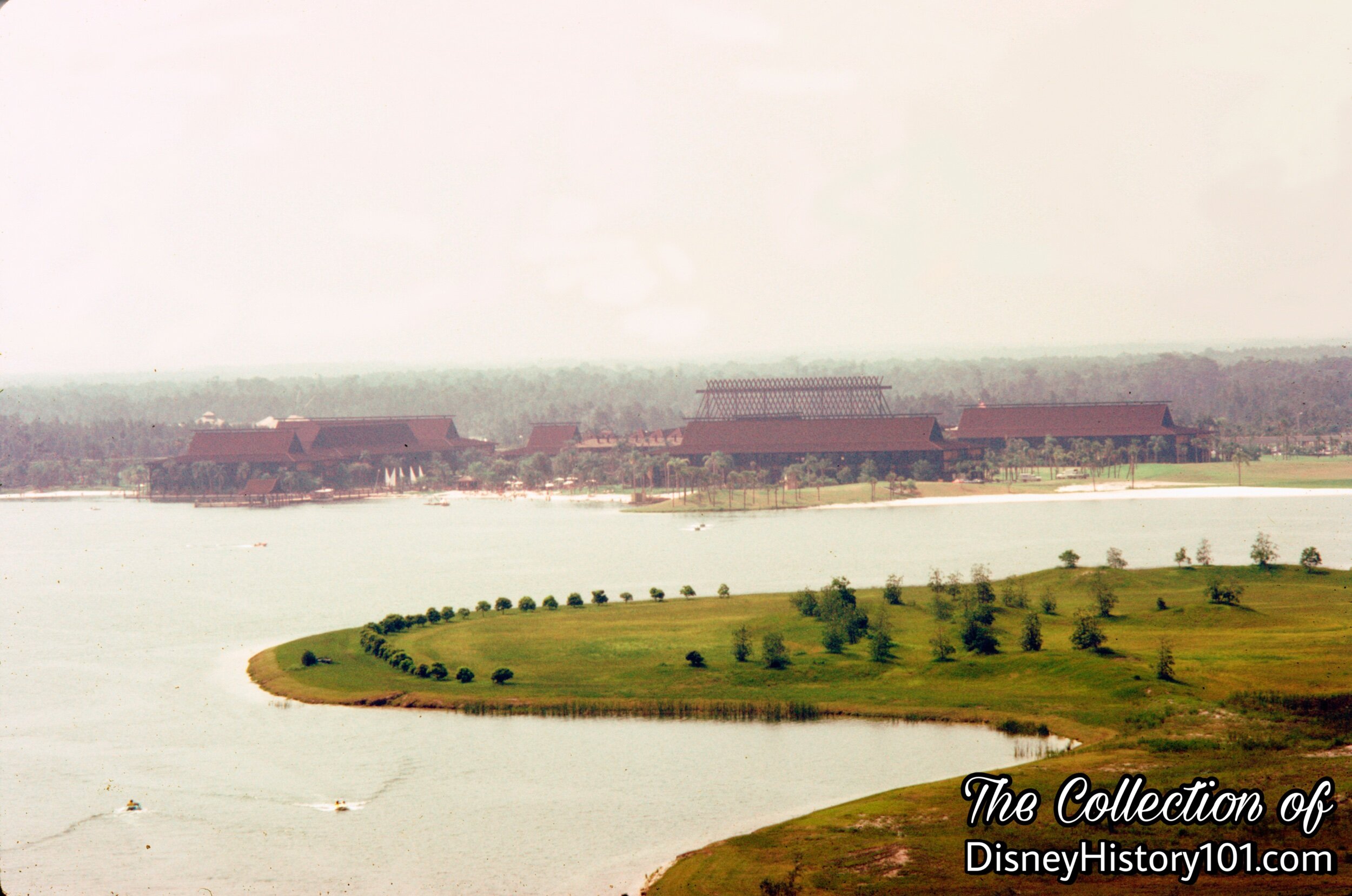
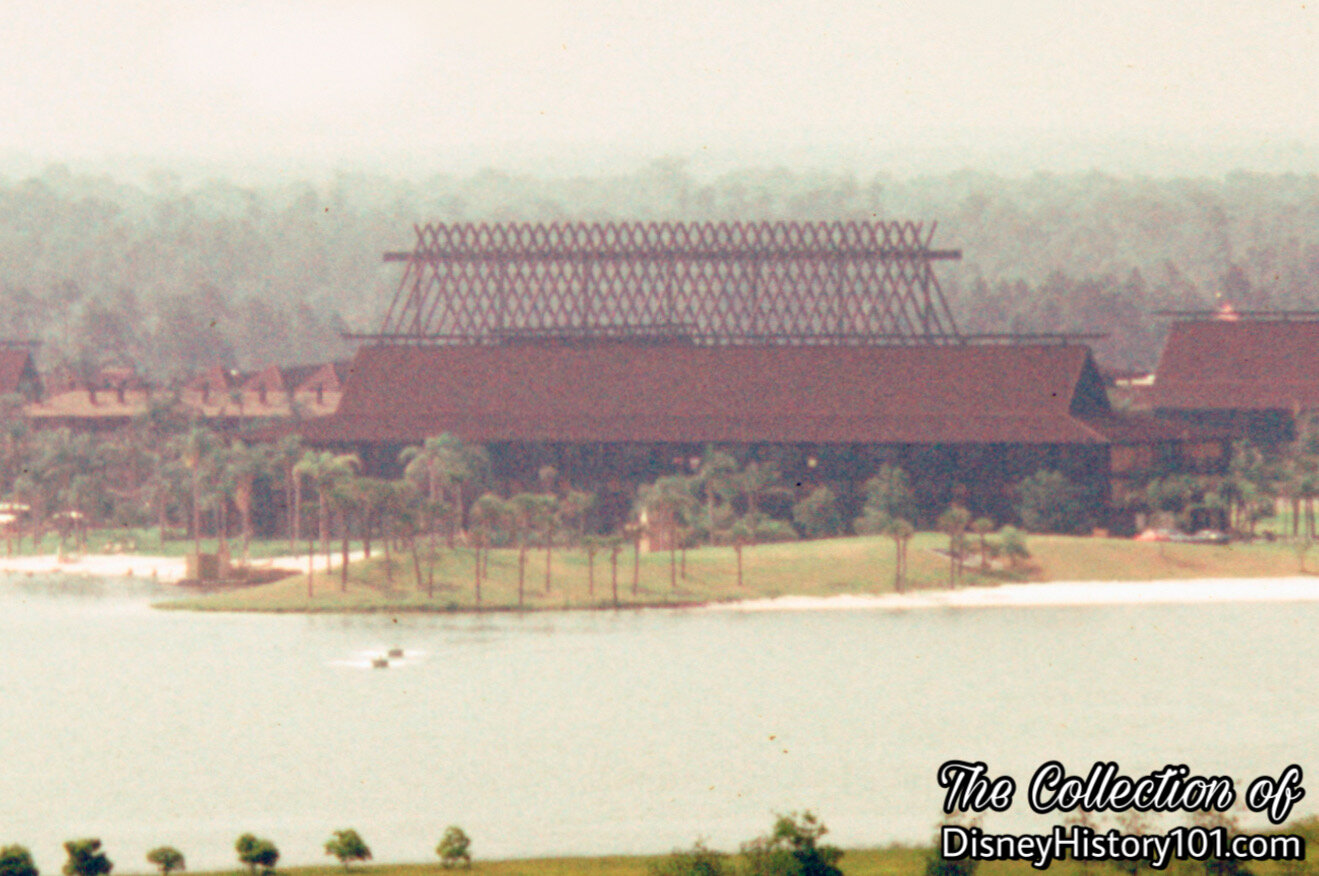
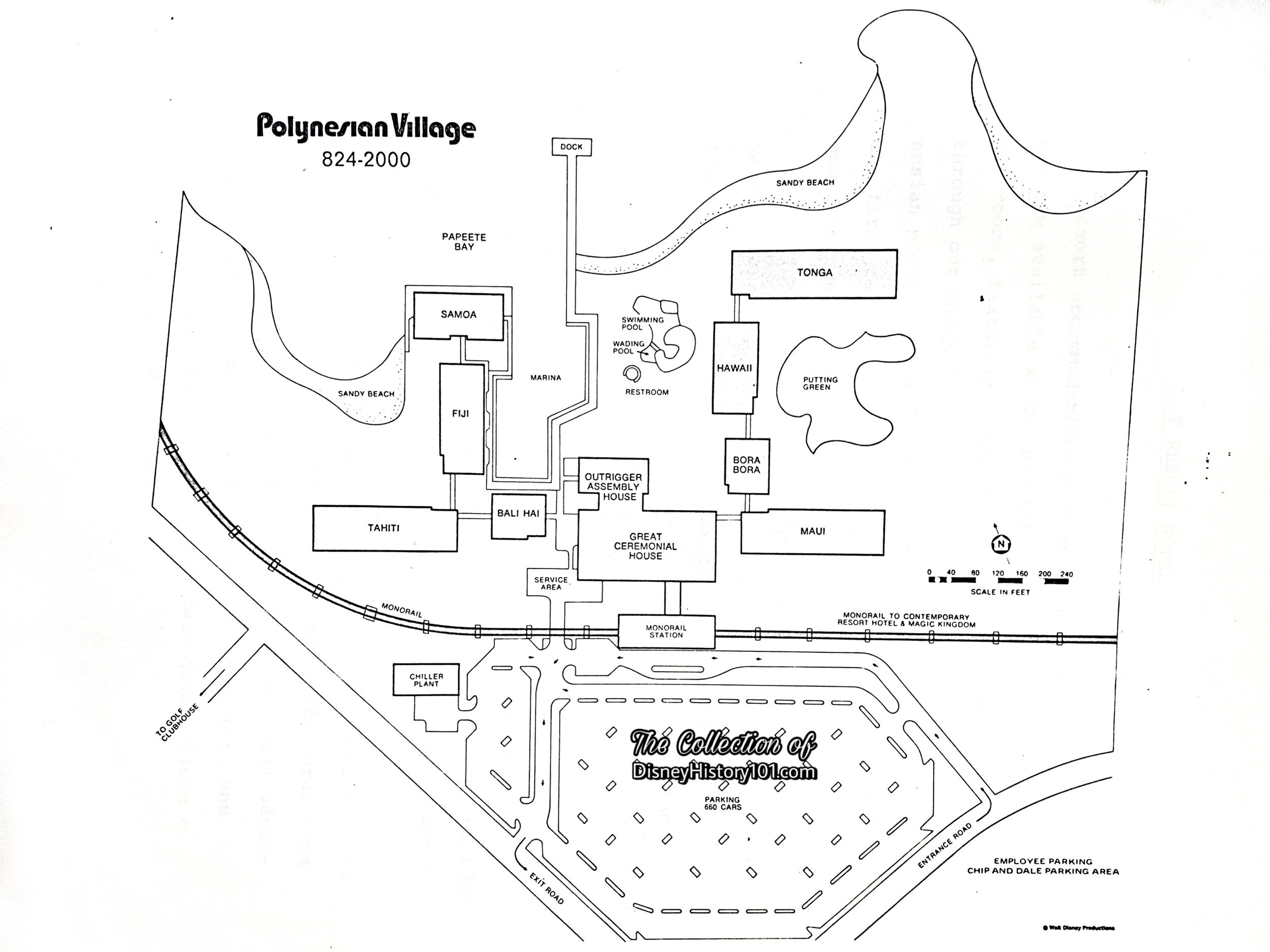
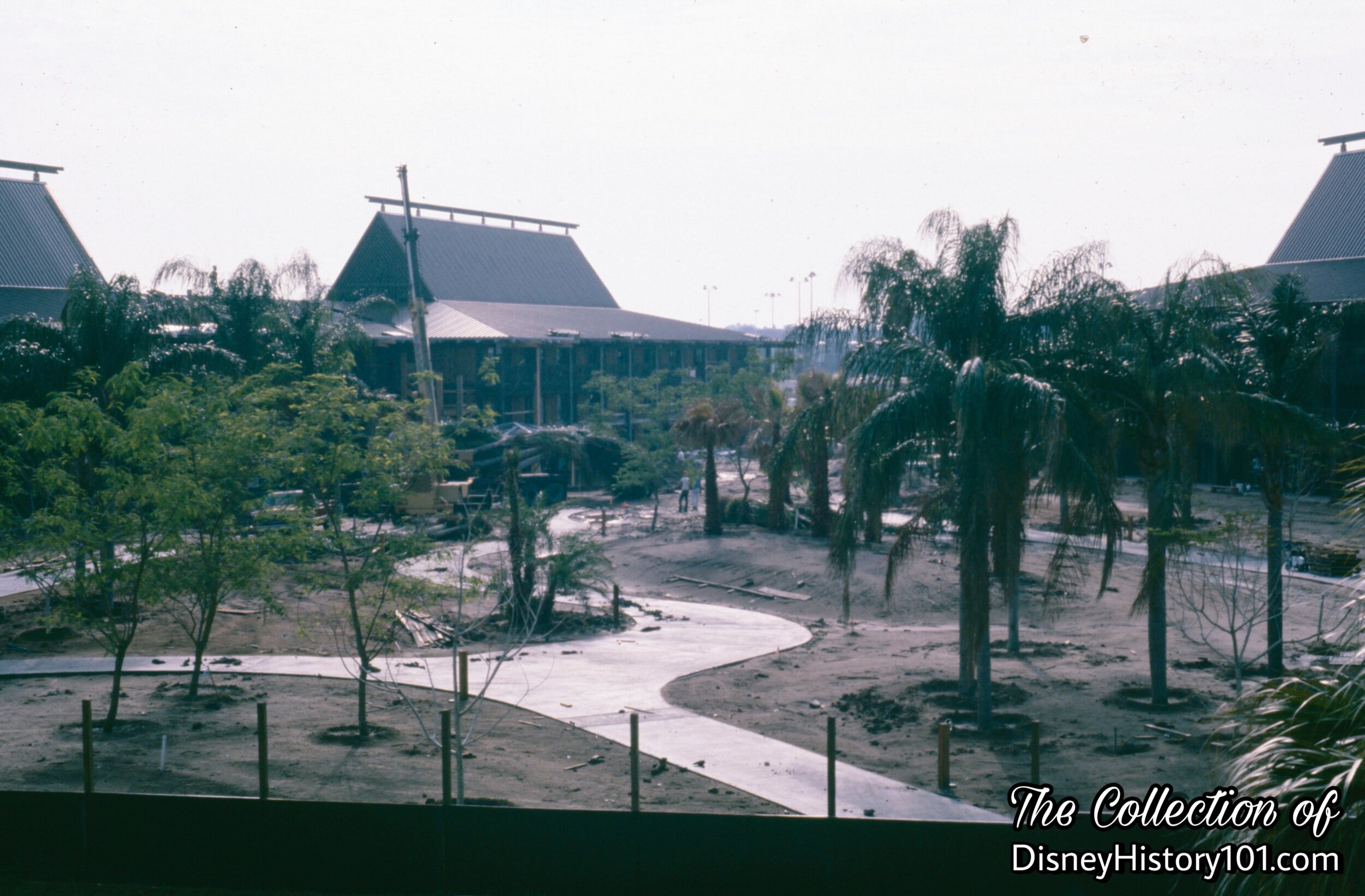
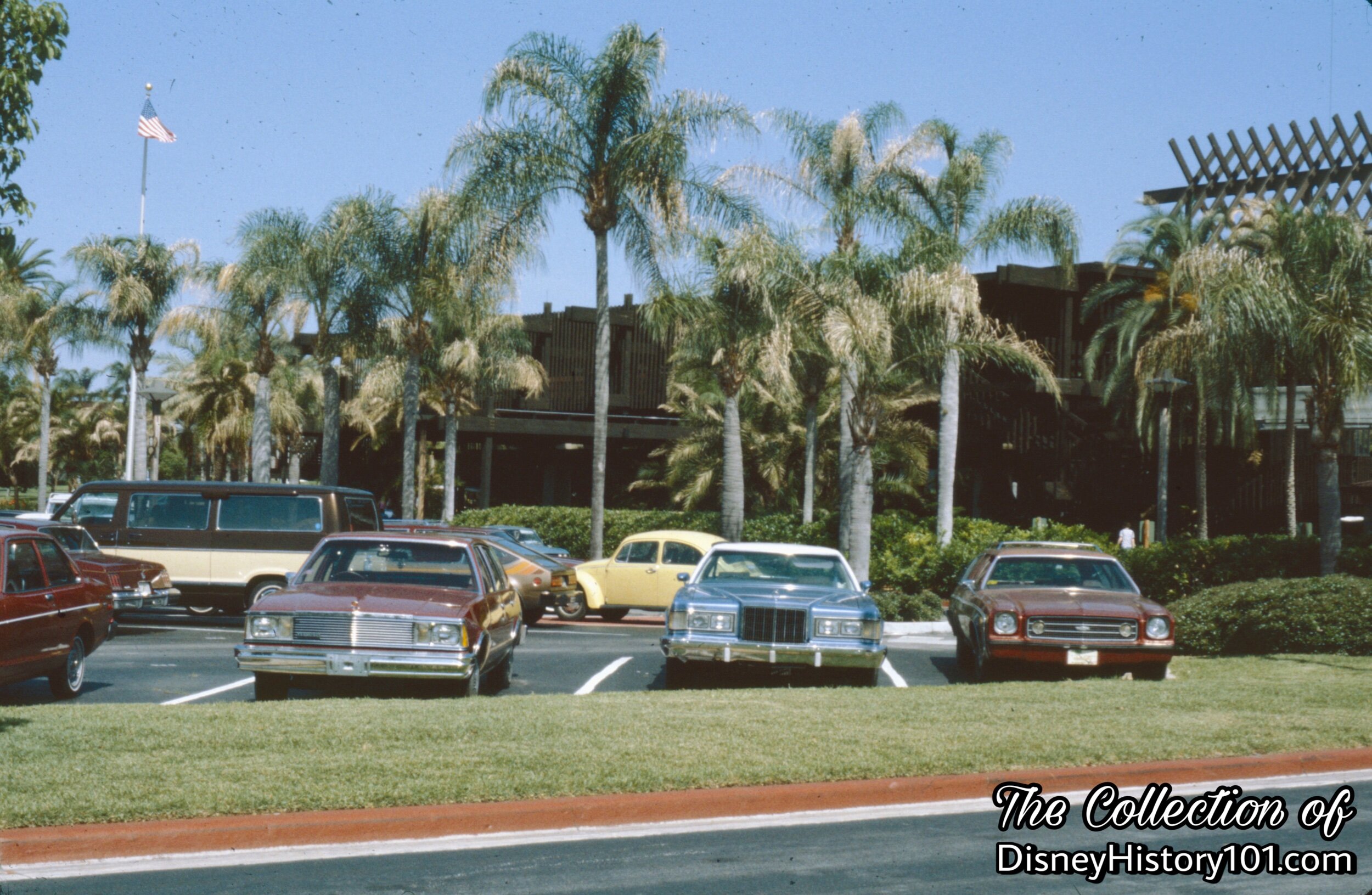
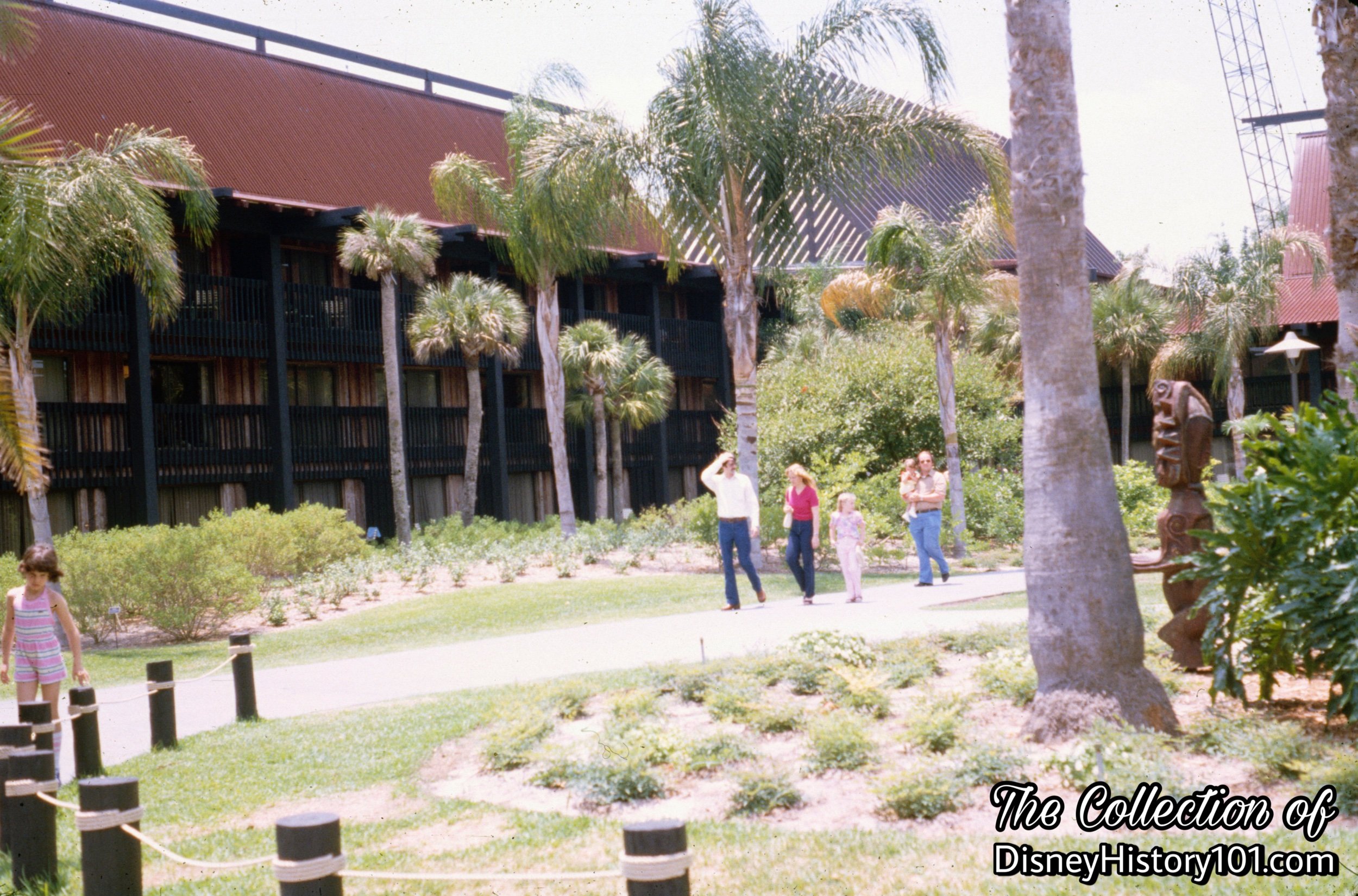
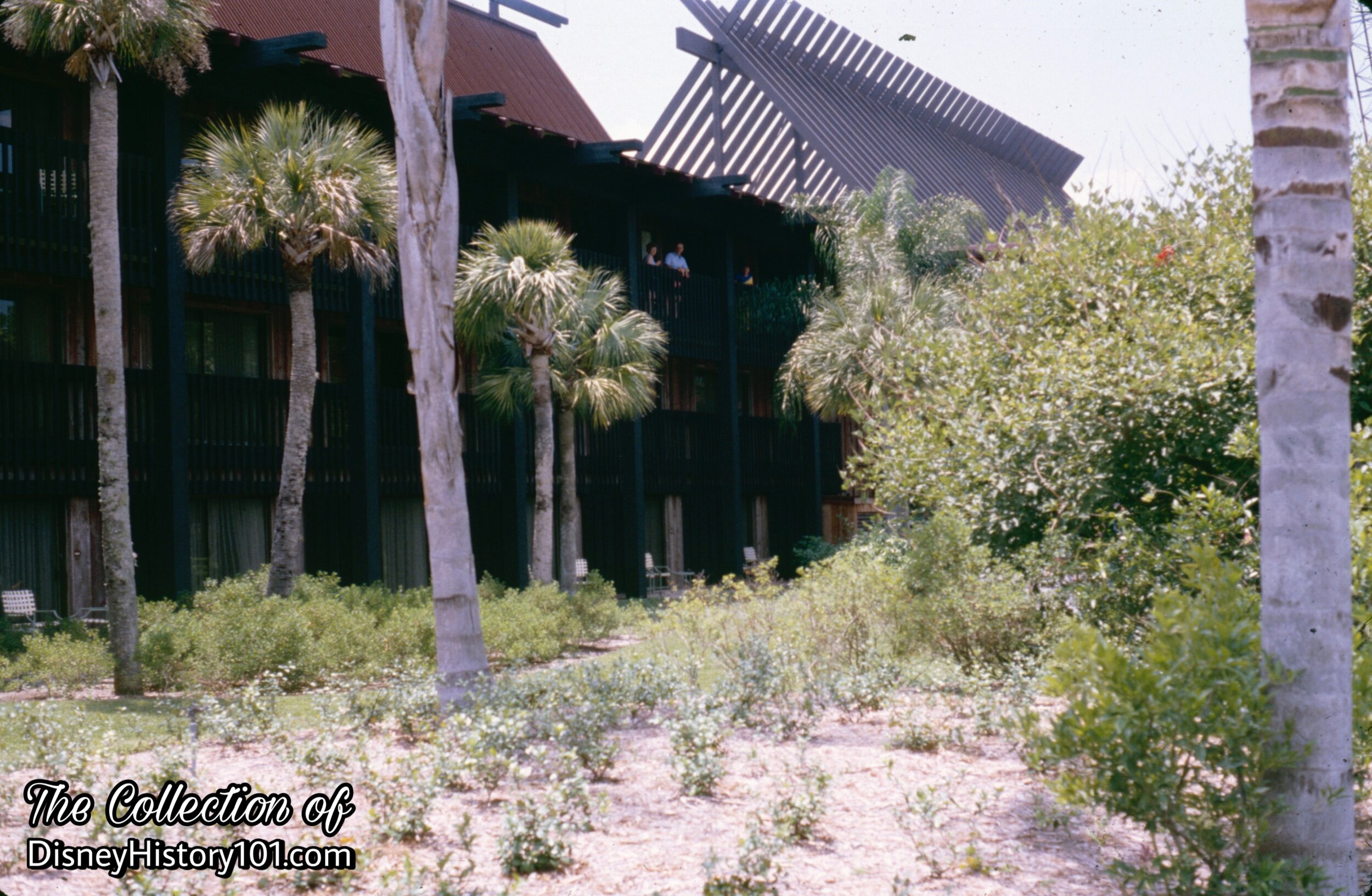
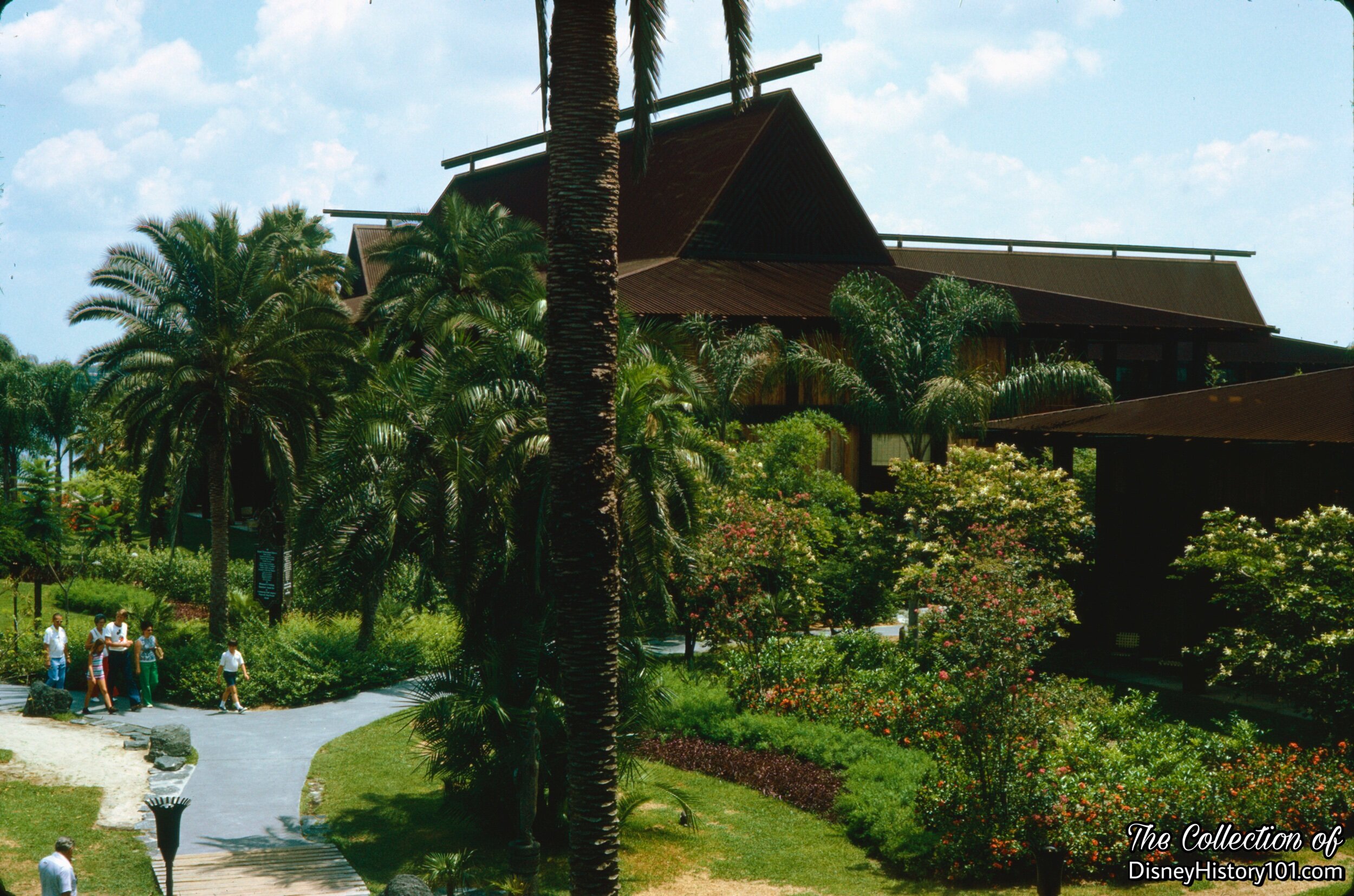
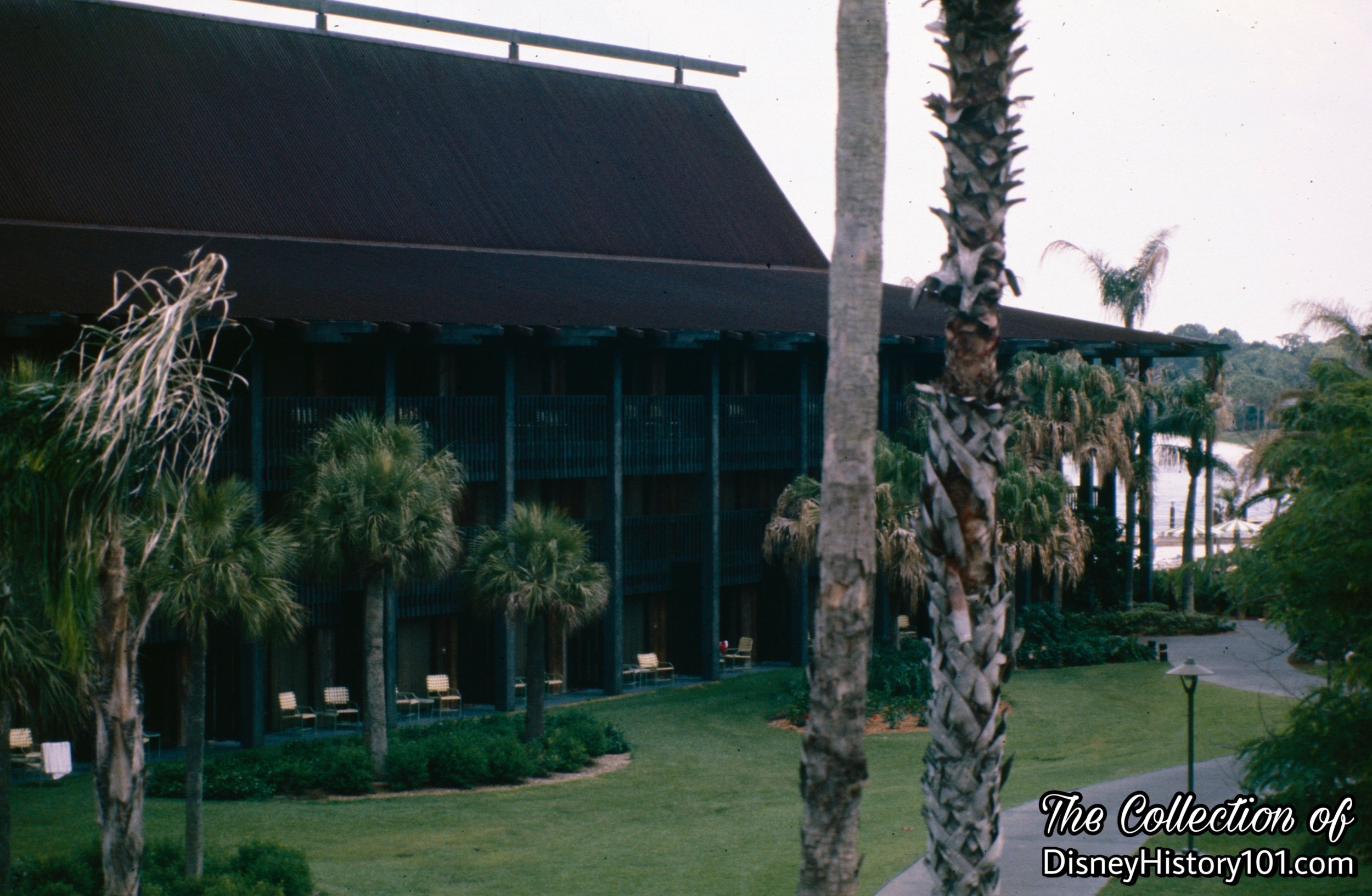
Today, the Magic Kingdom visitor sees the South Seas themed Polynesian Village as a natural scenic backdrop to tropical Adventureland.

”The color scheme is of green and orange, featuring a green quartz registration desk and white revolving ceiling fans. The Lobby Sea level contains the lobby and registration areas, the executive offices, host and hostess locker rooms a wardrobe issue area, and a nursery for our guests' convenience. Also, included on this level are four banquet rooms, which bear the thematic names Melanesian, Mecronisian, and the Oceania Room. The Bay View Terrace level provides our guests with the Polynesian-style shops and dining areas. [“An Introduction to the Resort Division of Walt Disney World”] According to the Sunday, September 26, 1971 issue of “Sunrise” magazine, a supplement of “Today,” in reference to The Contemporary Resort Hotel and the Polynesian Village Resort Hotel, “both hotels will have cocktails bars and liquor in the restaurants.”
“Special Services”
Services included a Guest Relations Booth (in the Lobby; Tickets and reservations for numerous Vacation Kingdom activities), the Mousketeer's Village Clubhouse (on the first floor; a supervised Child care center under the guidance of trained child-care hostesses, activity center, and baby sitting service) and Travel Reservations / Tour Desk (in the Lobby; Complete 'round-the-world airline and travel service with Eastern, Greyhound and Hertz and American International Rent-A-Car were featured.)
“Convention Facilities”
Both the Contemporary and Polynesian Hotels contain elaborate facilities for large and small meetings. Large scale conventions can even utilize both hotels at the same time; by means of closed circuit television, participants staying at either hotel can always be kept fully up to date. The larger Contemporary Hotel has three floors of major convention facilities including two large ballrooms and nine major meeting rooms. At the Polynesian Village, the informal atmosphere provides a relaxed setting for smaller group meetings. Its private dining rooms will seat up to 150 people for dinner or 200 for meet-ings.
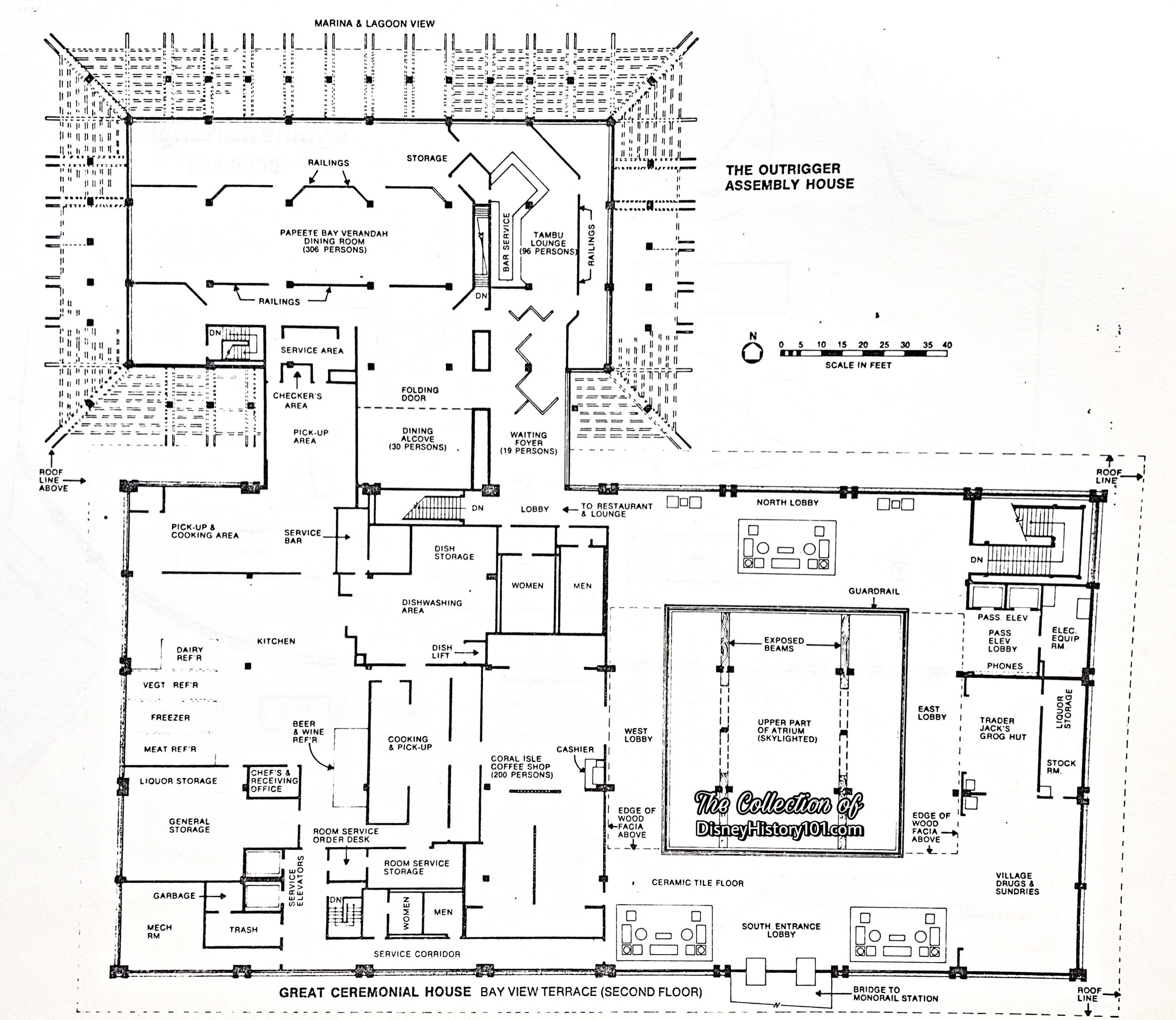
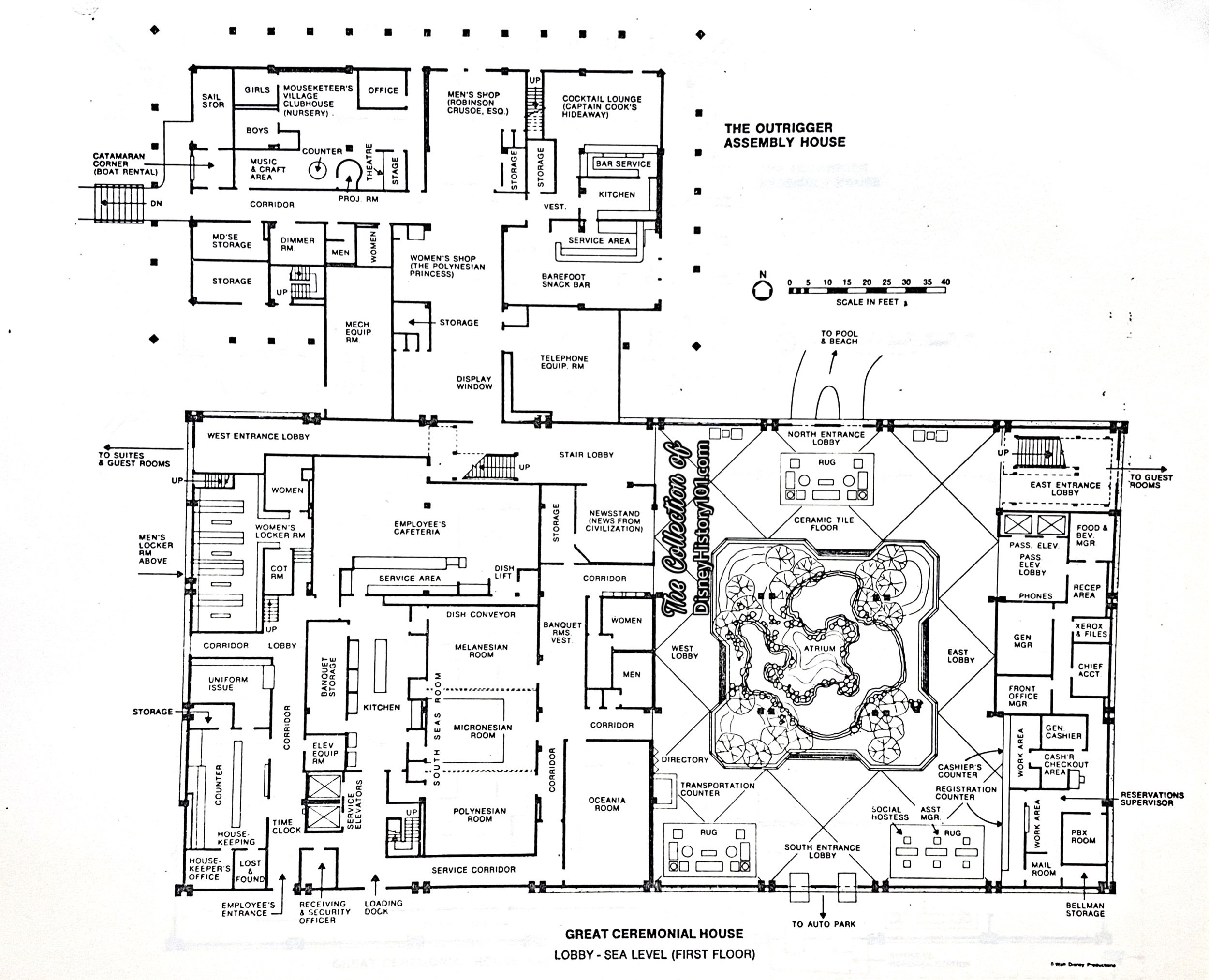
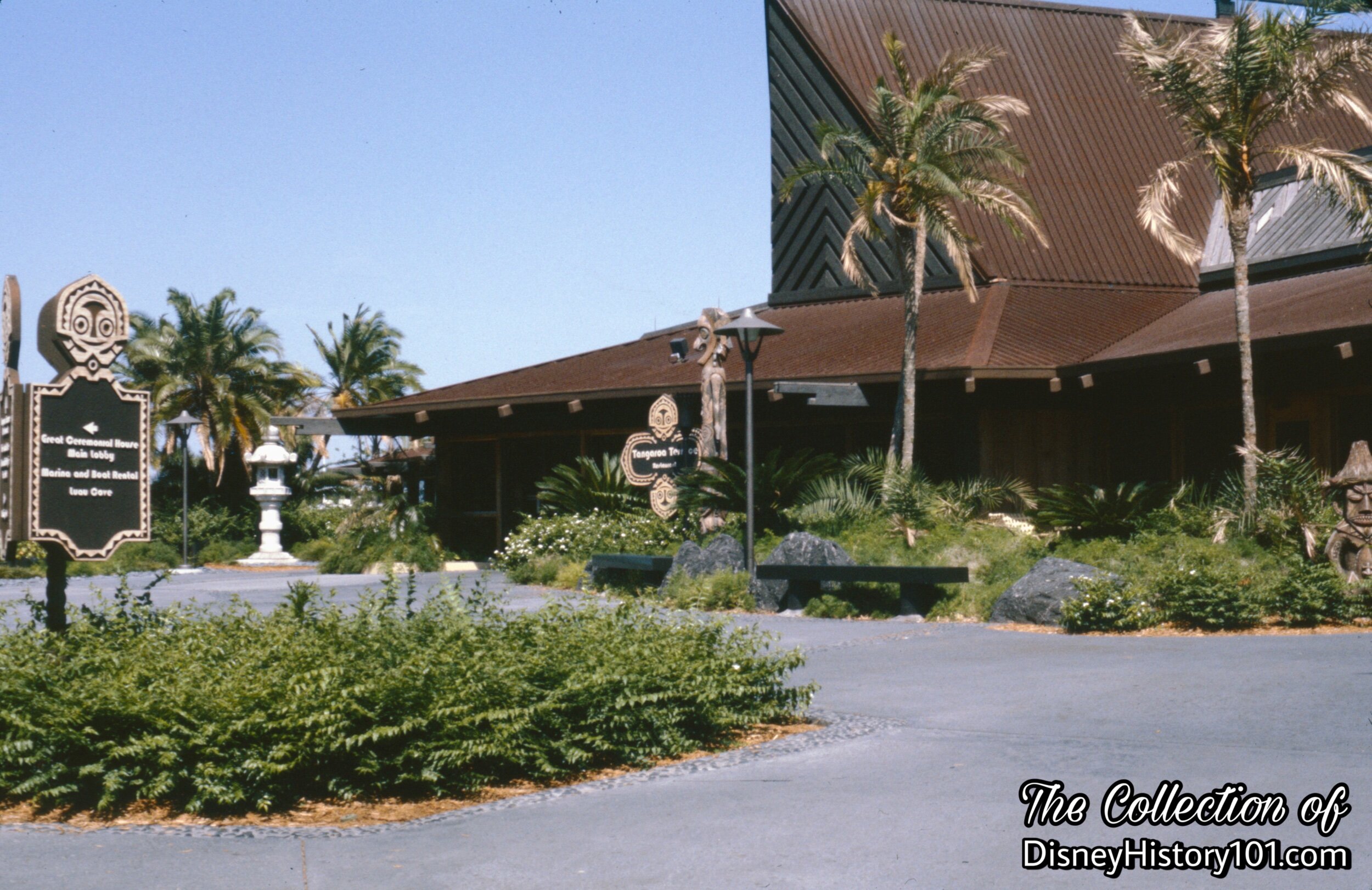

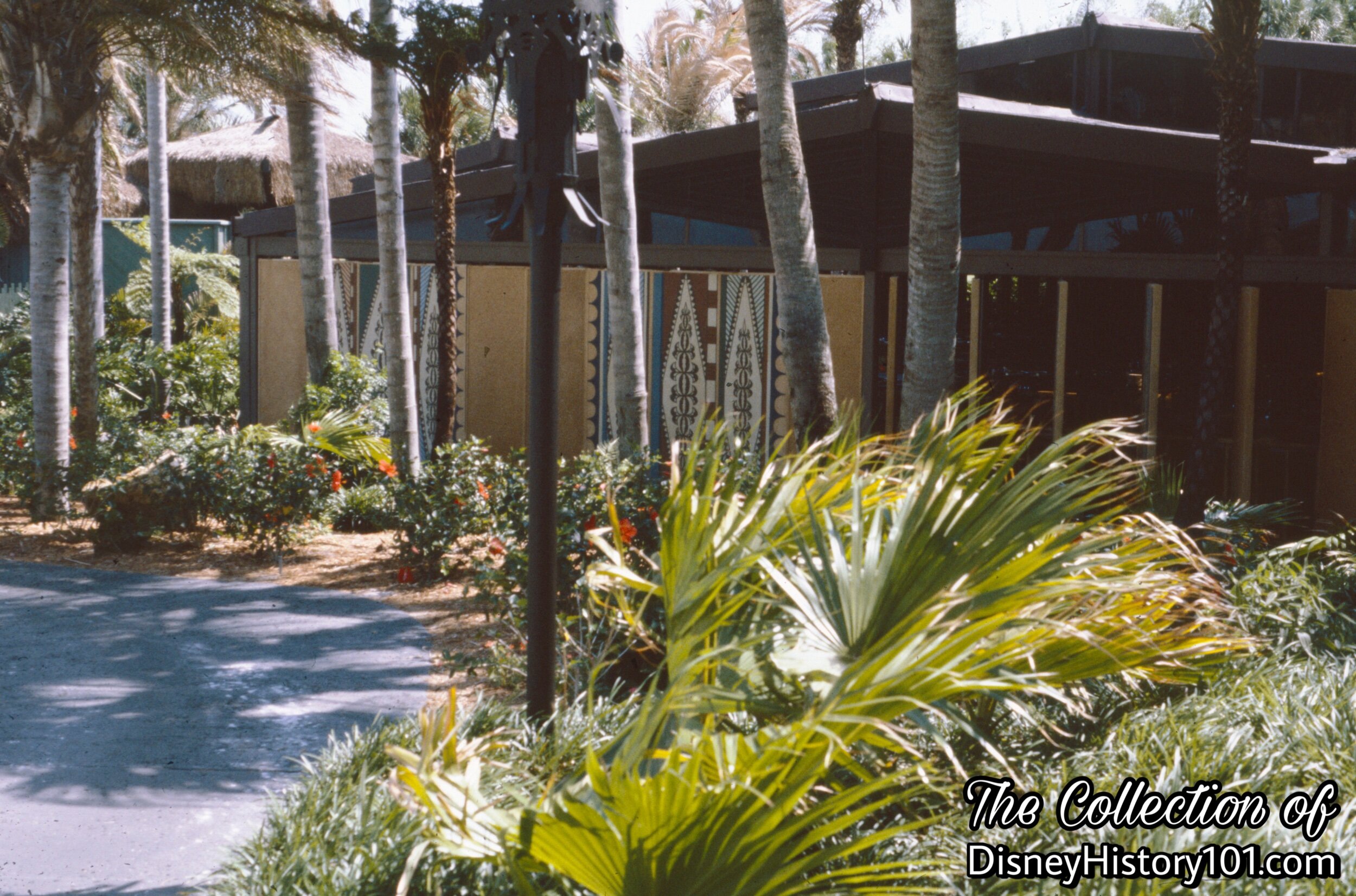

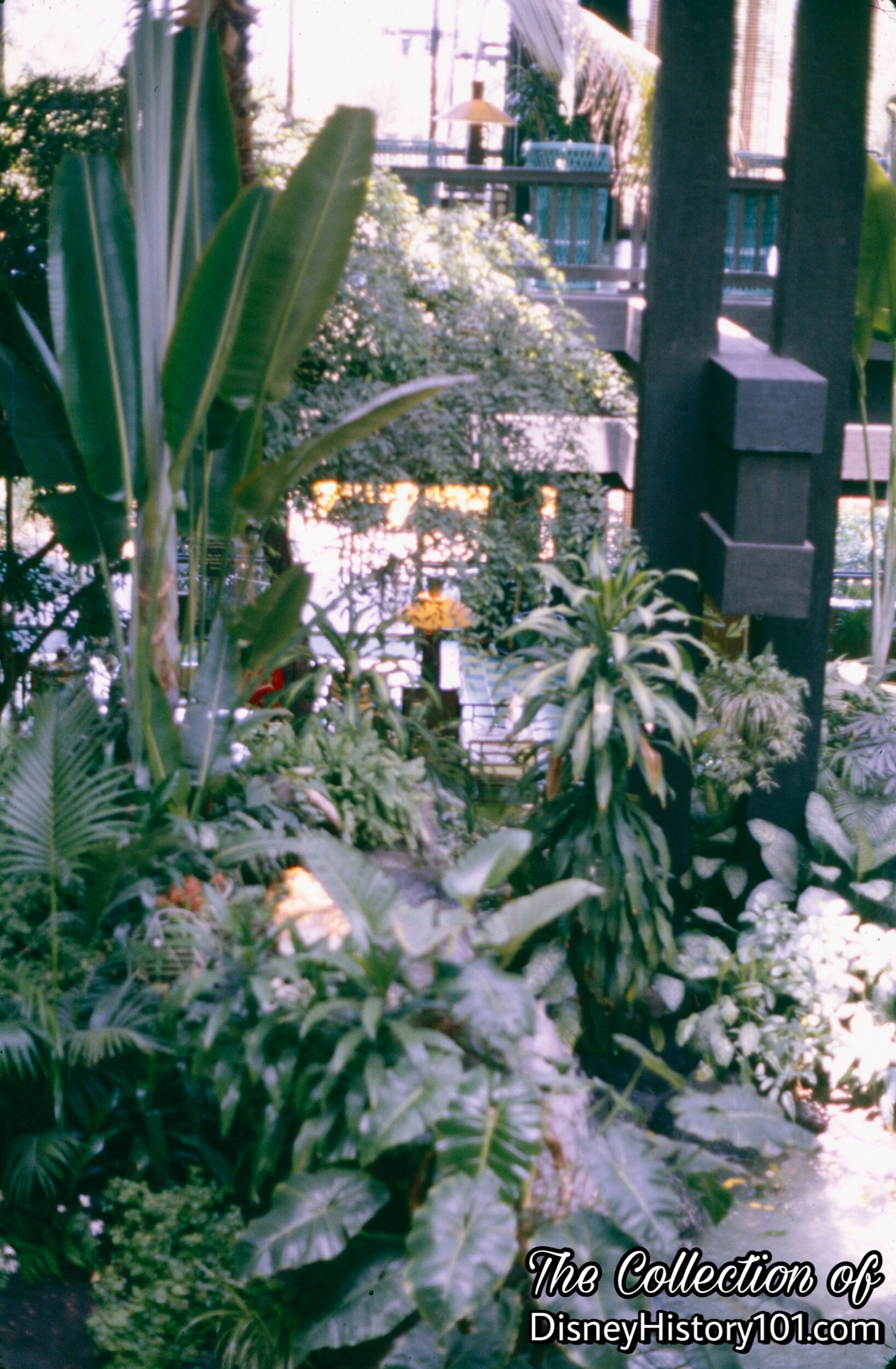
“The Great Ceremonial House contains two levels, the Lobby Sea Level and the Bay View Terrace.”
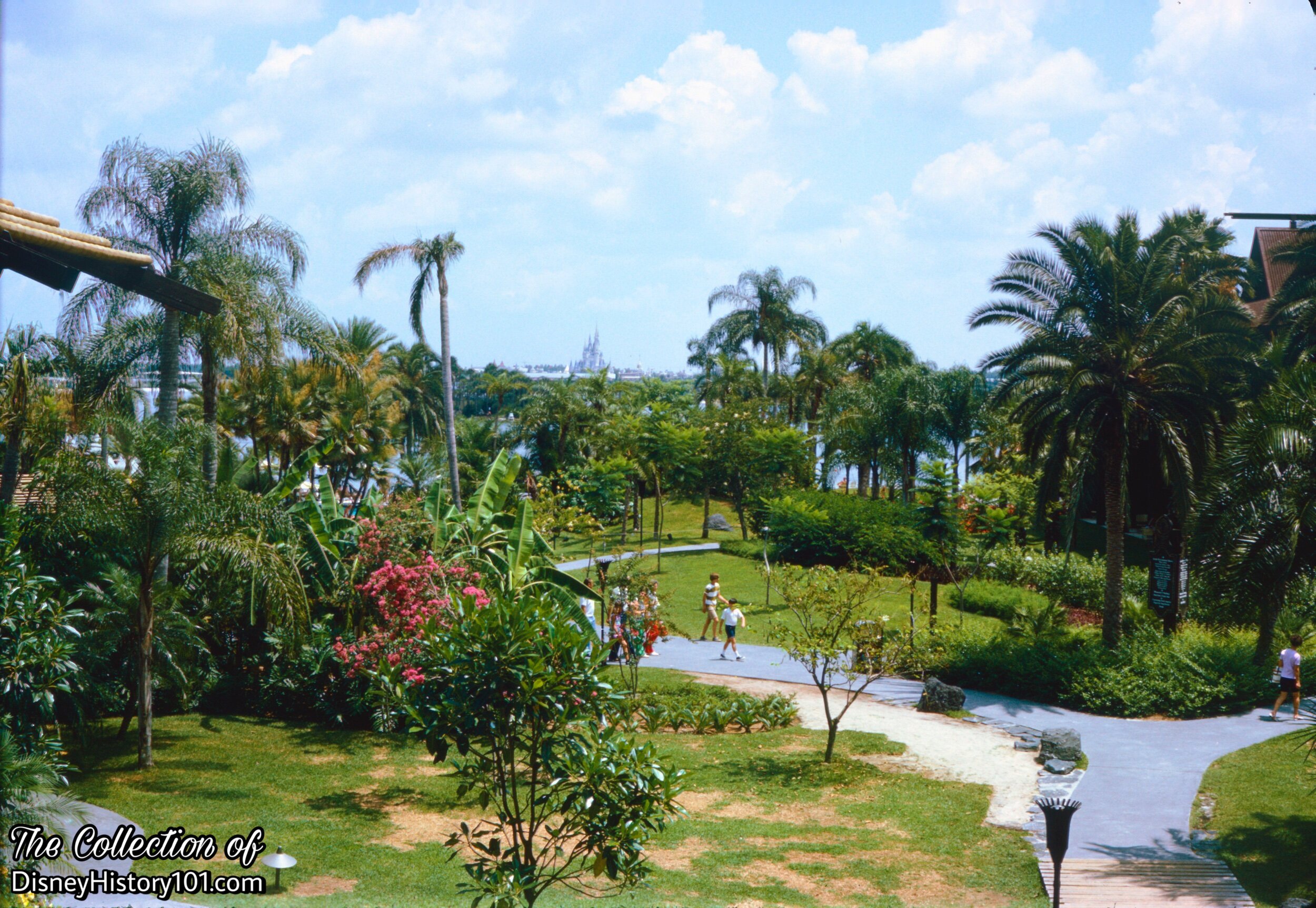

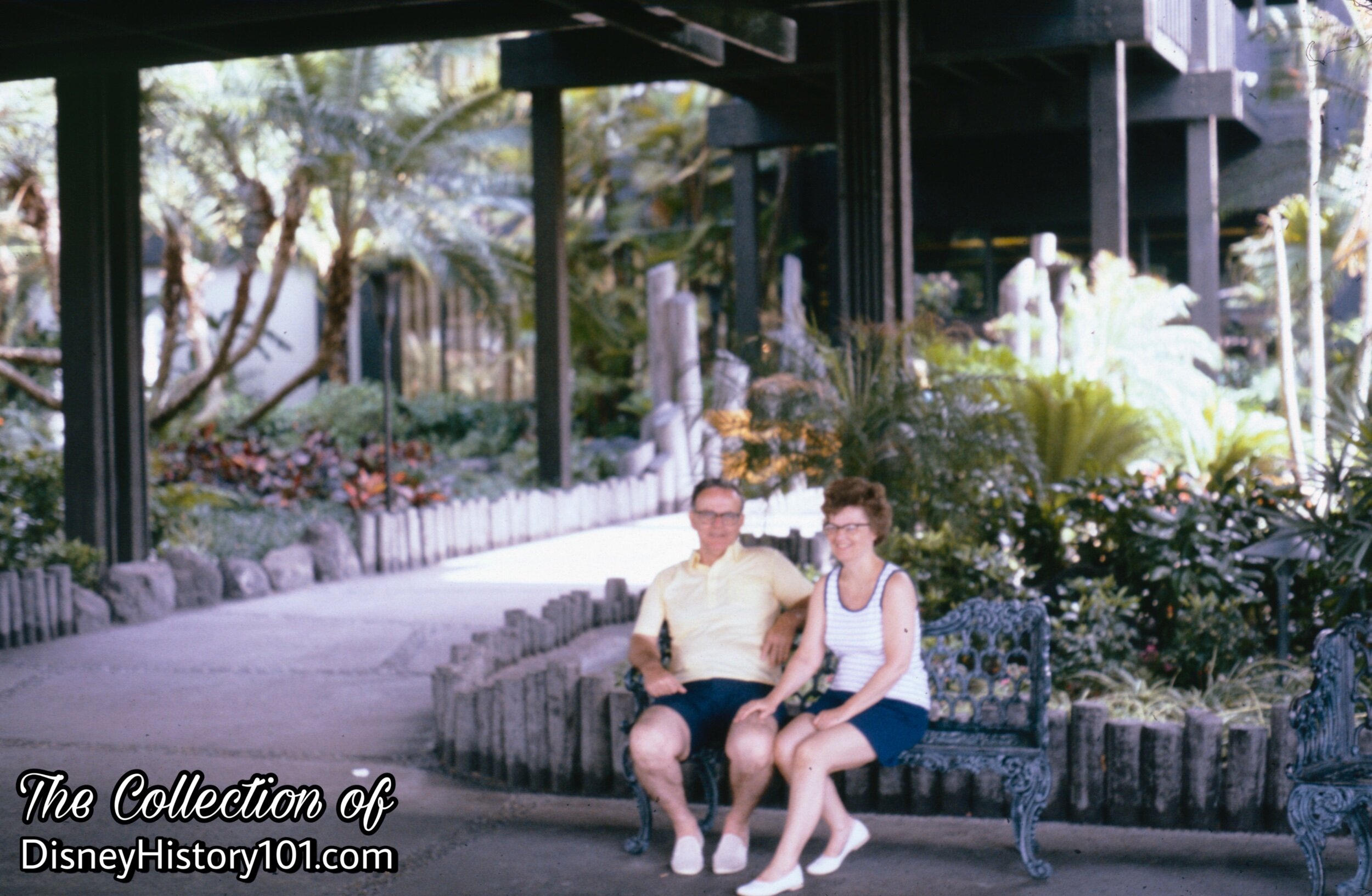
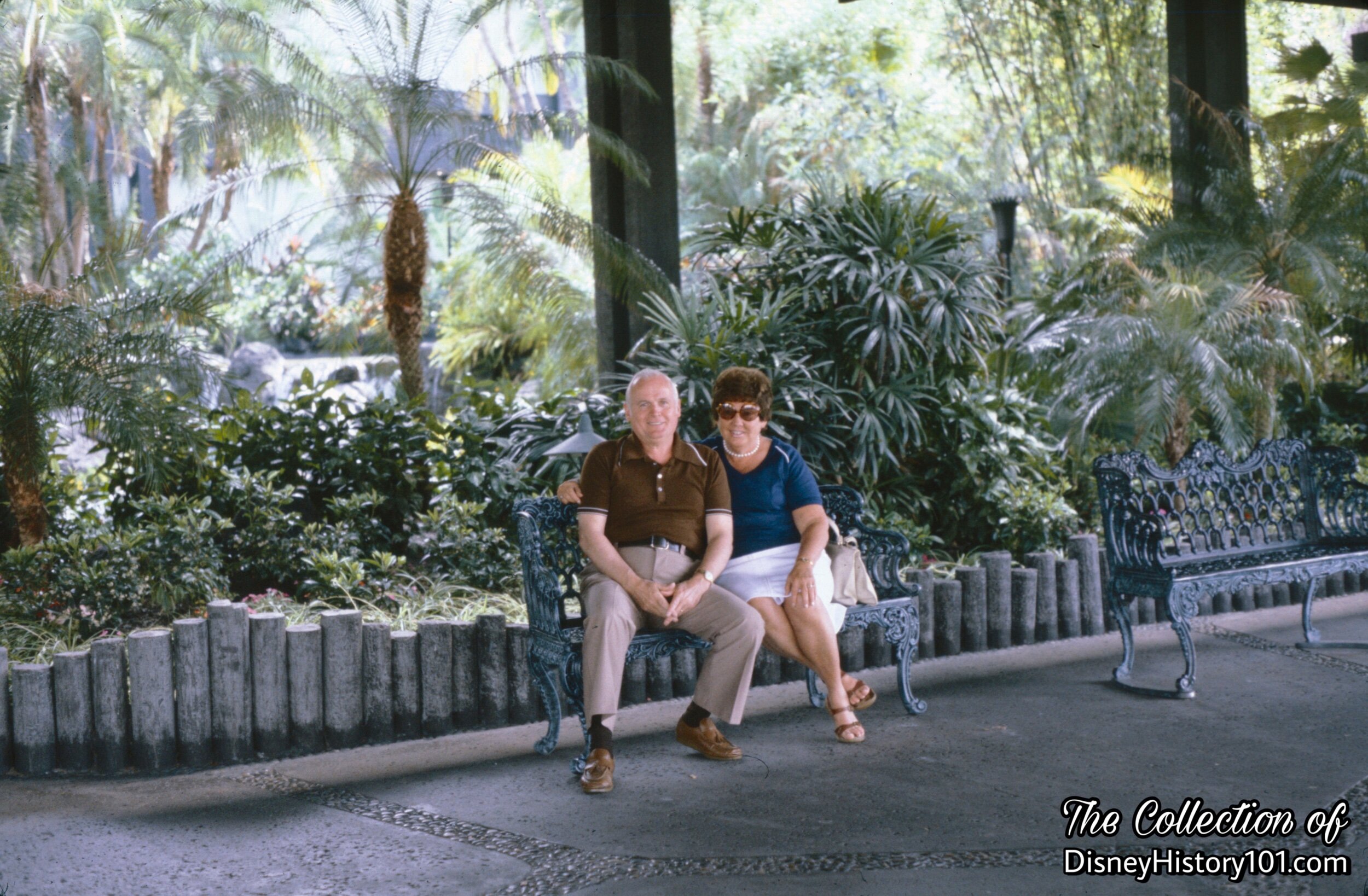
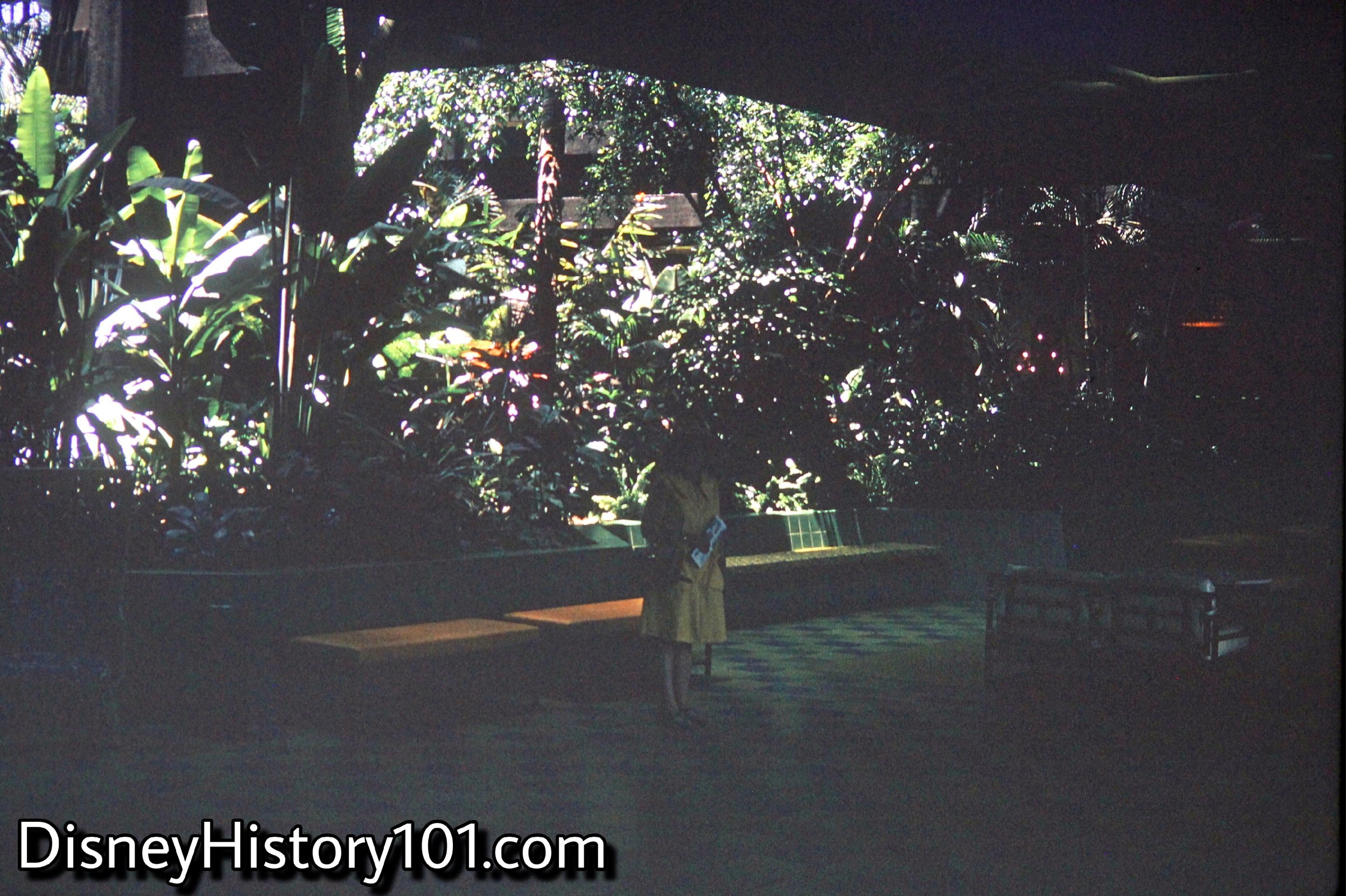
Resort Lobby

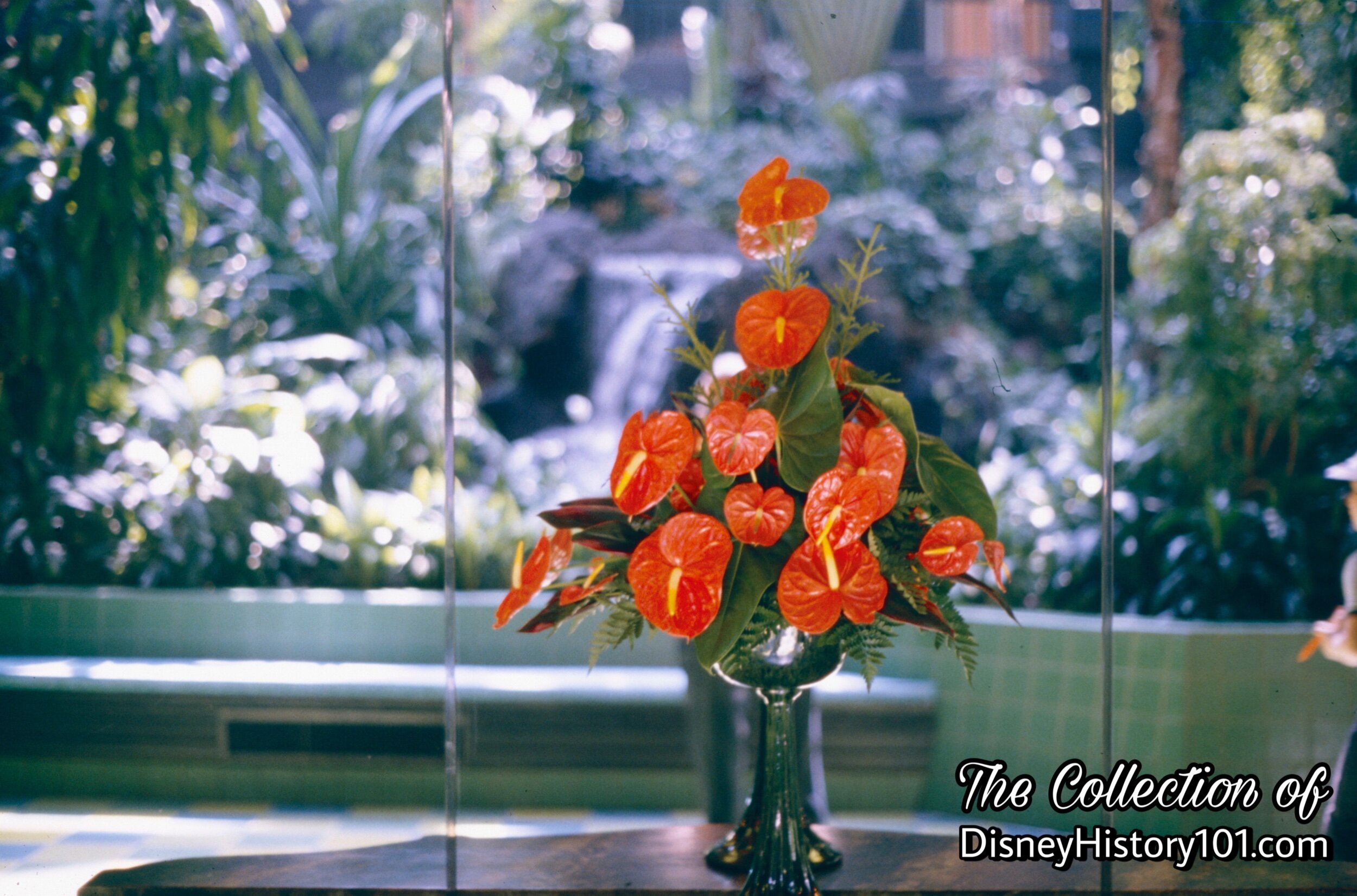
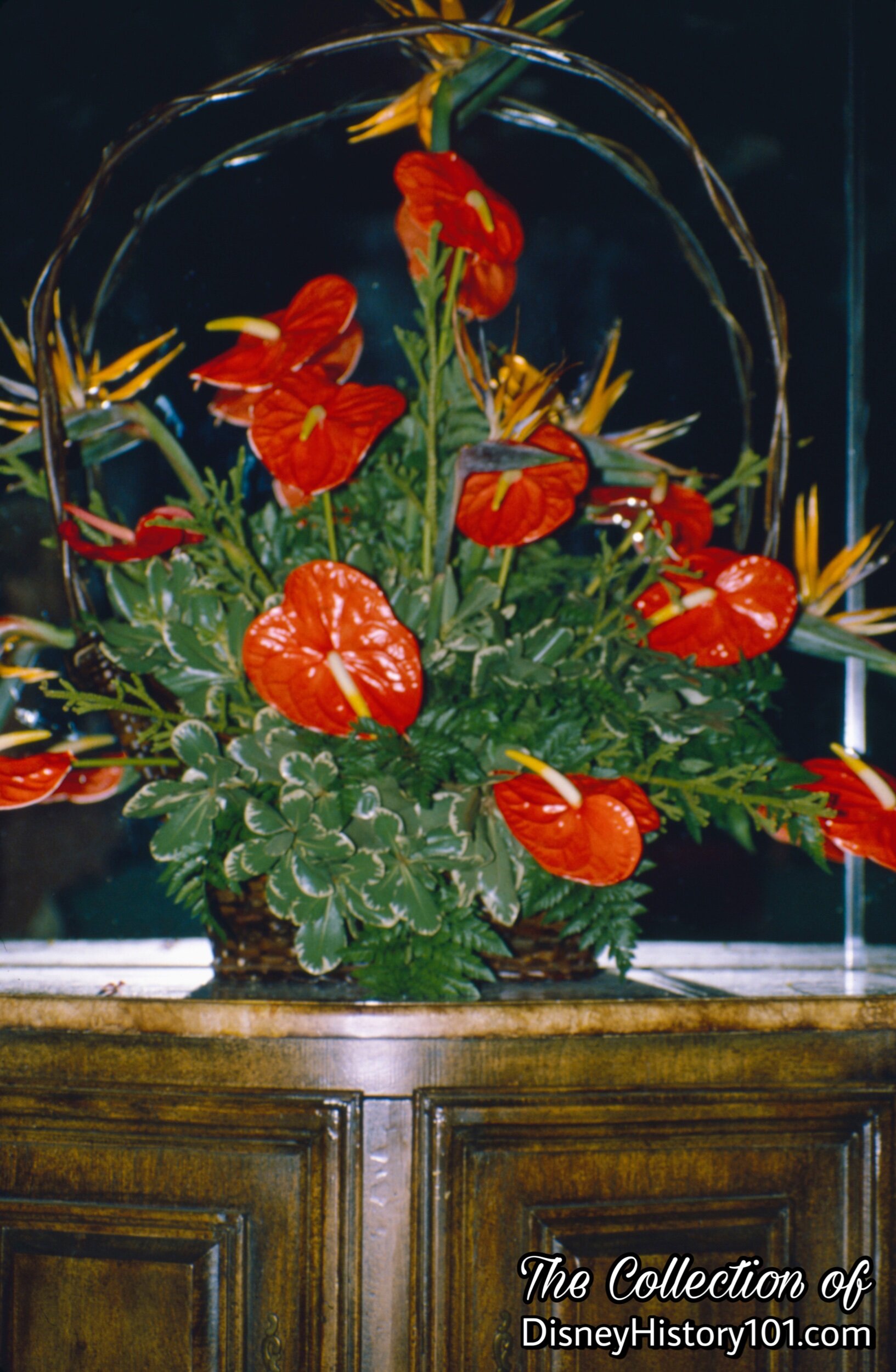
Speaking of flora, Village Florist sold floral bouquets and fruit baskets (with delivery on above items only, until 10 p.m. daily).
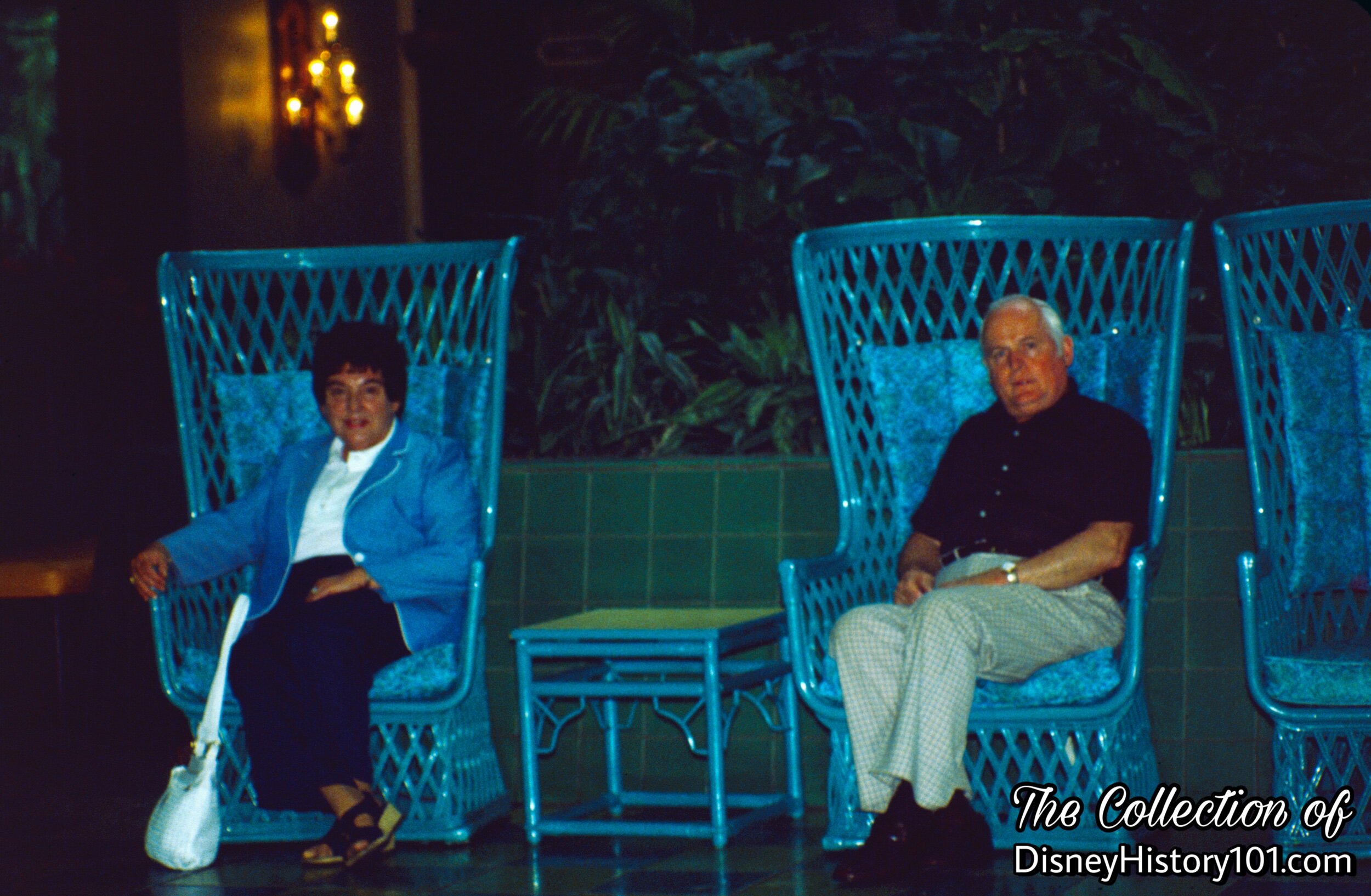
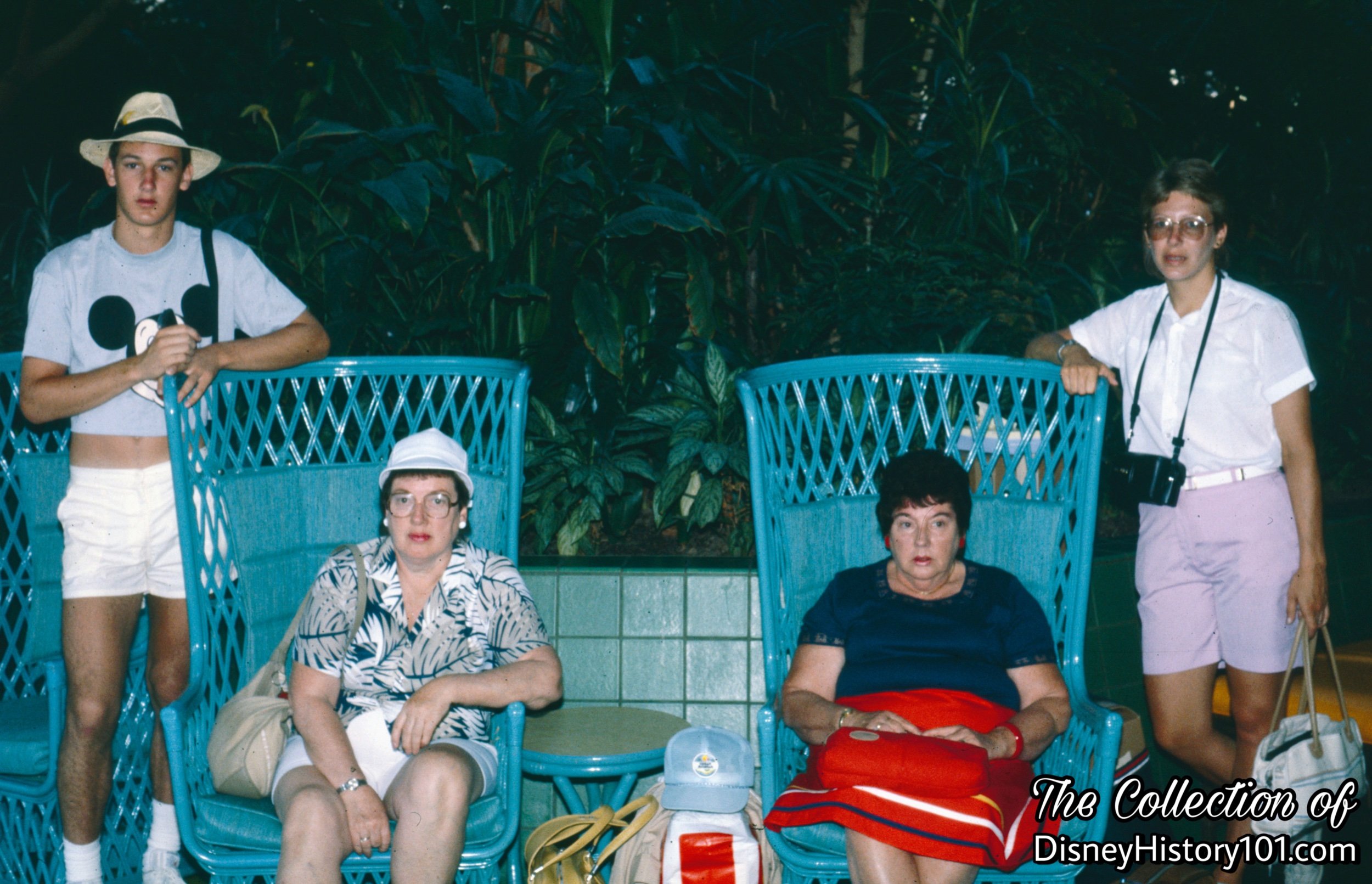
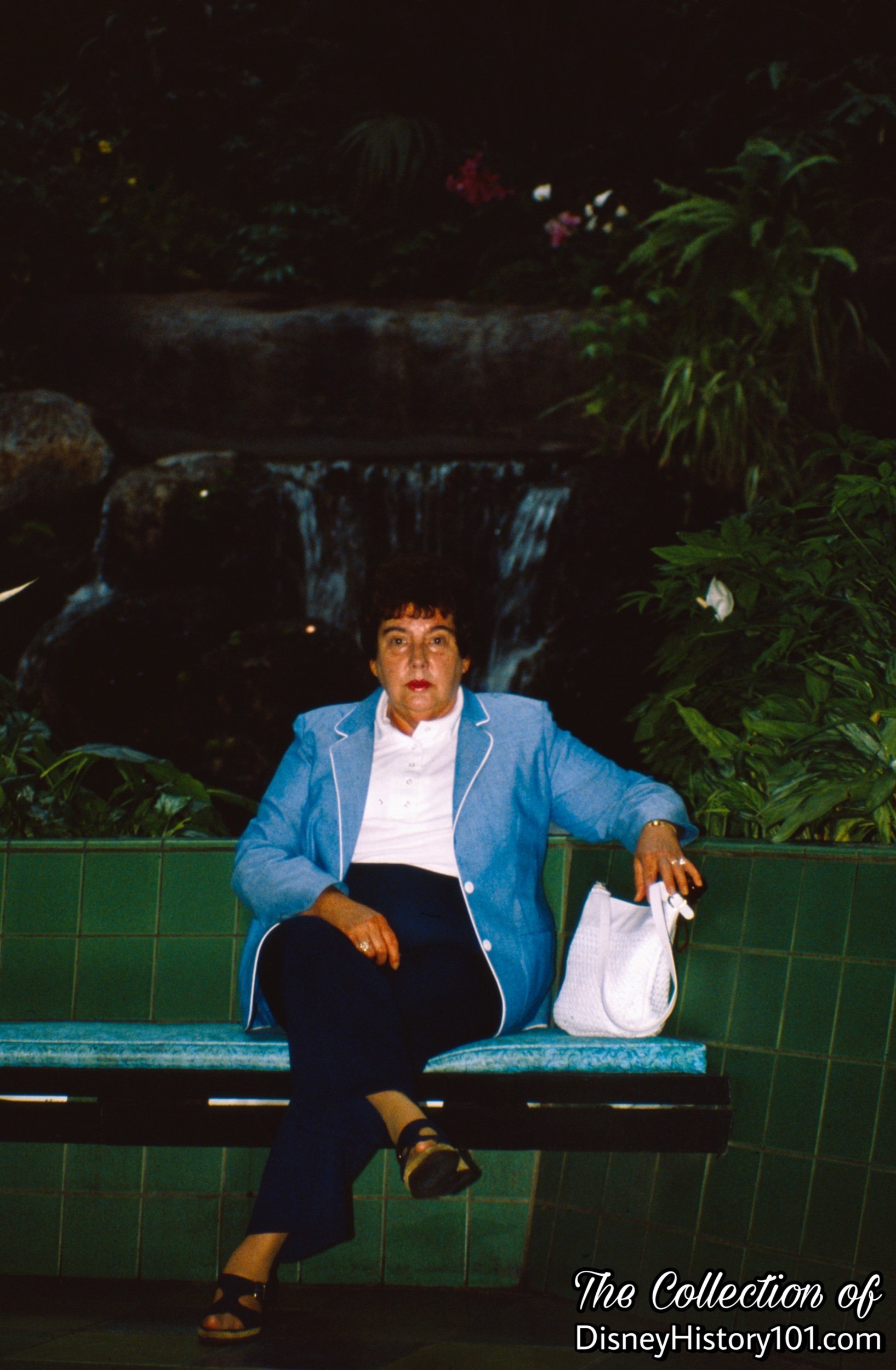
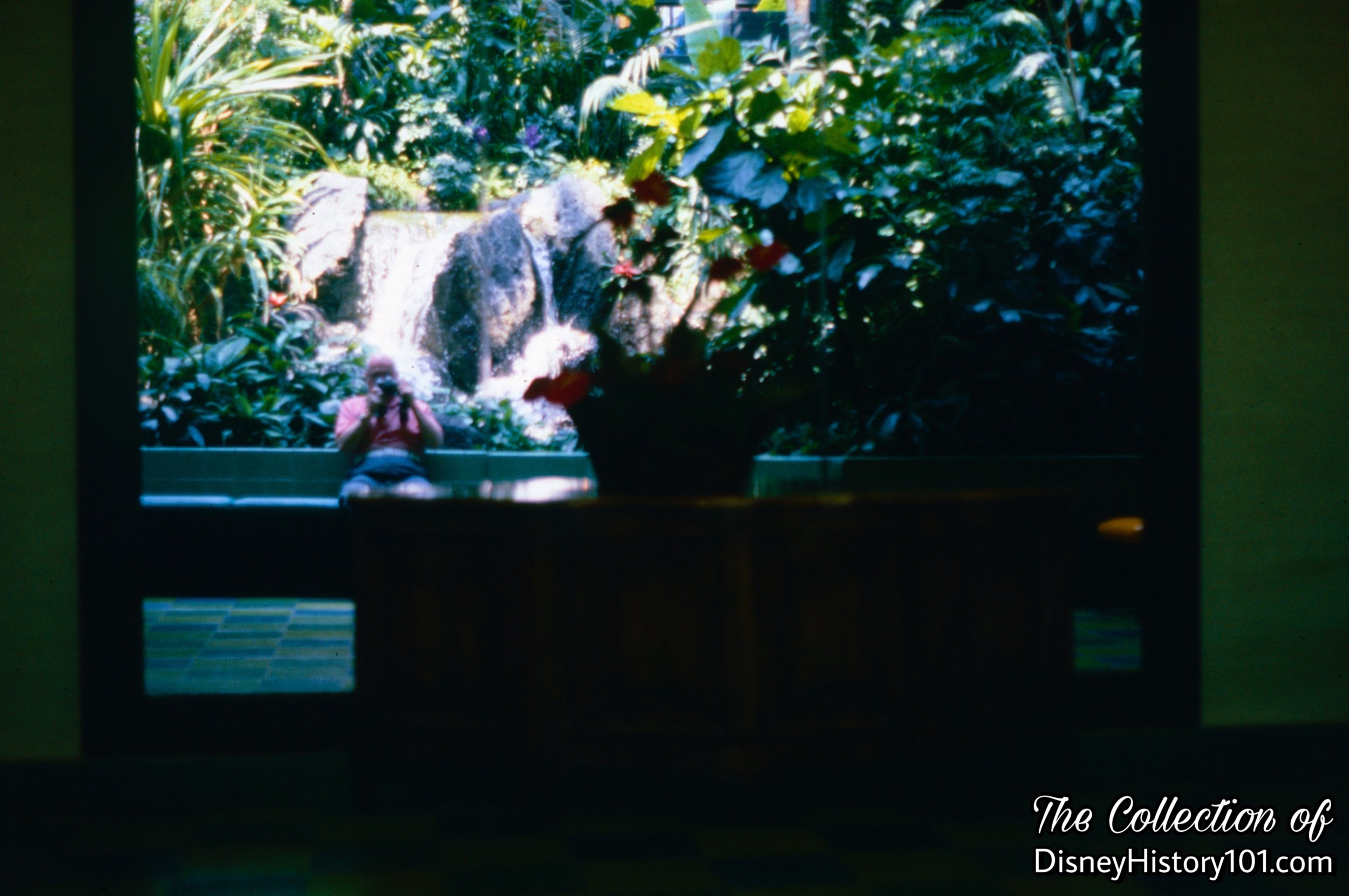
World Magazine, page 12, published 1976: “In the center of the Polynesian Village Resort is the Great Ceremonial House, an expansive building which architecturally resembles a Royal Tahitian assembly lodge. In the heart of the structure is a tropical garden, complete with cascading waterfalls and palm trees reaching to the second-floor skylight.”

Model-maker Fred Joerger (who was hired c.1953 to craft the “Barber Shop Quartet” show for “Project Little Man” of “Walt Disney’s Disneyland”) had distinguished himself enough as Disneyland’s “resident rock expert,” to make similar contributions toward the Polynesian’s waterfall rocks.
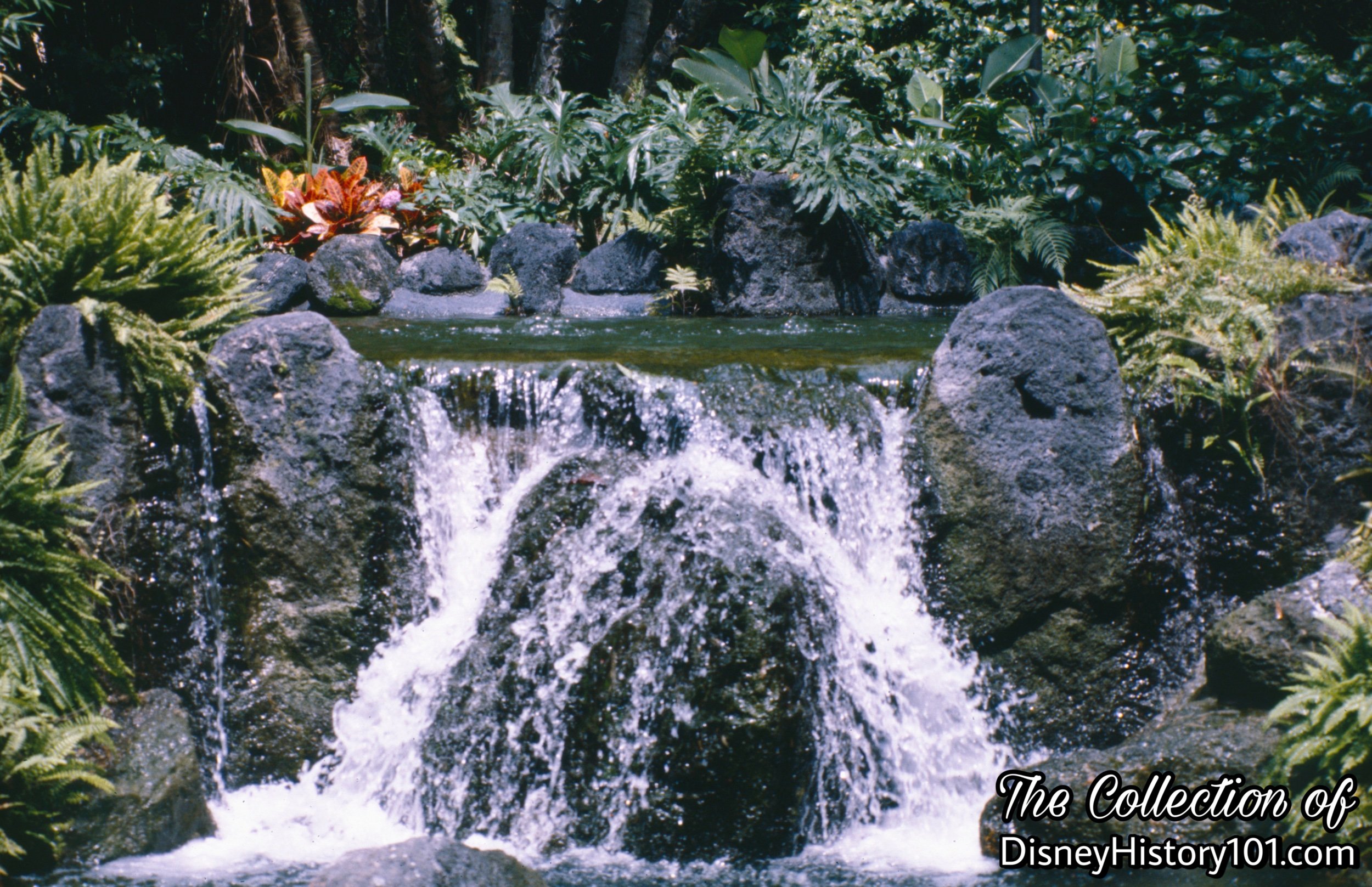


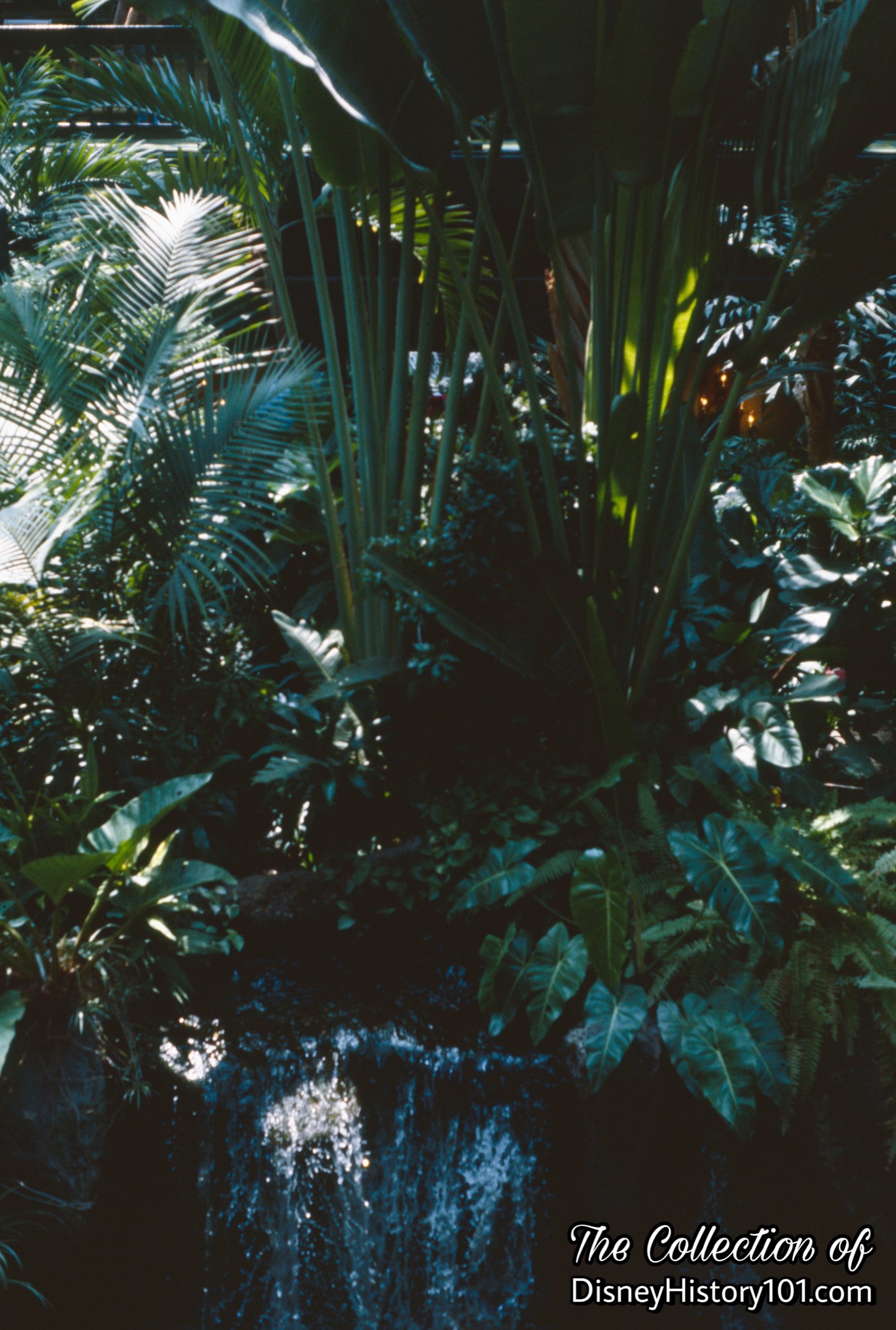
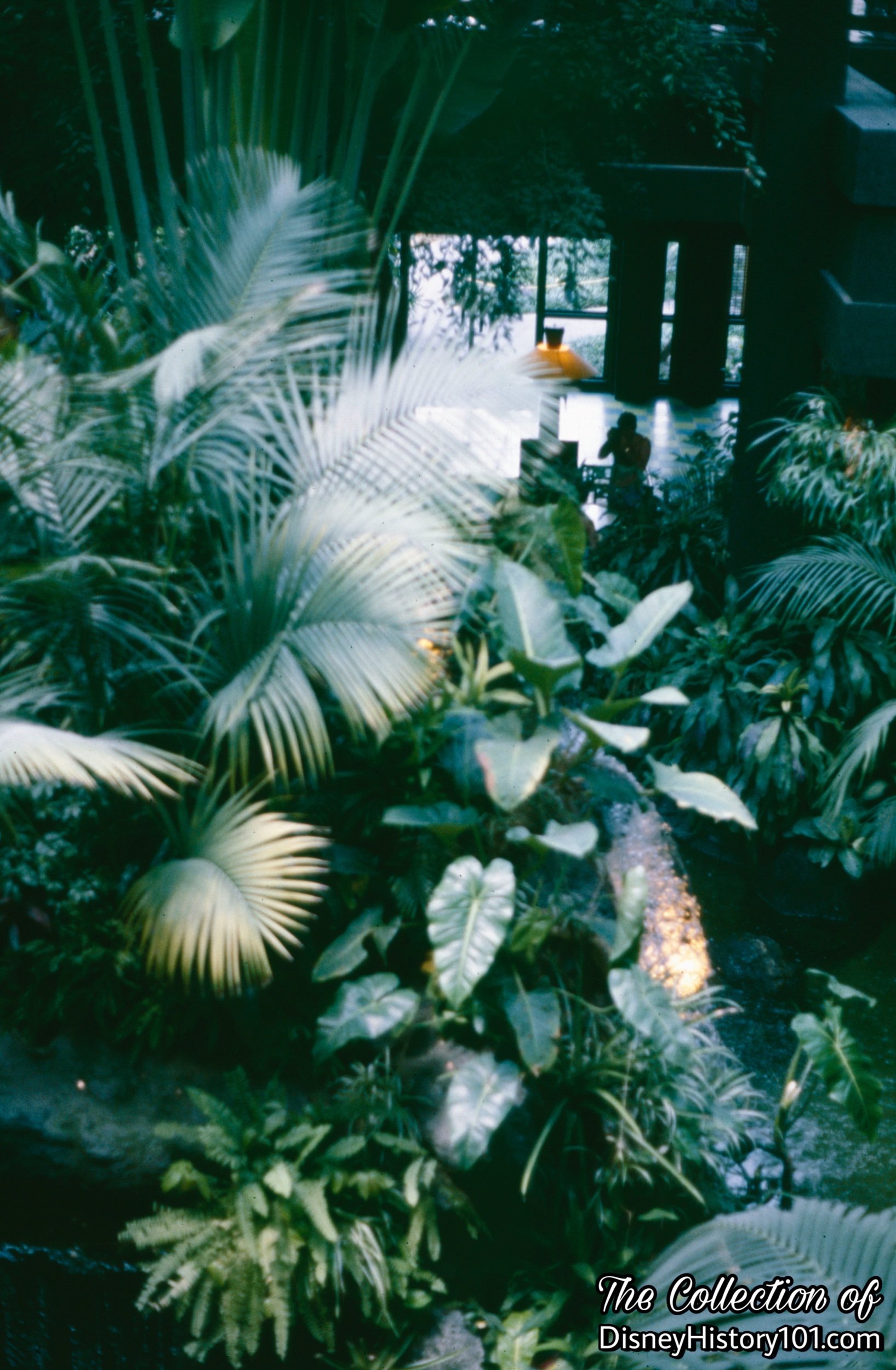
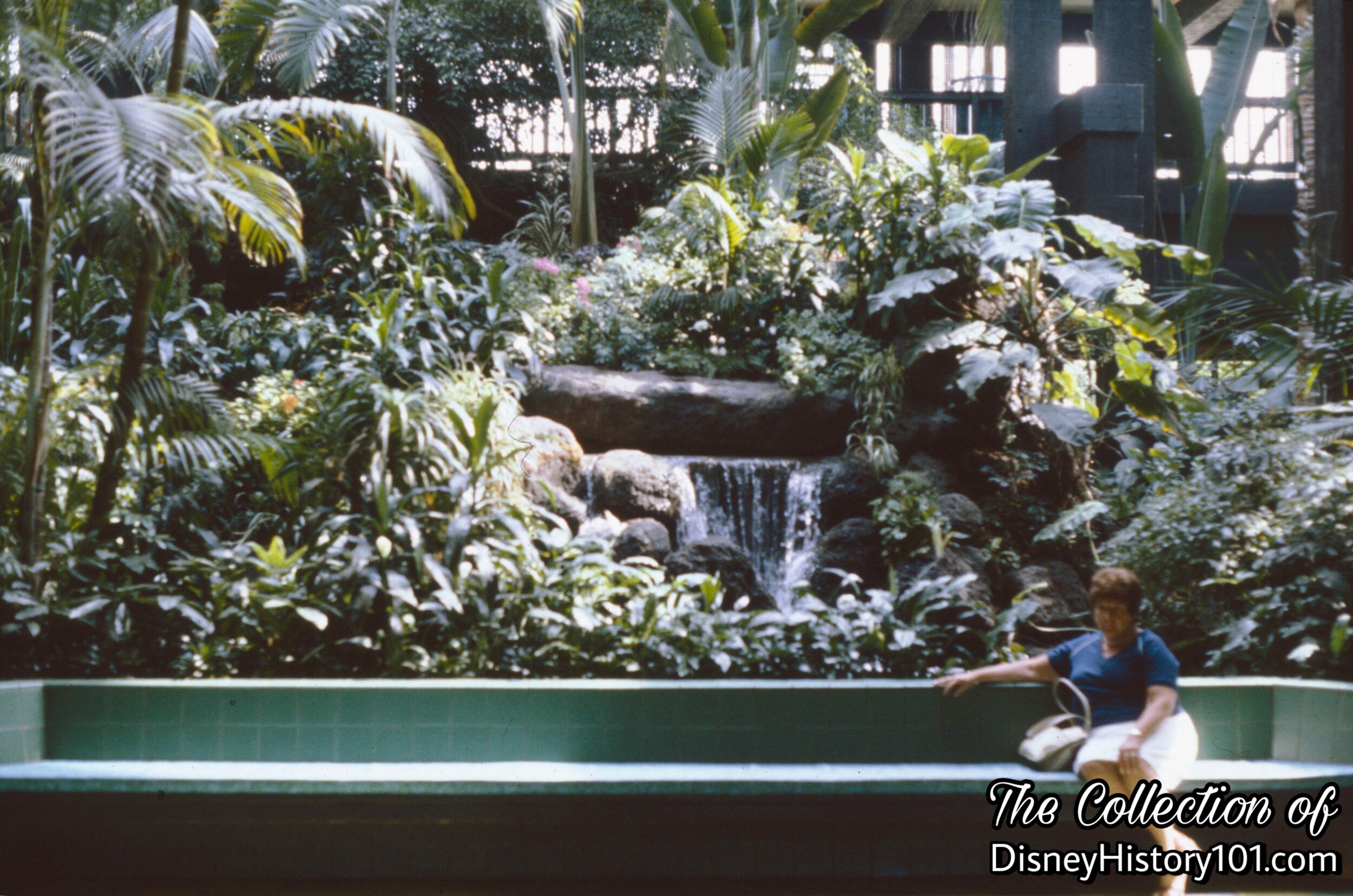
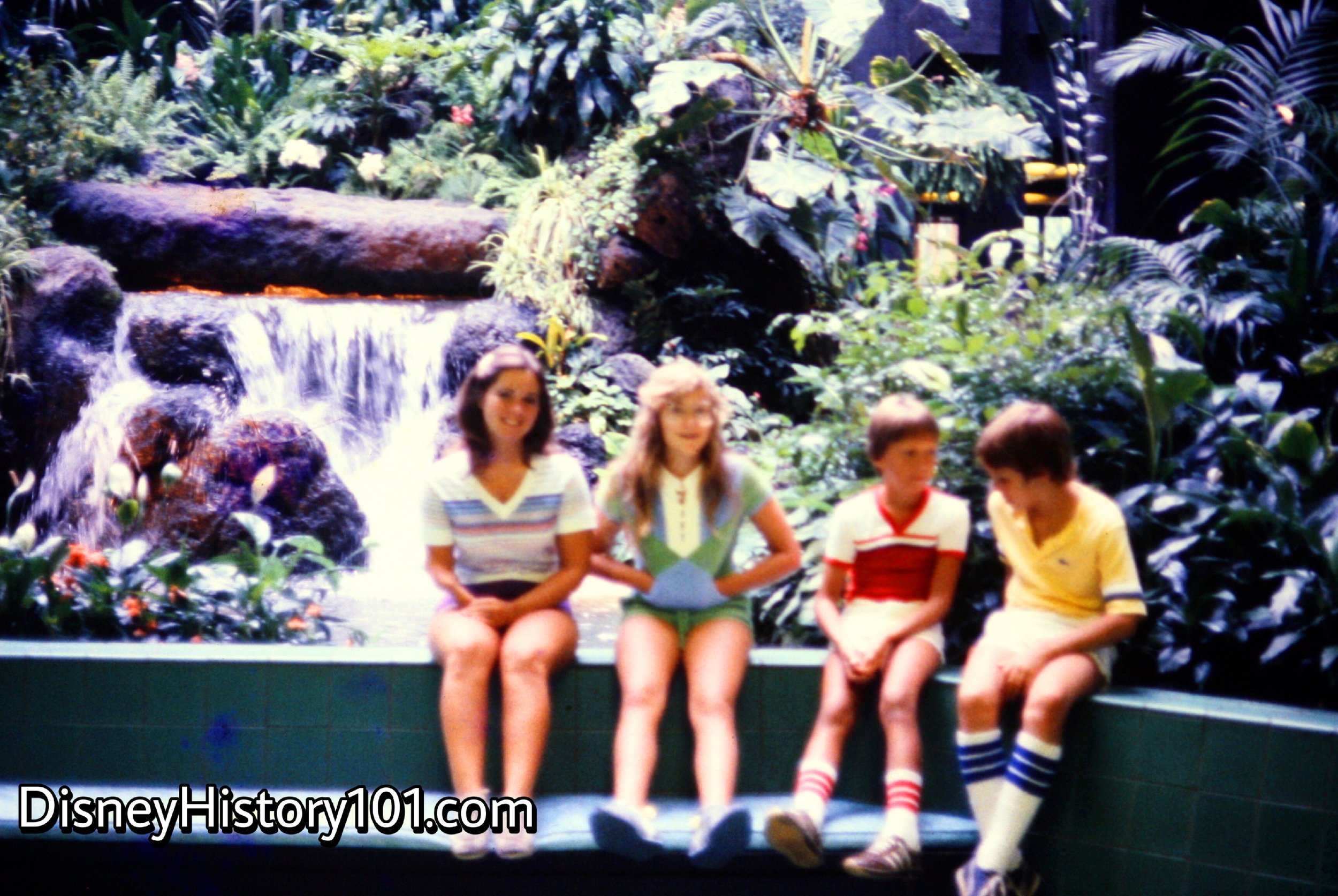
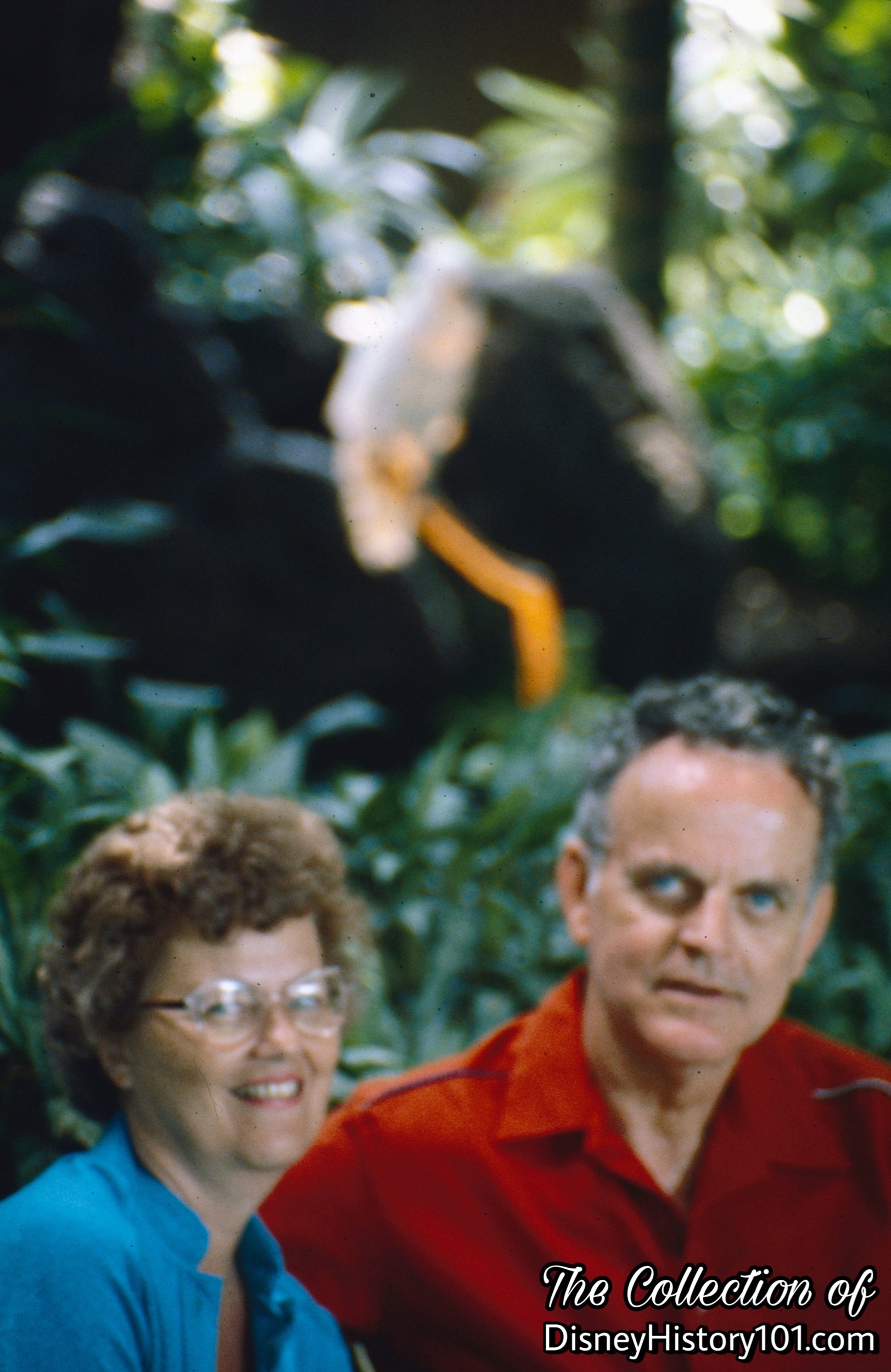
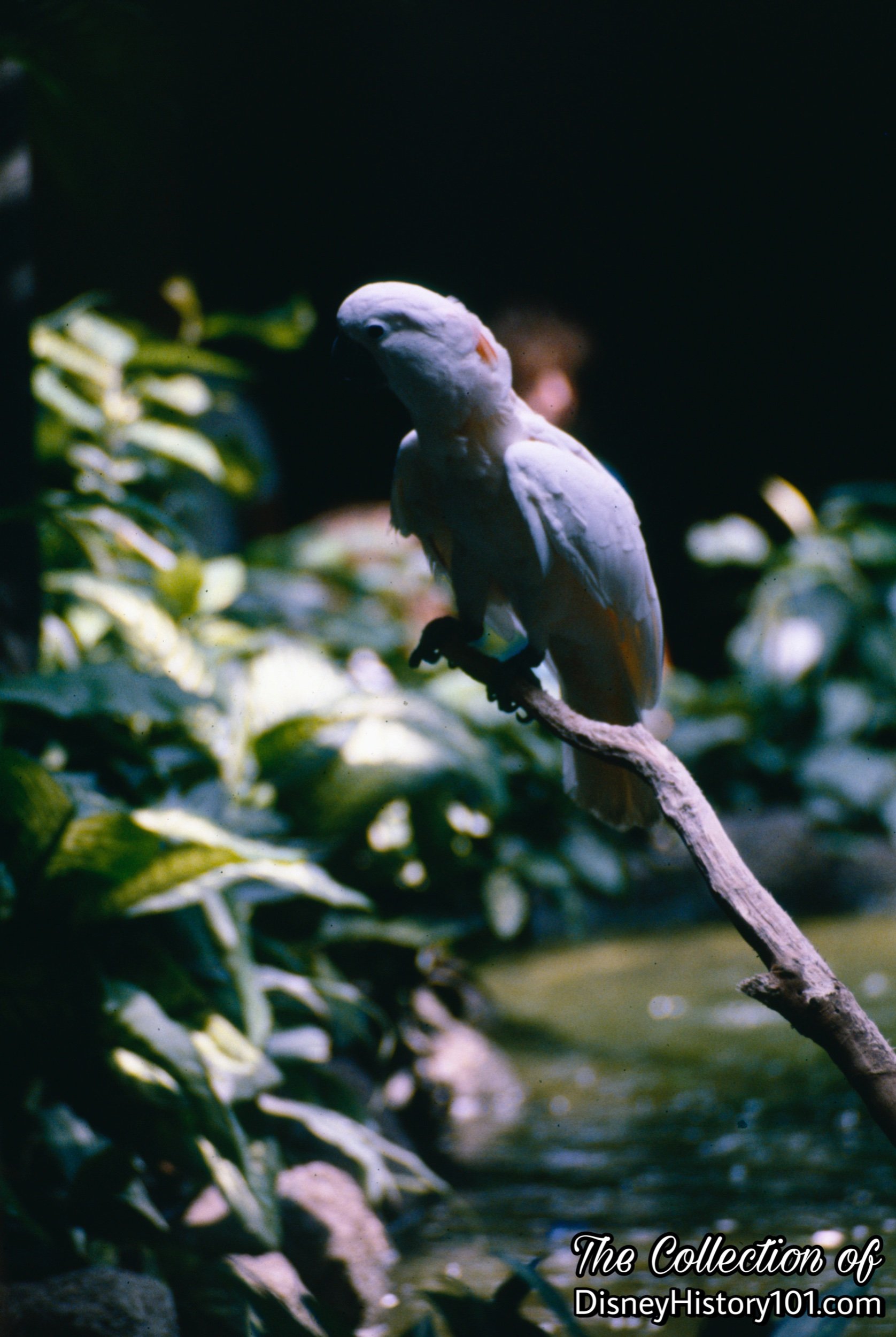
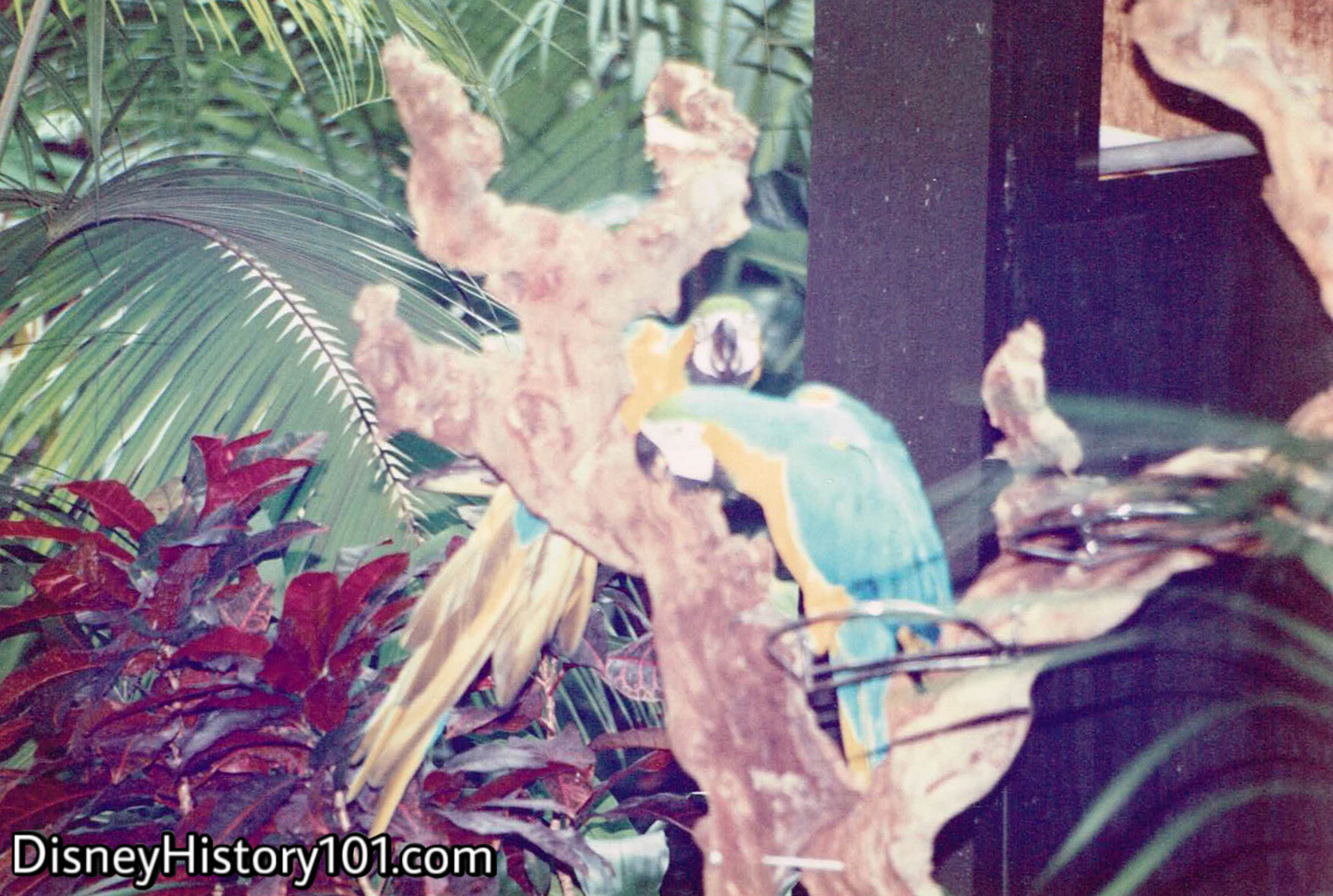
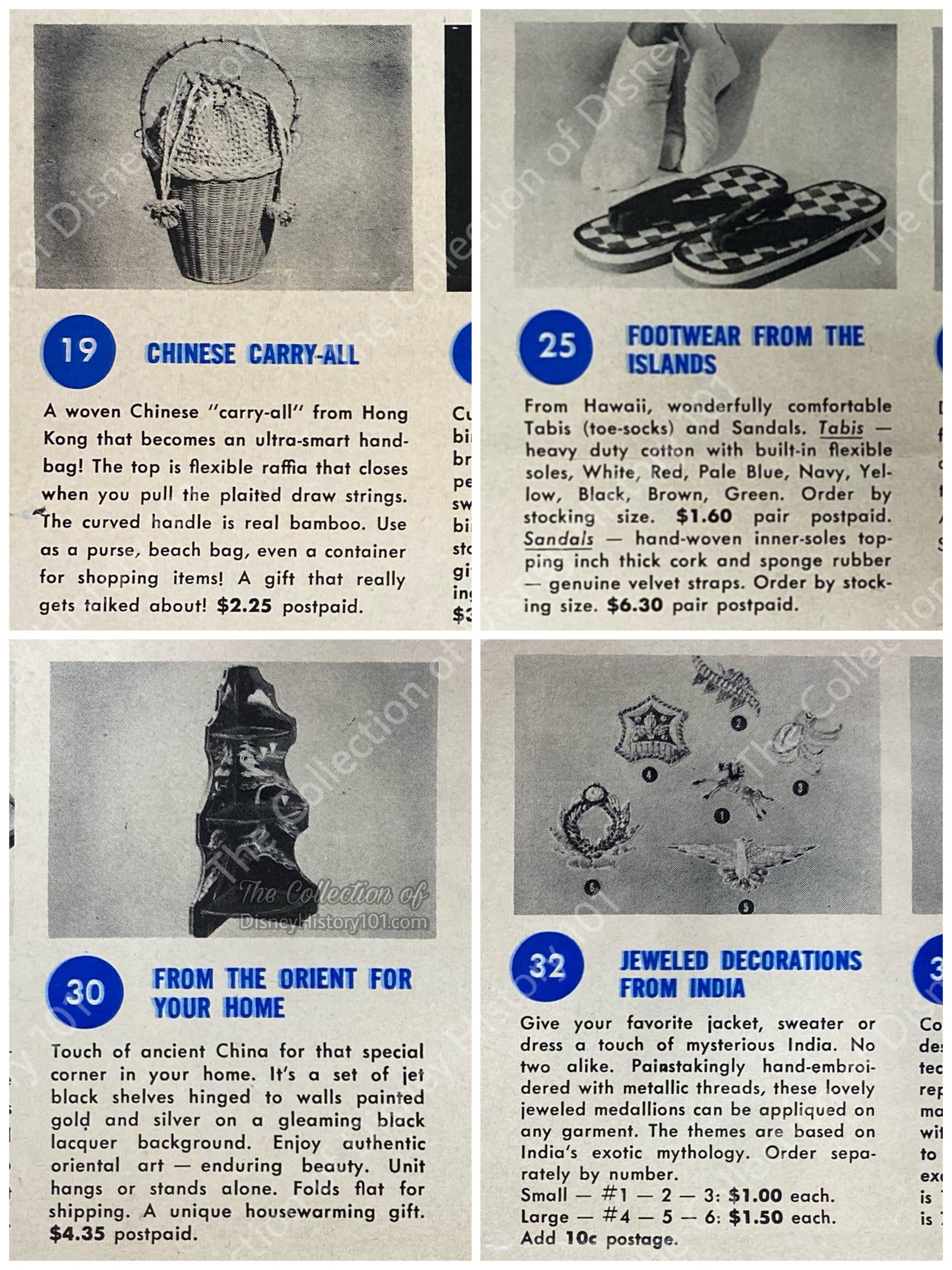
Back in 1955, after the opening of Walt Disney’s original Magic Kingdom, shops and catalogs offered “fabulous gifts from Disneyland.” Some of these were manufactured by the craftspeople of China. There were hand-embroidered decorations from India, Tabis (toe-socks) and Sandals from Hawaii, woven Chinese “carry-alls” from Hong Kong, and shelves from China.

The eight longhouses, which provide guest rooms, lie in an area reminiscent of a Polynesian Village. The longhouses derive their names from the primary cultures of the South seas, such as Tahiti, so that the guests may easily identify the building in which they stay.” [“An Introduction to the Resort Division of Walt Disney World”]
The 492-room Polynesian Village Resort Hotel consisted of eight multi-story Longhouses clustered around the Great Ceremonial House. The names of the original Longhouses were Tahiti, Samoa, Fiji, Bali Hai, Hawaii, Tonga, Bora Bora, and Maui. These eight native “Longhouses” were connected by winding pathways through tropical gardens. According to “An Introduction to the Resort Division of Walt Disney World” prepared c.1971: “The eight longhouses, which provide guest rooms, lie in an area reminiscent of a Polynesian Village. The longhouses derive their names from the primary cultures of the South seas, such as Tahiti, so that the guests may easily identify the building in which they stay.” Each guest room key carried a four-digit number. First digit indicated floor number. (2614) Second digit indicated Longhouse number (see map). (2614) Last two digits indicatd room number. (2614)
The Polynesian Resort Hotel became part of the Walt Disney World Resort Division which initially provided a near total of 1,700 comfortable rooms altogether. This necessitated a streamlined process of reservation and information processing by the Resort Division. Central Reservations Office (or, C.R.O.) located in the Casting Building, made reservations for all WDW Hotels and campground, the hotels of the Motor Inn Plaza, and some off-site facilities. Each day, thousands of potential guests from around the world would call the C.R.O. office (perhaps you recall calling 823-8000) where a reservation host or hostess would input the information into a computer access device called a Video Data Terminal or VDI. Within seconds, a computer in California would flash a room availability list on the screen, enabling a guest reservation to be placed at any of the soon-to-be vacant locations. Reservation confirmations and important information were then sent to guests on receipt of a deposit equivalent one night’s stay.
According to the Sunday, September 26, 1971 issue of “Sunrise” magazine, a supplement of “Today,” once arrived at Disney World’s Main Entrance, a Host would check the guest’s reservation by telephone. By the time the guest would arrive at the Hotel, the computer would have done its job - a Host greeting the guest, parking their car, and handling their luggage.
Initially, rooms ran approximately $22 a night, with stylish suites ranging from $62 to $200 a night.
Many memorable V.I.P. visitors have enjoyed a stay at Walt Disney World’s Polynesian Resort, including John Lennon, around December 29, 1974.
By October of 1976, the local Orlando-Land magazine published a special Walt Disney World fifth anniversary issue, making particular much mention of “the 500-room Polynesian Village on Seven Seas Lagoon.” By the time the “Vacation Kingdom” celebrated its fifth anniversary on October 1, 1976, occupancy at Walt Disney World's three hotels, the Contemporary the Polynesian Village and the Golf Resort, averaged 97% for the fiscal year. As of October 1, 1976, 267, 800 room-nights, or 88% of the available capacity in the Company's three hotels had already been sold or committed for the following Six months, an increase of 10.3% over the previous year.
As a result, expansions were being planned. According to the 1976 Walt Disney Productions Annual Report, construction of 144 additional rooms for the Polynesian Village (below) would begin in 1977. Chairman of the Operating Committee of Walt Disney World Robert (Bob) C. Allen (who leads the team which meets regularly to plan projects) found that the Golf Resort was “pulling rooms from the Lake Buena Vista area. There has been a hiatus while the surrounding area builds up. With the World Showcase, we expect to build the Asian Hotel. We are also going to expand the Polynesian with 120 to 140 more rooms.” [Orlando-Land; October, 1976] By the Walt Disney Productions Shareholders Report, the number of additional rooms had been defined and it was announced : “The Company is now planning to construct an additional 144 rooms, as well as a 250-seat themed restaurant and a second swimming pool, at the Polynesian Village. Work is scheduled to begin in early 1977.”
By September 30, 1982, development of a Polynesian Hotel Long House was underway (WED Job #F200-1; at a cost of $1,224.92).
According to “The Spirit of Epcot,“ page 43 (prepared 1982, by Walt Disney Productions) spoke of a momentous event which this resort was participant: “Walt Disney World was host in October of 1978 to the International Chamber of Commerce. The ICC is the largest, most prestigious International business organization in the world. If you can imagine, it was a convention that occupied all of the hotels and Walt Disney World Village Accommodations, with some 2500 business leaders from 70 different countries, all here at the same time for one week. It was a magnificent gathering of some extremely important and influential people. They came here and participated in business discussions and talked about how they could cooperate better. There is not a more appropriate setting in the world than right here at Walt Disney World for this kind of a discussion to take place. In fact, Walt Disney World was honored by being the first site outside a national capital to be selected for hosting the ICC.”


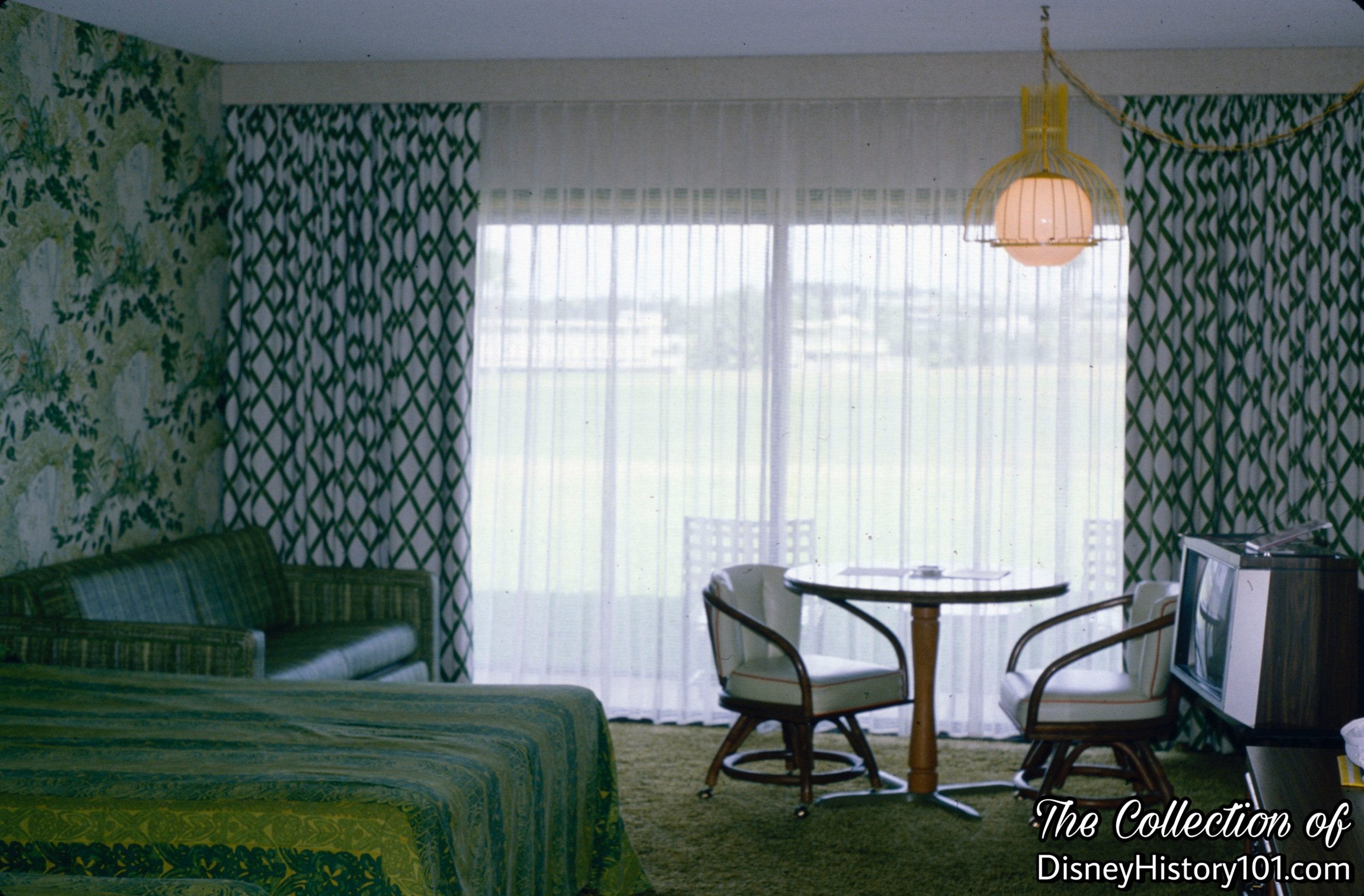
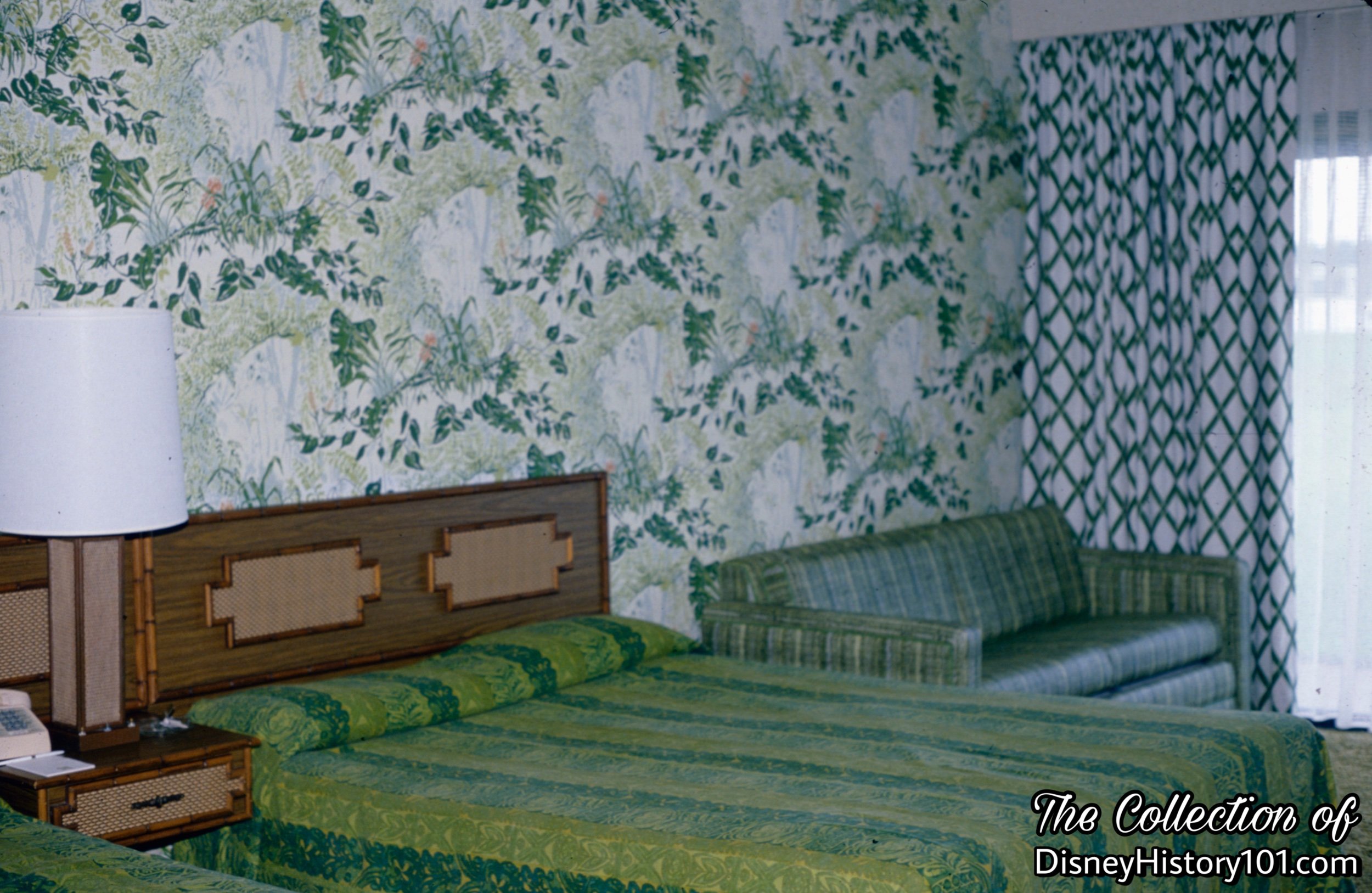
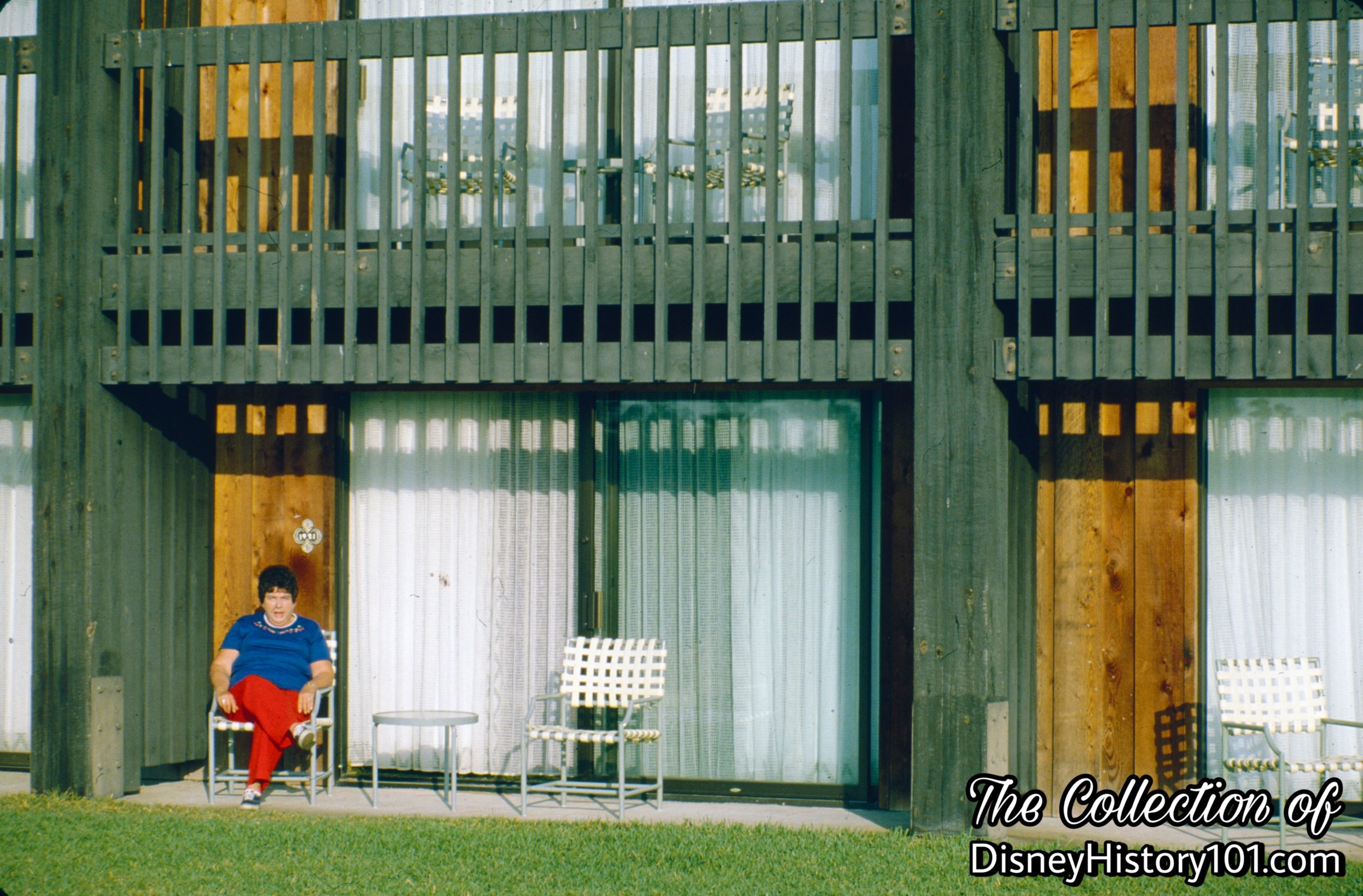
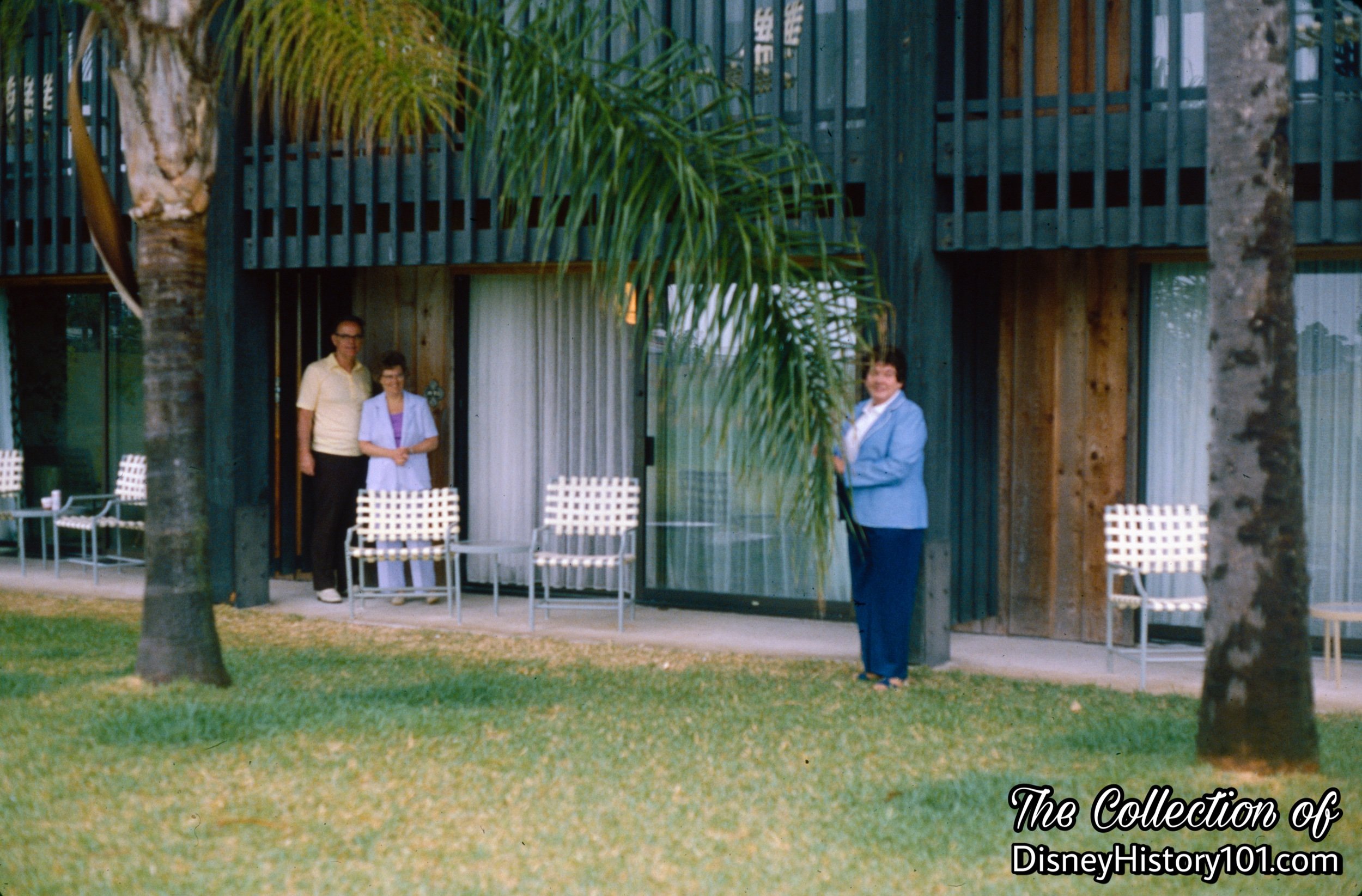
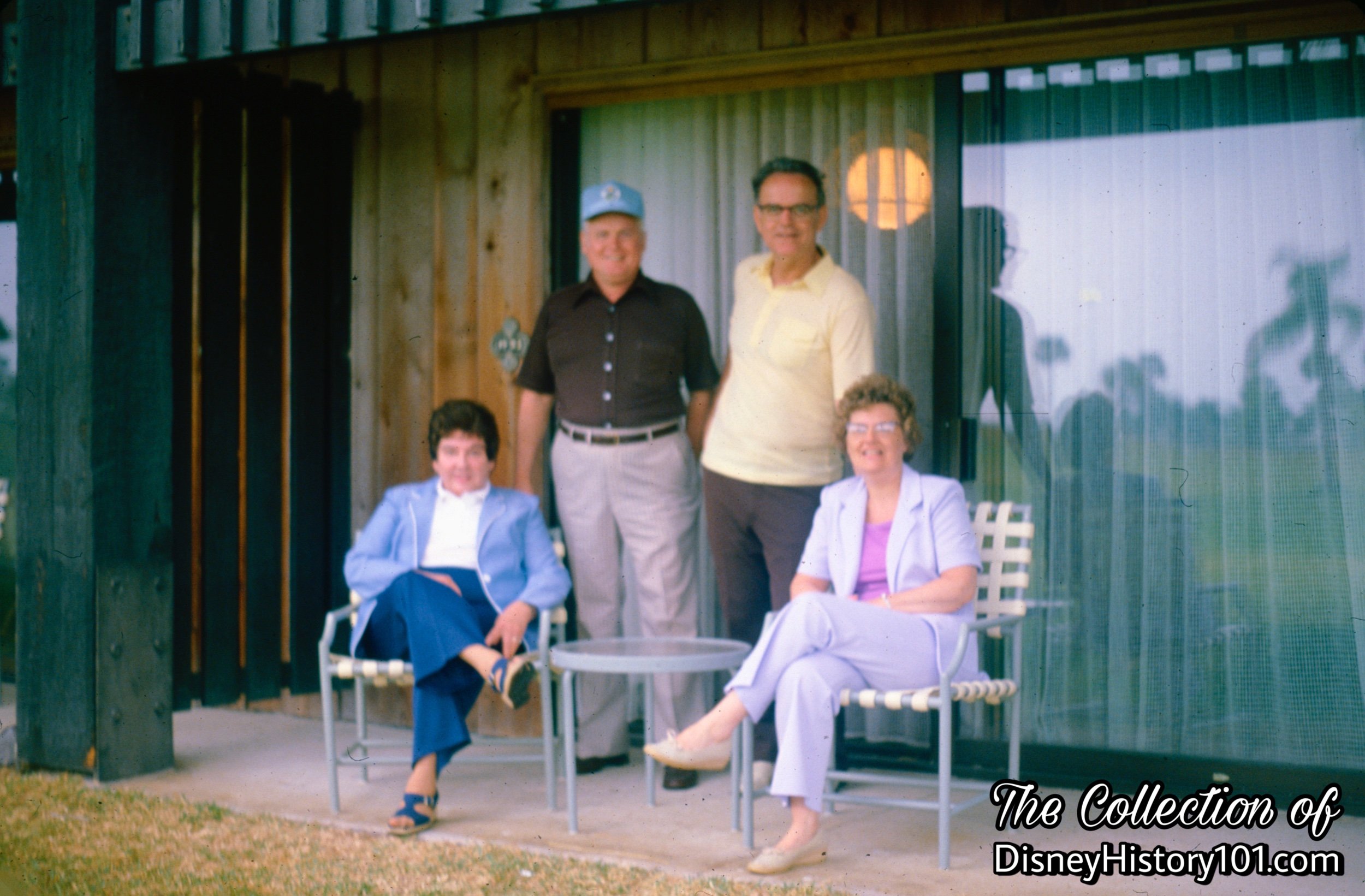
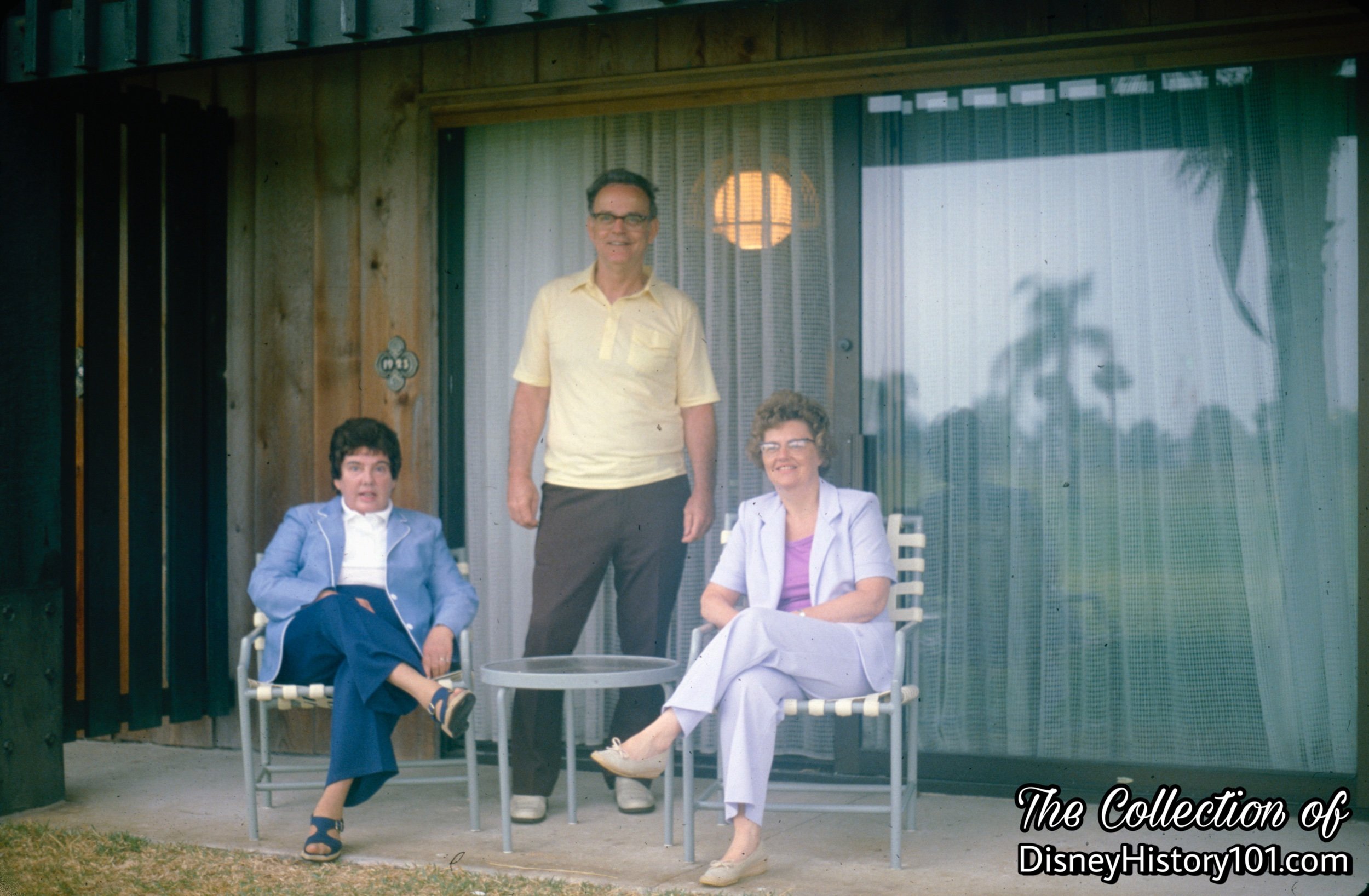
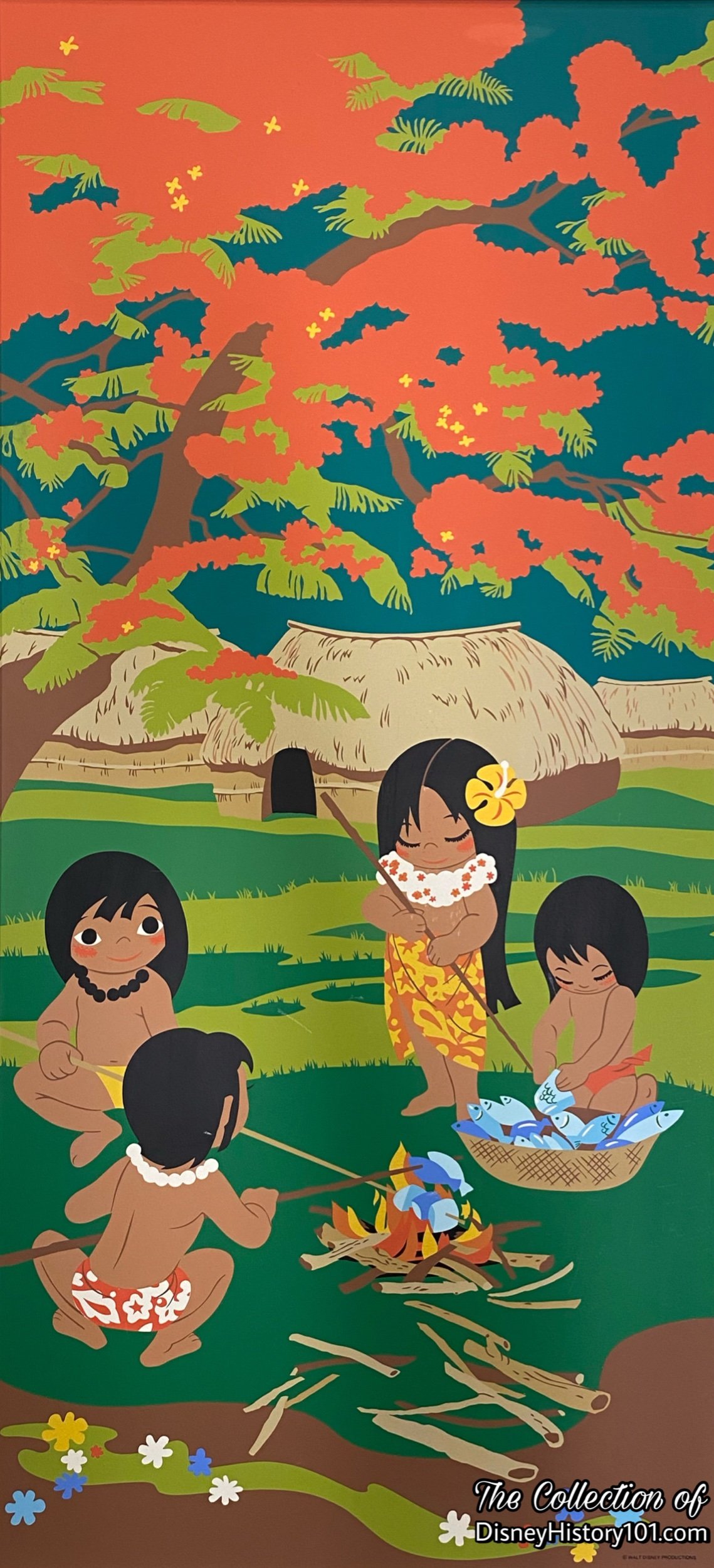
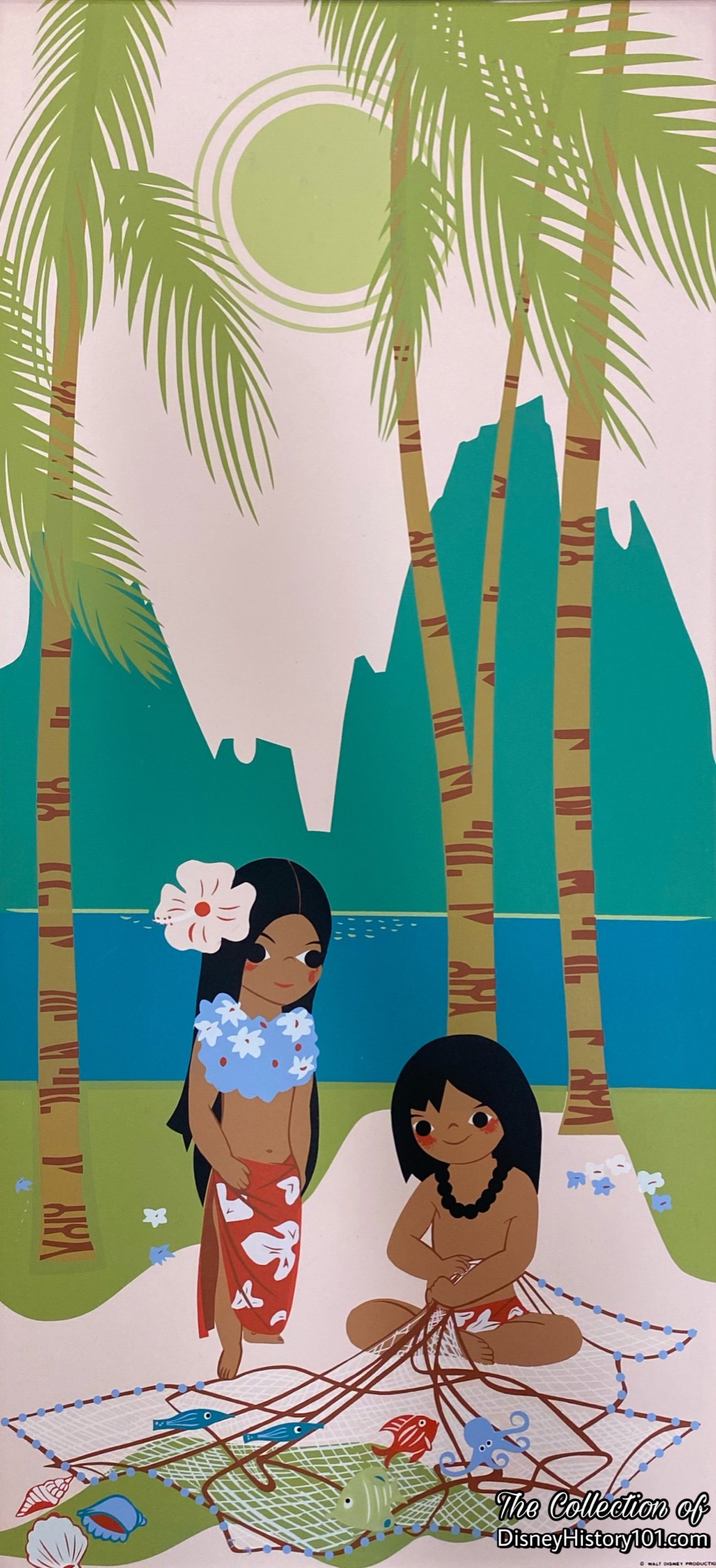
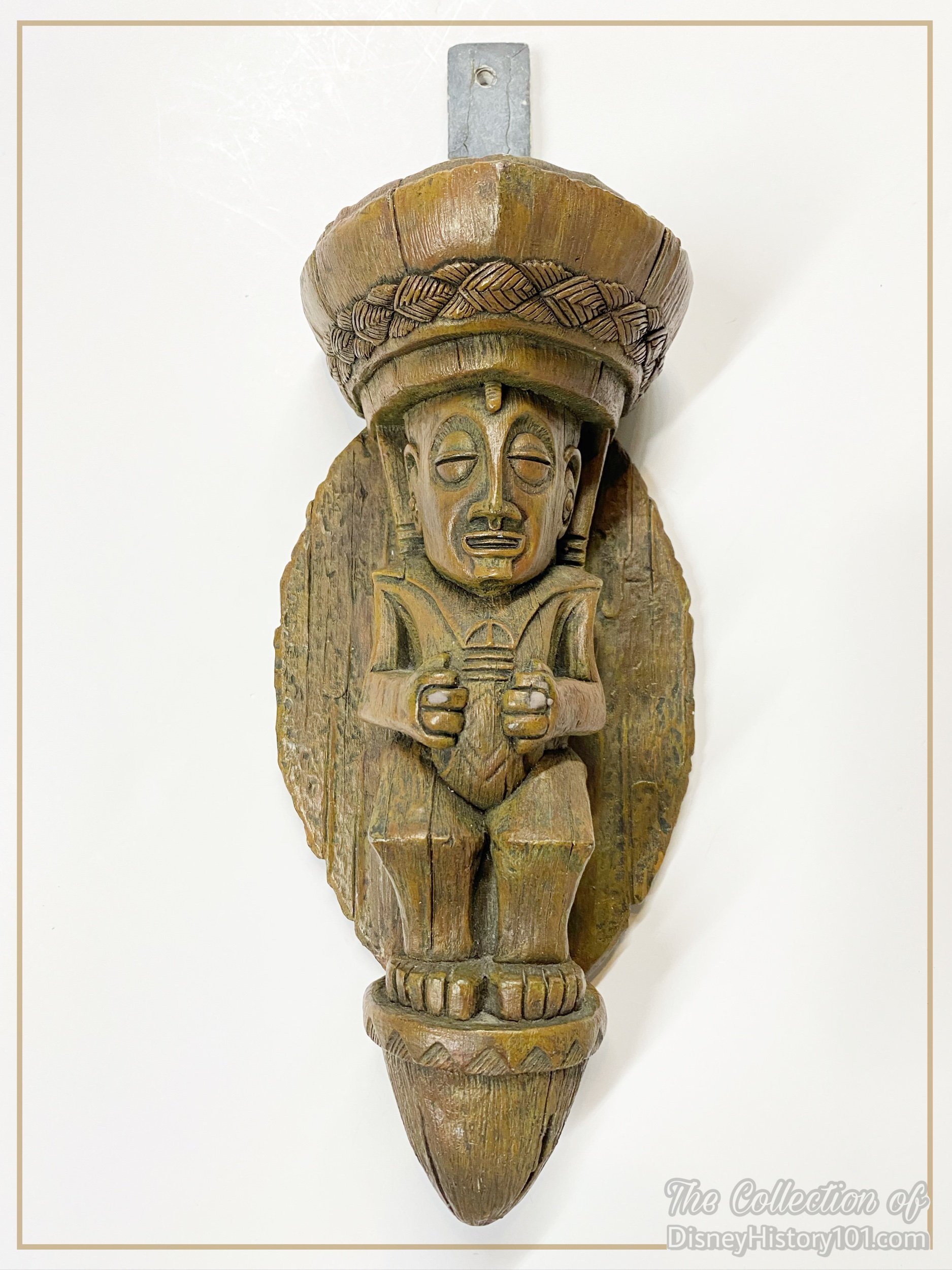
Character lighting was themed to enhance the overall appearance and complement the interior, such as a chandelier or kerosene lamp. These add to the show, but don't necessarily create enough illumination for operation.
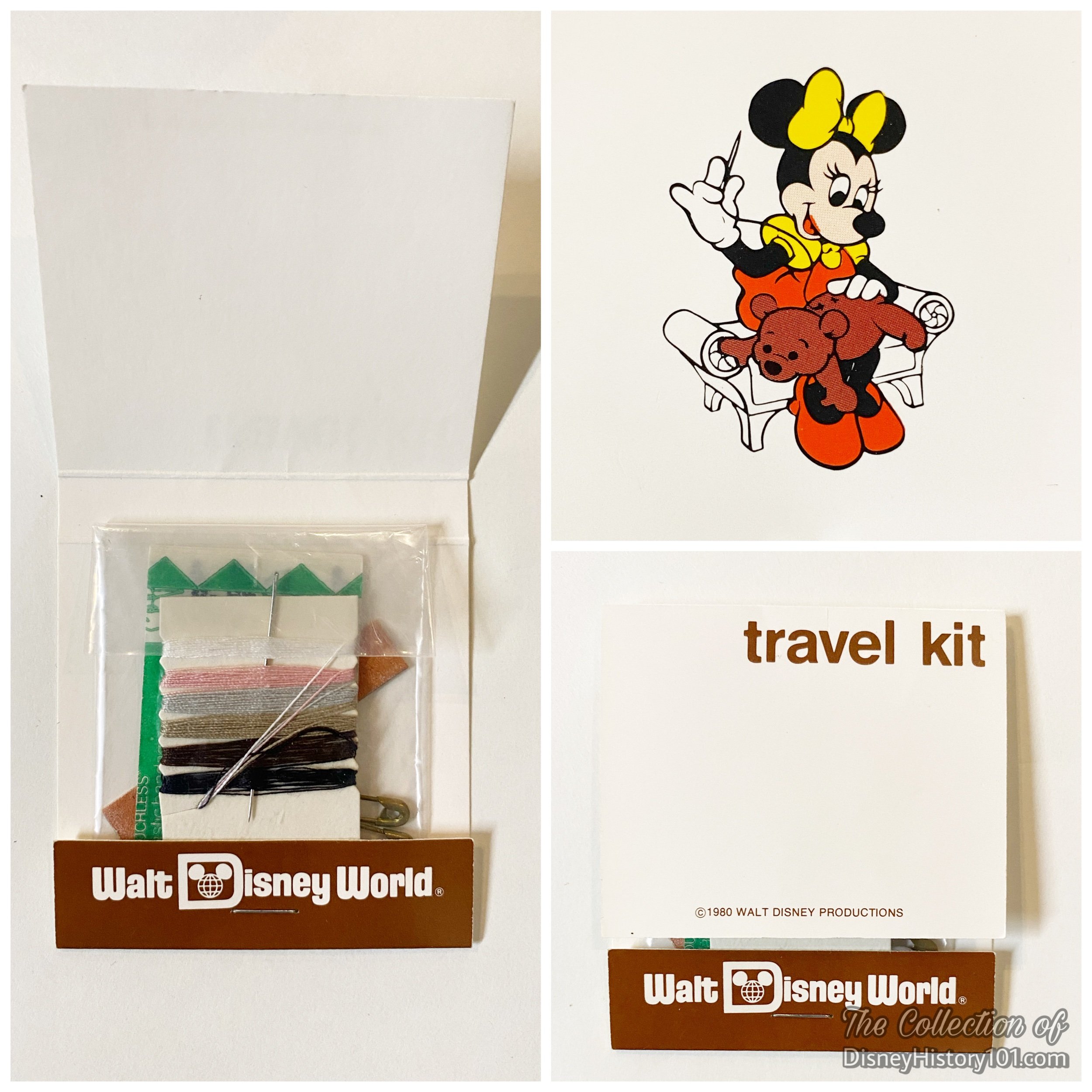
By 1984, Trader Jack's Grog Hut offered snack foods, liquors, wines, beers, candy and bar giftwares. The Village Gifts and Sundries shop sold souvenirs, costume jewelry, film, gifts, mementos, sundries, personal items, and included FTD florist.
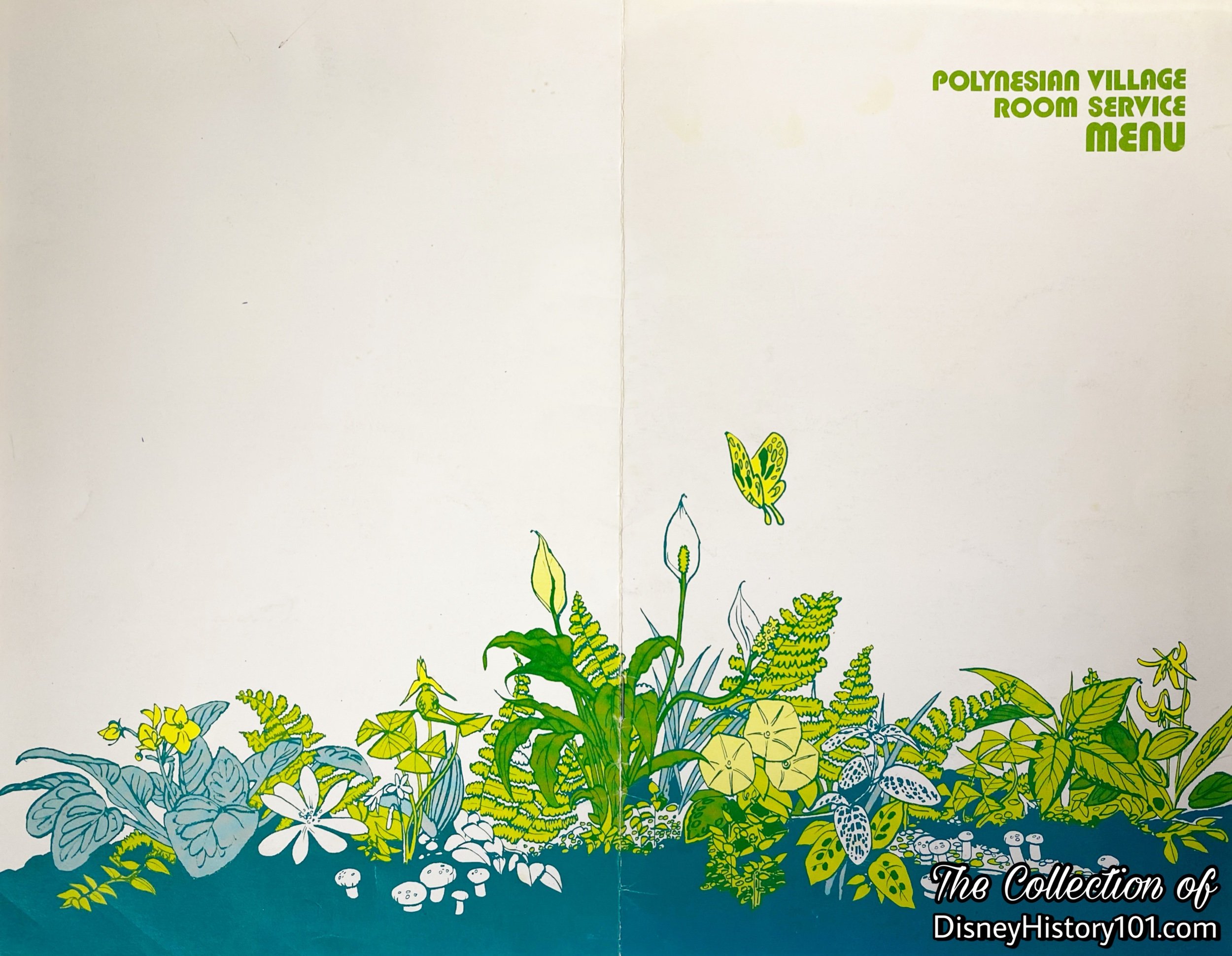
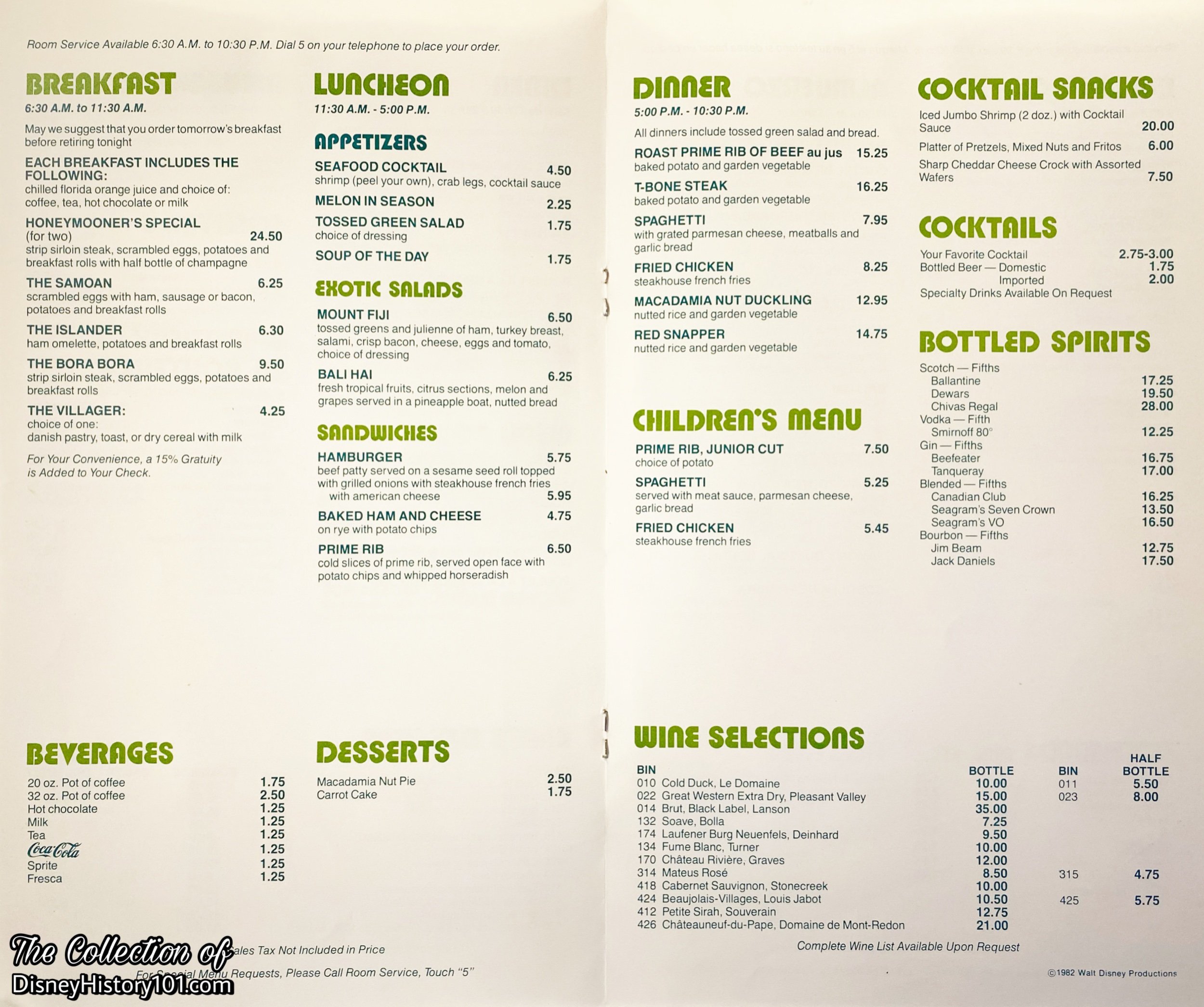
This Room Service Menu was published with French and Spanish pages.

The Great Ceremonial House featured six restaurants and lounges - from the Barefoot Snack Bar to the elegant Papeete Bay Verandah.
On the second floor, overlooking the Marina and Lagoon was the Coral Isle Cafe (October 1, 1971 - July 25, 1998). The coffee shop menu served breakfast, luncheon, and dinner from 6:30am to 11pm and the cafe had the capability of accommodating 200 persons from the Outrigger Assembly House Bay View Terrace on the second floor. The Kona Cafe opened in its place November 23, 1998.
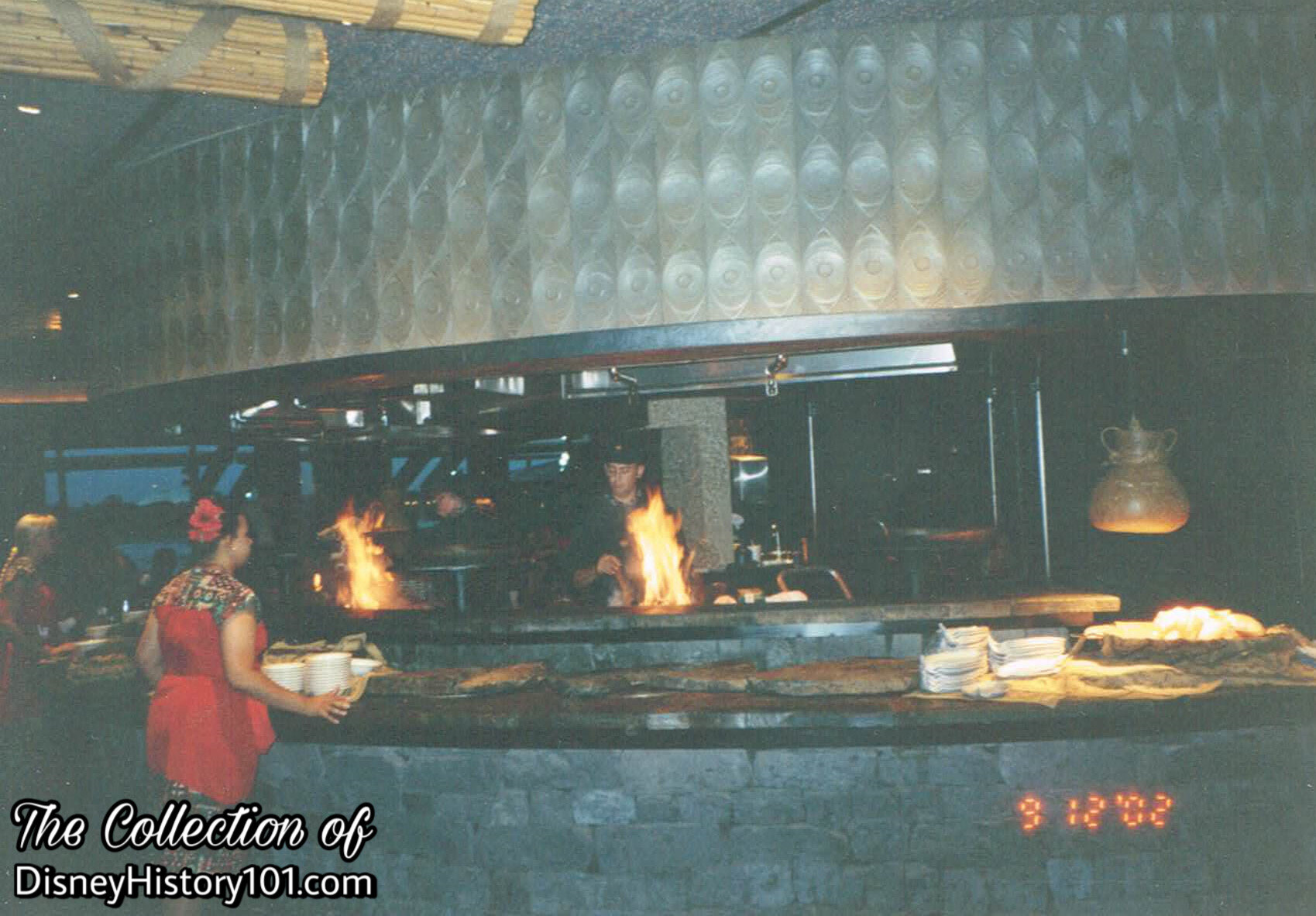
According to the Sunday, September 26, 1971 issue of “Sunrise” magazine, a supplement of “Today,” Garry Reich (chef for former president Lyndon Johnson and Howard Hughes) was in charge of food preparation at the Polynesian Hotel. The menus of the gourmet restaurants offered a great variety of Polynesian food. According to the same issue of “Sunrise” magazine, “both hotels will have cocktails bars and liquor in the restaurants.” A special Liquor Storage Building was built as a storage area for all the liquor supplies for the Resorts of Walt Disney World.
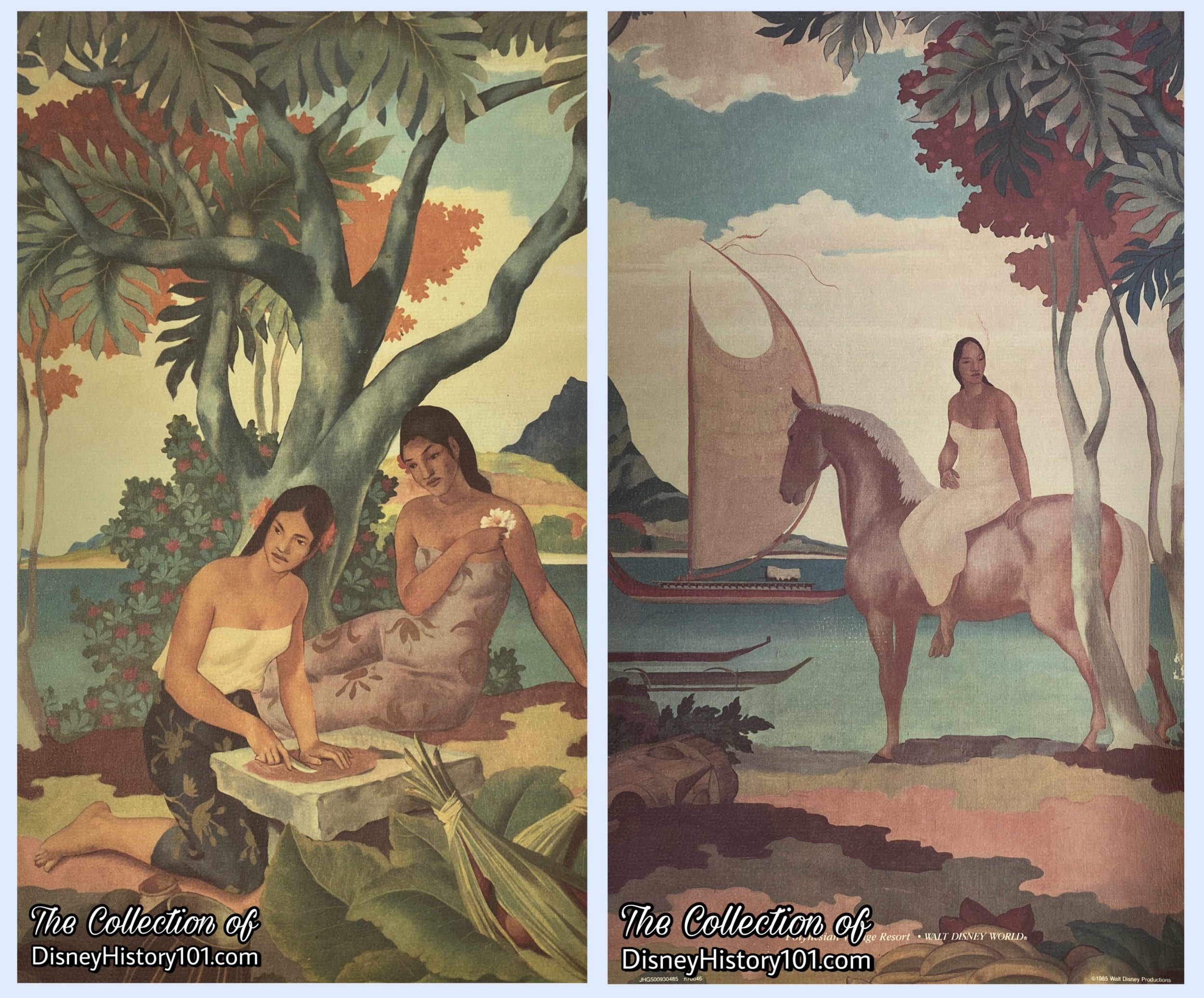
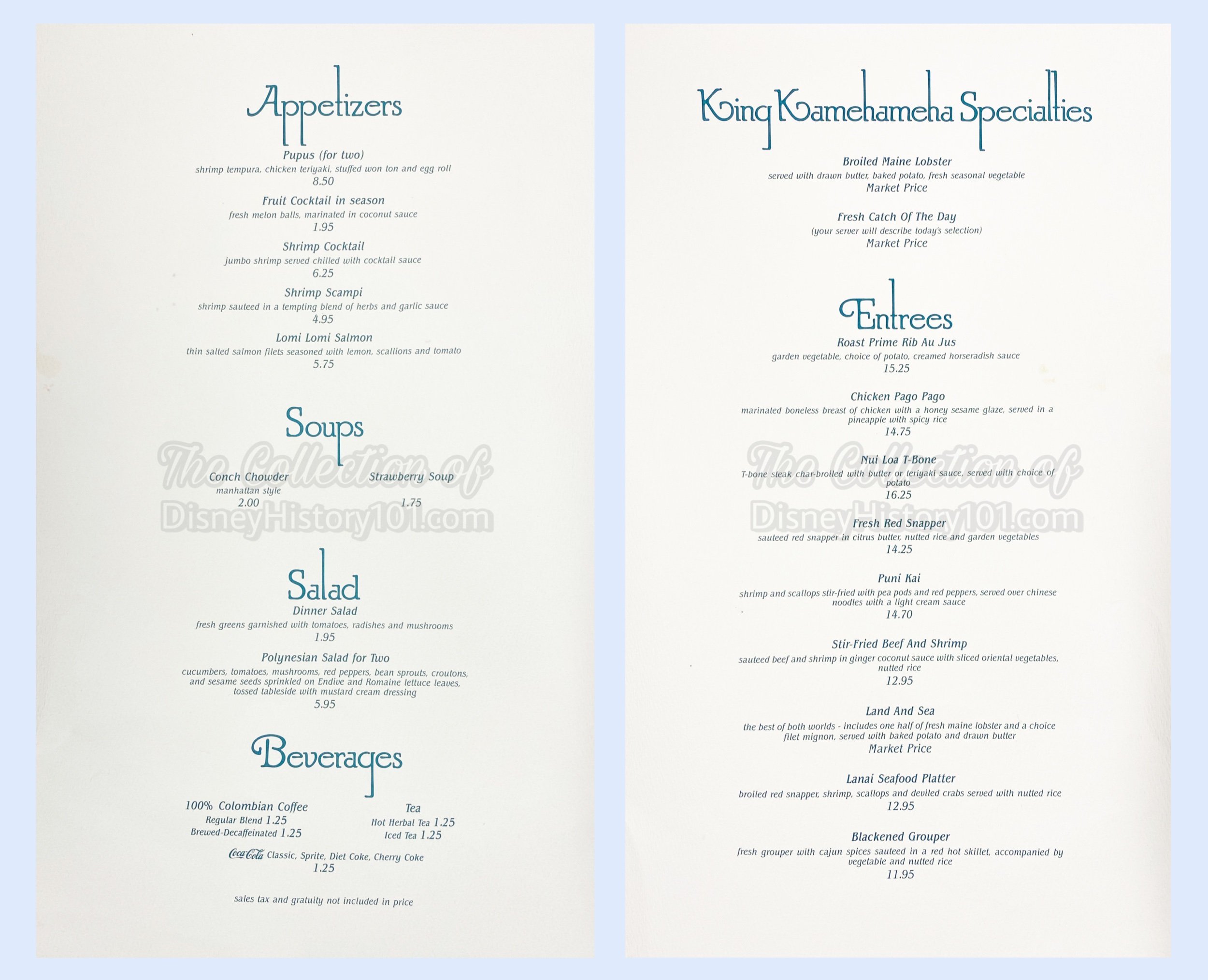
Before Ohana (with its Ohana Character Breakfasts) this was the sight of the Papeete Bay Verandah French Colonial Restaurant Dining Room on the 2nd floor of the Polynesian Resort Village. The dining room accommodated a maximum of 306 persons and hosted a colorful Polynesian revue dinner show featuring a lavish island dinner with evening entertainment.
The Papeete Bay Verandah French Colonial Restaurant had a Dining Alcove with a 30-person capacity. The restaurant served Polynesian dishes such as Chicken Pago Pago and Toa Nui.
Then there was Tambu Lounge, offering piano favorites, exotic Polynesian drinks, bar service for 96 persons, and provided a grand view overlooking Papeete Bay, the Marina, and Lagoon from Bay View Terrace on the second floor. In 1976, the Polynesian Dinner was served from 5:30pm to 9:30pm nightly, dinners ranging from $5.95 to $15.95, with rum specialty drinks ranging from $1.50 to $2.50, and “coats for gentlemen requested.”
In addition (by 1972-1976), the South Seas Dining Room on the first floor served roast beef, prime rib in a buffet, and Polynesian specialty entrees nightly from 6pm-10pm, while the discreet Captain Cook's Hideaway lounge was an intimate Polynesian atmosphere. “For guests desirous of a dark rendezvous and the strains of a haunting qui-tar, Captain Cook's Hideaway provides both, as well as an outside patio romantically bathed in soft candlelight.”
The Barefoot Snack Bar offered Hamburgers, hot dogs, and soft drinks with live musical entertainment (like Christopher and Stratton) to a select audience.

By 2007, Characters and Character Attendants would know this location as Poly (B3) (MK), or the Polynesian Hotel; home of the Poly Breakfast or Ohana Character Dining Experience. The Characters typically emerge from the Break Room, making rotations along the windows, near the Black Box, and Kings Tables, before returning near the Kitchen.
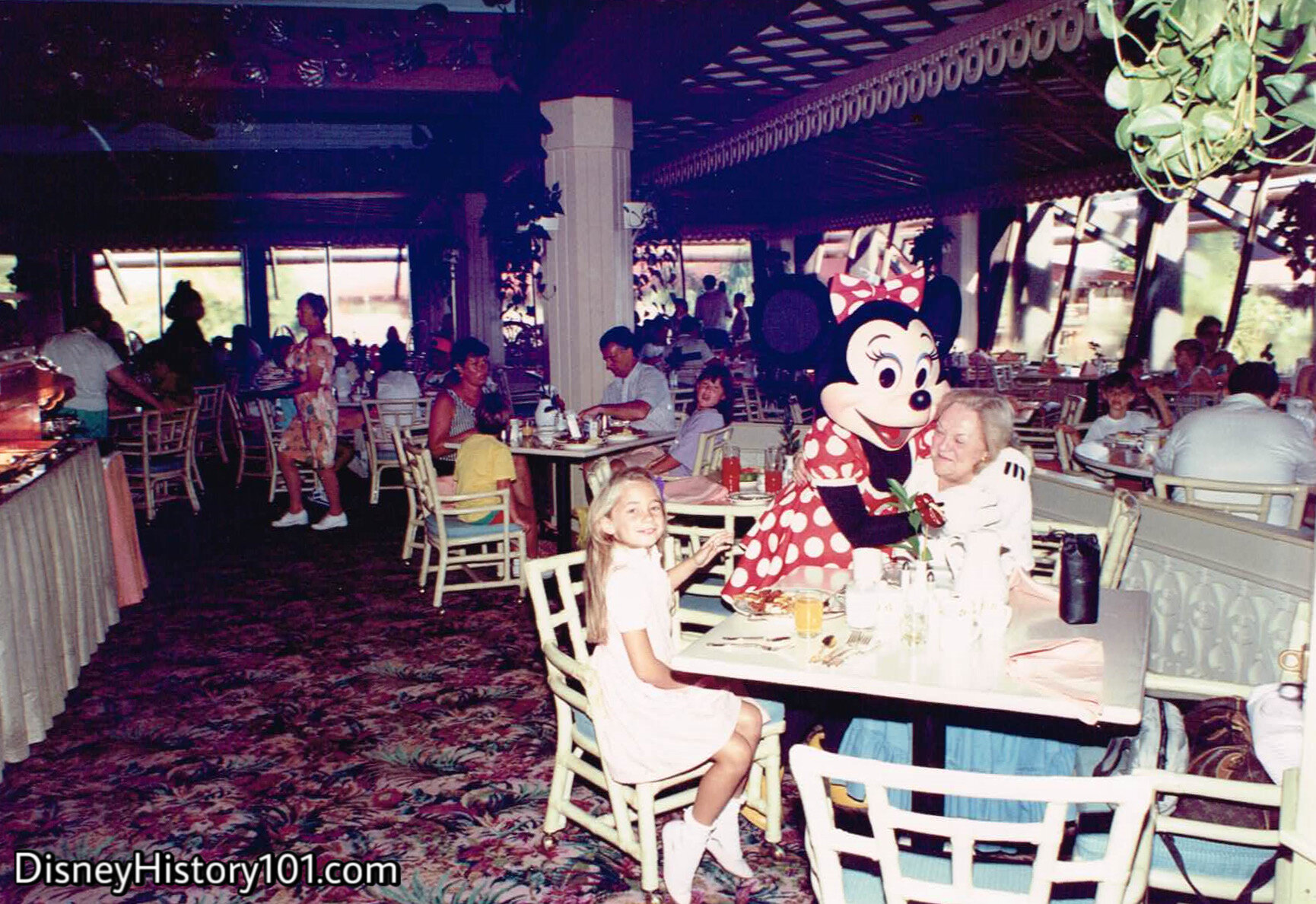

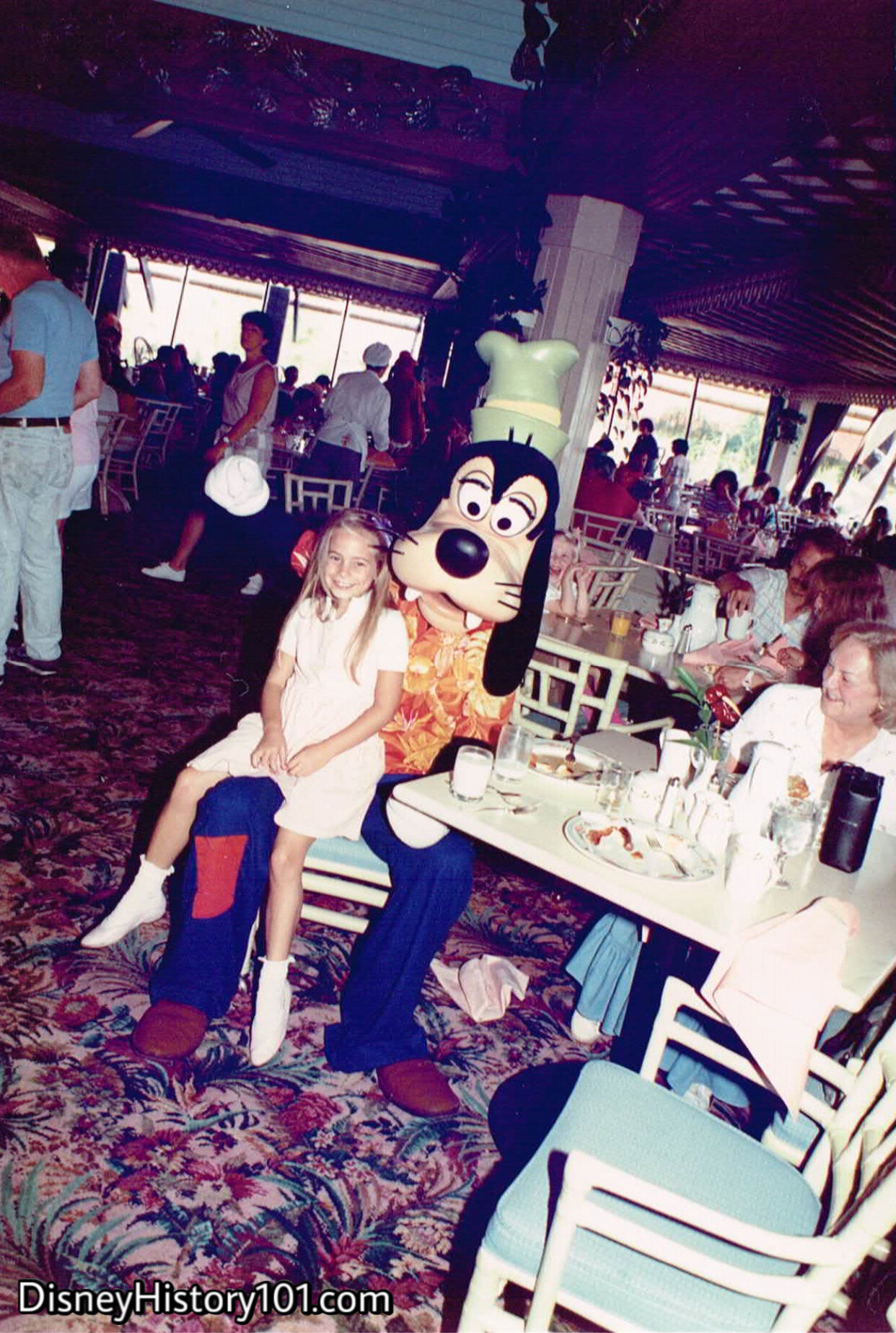


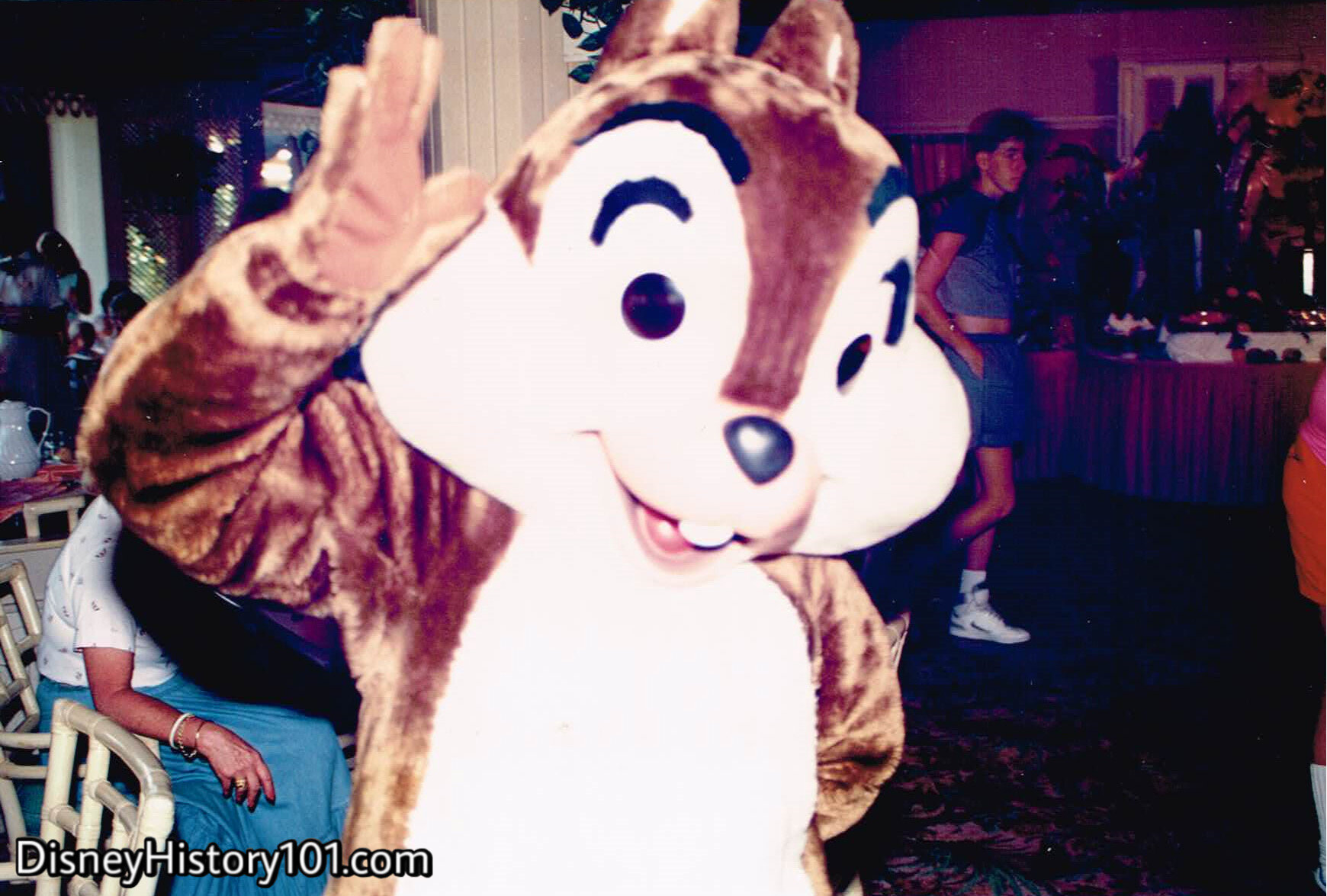
You won’t need to call the old CHiP Hotline (CHIP a.k.a. 2447) if you’re searching for Chip.
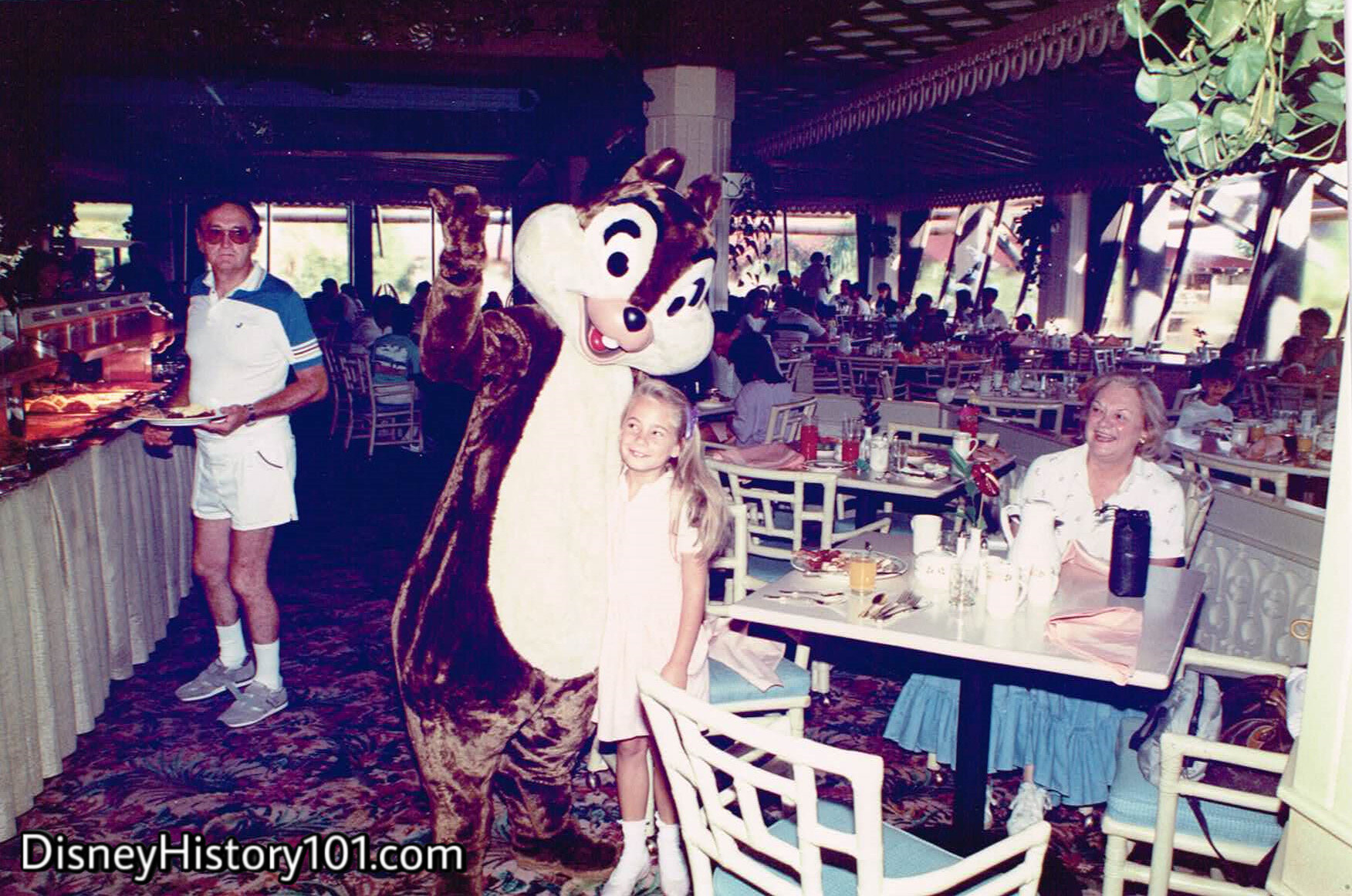
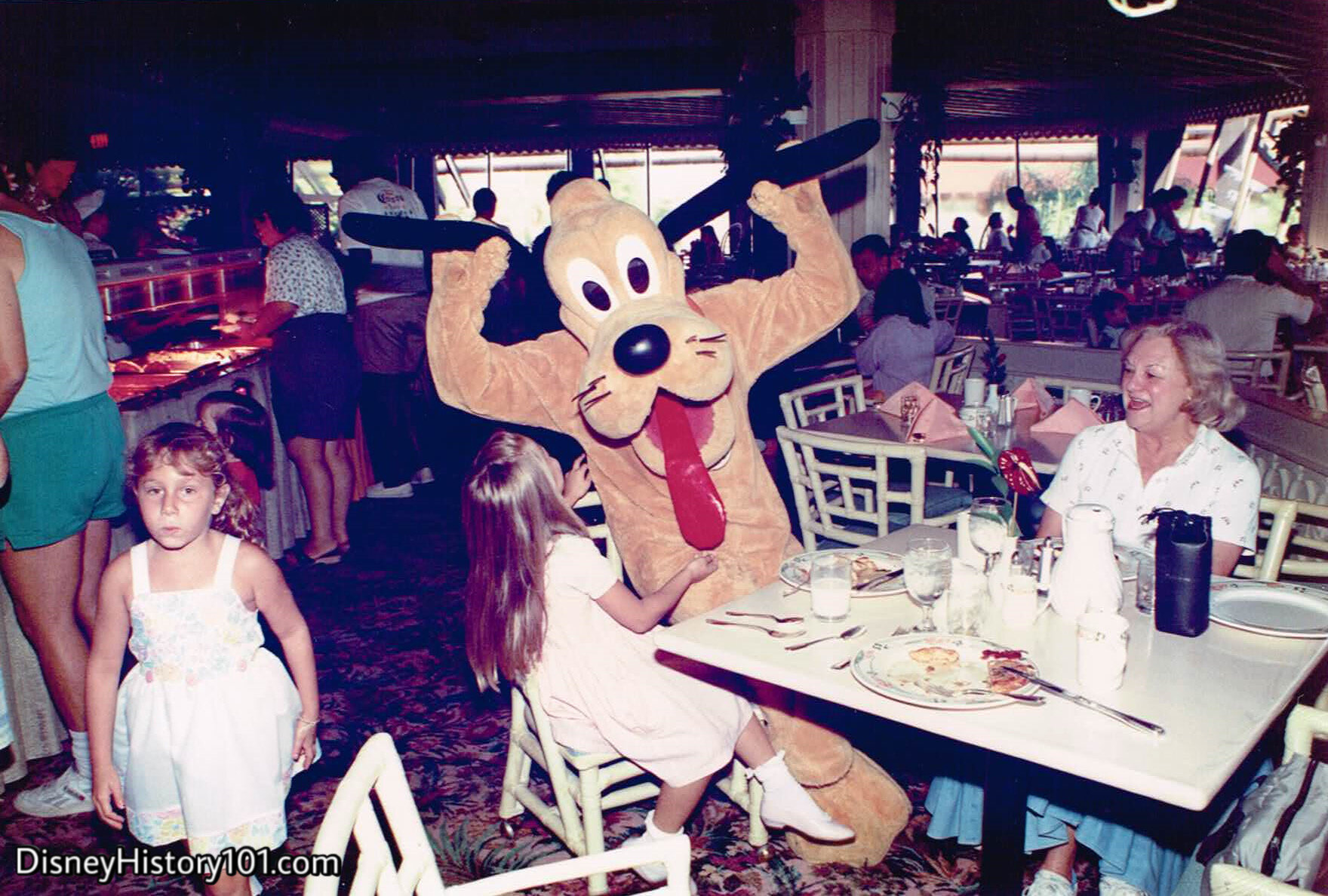
Today, Disney Parks Guests still enjoy “Dinners” - Character greetings performed at a park or hotel restaurant while the Guests are dining.
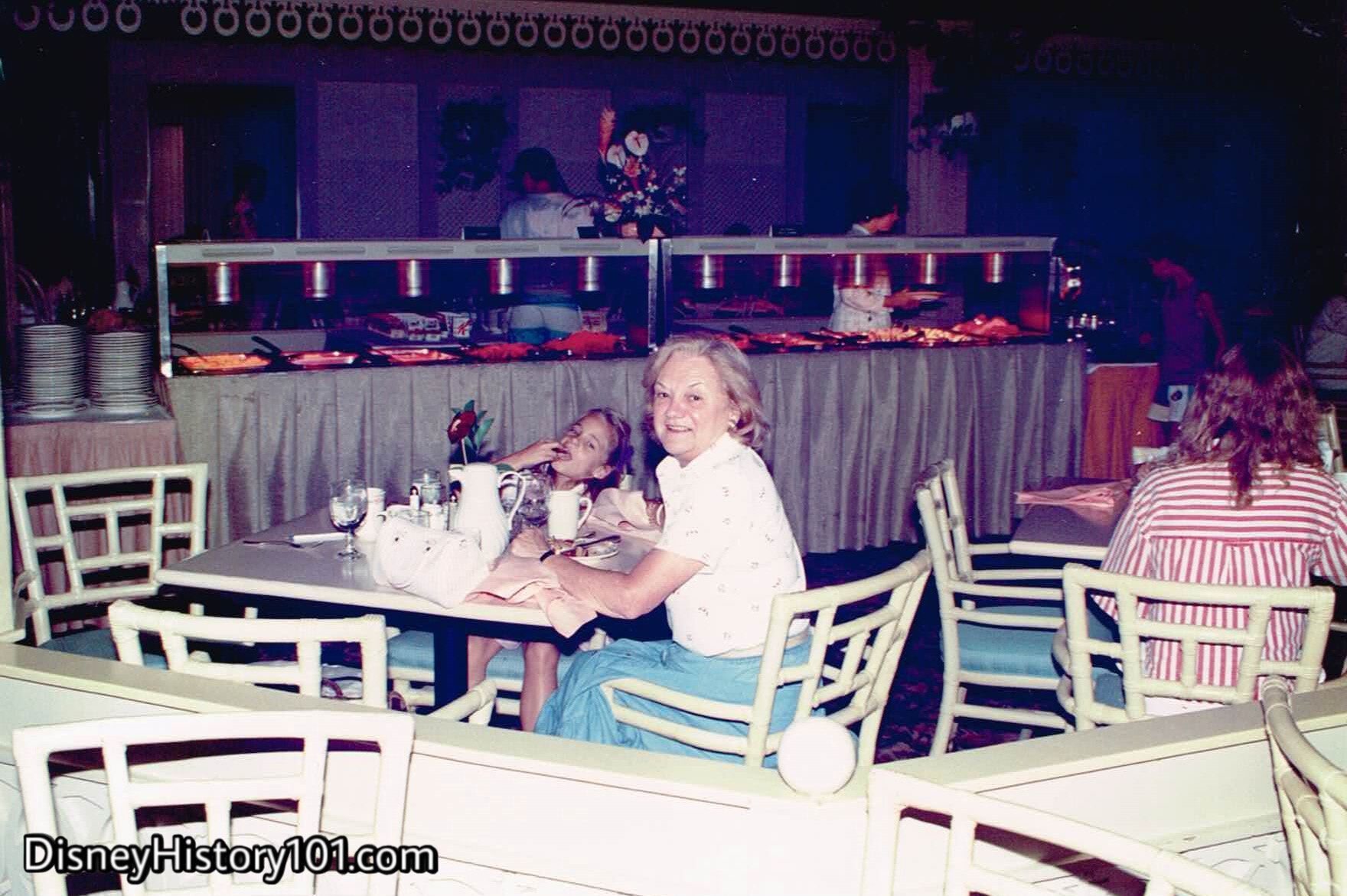
Before Ohana (with its Ohana Character Breakfasts) this was the sight of the Papeete Bay Verandah Dining Room at the Polynesian Resort Village. Beneath the circling paddle fans, the dining room accommodated a maximum of 306 persons and provided a grand view of the Marina and Lagoon from Bay View Terrace on the second floor.
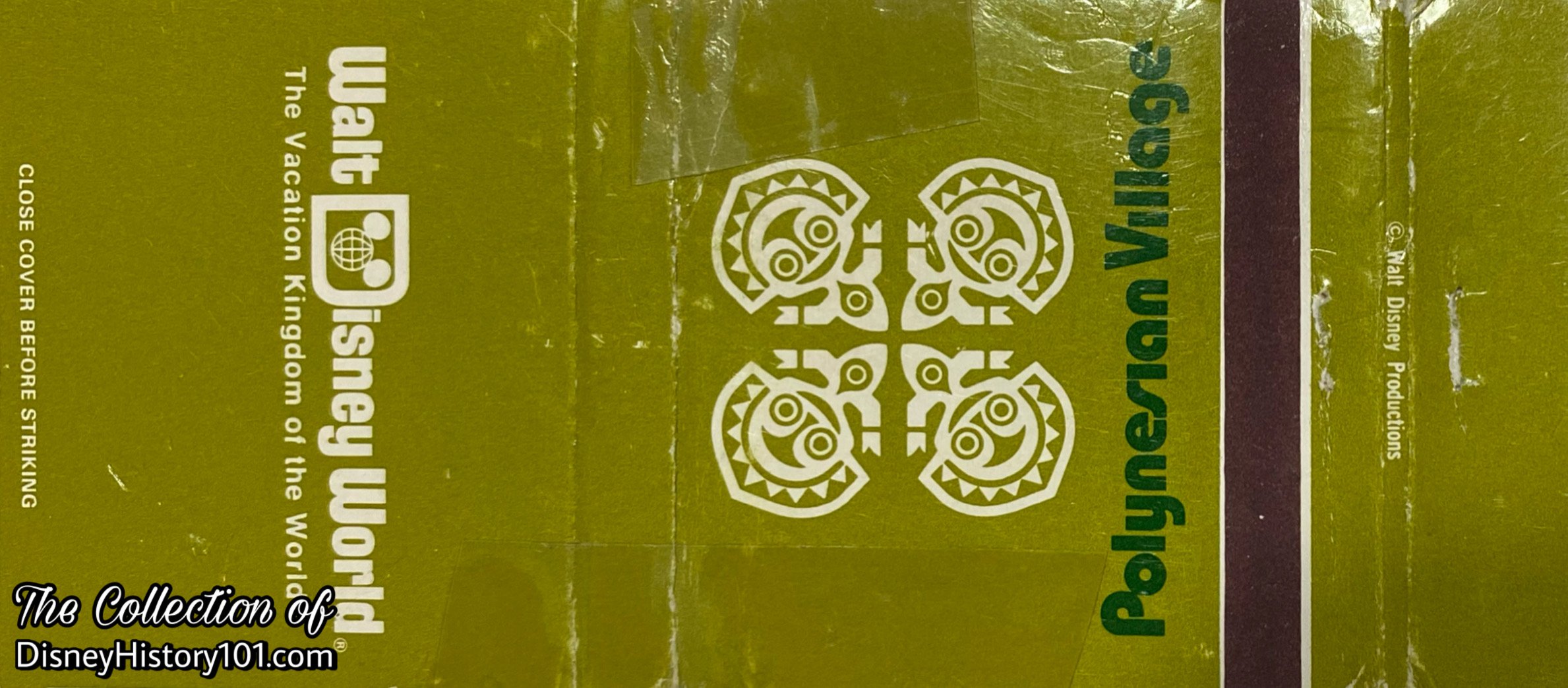

In the Garden/Pool area, Barefoot Snack Bar offered hamburgers, hot dogs, and soft drinks. Barefoot Bar had a variety of traditional and exotic cocktails served poolside.
By 1984, a number of services were offered at Disney’s Polynesian Village Resort. The Ali Nui Barber Shop offered men's hair stylings, razor cuts, shampoos, shaves and facials. The Pretty Wahine Beauty Shop offered style cuts, shampoos, coloring, manicures and wig setting. Each shop was open from 9 a.m.-5:30 p.m. (Closed Sundays); Appointments were suggested.
News from Civilization had magazines, newspapers, souvenirs, and tobacco. Village Gifts & Sundries carried sundries, souvenirs, decorative gifts, and FTD florist. Trader Jack's Grog Hut had liquor and gourmet items.
The Vacation Kingdom offered many ways to recreate - swimming, sailing, water-skiing, recreational watercraft, scuba & skin-diving lessons, high-speed boat excursions, yacht cruises (scenic, dinner, cocktails), volleyball, badminton, “frisbee golf,” and a children's playground.
For golfers, there's a spacious shoreline putting green and, nearby, the championship courses.
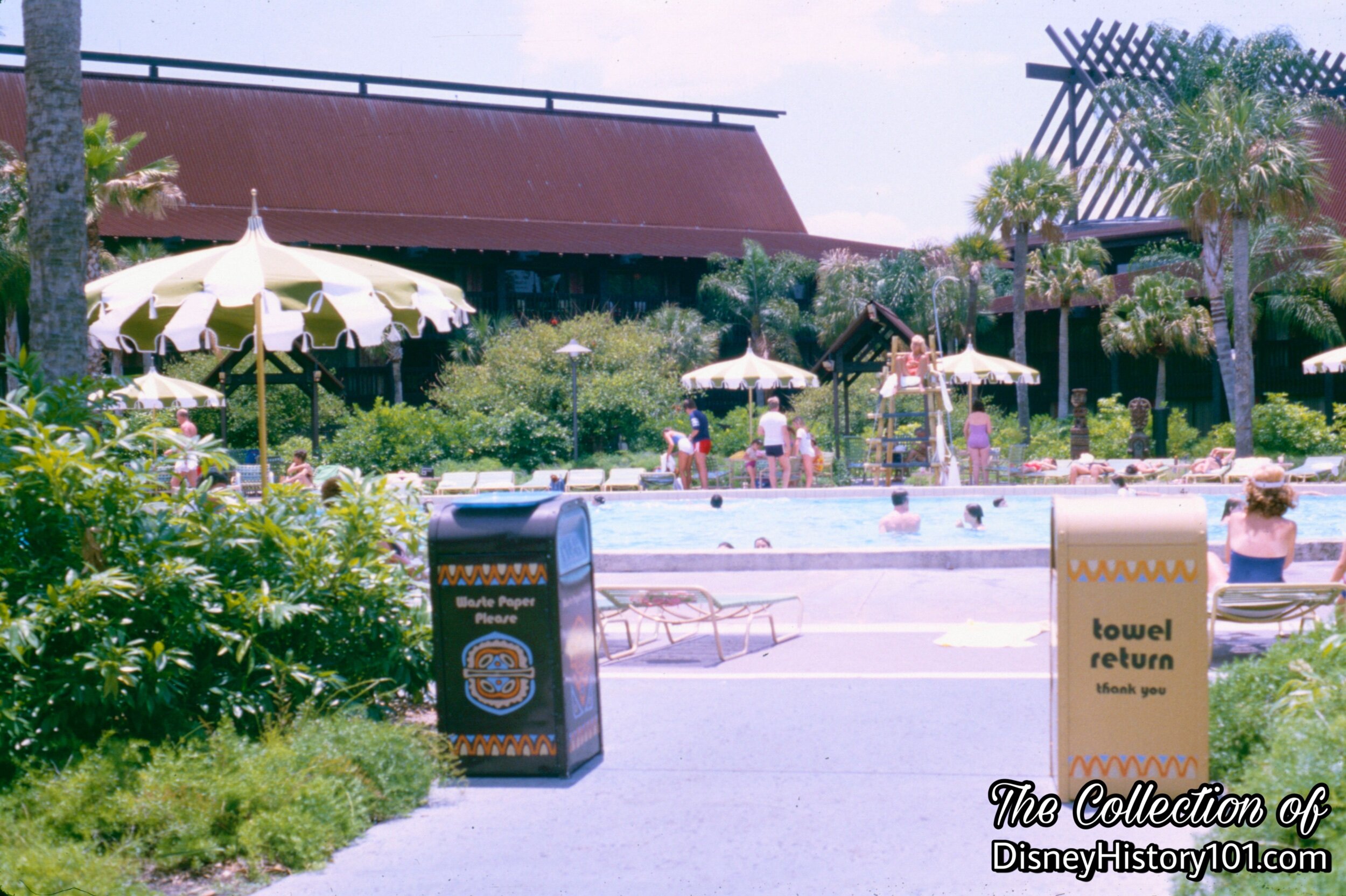
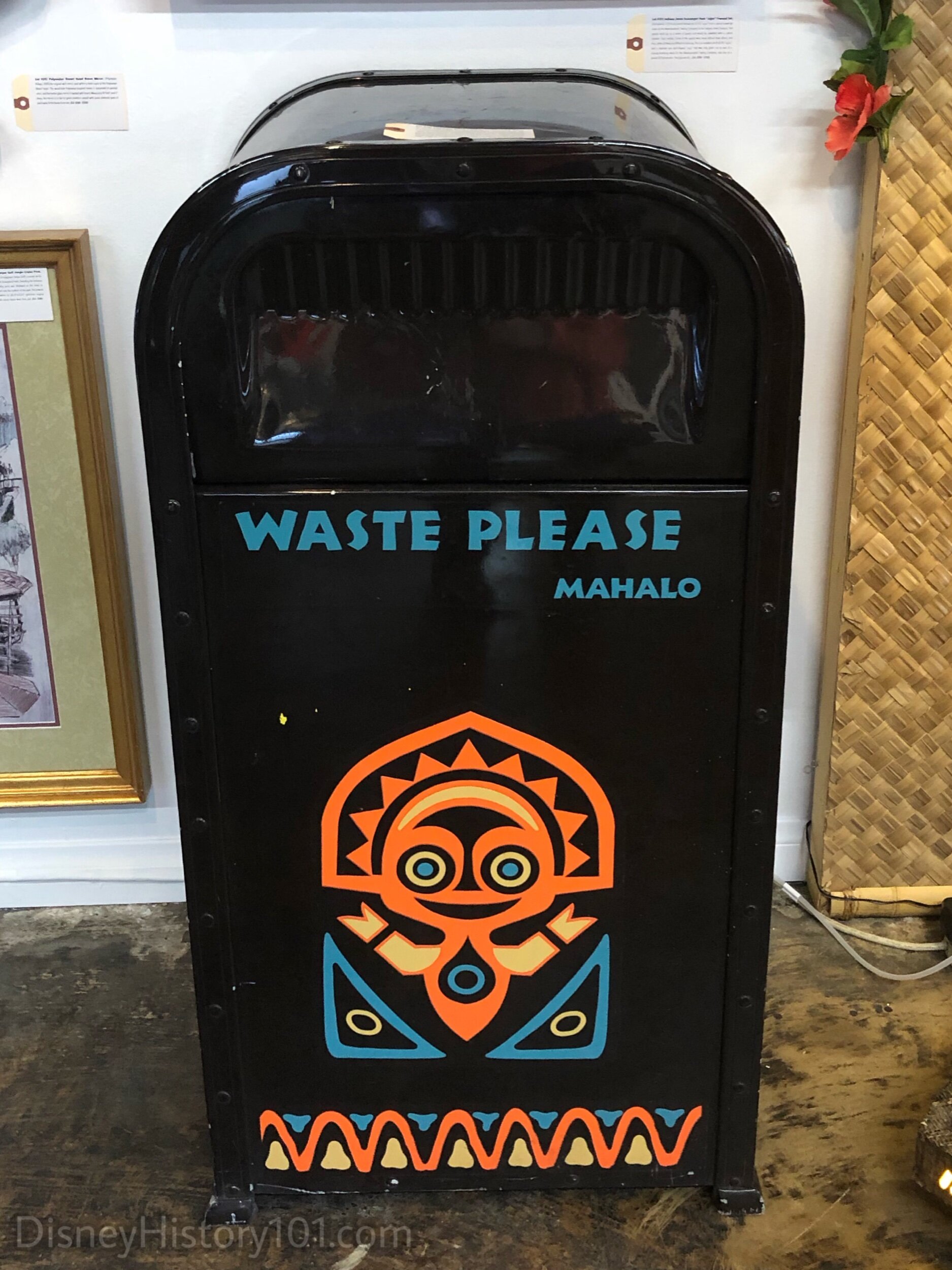
You never know what sort of artifacts will turn up at Van Eaton Galleries in Sherman Oaks, California. These original Walt Disney World Polynesian Resort trashcans feature the iconic Maui ”the god of vacations” as envisioned by LeRoy Schmaltz of Oceanic Arts in Whittier, California. You may recollect that Rob and LeRoy’s mentor (Bob Carter) had provided Disney Parks with exotic hand-crafted props since the 1950s. The duo went on to create numerous “Adventurous” props that have been used in Disneyland (USA), the Magic Kingdom, and Tokyo Disney Sea. When the Polynesian Resort was being constructed, LeRoy was given creative license with the design, and that design ended up becoming the resort’s mascot to this day!
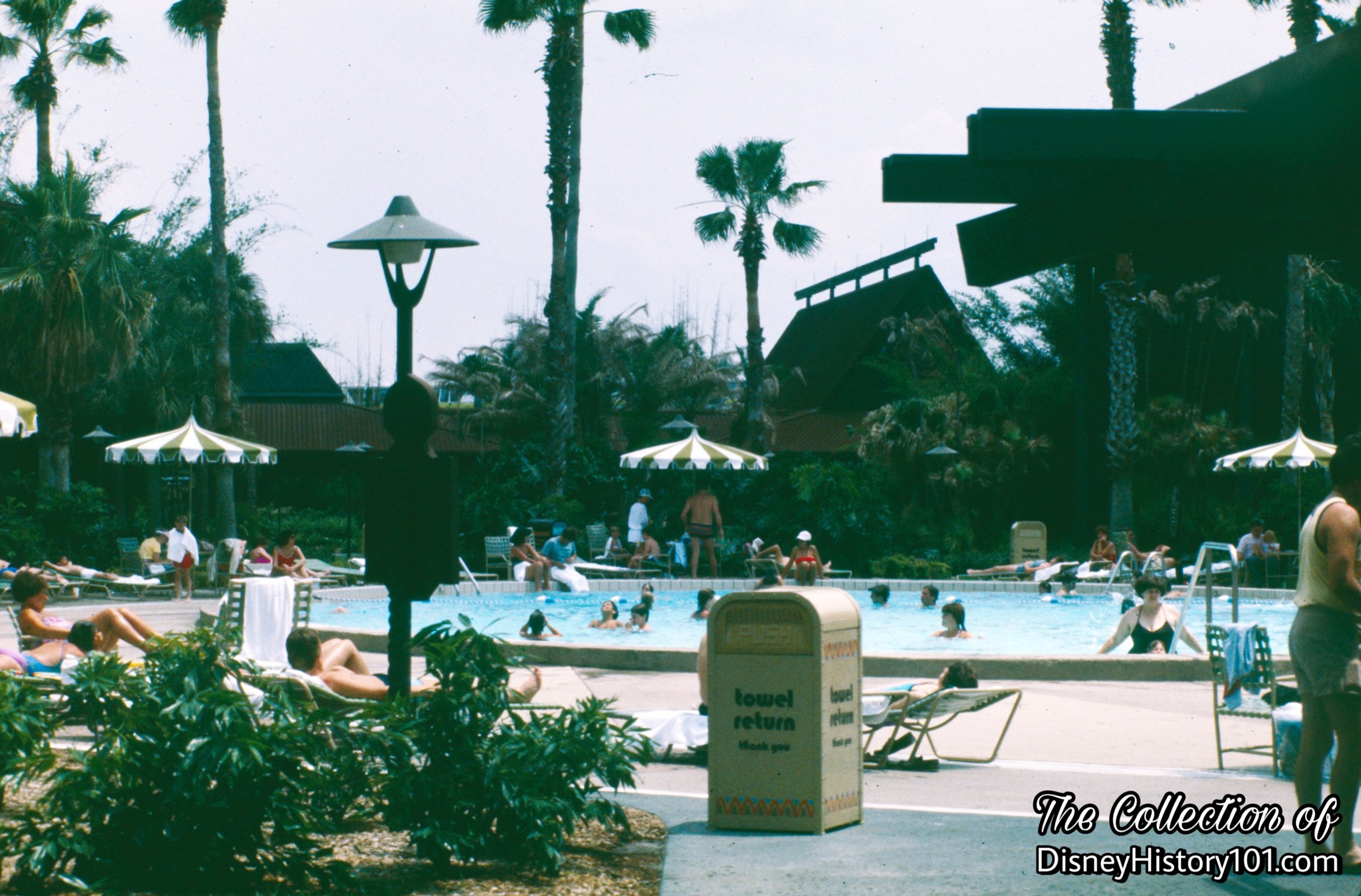
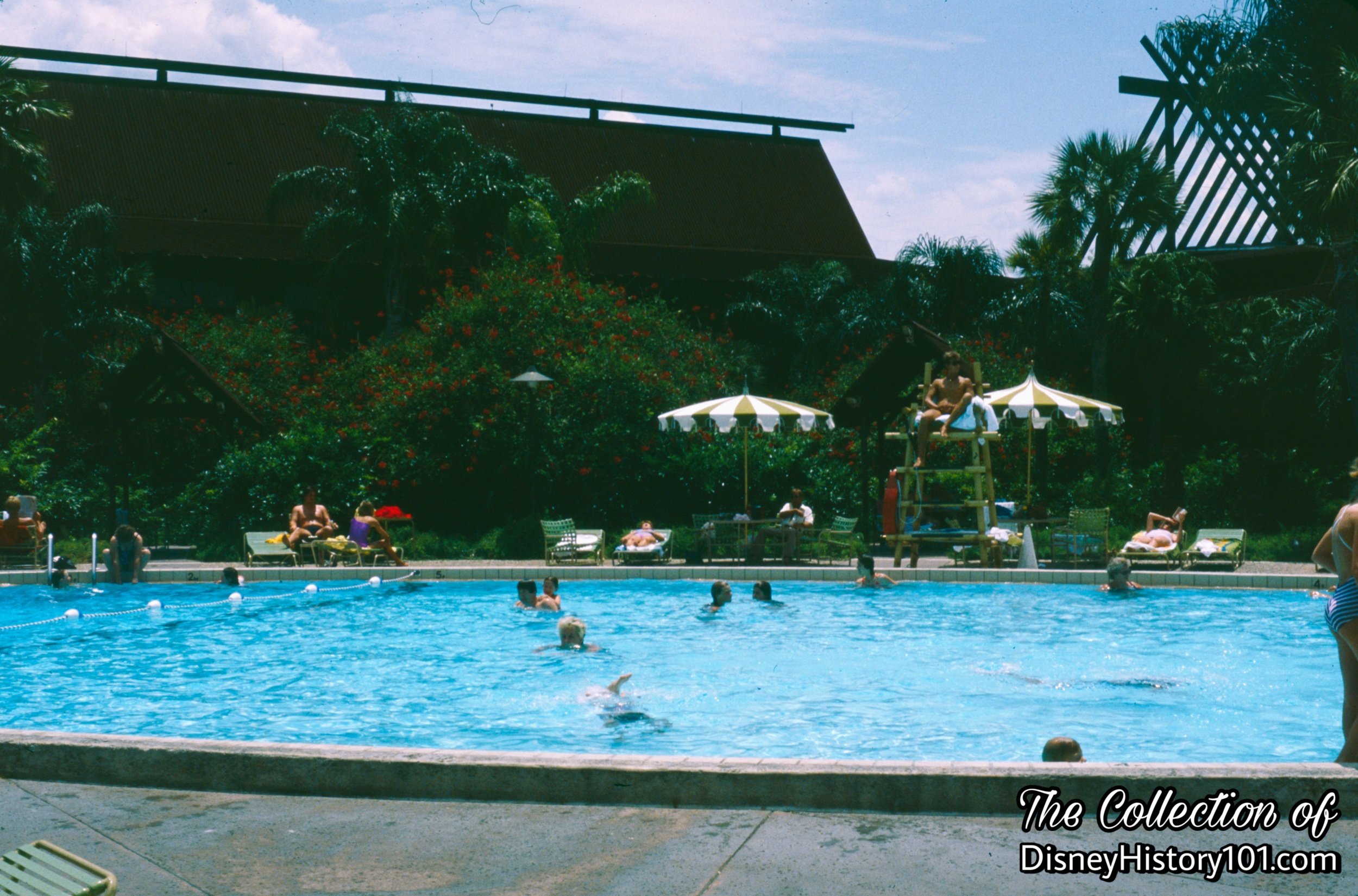
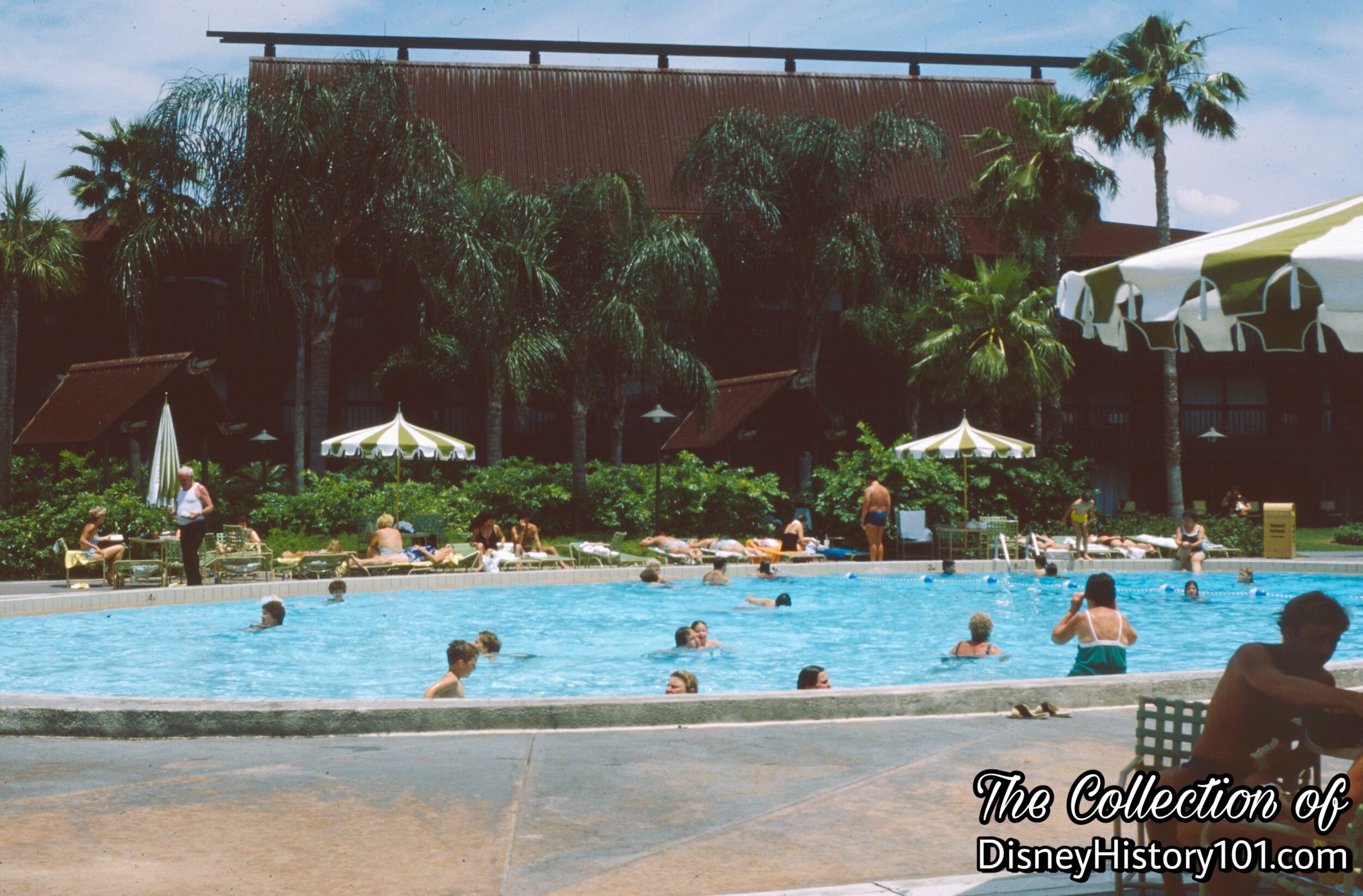
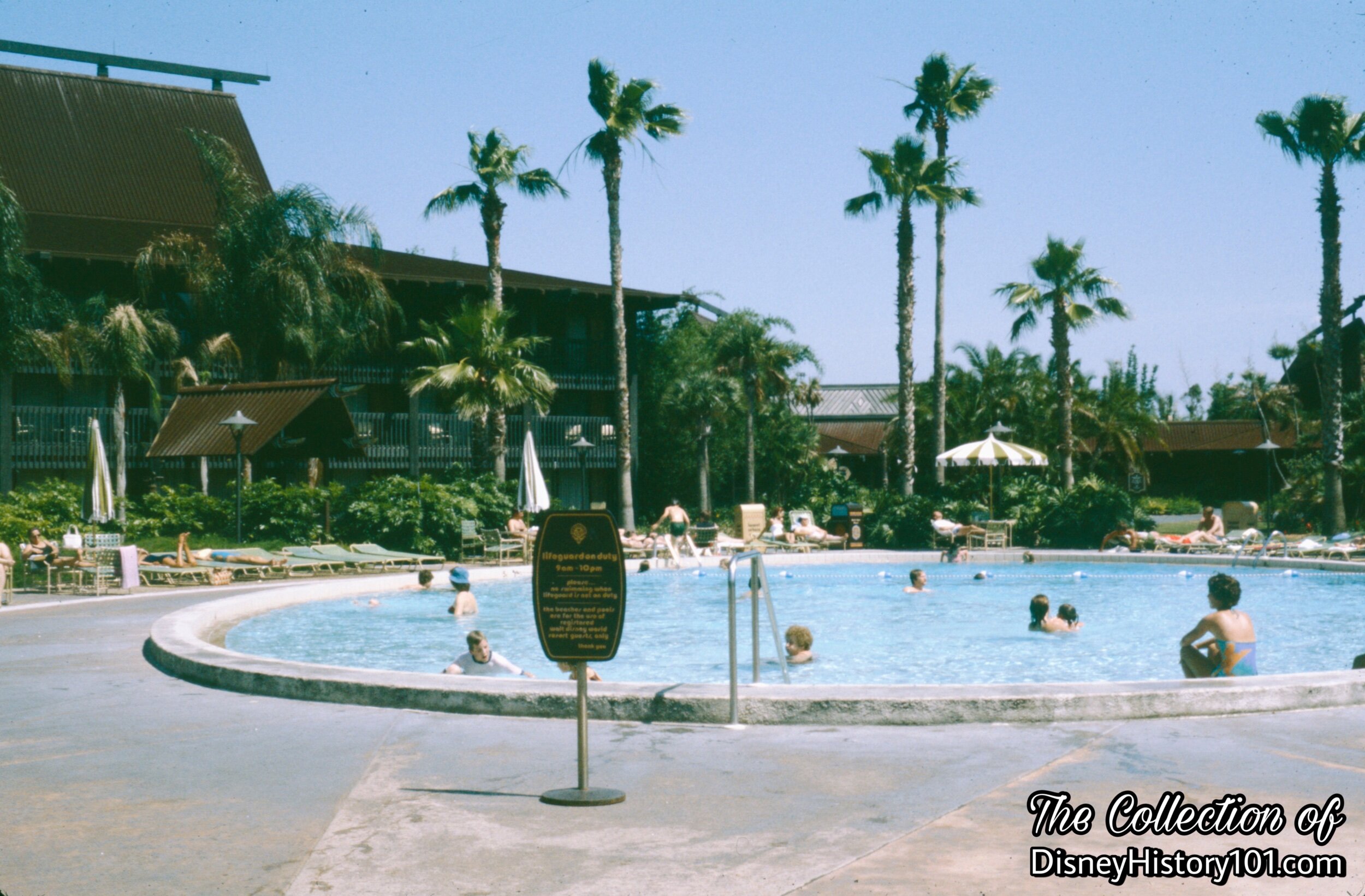
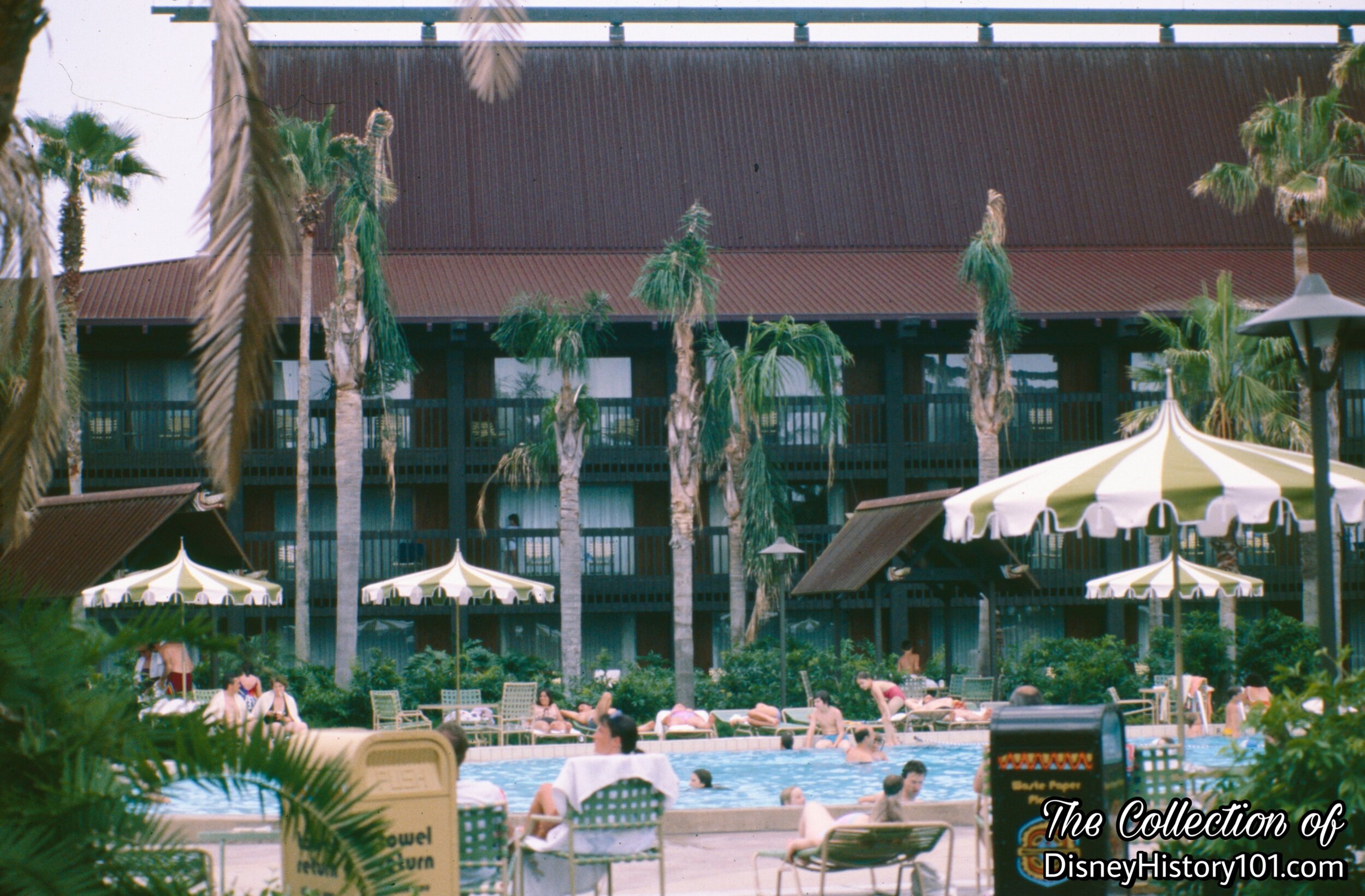
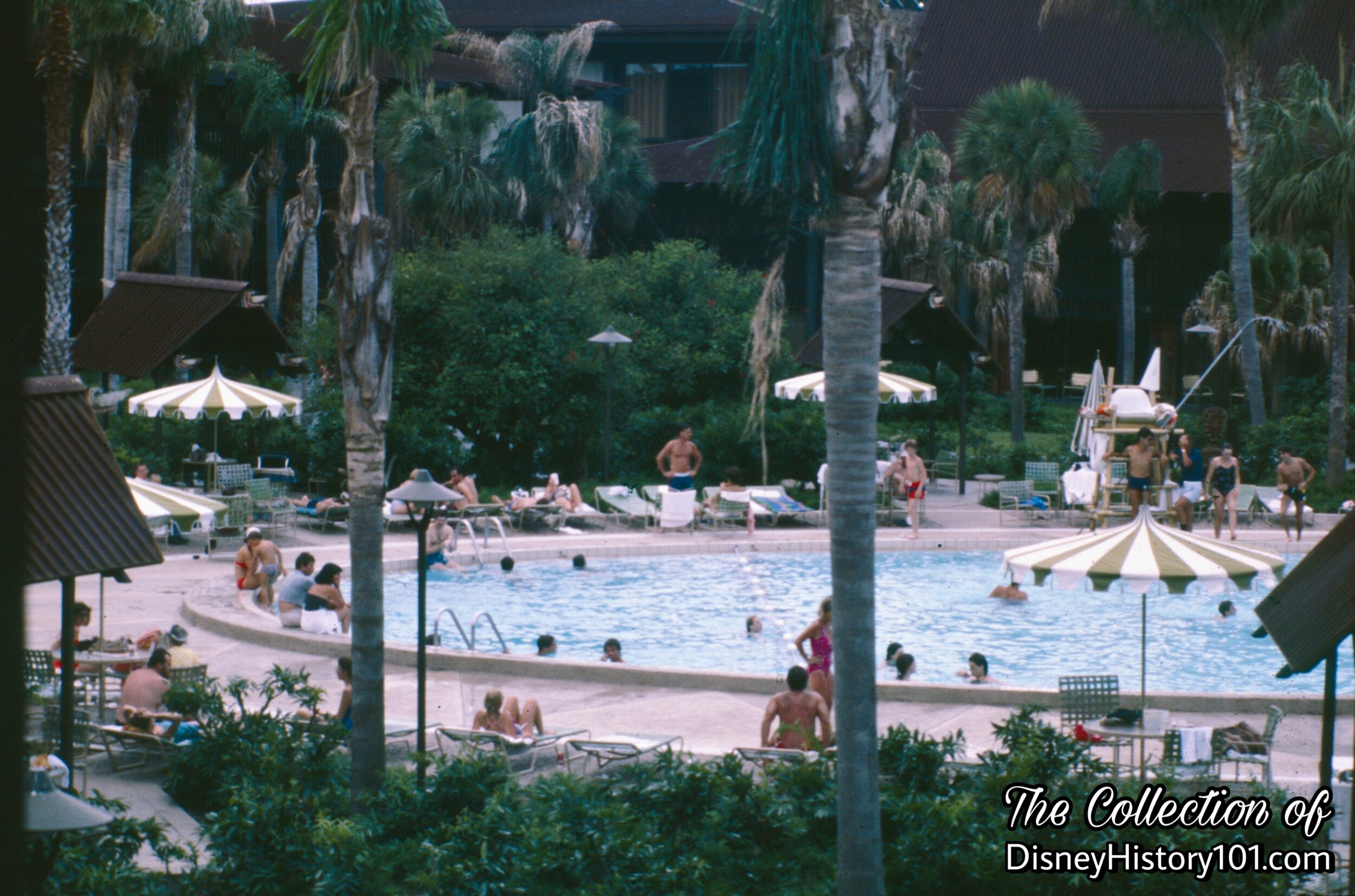
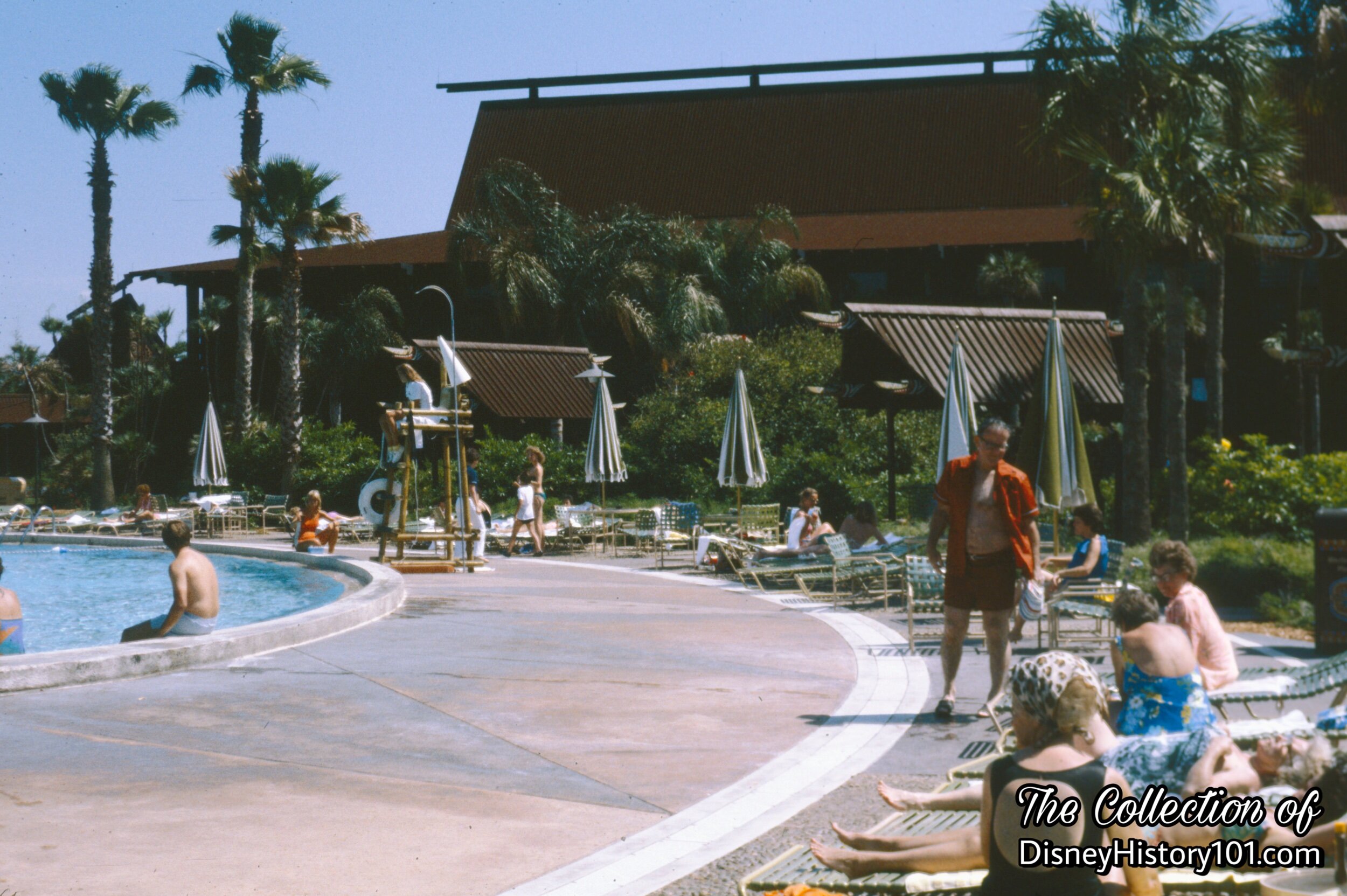
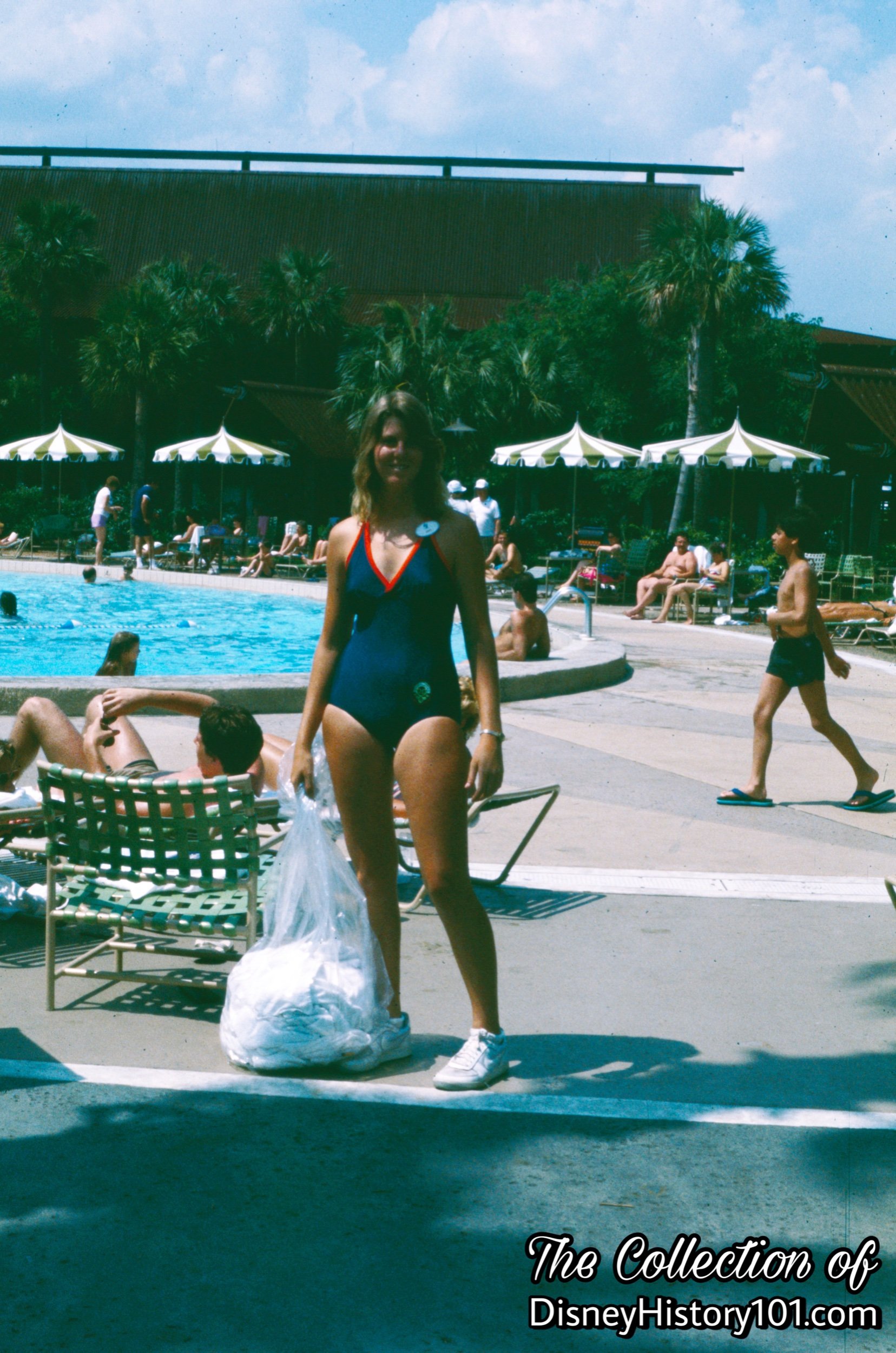
During 1975, Walt Disney World asked all employees to discontinue using some of their guest recreation facilities (resort swimming pools, beaches and lakes) during certain peak attendance periods. Cast members were invited to utilize the facilities during non-peak periods, but during traditional heavy attendance times such as summer and holidays, they were asked to discontinue using them due to guest convenience and safety.
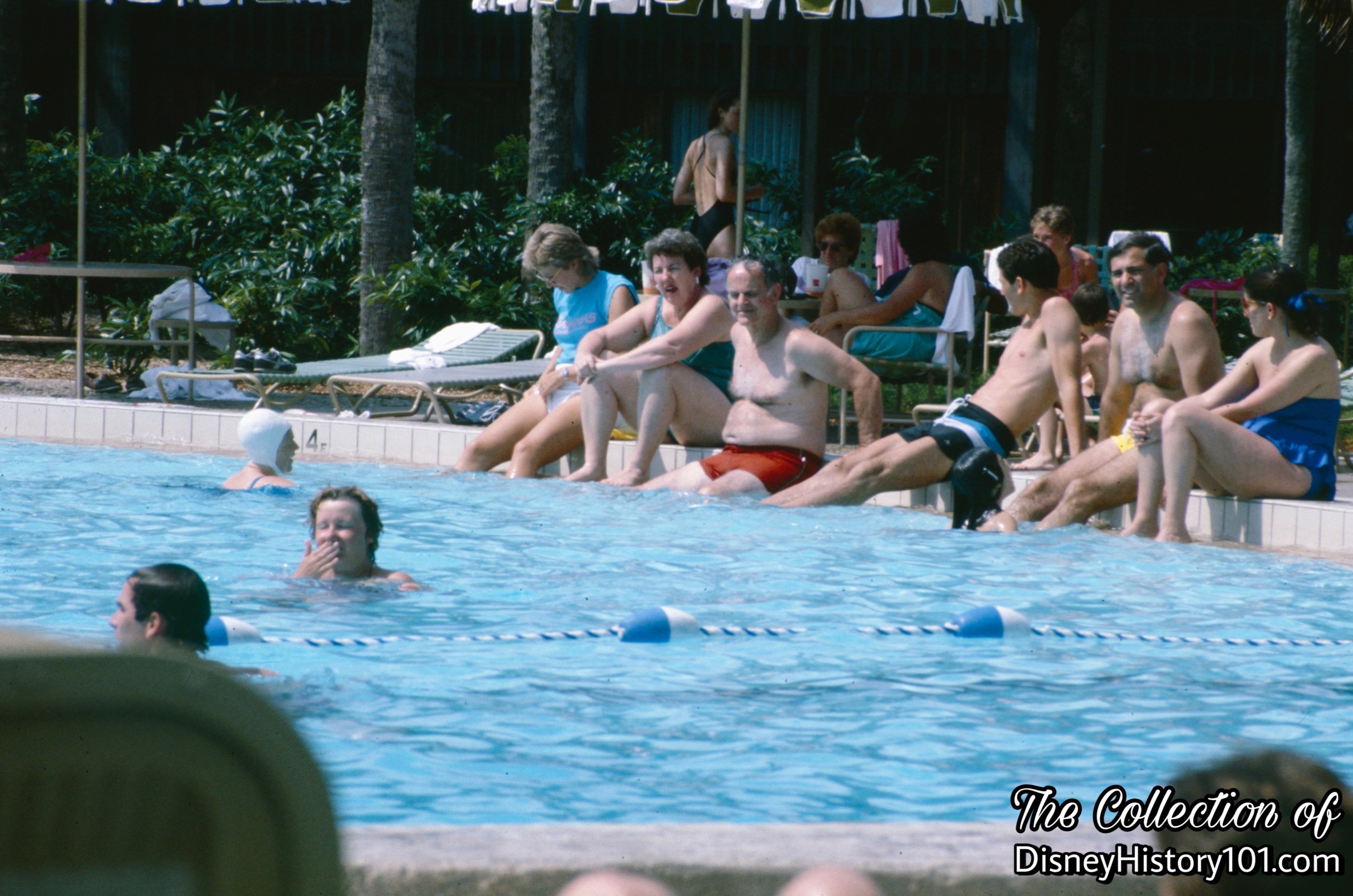
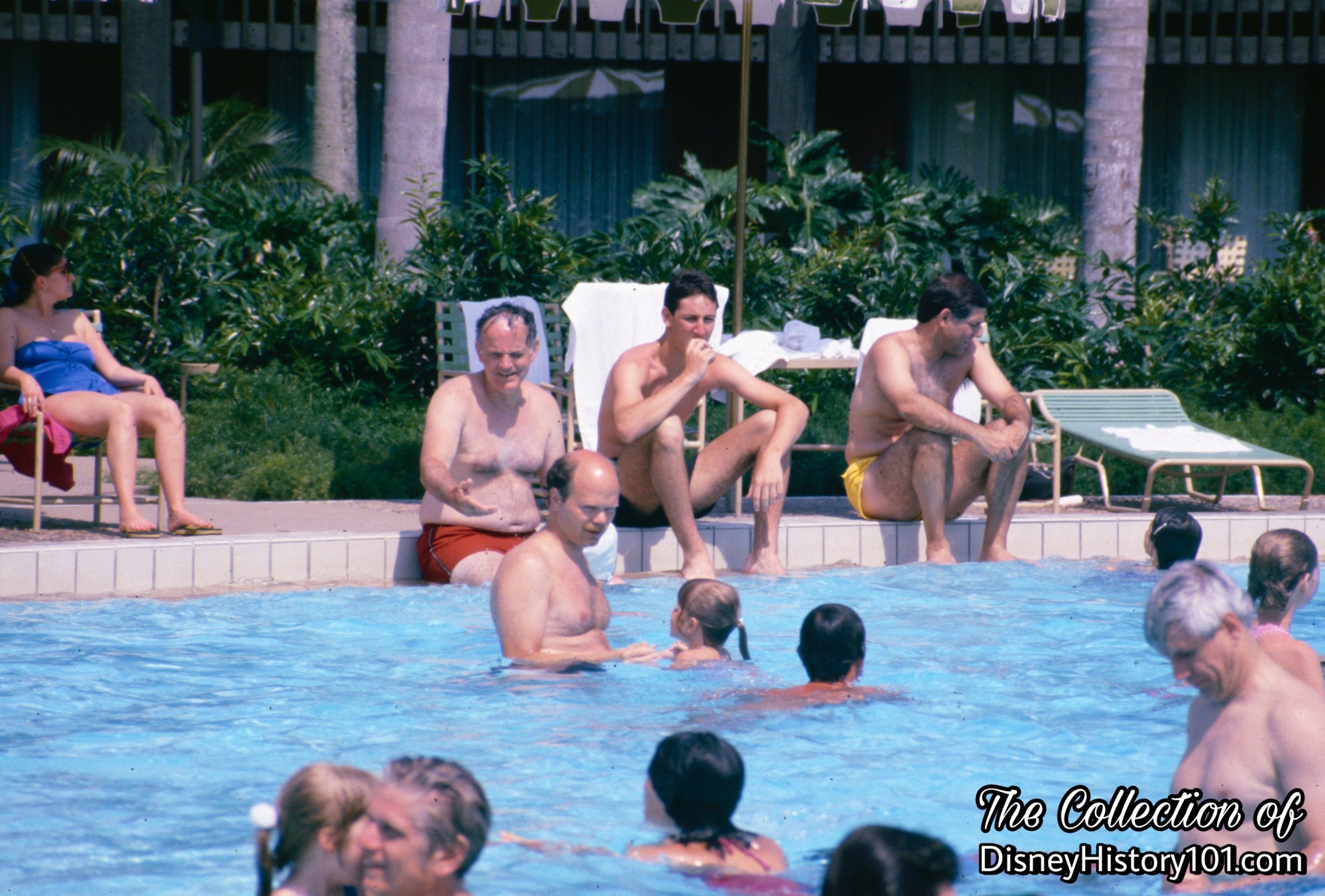
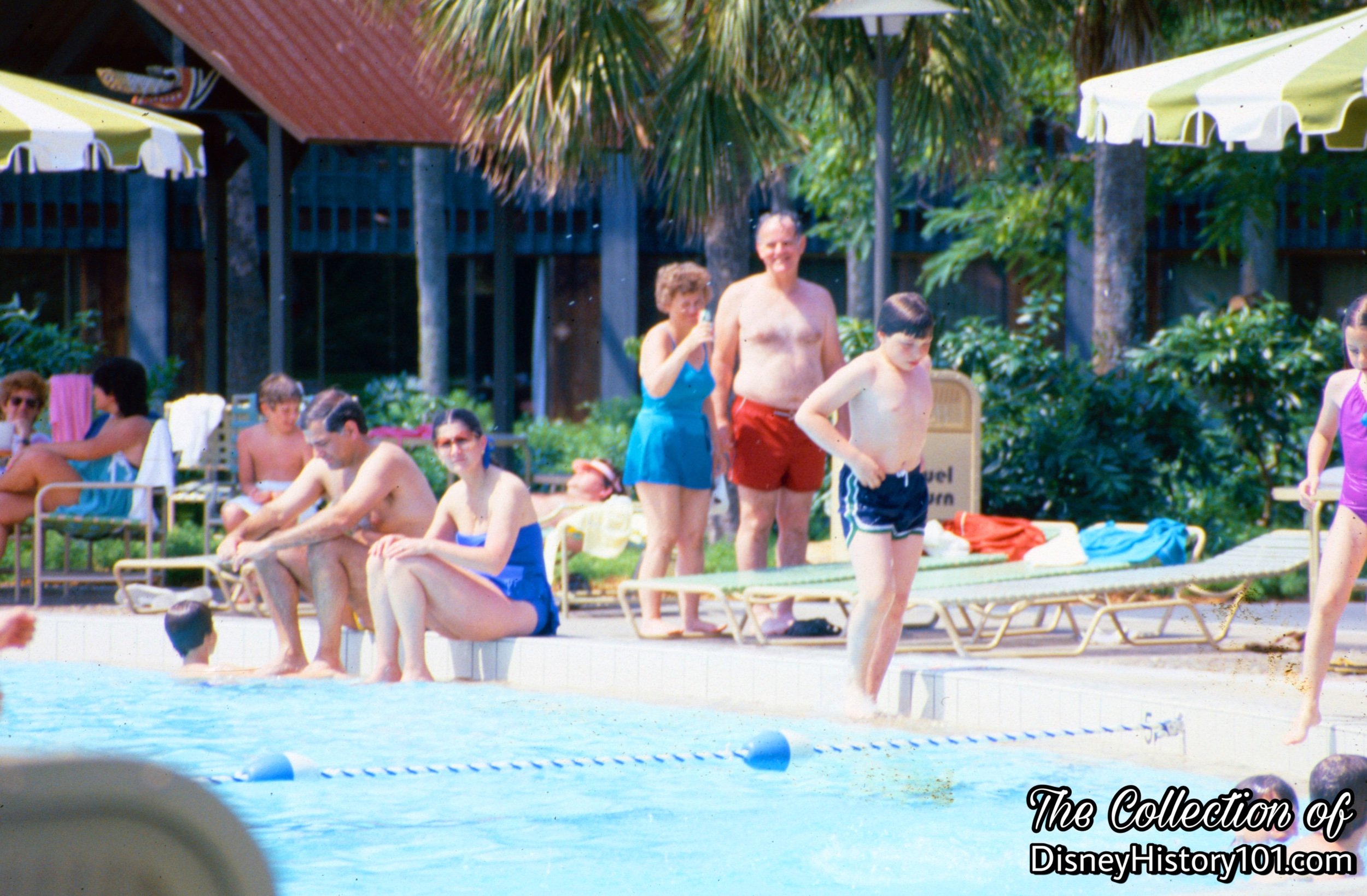
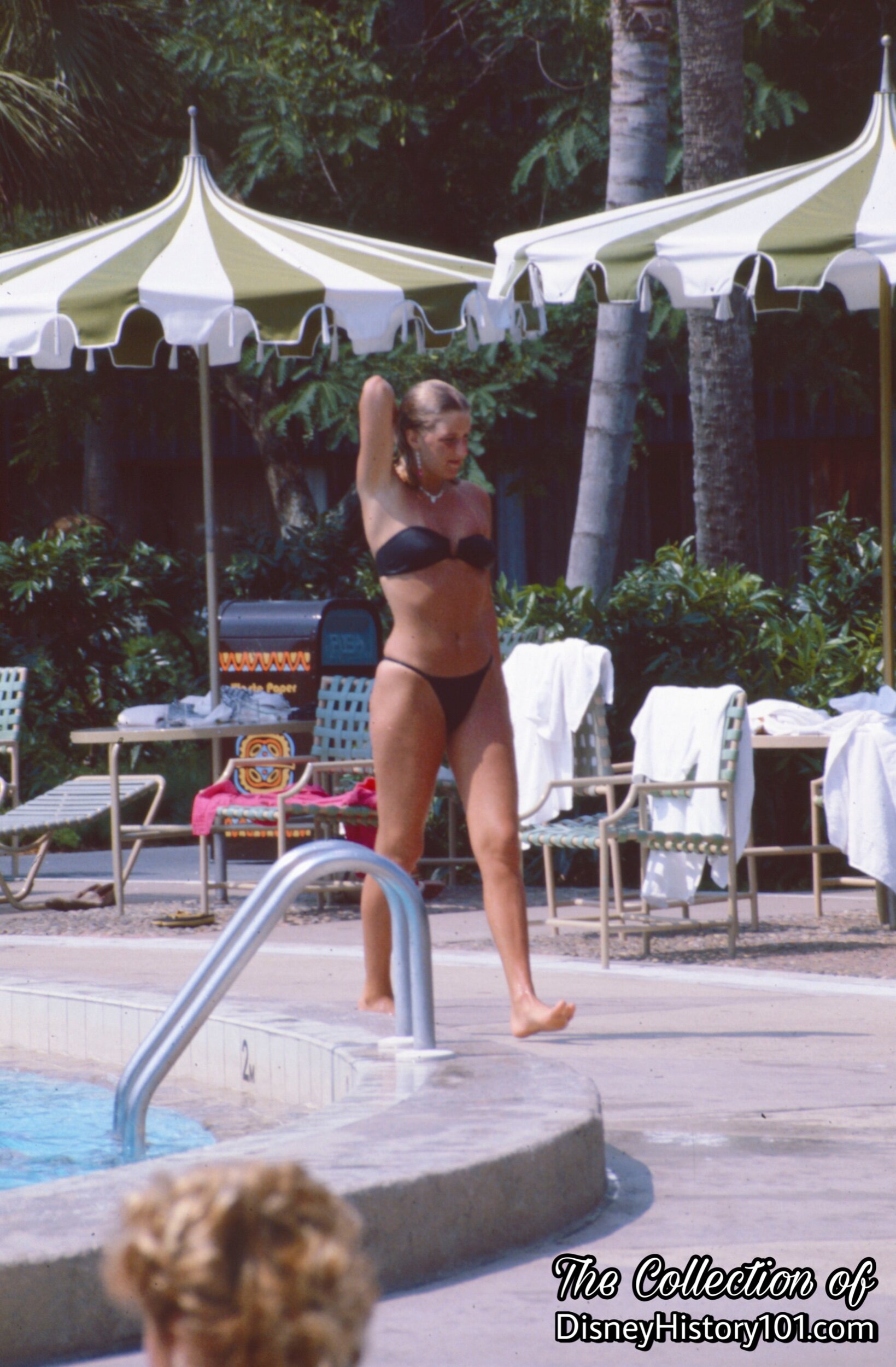
Some Hotel Shops like offered bathing suits (in children’s and adult sizes) for sale. Robinson Crusoe Esq. sold quality men's apparel, casual resort sportswear, swimwear, footwear and accessories. Polynesian Princess sold Quality women's apparel, colorful resort fashions, swimwear, footwear and colorful tropical accessories.
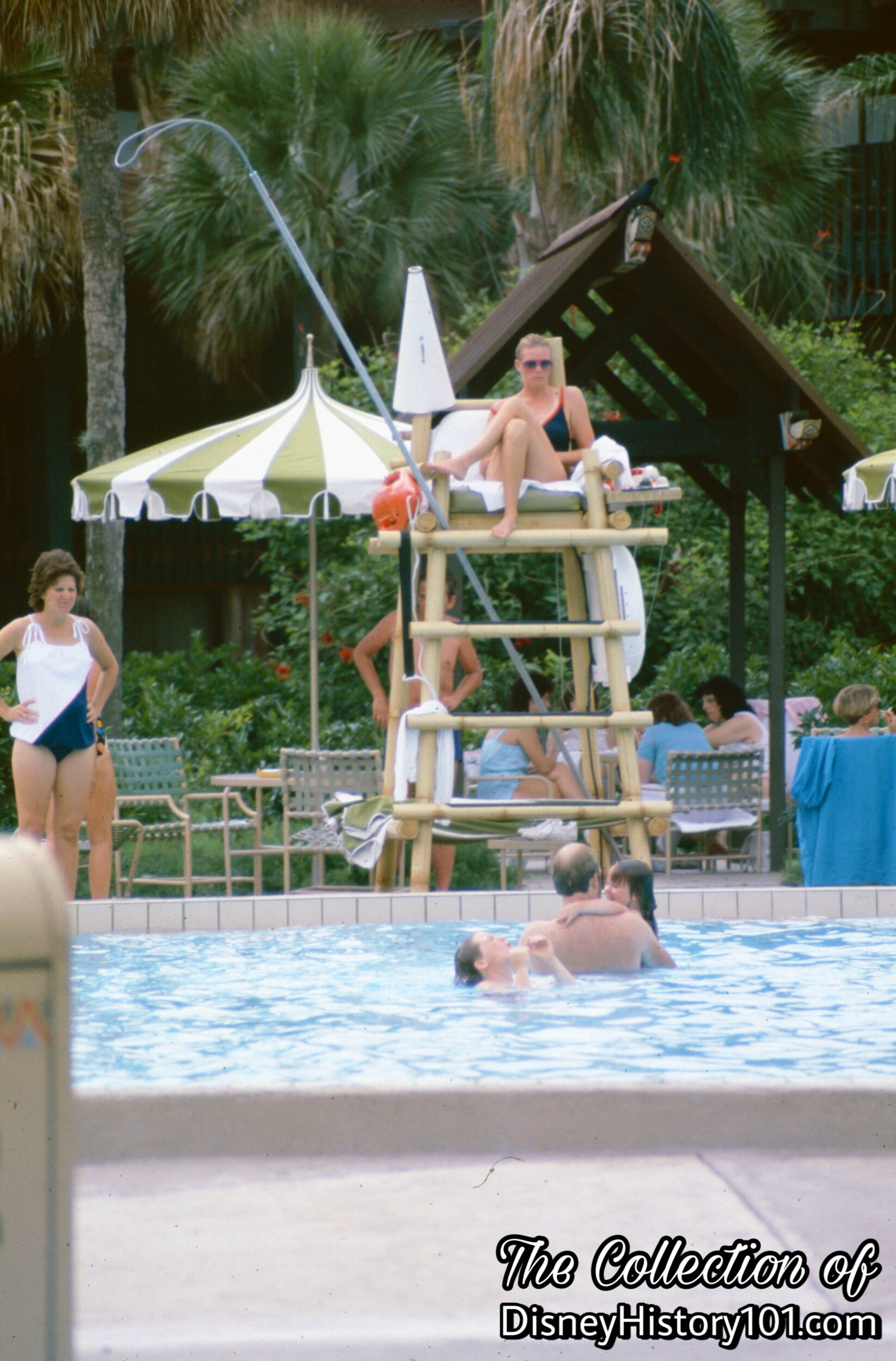
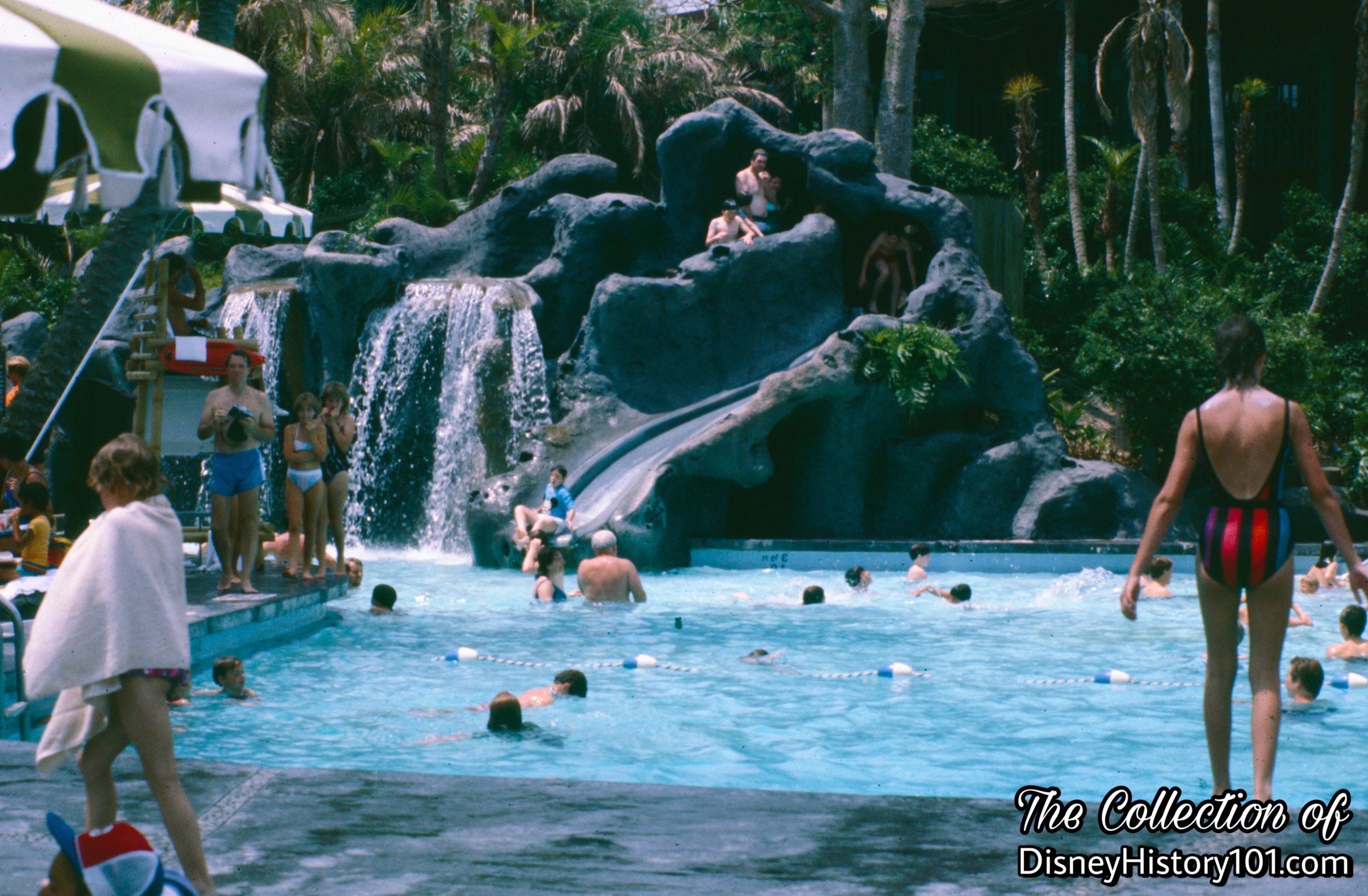
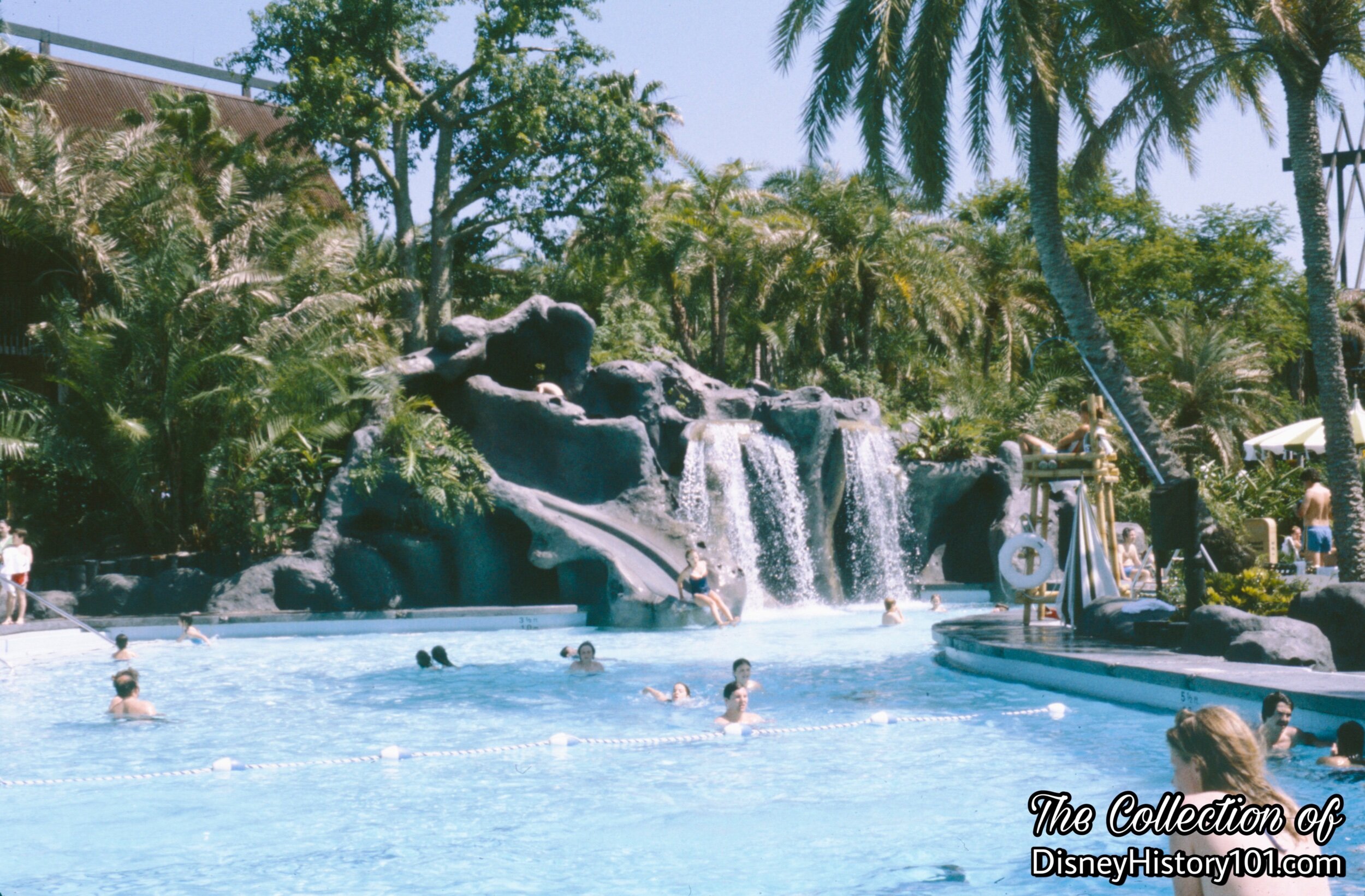
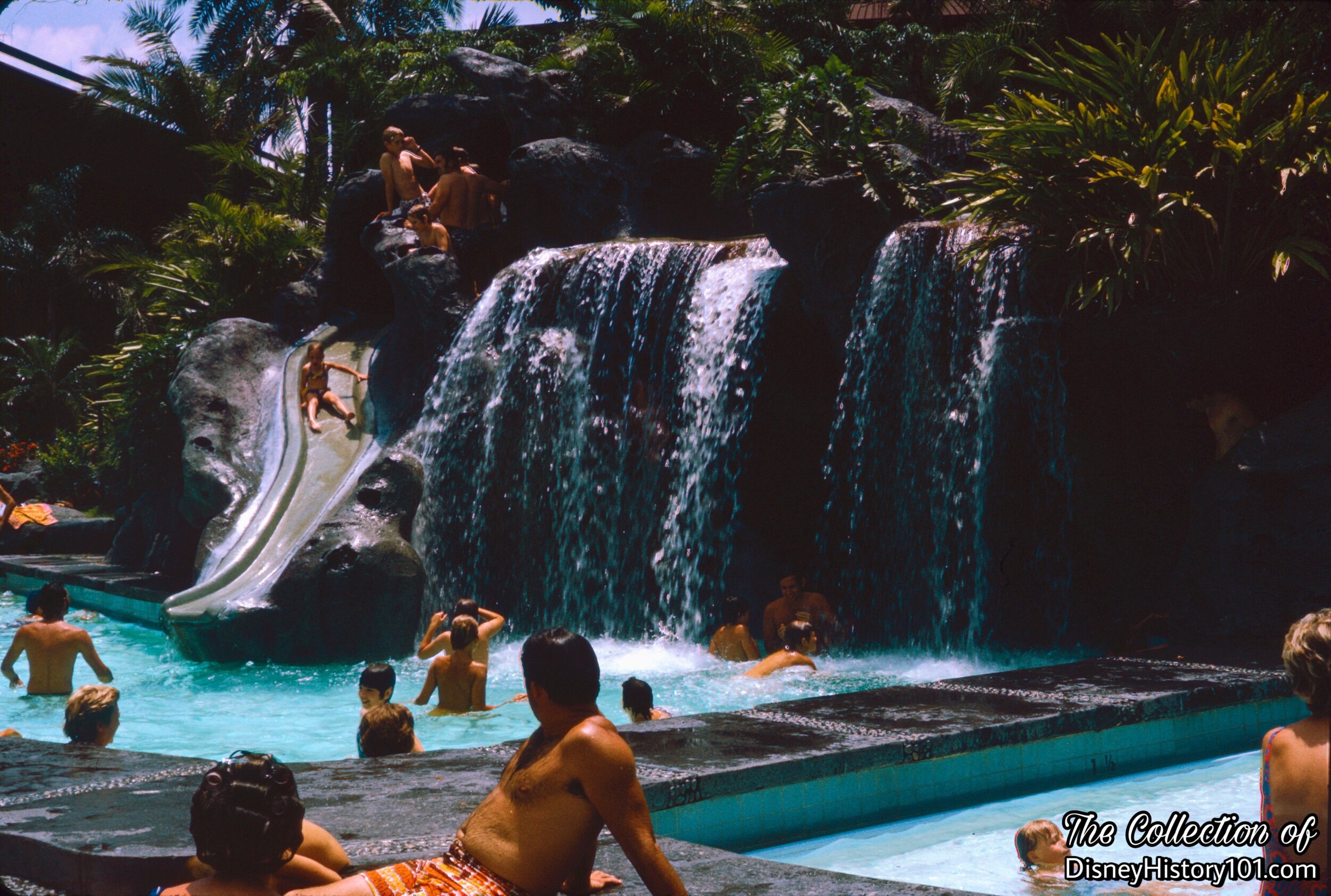
Near Tonga, Hawaii, Bora Bora, and the Outrigger Assembly House was the original Polynesian Village Lava Pool. It was a swimming pool that featured a waterfall and slide, with a wading pool nearby for small children. The Lava Pool received an extensive rehabilitation from 2014-2015 increasing the deck area to 35,000 square-feet and adding a children’s play area.
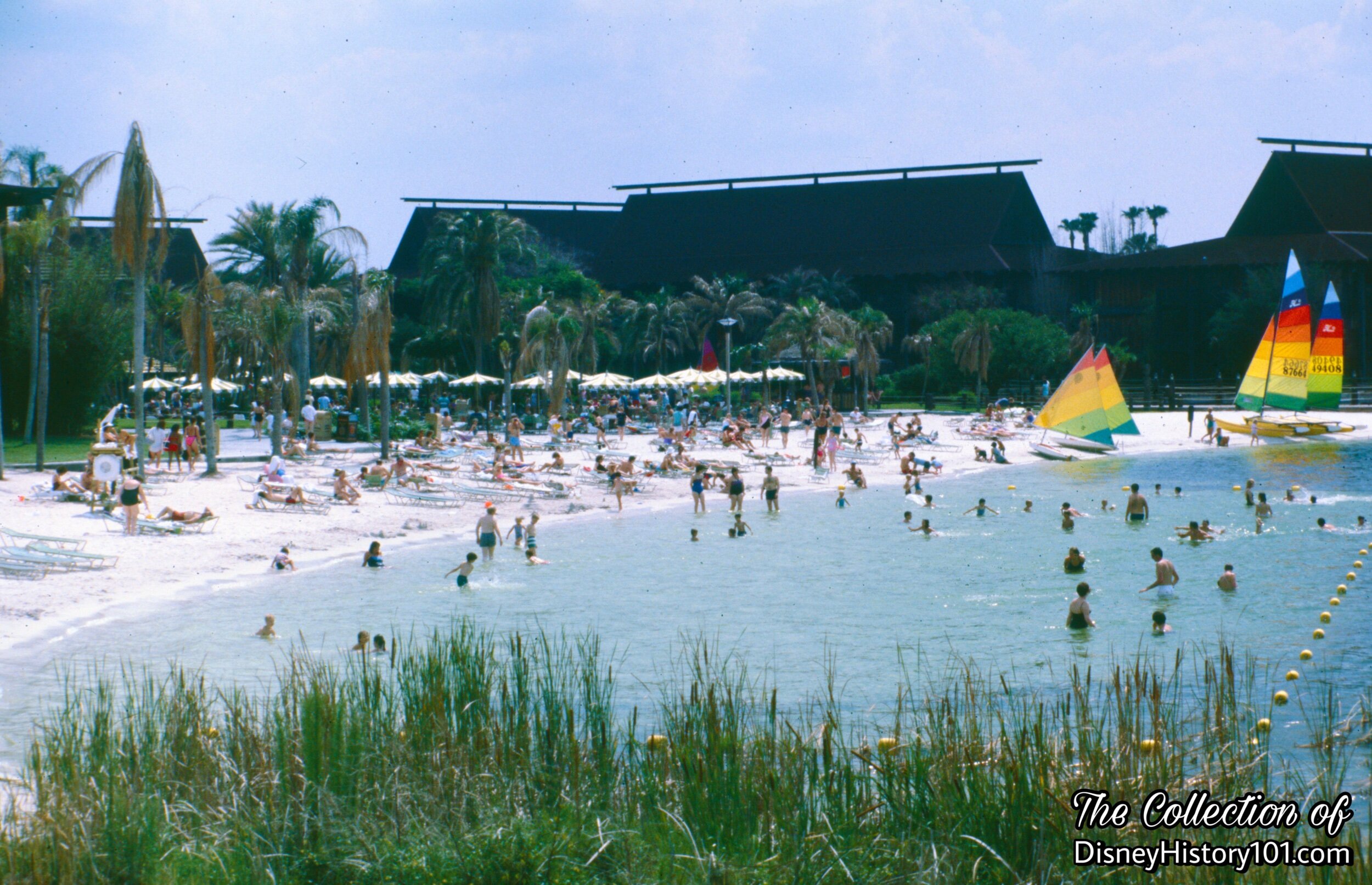
According to GAF Information Guides issued in 1973: “Along the Seven Seas Lagoon, the leisure-life of the Pacific Islands is captured at the Polynesian Village.”
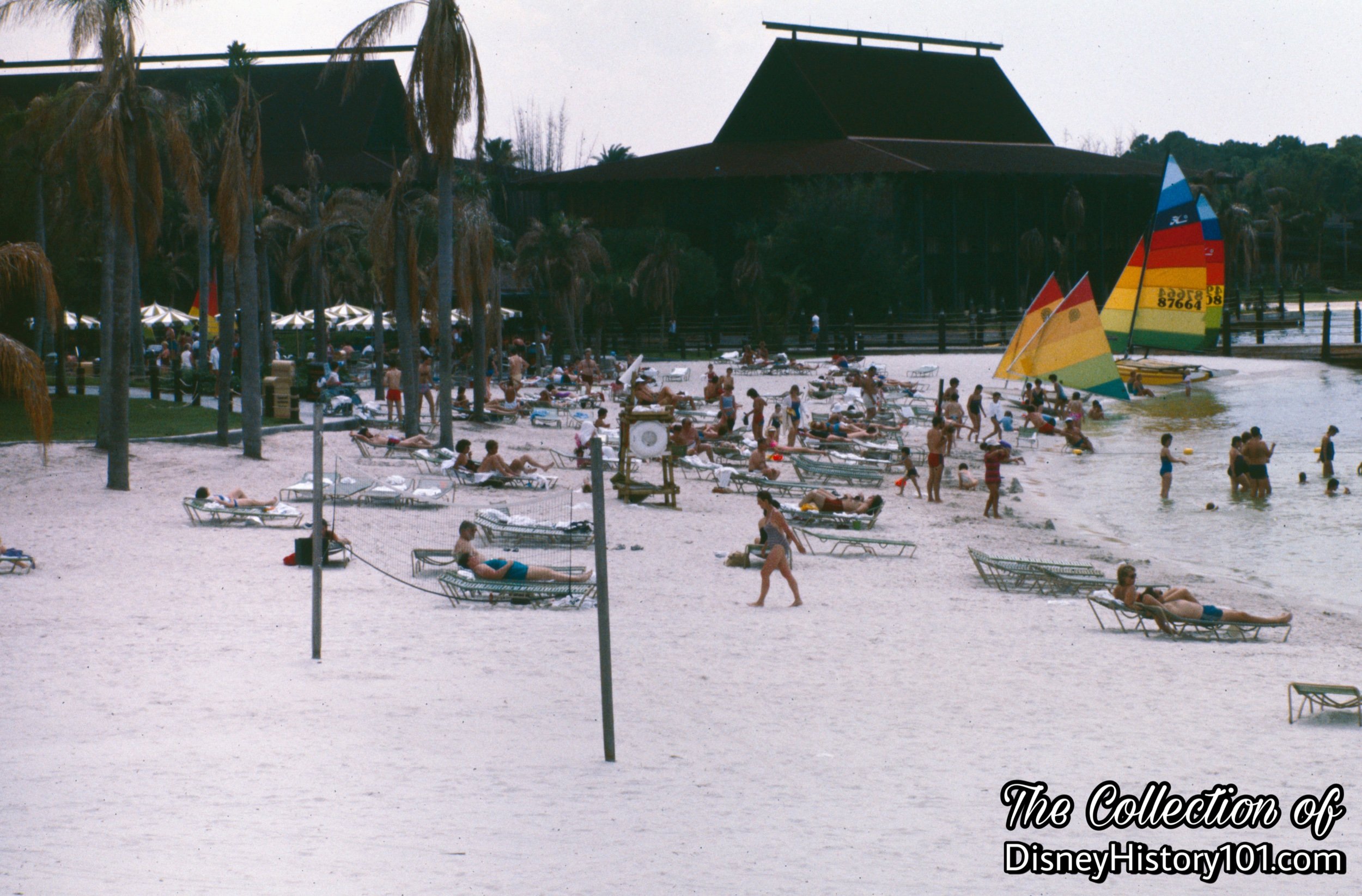
In 1971, Walt Disney World featured four stretches of beach 1-2 miles long. Here, guests could swim, water ski, operate recreational watercraft, and play volleyball. Not far away was a children's playground. Soon, the Ten Year Master Plan included a new restaurant to open on Surfrider Beach at the Polynesian Village.
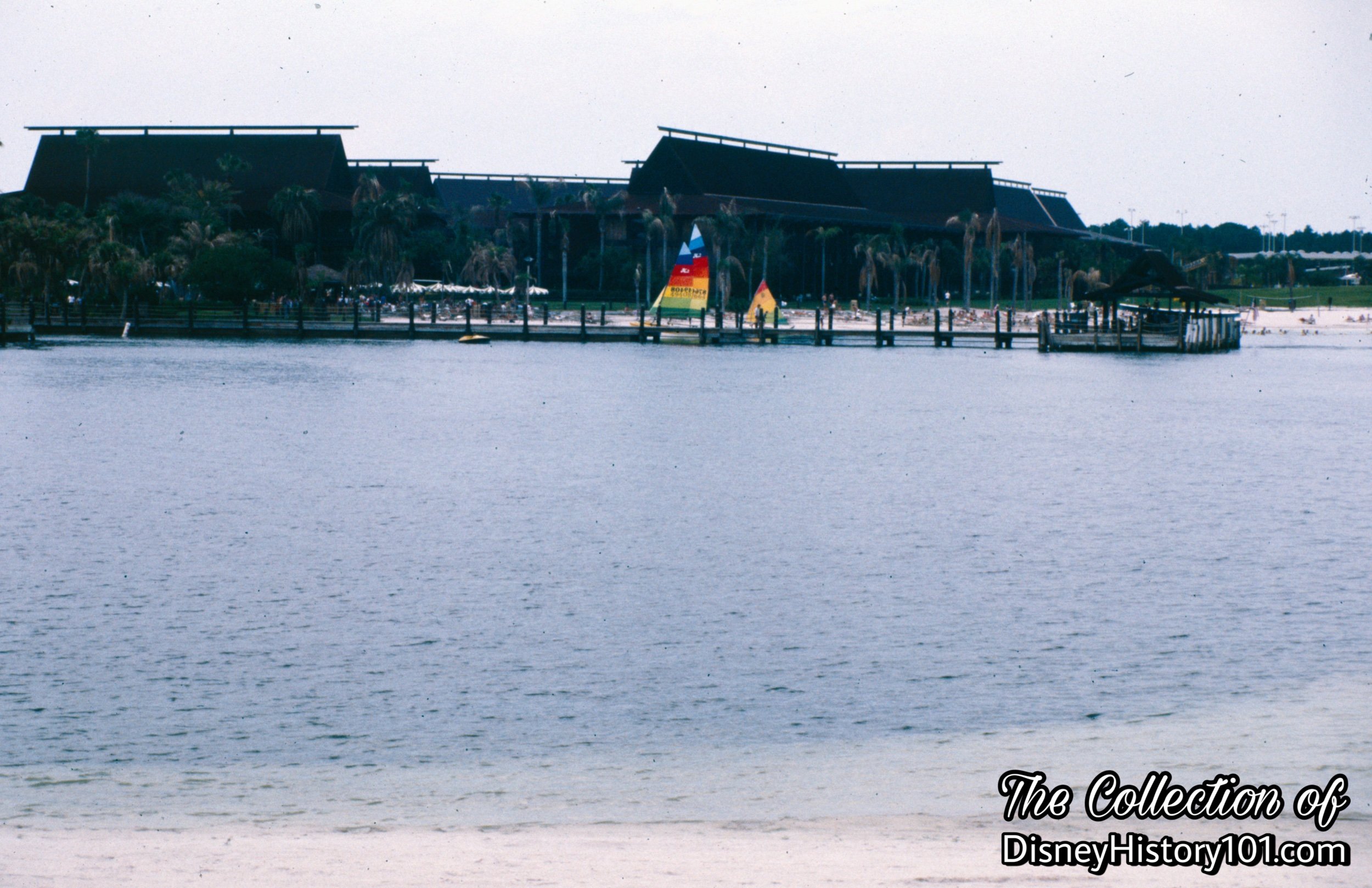
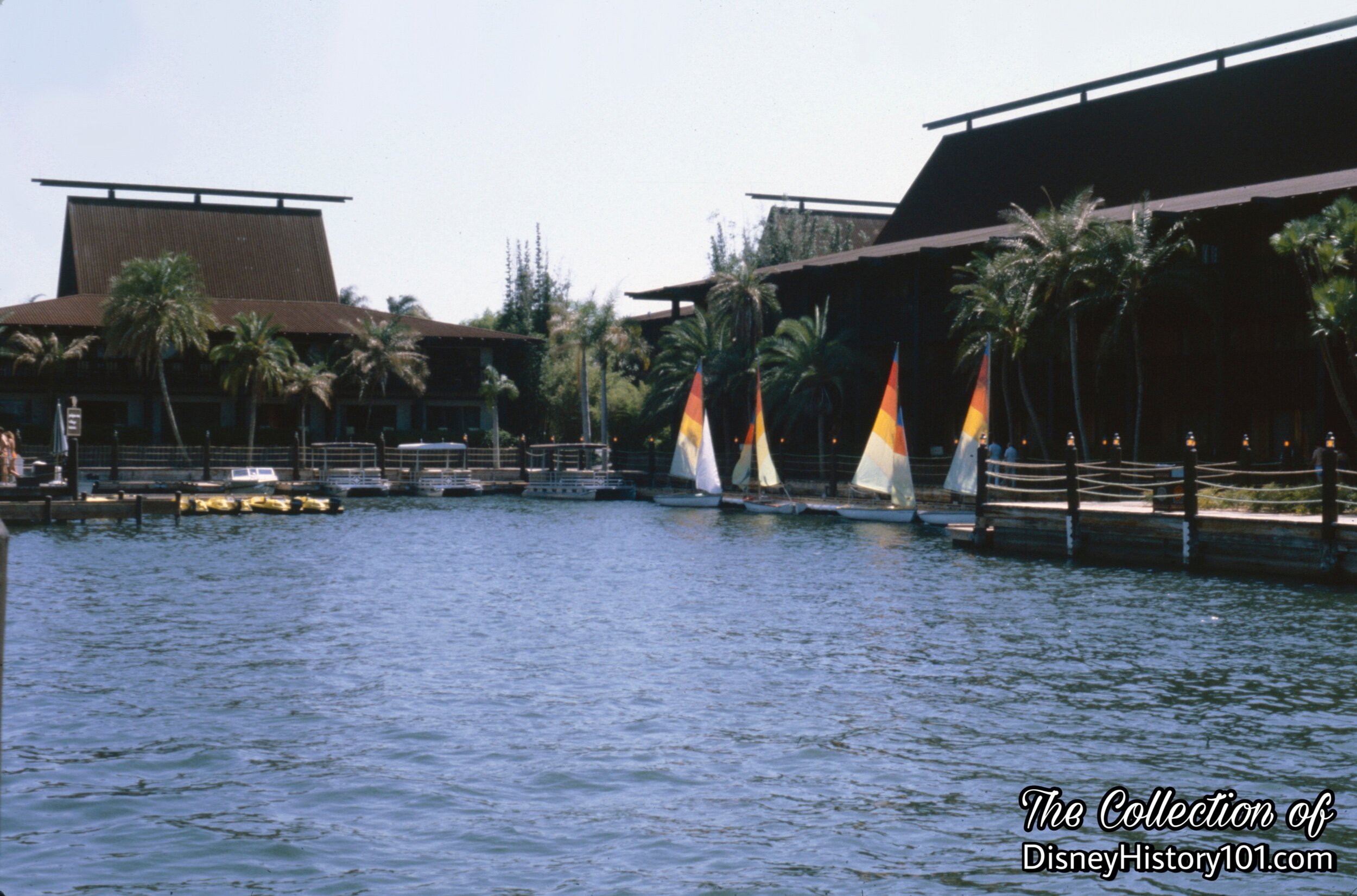
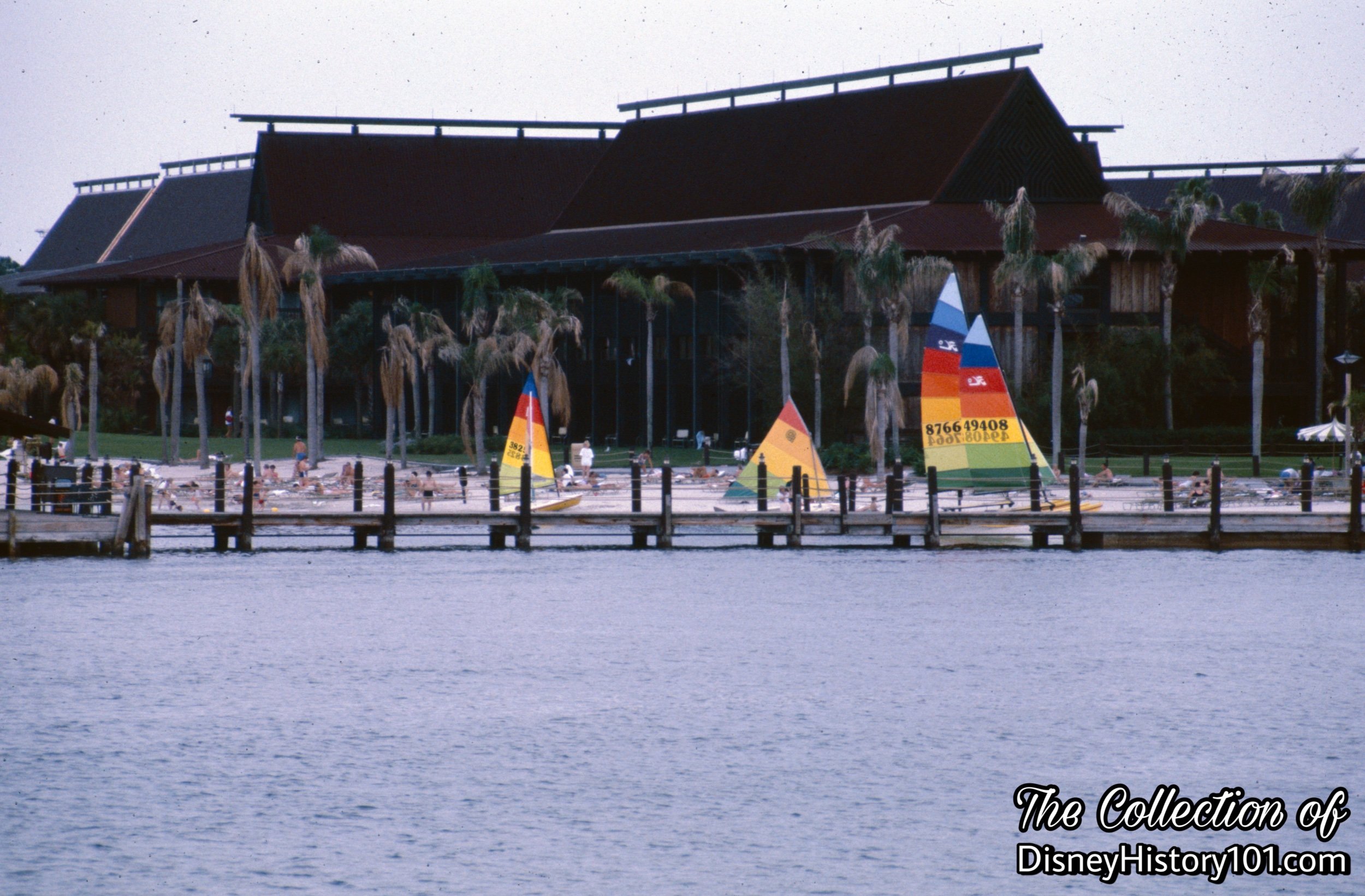
The Beach near Tonga and Hawaii.
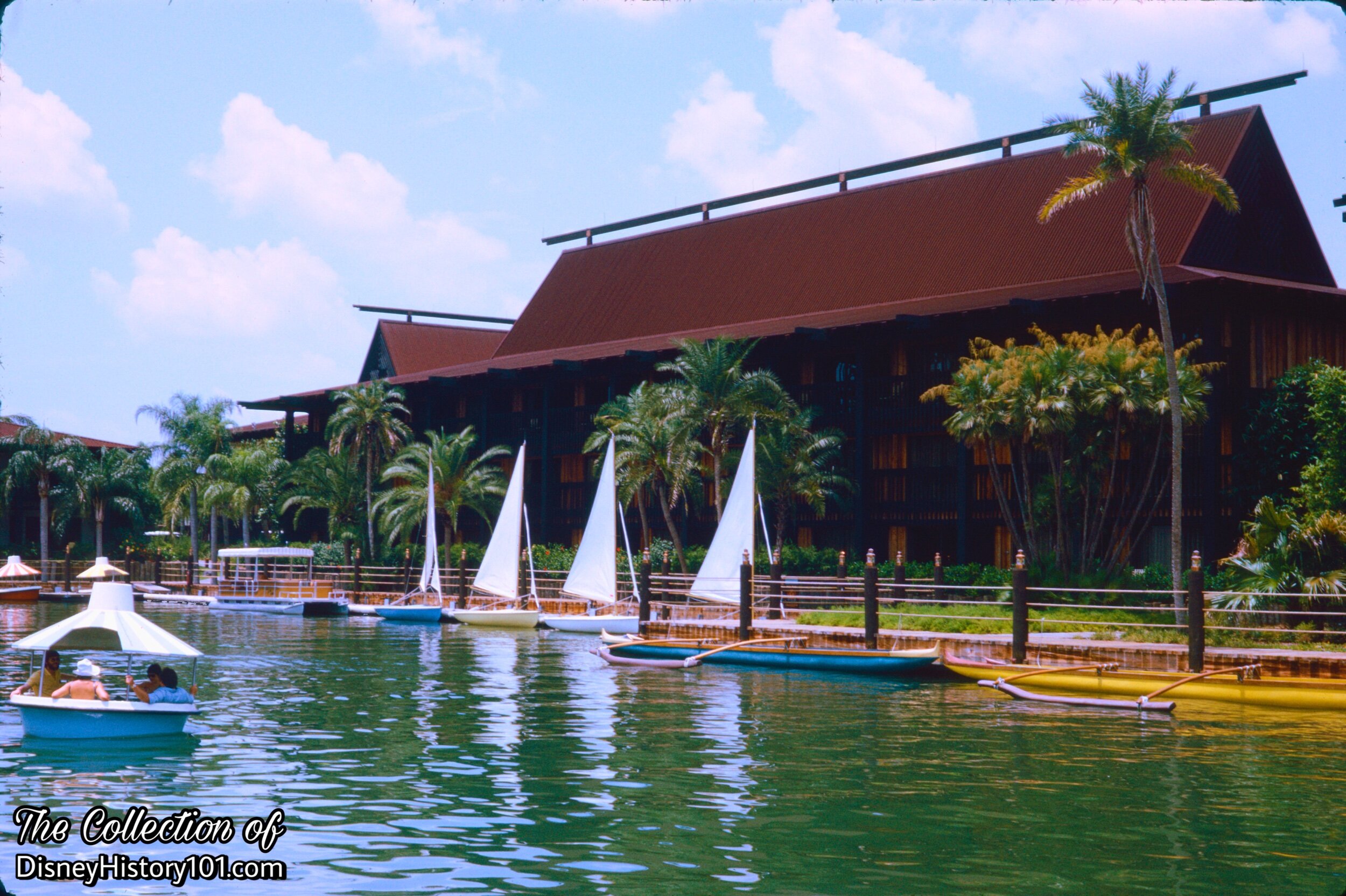
In the Walt Disney World Vacation Kingdom Guests had their choice of several rental boats. Boat rentals were available all Walt Disney World resorts (except Golf Resort).
Private boats weren’t allowed in the lake or Walt Disney World waterways. But there were several types of rental boats available and thus methods of exploring the Marina. In the Walt Disney World Vacation Kingdom guests had their choice of several rental boats. Resort I.D. cards were required for rentals.
You can see a few Canopy Boats ($10/Hhr; Bob-a-Rounds), Sunfish Sailboats ($5/hour), Capri Sailboats ($7/hour), Catamarans ($7-9/hour; in 14’ and 16’ models), Mini-Speedboats ($7.50/Hhr), Ski Boats ($30/hour; with drivers), Pedal Boats ($5/hr), and Pontoon Boats!
Mini Flote Boats ($25/hour; with no driver) would depart every 15 minutes for a seven-minute journey and come with a complimentary glass of champagne intended to be consumed while in transit. There were age limits (12 or over) for unaccompanied children applied. Resort I.D. card was required for rentals.
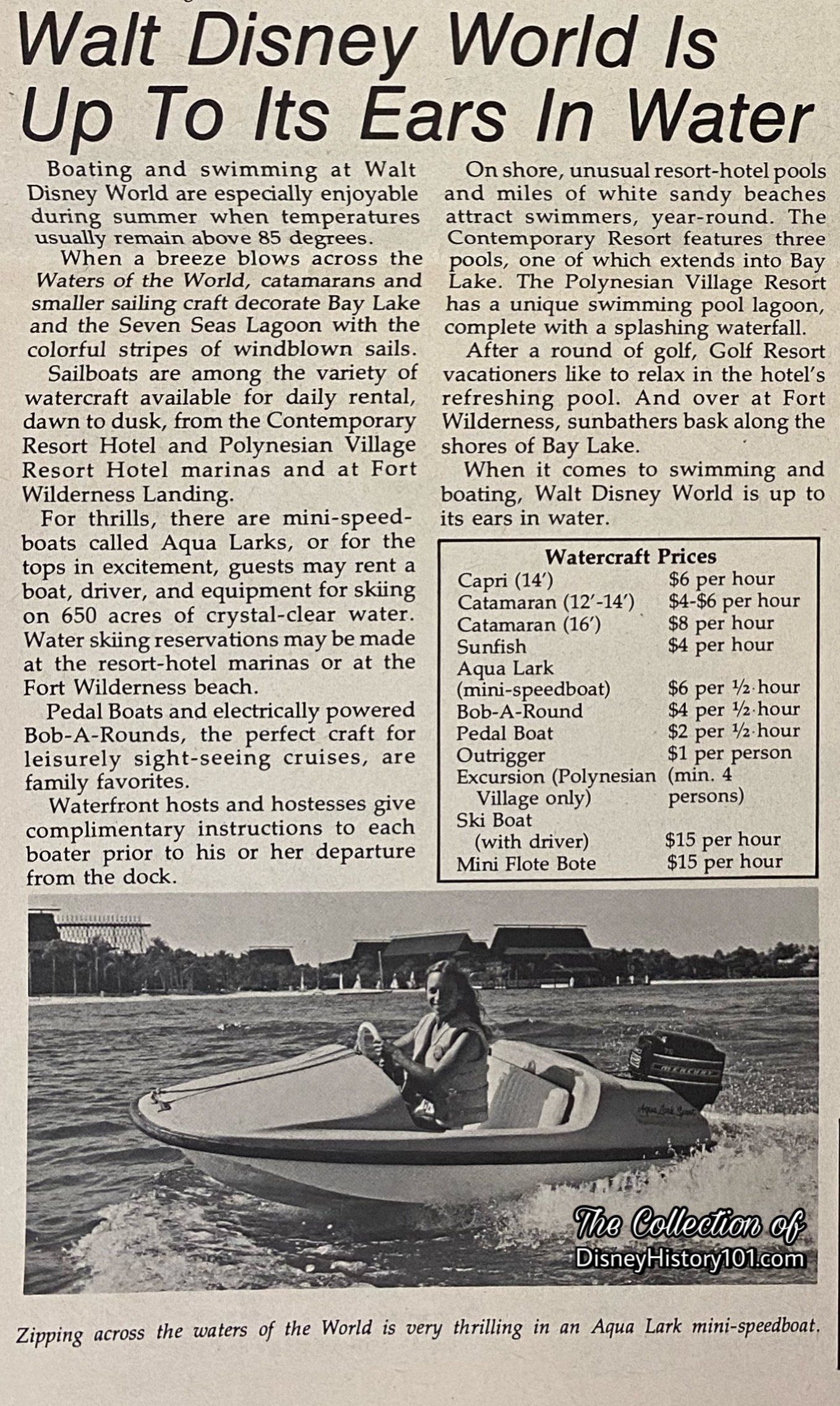
A wide variety of water recreation was available including scenic cruises on authentic native outrigger canoes.
Speaking of news, News From Civilization sold Daily newspapers, magazines, tobacco, film and gifts.
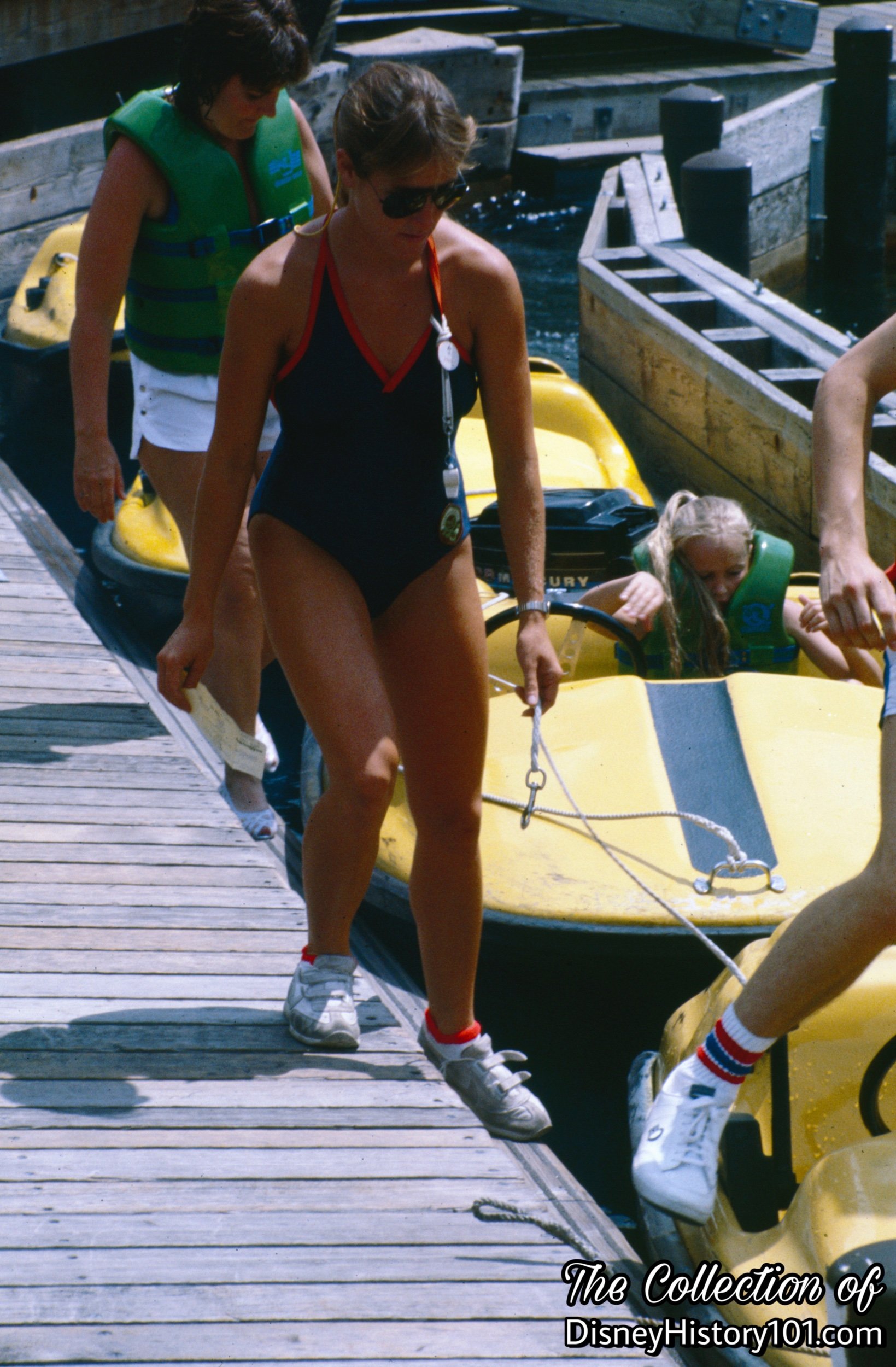
Long before the Disney Sea Raycer and Watersprite there was the Aqua Lark. The two-person boats were originally rentable at $7 per half hour, and came in a variety of colors to identify their launch location. The Aqua Larks departed from launches near the Disney Village, Fort Wilderness Lodge (blue?), the Contemporary Resort (Orange), Polynesian Resort (yellow), Downtown Disney (white).

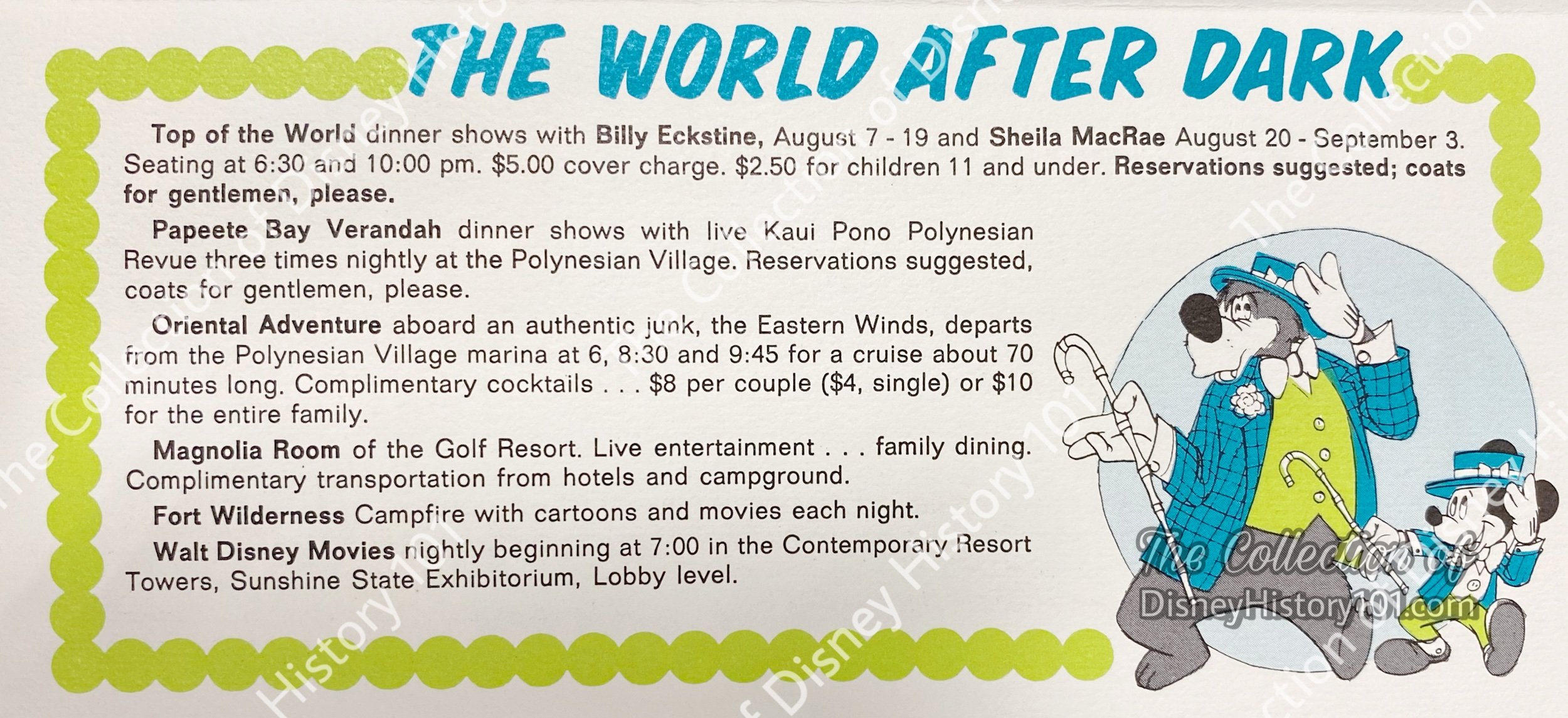
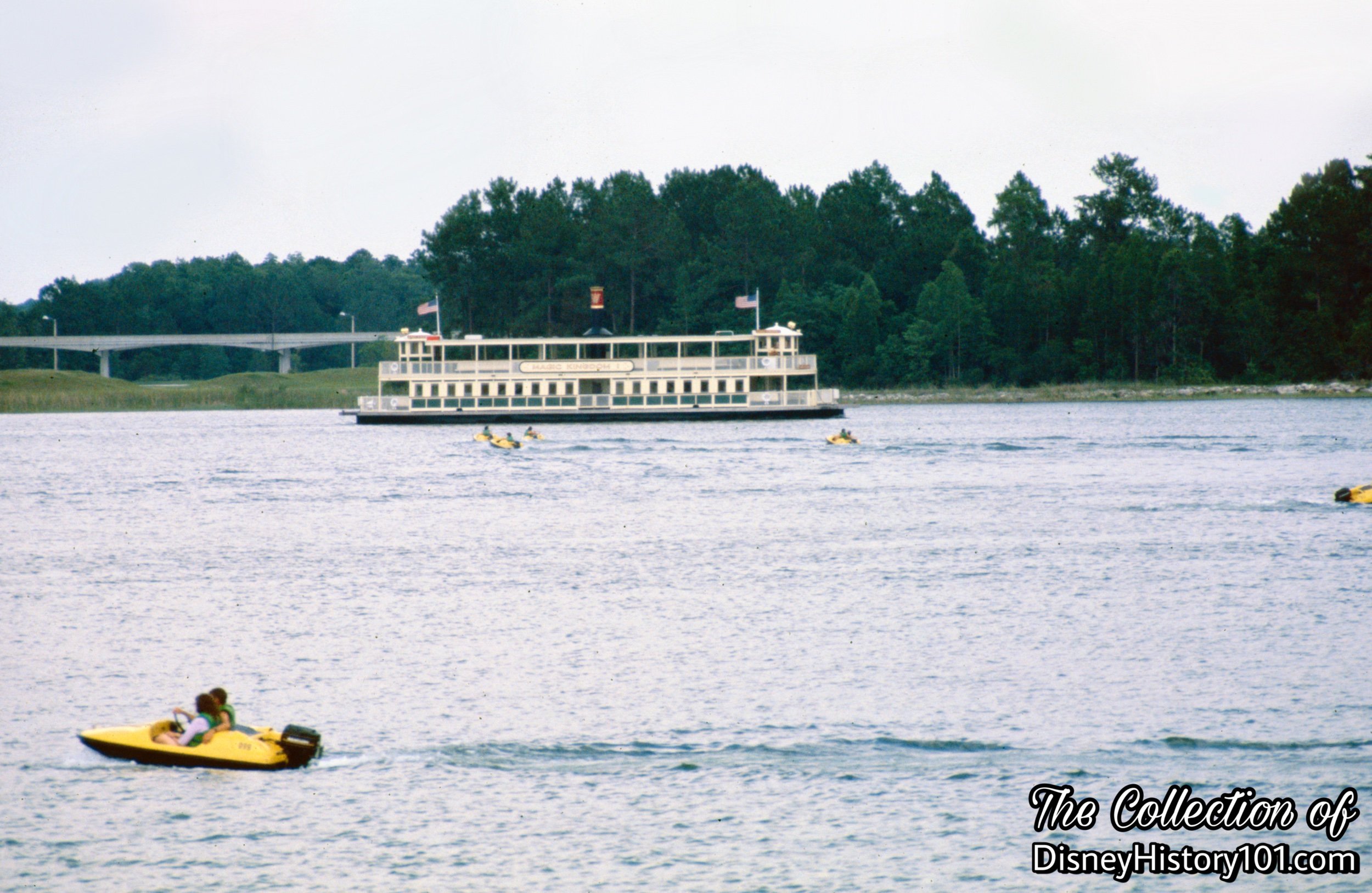
Some Aqua Lark pilots would get a little too close to the Showboats, Launches and Cabin Cruisers in Bay Lake and Seven Seas Lagoon. It looks like these Guests are maintaining a safe distance.
“Moonlight Cruise”
Two Evening Showboat Cruises were offered aboard 1890's style paddle-wheeler, side-wheel steamers, nightly under the stars. These boarded at Fort Wilderness Landing, the Polynesian Village Marina Dock and Contemporary Resort. According to “The Workd News” Vol.6, No.6 (published for June of 1976): “Mood music… and twinkling nighttime scenery beckon guests aboard the steamboats for Moonlight Cruises around the Waters of the World, Bay Lake, and the Seven Seas Lagoon.” Cocktails and soft drinks were sold on board. Dress was casual. Reservations requested and information administered through City Hall.
Guests could also take a World Cruise aboard an authentic 19th century side-wheeler steamship which departed from the Magic Kingdom dock. Passengers could learn the history and future plans of Walt Disney World on this leisurely voyage and travel to Treasure Island via motor launches from the Contemporary Resort, Polynesian Village, Fort Wilderness and Magic Kingdom dooks.
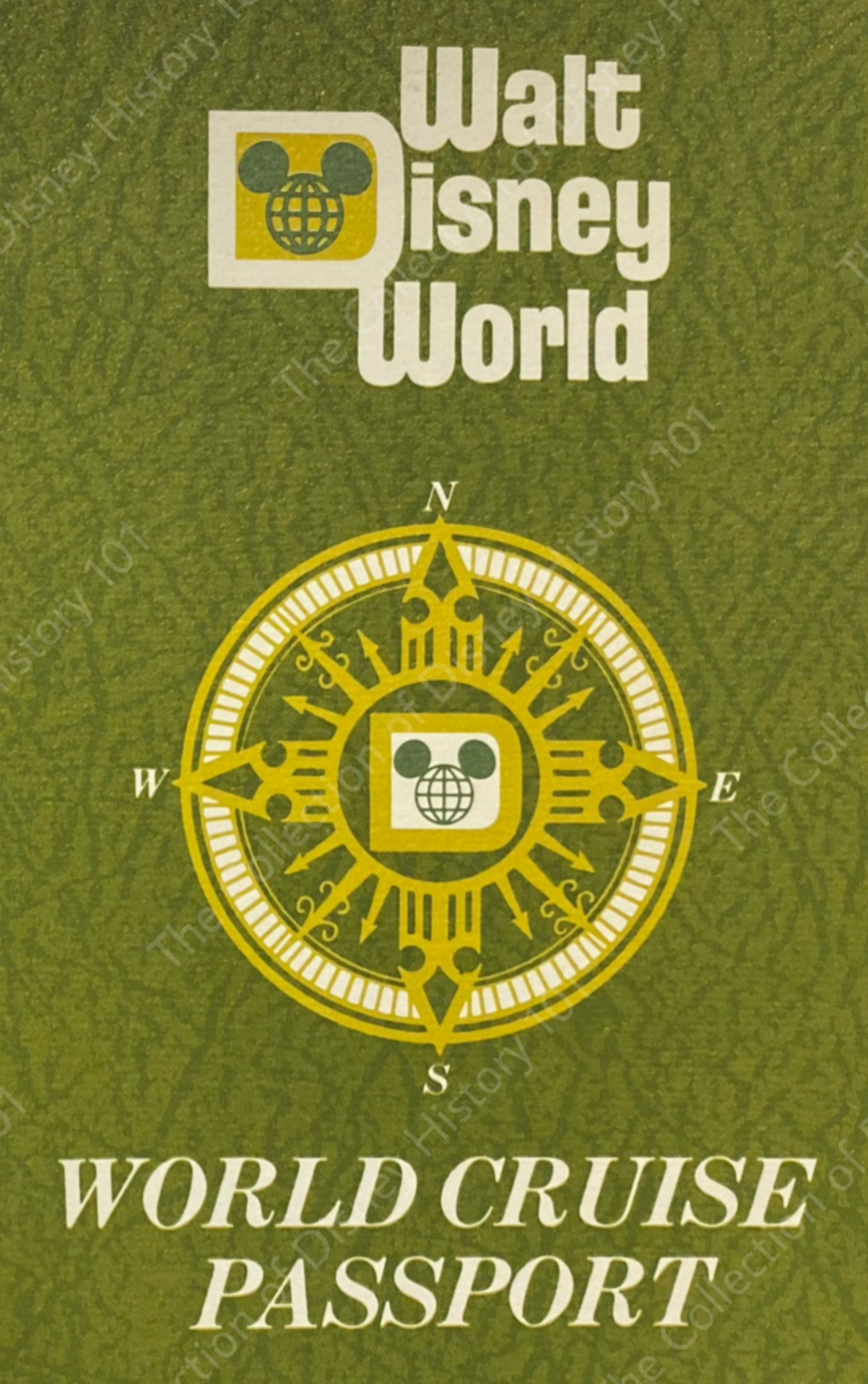
“World Cruises”
Six 50-minute World Cruises were also offered aboard these same boats daily, departing the Magic Kingdom landing (at Noon, 1, 2, 3, 4, and 5pm) so that guests could see the “Waters of the World.”
“World Cruise to Discovery Island”
Guests boarded “an authentic side-wheeler for a leisurely, narrated World Cruise around Bay Lake and the Seven Seas Lagoon.” On Discovery Island, guests could admire rare and beautiful birds among exotic plant life and walk through one of the world's largest outdoor aviaries. Departures launched from the World Cruise dock outside the Magic Kingdom entrance. Refreshments were available on board.
“Discovery Island Excursion”
Discovery Island launches would go directly to the "tropical paradise" from the Magic Kingdom entrance dock, Fort Wilderness Landing, Polynesian Village and Contemporary Resort marinas. Film and beverages were available on Discovery Island and guests could purchase tickets at the Magic Kingdom entrance or resorts.
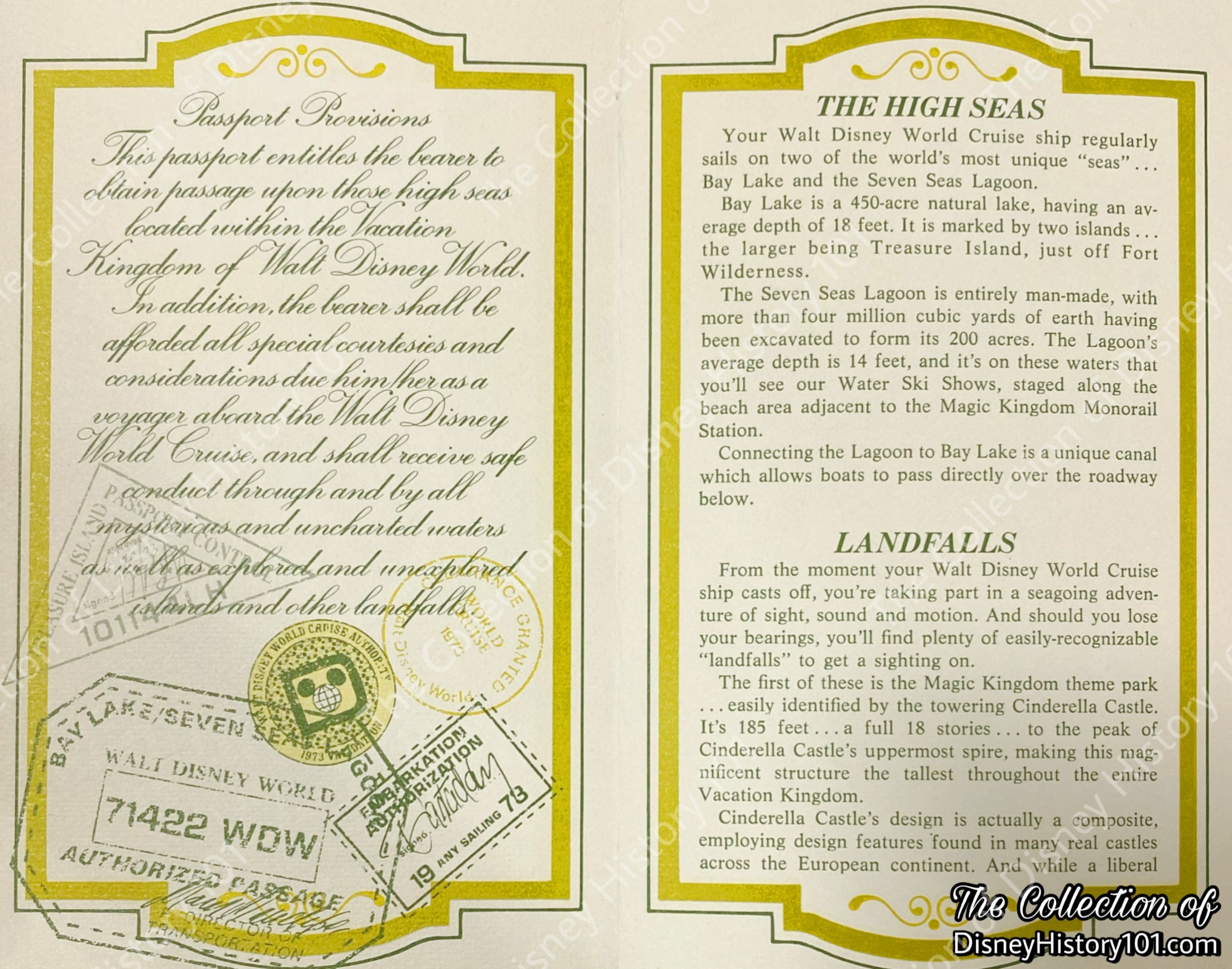
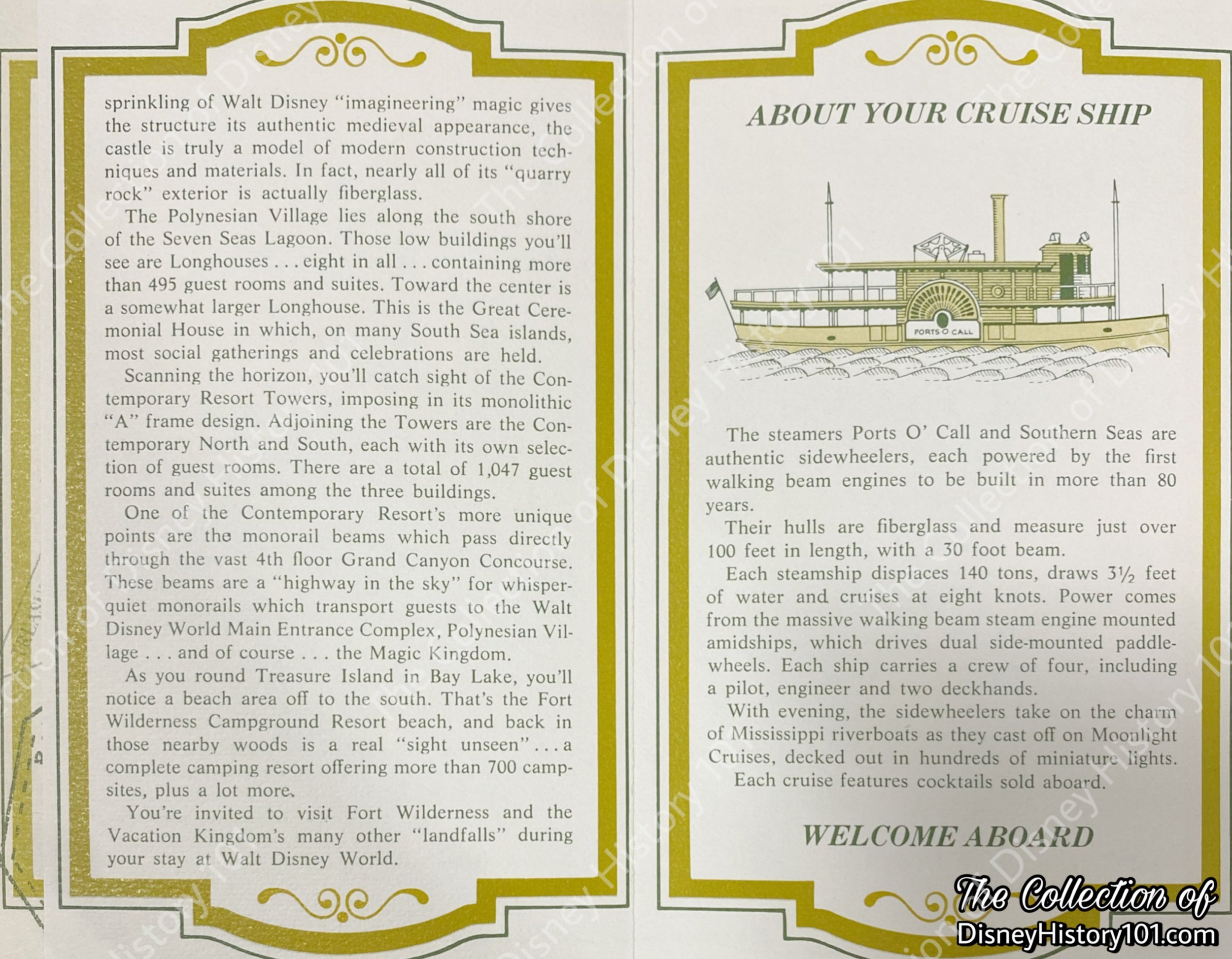
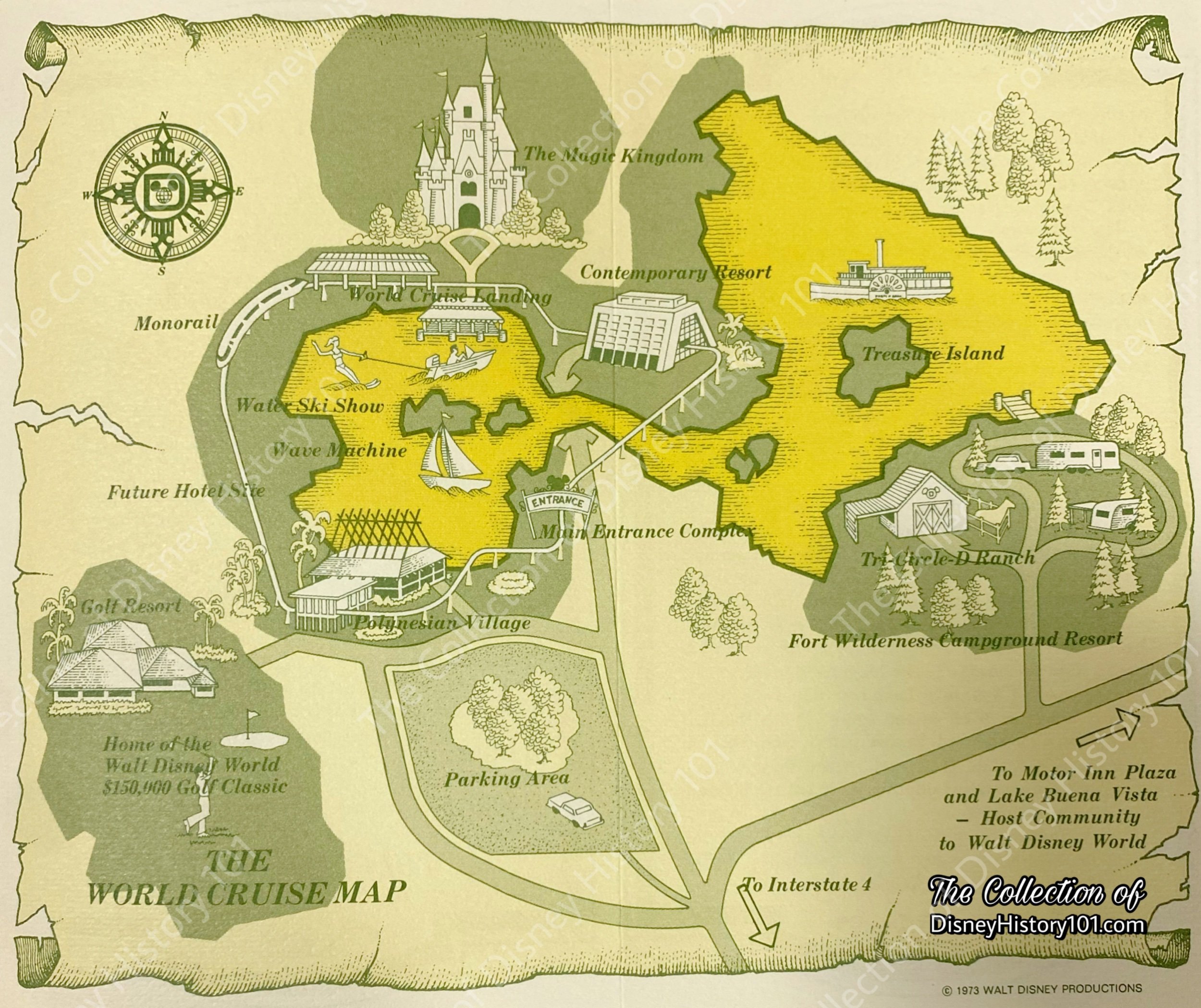
Note some of the “landfalls” in addition to the Water Ski Show, Wave Machine, and Future Hotel Site (the Thai-inspired Asian Resort, just west of the Polynesian Village).
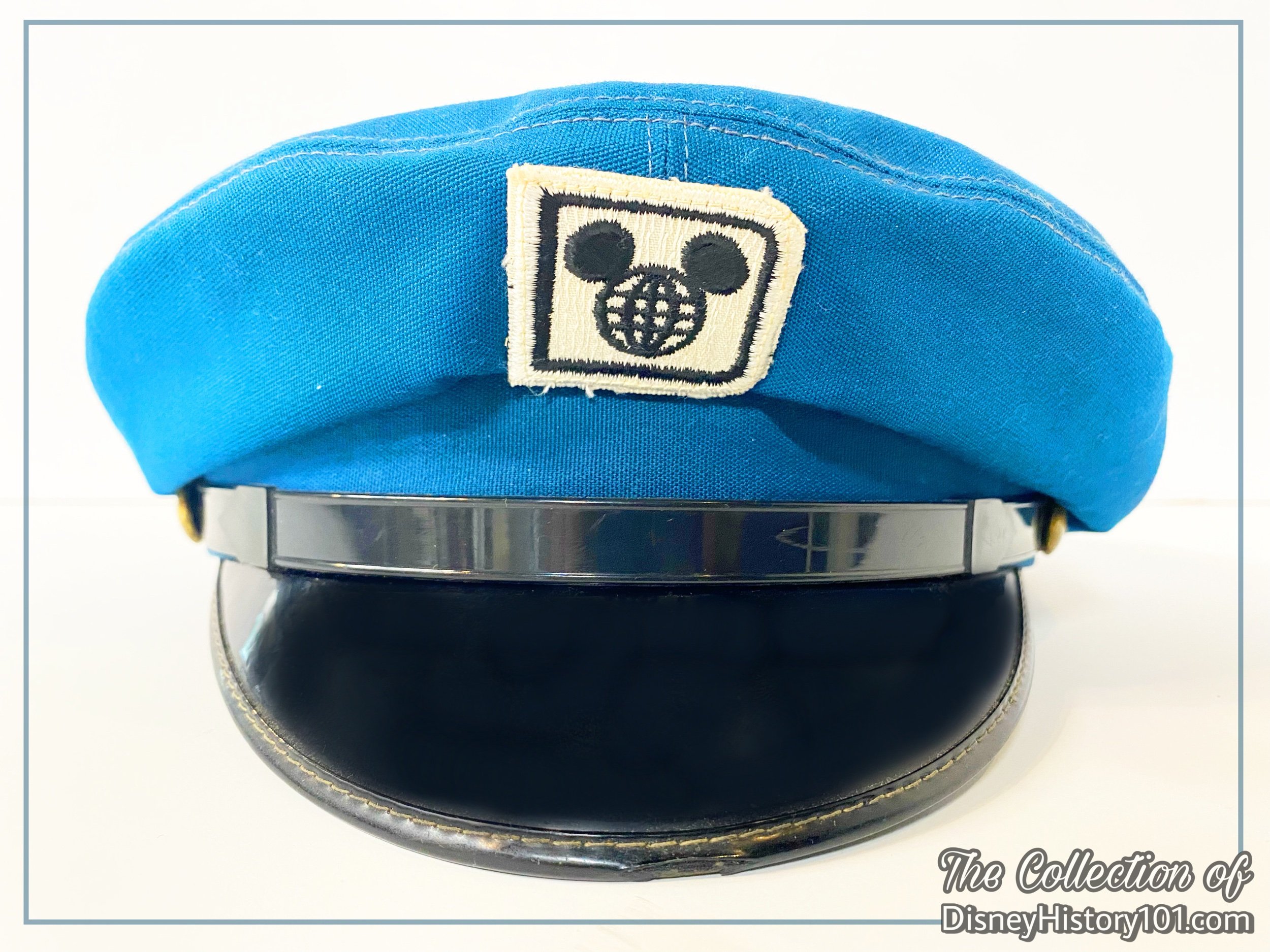
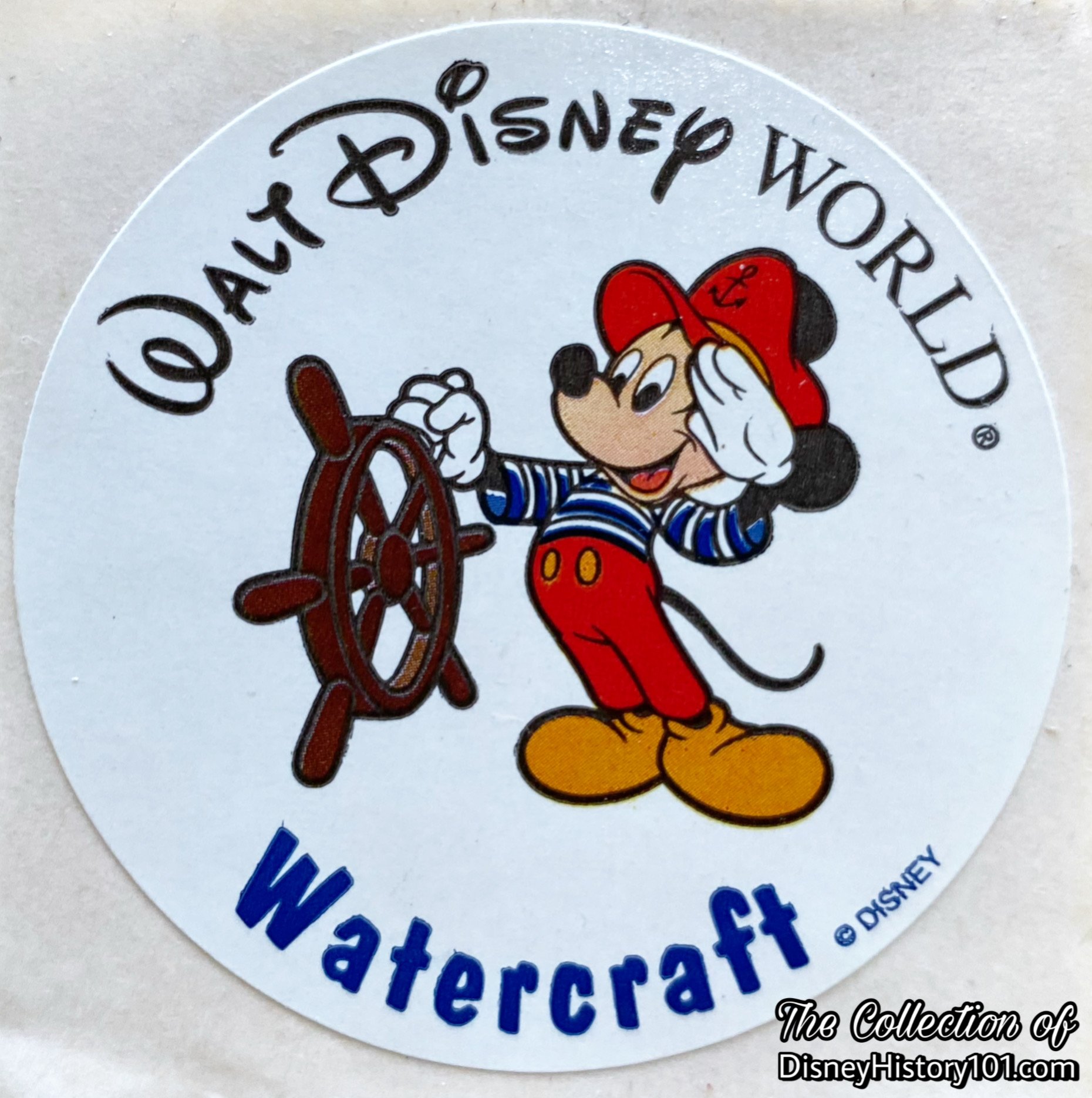

Transportation included Monorail trains, ferryboats, launches and shuttle service between all areas.
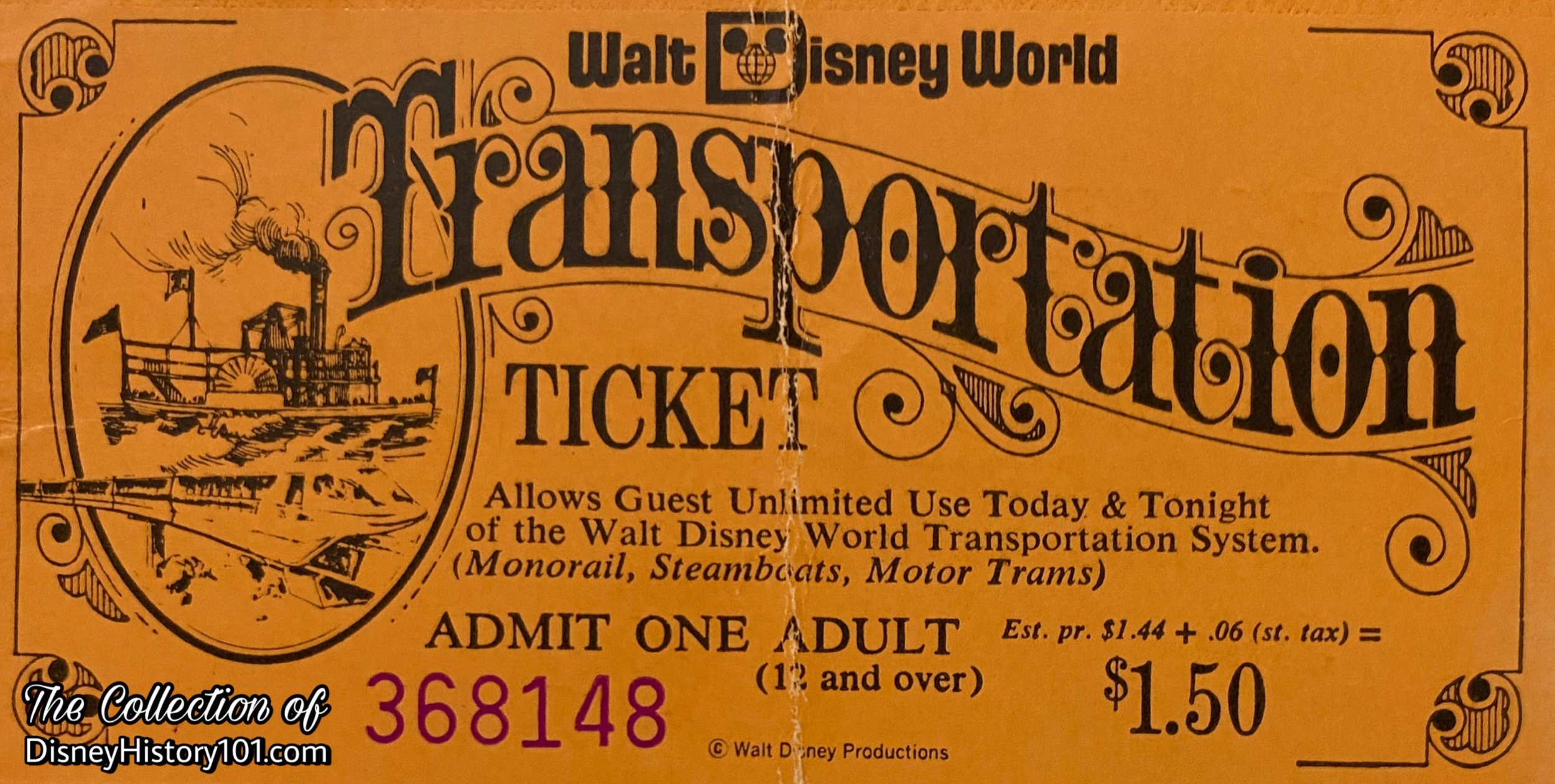
Guests of the resorts had free use of the Monorail, trams, and steamboats.
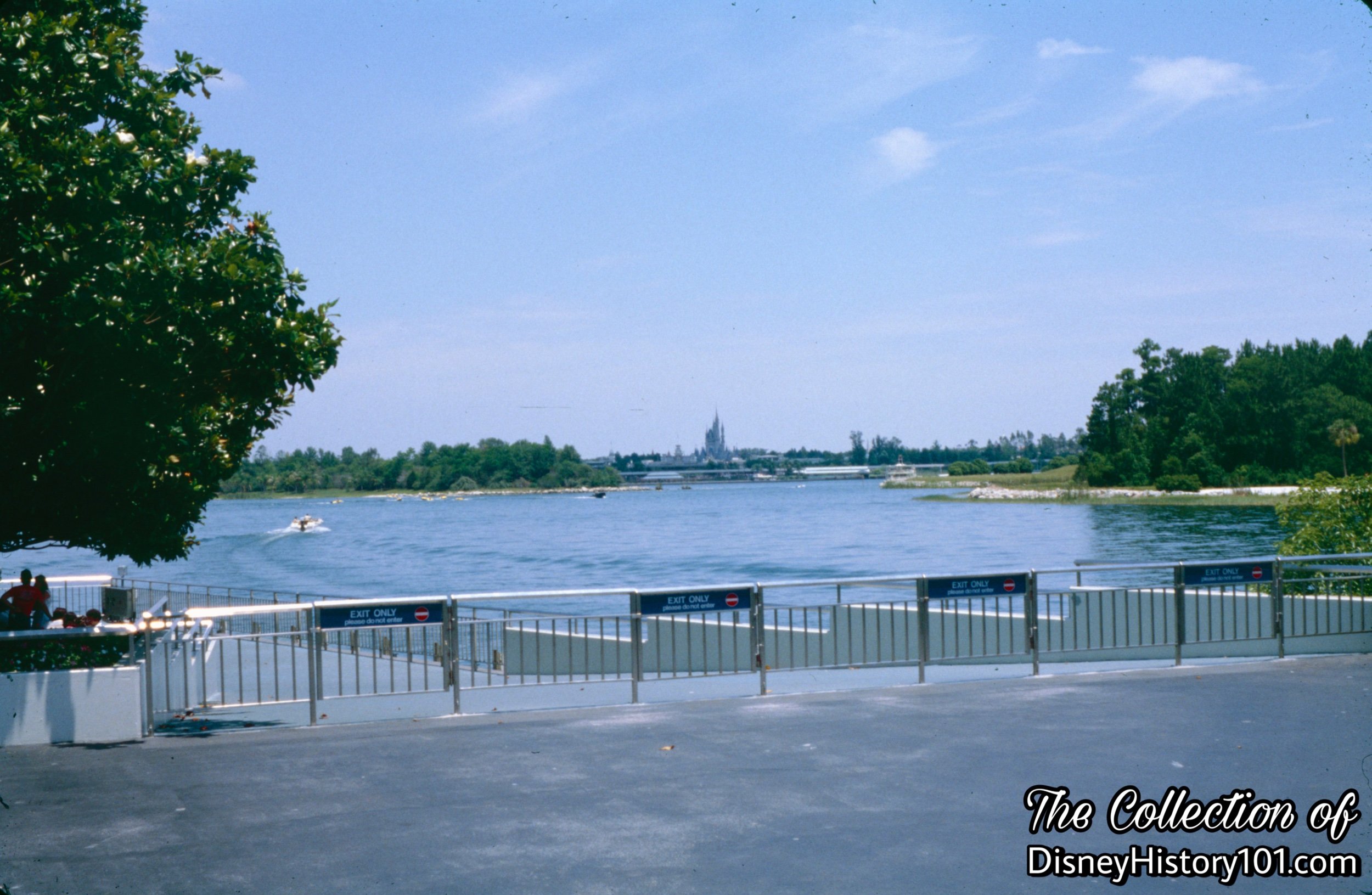
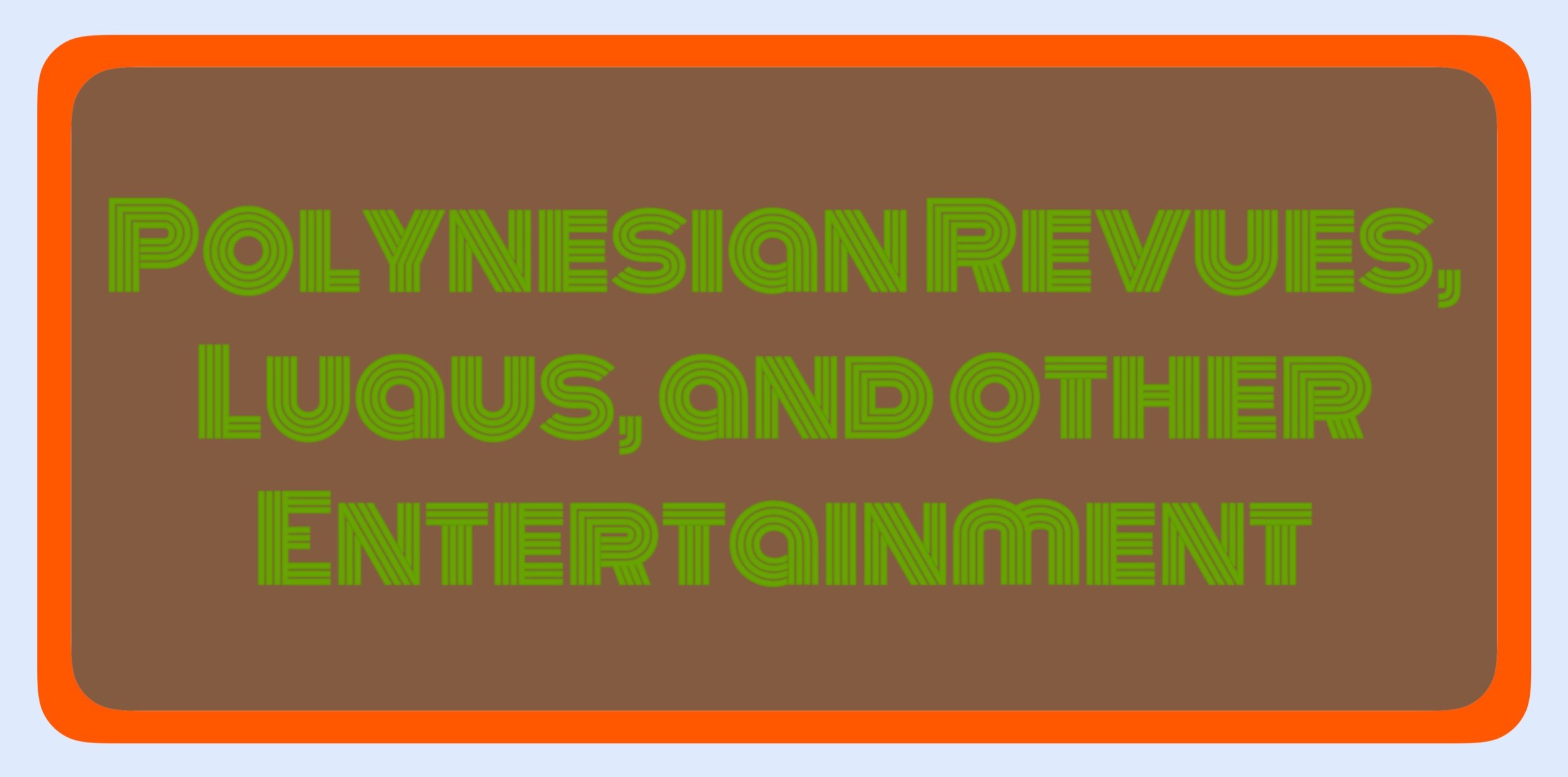
“Cast Members and Entertainment”
The Walt Disney World show would be unlike any other theme show in the world. The show would be set on a stage measuring 189 feet high, 30 feet deep, spread across 43.5 square miles of area, “with a backdrop off pristine air, fluffy white clouds and just enough rain to keep it green.” Here on this extension of the grand theme park stage, all the imagination, art, animation, creativity and talent would culminate in a conscience and subliminal show experience of color, sounds, lights, details, timing , tastes, and textures. Adding to this experience would be enlivened by Cast Members who would perform various roles, the foremost of which would be the Disney tradition of offering the finest Guest Service and wholesome family entertainment imbued with a personal touch. Unlike the Parks (which close to guests) this would be a 24-hour show, where guests would be “lodged quickly and efficiently, provided with information on all activities, enjoy clean and orderly sleeping accommodations, experience inviting recreational activities, and at the completion of their visit, a prompt checkout.” Beyond the modular constructed hotel resort and sophisticated monorail systems, it has always been the people that make Walt Disney World work.
Since the beginning, Walt Disney Entertainment department developed new shows and parades for all of Walt Disney World. Atmosphere Entertainment complimenting the theme of areas was staged to entertain Guests on an immediate and personal level. “In the romantic South Seas environment of the Polynesian Village, time took on a leisurely tempo. Strolling Polynesian troubadors entertain guests who linger beside tropical pools or wander on palm-lined paths.
The throb of Tahitian drums announces the nightly torchlight luau held at the Luau Cove, a romantic dining pavilion on the beach overlooking the Seven Seas Lagoon. While Polynesian entertainers perform the dances of Hawaii, Fiji, Tonga, and Samoa, diners feast on "native deli-cacies" served at long tables by costumed hosts and hostesses.”
During 1971, the world famous Kaui Pono’s Polynesians (an ever-changing troupe of Samoans, Tongans, Maori, and others, headquartered on Oahu, Hawaii). These appeared at Disneyland Monday thru Saturday of the peak summer and winter holiday sessions, every hour from 5:00 p.m., with the last show occurring at 10 p.m. This was (of course) in preparation for (and concurrent to) their three-times nightly appearances at the Polynesian Village Resort Papeete Bay Verandah (at Walt Disney World), where they brought the feeling of Aloha to guests! This was established through torchlight ceremonies, luaus, wedding dances, fire dances, and other South Seas performances. To Vacationland magazine, Kau’i reiterates the reason for their performances this way : “‘People ask us if we miss our islands, if we ever get homesick for our flowers, waterfalls, mountains, and rolling waves,’ Kau’i said. ‘I tell them that we bring the islands with us, in our songs, in our dances, and especially in our spirit of aloha - the gift of the islands to all who enjoy life.’”
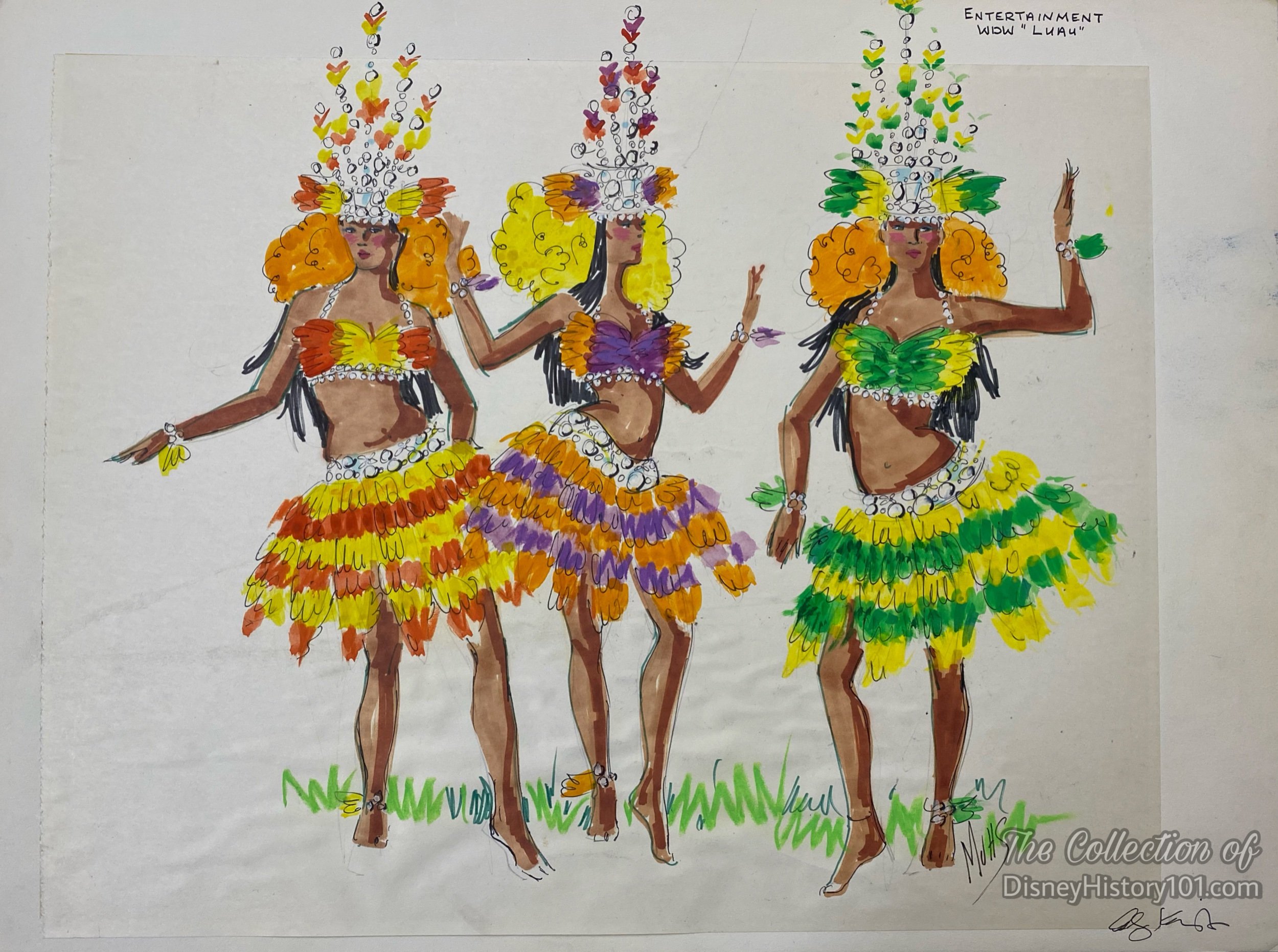
The costumes worn by Kaui Pono’s Polynesians were designed first, then authentically crafted - ti leaf skirts were refreshed every two weeks with ti leaves from Hawaii, new necklaces (for the male performers) were regularly crafted from kukui nuts, and “hundreds of shells” were sewn onto skirts and headresses.
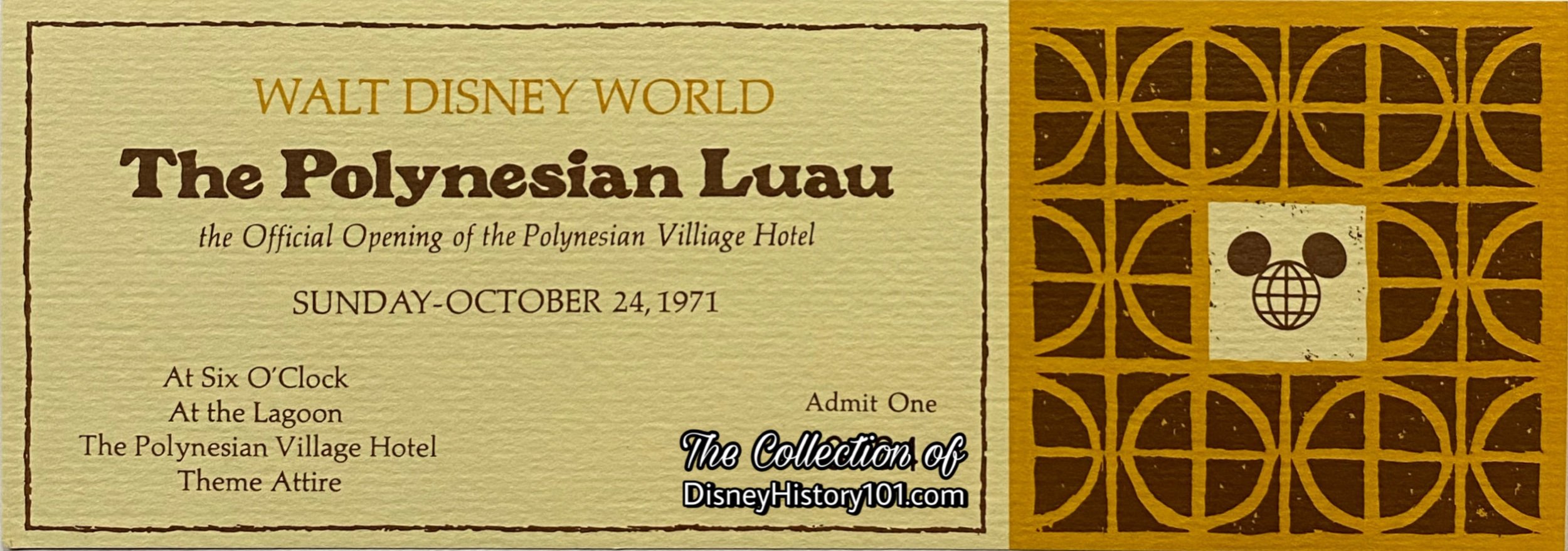
“South Seas Luau”
On the white sand beach under the stars in a romantic lakeside cove, in front of the Tonga Longhouse, a nighttime luau officially opened the Polynesian Resort Hotel. The South Seas Luau - a “nightly fun feast of Mai Tai cock-tails, island cuisine and exciting show in the beachside Luau Cove where native Islanders entertain with traditional songs and fire dances.
Two luaus nightly at the Polynesian Village Luau Cove. Banquet seating and service was available and reservations were necessary to attend. According to Disney News, Winter 1971-72, Guests dined “on delicacies such as Lichee Duck, Chicken with Almonds, Snow Peas, and Water Chestnuts while hundreds of Polynesian entertainers performed dances from Tahiti, Hawaii, Samoa, New Zealand, and Polynesia.”
By 1975, the experience was known as the Polynesian Luau. By then, Orlando-Land writer Edward L. Prizer attended and recalled: “When I sat down that night with Artice in the glitter of the Papeete Bay Verandah at the Polynesian for a gala dinner; when the room filled with the beautifully dressed Disney men and women who had created all this; when the Kaui/Pono Polynesian dancers began to undulate to the throb of Tahitian drums; when I saw the gem-like gleam of the Cinderella Castle over the palms and torches along the shore of the lagoon; I knew it had changed my life completely.” [According to one Orlando-Land article “Second Act” by Edward L. Prizer, published October of 1976, page S-3]
According to “THE DISNEY THEME SHOW - an introduction to the art of Disney outdoor entertainment” Volume II: “In planning menus, Disney chefs must often walk a thin line between true authenticity and what people traditionally think is authentic. At one point, for instance, a Polynesian Luau brought complaints from guests who thought the meat, which had been meticulously prepared with Polynesian sauces, was spoiled. A subsequent menu change presented the same top quality meat in an American recipe, and complaints quickly turned to compliments.”
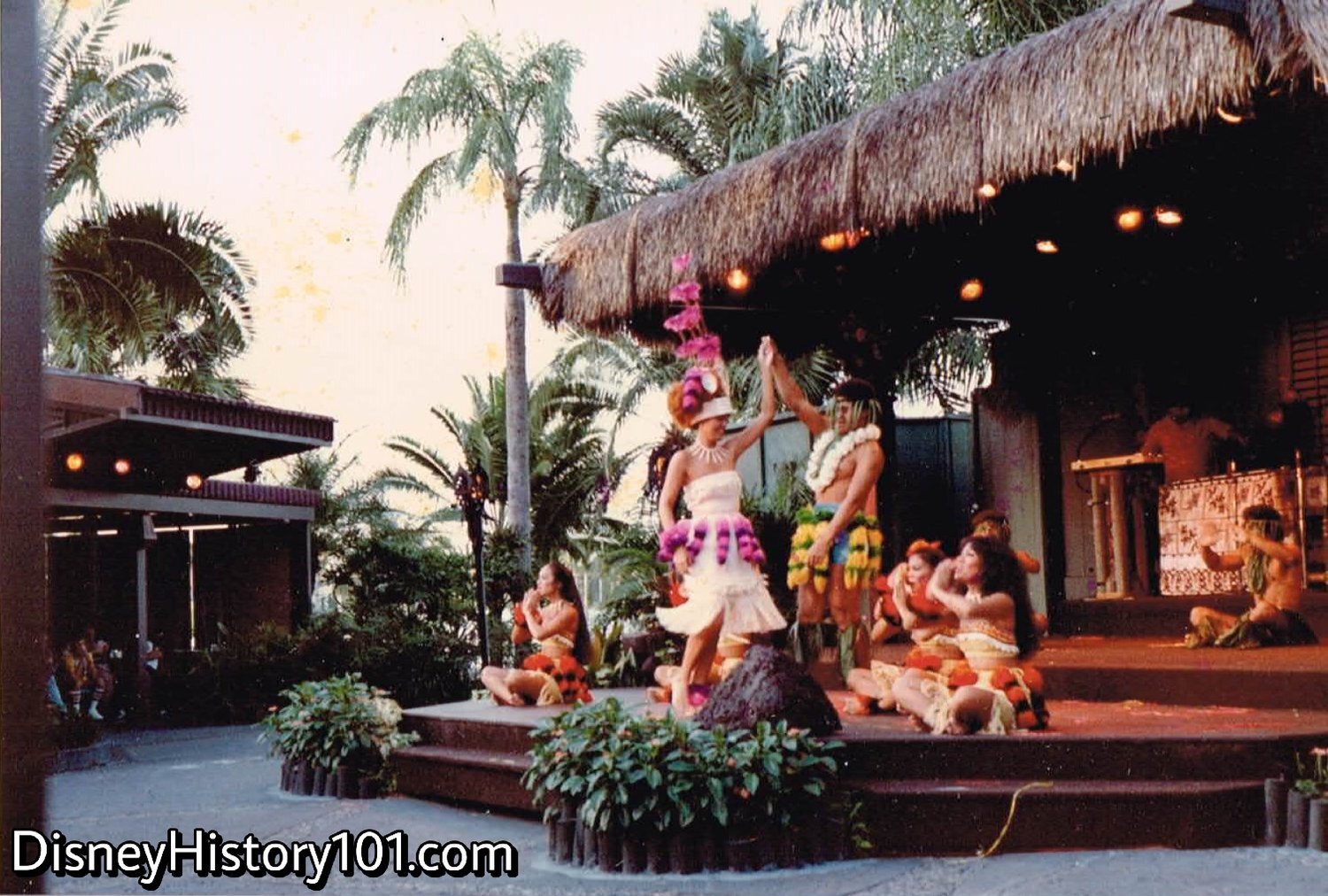
The Polynesian Revue Luaus were originally held on the beach, but by 1973 the newly constructed Luau Cove became home to the main show. Hula lessons were available. By October of 1976, the Kaui/Pono Polynesian Revue performed from Luau Cove on the Beach, nightly (from 5:45 to 8:15 pm), accompanied by a Polynesian buffet.
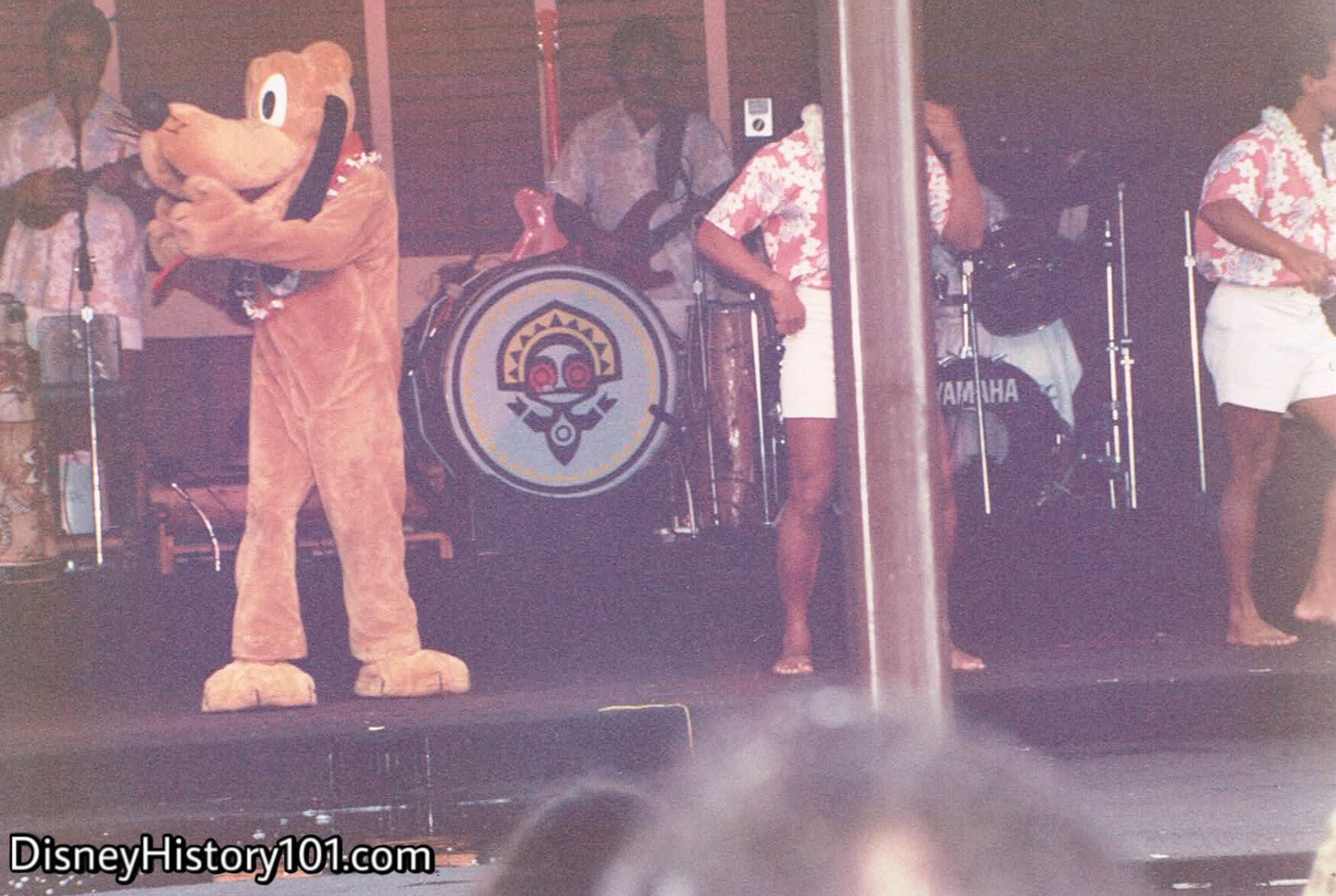
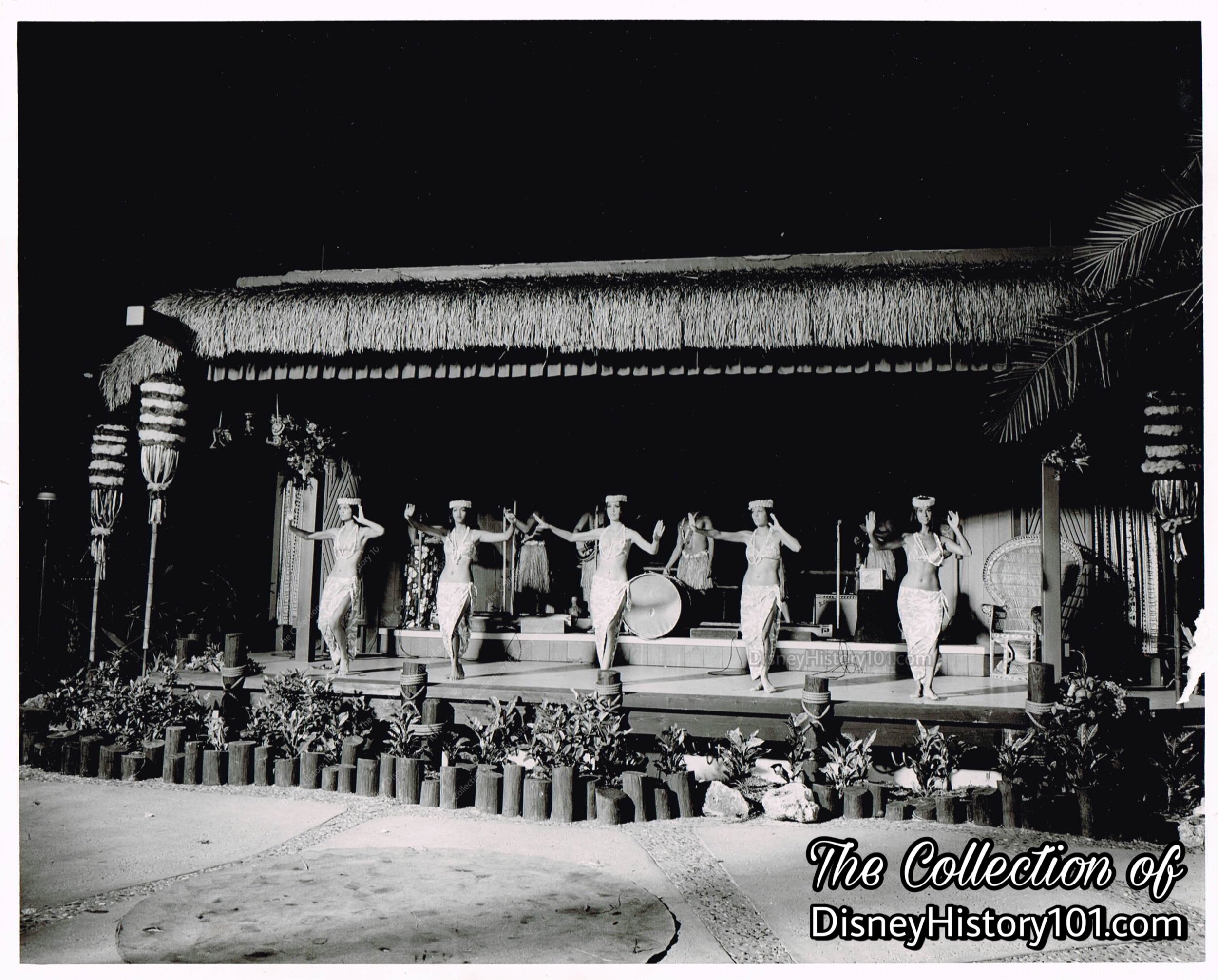
Luau Cove would provide shelter for up to 500 guests, a stage, and food warming facilities.
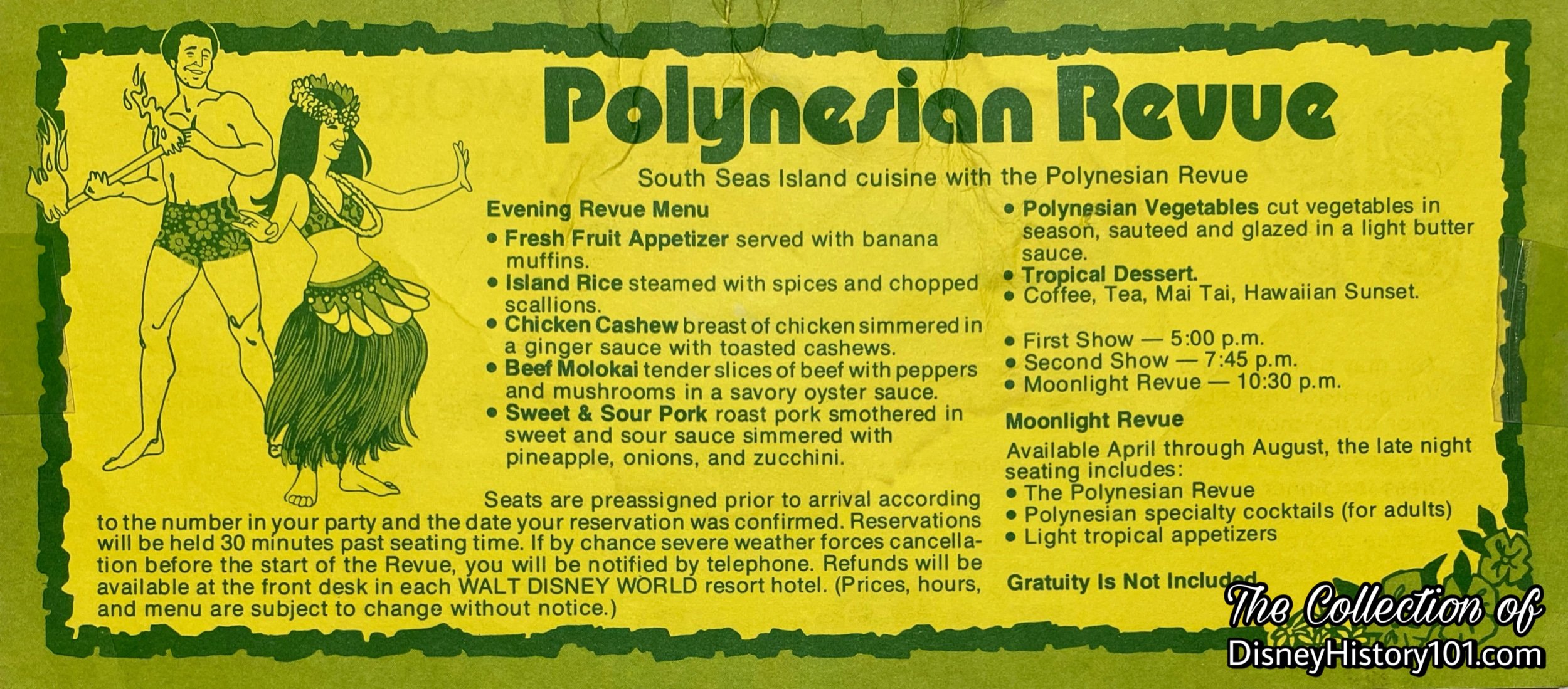
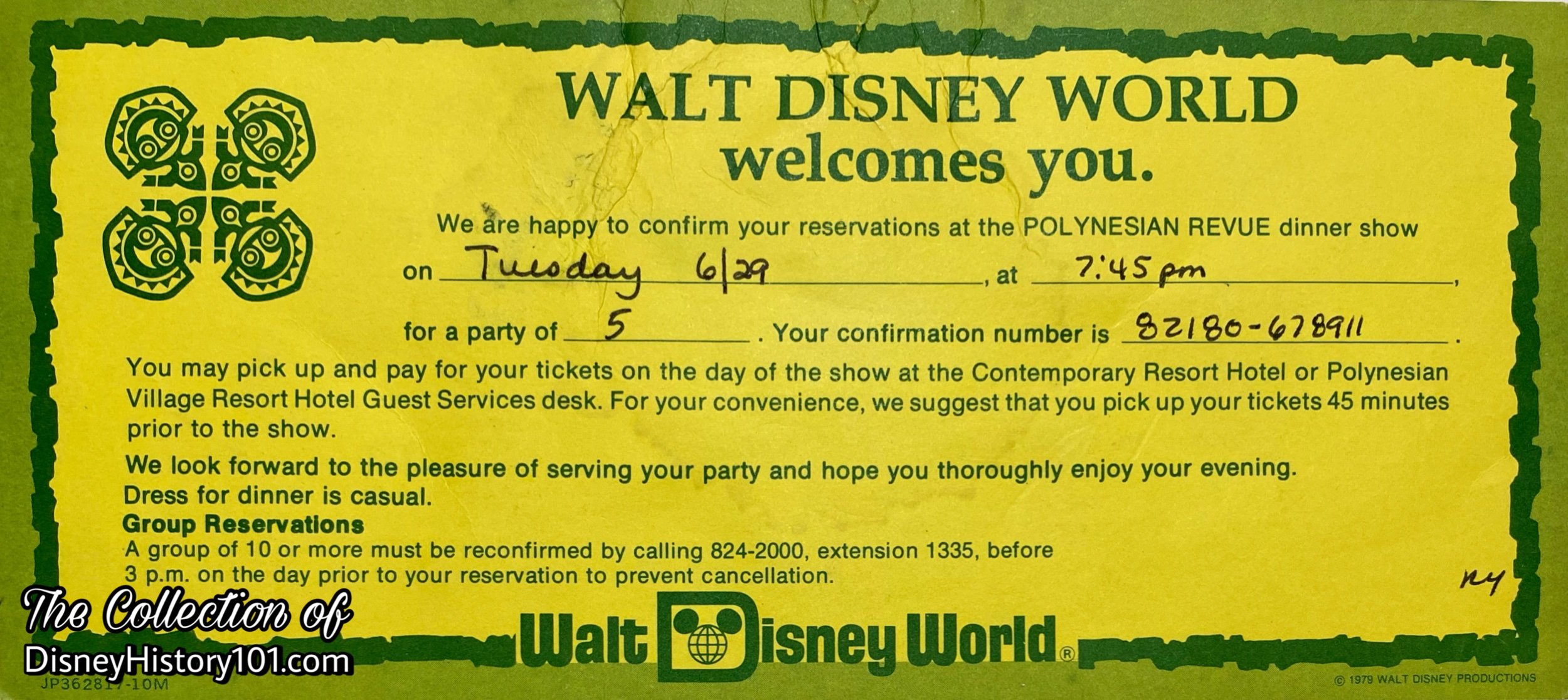

The South Seas cultural dances of Hawaii, Samoa, Bora Bora, and Tahiti were represented during two Polynesian Revue shows nightly at Luau Cove. According to advertisements, “cloudy skies are no concern since the new Luau Cove permits Luaus in most any weather.”
Reservation tickets like this (above) ensured your party’s number and table number.
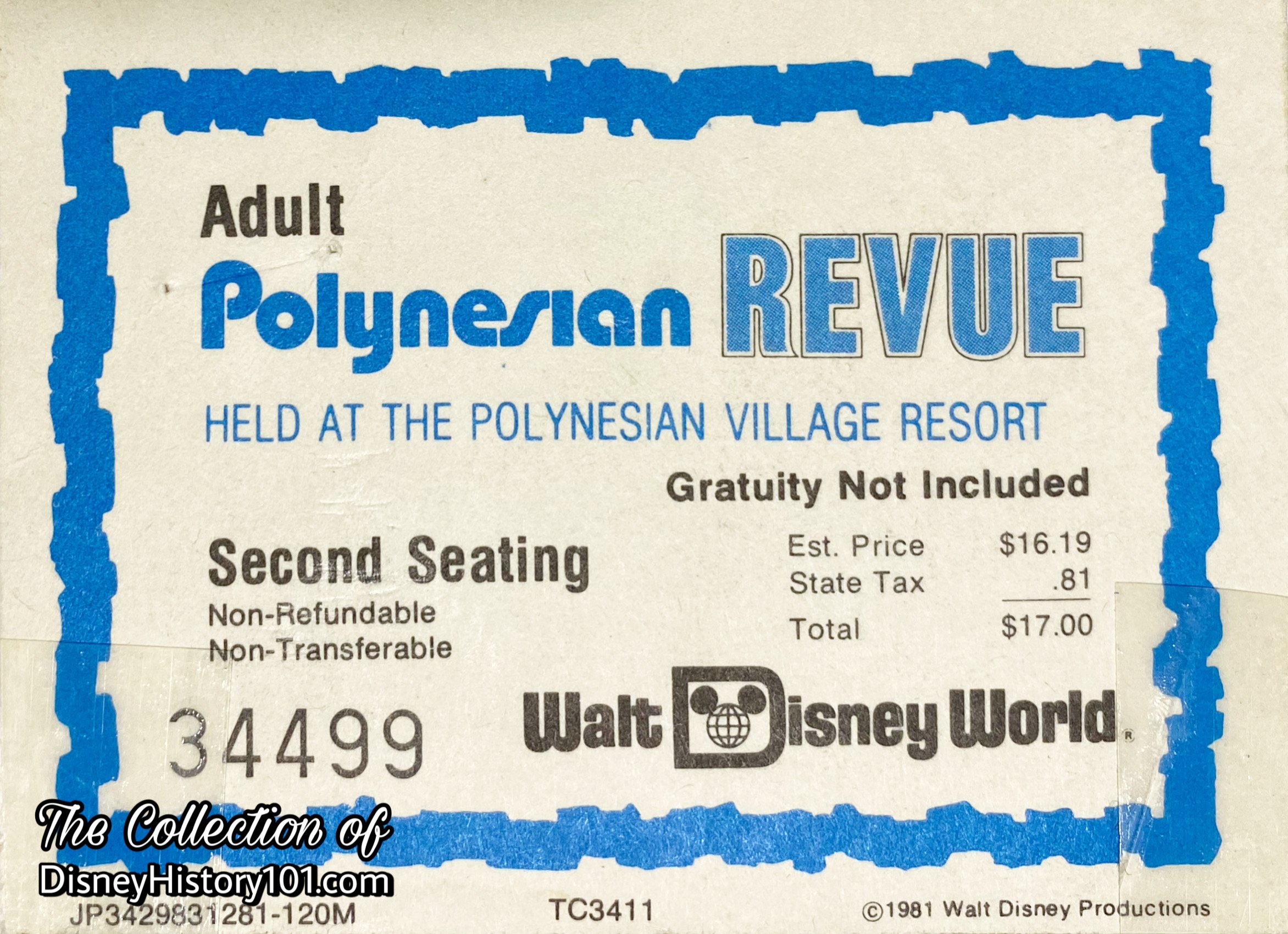

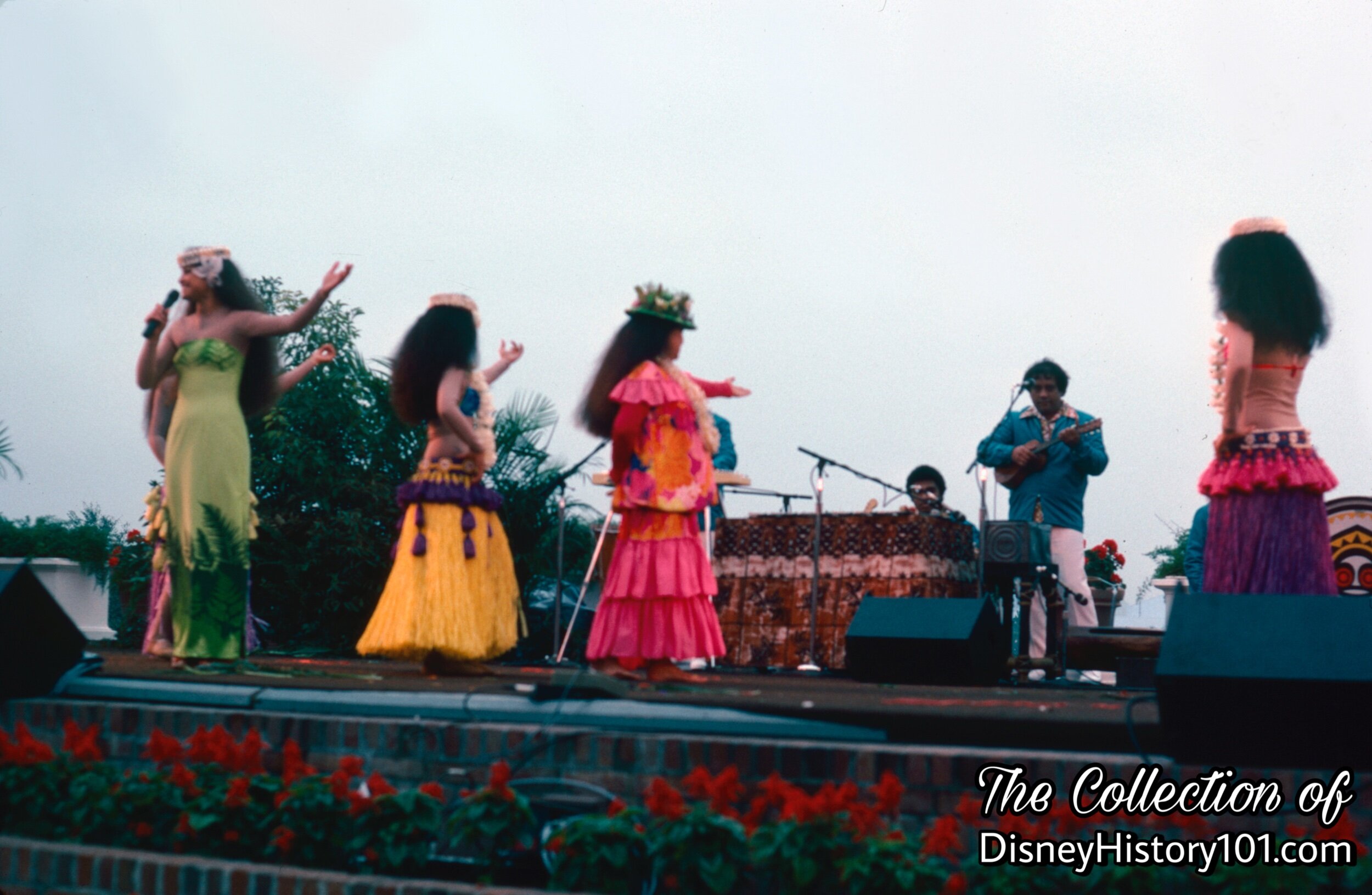
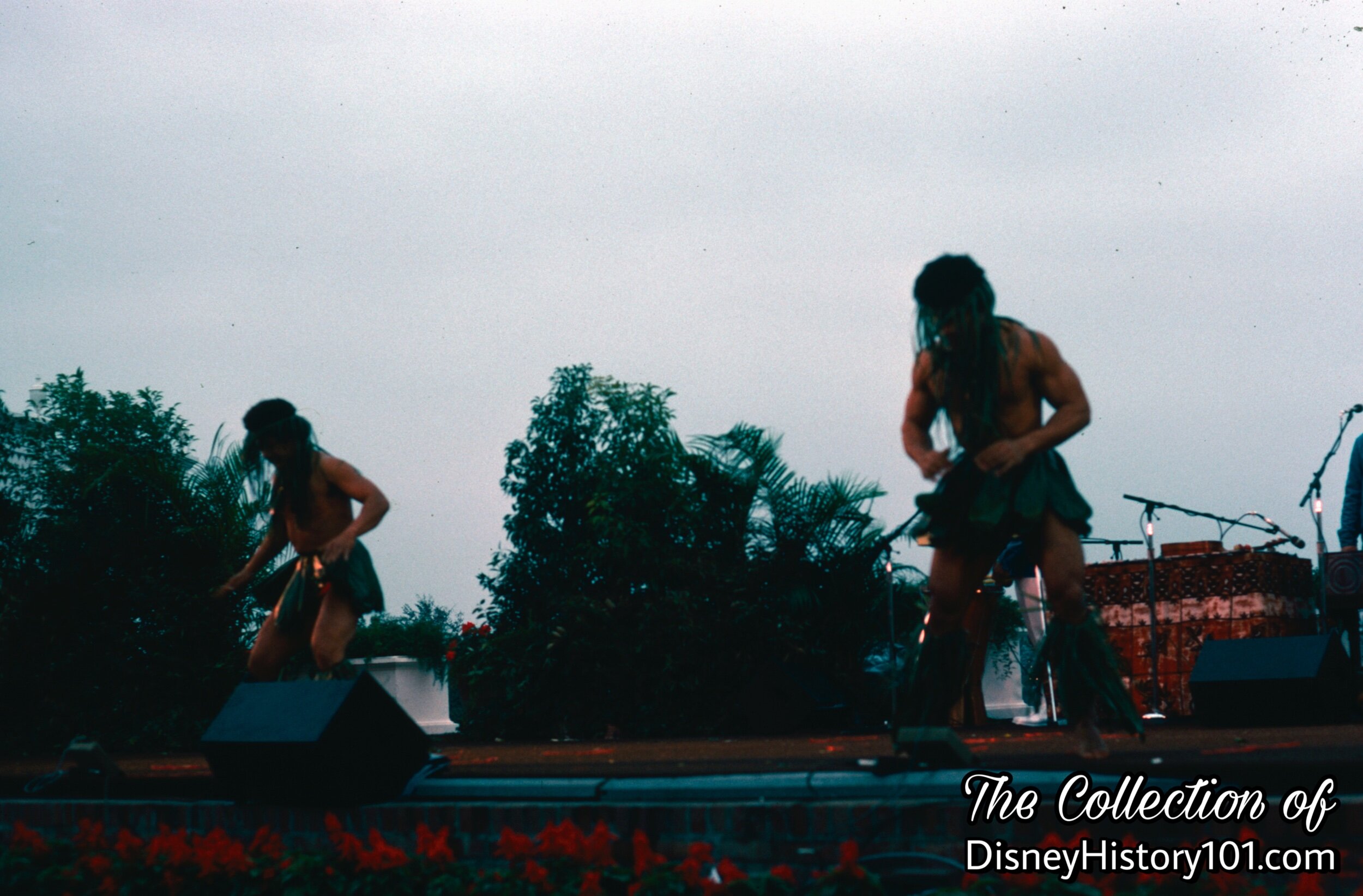
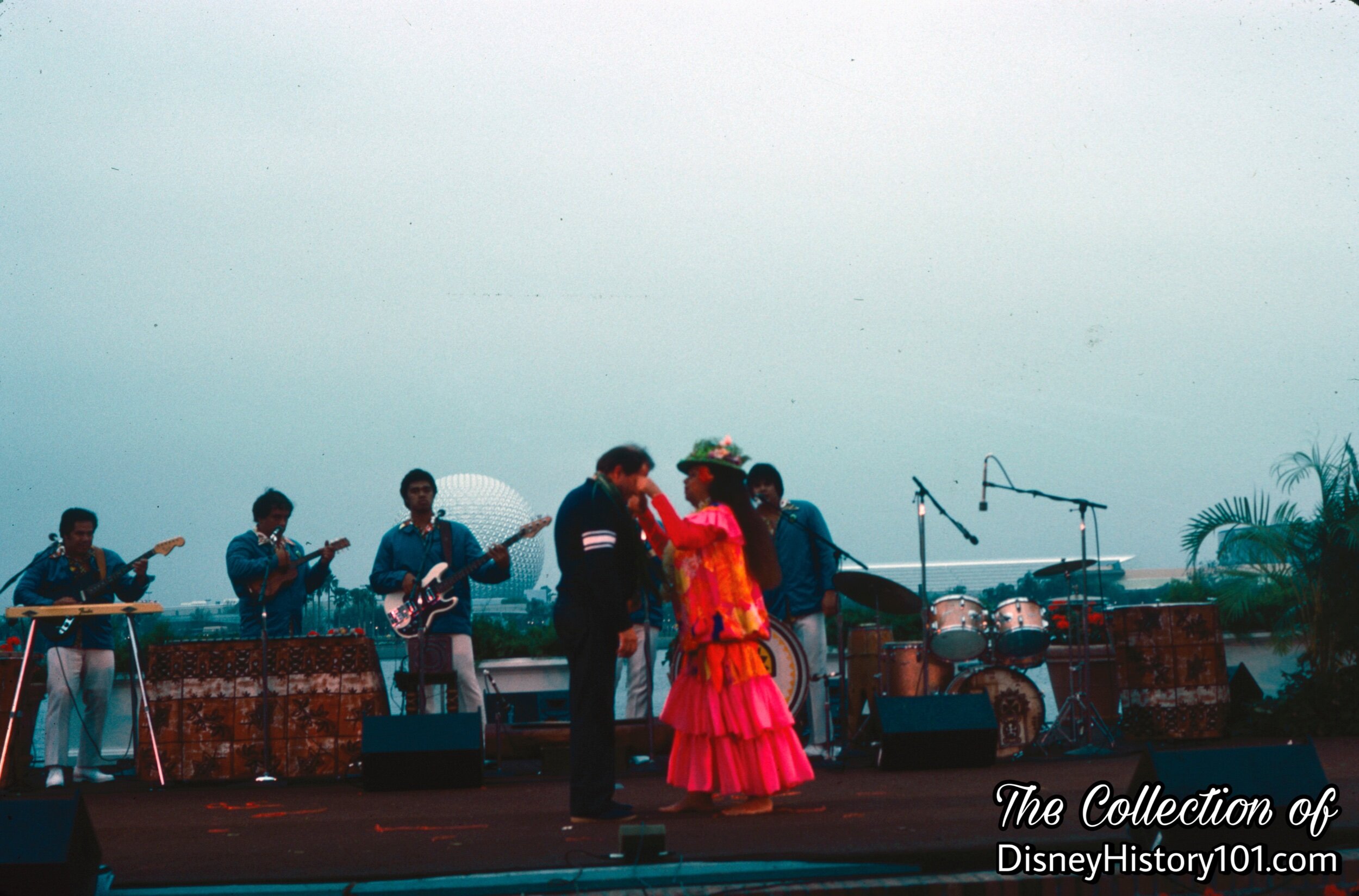
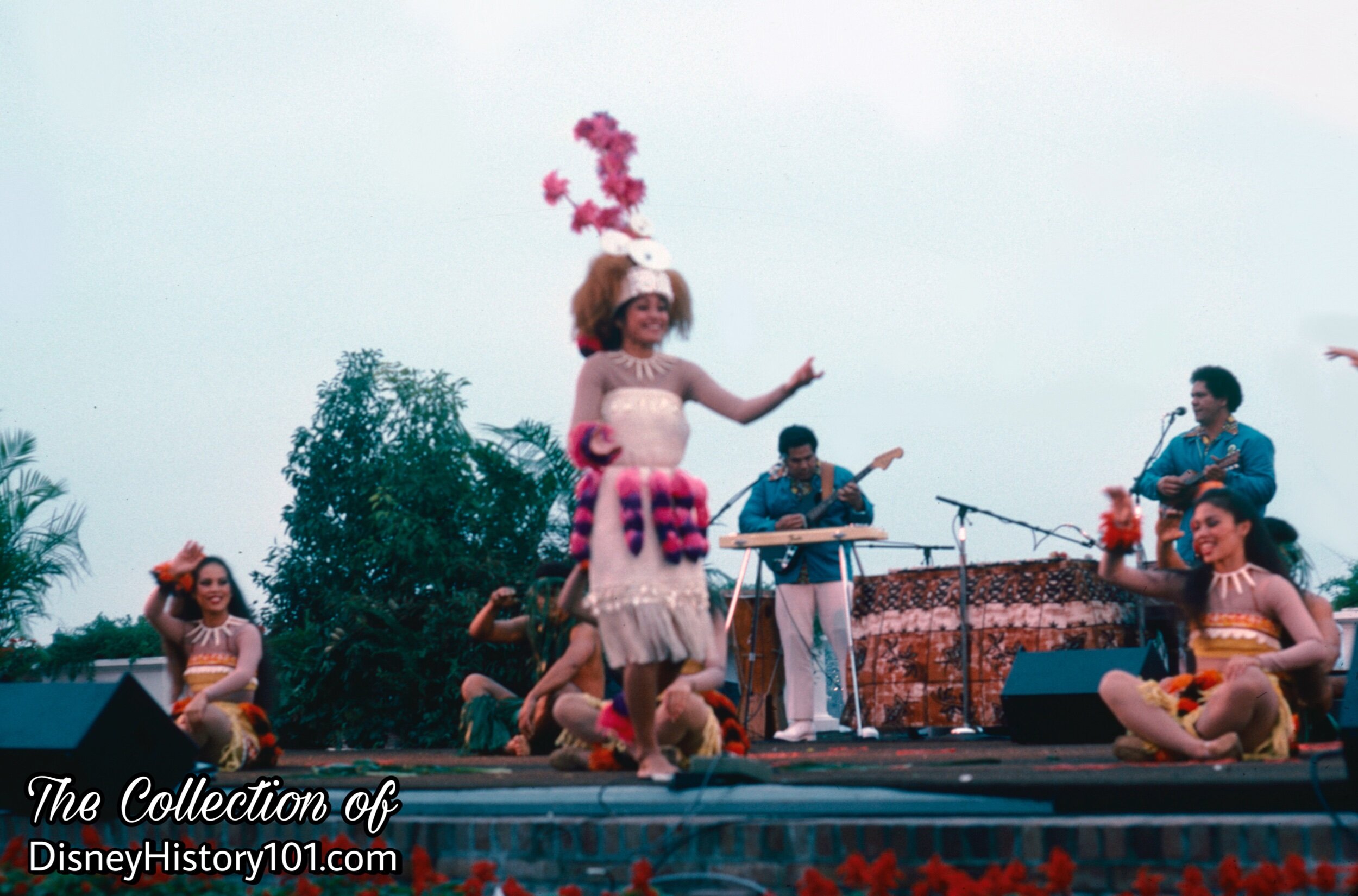
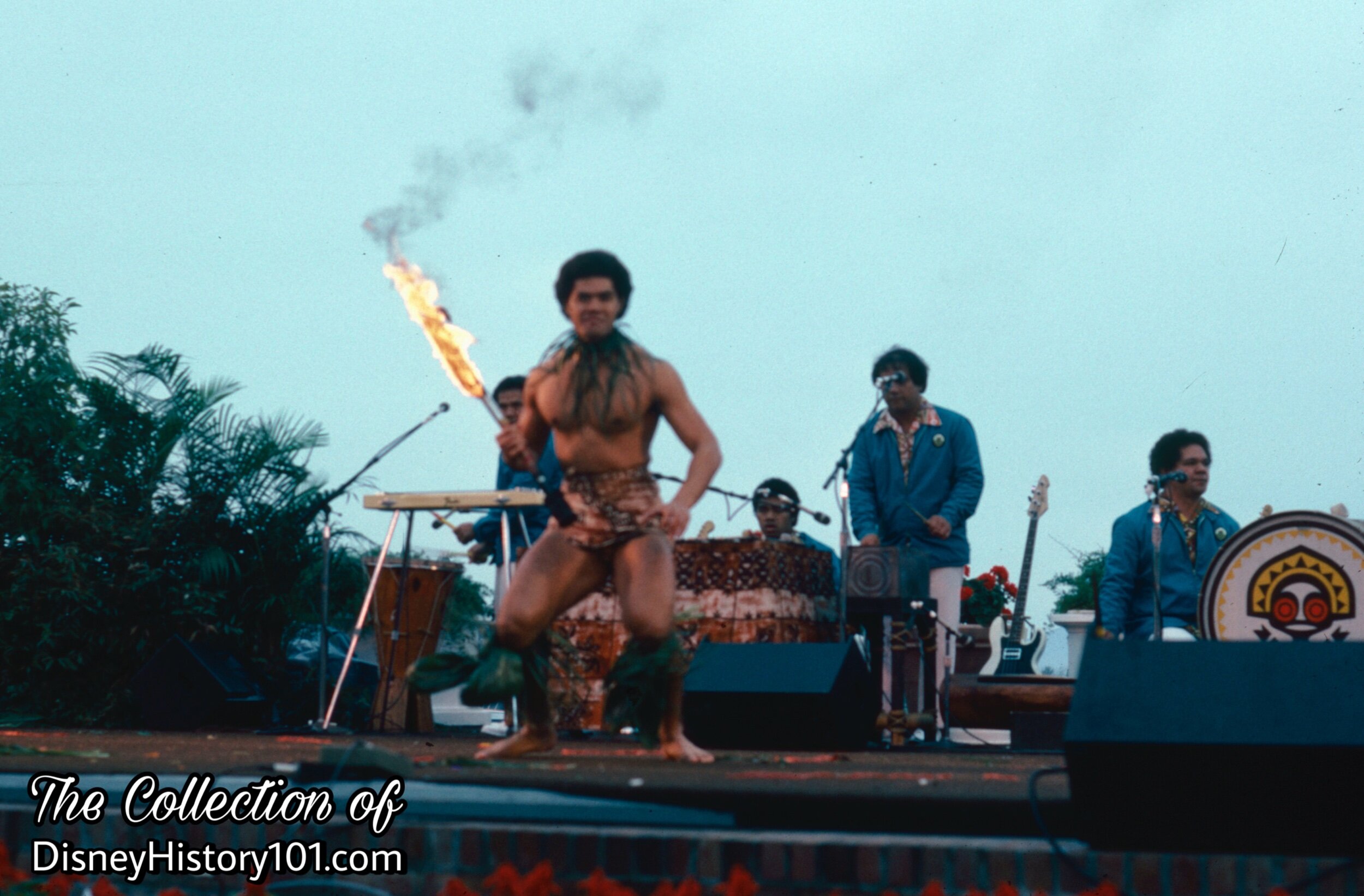
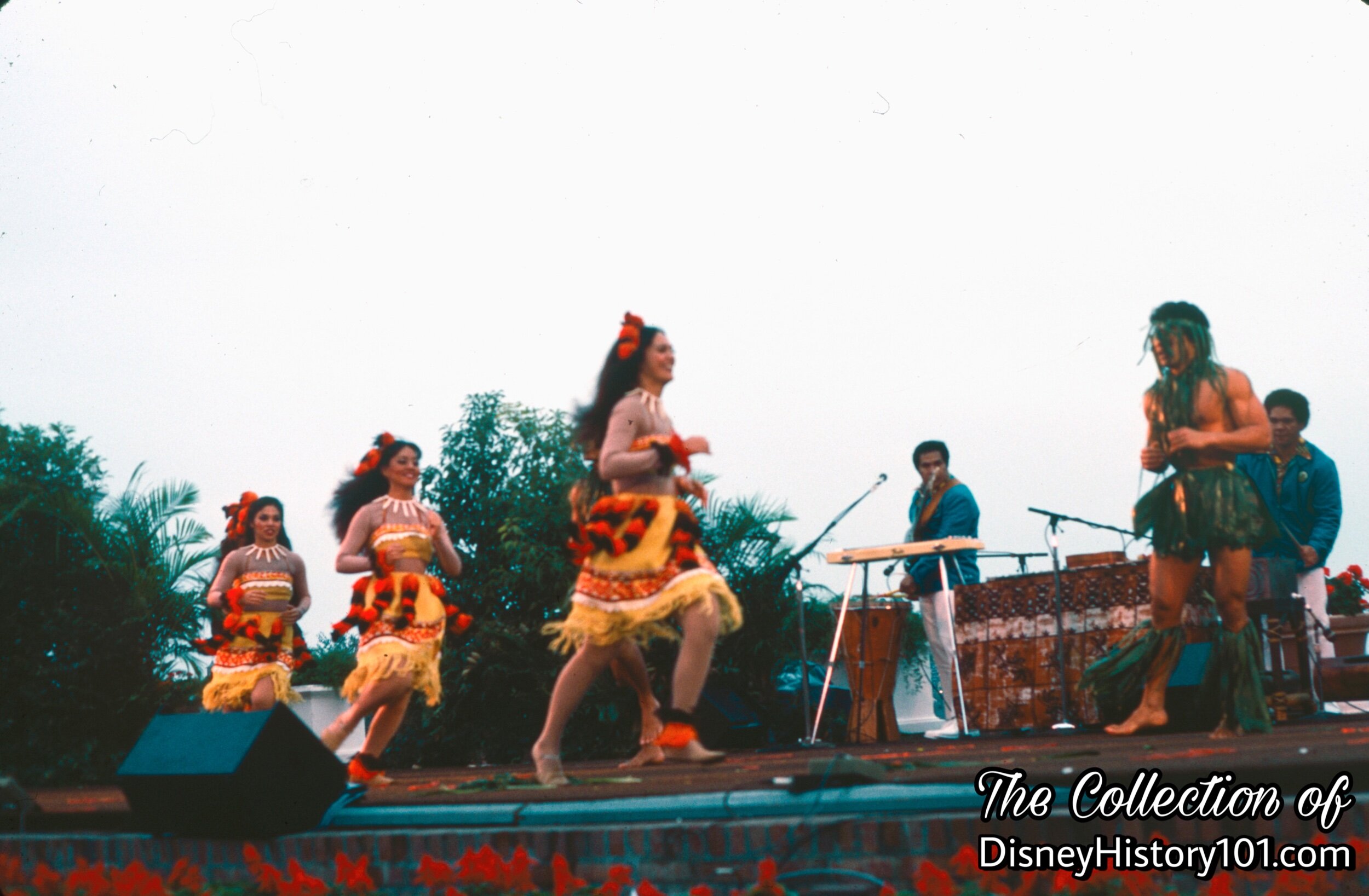
The show has gone through many variations over the years. There was “Mickey's Tropical Revue” in 1988. The show is currently called Disney’s Spirit of Aloha Dinner Show!
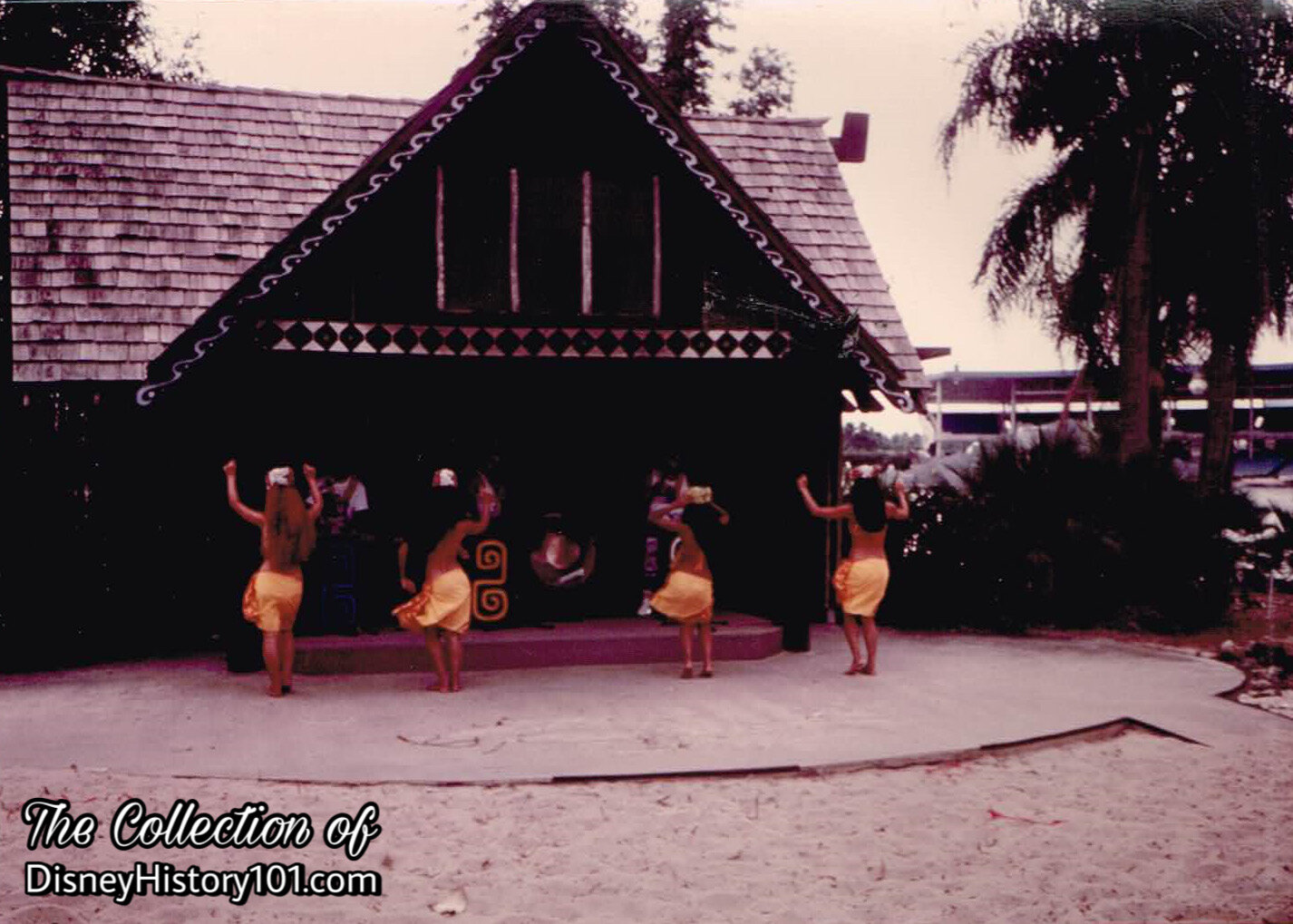
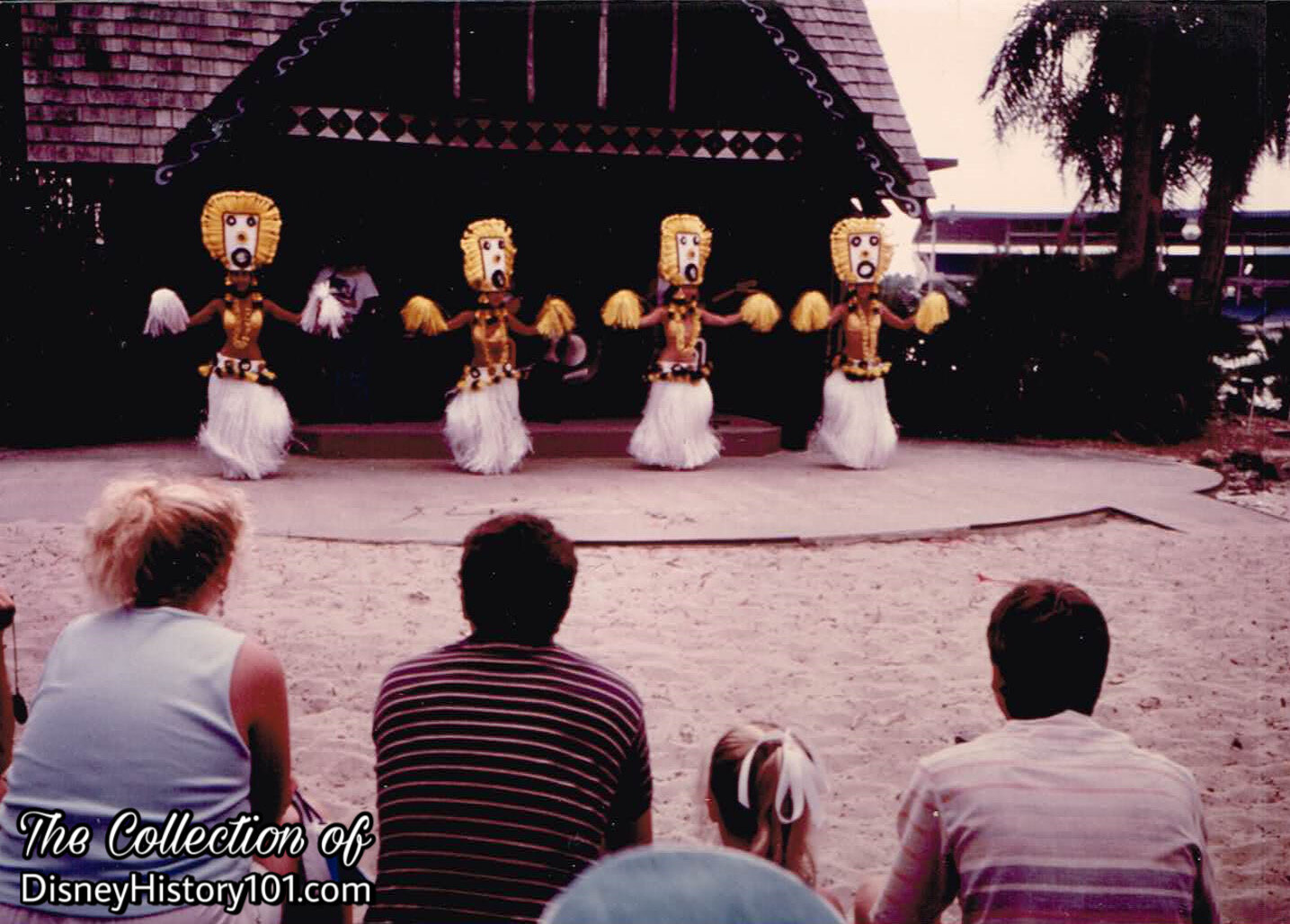

The Seven Seas Lagoon was a 220-acre man-made lagoon for sailing, swimming, and special nighttime shows. In the Electrical Water Pageant, “King Neptune and his creatures from the Deep create a brightly lit procession across Bay Lake and the Seven Seas Lagoon each evening. Leaping dolphins and fantastic sea serpents are a spectacular show of nighttime magic in the Vacation Kingdom.”

This show along with nightly fireworks would illuminate Disney World’s waterways.
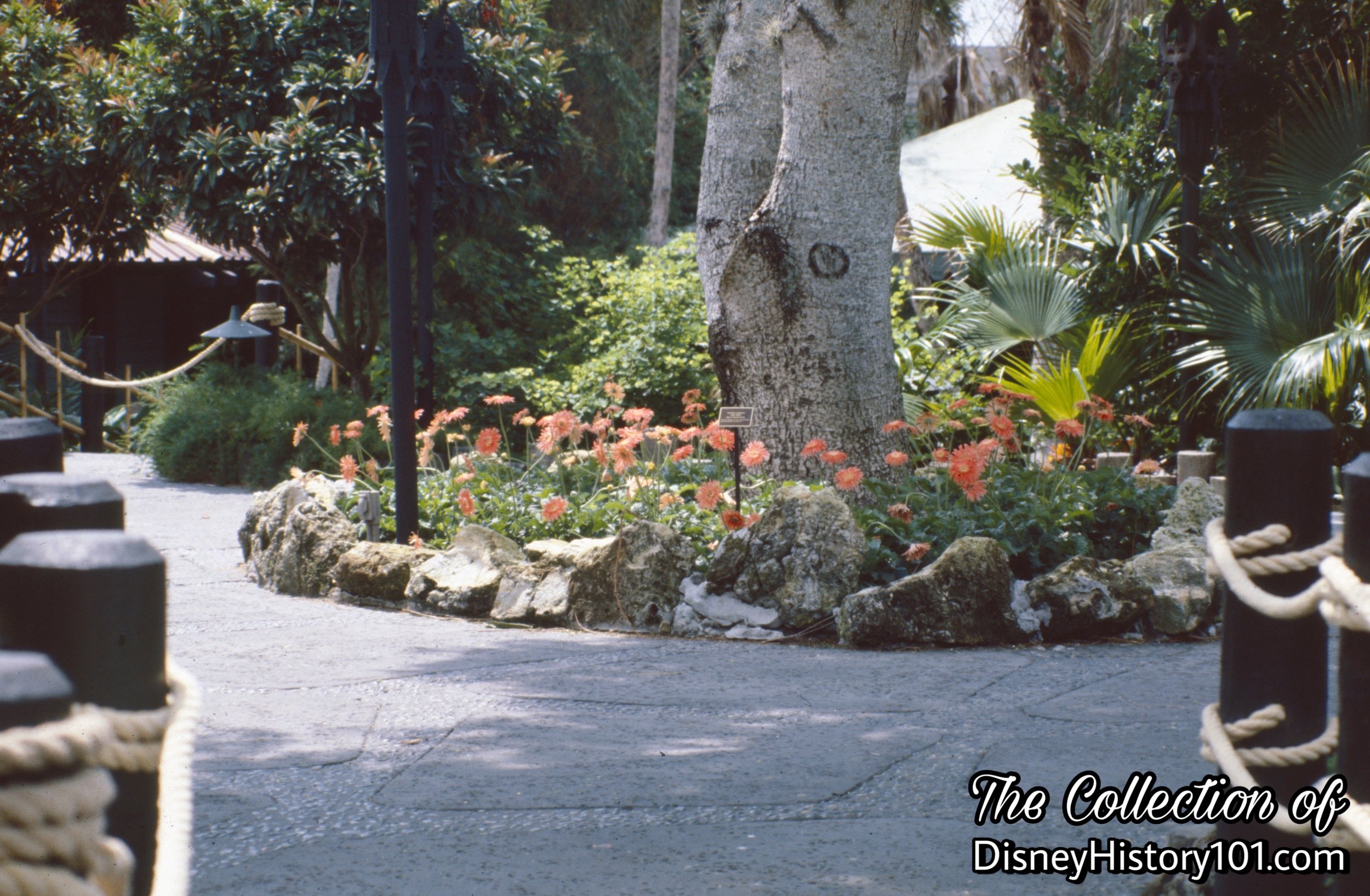
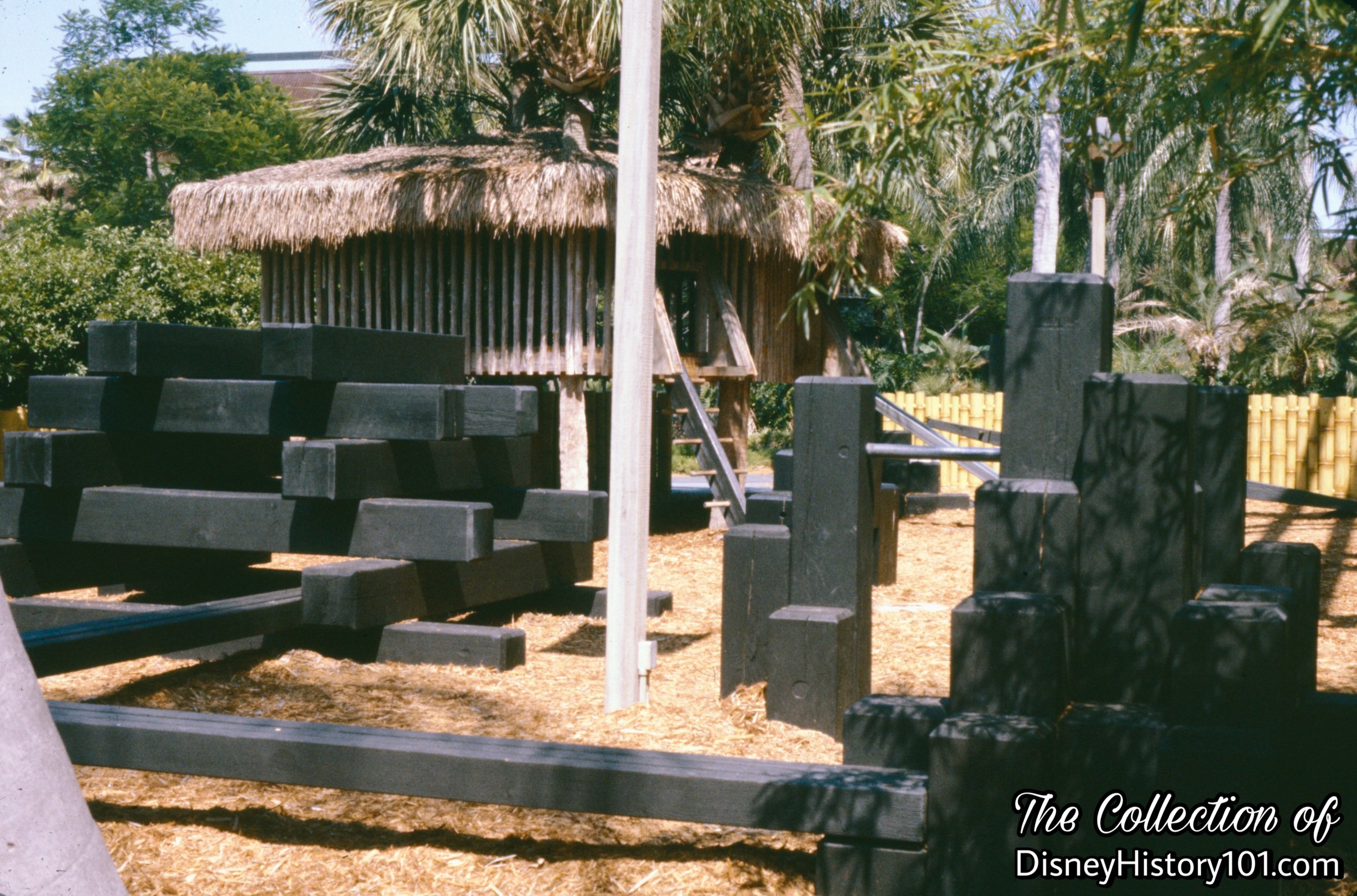
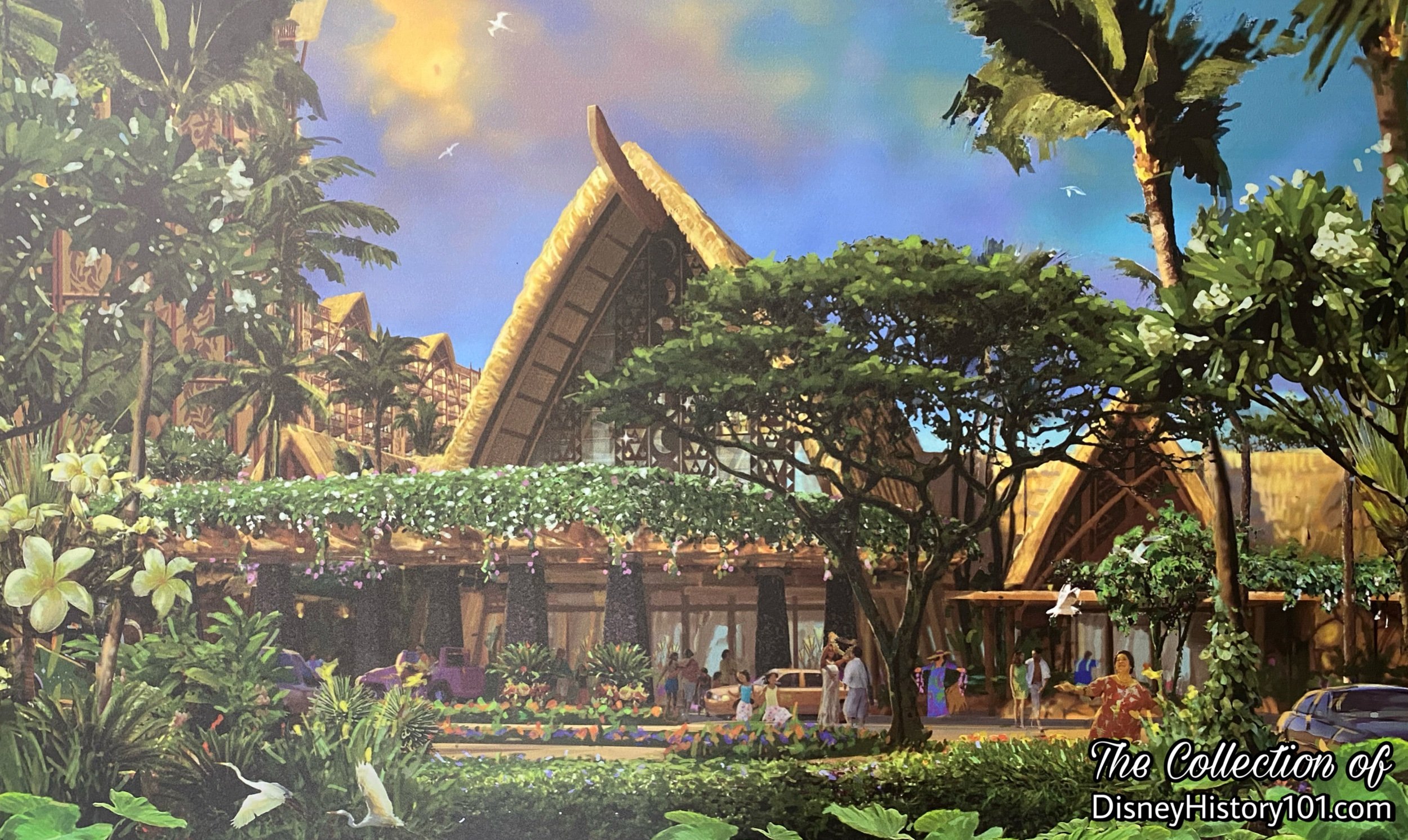
The Polynesian Resort has had a legacy of sorts. First, a trio of resorts were almost part of some future phase of Epcot Center - the Persian Theme Resort (with terraced decks), the Venetian Theme Resort (styled like St. Mark’s square), and the Asian Theme Resort (with a Royal Thai motif), in addition to motels (through negation with other corporations) to be located on the lakefront area.
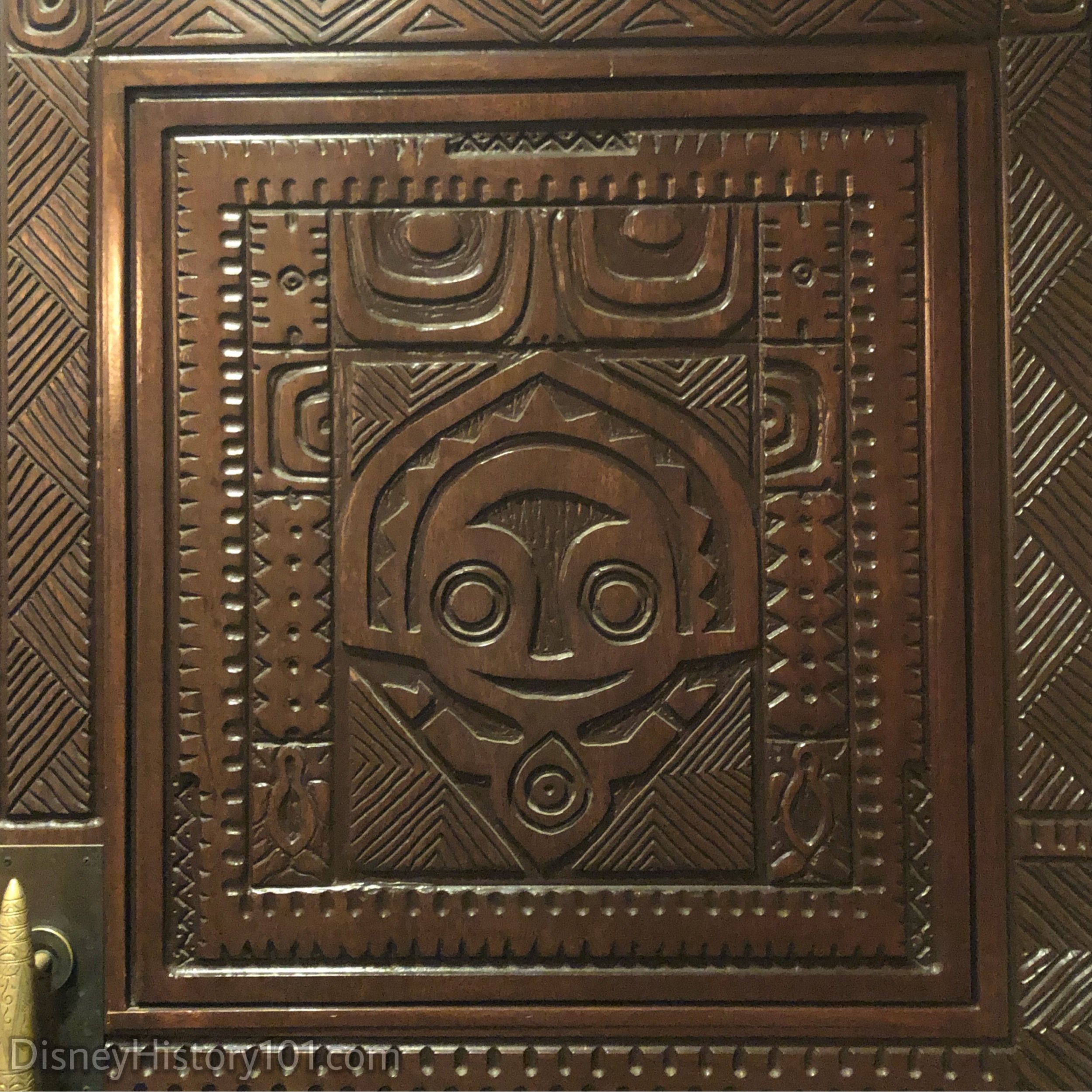
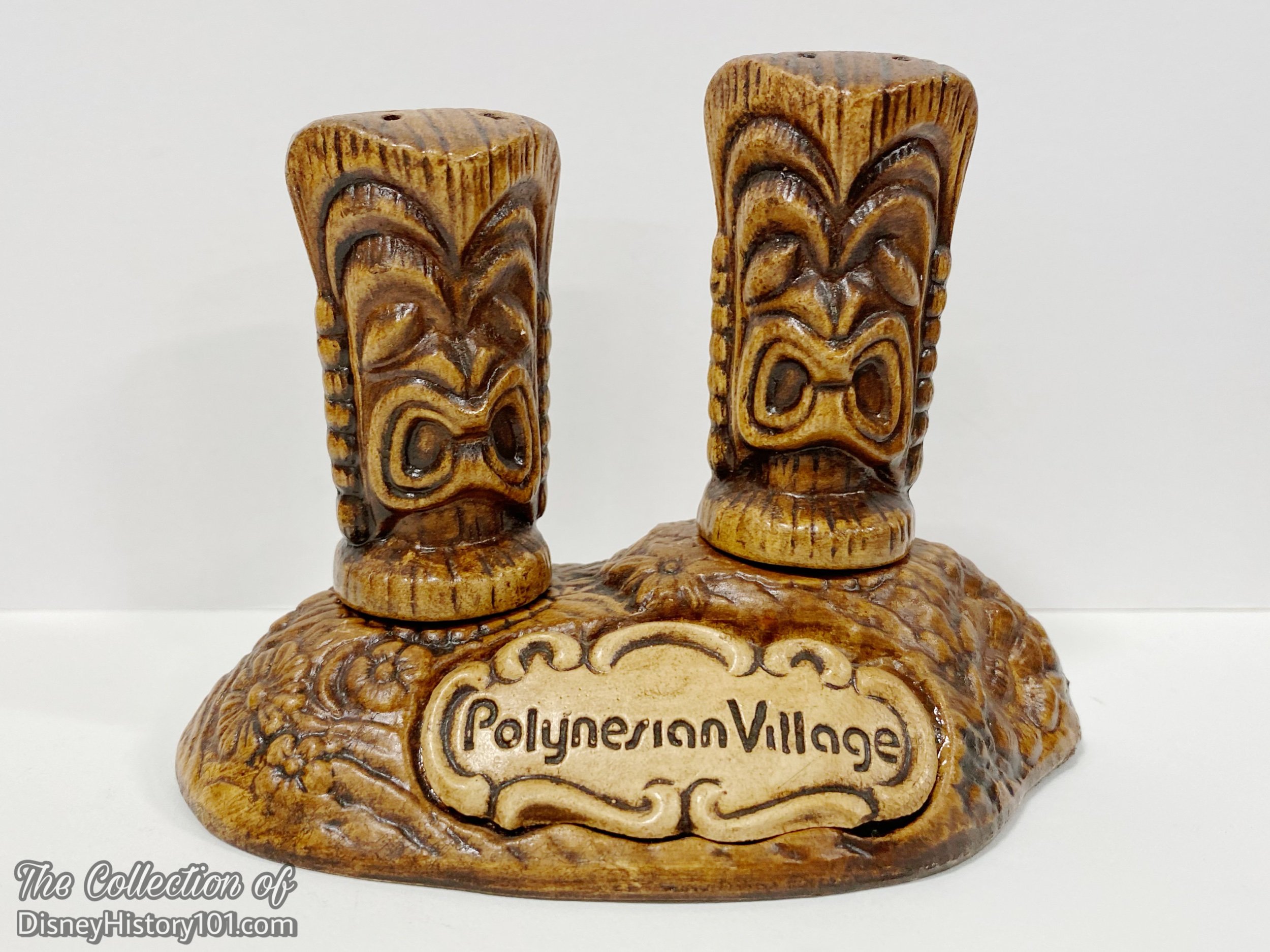
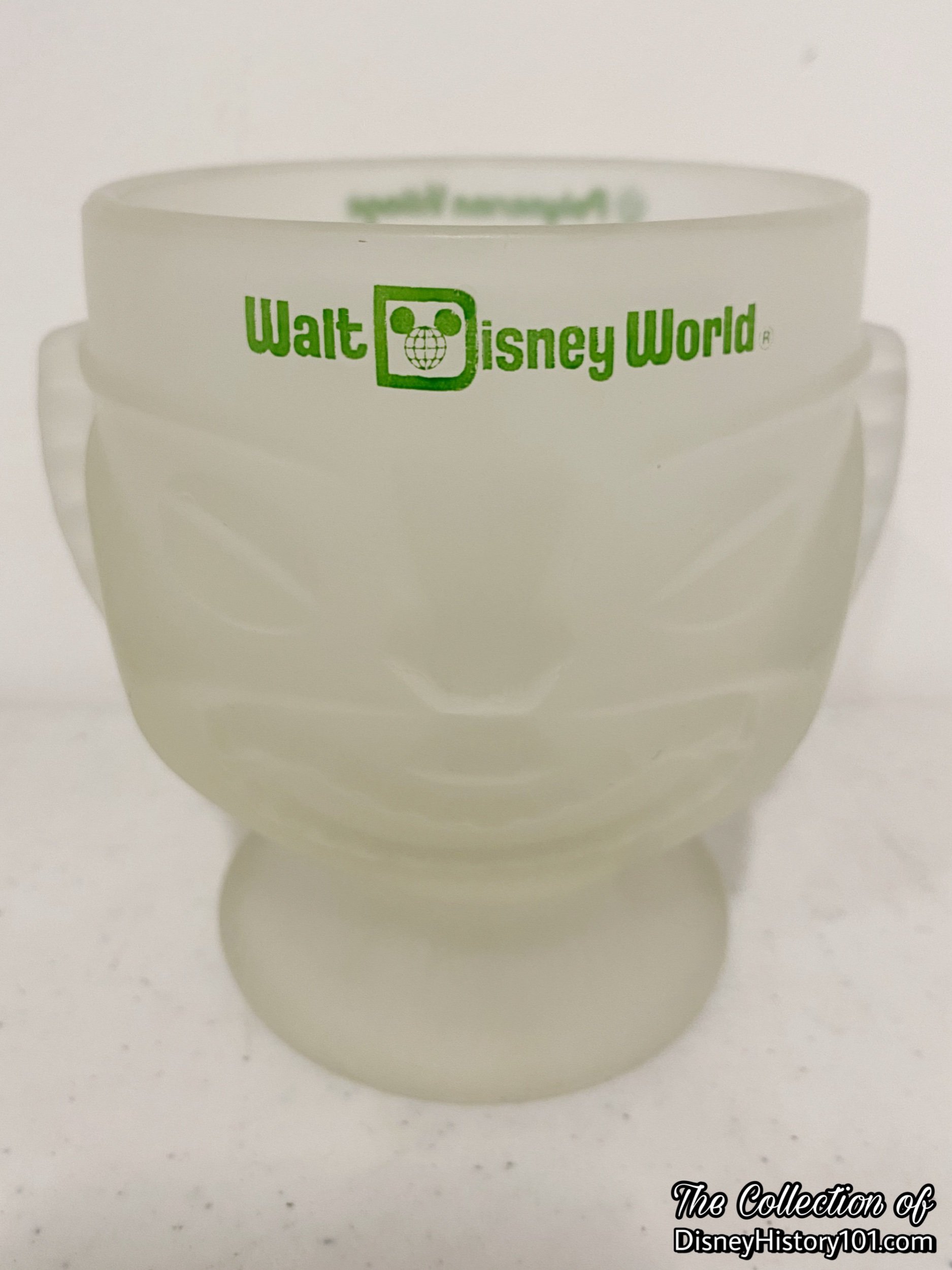

WALT DISNEY WORLD TENCENNIAL
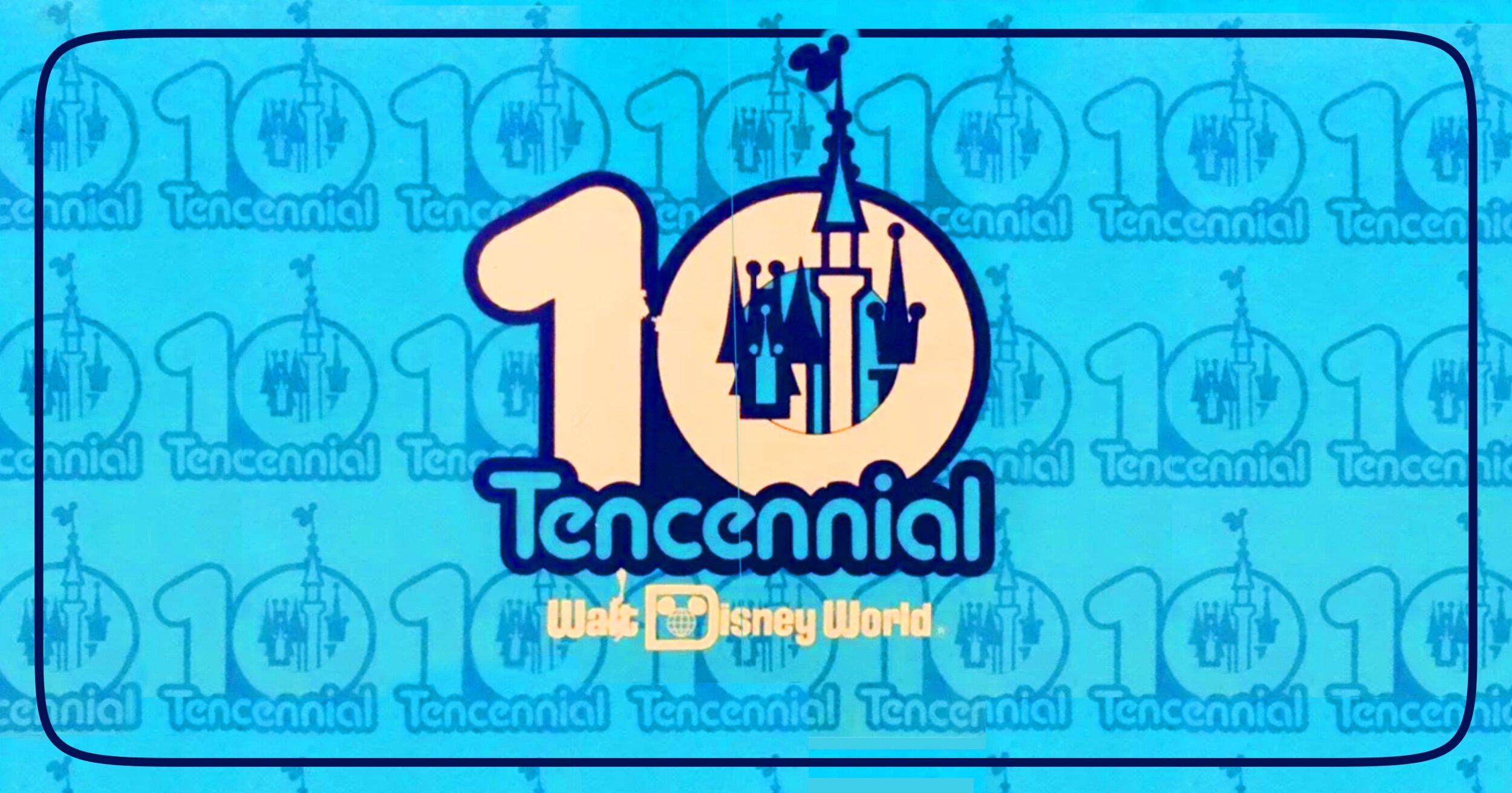
“A Year Long and a Smile Wide”
The year 1981, marked a “magical milestone” - The Magic Kingdom’s first ten years of operation, an event celebrated by more than 15,000 employees, and culminating with the “Happiest Happy Birthday Ever”! Walt Disney World turned 10 years old and was kicking off the biggest year long and smile wide Tencennial party the World had ever seen!
The Magic Kingdom’s Tencennial was a year-long event, which included “high stepping parades, live musical entertainment, great new shows and more”. The theme song “Disneyland is Your Land” (written and composed by Robert Moline for Disneyland’s 25th Anniversary) was reworked into the musical theme of Walt Disney World’s 10th Anniversary - “Disney World is Your World”!
Walt Disney Entertainment department developed new shows and parades for all of Walt Disney World. “Walt Disney World is Your World” - The Kids of the Kingdom and Walt Disney’s cast of characters presented a 30-minute musical journey through the Magic Kingdom’s lands, from the Tomorrowland Stage! The show was so successful and popular, that it was extended for years. However, below you’ll see Vintage Views of the original 1981 version of the show, starring the Kids of the Kingdom.
“The Tencennial Party” - Twice a day, Walt Disney’s cast of characters, musicians, and dancers trigger a “grand balloon release” in front of Cinderella’s Castle.
“The Walt Disney World Tencennial Inauguration Celebration”
Cast Members and their families were cordially invited to The Tencennial Inauguration Celebration, October 1-3, in the Walt Disney World Vacation Kingdom! Cast enjoyed three fun-filled days of celebration as guests of the Walt Disney World Vacation Kingdom with a party plan that included:
Thursday, October 1 - The Inaugural Dedication Ceremony and Premier Tencennial Parade. The Tencennial activities began at 9 a.m. Oct. 1, when Walt Disney World welcomed the first visitors of the second decade at the Main Street Train Station. Other events on the first included an introduction during the afternoon of the special Cinderella Castle character birthday party, first running of the Tencennial Parade at 4 p.m. and first performances of the “Disney World is Your World” musical shows. All of these would be daily happenings throughout the Tencennial Year until Sept. 30, 1982.
Friday, October 2 — Dedication of the new Orlando International Airport. A sneak preview of the EPCOT Center construction site. The Invitational Tencennial Inaugural Party and Dinner in the Magic Kingdom featuring a firework spectacular. The main event was a special invitational party on Friday night, Oct. 2 in the Magic Kingdom. The park closed to regular visitors and re-opened for Cast Members and other invited guests complete with fireworks and an aerial laser light spectacle, the Tencennial Parade, a fried chicken dinner and lots of other special activities. Several celebrities and officials joined the fun evening.
Saturday, October 3 - The Grand Tencennial Parade with a magnificent 1,076-member band. On Friday morning, there was a brief Epcot Center Preview primarily for out-of-town guests who will also attended the grand dedication of the new Orlando International Airport Terminal at 11 a.m. Oct. 2. A 1,076 piece marching band was added to the Tencennial Parade for a climax to the inaugural events on Saturday, Oct. 3 at 2 p.m.
These three days of Tencennial excitement was a birthday gift for Cast Members and a way of saying “thanks” for helping to make a decade of Disney dreams come true.
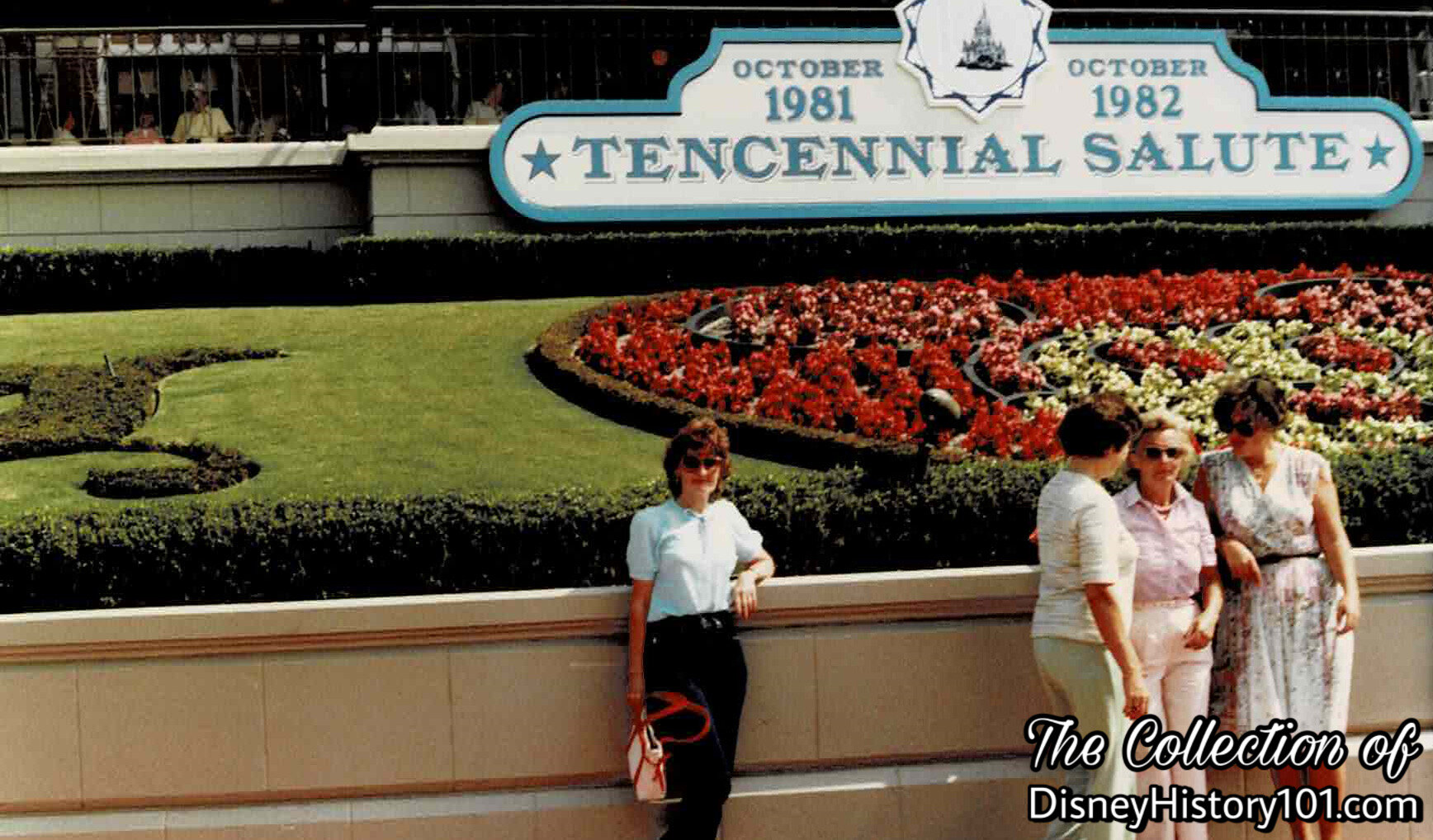
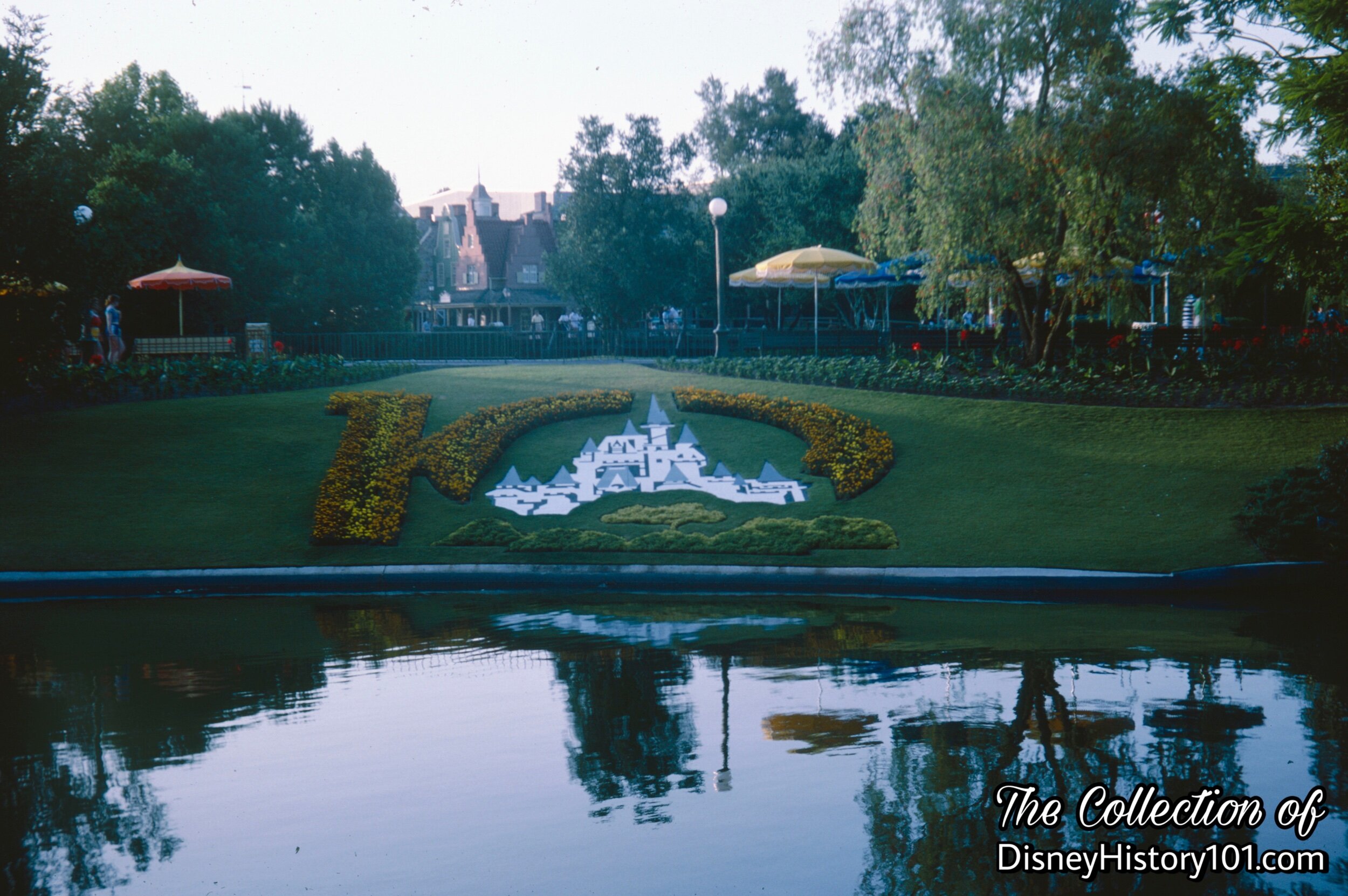

The floral garden (near Liberty Square) advertised the Magic Kingdom’s 10th year with this colorful arrangement.
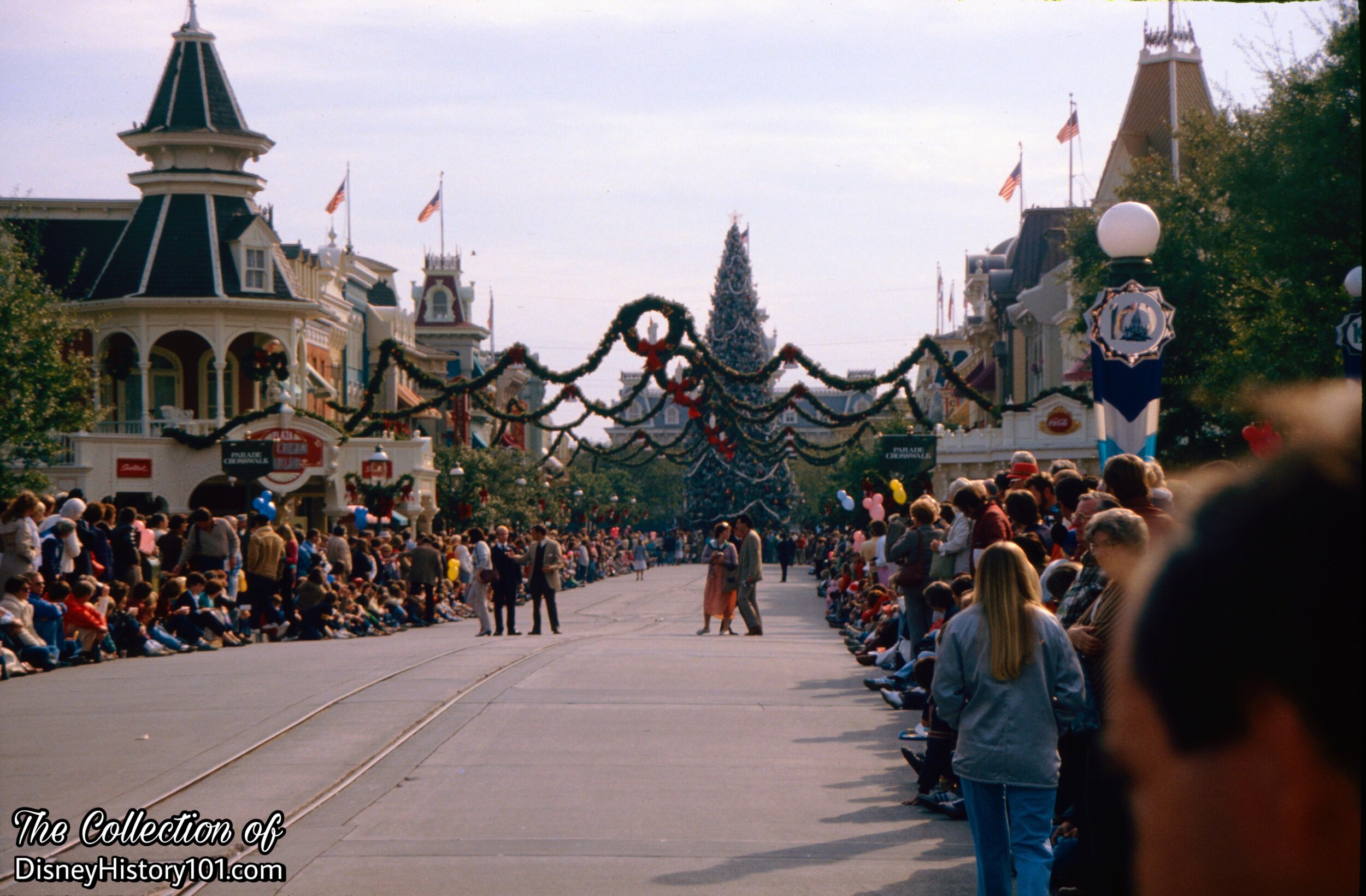
The winter season crowds await the start of The Magic Kingdom’s Tencennial Parade!
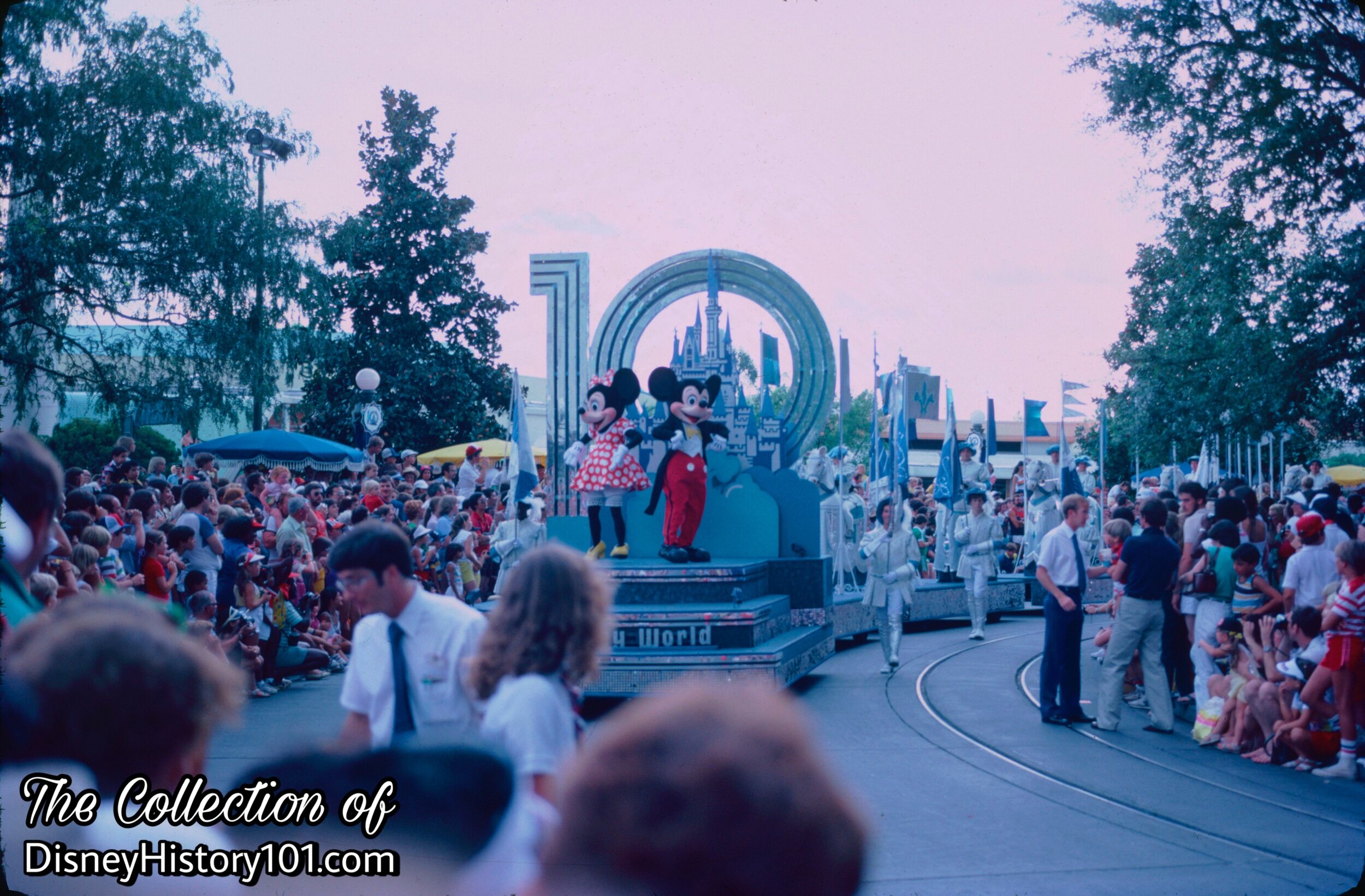
“Welcome to a land of dreams…a kingdom full of magical things!” Mickey Mouse and Minnie Mouse lead the parade procession of units (and their floats), as the spirit of the Magic Kingdom’s lands are commemorated. The horse-drawn car carries the caroling residents right down the middle of Main Street U.S.A.
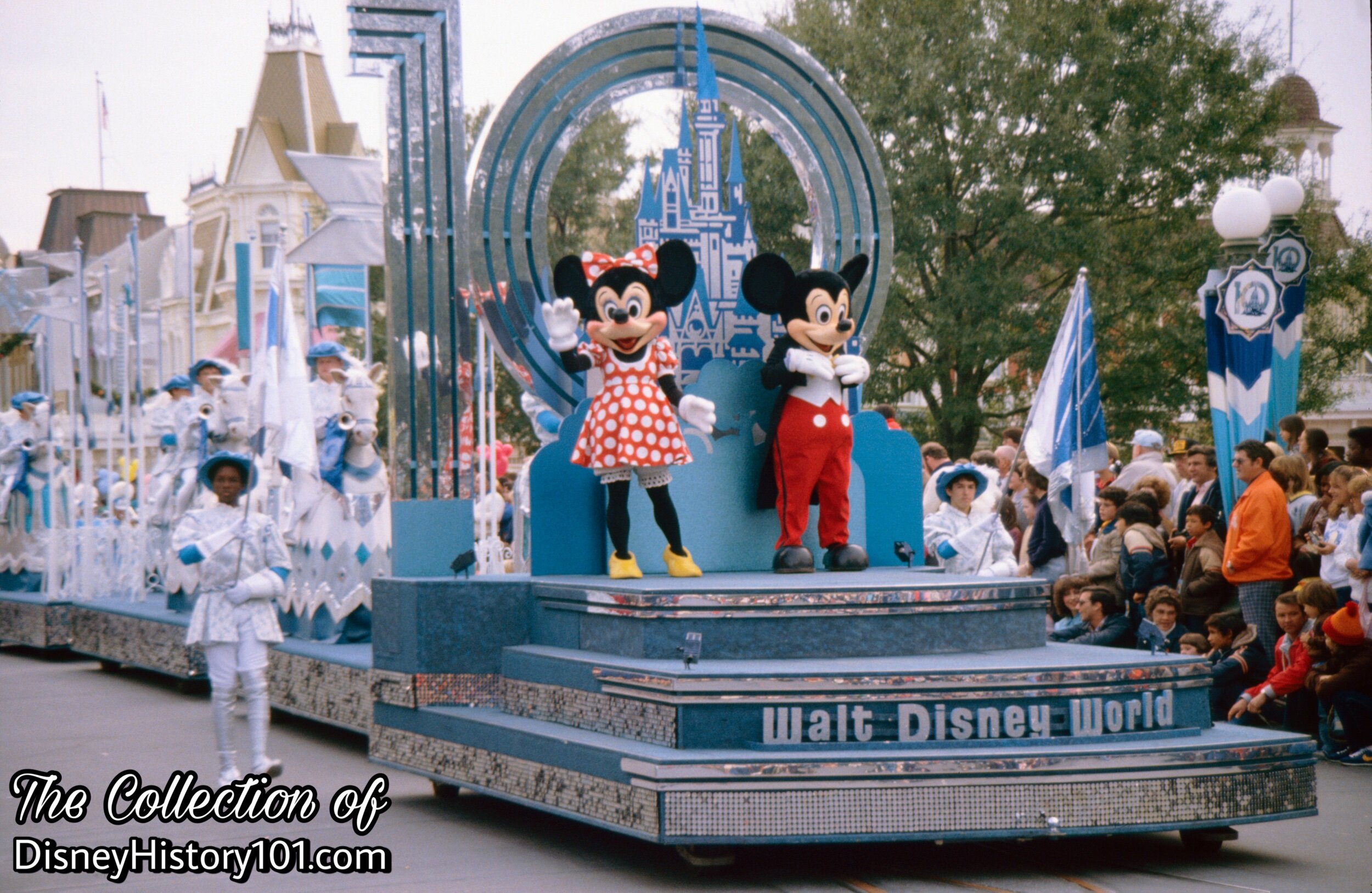
“Ten today, and goin' strong! We can't believe it's been that long! Come on and join the family! Walt Disney World is your world!”
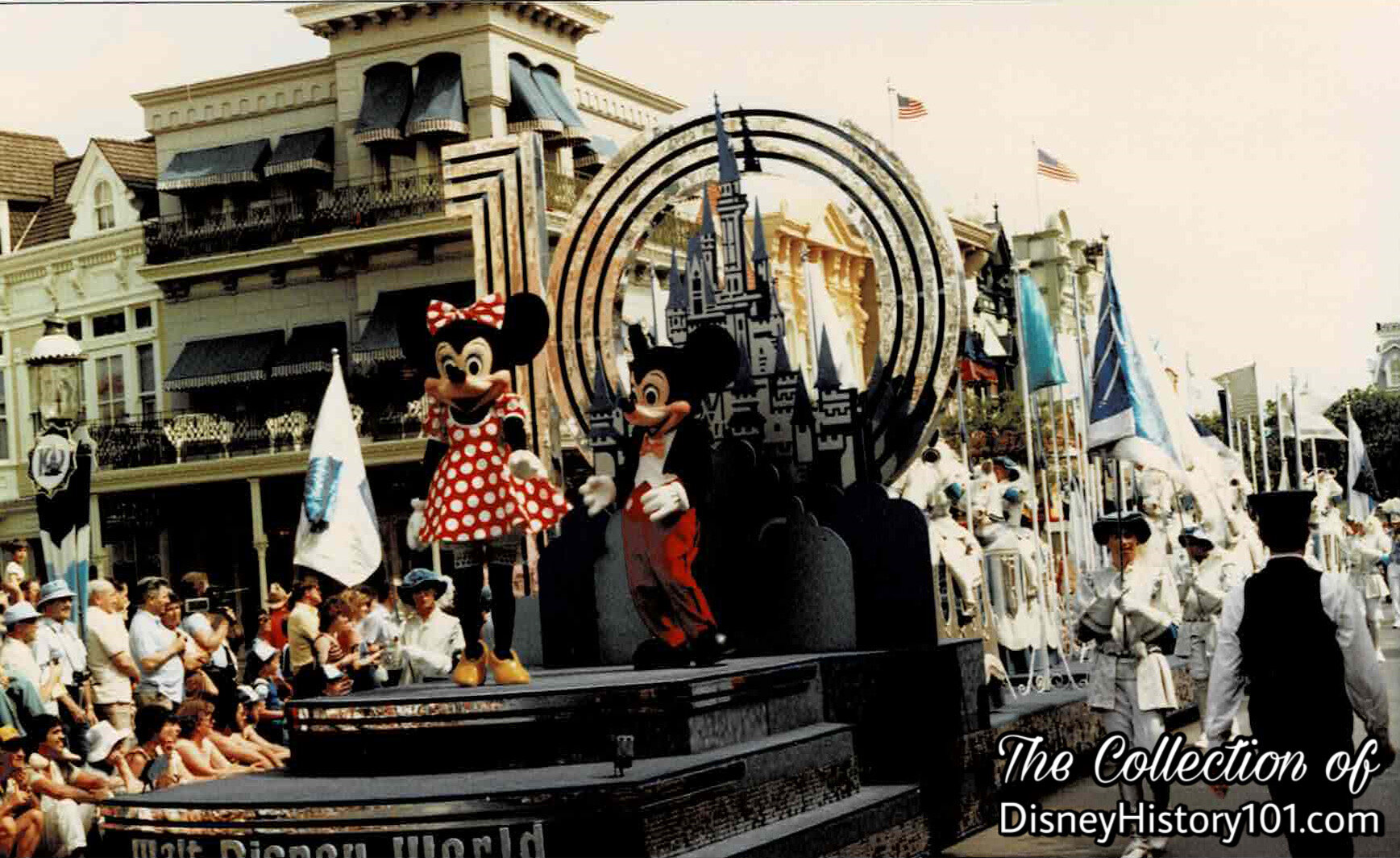
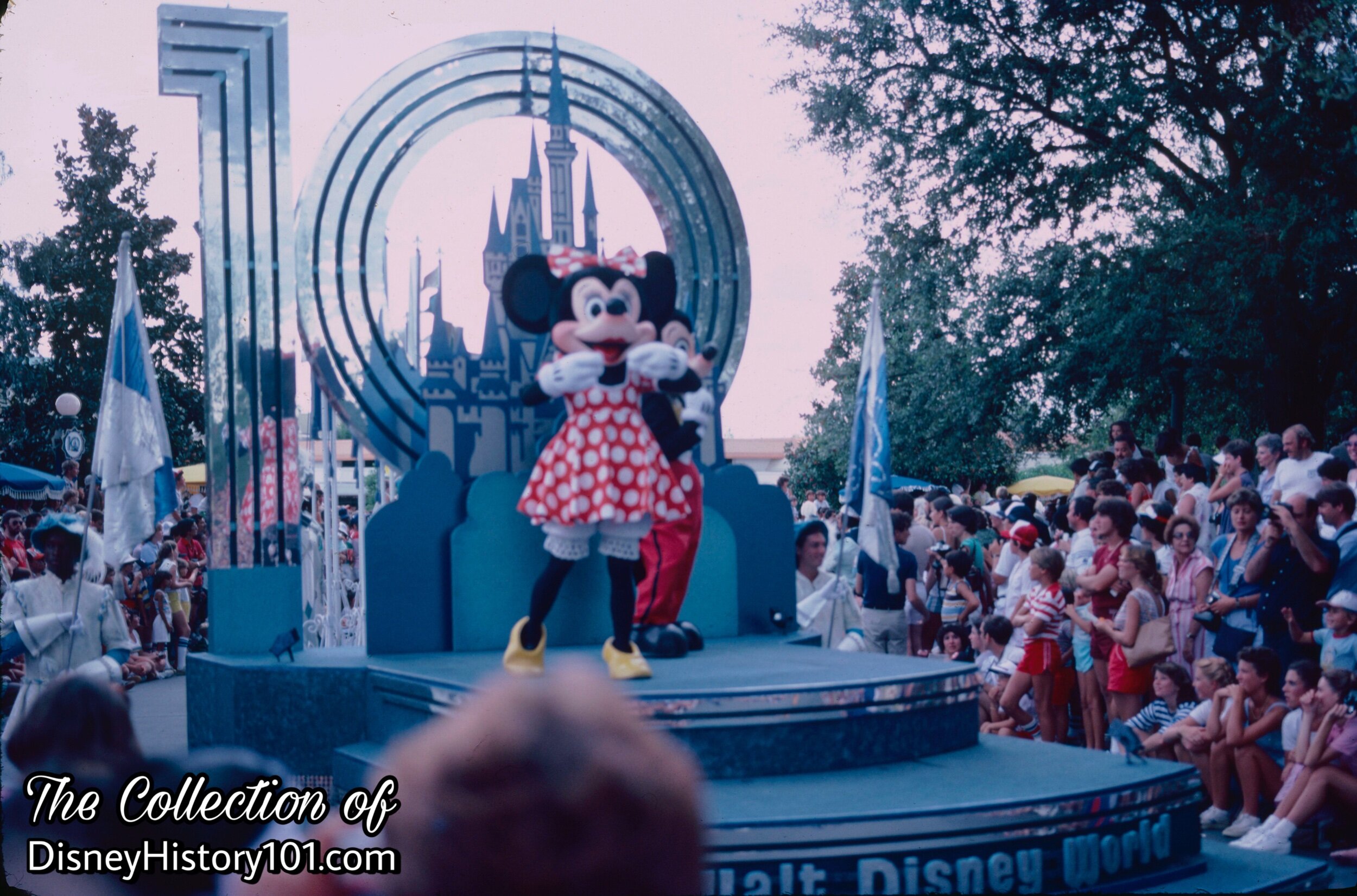
“Disney World - A Wonderland, for girls and boys, and moms and dads…a happy ever after land!…Disney World is your world!”
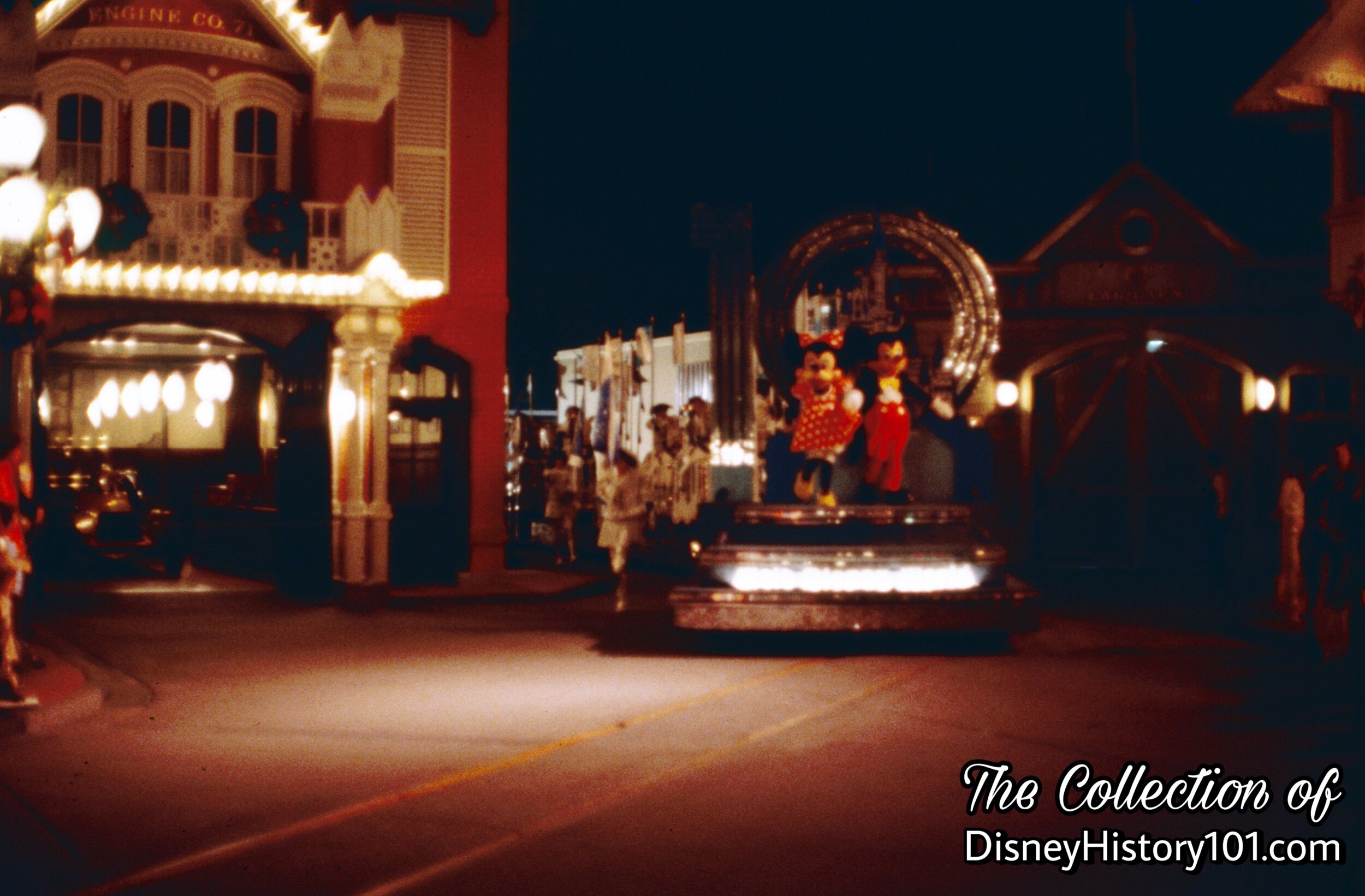

"A Year Long and a Smile Wide"
Each day, guests were selected to take part in the Tencennial Parade, and ride as honorary Grand Marshall in the electric horseless carriage! Here, Harvey chauffeurs comedian (and celebrity golfer) Bob Hope aboard a horseless carriage as he is honored as the Grand Marshall of the Tencennial Parade, held on October 1, 1981. Bob was present (and on Stage as Host) at the 1955 Oscars, when Walt Disney received the award for Walt Disney Studios for the “group effort” of the “many men that do their part” for the finest effort in Special Effects in a film.
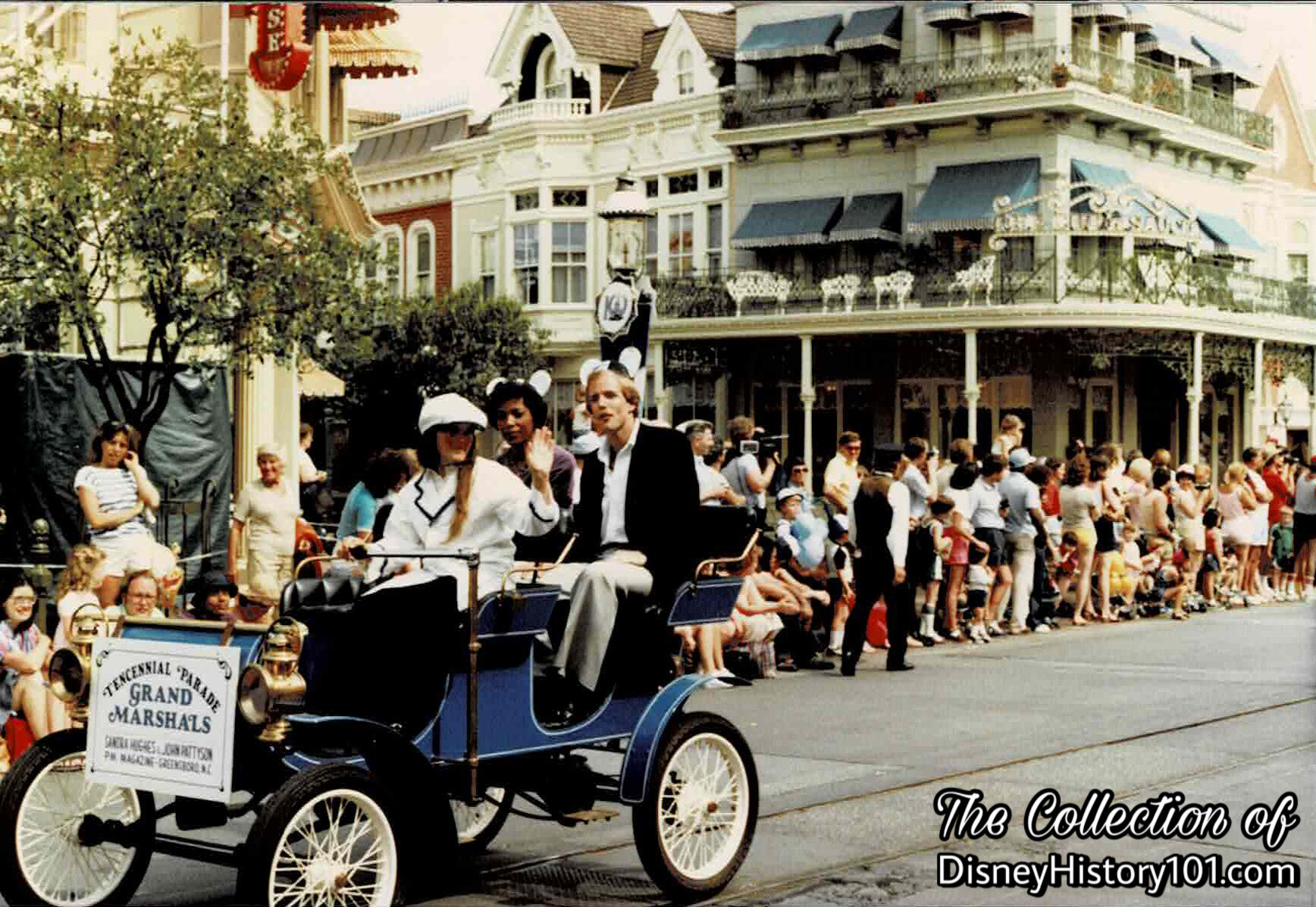
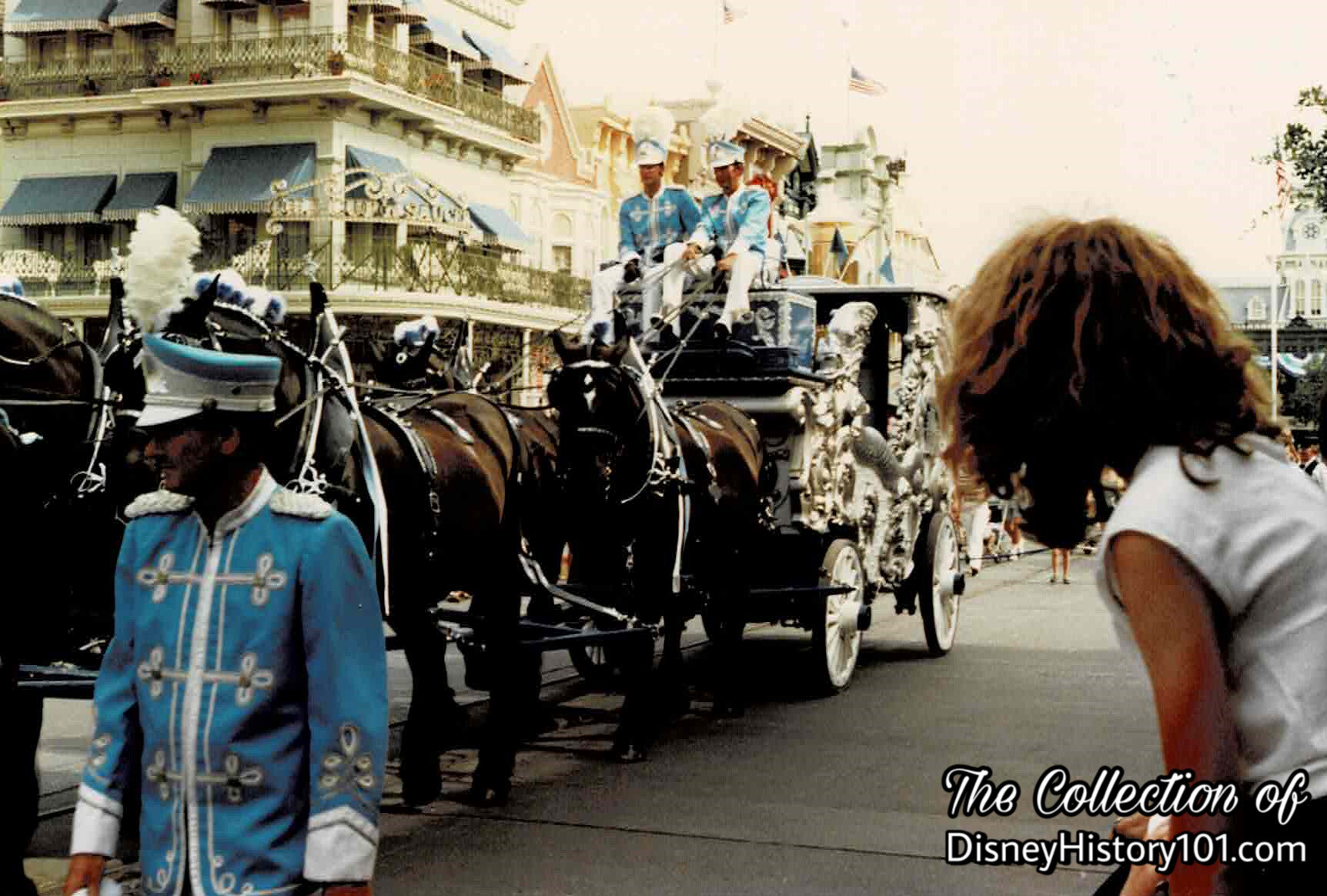
Finally, the traditional 1907-style steam-powered Disneyland Dragon Calliope with its pipe organ (and pianist) stops to delight crowds periodically! You may recollect that this was one of nine circus wagons that Walt Disney originally purchased from Bradley & Kaye’s Kiddieland amusement park in Beverly Park. Walt had this particular circa 1907 circus wagon redesigned, utilizing parts from other circus wagons. The result of the $50,000.00 overhaul, was the one-of-a-kind “Dragon Calliope”!
The Dragon Calliope was first seen in Disneyland’s Press Day parade and went on to be featured in numerous events over the years, beginning with the Mickey Mouse Club Circus Parade in 1955. The Dragon Calliope was also featured in at least one Walt Disney Production - “Toby Tyler or Ten Weeks With A Circus” released in Sarasota Florida on January of 1960. The Dragon Calliope was also notably featured among the circus-themed units in the Independence Day Parade at Disneyland, in 1962. Two years later, Walt Disney donated the circus wagons to the Circus World Museum in Baraboo, Wisconsin, but he kept his custom-built Dragon Calliope!
In 1980, the calliope received a minor refurbishment. None of the original insides were altered, except two fine whistles which were installed, (in order to increase its musical ability two full octaves)! The Disneyland 25th “Family On Parade” would be one of the Dragon Calliope’s final Disneyland appearances. When the parade ended, the Calliope (along its polished pipes) was shipped off to Walt Disney World Magic Kingdom (in Florida) to play a part on the Walt Disney World Tencennial celebration, before heading west again, and being utilized in Disneyland’s Circus on Parade!
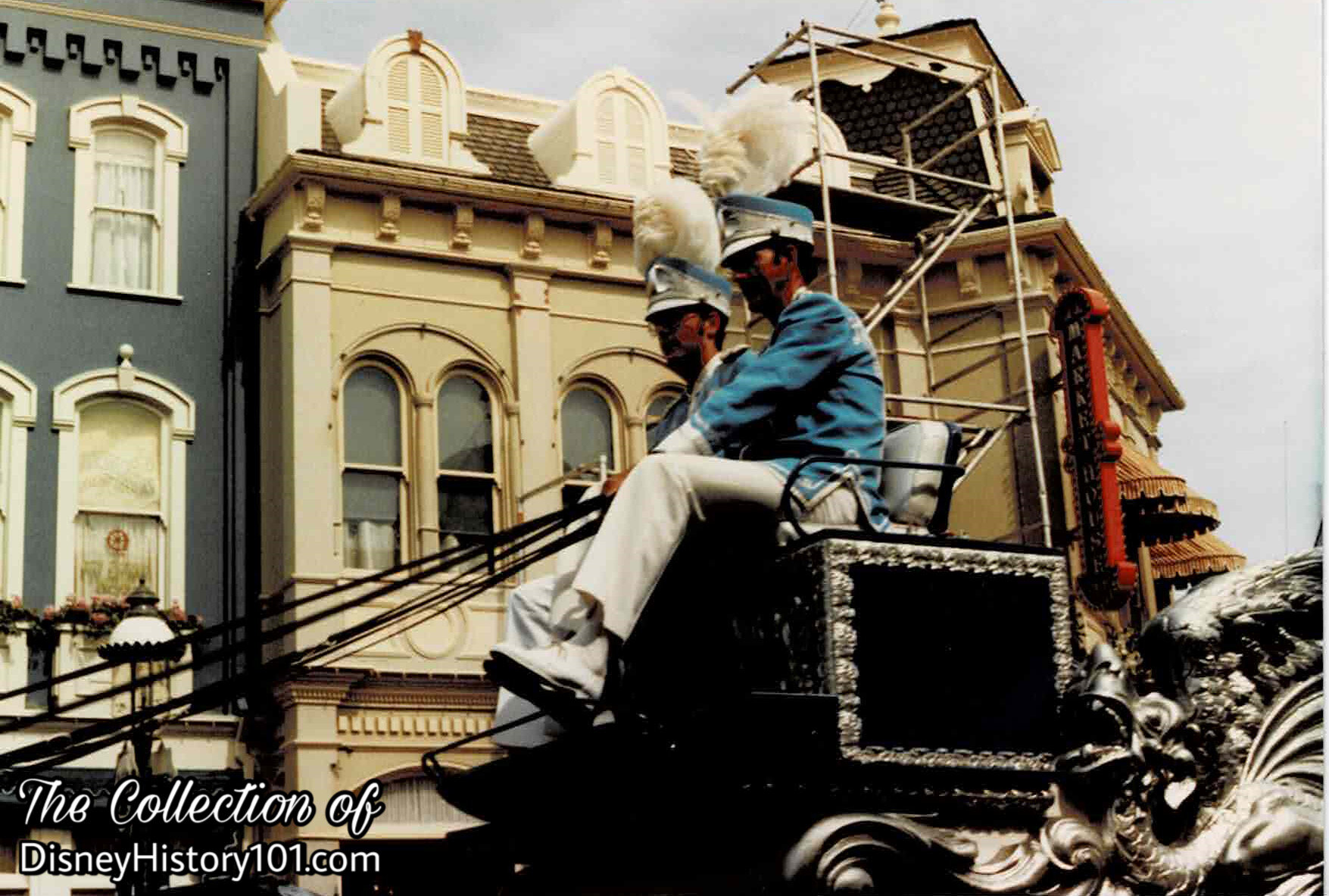

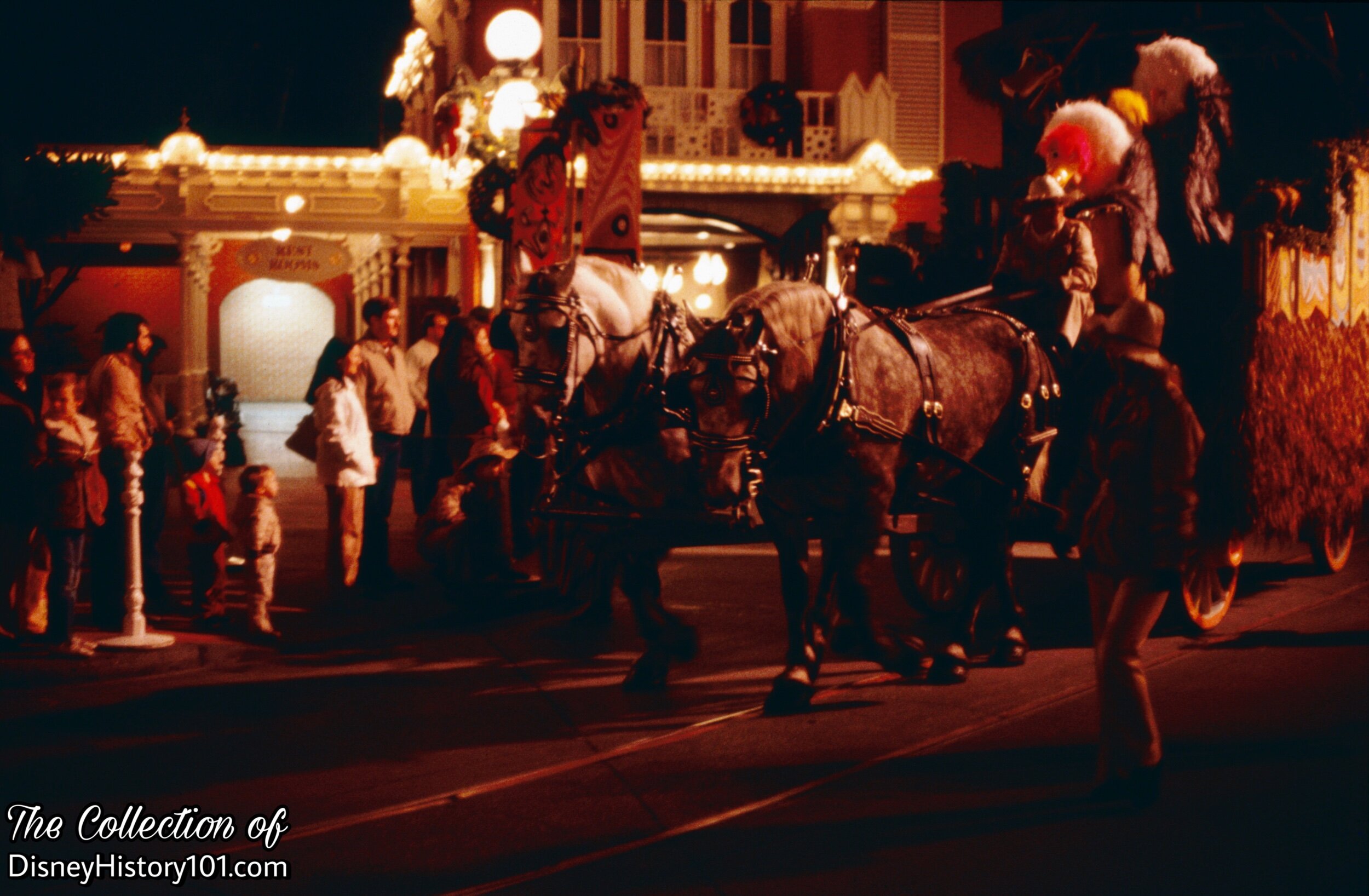
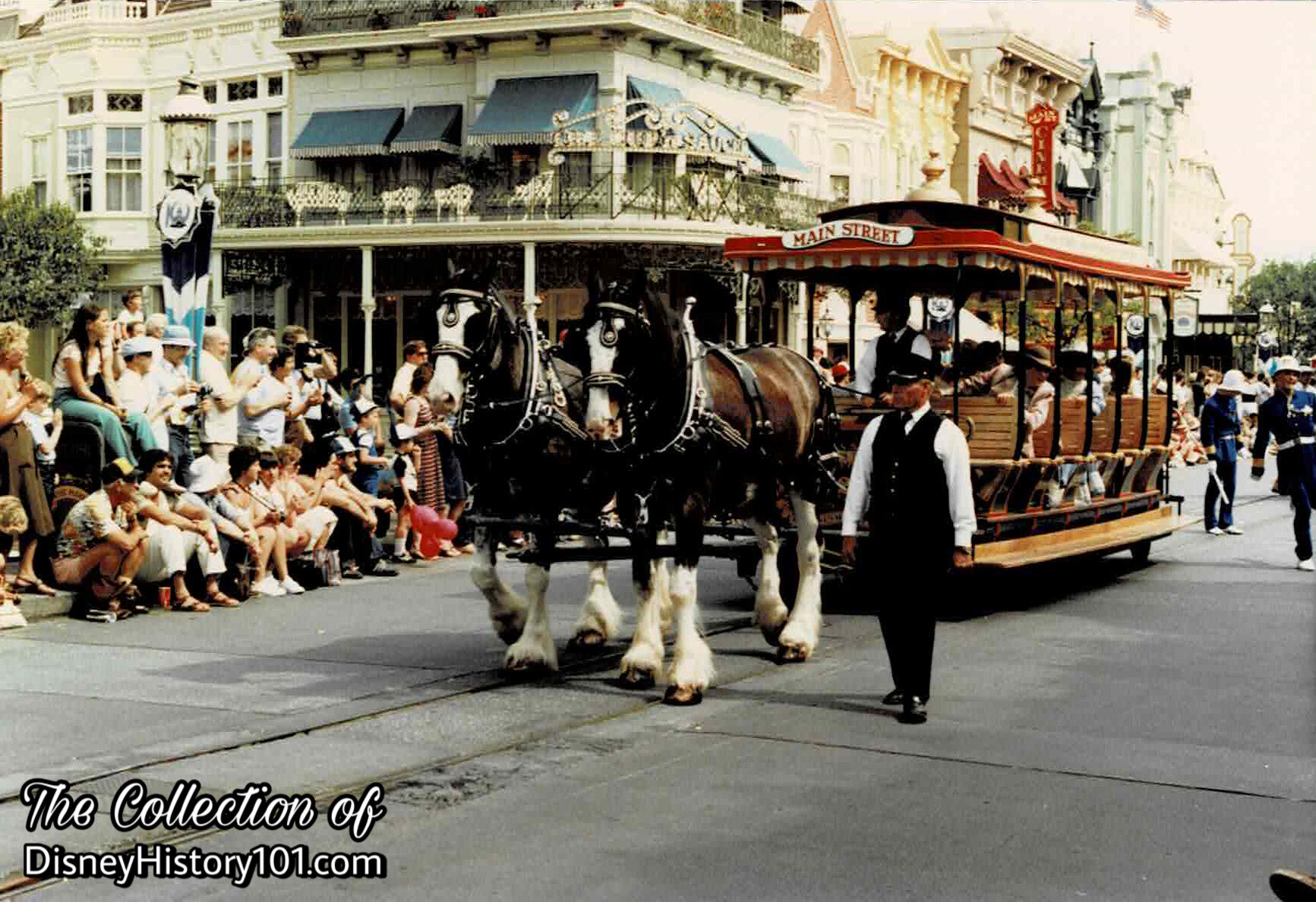
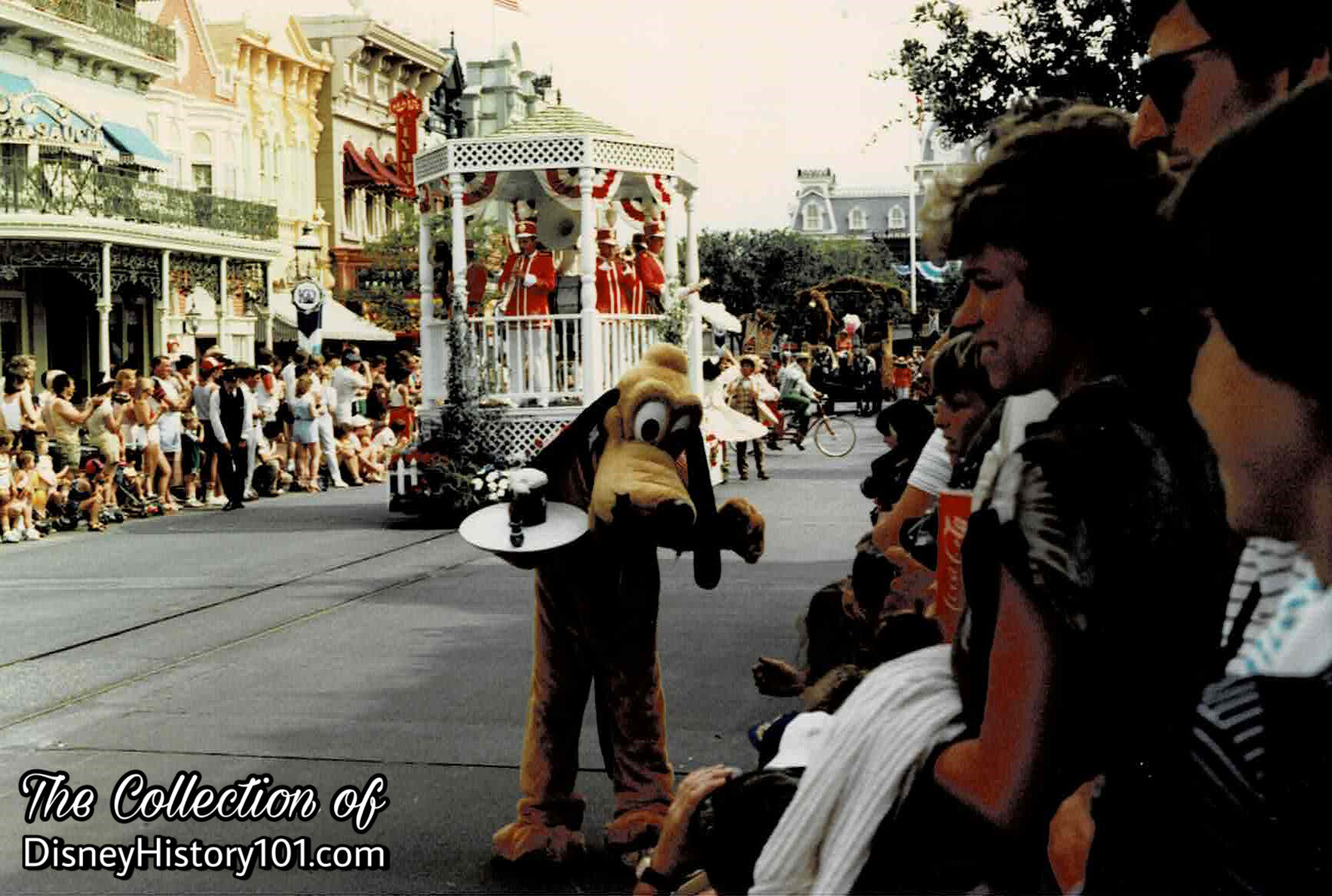
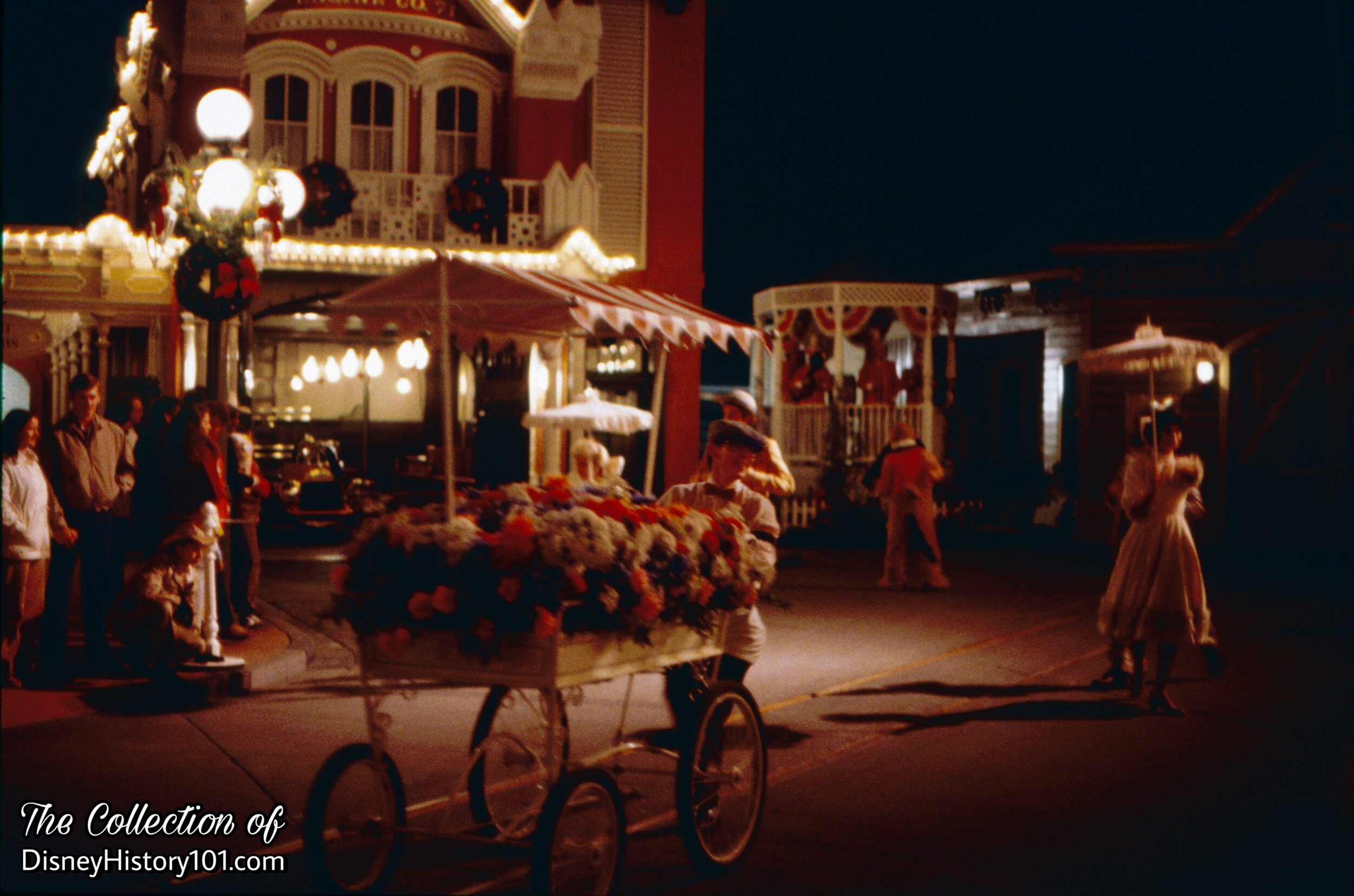

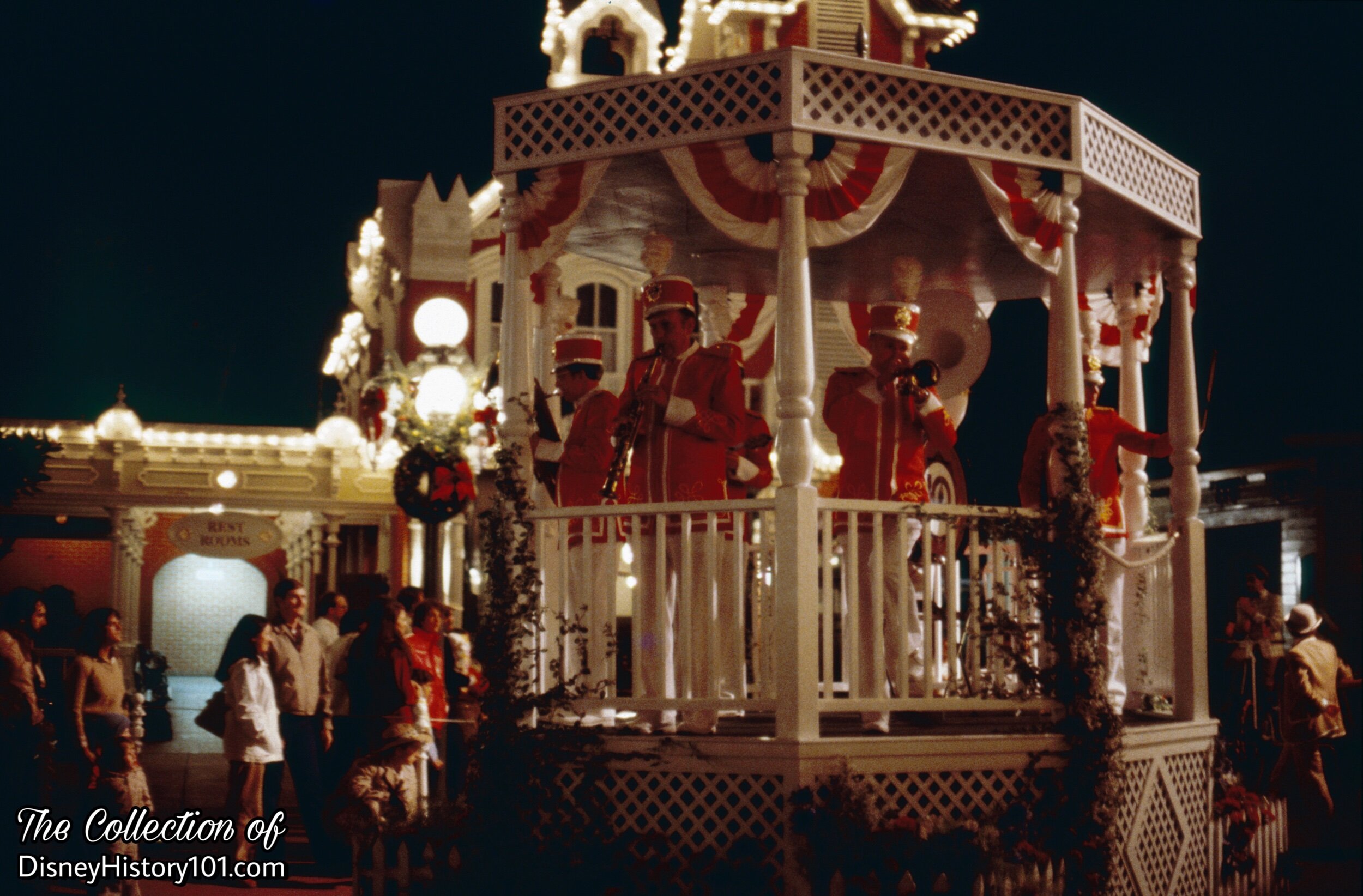

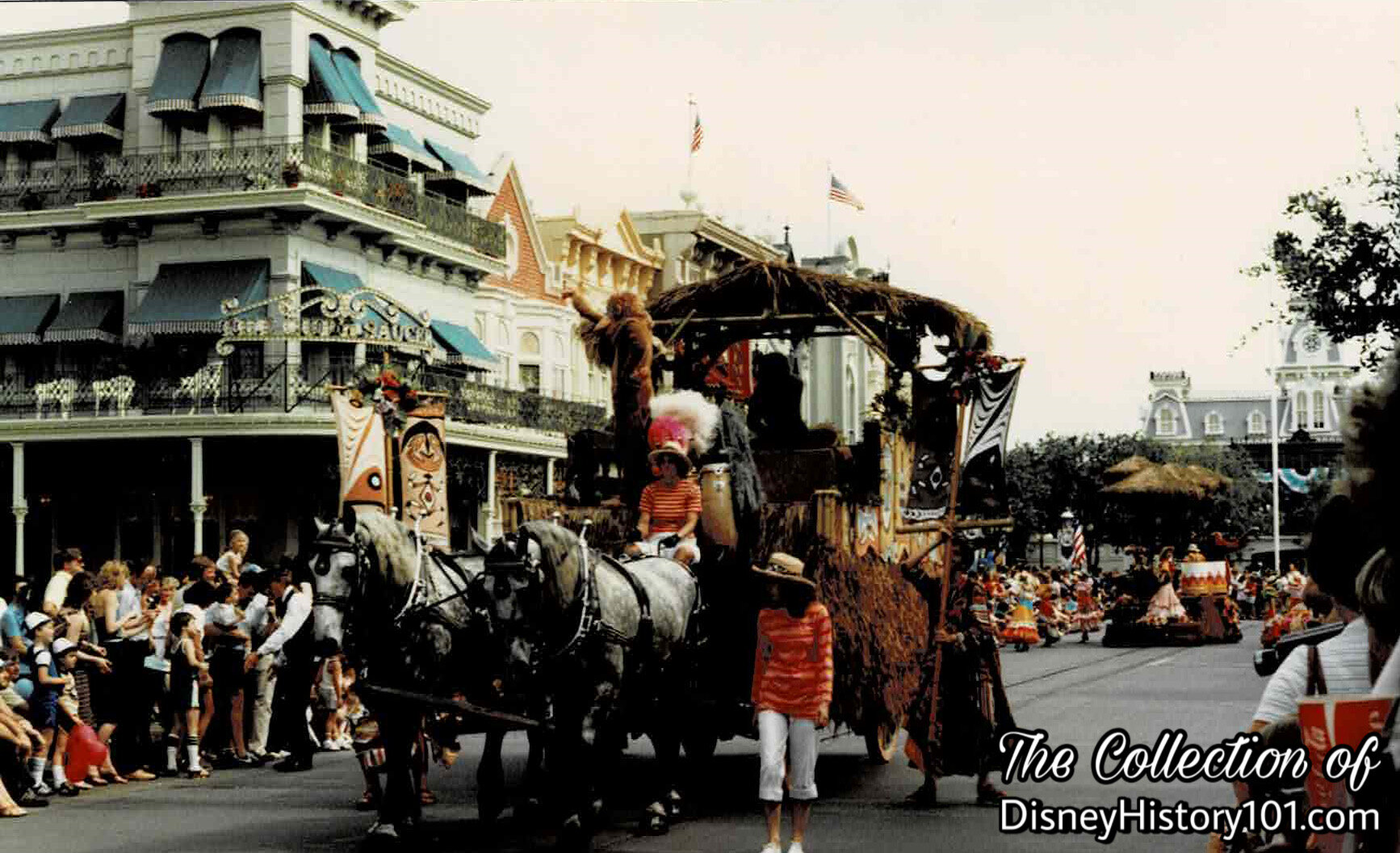
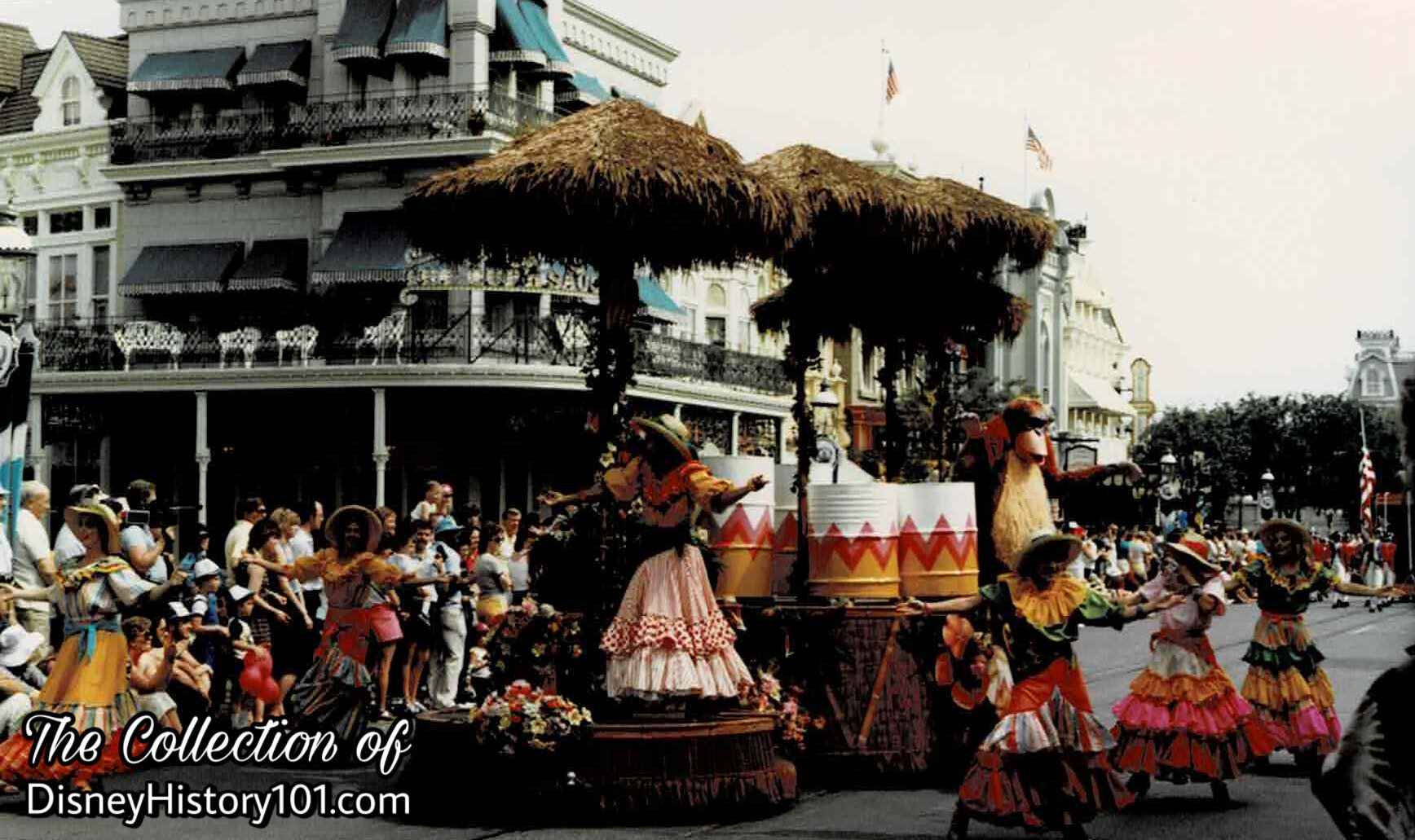



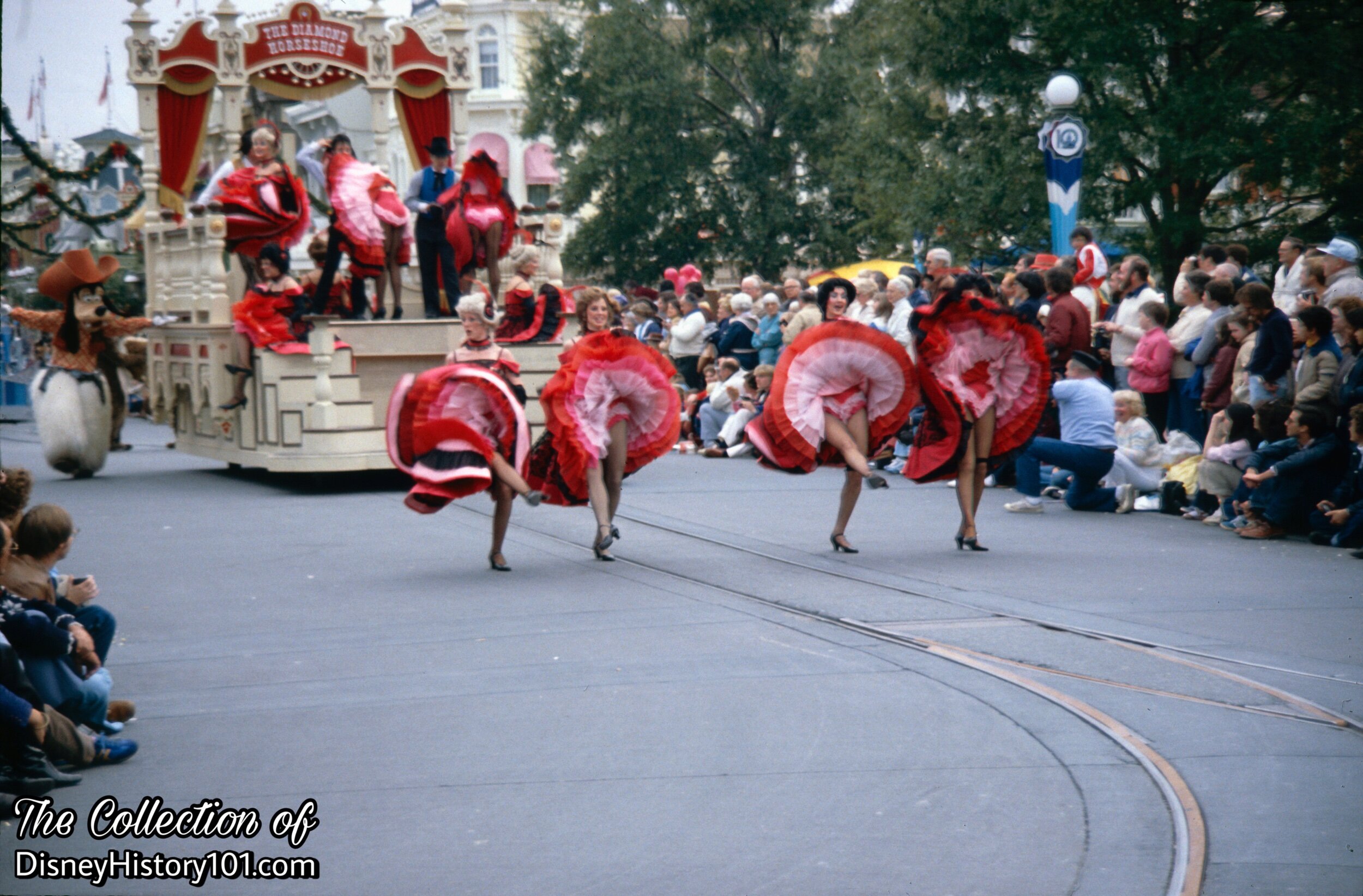
Subsequent floats would pay tribute to the various lands that make up Walt Disney World’s Magic Kingdom! The Diamond Horseshoe Revue chorus line advances the Frontierland Unit down the parade route.
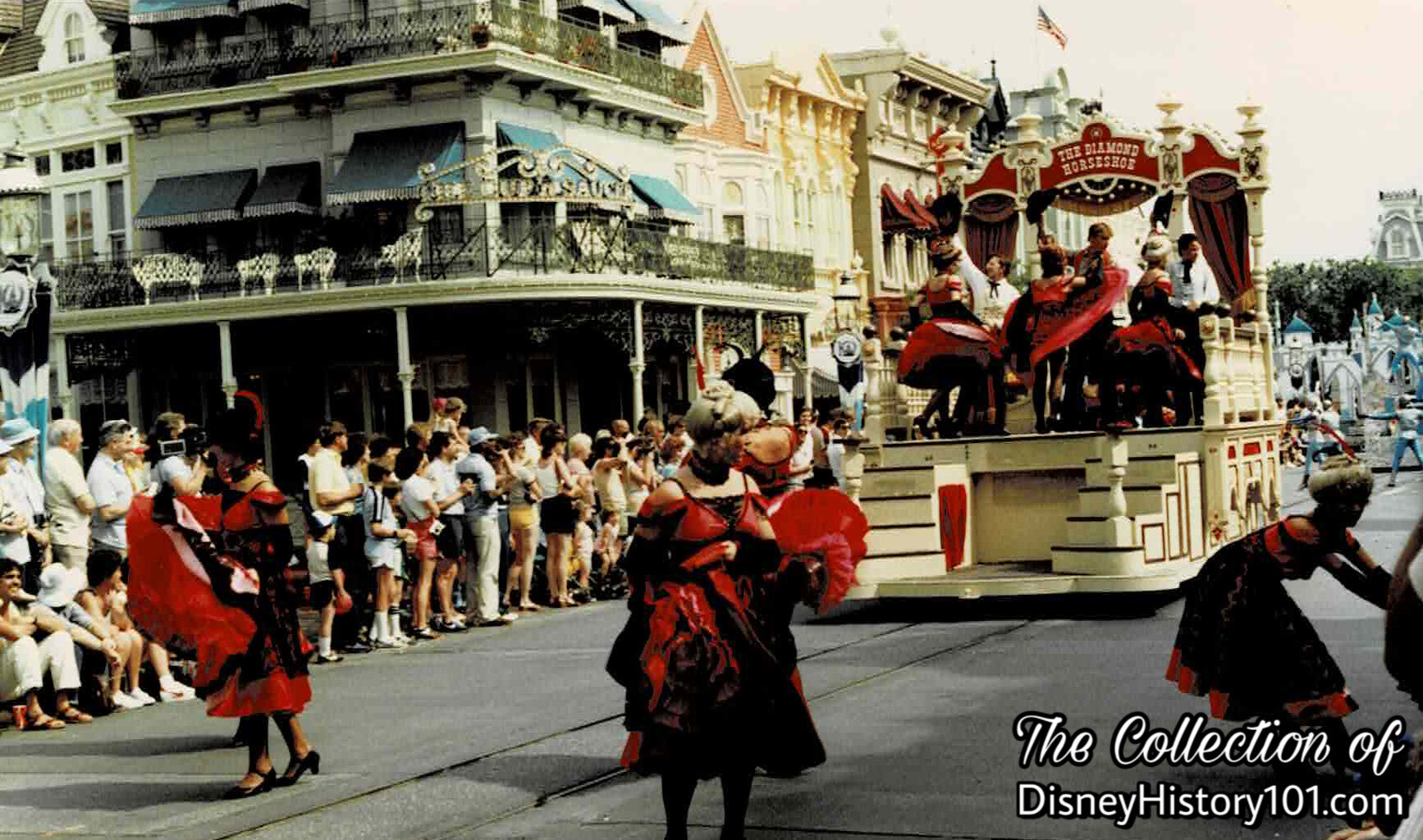
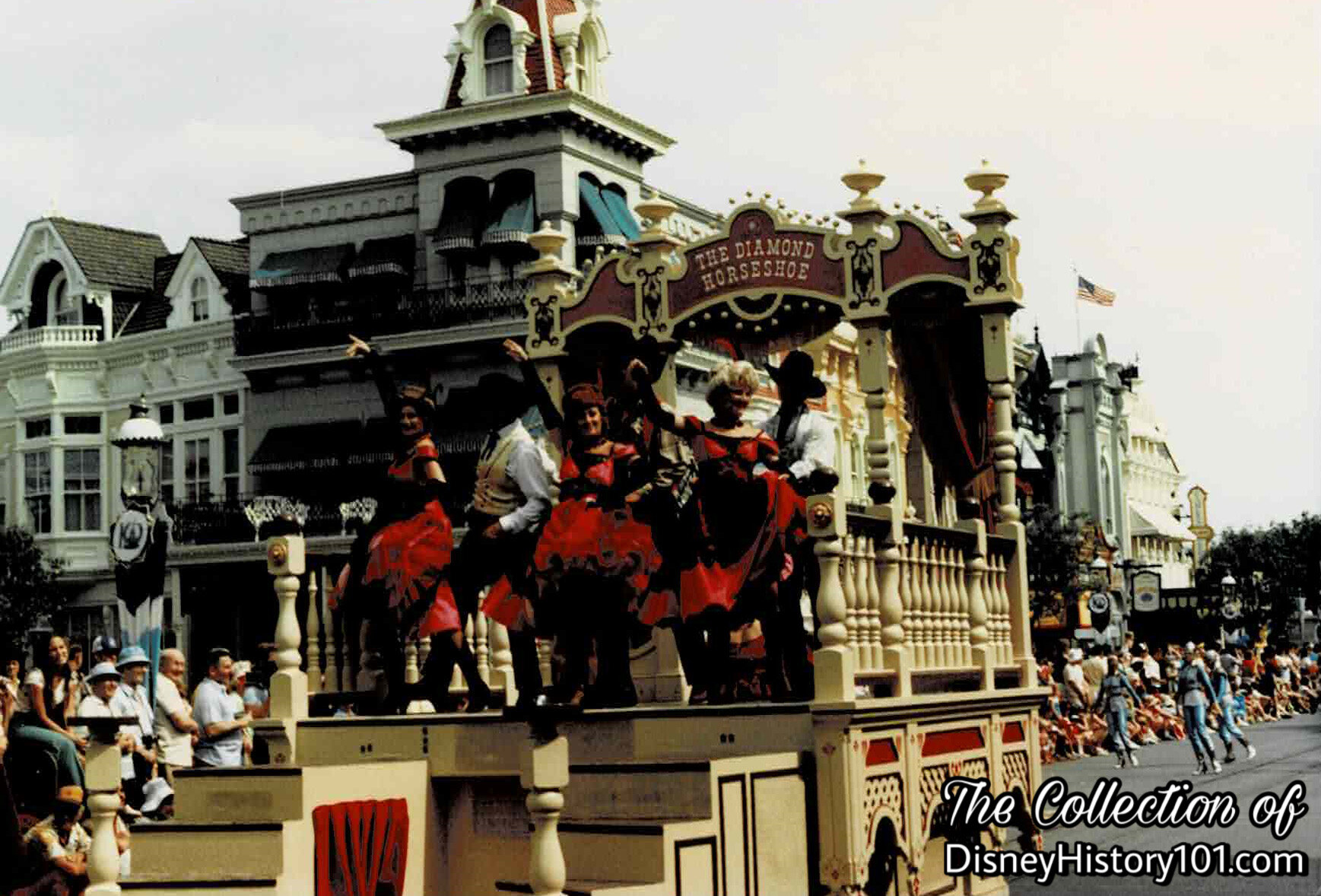
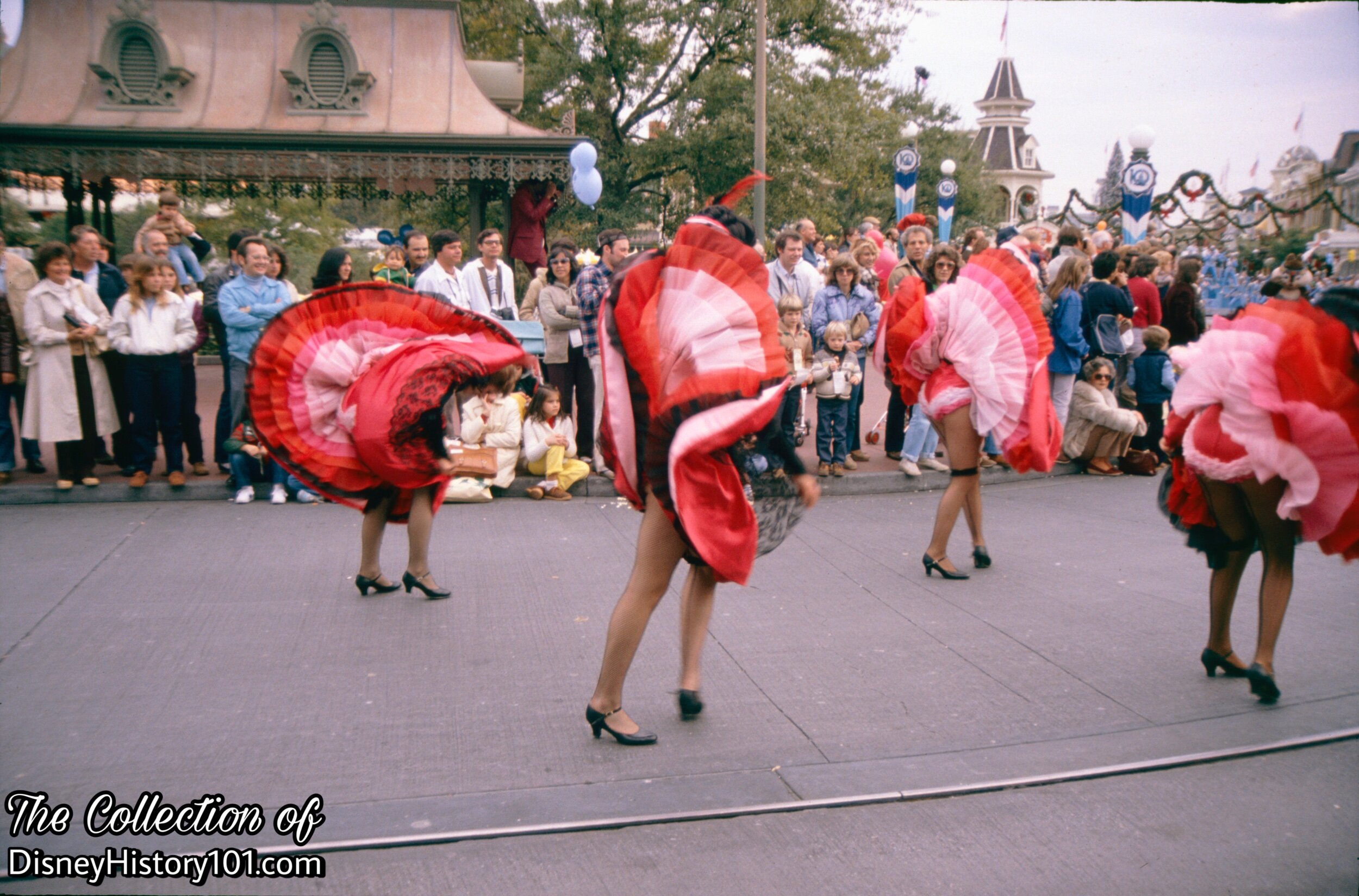

“Everything's gonna be, all right! Future is the key, so bright. All the plans we made today, come our way. To-Mor-Row…Tomorrow!”
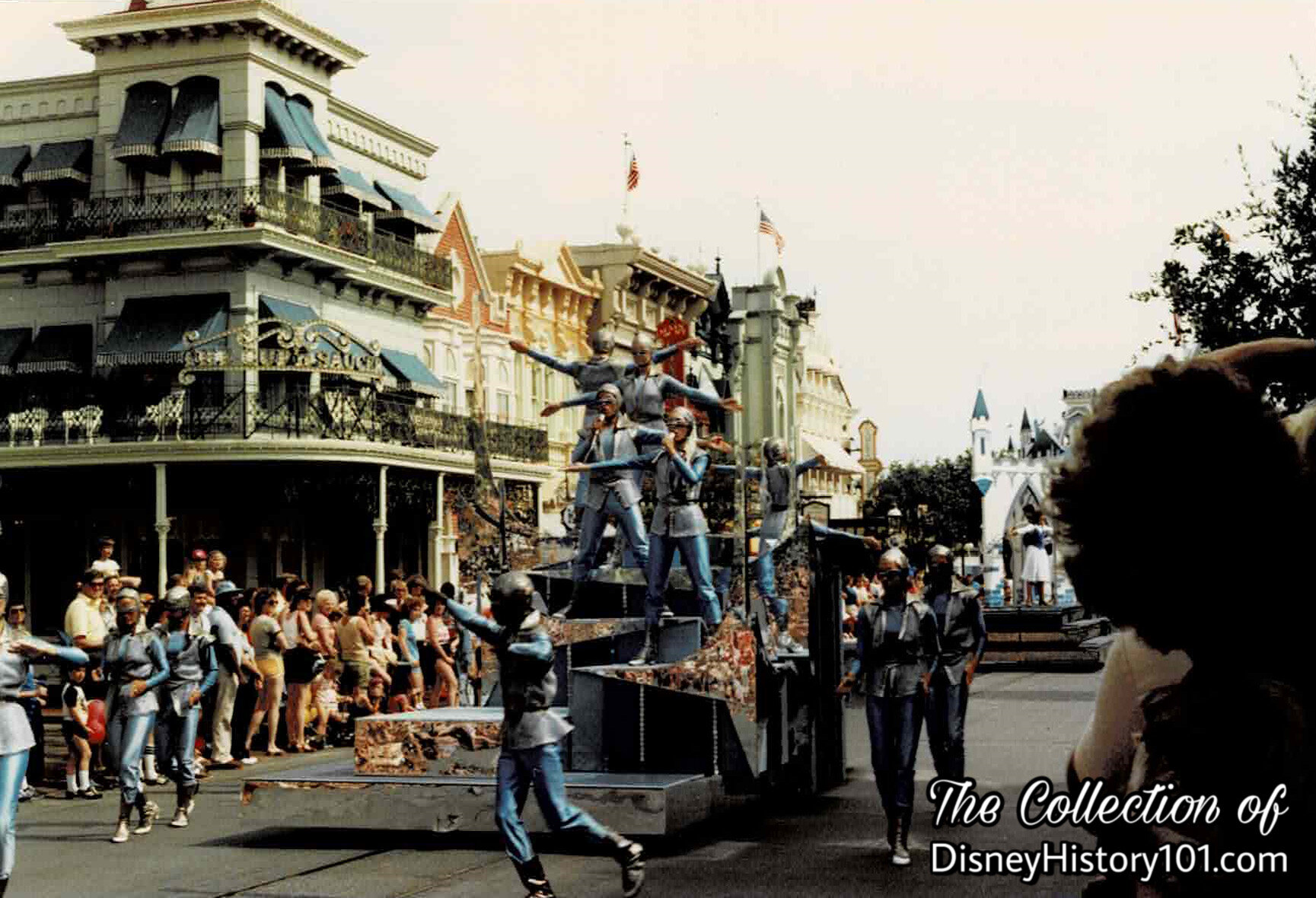
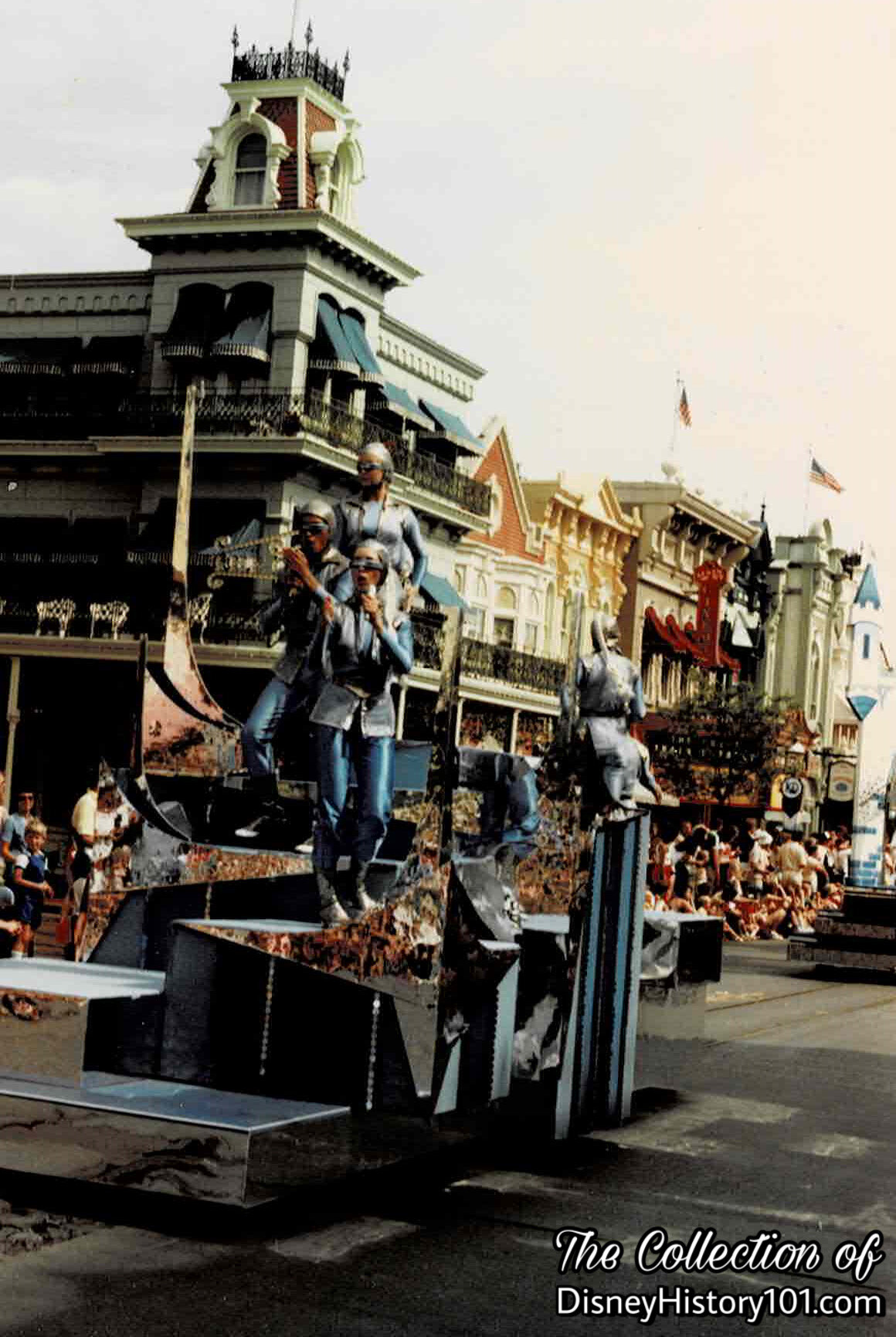
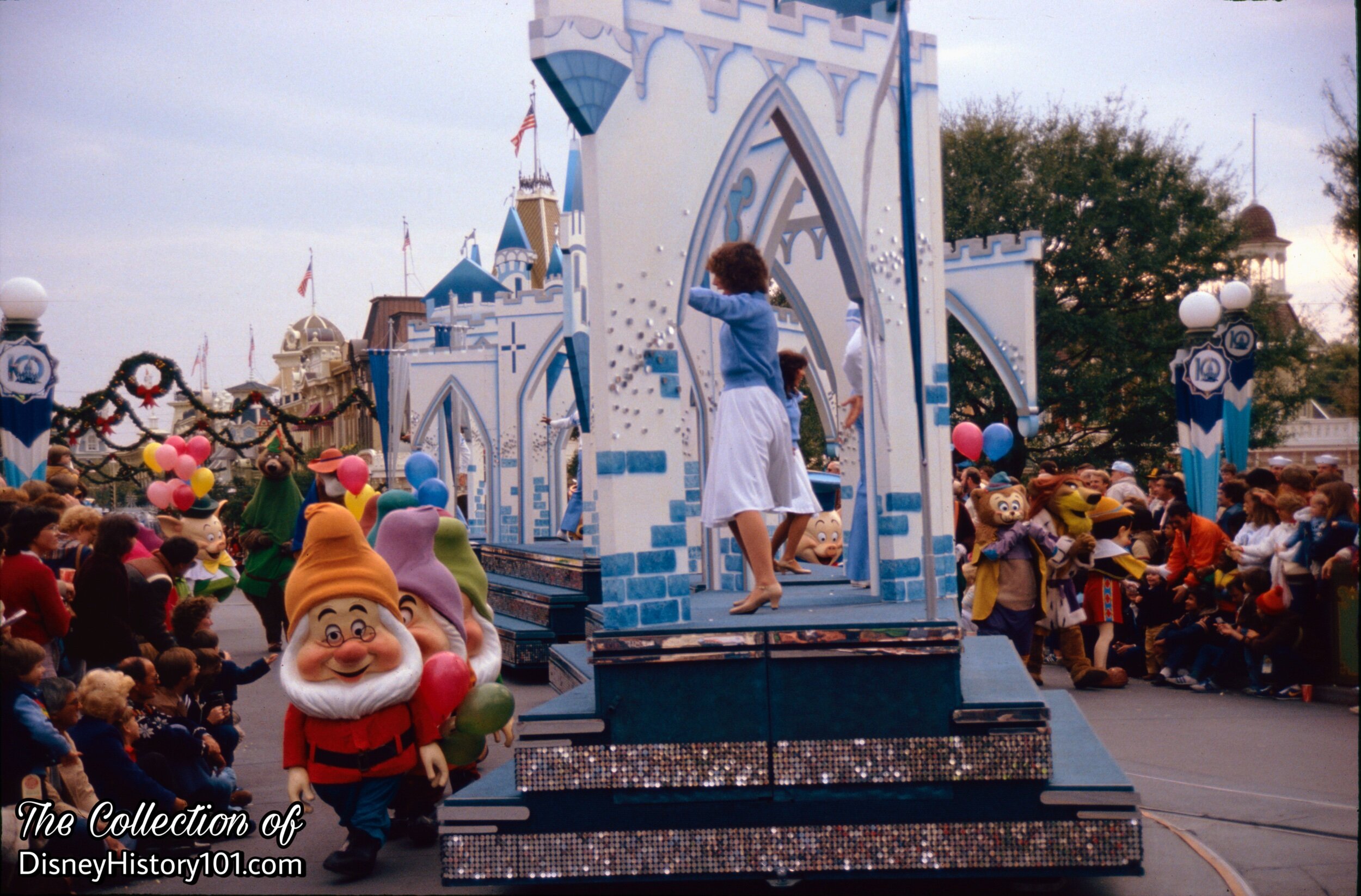
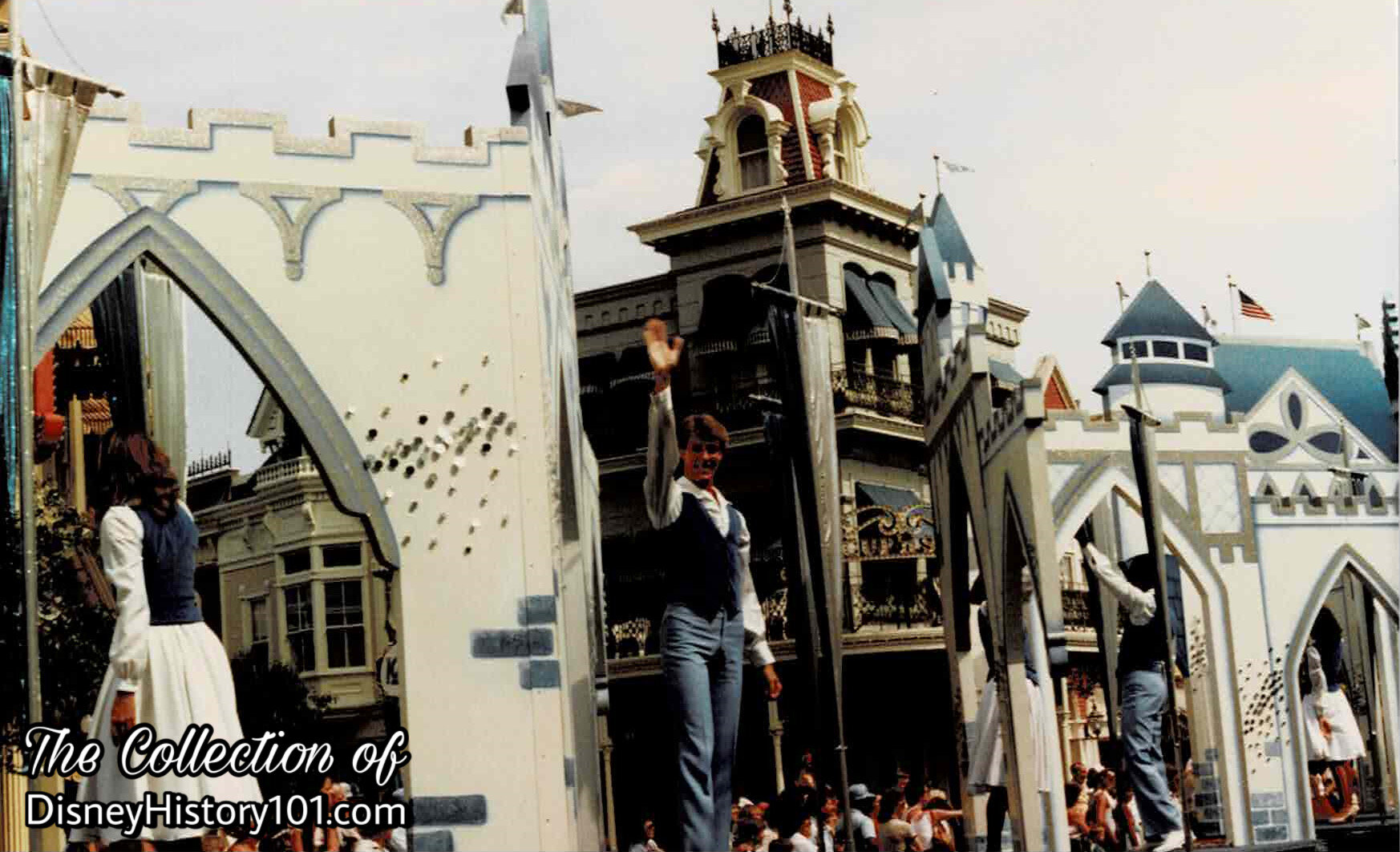
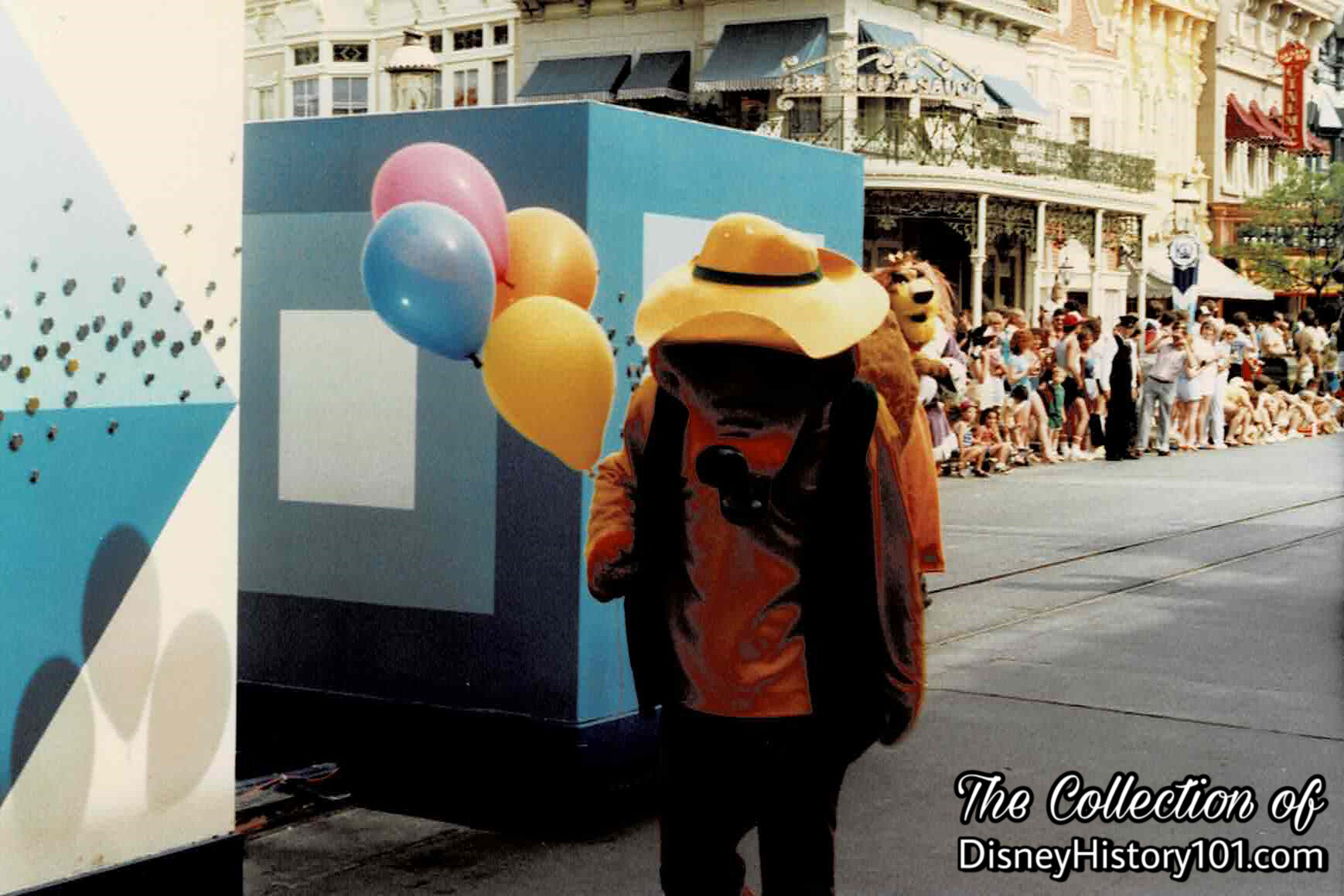
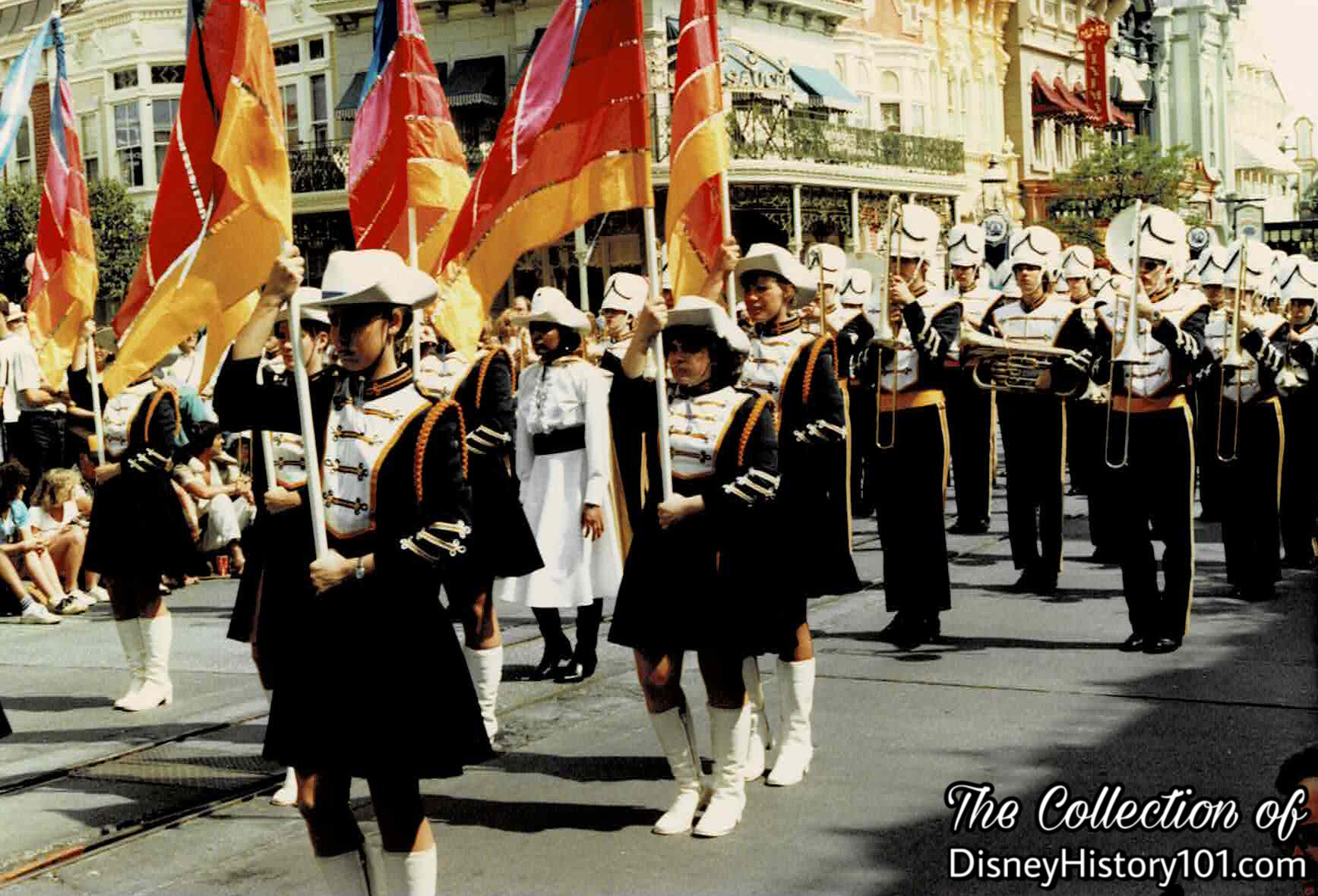
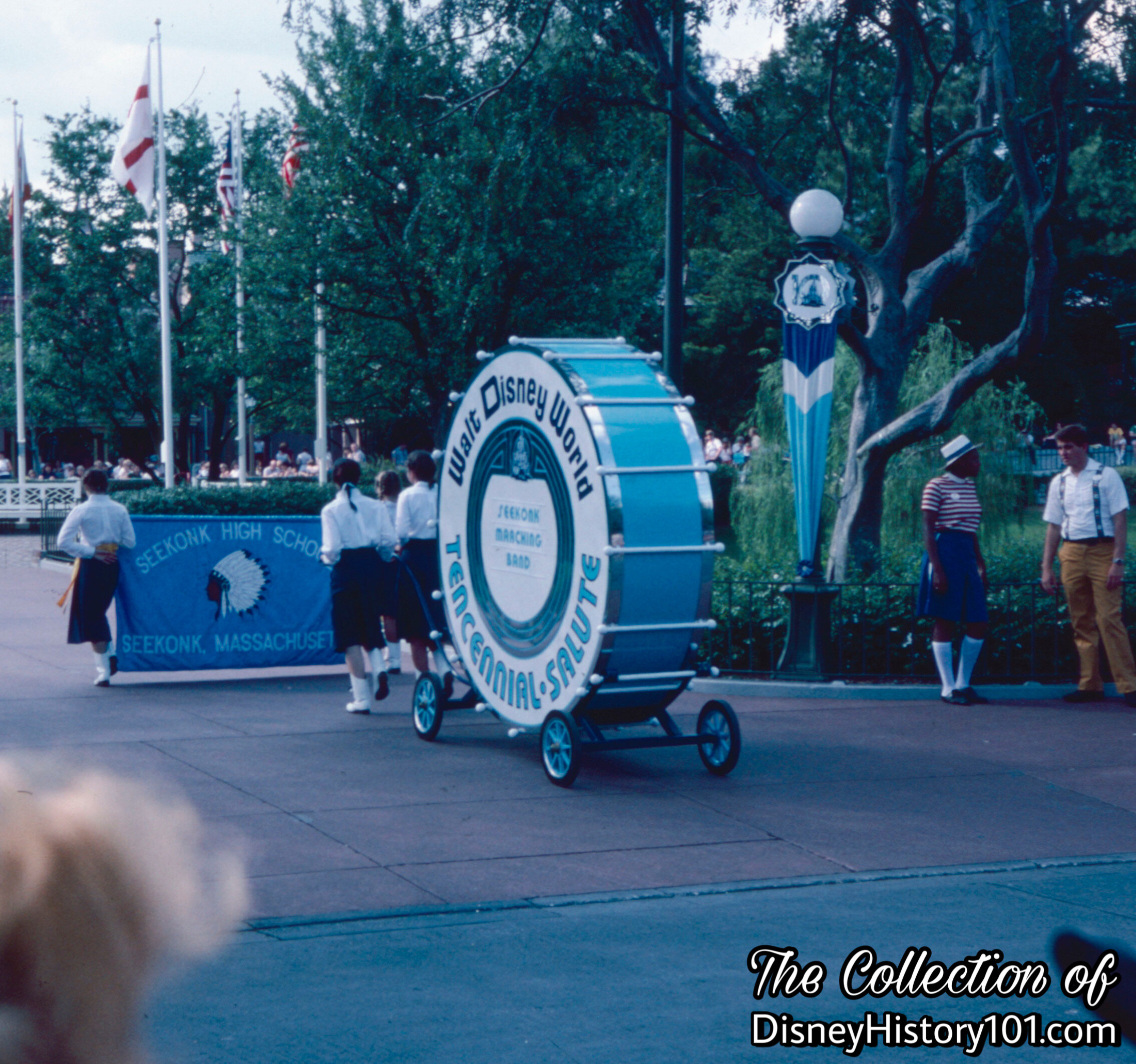
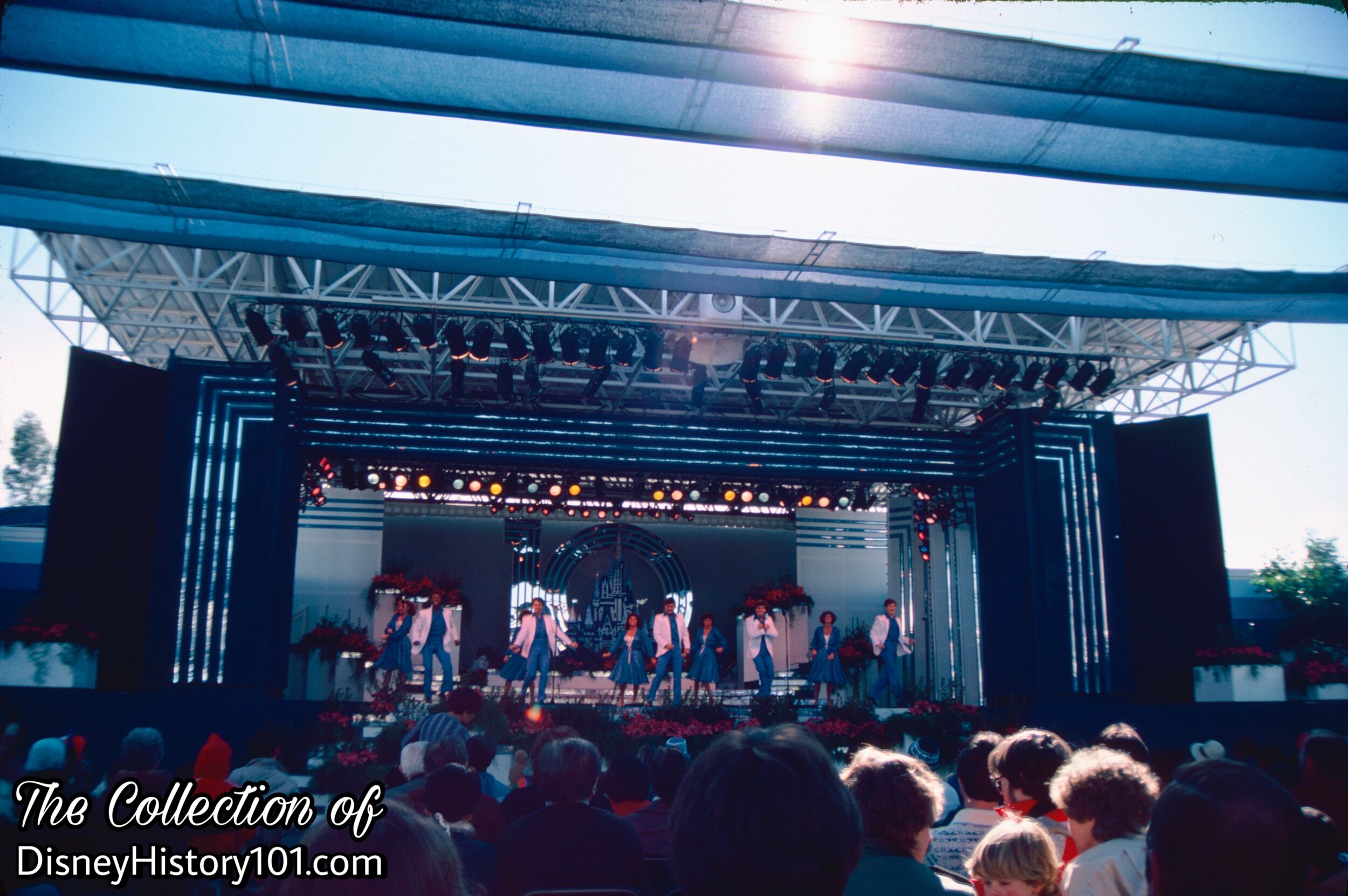
“Here's a place…made of dreams - a kingdom full of magical things! If you believe this song we sing, you may never want to leave…Disney World!”
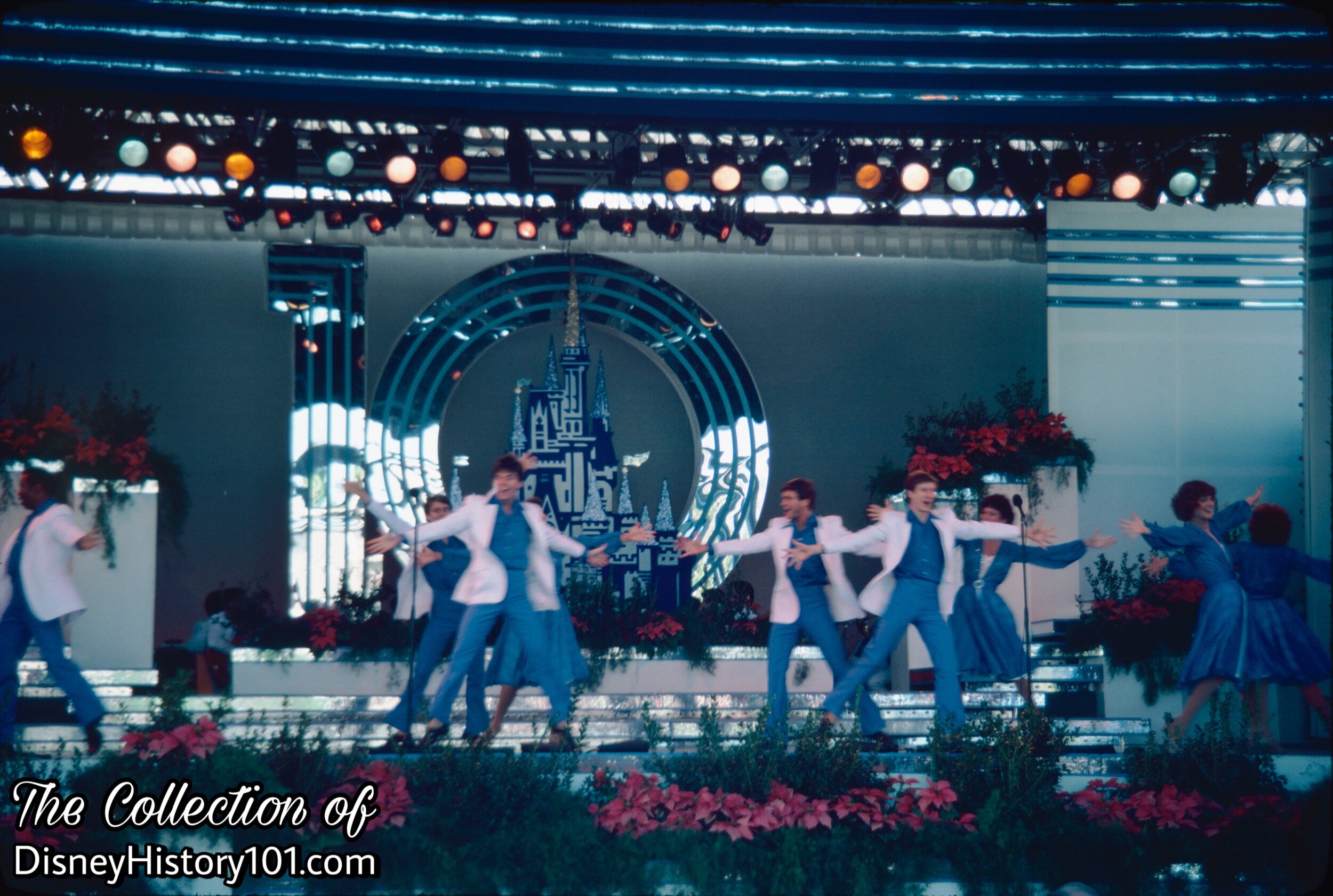
“Disney World is your world!”
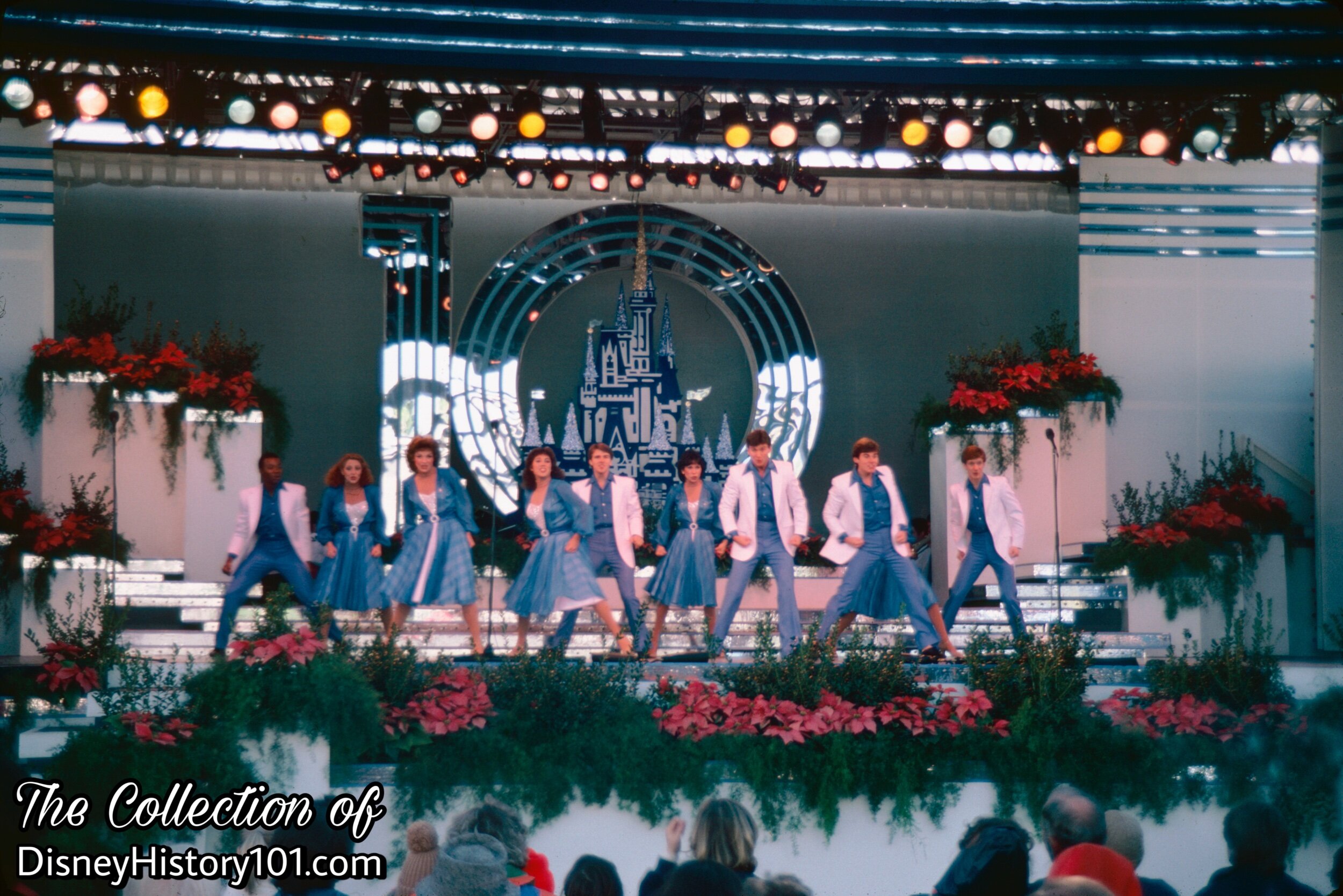

“…You see the greatest smiling’ faces up and down the street, its remarkable all the friendly people we meet, walkin’ right down the middle of Main Street U.S.A.!”

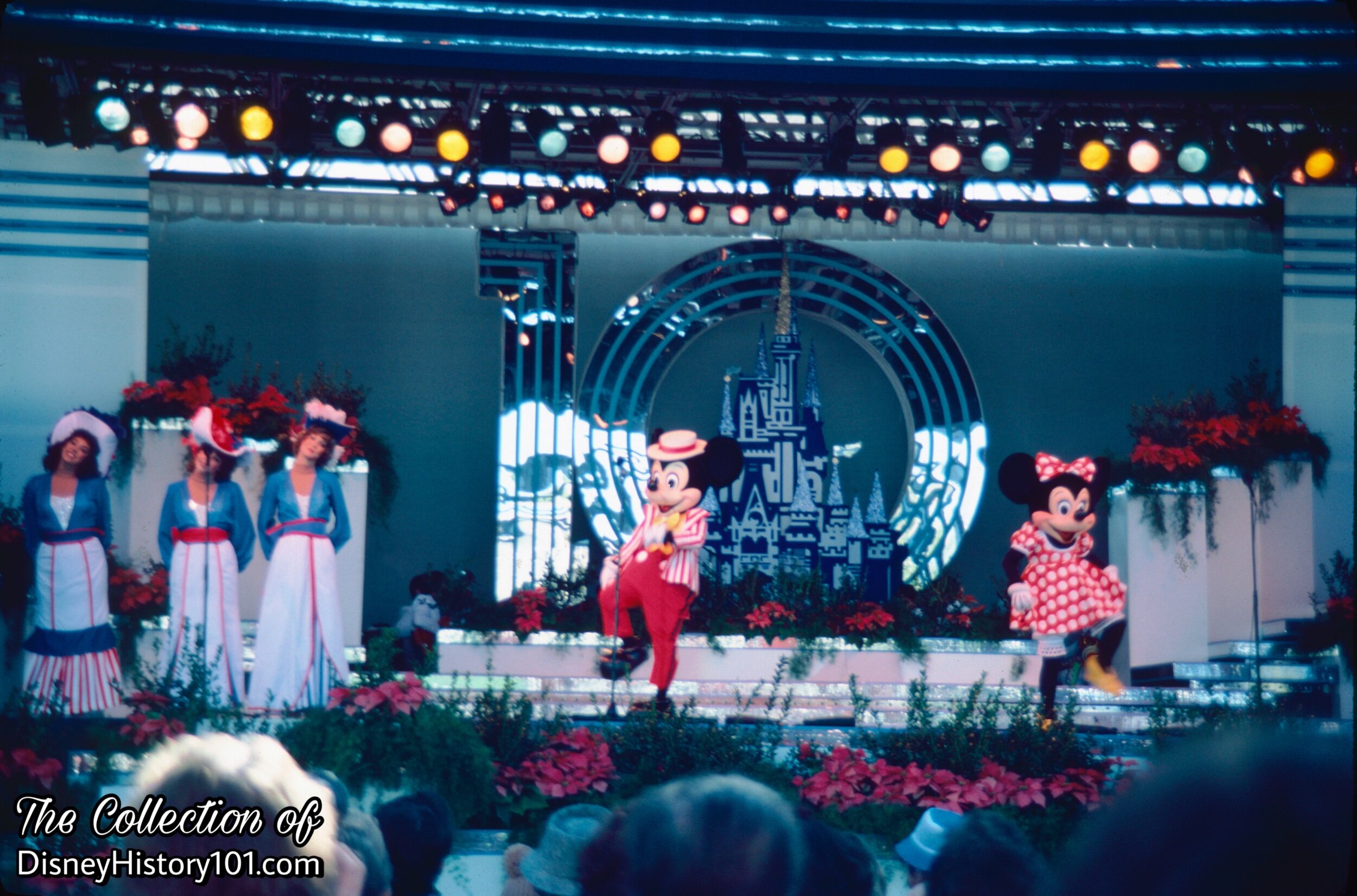
“There’s a little guy that you may meet. He’s cute and cheerful and quite an earful, and his name is Mickey Mouse!”
He’s “got a sweetie down by the chicken house. Neither fat or skinny, she's the horse's whinny! She's my little Minnie Mouse!”
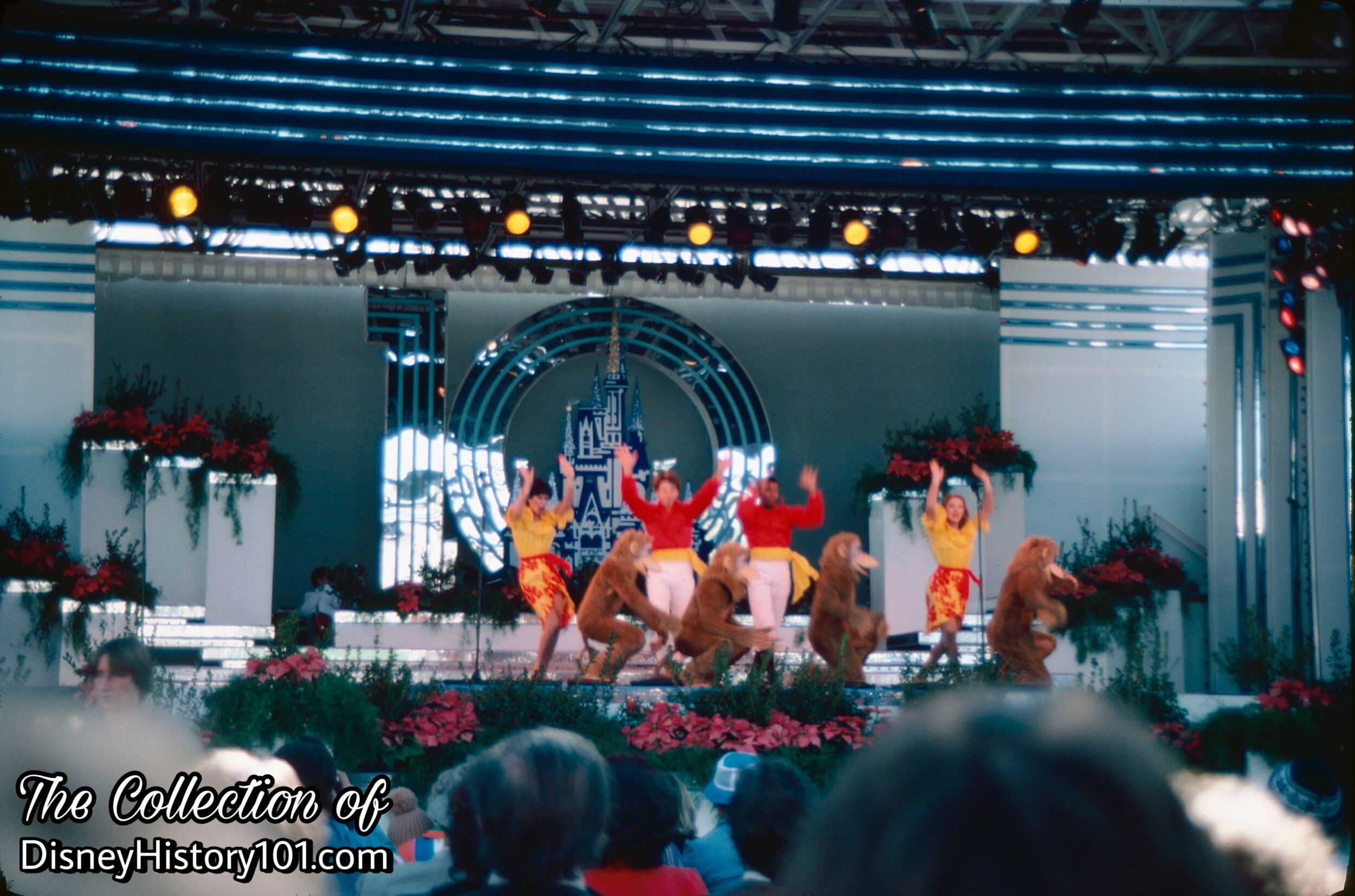
“All the animals are singing loud and clear, when the tropical drum beat can thunder your skin! There is only one place we can be - Adventureland!”
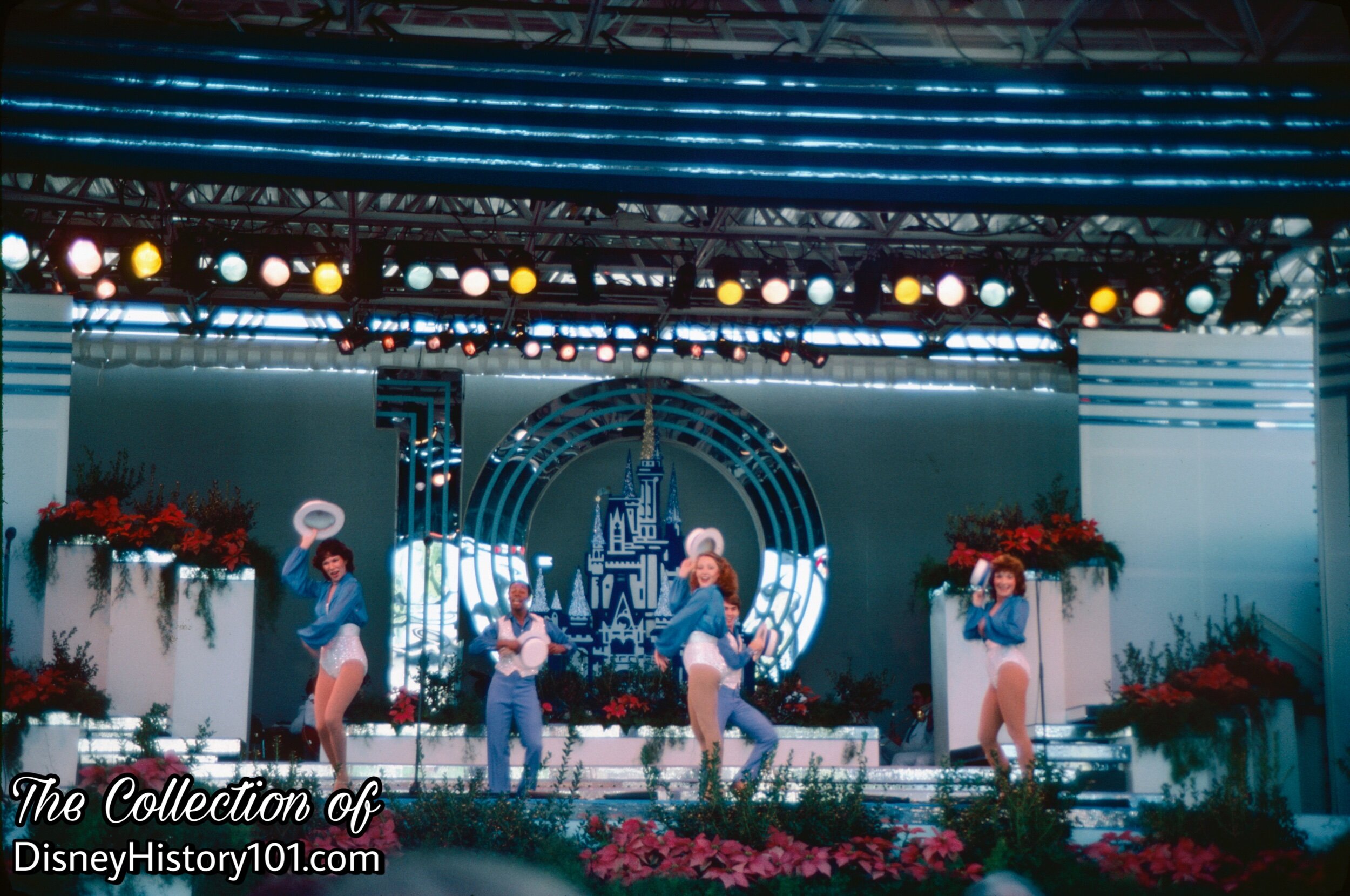
“When the band plays Dixie at Disney World, they’ll be marching through the square, and we’ll all be waiting there, to see the saints…come…marching…in!”
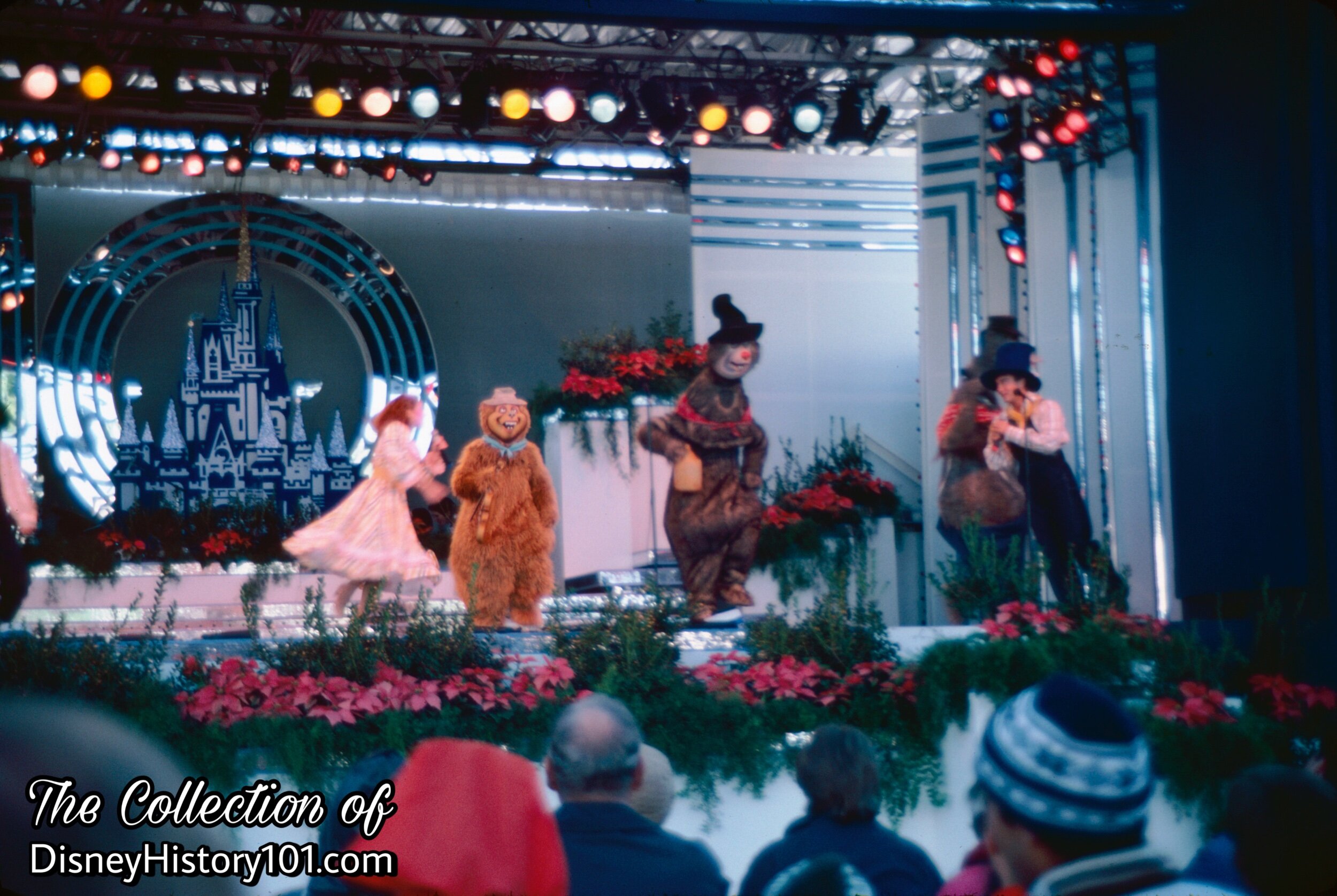
“We hope that you'll be coming back again - that you'll drop in and see us now and then. We've done our very best to please, with just the bear necessities! We hope that you'll be comin' back again!”
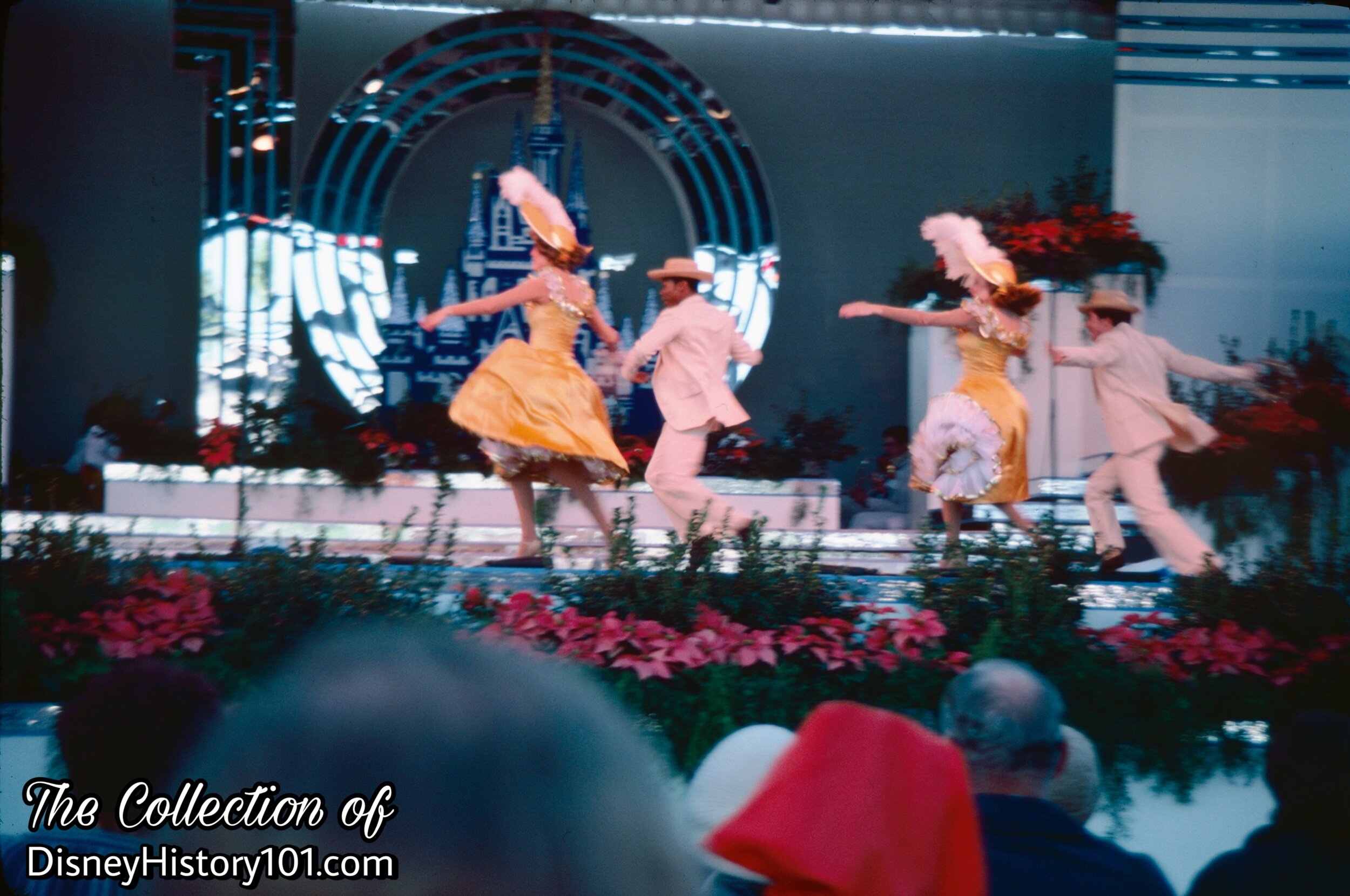
“Swanee…How I love you, how I love you! My dear ol' Swanee, I'd give the world to be among the folks in D-I-X-I-E!”
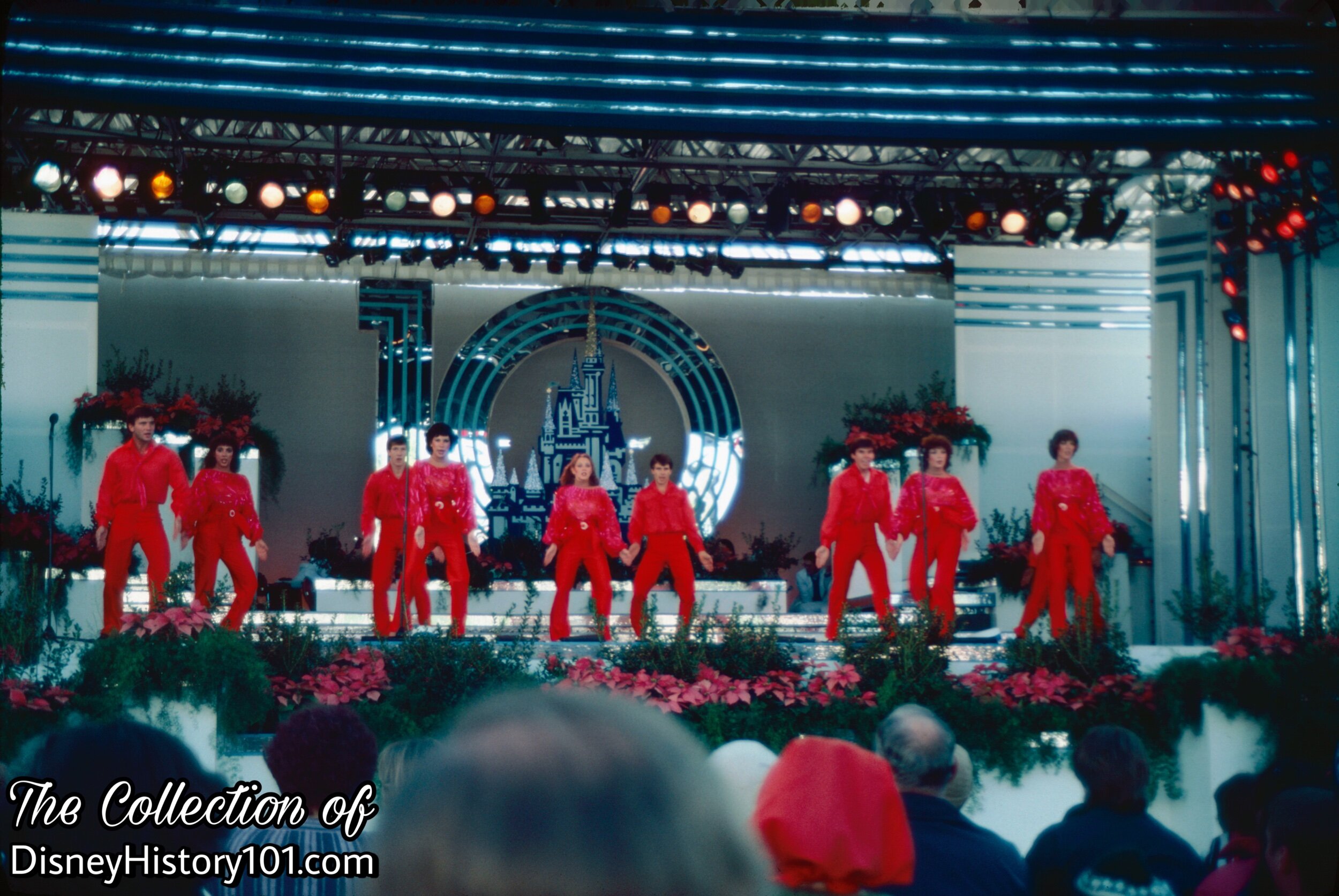
“All the plans we make today, come our way! To…Mo…Row…Tomorrow!”

“Disney World…a wonderland…for girls and boys…and moms and dads! A ‘happy ever after’ land - Disney World!…Disney World is…your world!” After the reprise of Disney World is Your World, the show would end to the sound of the Tencennial Fanfare!

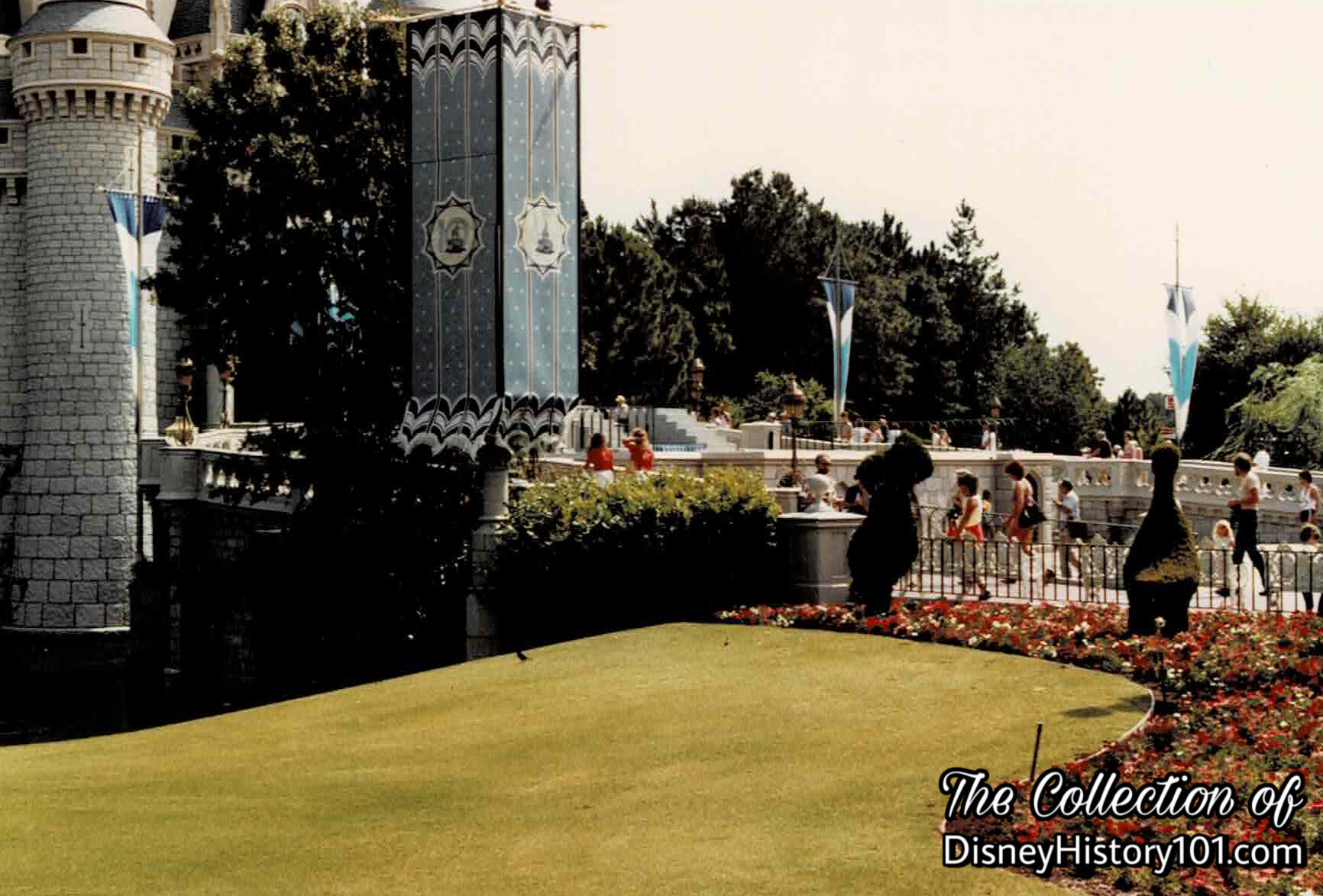


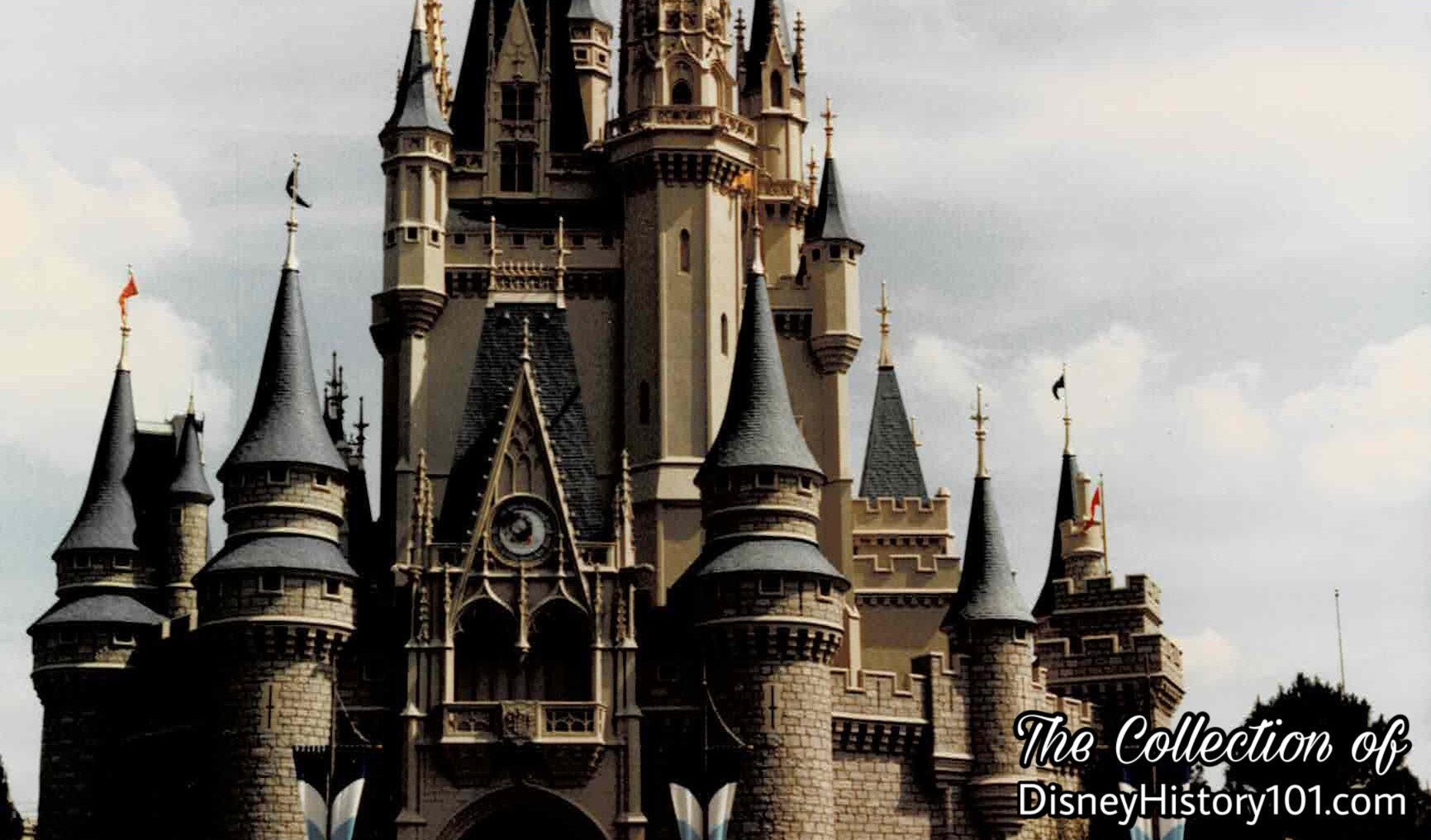
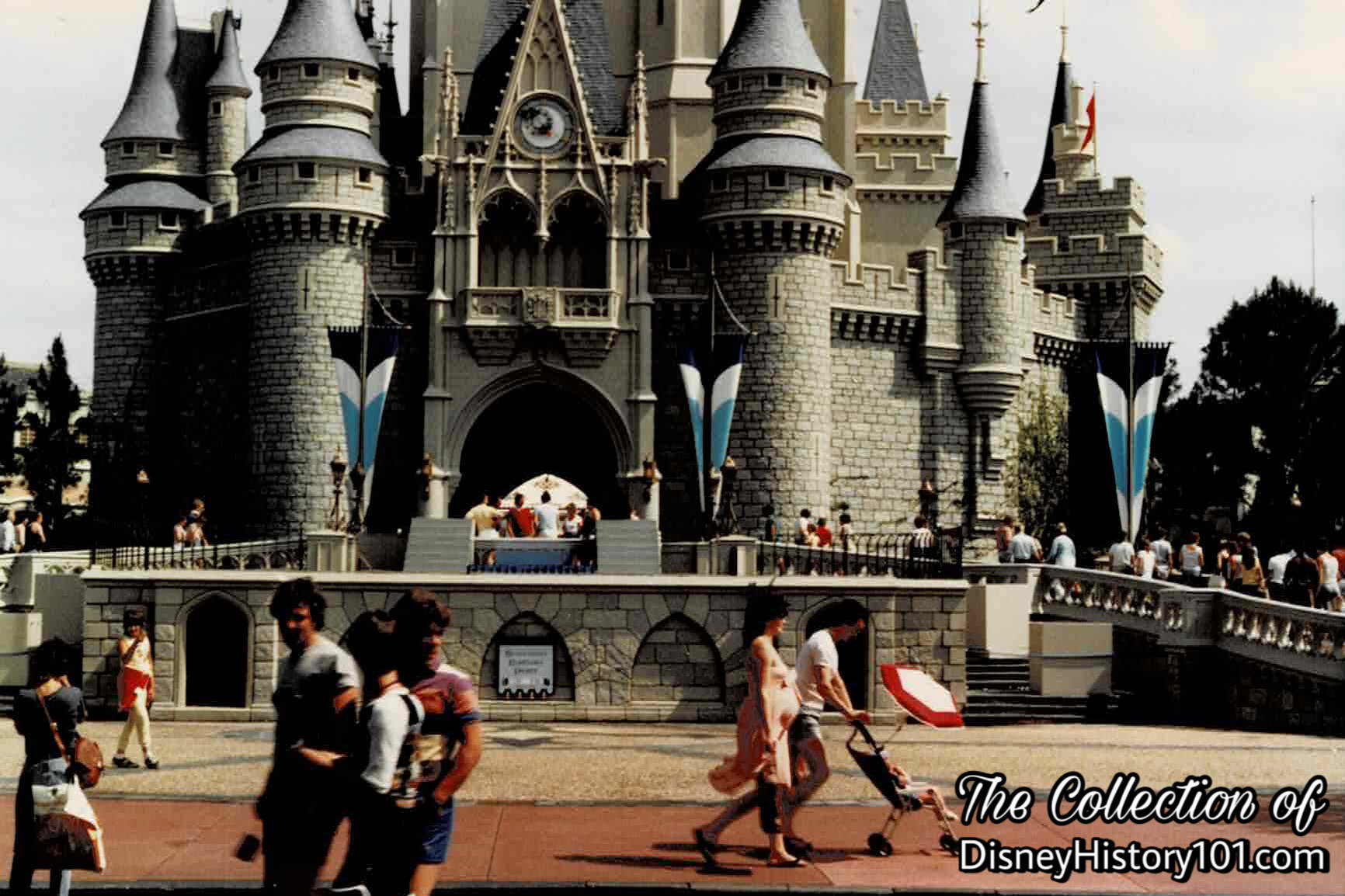
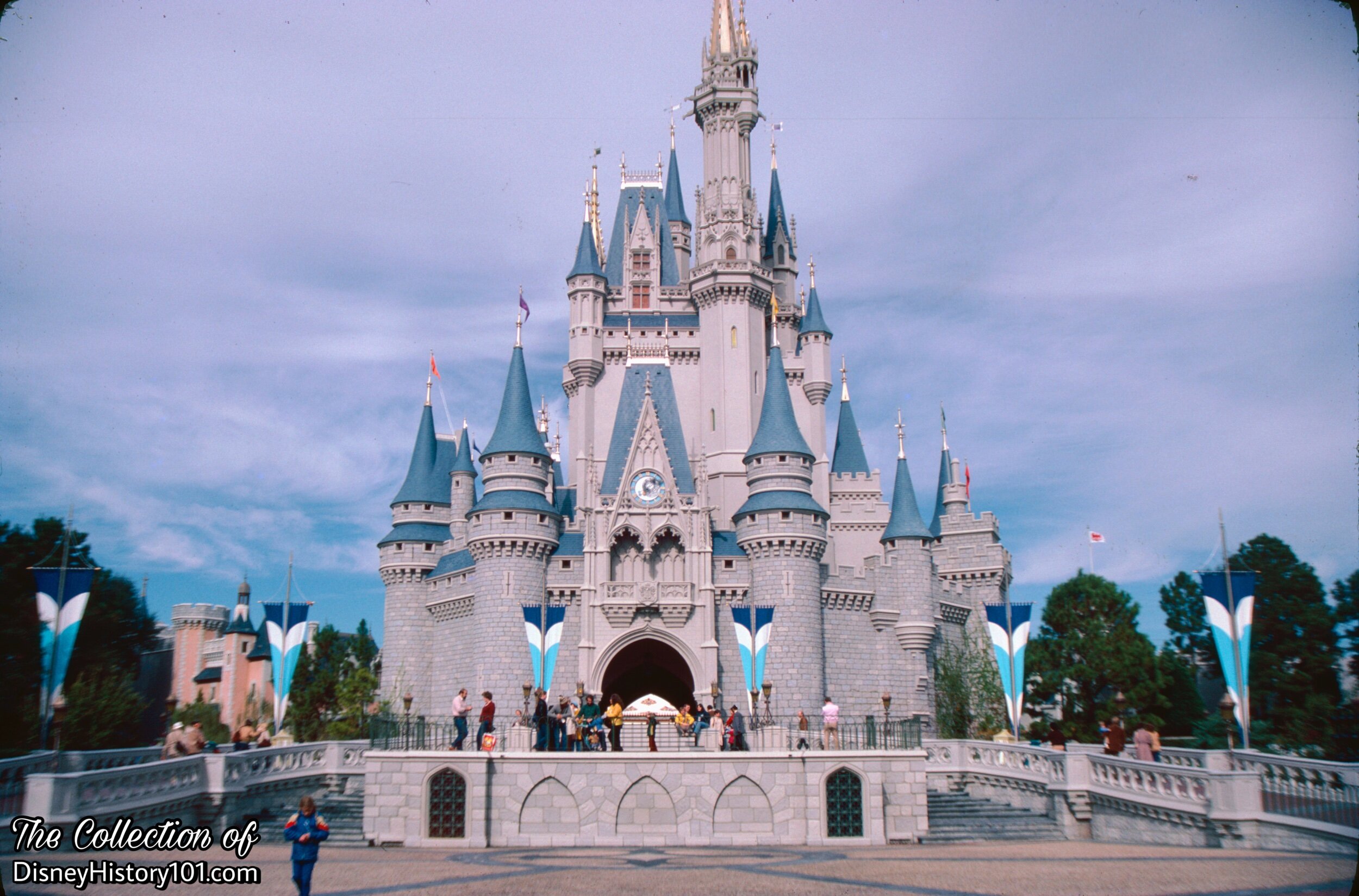
Decorative banners (bearing the Tencennial color scheme) mark the stage where the Castle Forecourt Birthday Party is celebrated twice, daily.
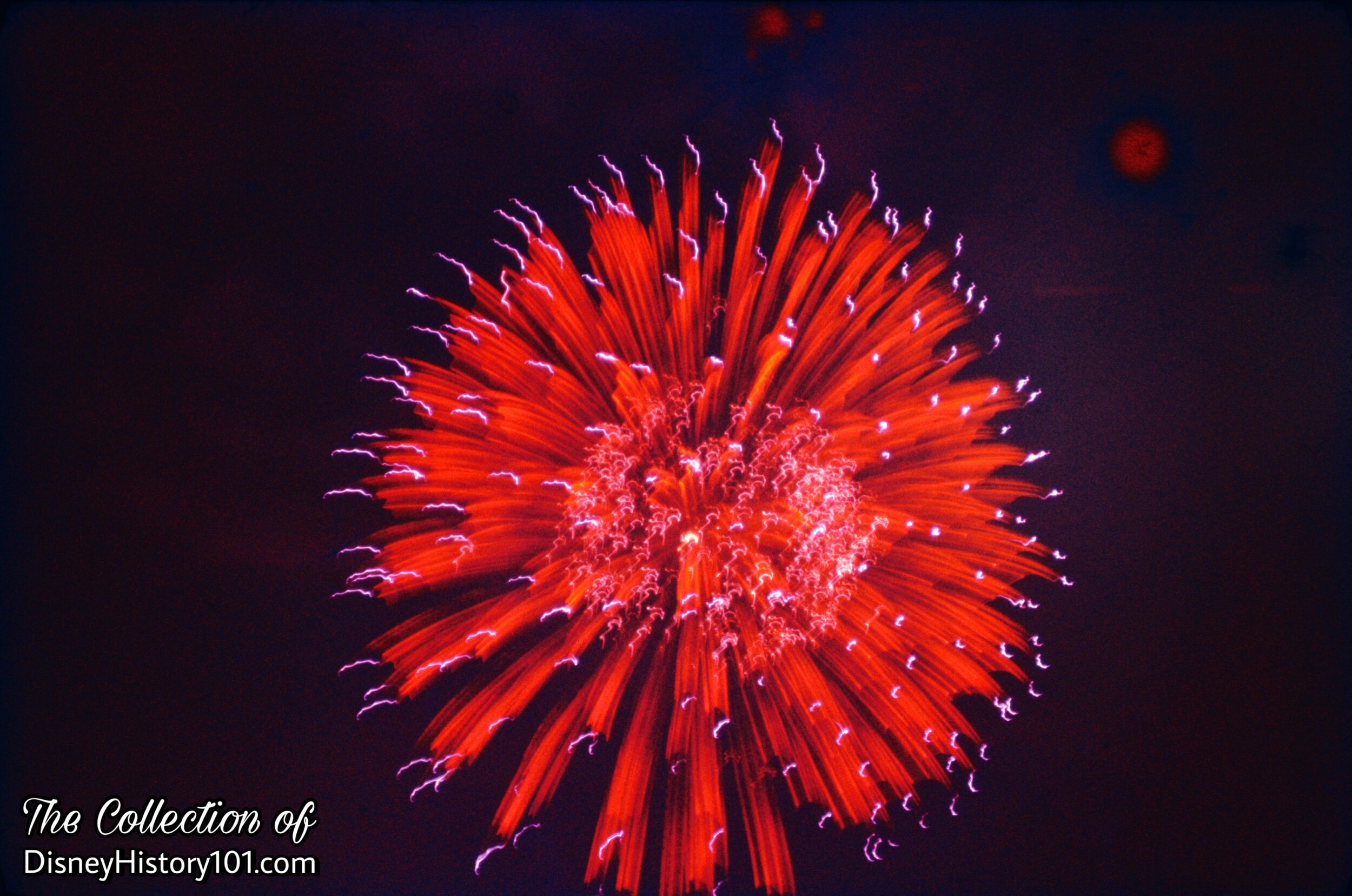
Many area residents had much reason to celebrate the Tencennial too. A few years earlier (in 1976; in interview with Orlando-Land) Florida State Governor Reubin Askew (a regular Guest of Walt Disney World Vacation Kingdom) commented: “When I think of Walt Disney World, I marvel at the incredible success of this extraordinary attraction. It has had an enormous economic impact not only in Central Florida but throughout the entire State. It has brought record numbers of tourists to Florida and created employment opportunities for untold thousands of our residents.”
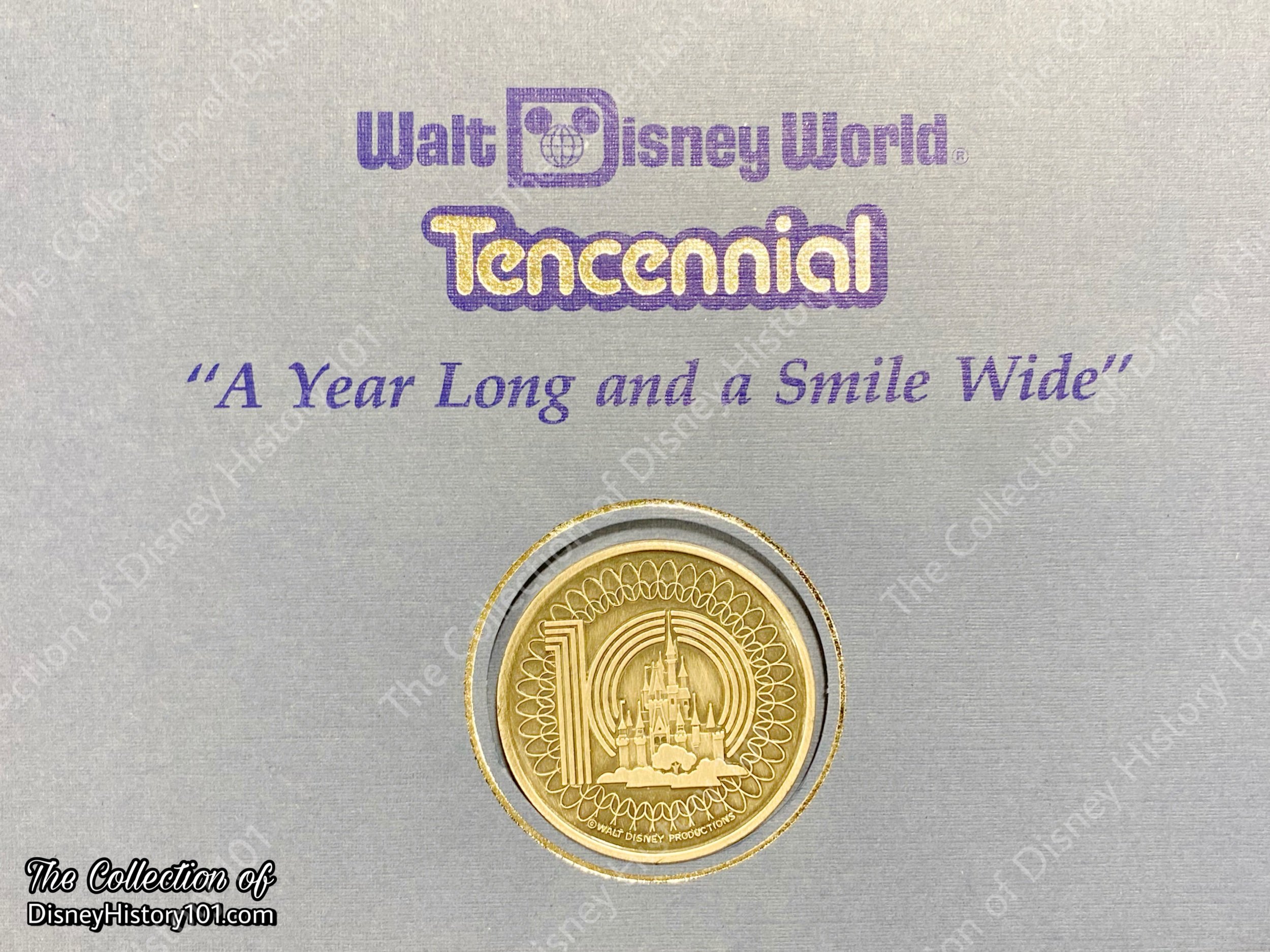
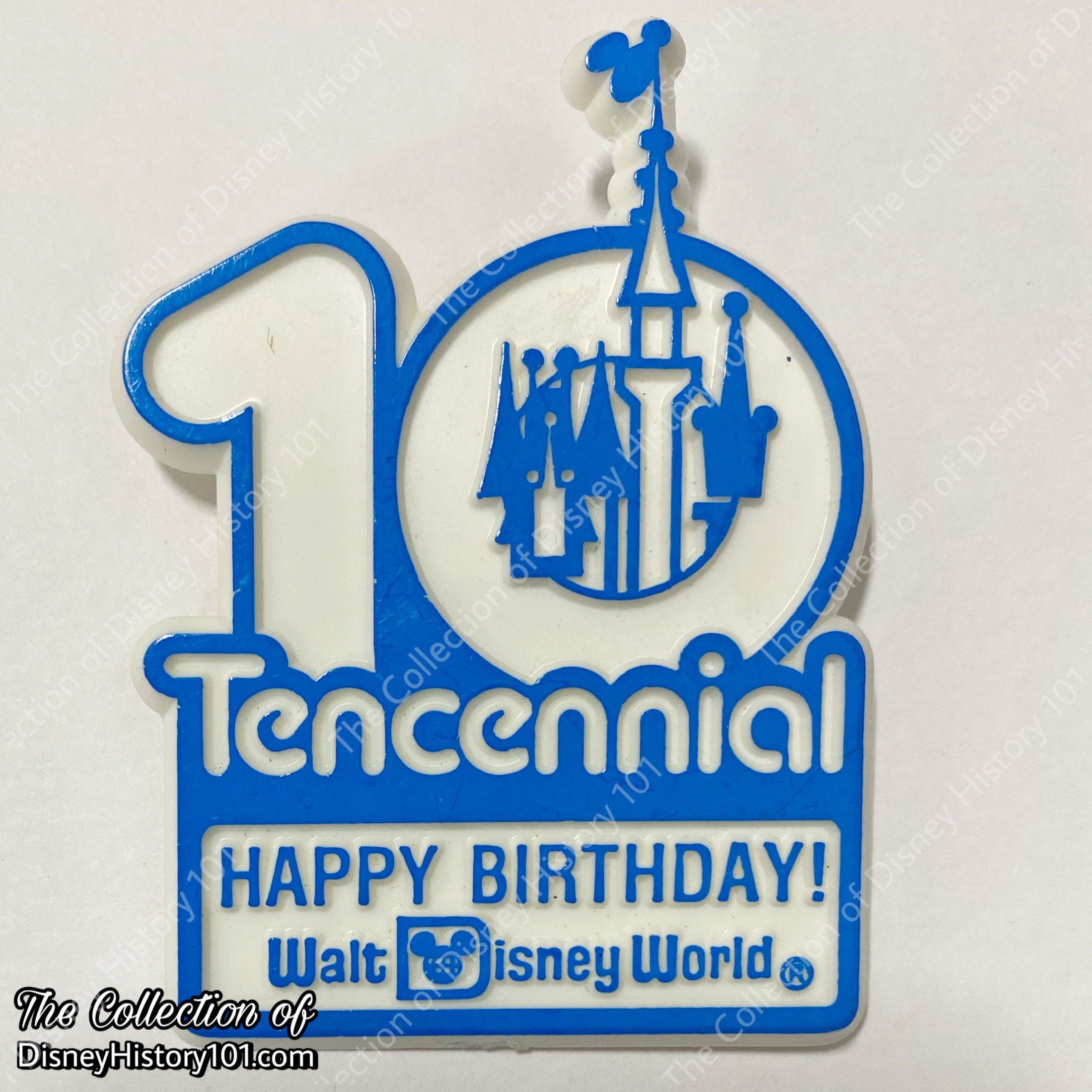
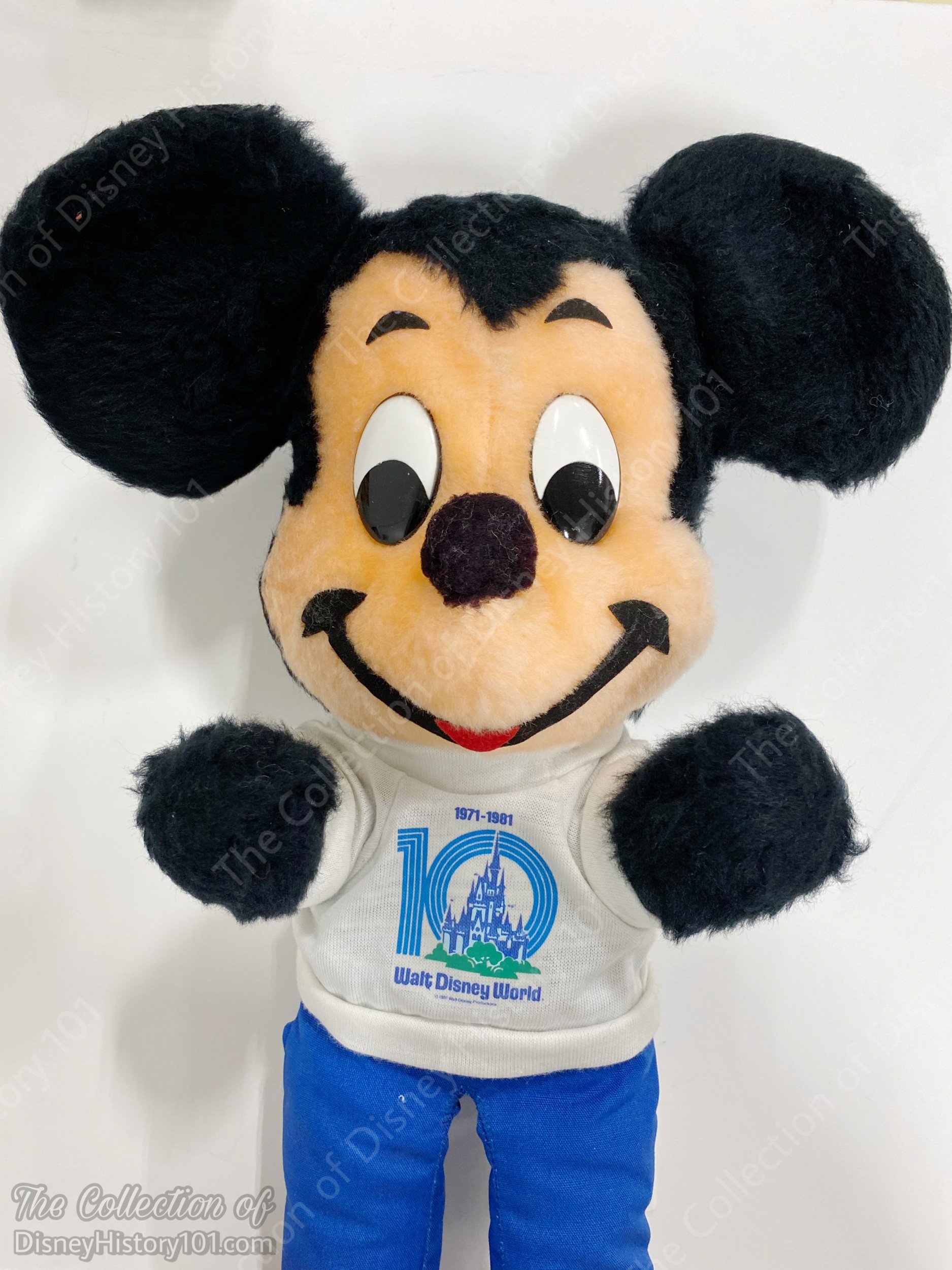
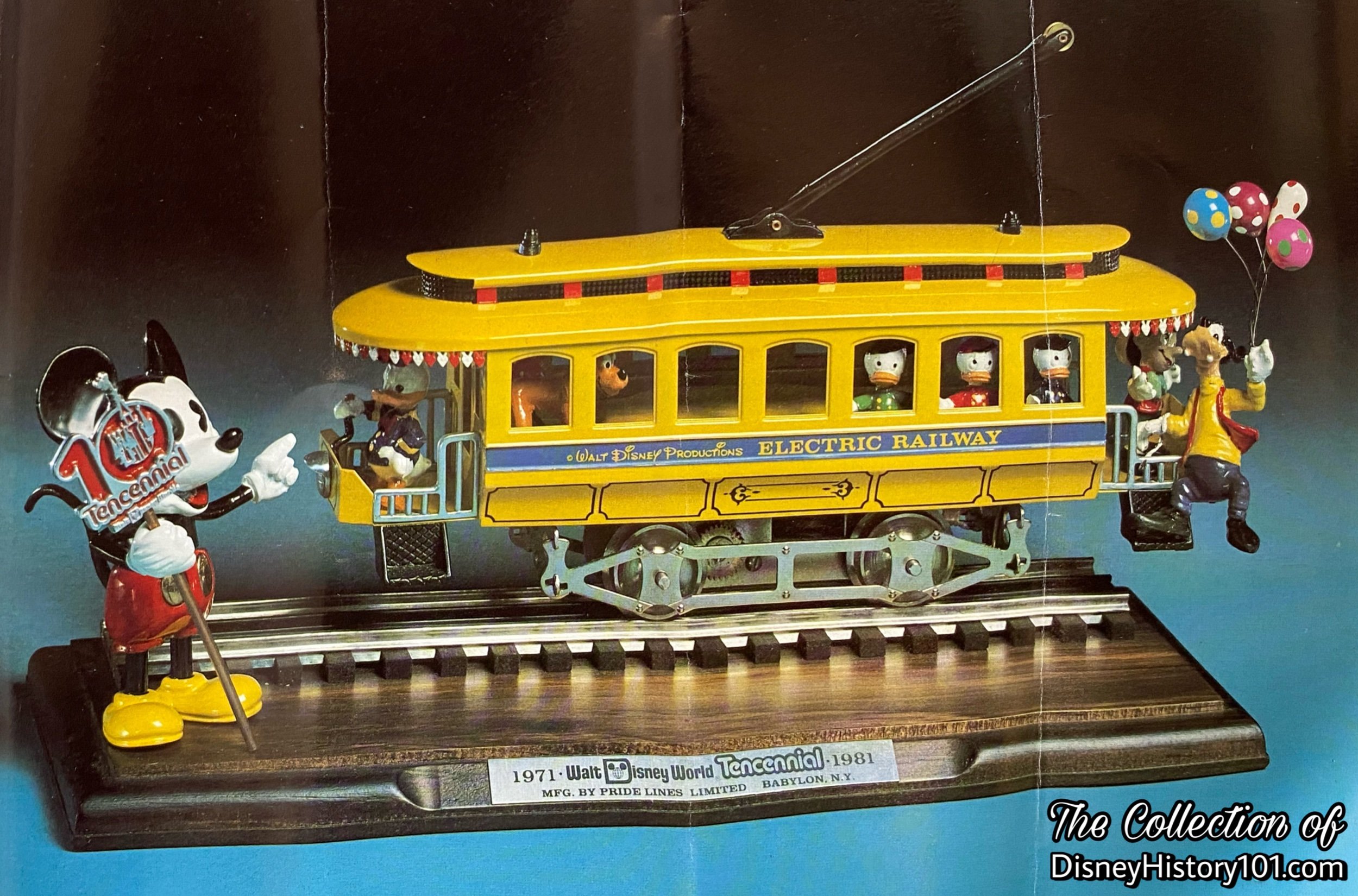
Limited edition merchandise was produced, like that Walt Disney World Tencennial Streetcar by Pride Lines. Even after this year, guests could continue to “take a ride down memory lane.”
WORLD SHOWCASE - JAPAN PAVILION
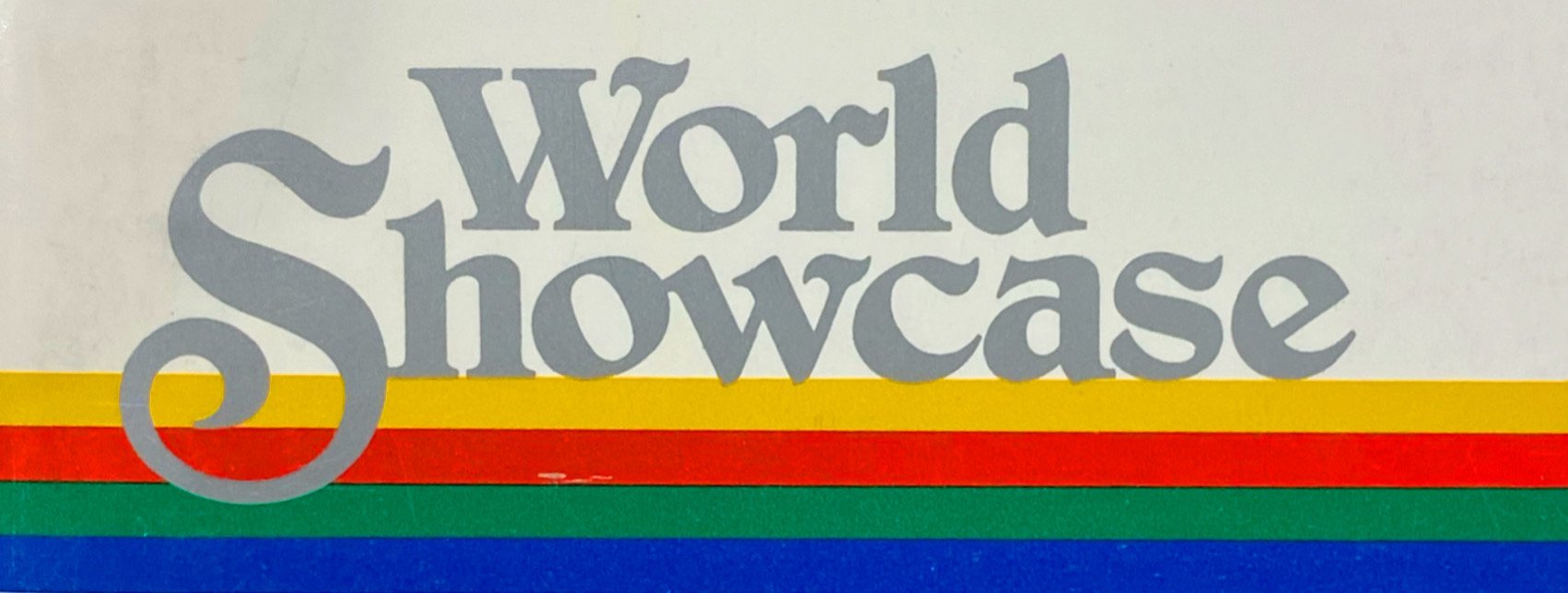
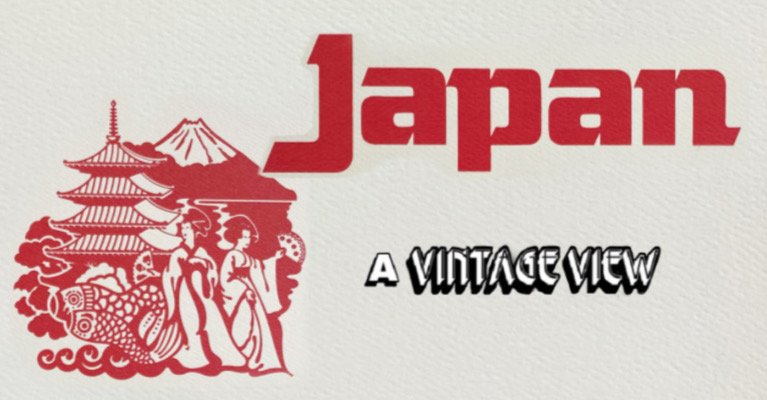
“Prologue - Walt Disney Productions and the People of Japan”
In order to tell the story of the EPCOT Center Japan World Showcase, we must begin with the history of the relationship between the people of Japan and the Walt Disney Company. This is a synergistic tale of individual people who have supported and sponsored the many facets of Walt Disney Productions. Some were artists, writers, members of groups and organizations, members of Participant Corporations, and innumerable audience members, consumers, and related fans of Walt Disney’s art form, from across the United States of America, and as far away as the prefectures of Japan.
“It All Started With a Mouse”
The modern art of animation had been around for a couple of decades before Walt Disney embarked on his career as master showman. However, when Walt Disney's Mickey Mouse first appeared, he brought an お土産 (omiyage) of joy, happiness, and a universal means of communication to the people of every nation, including Japan. Walt Disney’s brother Roy testified to the results of Walt’s endeavors to diversify, admitting that “in everything he did, Walt had an intuitive way of reaching out and touching the hearts and minds of young and old alike. His entertainment was an international language.” Since the beginning, Roy Disney’s words have proven true, as the hearts and minds of Japanese audiences have taken a keen interest in the magical, fantastic, joyful, and inspirational artistry of Walt Disney!
“Bob Kuwahara - The First Japanese American Artist Supports Walt Disney Productions”
It was during this historic era, that we are introduced to one of the earliest Japanese Americans on record to work for Walt Disney Productions - a writer and animator by the name of Robert “Bob” Kuwahara. Though his name isn’t famous, Bob is a “Disney Legend” in his own right. Bob worked for Walt Disney Studios from 1932 to 1937, contributing to such memorable short films as the Mickey Mouse Sound Cartoon Thru the Mirror, the Silly Symphony films like Three Little Wolves, Toby Tortoise Returns, Who Killed Cock Robin?, and Walt Disney’s feature length Snow White and the Seven Dwarfs. During his tenure, Bob developed backgrounds for Snow White and the Seven Dwarfs, Fantasia and Bambi.
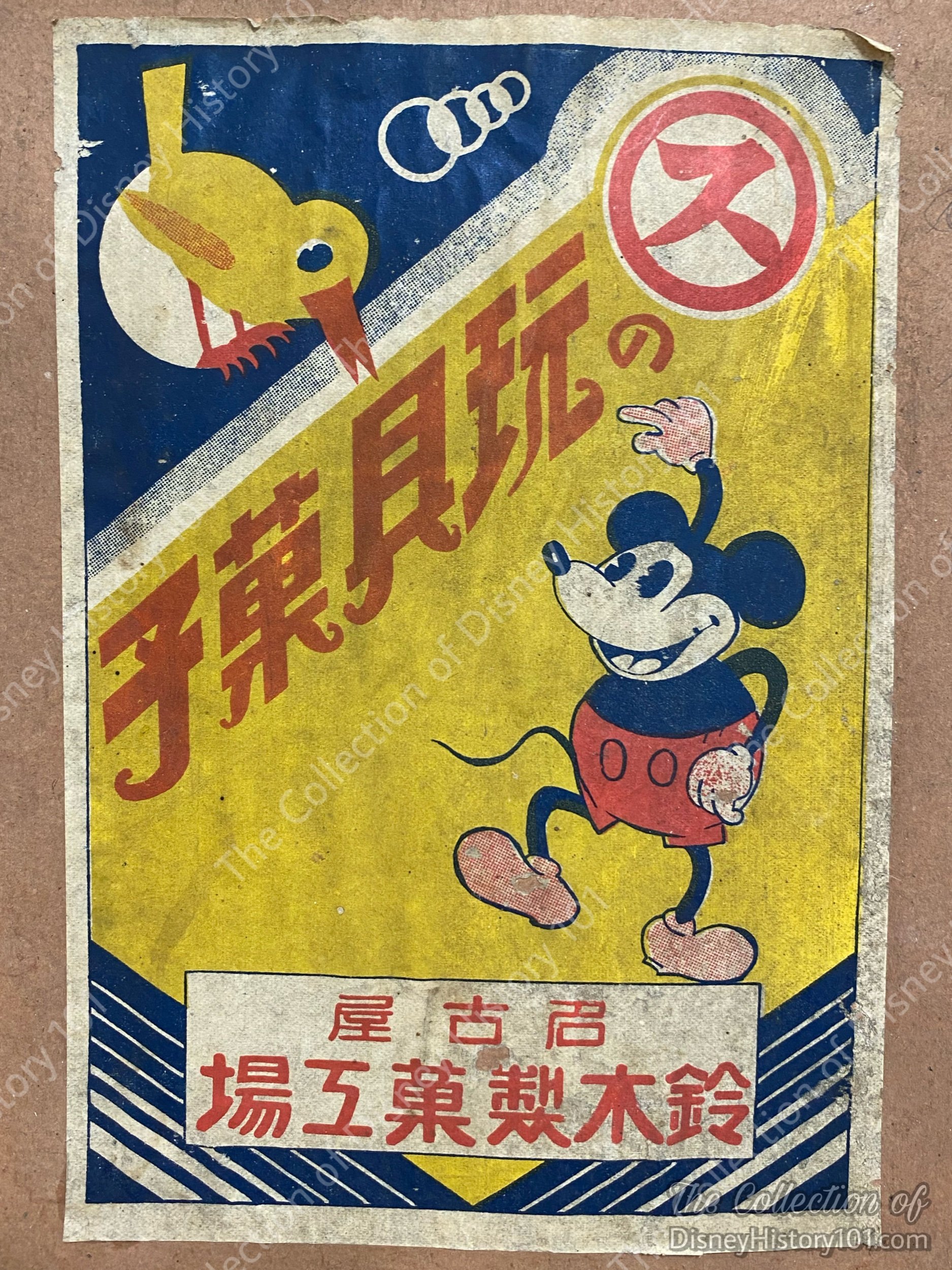
All the while, Japanese and Japanese American commercial businesses supported the production of licensed merchandise featuring Walt Disney’s characters. Early products featuring the likeness of Walt Disney’s Mickey Mouse (or “Miki Kuchi”) proved his worldwide appeal during the 1930s, particularly an awareness by Japanese commercial manufacturers, audiences, and consumers. Many hand-crafted ceramics, bisque figures, “lusterware” tea sets, and mechanized celluloid toys were inspired by the cast of Snow White and the Seven Dwarfs, Mickey Mouse, and Silly Symphonies short films. These official products were manufactured in Japan and distributed to stores and their patron consumers, through Walt Disney’s merchandise distributor George Borgfeldt.

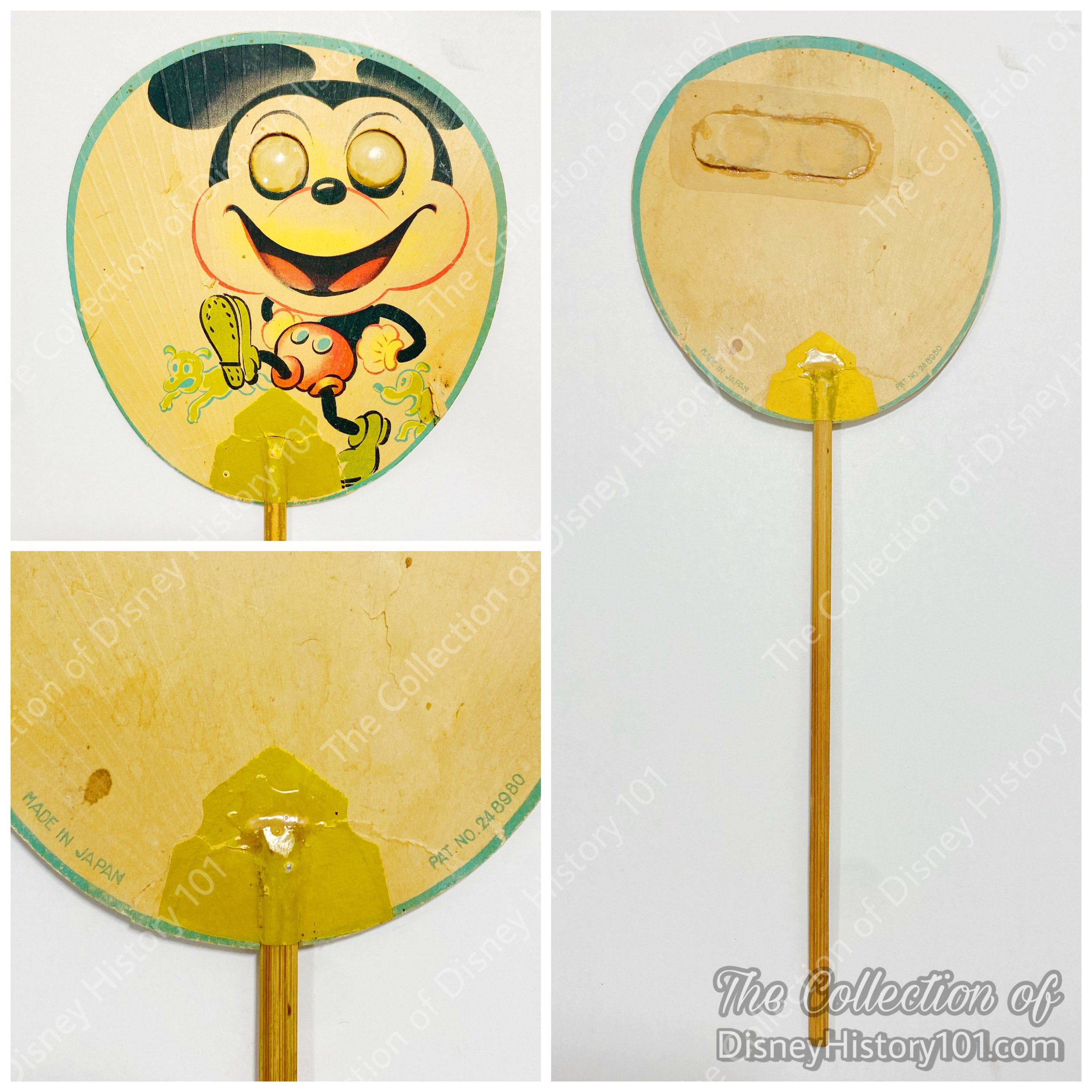
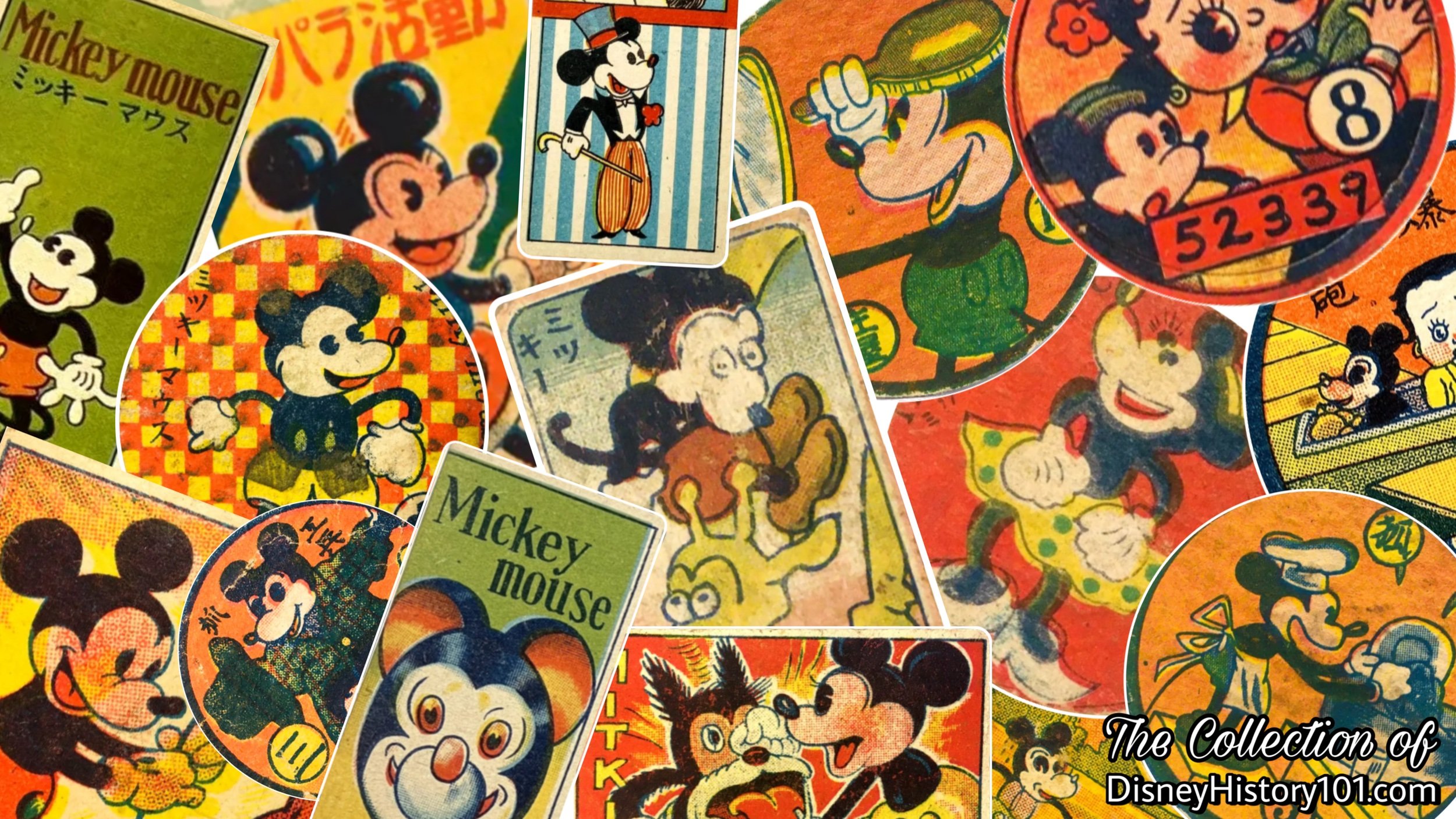
There were even めんこ, 面子 (Menko) and 雙六 or 双六 (Sugoroku) games featuring Mickey, Minnie, and Donald, which were clearly manufactured with the Japanese consumer in mind.

During this era, some unsanctioned products were made without the legal consent of Walter E. Disney. These often featured off-model images of Walt Disney’s Mickey Mouse, Minnie Mouse, and other Disney characters, whom occassionally interacted with non-Disney characters like Popeye or Betty Boop. Some of these copyright-infringing products included lusterware, bisque figures, and ring toss games. Other unsanctioned products like the ミッキーの大奮戦 (“Mickey’s Big War”) manga, postcards, metal tops, and other toys even depicted a militant caricature of Mickey Mouse. These illegal business practices were not limited to Japanese companies, as many commercial businesses throughout Europe and America engaged in the very same behavior for subsequent decades.
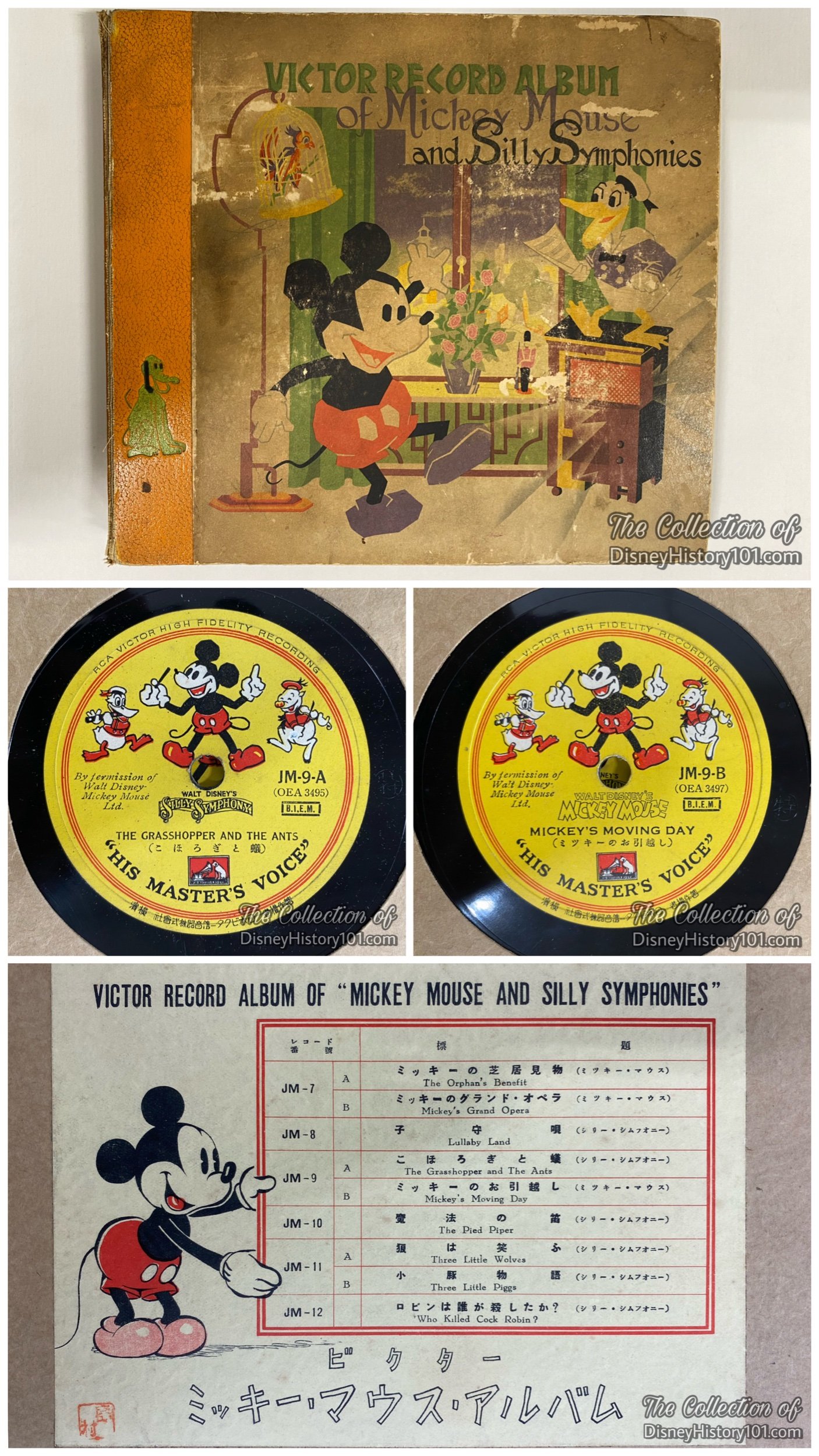
However, the Disney organization continued to take an active interest in the Japanese culture and market, producing much licensed merchandise with the Japanese audience in mind. Note a rare example - an early Victor record album release of “Mickey Mouse and Silly Symphonies”, manufactured exclusively for the Japanese consumer market. While the audible tracks of its album were published in English, the album sleeve artwork and text was modified for the Japanese consumers.
We will revisit the subject of sanctioned, licensed product and consumers later, but for now we will continue to examine the synergistic relationship between Japanese and Japanese-Americans and Walt Disney Productions.
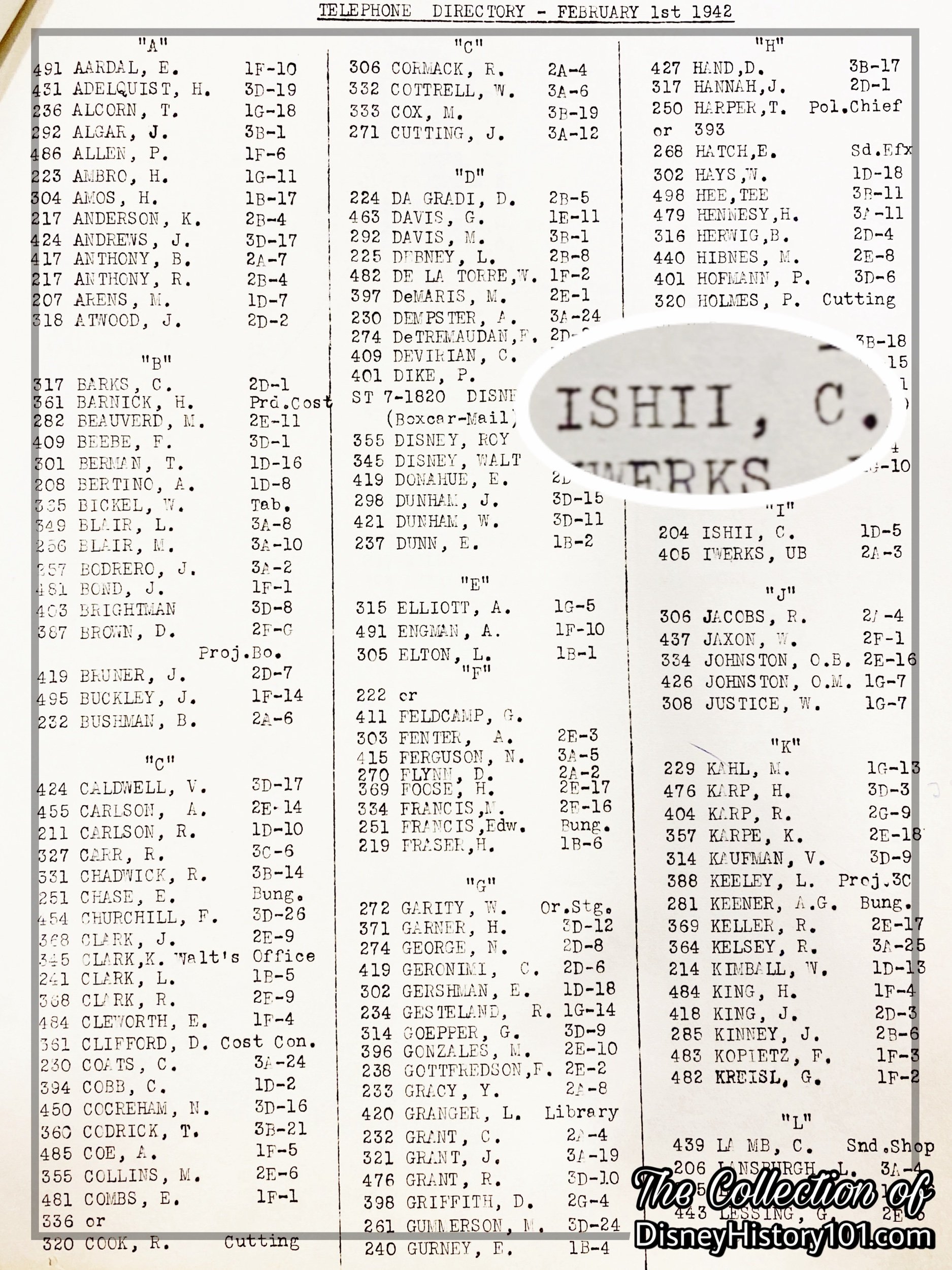
“Japanese-American Artists of Walt Disney Studios”
By the late 1930s and early 1940s, Walt Disney Studios drafted artists into its ranks from the local Chouinard School of Art in Los Angeles. As a result, the Walt Disney Studios became ever more diverse. Therein, a number of Japanese and other Asian-American animators found their niche and excelled. Aforementioned Veteran Japanese-American Walt Disney Studio Animator Robert “Bob” Kuwahara was now joined by a whole new generation of artists. In writings contemporaneous of that time, animator Ward Kimball mentioned a handful of Nisei who worked for the Walt Disney Studios , naming Chris Ishii, Tom Okamoto, Masao Kawagushi, and James Tanaka. These contributed to some of the most groundbreaking and memorable Walt Disney Productions like The Reluctant Dragon, Dumbo, and Fantasia.

Then the United States of America joined the war. Amidst the war-bewildered world, patriotic fervor swept the nation. Though the Walt Disney Studios continued feature film production, 94 percent of its facilities were engaged in special government work, including the production of training and propaganda films for the armed services, and health films shown throughout the world by the U.S. State Department. The Disney characters “went to war”, as pictorials for numerous military organizations. The Walt Disney Studio made a series of films on South America, animation for the Canadian Government selling Defense Bonds, a film describing “Four Methods of Flush Riveting”, films for the Navy Department, and more for the United States Government. Sadly, many of these films and other media contained much anti-Japanese propaganda, including the outstanding Victory Through Air Power.
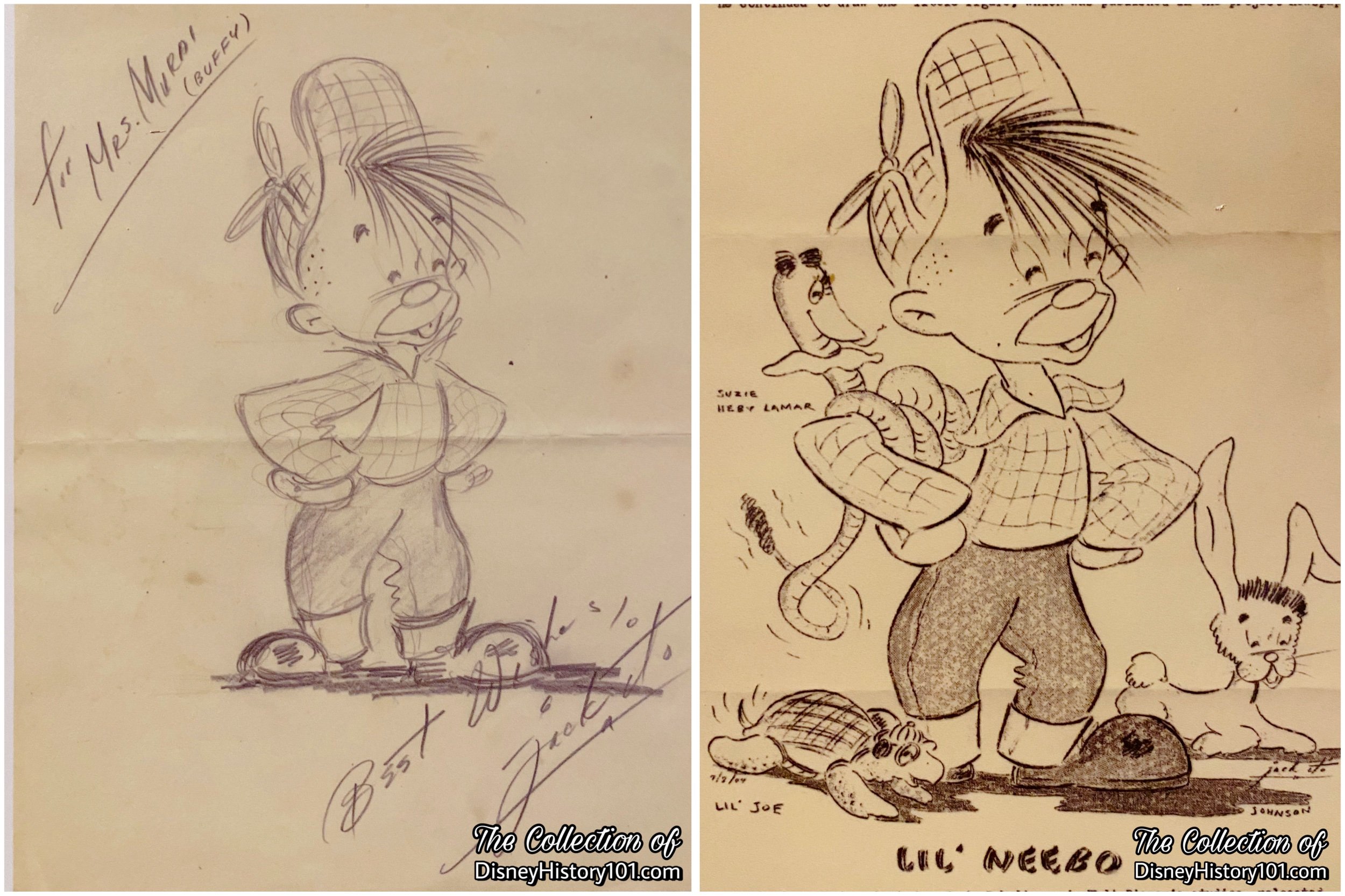
All the while, devastating things were happening in the war-bewildered world. Among these was the Presidential Executive Order 9066 which resulted in more than 120,000 Japanese-Americans being unjustly, unconstitutionally incarcerated in domestic concentration camps across the United States of America. Those United States Citizens horrifically confined behind barbed wire by their own government, included many skillful Walt Disney Studio animators like Chris Ishii, Bob Kuwahara, and Tom Okamoto. While incarcerated, many of these ones used their artistic skills to inspire others by teaching classes, creating decorative items, and contributing illustrations toward newsletters.
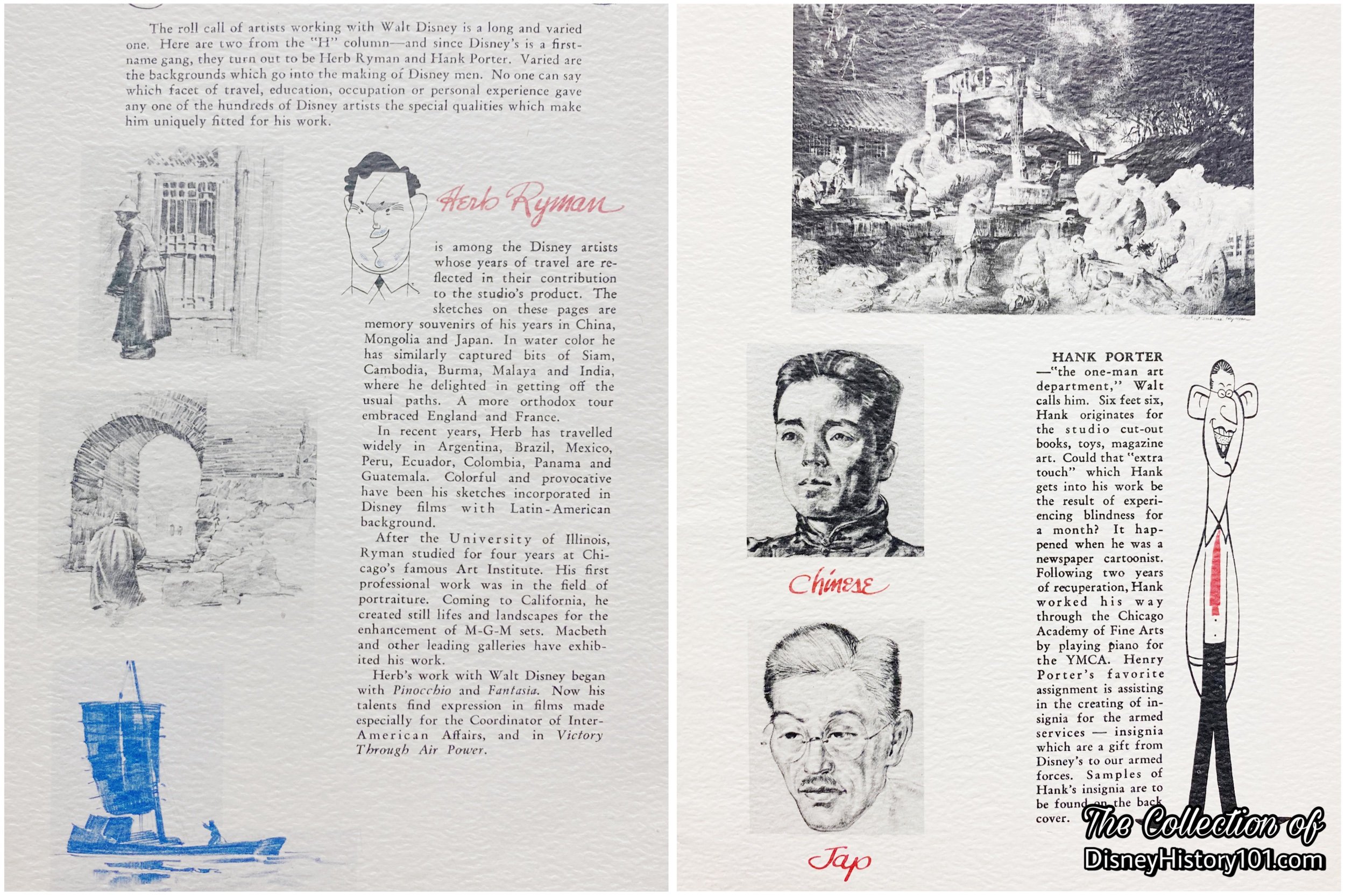
Few volunteers were recruited from among the camps, like Chris Ishii who joined the United States Military Intelligence Service and served his country overseas. Meanwhile, Dispatch From Disney’s (a World War II-era magazine prepared by and for fellow patriots of Walt Disney Studios) both makes no mention of, and contains no contribution from any patriotic Japanese-American employees of Walt Disney Productions who served their country.
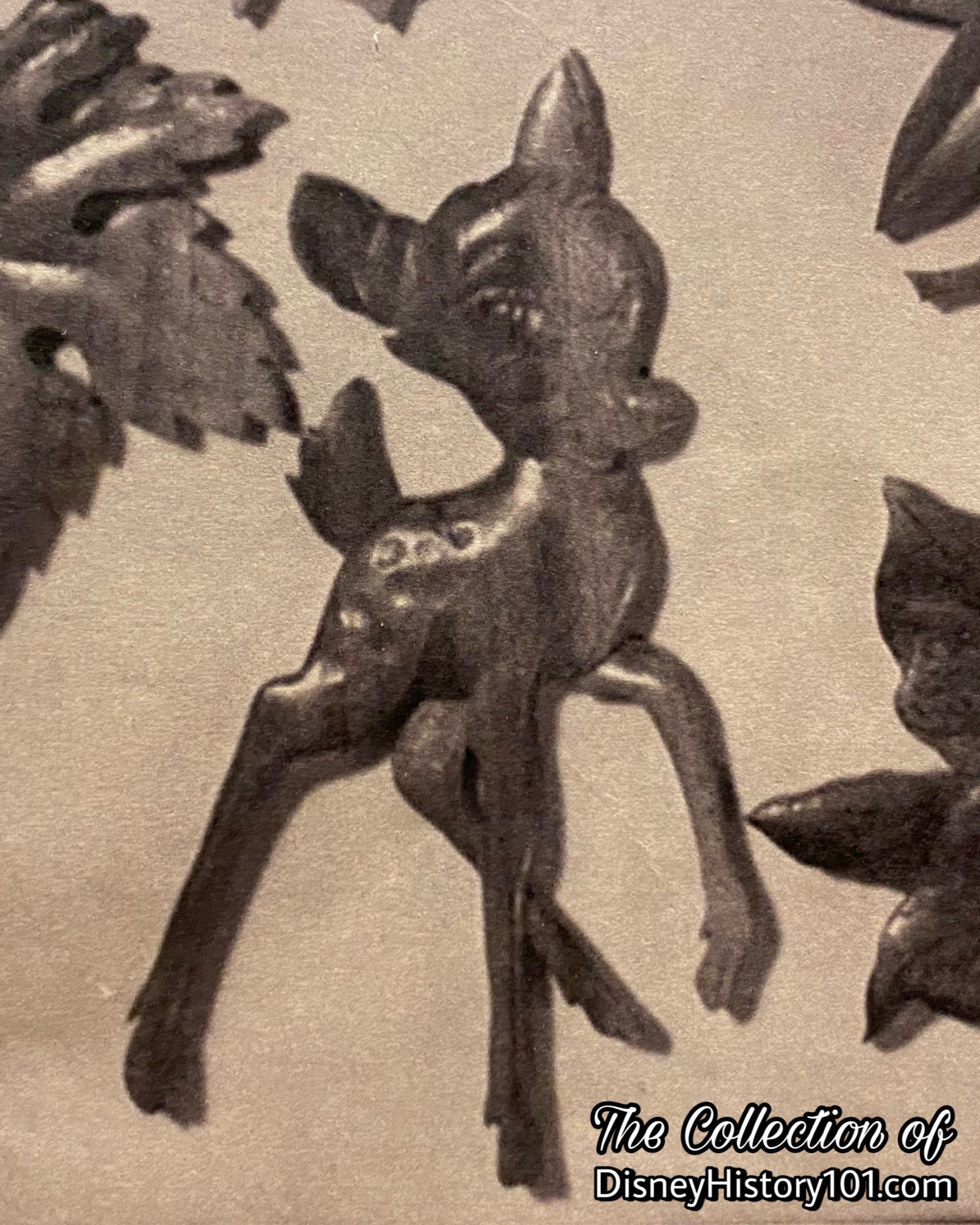
Few were lucky as Walt Disney Studios Nisei artist Gyo Fujikawa (1908-1998). Even during the outbreak of the war, Gyo became renown for her delicate and profound contributions for Walt Disney Studios from 1939 to 1941, even credited in the pages of some promotional materials for Walt Disney’s Fantasia. Gyo’s family was relocated to Rohwer concentration camp in Alabama, but Walt was able to transfer Gyo to his New York office where she extraordinarily managed to avoid the incarceration. While there, Gyo worked on licensed publications at Disney’s New York Studios.
“It was Disney who Fujikawa said changed the way she handled bigots during World War II. Unlike her parents and younger brother, she escaped internment because she was living in New York; only Japanese residing on the West Coast were sent to the camps. But Fujikawa traveled frequently, and when people became suspicious of her, she often told them she was really Anna May Wong, the Chinese American actress. According to her nephew, Fujikawa took secret delight in this masquerade. But when she told Disney that she often lied about her heritage, he exploded. ‘Damn it! Why should you say that? You’re an American citizen,’ he said. ‘From that moment on,’ recounted recently, ‘that’s exactly what I did tell them.’”
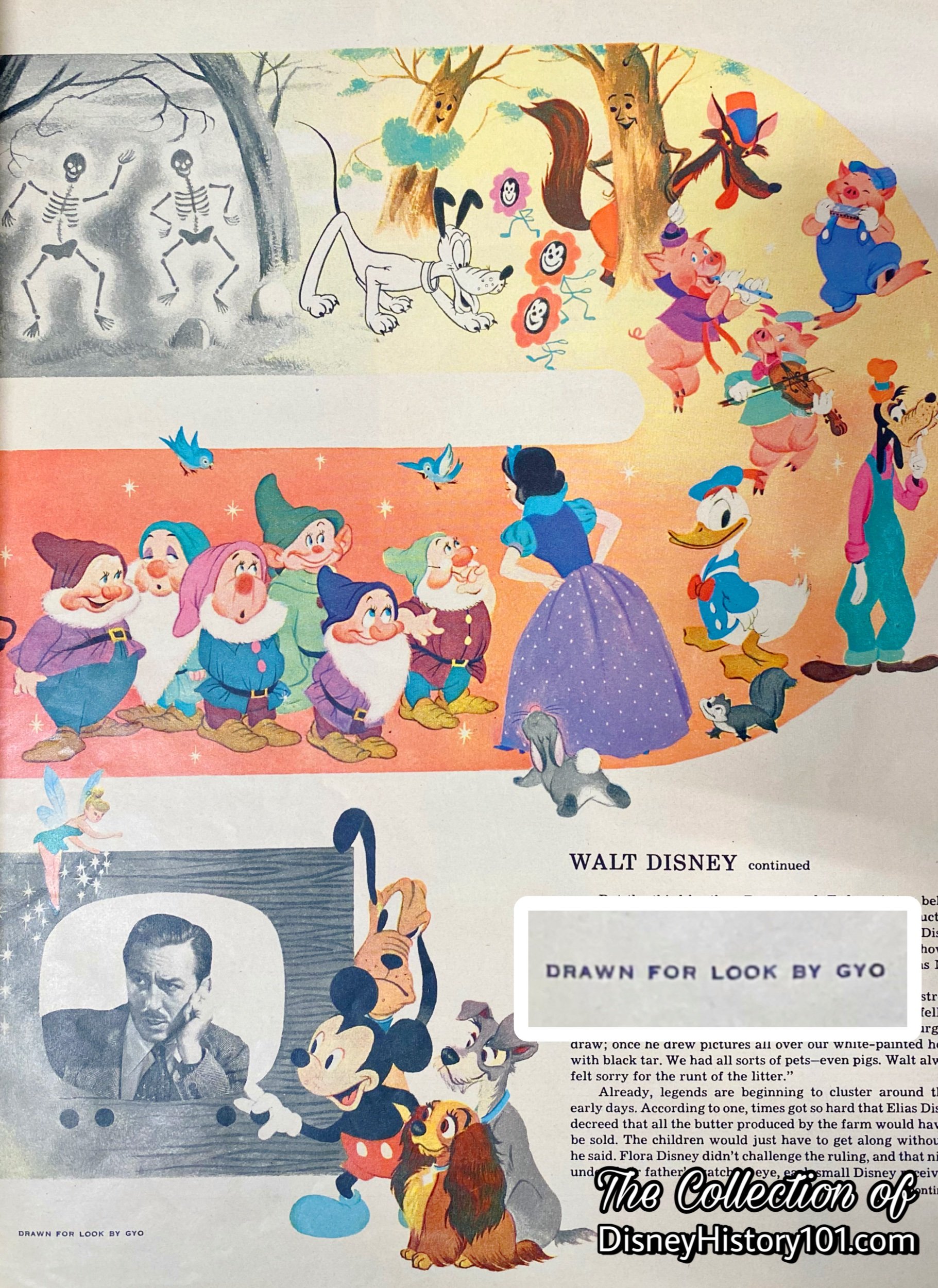
“Japanese Americans Support Walt Disney Productions”
Eventually the war ended and all interned Japanese-Americans began the awkward transition of attempting to adjust to life outside the concentration camps once again. Some (like Chris Ishii) returned to the Walt Disney Studio, and these Veteran Japanese-American artists were joined by a new generation of artists, the most prolific of whom was the 20-year-old Iwao Takamoto, who was recently released from Manzanar Camp. Iwao was hired by Walt Disney, and went on to work under the legendary Marc Davis and Milt Kahl, contributing to character designs for Walt Disney’s Cinderella, Lady and the Tramp, and Sleeping Beauty.
By the early-to-mid-1950s a number of talented young Japanese-American men and women continued to be hired by Walt Disney Studios. Willie Ito was hired in 1954, and contributed to the most-memorable spaghetti sequence from Lady and the Tramp. Meanwhile Ink & Paint Department staff - Jayne Tanawa, Kimi Tashima, Peggy Himashida and others, made indelible impressions upon the gorgeous color of animated productions, though little is recorded about them.
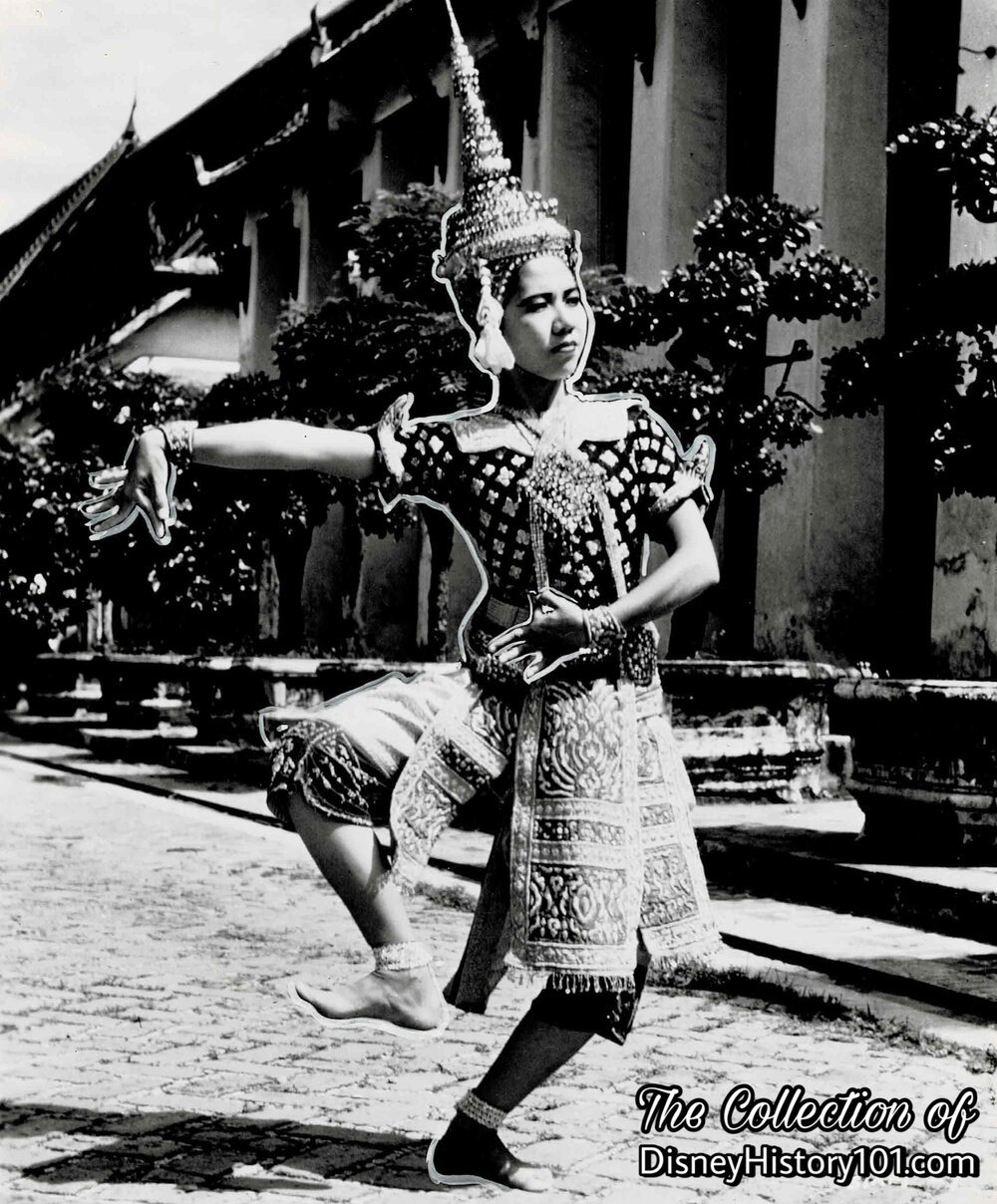
“The World Meets the True-Life People of Asia - Thailand, China, and Japan”
By 1953, Walt Disney was producing “new explorations in ‘True-Life Adventures’” - People and Places! The first People and Places film - “The Alaskan Eskimo” was released on February 18, 1953. Before the end of that year, the new Buena Vista Distribution Co. was founded and “The Living Desert” (released November 10, 1953) became the first film distributed by the division.
By 1954, Walt Disney had more than 40 photographers at work throughout the world. They were filming True Life Adventure and People & Places subjects in such scattered locales as Australia, the Arctic Wilderness, Lapland, Samoa, Japan, the islands of the sea, Portugal, England, Scotland, Wales and Antarctica. This was to satisfy a factual film release schedule that extended well into 1960. Very soon, more of the interesting people and the exotic locations in which they live would be “visited” by audiences, through films like Alaska, Switzerland, the Arctic, and “Siam” (featuring Thailand and one of the first Asian cultures to be represented in the series). As late as September 1956, Ernst Heiniger and his wife were securing photographic coverage in villages of Japan for the People and Places series.
The following year, the first and second seasons of the Mickey Mouse Club television series (1955 - 1956) included daily serials, some of which explored people and places around the world. Among these was Japan Correspondent starring George Nagata as the Correspondent, with narration written by Ray Darby. Japanese life was “seen through the eyes of a young Japanese-American boy.” The serial showed how life in a typical Japanese house was different from those of Americans. Other serials depicted Japanese sports and amusement. Despite these differences, the importance of family unity was highlighted as a major factor in daily activities. The individual first season episode titles were “Japanese Excursion”, “Japanese Home”, “Japanese Amusement”, “Japanese School” and “Japanese Sports and Games”. The second season serial was divided into individual episode titles “Japanese Circus”, “Variety Show”, “Dancing School”, “Snow Country” and “Japanese New Year”.
In 1957, Roy O. Disney (of Walt Disney Productions) and Bank of America agreed to to a bank loans in the aggregate sum of $8,500,000 had been made to produce “The Hong Kong Story.” The film was to be the second People and Places film to depict an Asian culture and was in production by April 5, 1957, and the search continued for a distributor. The was the second People and Places film to depict an Asian culture and the first People and Places film to depict the Chinese people and culture. Walt Disney’s People and Places series would expand to include the cultures of Brittany, Wales, Scotland, Lapland, India, Polynesia, the Navajo, Portugal, Morocco, Spain, Sardinia, and Holland.
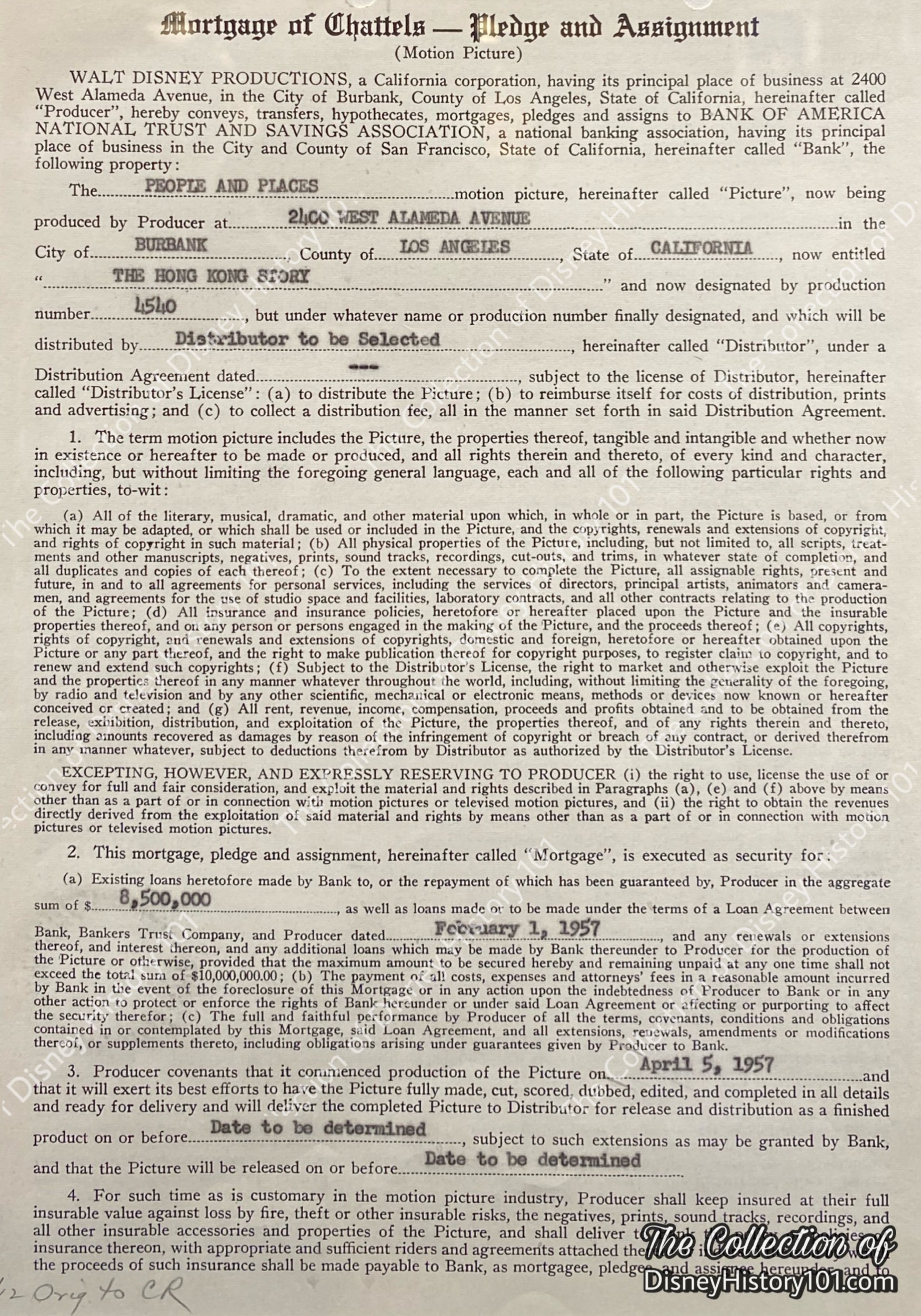
Finally on July 9, 1958, Walt Disney Productions released the the third People and Places film to showcase an Asian culture - the short film entitled “Ama Girls,” introducing theatrical audiences of the world to some of the people of Japan. The film was a success, and Ben Sharpsteen (“Ama Girls” Producer) won an award for Best Documentary Short Subject of 1958.
Two years later Walt Disney’s People and Places released the short film “Japan.” Subsequently, the full motion picture was divided into two educational color, short film reels, which were released for sale to the public (at $12 each). Titled “Japan” (27 minutes) and “Japan Harvests the Sea” (29 minutes), “these films depict the human family in its infinite variety of habits, effectively emphasizing their human relationships, customs and traditions. You'll learn about the land where… Japanese girls who spend a lifetime diving beneath the sea to harvest a crop… These are only a sampling of the fascination you’ll encounter in all of these award-winning subjects.”
Audience response to Walt Disney’s True Life Adventures was overwhelmingly positive. In 1961, one Japanese organization gifted Walt Disney a metal pagoda figurine which he proudly kept behind his desk, a gift “for his outstanding achievement in fostering international understanding through photography.” A testament to this truth was Walt Disney Studio animator Bill Justice, who reflected on the invaluable True Life Adventures, expressing: “we learned to… understand other nations.”
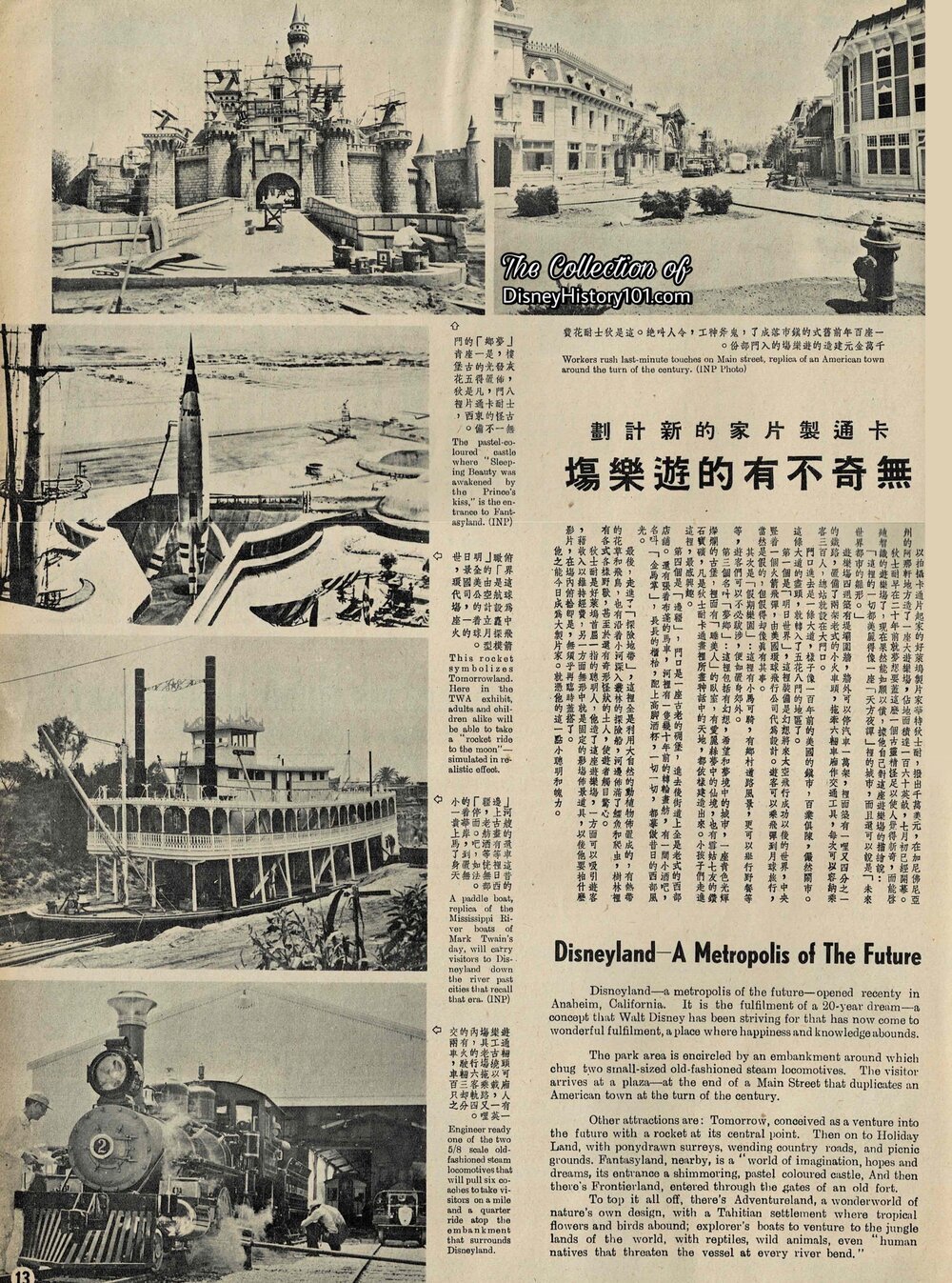
“The Japanese People - Supporting the Disneyland Show Since 1955”
Meanwhile, Walt Disney’s Disneyland Park was scheduled to open in July of 1955. In the months leading up to that momentous event, many local and foreign journals reported on the construction progress.
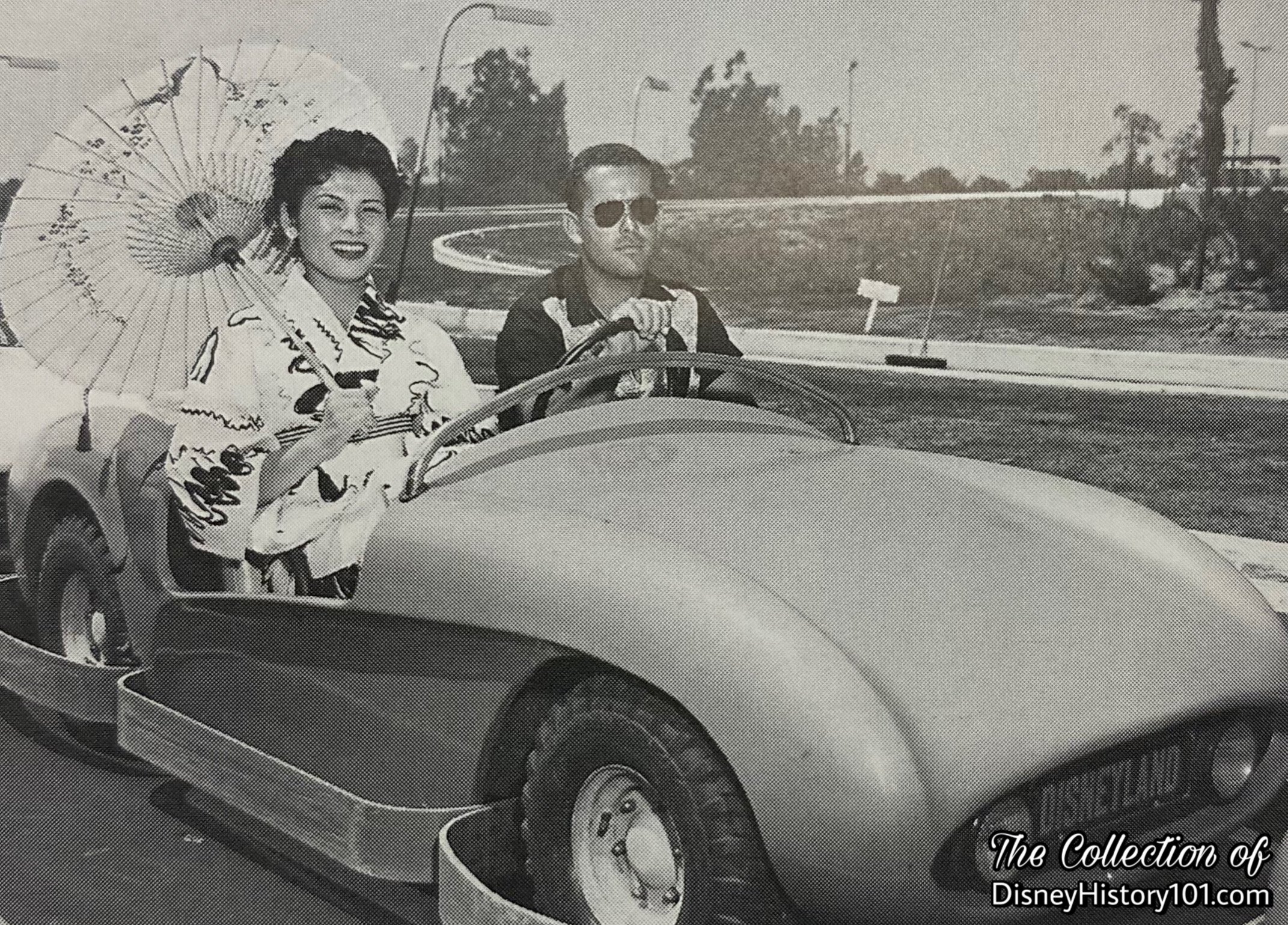
Disneyland opened July 17, 1955, and on that historic day, Walt Disney read aloud these words: “To all who come to this happy place: Welcome. Disneyland is your land.” While some anti-race sentiments prevailed in the world, Walt Disney and company recognized a need to prepare their carefully selected Hosts and Hostesses. This was partially accomplished through the now antiquated “Your Role in the Disneyland Show” orientation books published 1955, which instructed “Disneylanders” to provide guest service to all people in a section titled “Meet the King of our Magic Kingdom”. Page 6 reads: “This guest may be male, female; old or young; black, white, brown, or yellow. He may be Christian, Jew, Buddhist, or Hindu; Republican or Democrat; show-off or wallflower; big shot or small; rich or poor; healthy or unhealthy. But from the moment his car turns into the Disneyland parking area until he leaves, he is our guest. And he or she is the most important person in the world to Us.” So, it was up to each courteous, considerate host to leave their troubles and prejudices outside of the Disneyland berm and preserve this Disney Tradition in the Magic Kingdom. The result was that Disneyland gained “a world wide reputation for COURTESY, CLEANLINESS, AND... GOOD OLD FASHIONED FRIENDLINESS.”
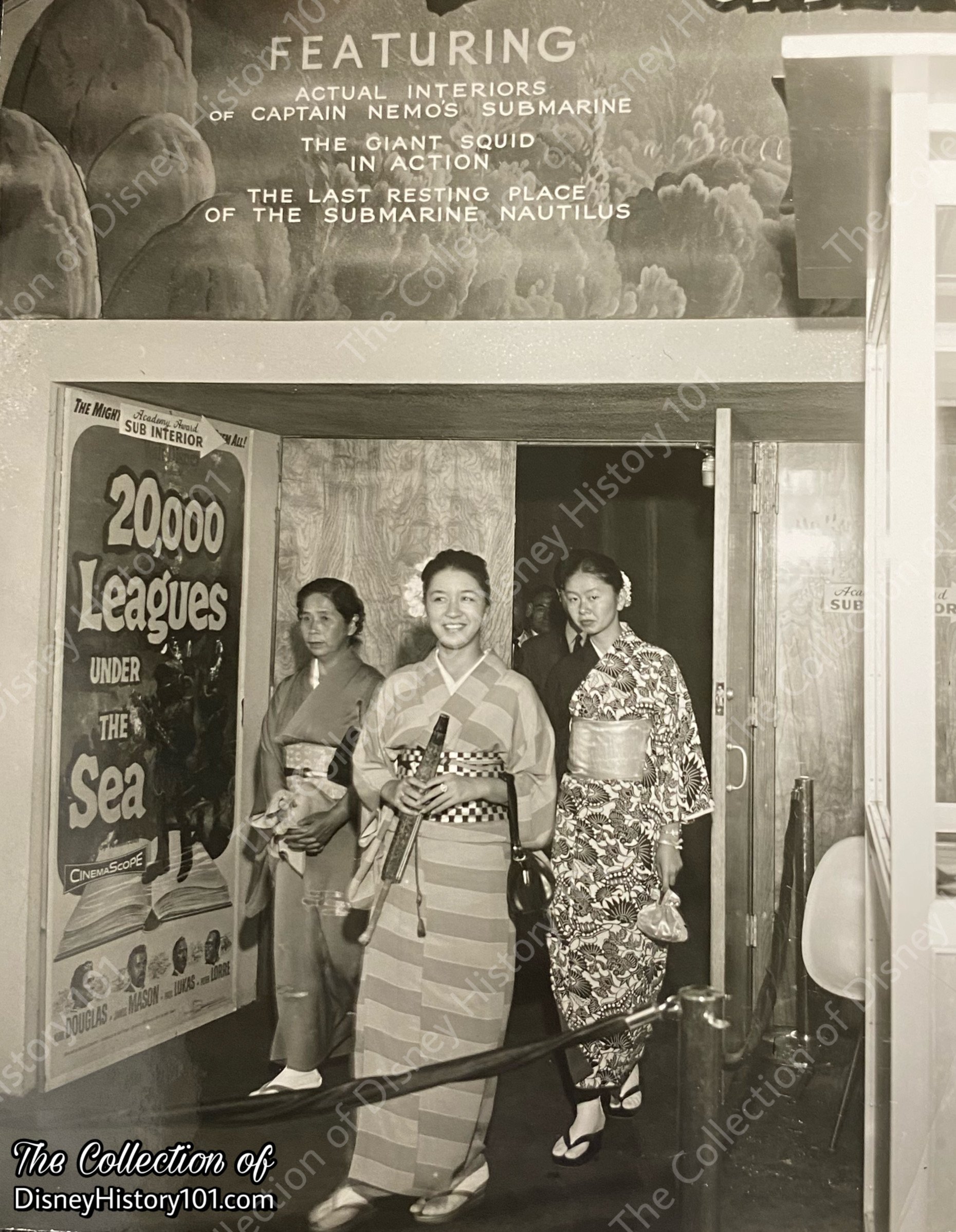
Soon as the gates opened, visitors from every continent, country and state felt welcomed to flock to Walt Disney’s Magic Kingdom - including both native Japanese and Japanese-American Guests! The Disneyland News (the official publication of Disneyland), published August 1955 ran the headline “World Visitors Enjoy Disneyland”. The article read: “A name register at Pendleton Woolen Mills store in Frontierland shows the signatures of visitors from all 48 states in the United States and 12 foreign countries since Park opening on July 18.”
One of the earliest and most-notable Japanese Guests to be reported on was Miss Japan Keiko Takahashi (who visited with Miss Universe contestants) according to “The Disneyland News” (March 10, 1956 ; Vol. 1 No. 9). According to The Disneyland News published August 1955 mentioned that “foreign beauties from the Miss Universe content held recently in Long Beach, California, spent time at Disneyland after the pageant. They included Miss Japan and Miss Italy who paid the park a visit before returning home.”
Photographer Mel Kilpatrick captured her visit as she received a personal ride aboard the Autopia with WED Enterprises engineer Bob Gurr at the wheel [Design: Just for Fun by Bob Gurr]
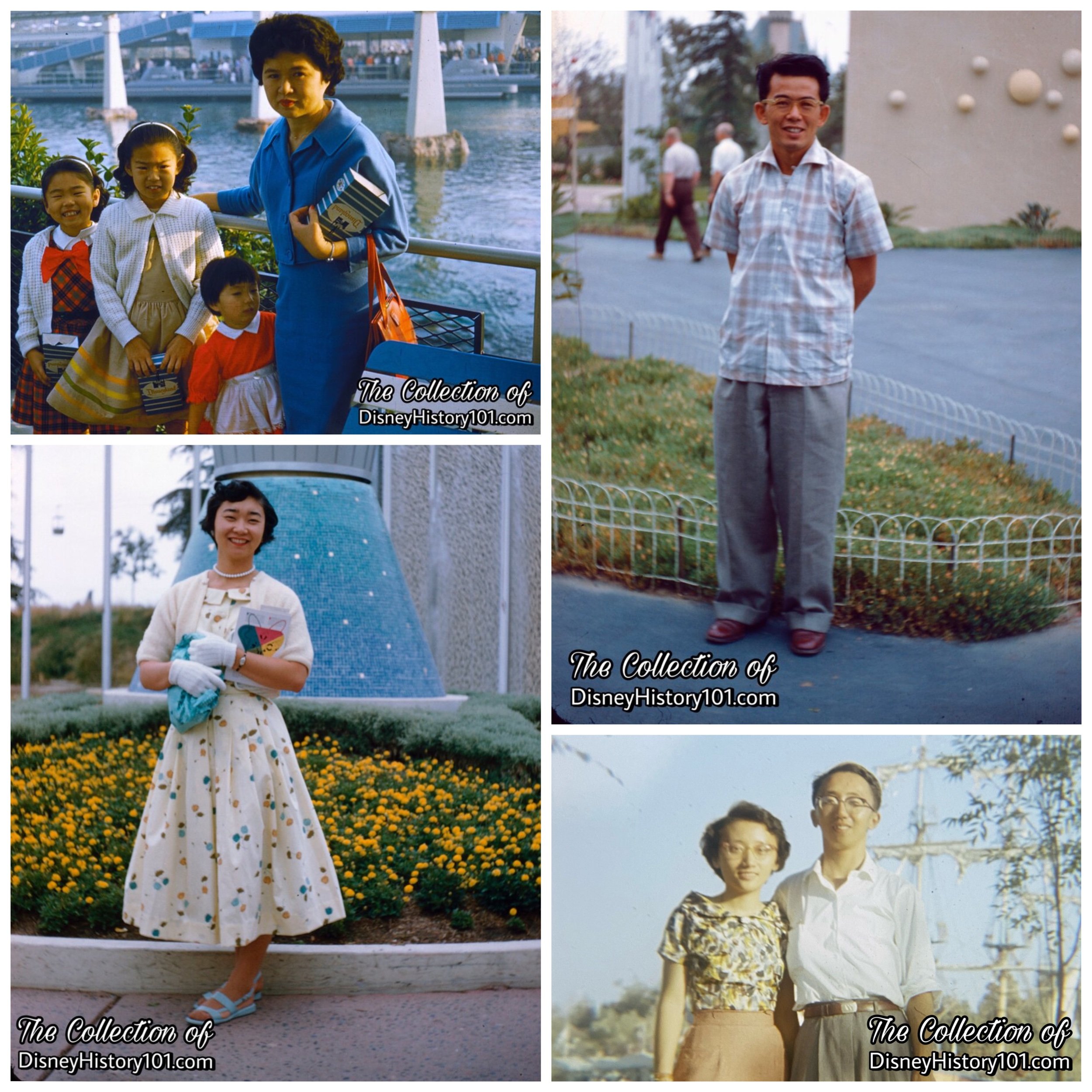
Very Important People from every major continent in the world continued to experience the magic of Walt Disney’s Disneyland Park. These included the “big shot or small”, attested to by the innumerable memories preserved through personal accounts and photos.
Of course, the “big shots” were often reported on by the press and are most-remembered. Some of these include Prince Akihito and Princess Michiko of Japan who visited Disneyland on their honeymoon in 1960, and Mitsue Ikeda, the wife of the Japanese Prime Minister Hayato Ikeda visited in 1961. By 1961, “Anaheim... Future Unlimited” published by the Anaheim Chamber of Commerce, commented: “There isn't a corner of the world that hasn't heard of Disneyland . . . visitors have come to the Magic Kingdom from all 50 states in American and more than 100 foreign lands!” Not long after this commentary was published, popular musicians, stars of stage and screen, and many other VIPs from Japan continued to flock Disneyland, and some of these visits were reported on, like Japanese singing sensation Kyu Sakamoto in August 1963.
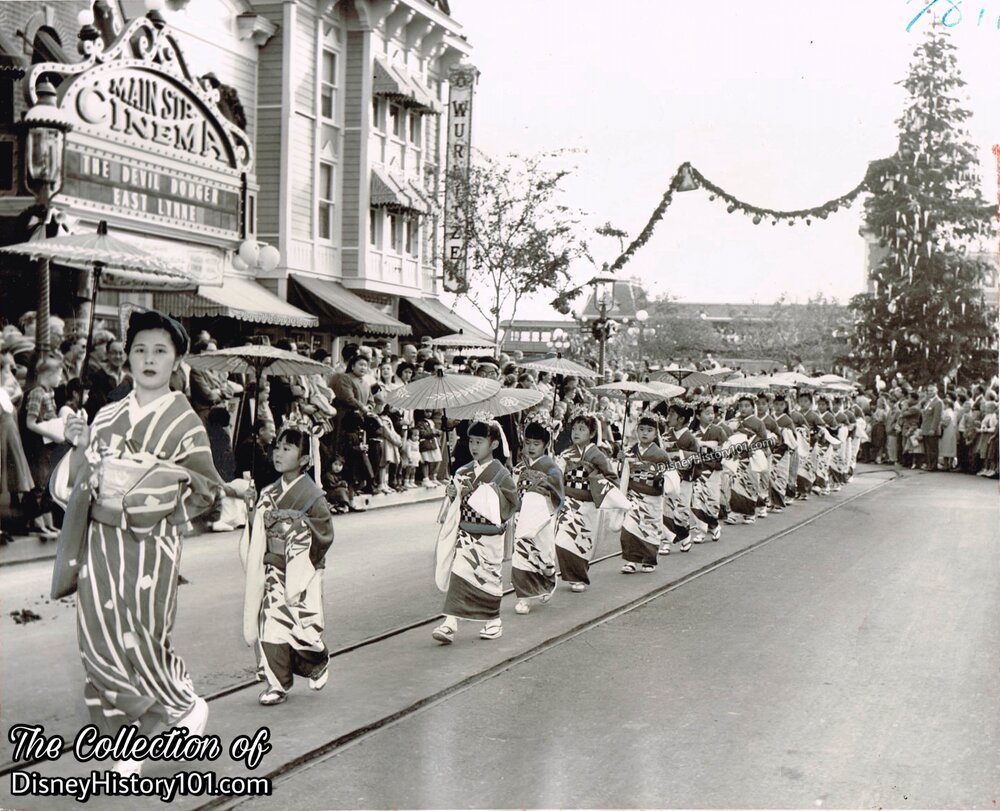
“Japanese Guests & Organizations Support the Show” - Walt dedicated Disneyland, stating that: “Disneyland is your land” (ディズニーランドはあなたのものです。) True to Walt’s words, the introduction of Private Parties made it possible to roll out the red carpet for special organizations. Among these was one of the first Asian-American groups to enjoy a Private Party at Disneyland - in the form of a Niesi Veterans Re-union that was held at Disneyland in 1958. All the while, other Japanese-American organizations and groups immediately became proud supporters of the Disneyland show in other ways.
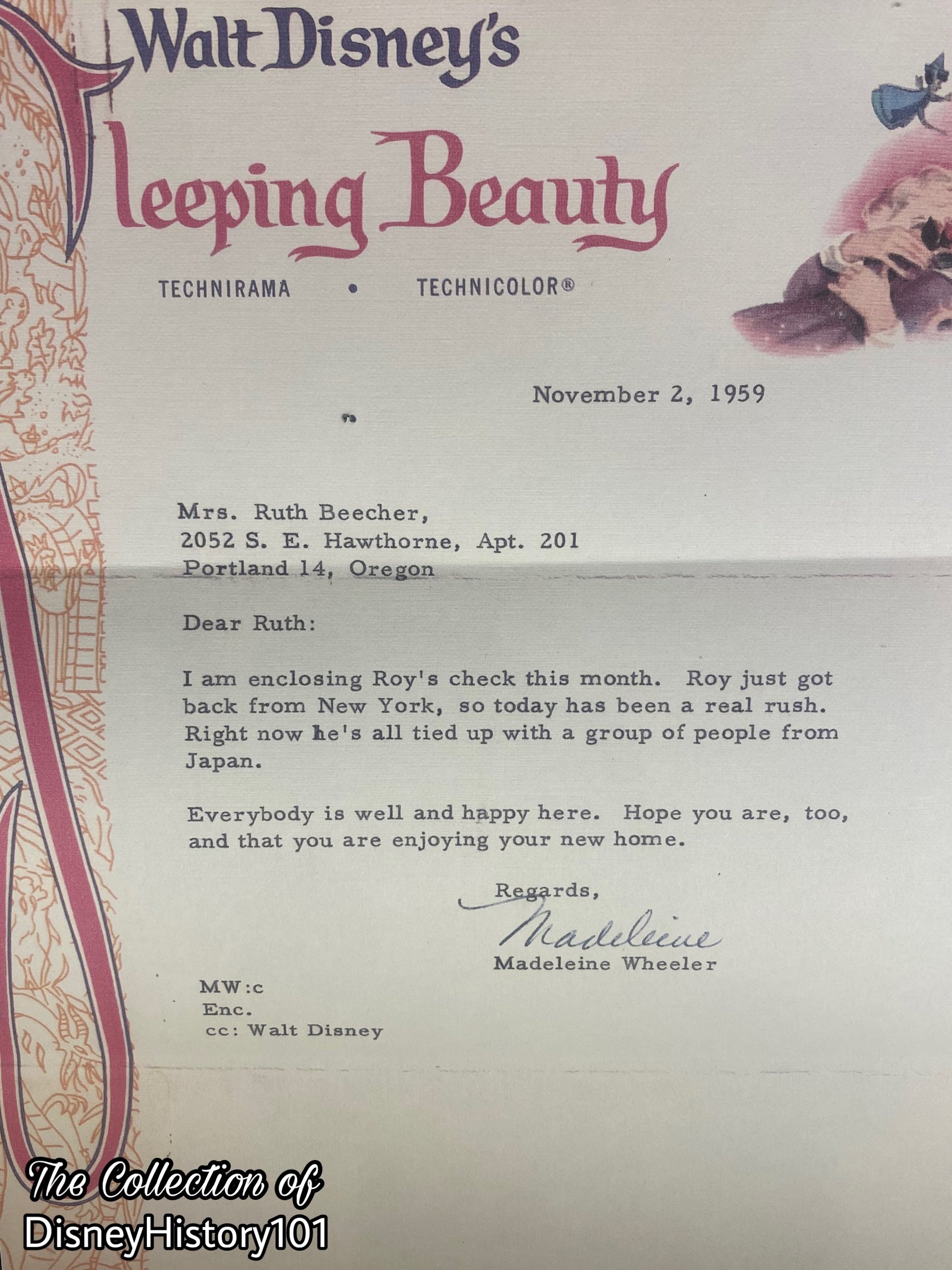
For instance, during 1959, The eventful 24-hour “Gala Day At Disneyland” was highlighted by one of the most colorful parades staged anywhere. A spectacular array of dance groups, bands, and variety performers from Japan, Scotland, Greece, and many other nations served up “a scintillating portion of top entertainment.” Among these units was Kansuma Kai (which was notably overseen by the outstanding dance master Madame Fujima Kansuma of Little Tokyo in Los Angeles). Kansuma Kai was a proud supporter of Disneyland and a few years later, the troupe also provided decorative floats for the Parade of All Nations portion of the Annual Christmas parade, on Sunday, December 16, 1962. Even during this early era of Disneyland history, it was not uncommon to see such a strong Asian and Pacific Island presence (e.g. L.A. Chinese Drum and Bugle Corps led by Hayward Tom, the India Art Group lead by Miss Sushila Janados, and the Korean Danco Group of Los Angeles lead by Phil Kim; each contemporary Disneyland entertainers of Kansuma Kai).

Another Japanese organization who participated in shows at Disneyland was the esteemed Tokuyae Classical Dance Group of Los Angeles (notably overseen by classical dancer Hanayagi Tokuyae; a member of Nihon Buyo Kiyokai, the Performing Arts Federation of Japan; the first Japanese American permitted to recommend future natori). Tokuyae Classical Dance Group of Los Angeles often performed as participants in celebratory and seasonal Disneyland parades and events during the 1950s and 1960s. In the photo above, Madame Hanayagi Tokuyae and her students can be seen carrying wagasa.

“Made in Japan - Walt Disney Productions Licensed Products and Japan Manufacturers”
A noteworthy chapter that factors into the story of Walt Disney World Showcase Japan Pavilion is that of the Japanese-produced merchandise that was licensed by Walt Disney Productions through the decades. Back in 1955, Walt Disney Productions was conducting character merchandising through a domestic division and foreign agents. As a result, by that year, 740 companies were making nearly 3000 items featuring Disney characters.
After the opening of Walt Disney’s original Magic Kingdom, shops and catalogs offered “fabulous gifts from Disneyland.” Many of these gifts were manufactured by the multi-talented craftspeople of Asia. There were hand-embroidered decorations from India, Tabis (toe-socks) and Sandals from Hawaii, woven Chinese “carry-alls” from Hong Kong, shelves from China, and ceramics from Korea. There were (of course) also a multitude of products manufactured in Japan.
Among the other products of Japan sold at Disneyland or through Disneyland catalogs were automated tin lithographic toys, eraser sets, pocket knives and multi-tools, necklaces, kokeshi dolls, lenticular buttons, and especially those memorable souvenir hand-painted wagasa (traditional bamboo and paper parasols). You may recall visiting Ruggles and purchasing bone China “eggs”, ceramics of Donald Duck distributed by Dan Brechner, or porcelain figures of Tinker Bell distributed by Wells of England. Each one was skillfully crafted by the people of Japan.
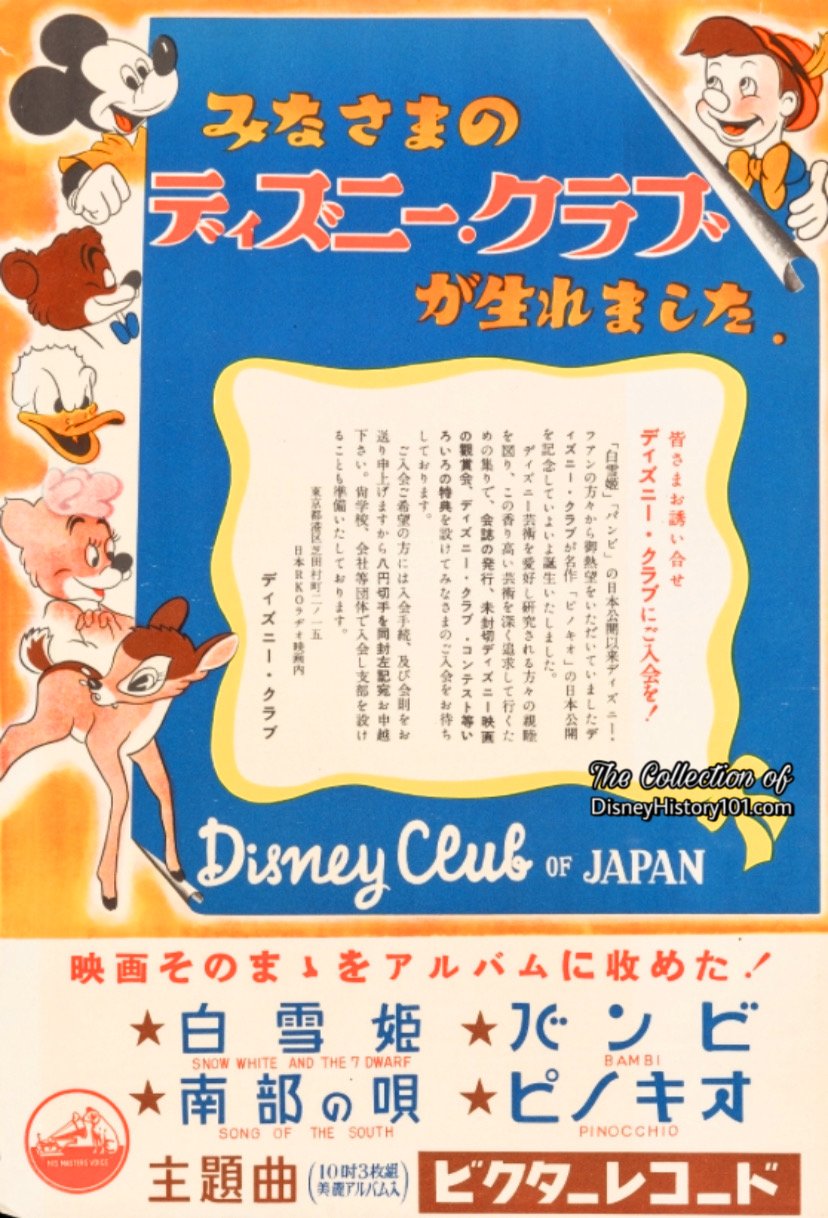
“We Keep Moving Forward, Opening Up New Doors - Walt Disney Productions Japanese-Language Dubs”
In his own words, Walt Disney once stated: “Diversity. We must appeal to a far wider range of audience interest than ever before.” A testament to Walt’s words, was the foreign distribution and translation of motion pictures for the international audiences of in Canada, the United Kingdom, France, Germany, Sweden and Japan. Japanese-language dubs of feature length Walt Disney Productions were prepared for specific overseas audiences. The Japanese film dub releases were not released in the same chronological order of their original releases. For instance, Dumbo (空飛ぶゾウ ダンボ; released 1954), The African Lion (1955), Davy Crockett (1955), 20,000 Leagues Under the Sea (1955), The Vanishing Prairie (1955), Fantasia (ファンタジア; 1955), Bambi (バンビ; 1957), Saludos Amigos (ラテン・アメリカの旅; 1957), Snow White and the Seven Dwarfs (白雪姫; 1958), and Three Caballeros (三人の騎士; 1959).
Many credited and uncredited Japanese actors, actresses, and vocalists supported the Japanese-language dubbing of feature length Walt Disney Productions. Some actors and actresses even voiced more than one character for multiple productions, like Shima Tomizawa (富沢志満) who voiced both Cinderella (for the 1952 Japanese issue), and Snow White (for the 1958 Japanese issue).
Walt Disney Productions Reports to Shareholders regularly reported on these releases. The report for the fiscal year ending September 1956 announced: “Walt Disney's widely acclaimed feature length cartoon, dubbed Japanese language, has received an award for artistic excellence from the Japanese Ministry of Education. It is the only American film among seven to be so cited An impressive attendance record has been established by the picture in the first 18 days of its run at the Marunouchi Nikkatsu Theatre here. The 1,500 seat theatre with a daily capacity of 9000 and six shows a day played to 194,069 spectators during the run. This means thousands had to stand to see the picture.”
“Disneyland High-Fidelity Records”
Popular Japanese singers also contributed theme songs, like Izumi Yukimura (雪村 いづみ) who sang the theme of Walt Disney's Alice in Wonderland. Many of those Japanese-Language tracks were published on Disneyland High-Fidelity Records. In addition to these were original albums
Their comprised contributions may have been unheard of by most contemporary American audiences, but were greatly appreciated by people around the world.
“The Disney Club of Japan”
It is of note, that contemporaneous with the release of Pinocchio (ピノキオ; 1959), Disney activities were “as globe-girdling as those of almost any U.S. industrial company. Its cartoon characters, for instance” were “licensed in 31 nations.” Disney was utilizing the built-in exploitation features of its products to boost profits of its foreign operations (including those of Japan). One example is the RKO-Japan established official Disney Club of Japan. For the price of an eight yen stamp, enthusiasts of Disney art could enjoy member benefits of journal publications, viewing of Disney movies, Disney Club Contests, and much more along with fellow fans. It is not surprising that only a short time later, Japan ranked first among countries other than the United States, in sales of Disney consumer products.
“Simultaneously with the national release of Walt Disney's DAVY CROCKETT, KING OF THE WILD FRONTIER, Fess Parker went on a month-long personal appearance tour covering ten important cities throughout Nippon. Parker, who held the title role in the film, faced a heavy schedule which included theatre and TV appearances as well as interviews with press, radio, television and magazine correspondents.”
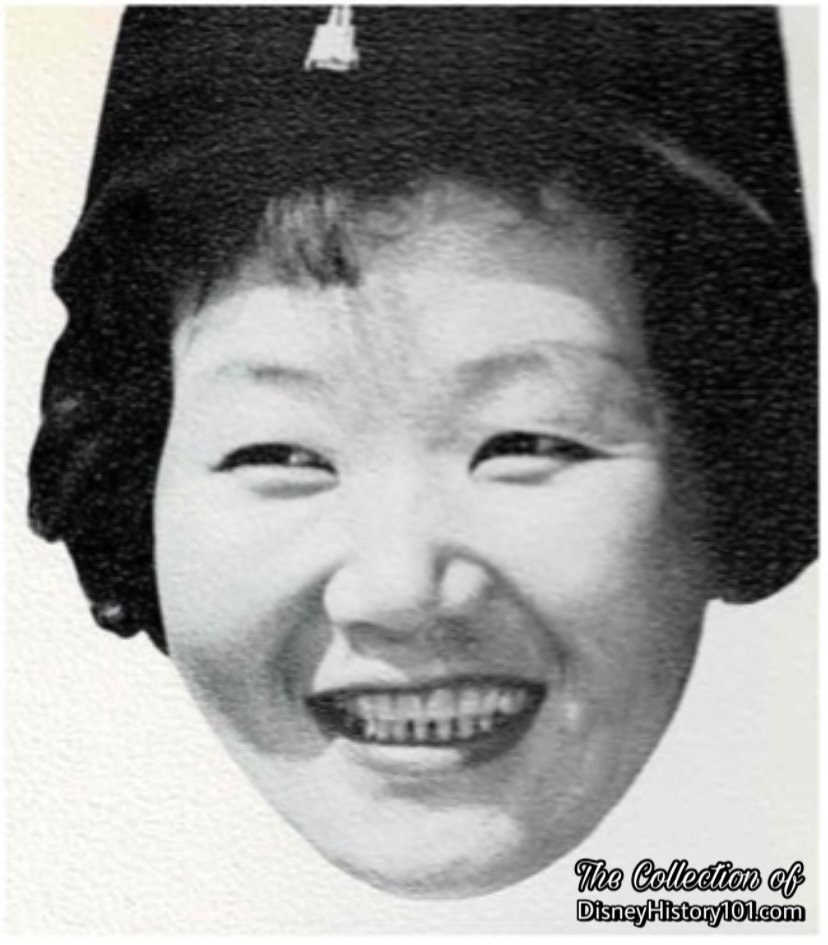
“Japanese Guided Tours Hosts & Hostesses Support the Show”
Meanwhile, Disneyland Guests were often welcomed by a number of Japanese-American Hosts and Hostesses who fulfilled roles as Cast Members of the Disneyland Show. For instance, by Disneyland’s Tencennial celebration and beyond, there were many exemplary Japanese-American women supporting the Disneyland Show as Guided Tour Hostesses. The foremost of these included Reiko Cox - who was one of the first Japanese-American Guided Tour Hostesses to be distinguished in her supporting role at the dispatch tour desk. Reiko had the pleasure of selecting girls for tours, Main Gate Service, and for buses, forming the tours in the garden, and keeping the show going with a smile.
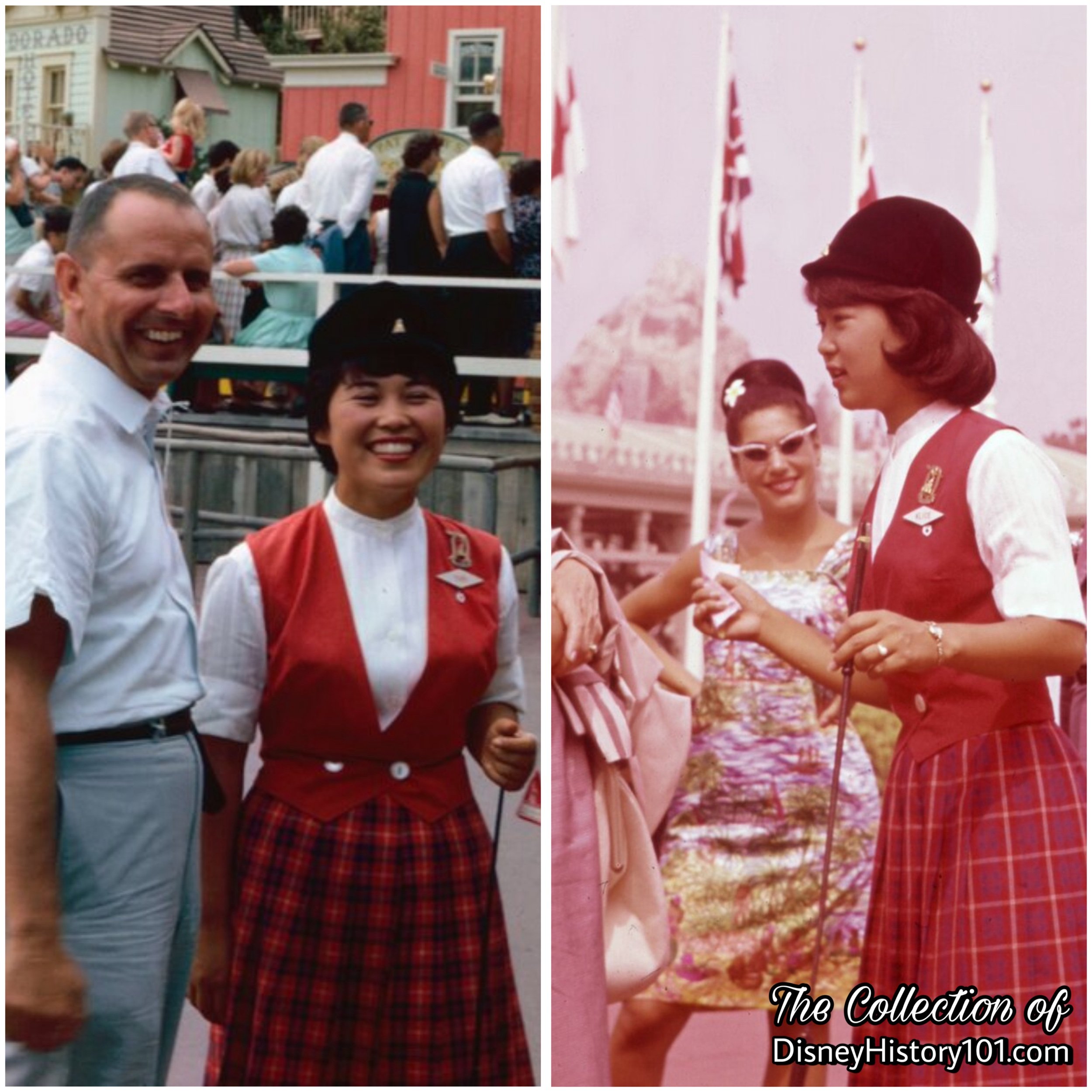
By the time that Japan was represented within it's a small world at the New York World’s Fair, the humble number of Japanese-American Disneyland Guided Tour Hostesses had grown into an impressive roster of Issei, Nisei, and Sansei that included Masako Naganuma, Sachiko Koike, Tomoko Omori, Yuki Saito, Alice Shinmoto, Chise Sakamoto, and Yoko Ubukata (to name just a few). Along with English, some of these would communicate with guests in Spanish, French, Italian, German, Dutch, Chinese, Swedish, Danish, Norwegian, Finnish, Portuguese, Greek, and of course, Japanese.

“Japanese Hosts & Hostesses Supporting the Show Onstage and Backstage”
From the 1960s and beyond, many other Japanese-American hosts and hostesses supported the Disneyland show in other capacities.
Across Disneyland On Stage, there was Yuki Sechi (of Main Street), Aiko Martello (of the Pavilion), Karen Uyeno (of Fantasyland), Shirley Kobayashi (of Storybook Land), Bob Nezu and Hiro Yasuda (of Tahitian Terrace), Diana Lai, Marilyn Wada, and Terri Kakuda (of Walt Disney’s Enchanted Tiki Room), Kazugo Yamashita (of Tomorrowland Foods), Ken Fujimura, Sandra Yamashiro, Kathy Nitta, and many other important Japanese Americans. Behind-the-scenes (in 1965), Japanese-American Hawaiian native Hideo “Indian” Aramaki joined Disneyland and would swiftly revolutionize the cuisine and menus of Disneyland Park restaurants for two decades.
“Disneyland Diplomacy - The Ambassador of Disneyland Visits Japan”
While hosts and hostesses contributed to the show and welcomed Guests to Disneyland Park, the first Disneyland Ambassador represented Disneyland during the Tencennial Celebration on goodwill tours to Europe, Canada, Australia, New Zealand, and Japan. While in Japan, “Julie visited the Mayor (called Governor) of Tokyo. She also visited the Ministers of Welfare and Education… She told the story of the Magic Kingdom and invited all those present to visit Disneyland as the guest of Walt Disney. After several days in Tokyo, Julie went to Osaka and Nagoya to round out her Far East trip.” There is no doubt that this diplomatic trip furthered the relationship between Walt Disney Productions and the Japanese audience.

“It’s a Small World of Japan”
Respectfully, Japanese culture influenced some of the presentation of It’s a Small World at Disneyland. In preparation of the show, Marc Davis began work during the spring of 1963, creating concepts for the Asia section which would include Bali, Thailand and Japan. Soon, the “Small World” title tune was recorded, with several tracks laid by several groups around the world, including one featuring “plain kids” in Tokyo.
The International Gateway Facade was a single harmonic structure with no one design dominating, but a spectacular synthesis of the world’s architecture into a statement of the youthful spirit and oneness of It's a Small World. Artists and designers included Japanese architectural elements among the International gateway facade of the show building.
Some local Japanese individuals and organizations were both knowingly and even unwittingly involved in the show’s presentation. Artists shopped the stores of Little Tokyo district in Los Angeles for “colorful paper balloons and plastic fish,” according to the It’s a Small World Disneyland Pictorial Souvenir. When show installation was completed, just before the attraction opened, the members of the Tokuyae Classical Dance Group of Los Angeles were among those invited to join in the historic opening-day festivities for Its a Small World at Disneyland on May 28, 1966.
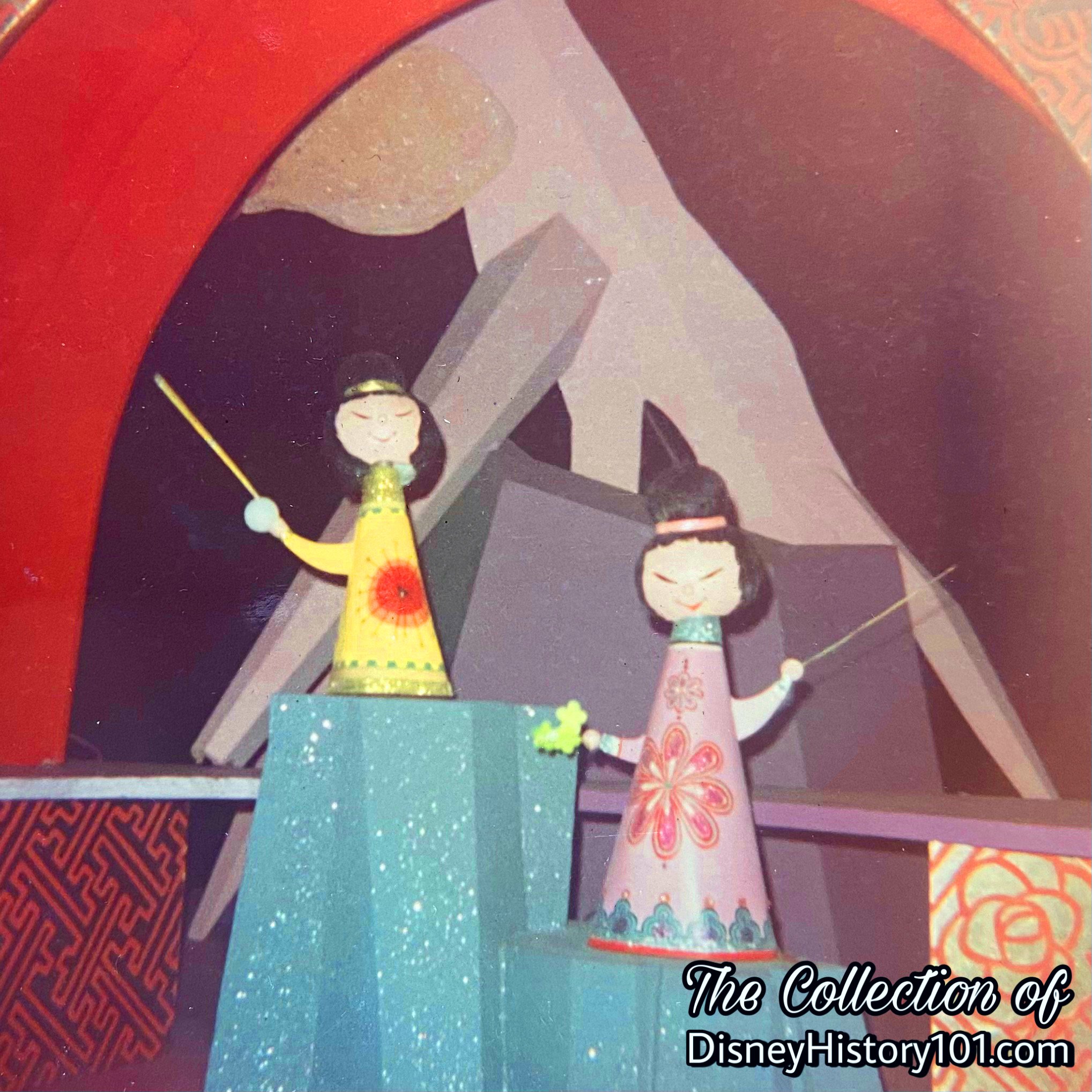
Then, Disneyland Guests were first entertained by the captivating sounds and sights of 350 figures and dolls representing the children of the world. In the attraction, Japan was represented by “kimono-clad playmates who bow ‘good-bye’ to passing boat from high atop a Tori gate.”
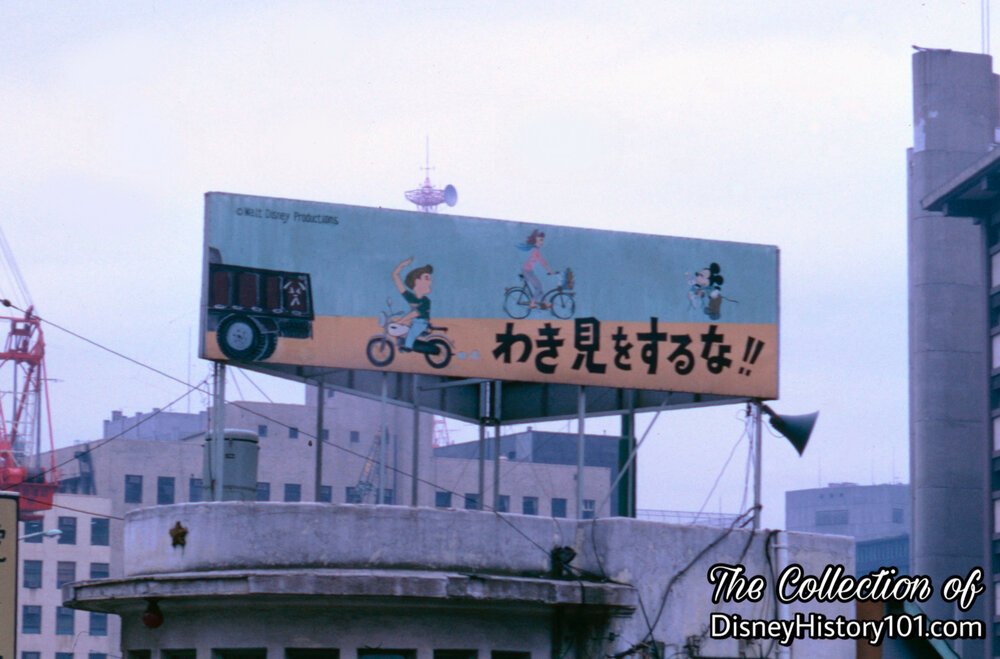
“Walt Disney Productions Licensed Products, Unsanctioned Copyright Infringement, and Japan”
Since the 1920s, many Japanese and Japanese American commercial businesses supported the production of Walt Disney Productions licensed merchandise. However, some entities across the globe were involved in unlicensed manufacture and sale of products featuring Walt Disney’s cast of characters. This practice resulted in an ever-growing tidal wave of unlicensed products (including tin-lithographic toys, sugoroku games, and other products) which did not have the approval or copyright notation of Walt Disney Productions. These continued to be created in Japan through the decades, before finally reaching a problematic crescendo during the 1960s. Then in 1961, Kunizo Matsuo’s Nara Dreamland opened in Nara Prefecture, devoid of Walt Disney Productions’ intellectual properties, but including many attractions inspired by Walt Disney’s Disneyland. There were distorted doppelgängers of Main Street Station, the Matterhorn, and even Sleeping Beauty Castle. This park most-certainly did not have the approval of Walt Disney Productions and would all lend a hand in what happened next.
“The Disney Licensing Association of Japan”
That very year of 1961, Walt Disney Company Merchandise Representative Matsuo Yokoyama was hired in to help establish Disney’s copyrights in Japan. He did so and helped to create the Disney Licensing Association limiting the amount of licensed Disney products manufactured in Japan during the 1960s and 1970s, and assuring the value of Disney products. This arrangement synergistically benefitted numerous Japan-based manufacturers who acquired rights to manufacture the Walt Disney Distributing Company product line, which included toys, decorative gifts, clocks, watches, polo and sweat shirts, jewelry, plastic novelties, and more. Some companies utilizing a Walt Disney Productions license for characters and indicia, included Louis Marx and Company, Masudaya Modern Toys, and others.
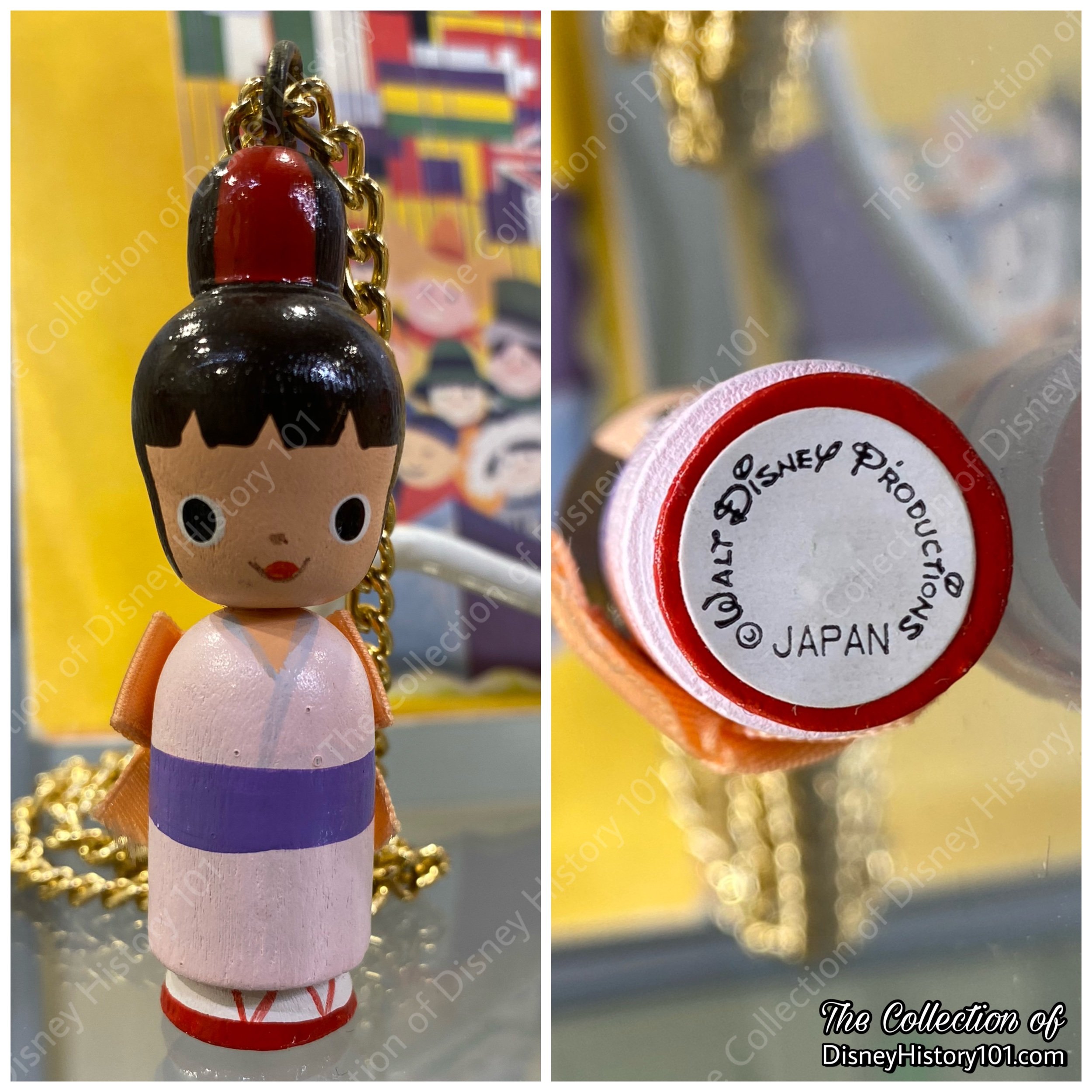
Official licensed products now carried the Walt Disney Productions copyright note and occasionally a stamp, sticker or label indicating manufacture in Japan. The Small World stand opened with much merchandise from Germany, Kenya, and Japan and other countries.

An unknown amount of Walt Disney Productions licensed merchandise was manufactured in Japan and distributed by American Corporations for sale exclusively through Disneyland. Many of these quality products were proudly branded with an official copyright notation, the Walt Disney Productions name, and their place of origin - Japan.

Do you remember those small American flag pins that were distributed to cast members for the Fourth of July celebration of 1969 and the American Bicentennial celebration? Each one arrived at Disneyland with stickers on the back reading “Made in Japan“.
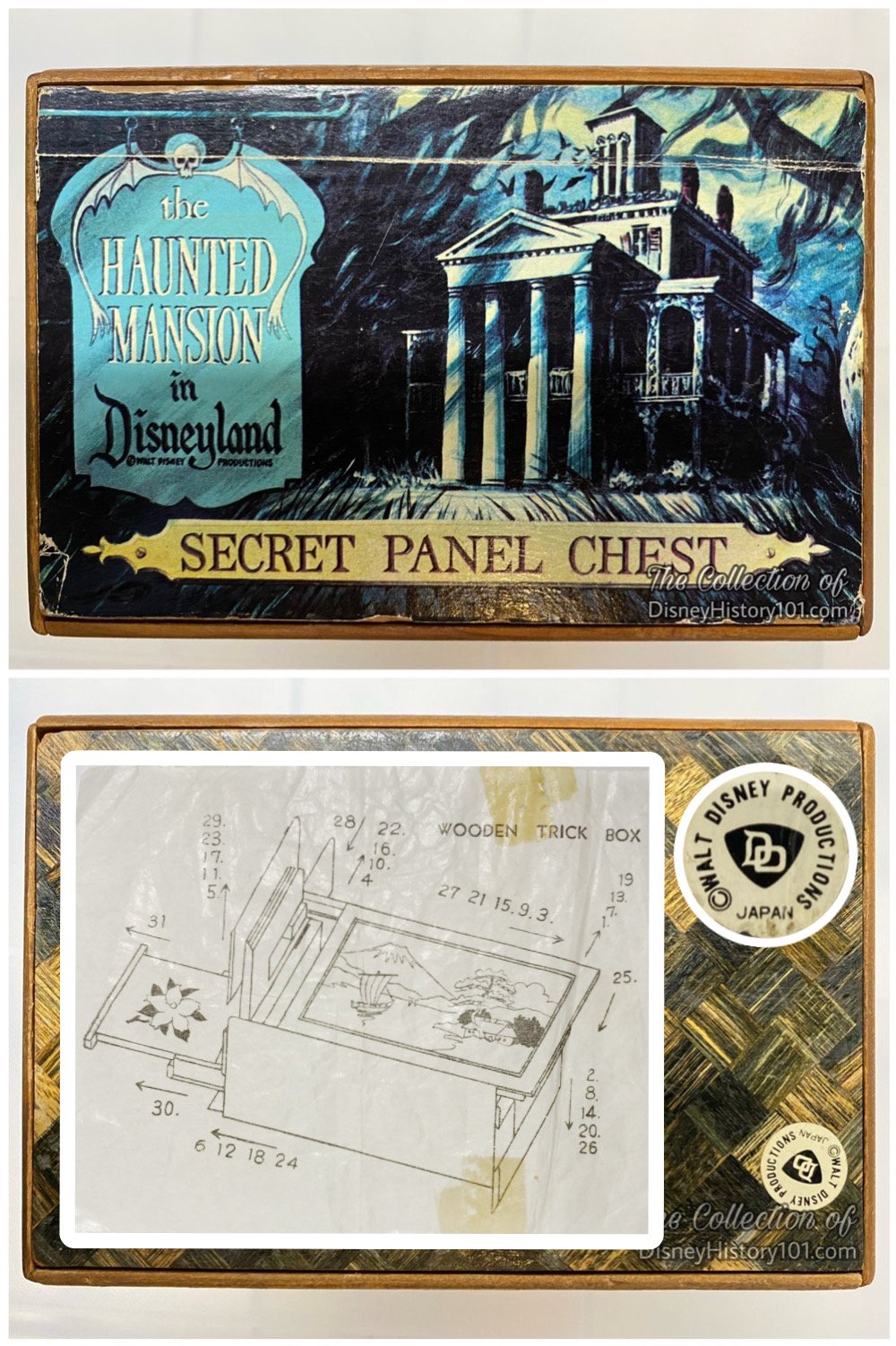
“The Haunted Mansion Secret Panel Chest”
Much character and general merchandise was purchased in Japan by overseas buyers of Walt Disney Distributing Company (later headquartered at Walt Disney World). Of these, the most artistically unique were the Haunted Mansion Secret Panel Chests (pictured above). According to “E” Ticket Magazine: “Each size had a different number of ‘ways’ or moves necessary to open the box, including the 8 way small, the 12 way medium, and the 31 way large.”
Through these novelty souvenirs, Americans were introduced to the Himitsu-Bako “personal secret boxes”, which originated with nearly 100 skillful craftspeople who mostly inhabited the Hakone region of Japan. These “wooden trick boxes” were constructed without nails in a carpentry joinery technique known as sashimono tsugite. In sashimonoshi, the carpenter fits pieces of wood together by creating a protrusion on one piece of wood that corresponds with a hole in another.
The boxes combined many types of wood, each one carefully selected to highlight the unique qualities of each through sashimono techniques. The wood was finished in fuki-urushi (wiped lacquer), to enhance the beauty of the grain and reveal its true colors, tints and tones. When completed, each of these impressive works of art were opened in as little as 7 steps to unveil both the secret space and hidden drawer.
According to one writer of “E” Ticket Magazine: “It is rumored that they were hand crafted at a family owned factory in the small town of Hikone, Japan. The business failed about 1975 because high labor costs associated with production made it impossible to operate at a profit.”
The Haunted Mansion Secret Panel Chests were the result of partnerships between Hakone Japanese manufacturers and the Disney Licensing Association. These souvenirs were created for Walt Disney Distributing Company under contractual agreement, then they shipped to warehouses (in both Orlando, Florida, and Anaheim, California), for distribution to stores of both Disneyland and Walt Disney World.
Speaking of boxes, another popular craft imported from Japan was the art of “orgel” (music boxes). Though Japan didn’t invent mechanical cylinder musical movement, the people of Japan perfected it. Sankyo Shoji, Ltd. was Japan’s leading manufacturer of orgel and soon partnered with the Walt Disney Company, to create musical movements featuring popular tunes from Walt Disney Productions.

“Japanese Audiences Respond to 1960s Walt Disney Productions”
Eventually by the mid-1960s, reports from around the globe indicated that Walt Disney screen productions were living up to their predicted success. For instance in 1965, Mary Poppins was released in Japan and it was reported in the “Walt Disney Productions Annual Report” of 1965, prepared for shareholders and employees: “Following the lead of Emperor Hirohito himself, the people of Japan are flocking to see Mary Poppins in its first play dates at Tokyo and Osaka. Along with other members of the Imperial family, the Emperor and Empress attended the Charity Premier of Poppins, where audience reaction was great. The Emperor and empress were highly pleased.”
Following this, many subsequent Walt Disney productions film releases of the 1960s packaged together shorts starring Mickey Mouse, Donald Duck, Goofy, and Ludwig Von Drake. In 1967, SuperScope format was introduced with “Fantasia”, which enjoyed new acclaim and popularity in Japan (depicted above). A trend of formatting films into SuperScope continued for a decade and by 1972, Walt Disney Production's film distribution program still benefited from an increasing public demand for the Buena Vista International, Inc. SuperScope reissue of such classic Disney films, as “Pinocchio” in Japan.
On the live-action feature film front, Walt Disney’s Swiss Family Robinson featured a familair face in the acting role of a villainous pirate captain Kuala- that of 1957 Academy Award-winning, Chiba Prefecture native, Japanese and American Issei Leading Man, Sessue (Kintaro) Hayakawa. Many other Japanese artists visited the Walt Disney Studios for either business or inspiration, like 1950 Miss Nipon Grand Prix Winner Fujiko Yamamoto who visited during the production of 101 Dalmatians.
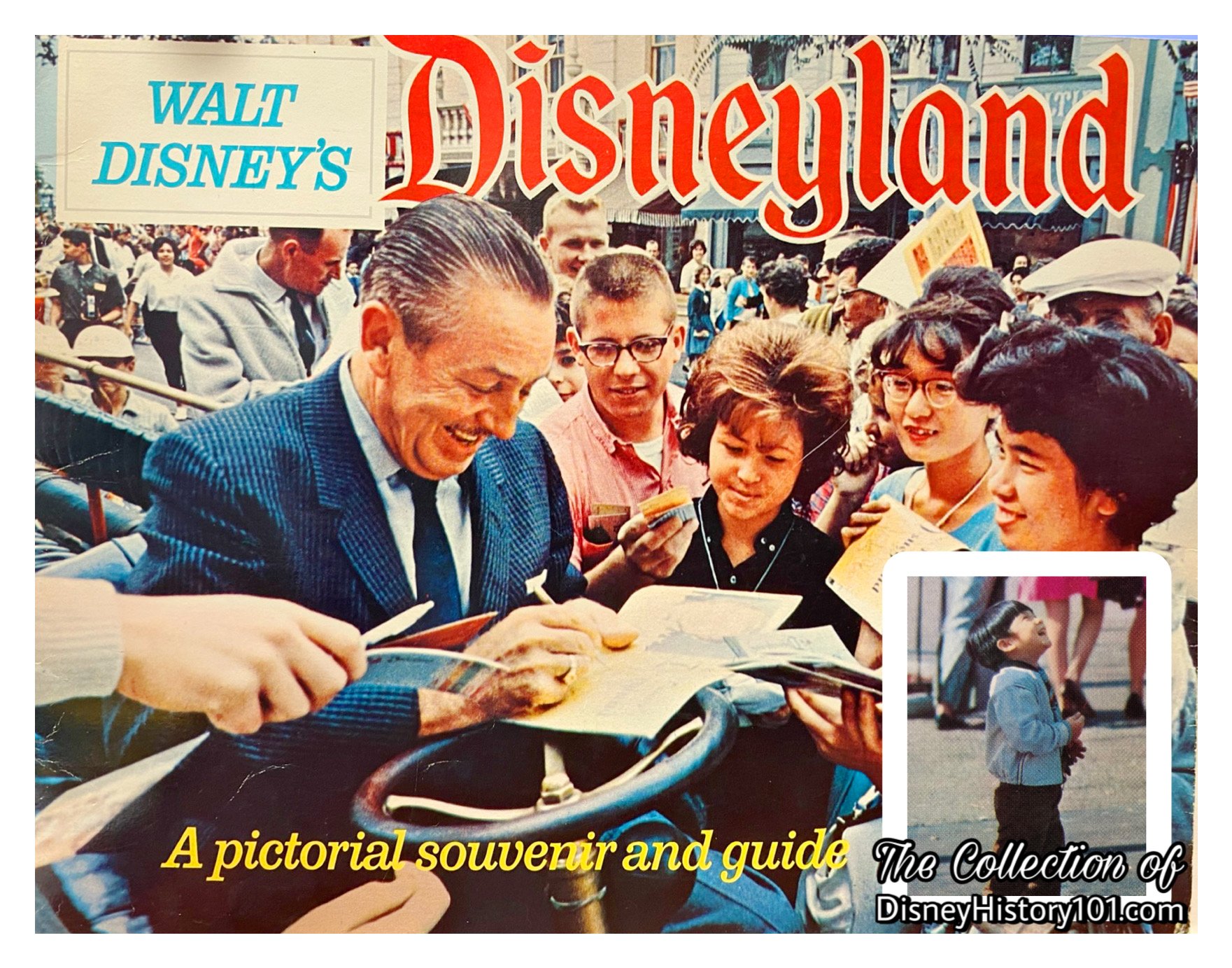
The wonderful world of Walt Disney was growing even more popular with Japanese audiences. One contributing factor may have been that after the worldwide oil crisis, the Japanese economy had shown a smooth recovery compared to other countries, improving the standard of living, increasing the leisure time of the people in society, developing education and increasing the number of new generations. The people of Japan also seemed to increase their desire for a wealth of new entertainment and recreation. By that time, attendance records proved that the number of Japanese visitors to Disneyland had reached hundreds of thousands, demonstrating its popularity! Among these Disneyland VIPs of note were Princess Atsuko (1971), and former Prime Minister Eisaku Sato (February, 1973).
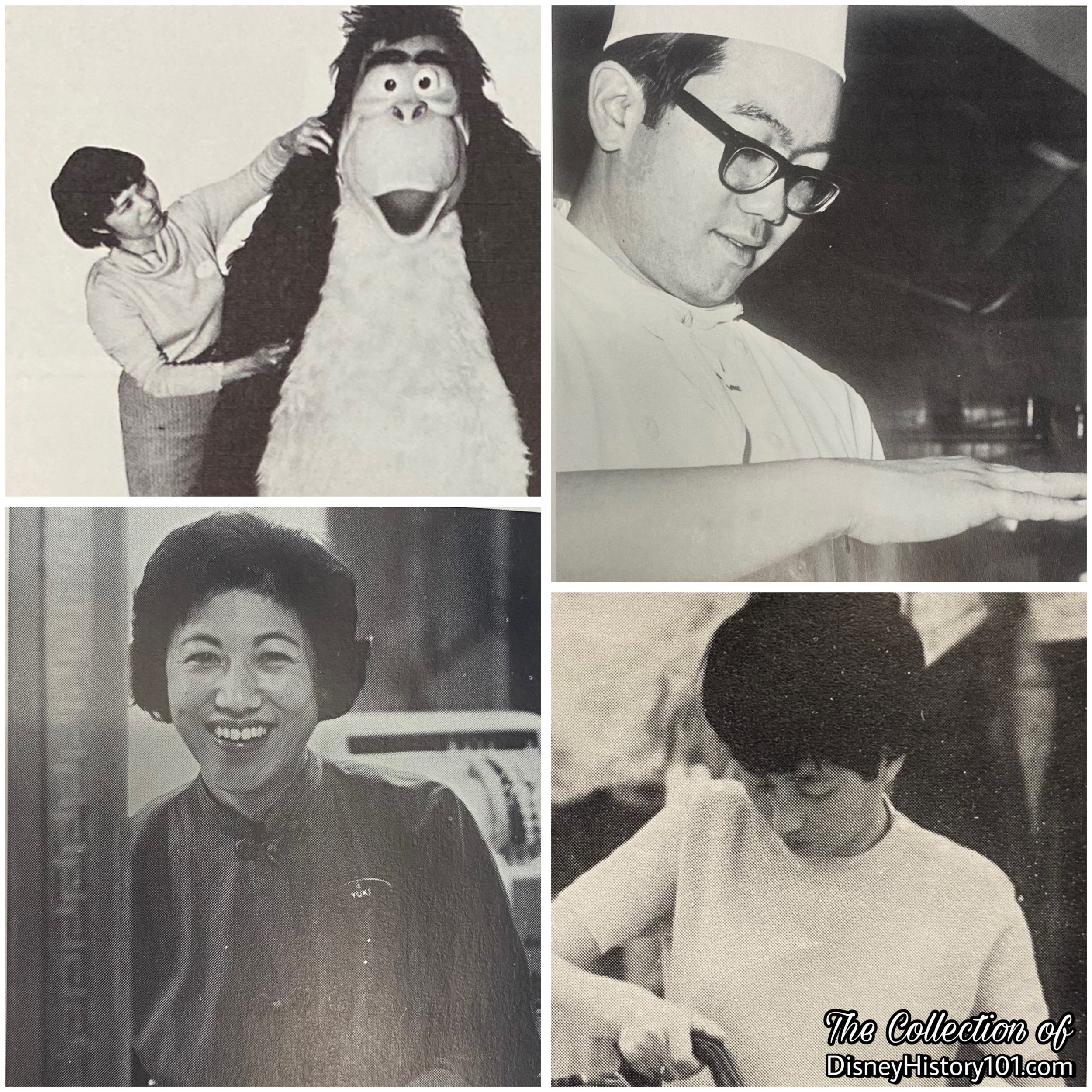
By the 1970s and 1980s, there was a rising number of Japanese Americans among the multi-cultural staff that contributed to this and other aspects of the Disneyland show. Unseen were the Backstage Seamstress-Fitters and Costuming staff members like Yoriko Hiramoto and Jackie Sakamoto. Backstage, there were people like Atsuko Kutama (Costuming seamstress), Kimi Kawamura, Mina Temamura (Wardrobe-Costuming), Georgia Osumi (Operations) and Karen Matsuoka contributed to the operation of the Disneyland Park show.

Then came a historic event during the American Bicentennial celebration of 1976, when their majesties Emperor Hirohito and Empress Nagako of Japan visited Disneyland the first visit to the USA. Disneyland Master Chef Hideo “Indian” Aramaki recalled the honor of cooking for the Emperor and Empress on this occasion. Their visit was historic for several reasons. First, the Lilly Belle Presidential Parlor Car was unveiled and its first passengers were Japanese Emperor Hirohito and his wife. Also, the visit of the Emperor and Empress “set the stage” for an exciting new relationship between Walt Disney Productions and the Japanese audience, opening doors to new magical opportunities!

“FESTIVAL JAPAN at DISNEYLAND”
One such opportunity was an all-new program called “Festival Japan” (日本祭り), billed as “5,000 years of Japan… 5,000 miles closer.” The First Annual Festival Japan at Disneyland was held March 27th, 1977. This first momentous celebration brought nearly 300 “traditionally attired dancers, cultural exhibits, crafts people, and entertainers from Japan” to Disneyland. Among this new cultural showcase were many Japanese and Japanese-American participants, including the aforementioned Tokuyae Classical Dance Group of Los Angeles who was still a Disneyland Participant after three decades. The program was an instant success with audiences and became a Disneyland tradition, from the late 1970s to the early 1980s.
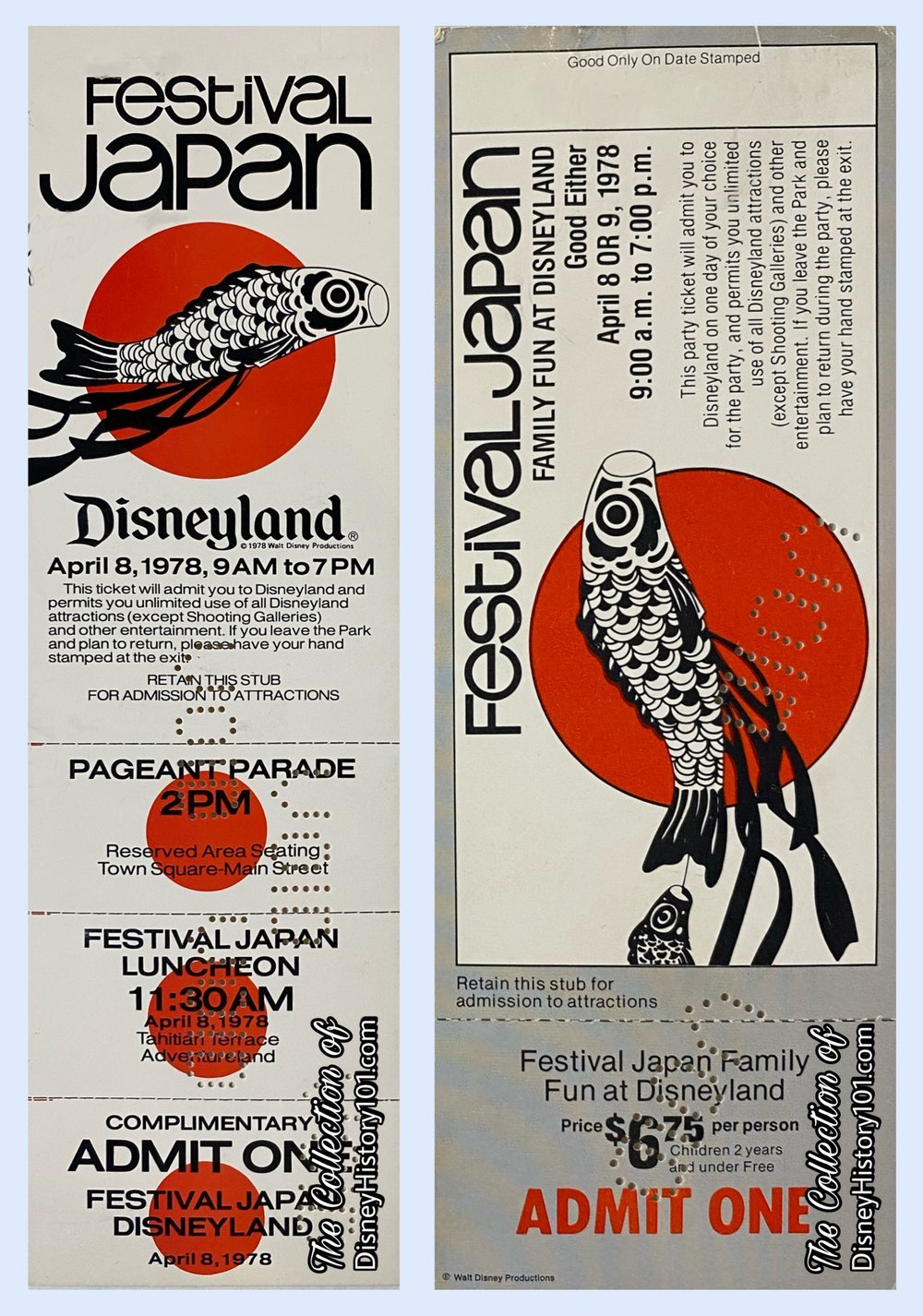
The first special event was such a success that a second Festival Japan Family Fun at Disneyland event was held on April 8 & 9, 1978.
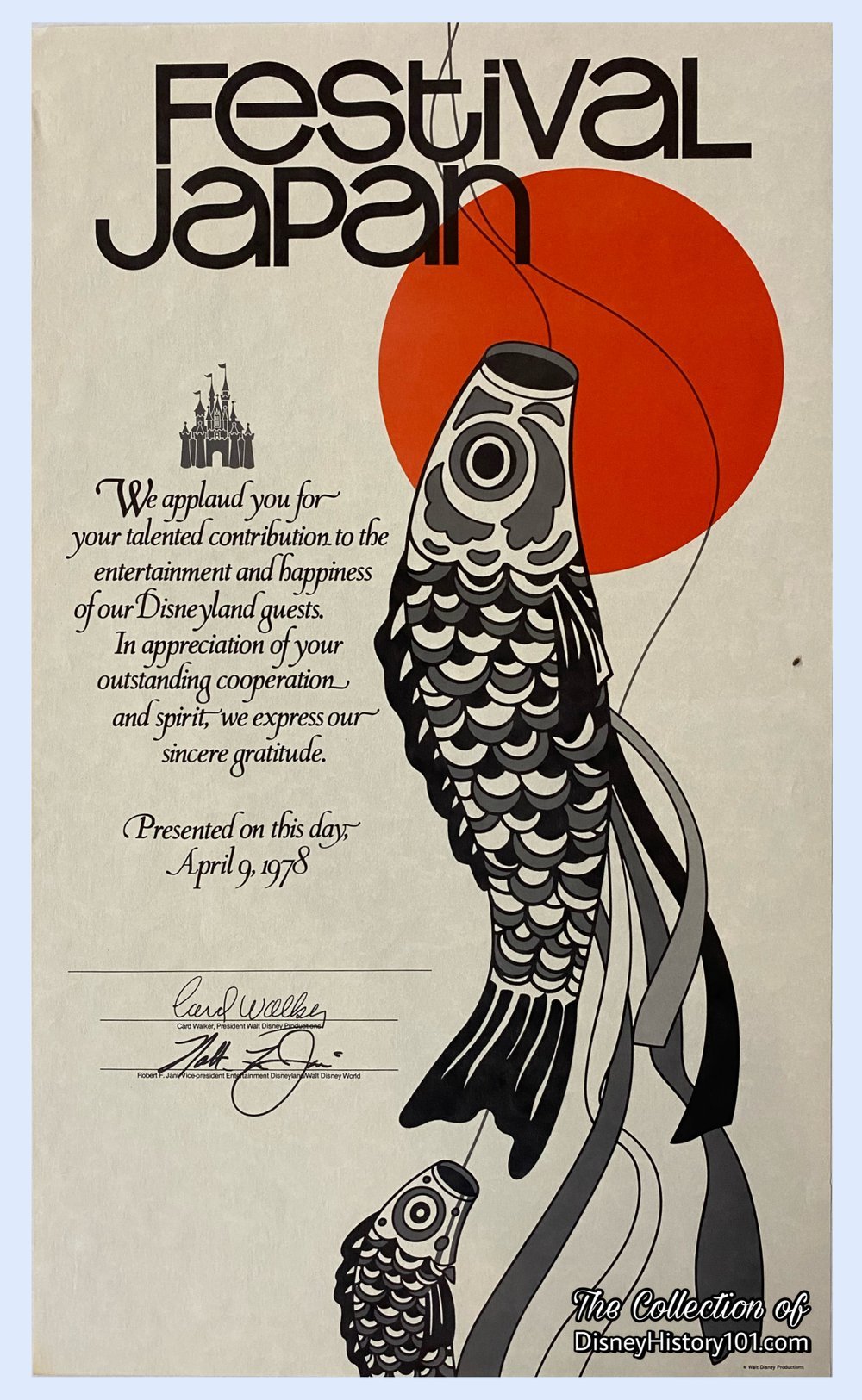
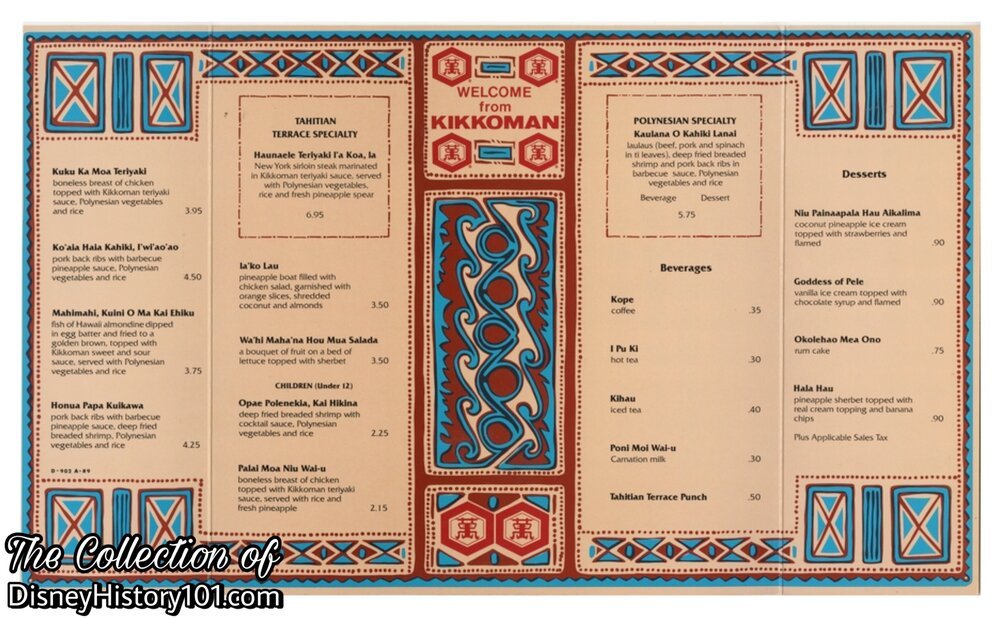
“WALT DISNEY PRODUCTIONS’ FIRST FOREIGN PARTICIPANT SPONSOR - KIKKOMAN OF JAPAN”
Doors were opened to another magical opportunity during the year 1978, the very same year as the 2nd edition of Disneyland Festival Japan at Disneyland! The first official Disneyland sponsor with headquarters in a foreign country (Japan) was selected to partner with Walt Disney Productions.
Disneyland Participant Corporate Sponsors were carefully selected. High quality, long term corporate sponsors would provide incremental income that enabled Disneyland to enhance its show and attractions, offset some operating expenses, and capitalize on marketing opportunities. Disneyland had also always been sponsored by predominantly vintage turn-of-the-century (or older) companies. Tahitian Terrace’s newest sponsor of the 1980s was no exception.
In later years, the Tahitian Terrace was presented with a proposal for a new Disneyland Participant - the 300 year old Kikkoman Int. Inc.of Japan! “Few people realize that Shoyu (soy sauce) is undoubtedly the world’s oldest prepared condiment”, according to Vacationland magazine (Summer, 1980). The process of naturally fermented blend of soy beans and recipe of salt, wheat, and traditional brewing methods actually has its start in Noda, Japan, during the 17th century, long before Disneyland existed! Kikkoman Shoyu Company was only incorporated in 1917.

More than sixty years later, on Wednesday, June 14, 1978, Kikkoman Shoyu Company President S. Mogi visited Disneyland to welcome visitors. This was a huge event as Kikkoman became the first official Disneyland sponsor with headquarters in a foreign country!
A short time later, in September 1978, Sunao Sonoda, minister of foreign affairs for Japan visited Disneyland.
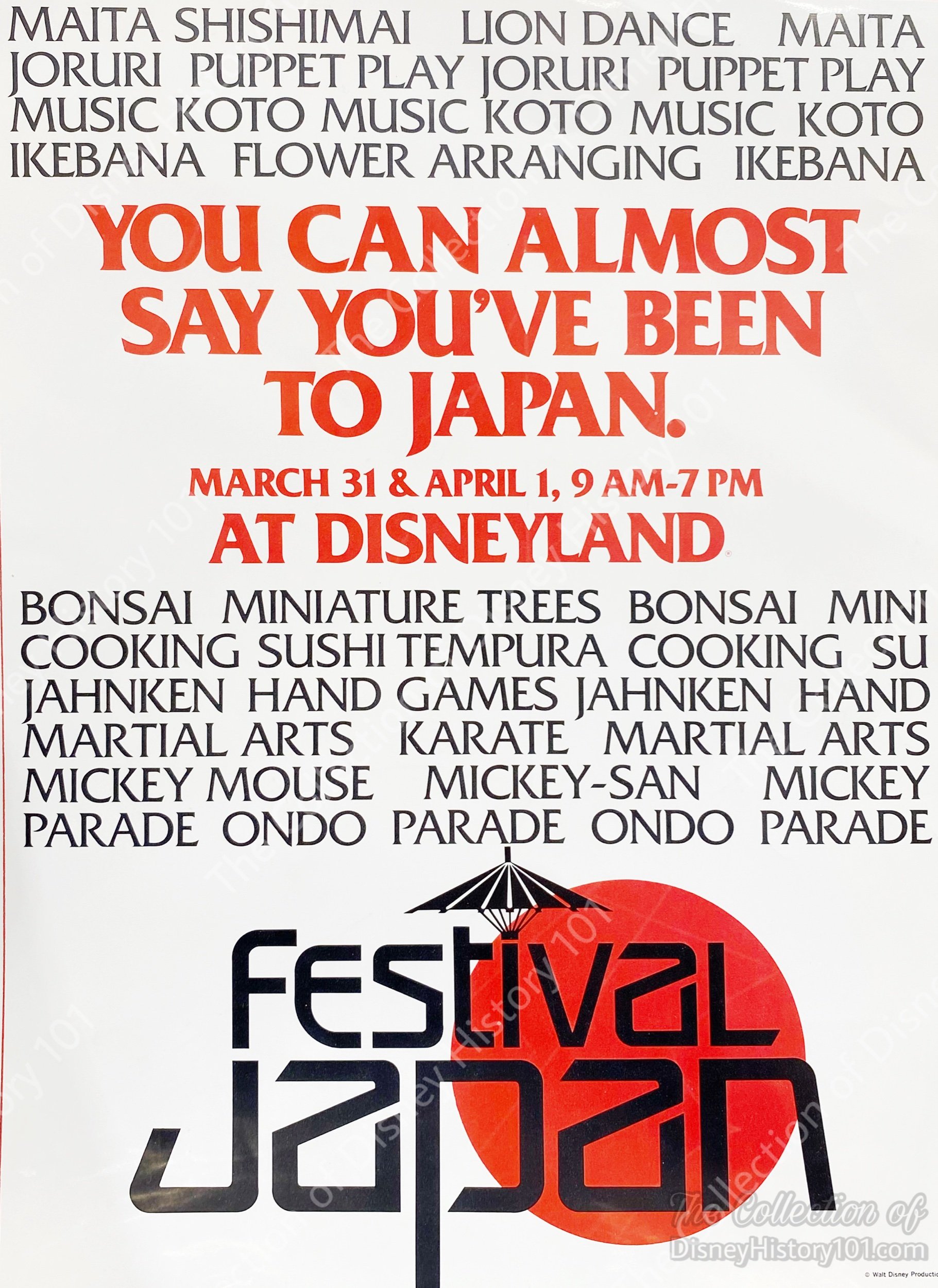
Koinobori and nobori banners lined the way to Sleeping Beauty Castle for the 1979 Disneyland Festival Japan, held March 31st and April 1st, 1979. A variety of local and visiting performing artists helped to bring Japan to Disneyland, and were presented at various Park locations throughout the two-day festival. All guests were given a hand-out at the Main Gate that described the variety of special events and the different show times and locations. The show schedules were also be posted at the various stages and locations.
The Space Stage featured the Classical Puppet Theatre, Awaji Ningyo Joruri Seinenkai, as well as a children's choir, a classical dance troupe and a group of exciting lion dancers. Carnation's Plaza Gardens was the scene of performances by the classical dance group from the Azuma School of Dance, as well as a comic dance group and three martial arts troupes. On Saturday, the music of the Japanese-American Philharmonic Orchestra of Los Angeles, Junior Division, was offered at Plaza Gardens. On the Tomorrowland Terrace, two Japanese rock bands appeared both days, Super Pumpkin and the Flying Mimi Band. A girls self-defense sword group, Zen-nihon Naginata Renmei made an appearance on Saturday only in front of “It's a Small World.” Exhibits touching on many phases of the Japanese culture displayed the skills and talents of the country's craftsmen.
On Main Street guests were able to examine most of the Festival's performing groups depicting a visual description of Japan's history. Highlighting the procession was the first American appearance of Soma Nomaoi, 35 Samurai warrior's who were descendants of Japan's feudal lordship. The parade began at “It's a Small World” and continued down Main Street.
Special Japanese entrees were served at the Plaza Inn, and traditional Makunouchi Bento box lunches were available at Plaza Inn, Plaza Pavilion, Tomorrowland Terrace and the Space Place.
After all, guests could almost say that they’d been to Japan!
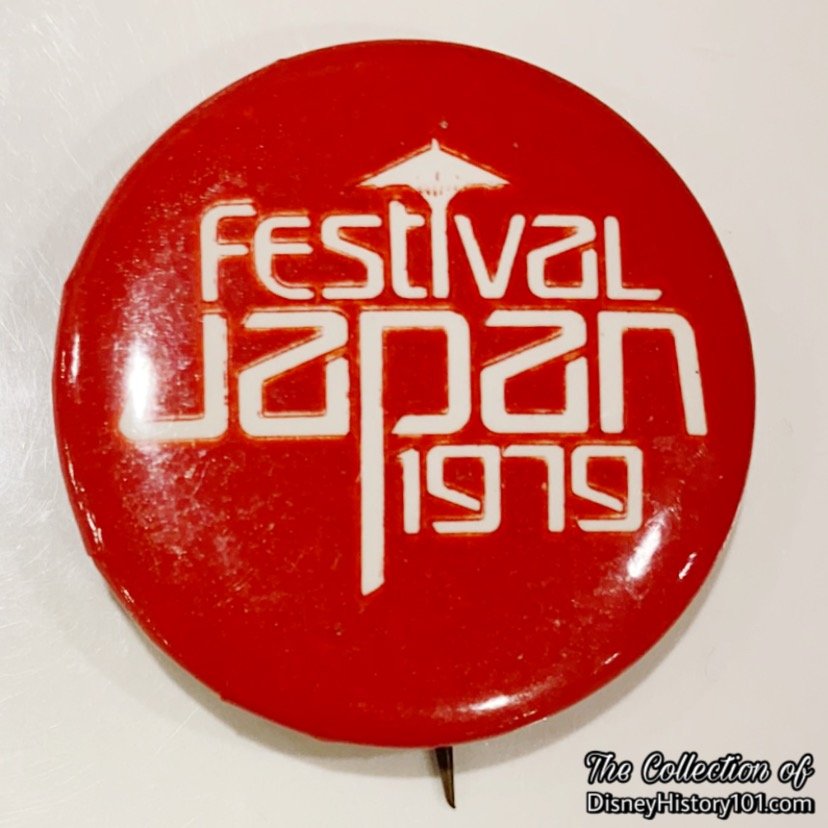
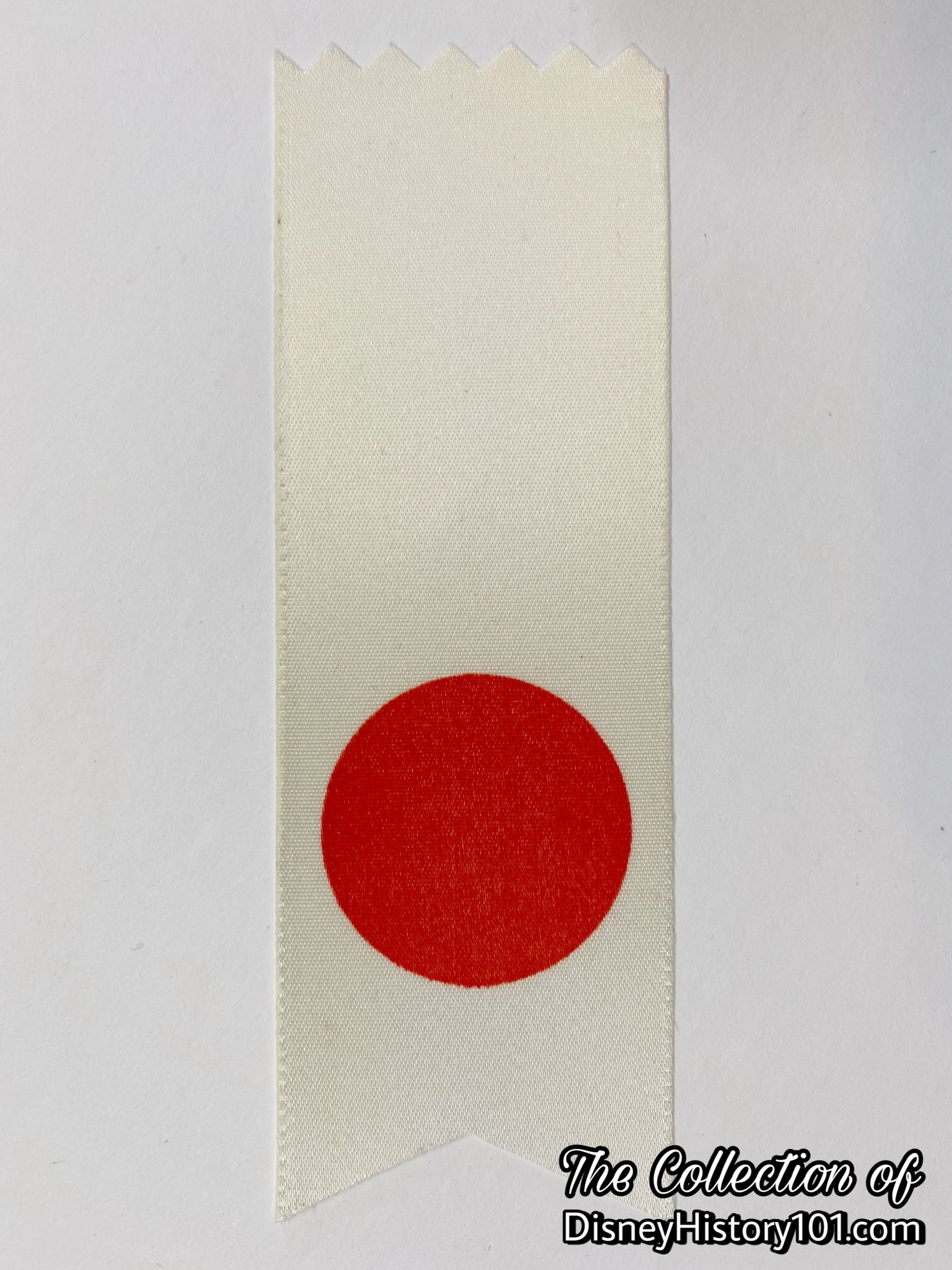
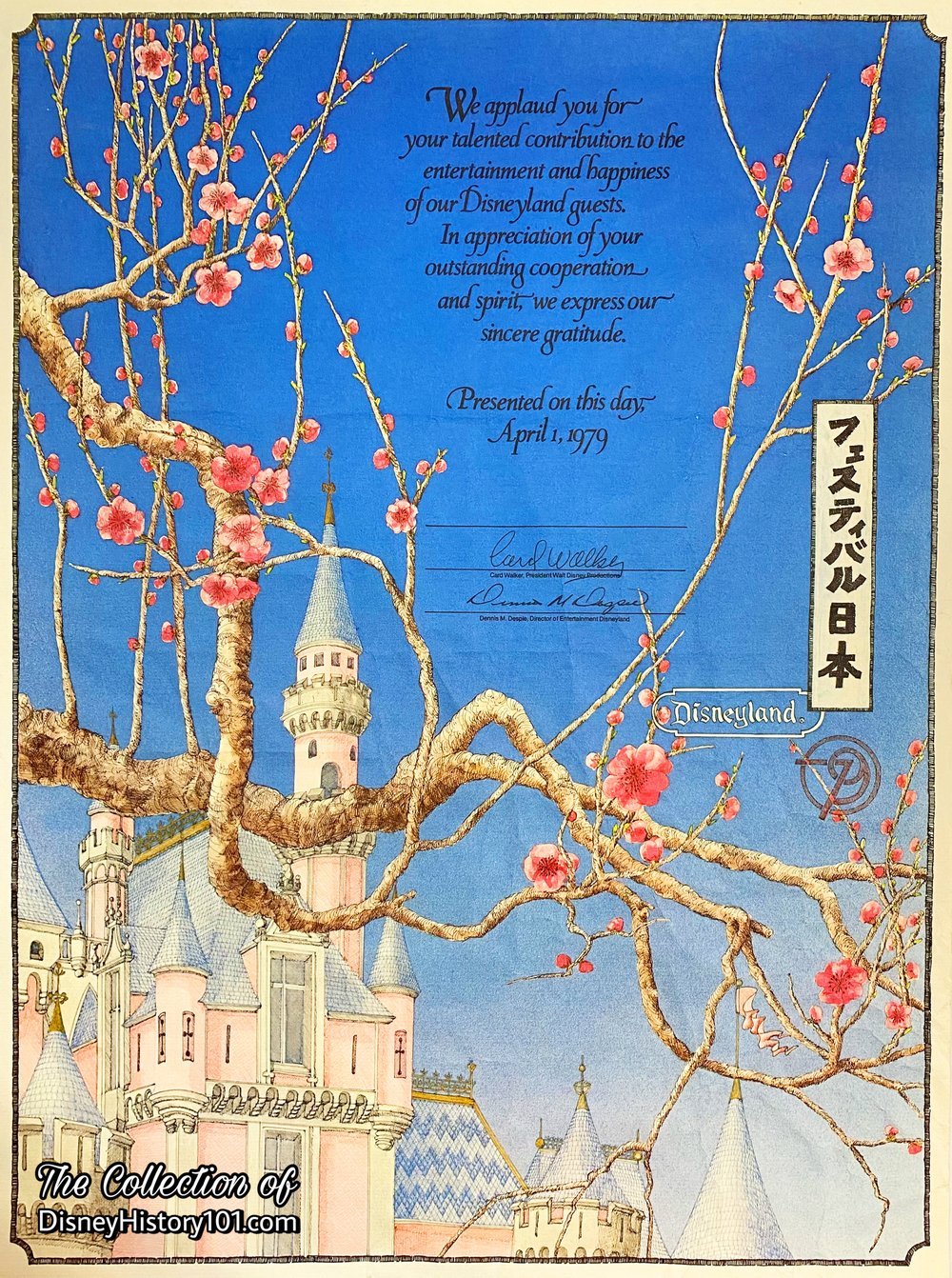
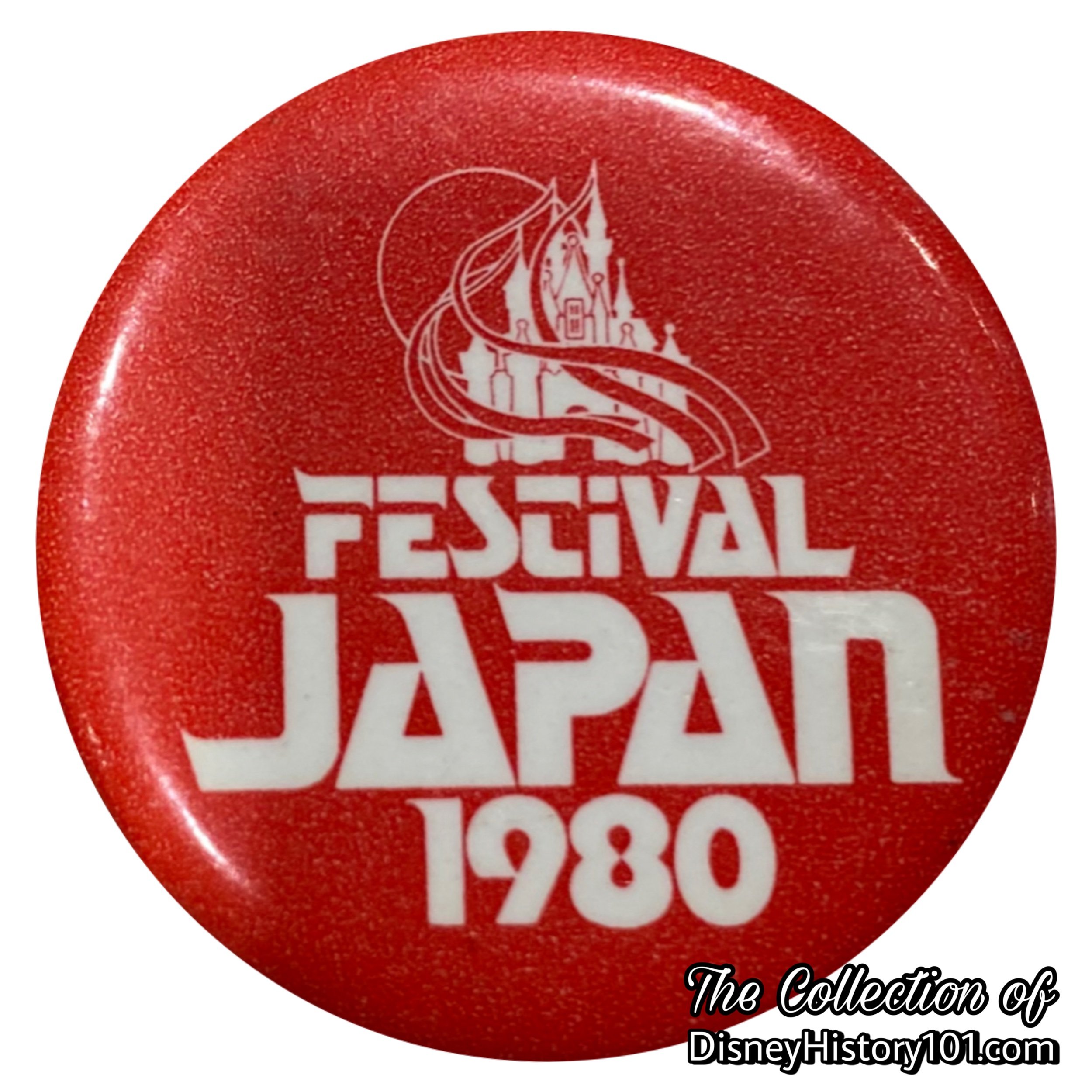
During the following years, Disneyland Festival Japan was held earlier in the year. The 4th edition of Festival Japan at Disneyland was held from 9:00 a.m. to 7:00 p.m, on March 22 & 23, 1980. The annual festival touted the shining glory of Japan, which valued tradition and beauty like Disneyland. The beautiful koto examination and the drum hibiki invited guests to Japan. The streamers and bonsai brought back memories of hometowns. Guests were invited to touch various traditional Japanese crafts and the delicate hearts of the Japanese.
The 5th edition of Festival Japan at Disneyland was held on March 28 & 29, 1981.

The 1982 Disneyland Festival Japan (the 6th edition of the traditional event) was as grand as ever!
Authentic Japanese Crafts were Showcased, like origami paper folding, wood carving and the crafting of bamboo. There were koi fish, samurai armor displays, the Hand-crafted Bonsai Association with their handmade bonsai dwarfed tree displays, was on exhibition at the Space Place, and Hirofumi Kai (Doll Display) was on exhibition at the Carefree Corner. Plaza Inn on Main Street U.S.A. was the stage for Biwa Doho Kai Solo Instrumentalist - Mr. Kinryo Fukute. East Plaza Street was the stage for Kado Sangetsu-Ryu (Flower Arrangements) on Saturday, March 27th and Shiba Ryoka Kai (Flower Arrangements) on Sunday, March 28th.
Carnation Plaza Gardens was the stage for Michiya Hanayagi, Fujima Kansuma Kai, Hanayagi Rokumine Kai, and Mito Taiko Kai on Saturday, March 27th, from Noon; and Sunday, and Kazue Kudo Koto Music Conservatory, Fujima Chiseye Matsumaye Kai, Rokumie Natori Kai, Hanayagi Jurokumi Kai, Hanayagi Rokumine Kai, Mito Taiko Kai, and Matsutoyo Kai on March 28th, from 11:00 AM.
Special Japanese menu items were featured at the Plaza Inn, Main Street, U.S.A. and at the French Market, New Orleans Square.
Another highlight is an amazing demonstration of the ancient and intricate Japanese art of ice carving. The highly refined culinary art was demonstrated both days, featuring craftsmen who have appeared in the world-renowned Hokkaido Winter Festival. With a 300-pound block of ice, teams of sculptors created meticulous pieces of art, from a pagoda to leaping fish to other scenes common to Japanese life.
The main event was the Festival Japan Parade, showcasing more than 600 participants. The Grand Marshal was the Honorable Yunosuke Wada, Mayor of Mito, Japan, Anaheim’s Sister City. The parade marched down Main Street, U.S.A. from Small World at 8:00 PM, Saturday, March 27th and at 3:00 PM, Sunday, March 28th.
Pre-parade entertainment featured Zennihon Koteki Band Renmei. Immediately following the 8:00 PM parade at approximately 9:00 PM, the day ended with a specially produced Japanese Fireworks Show above Sleeping Beauty’s Castle on Saturday, March 27th. This specially produced spectacular was accompanied by its own themed music and showcased Japanese fireworks never seen before in the United States.
During the 1982 edition of Festival Japan and throughout the year, Japanese VIPs continued to visit Disneyland Park. Of note is “Prince Hiro’s more conventional visit in October of 1982, which completed three generations of Japanese royalty who visited Disneyland Park. His parents, Prince Akihito and Princess Michiko, previously toured Disneyland Park in 1960 and his grandparents, Emperor Hirohito and Empress Nagako, visited Disneyland Park in 1975.”
1984 Disneyland Festival Japan (the 8th edition of the traditional special event) was celebrated on March 31 and April 1, 1984.
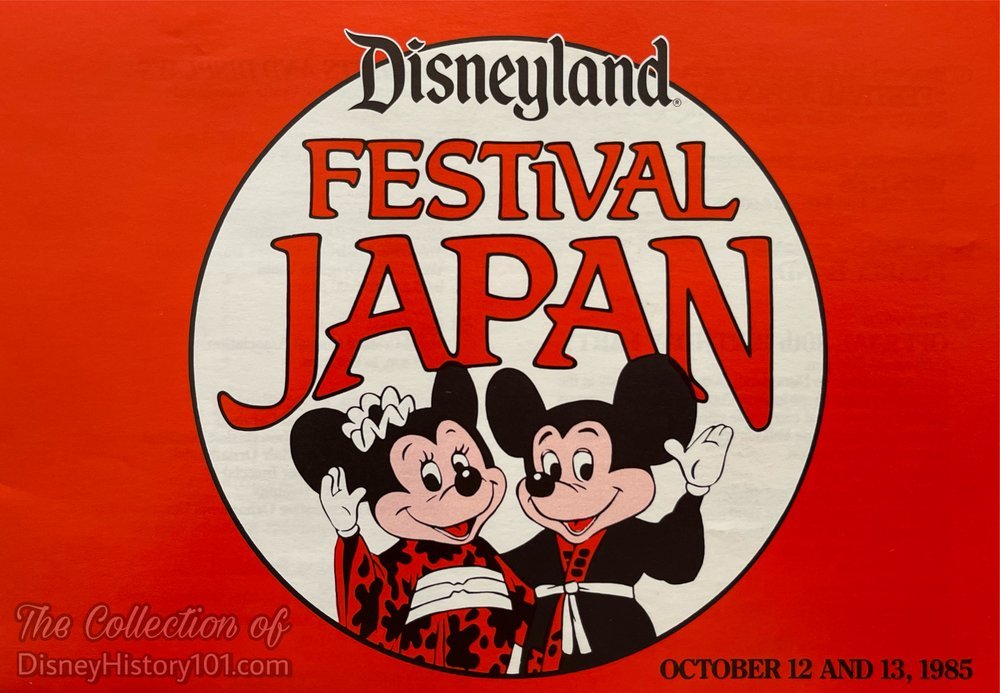
The “1985 Disneyland Festival Japan” (the 9th edition of the special event) coincided with the 30th anniversary of Disneyland on (held October 12 & 13, 1985, from 9am to 9pm). The event brought “500 traditionally attired dancers, cultural exhibits, crafts people, and entertainers from Japan performing on the Small World Stage.” Among those was the aforementioned Tokuyae Classical Dance Group of Los Angeles, a tradition after three decades of performing at Disneyland!
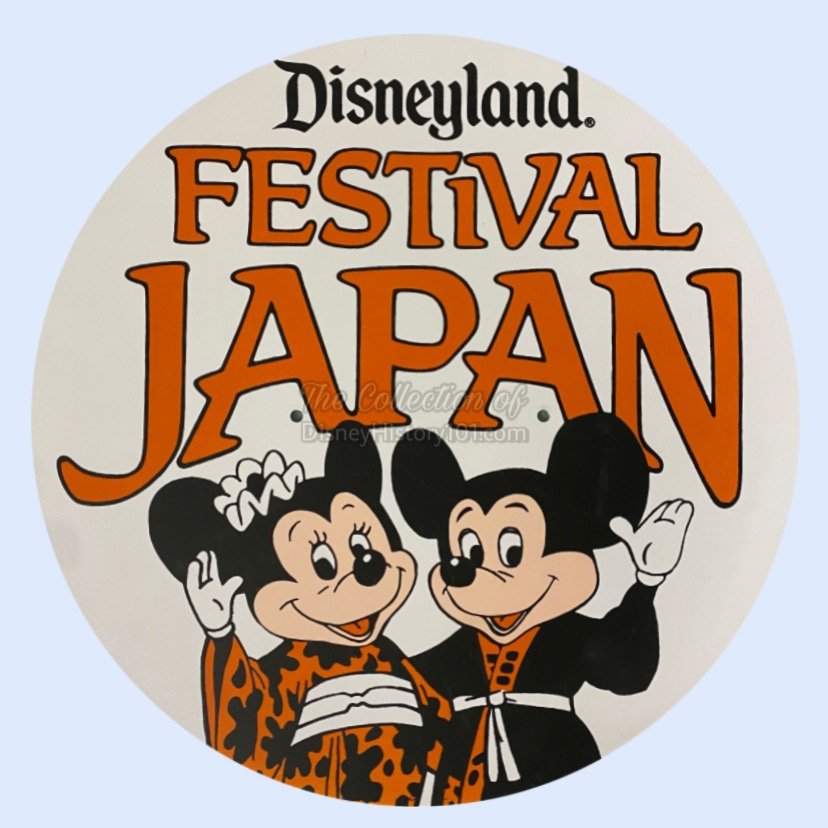
Disneyland Festival Japan ended a success, and was never to be repeated. Yet, the positive synergy between the Walt Disney Company and the presentation of Japanese culture through the traditional events opened the door to prolific legacy.
Other cultural festivals were hosted by Disneyland Park, including Festival Korea (in 1986).
One result was that many more Japanese VIPs (some high-ranking and respected members of government) continued to visit and experience the magic of Disneyland Park. For instance, Prince Naruhito of Japan visited in October 1985. During January of 1987, the Honorable Yataro Mitsubayashi, Minister of State, Science and Technology, visited Disneyland. The following year of 1988, His Excellency, Mr. Markoto Taniguchi, Japanese Ambassador to the United Nations visited during September of 1988.
The earliest editions of Disneyland Festival Japan resulted another major incidental byproduct. Back east (in Florida), a grand and ambitious Walt Disney Production was being developed, one that would assure a permanent place for Japanese cultural representation. EPCOT Center at Walt Disney World would debut with a Japan World Showcase!
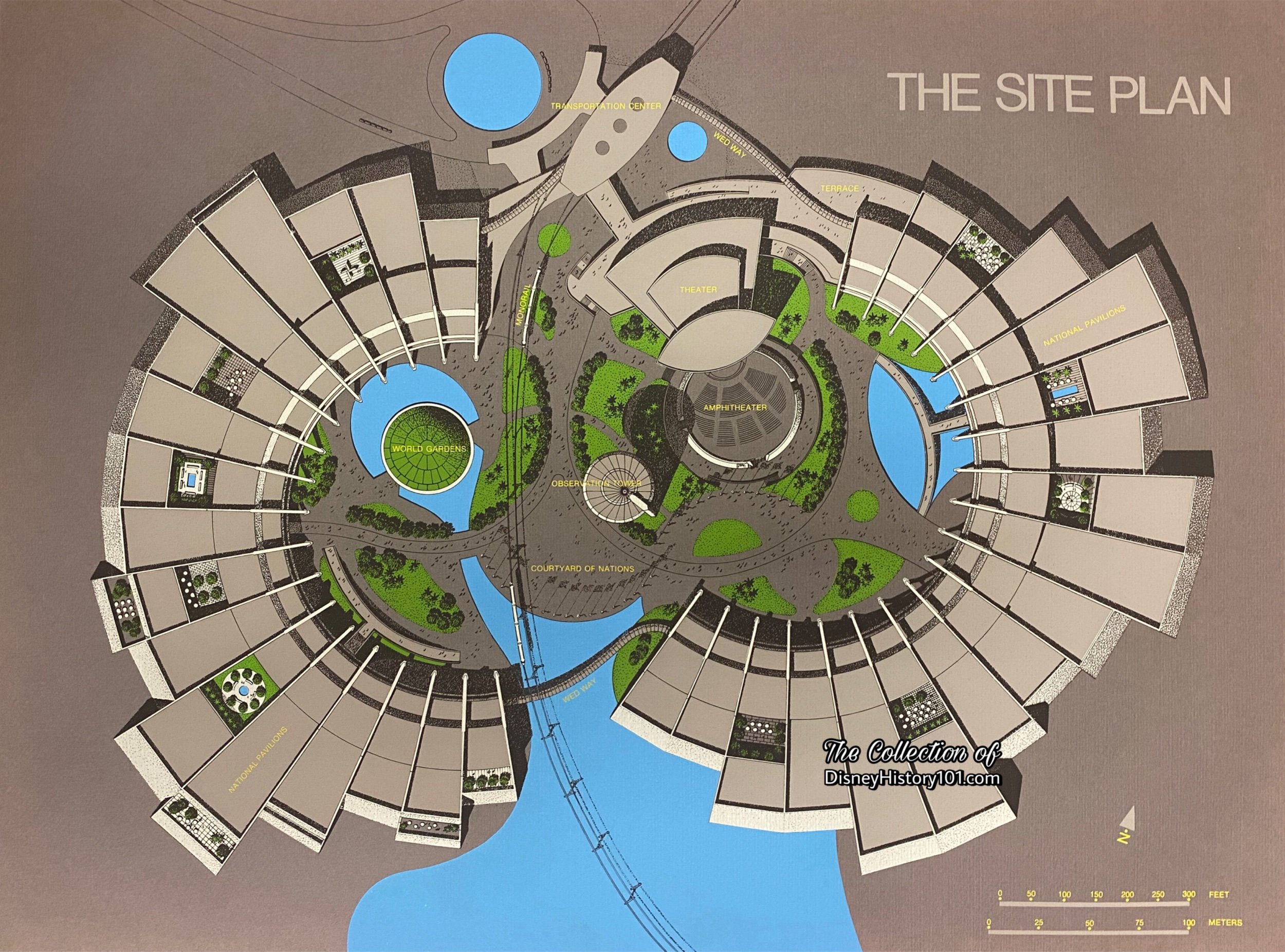
“Project Florida - A Whole New Disney World”
Back on December 15, 1966, Roy O. Disney, Walt Disney Productions President and Chairman of the Board addressed the employees of Walt Disney Productions: “Walt Disney's preparation for the future has a solid, creative foundation. All of the plans for the future that Walt had begun - new motion pictures, the expansion of Disneyland, television production and our Florida and Mineral King projects will continue to move ahead. That is the way Walt wanted it to be… Last October when he accepted the ‘showman of the World’ award in New York, Walt said, ‘The Disney organization now has more than four thousand employees. Many have been with us for over thirty years. They take great pride in the organization which they helped to build. Only through the talent, labor and dedication of this staff could any Disney project get off the ground. We all think alike in the ultimate pattern.’”
Those responsible for thoughtfully developing EPCOT at Walt Disney Productions were inspired by the World’s Fairs as the New York World's Fair of 1964-65 and most recently the Japanese Fair at Osaka in 1970. The “Annual Report 1976 Walt Disney Productions“ particularly noted the impressive “participation of industry and presentation of the marvels business enterprise has produced.”
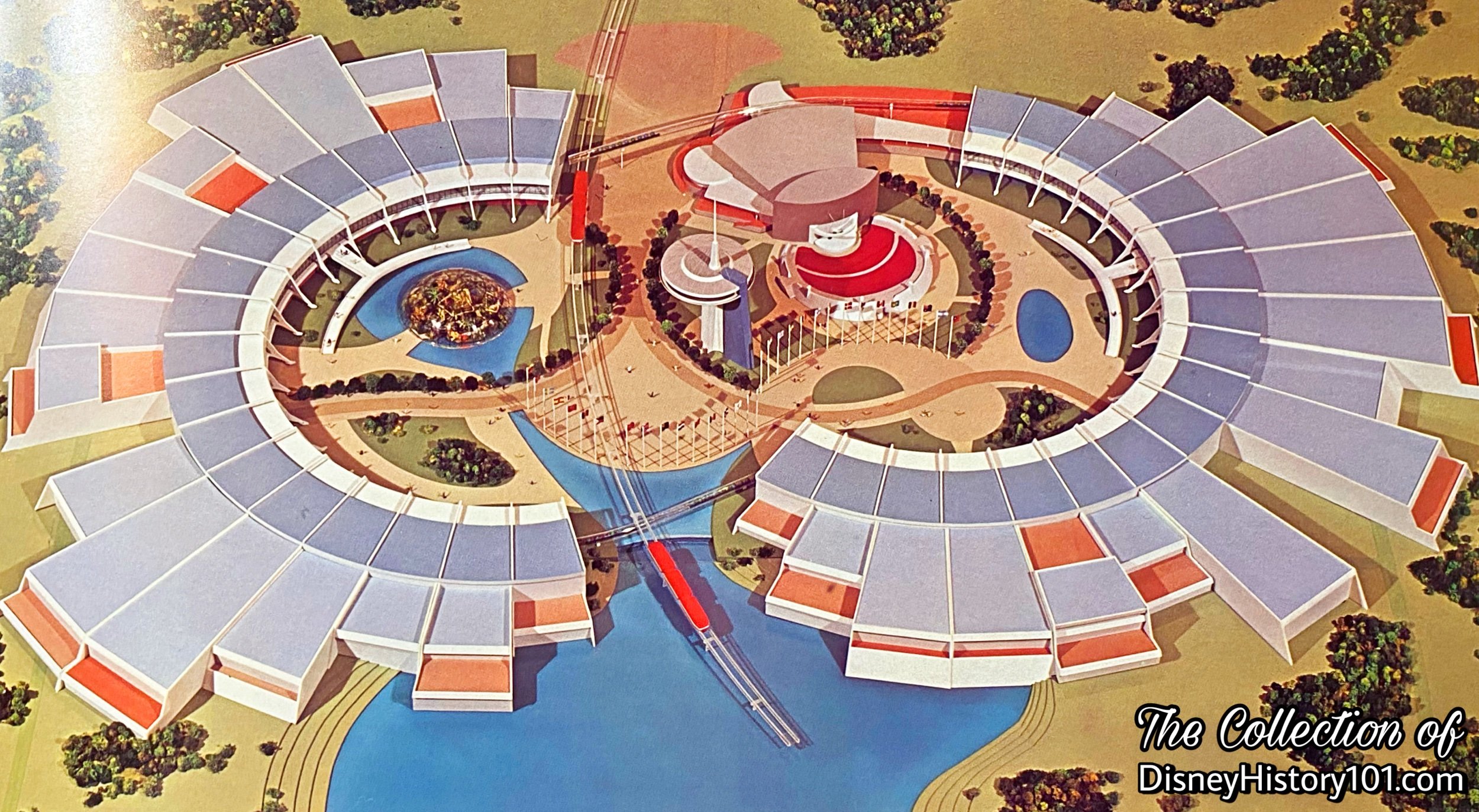
“Project Florida - A Whole New Disney World,” published 1967 by Walt Disney Productions, depicted colorful illustrations of EPCOT'S towering theme building located at the very heart of the city. Radiating from it was to be an International Shopping Area. “Depending upon which direction he takes, the inquisitive shopper might find himself in a British square, a Scandinavian or Asian market place, or a South American plaza. Imported merchandise, foreign cuisine, dinner shows and roving entertainers native to many lands will make the international shopping areas a must-see for residents and tourists alike.“
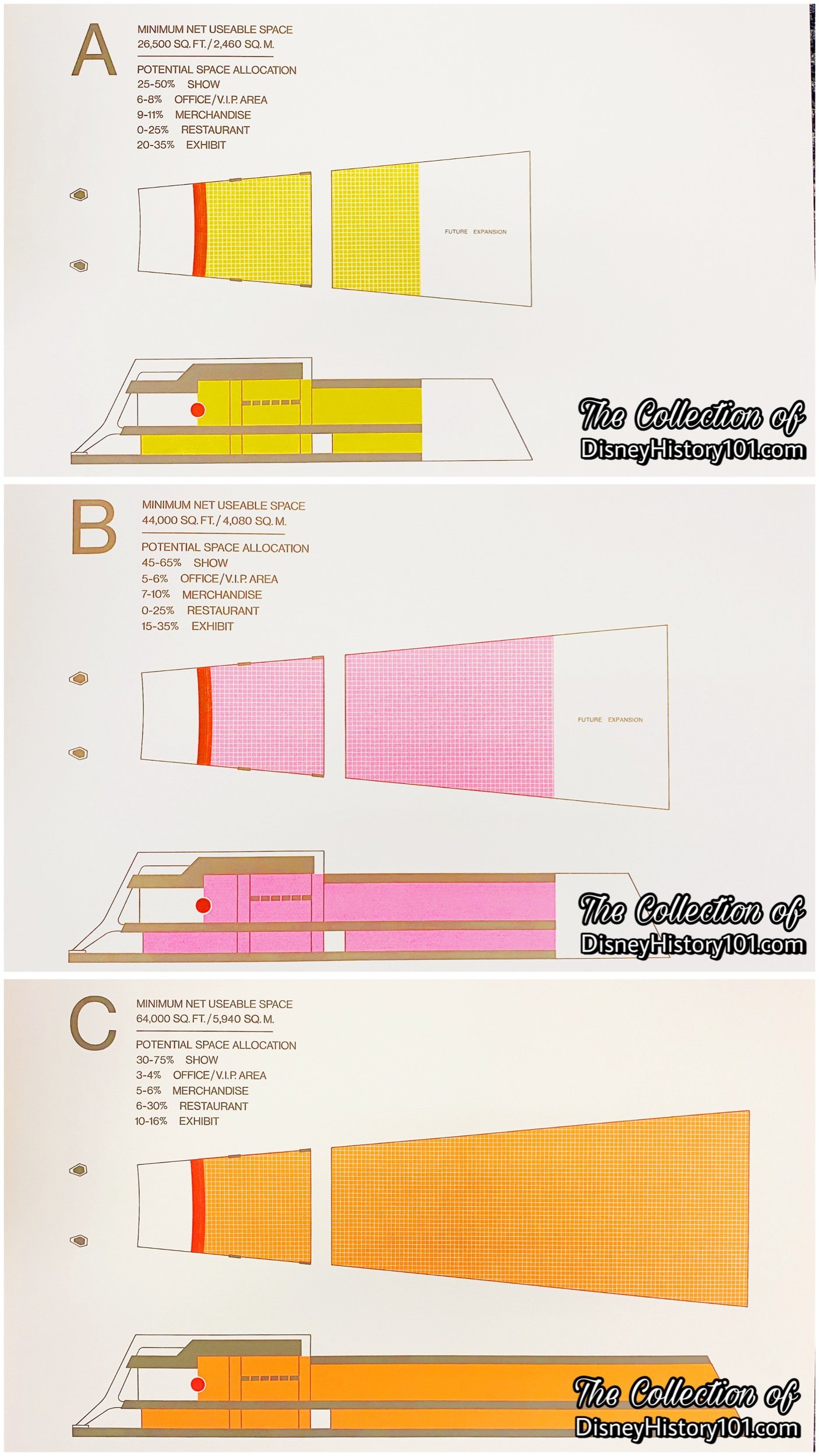
Unlike a world's fair, EPCOT's World Showcase was to “be a permanent international exhibition. No nation's exhibit or restaurant or product displays will be ‘torn down’ after one year or less-the standard requirement at world's fairs. Instead the one-time construction costs will go on working for a country for many years at Walt Disney World. Here the nations of the world will stand side by side in two semicircular buildings.“
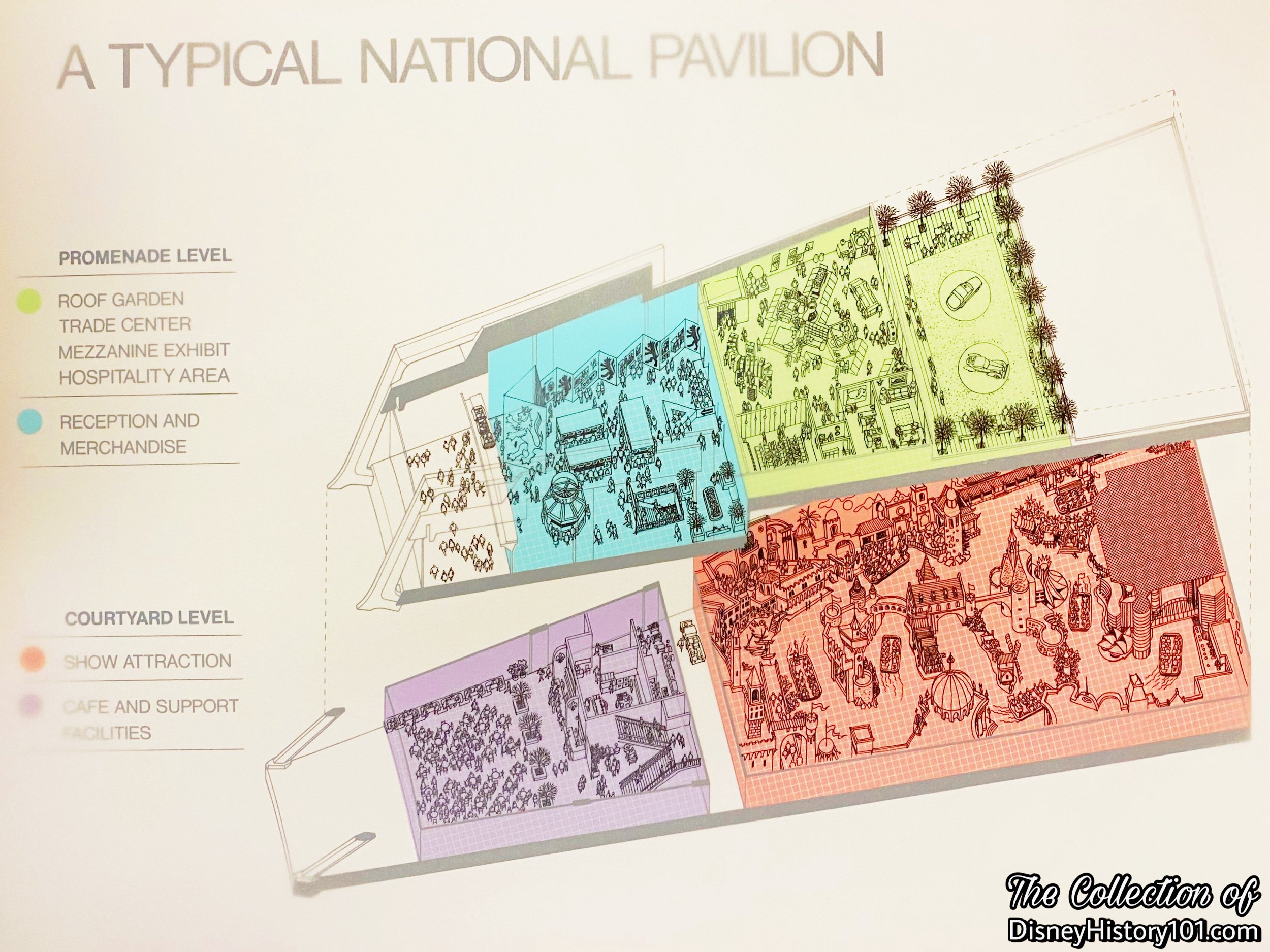
“This semicircular design not only will offer equal exposure and public access for each nation...but will also function as an interrelated series of experiences for every guest. for the entire complex of attractions and exhibits will be tied together by a Disney people-moving system that will also offer visitors a ‘preview look’ into each country's pavilion.”

The Ten Year Master Plan of Walt Disney World even included exciting research and development of five new resort hotels. Among these plans for international-themed resort hotels was an Asian Hotel (as seen in Paul Hartley’s artwork and concepts produced by Welton Becket & Associates, pictured above) dreamed up for the lagoon shores during latter periods of the Phase One plan.

Plans were drawn, soil samples were studied, and feasibility analysis were completed regarding an Asian Resort
However, one “Preview of Walt Disney World” prospectus would soon announce: “‘While five theme resorts are planned, only two will be built in time for the opening of Walt Disney World, near Orlando, Fla., in October, 1971,’ says John Curry, director of the Walt Disney World Co., hotel division… First two to open are the Contemporary Theme Resort, on the lake, and the Polynesian Theme Resort, on the lagoon. Contemporary will be the convention flagship hotel with major convention and exhibit space. Other theme resorts include the Asian, the Venetian and the Persian. Each of the hotels will have meeting space most likely below the lobby level… Each resort will have a specialized design motif, food specialties, dining room menus, recreation activities, entertainment, interior decor and employee costumes. Resorts will offer nightclub entertainment and dancing. Motion pictures and stage shows will be presented in nearby theaters.”
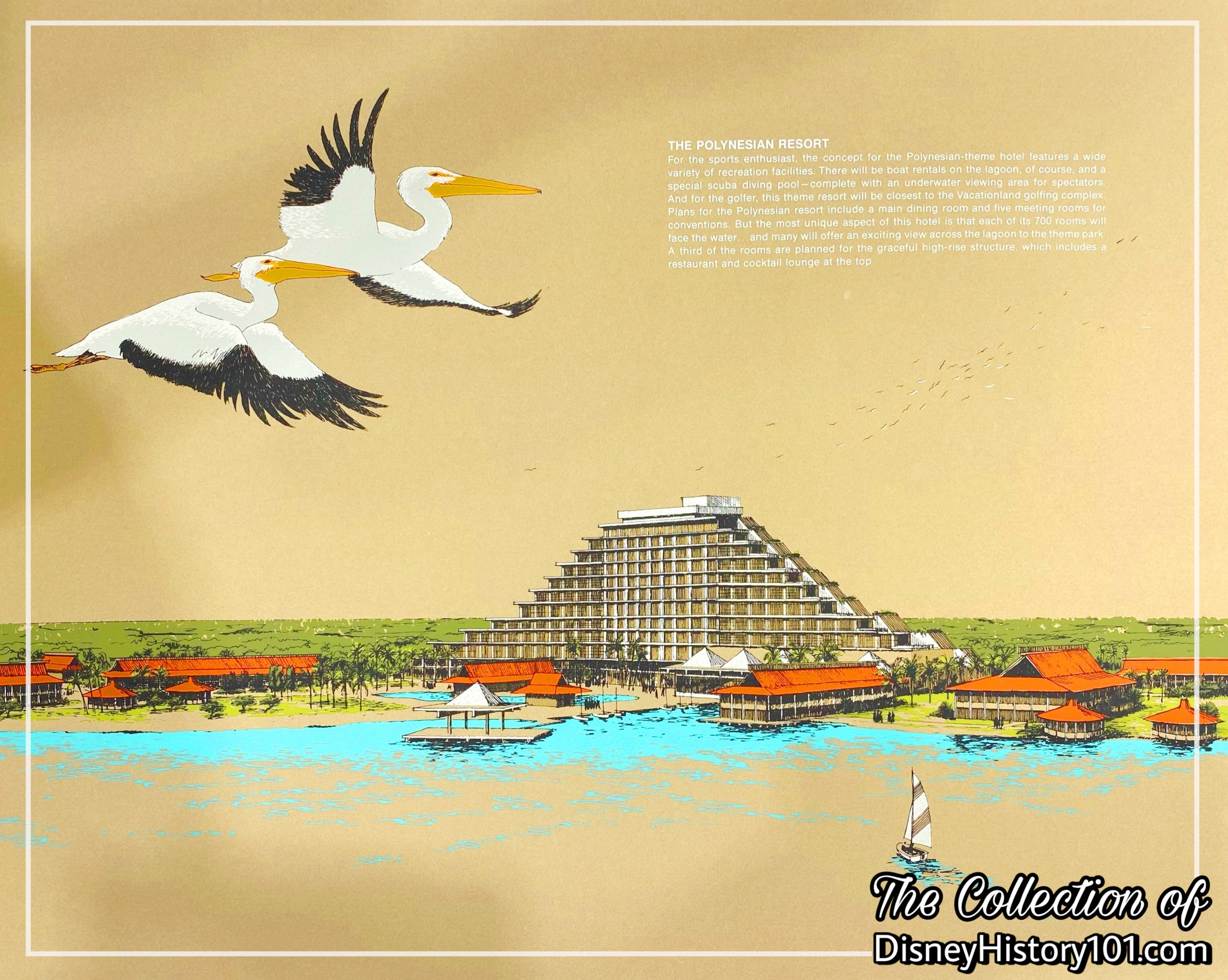
By the time Walt Disney World opened in 1971, the Polynesian Resort had been constructed, but the Asian Resort remained on the drawing board.
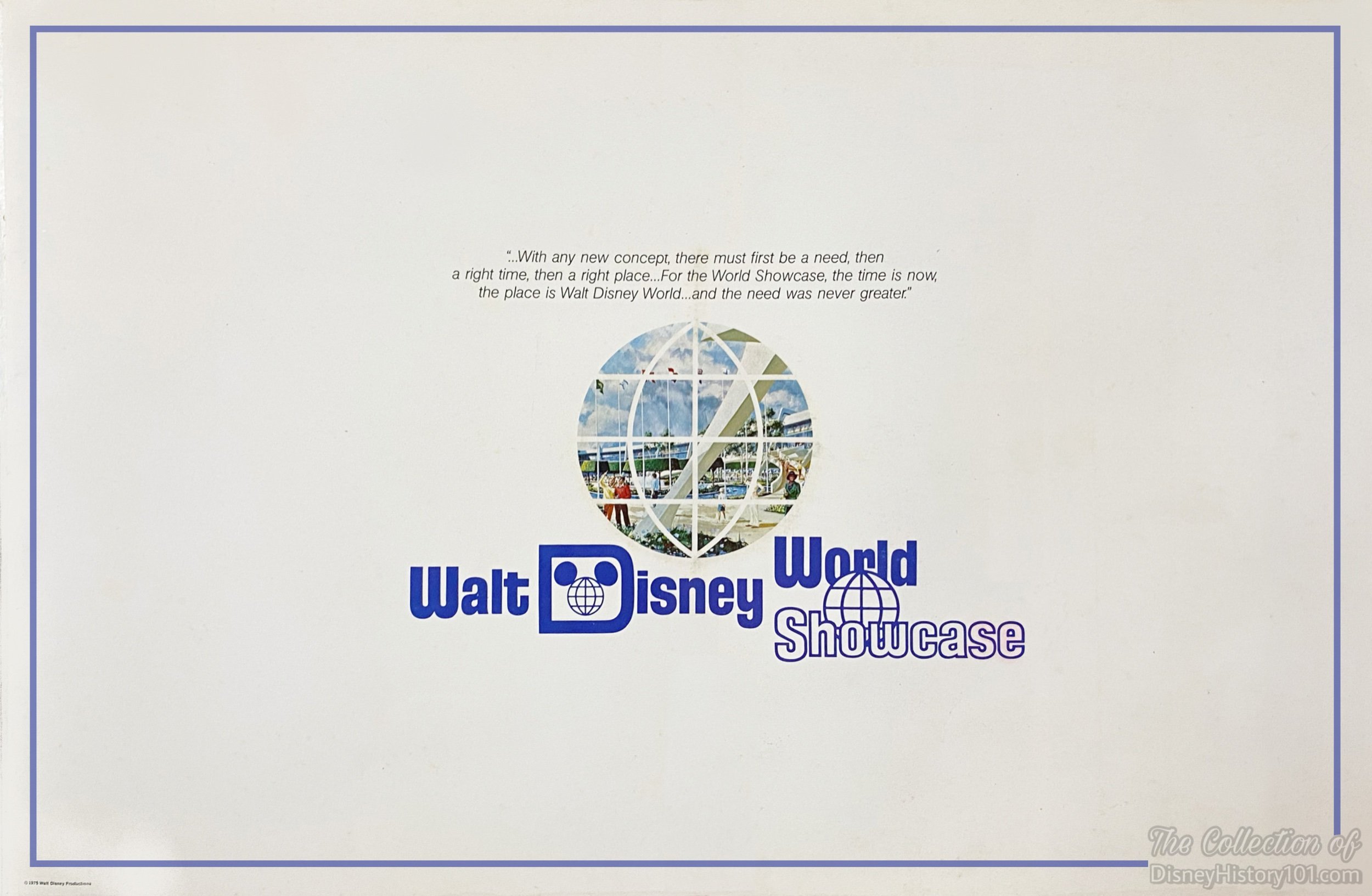
“The Experimental International Prototype Community of Tomorrow”
By 1975, “the need for an Experimental Prototype Community of Tomorrow… was[sic] even greater than when Walt Disney first began talking about it in 1965.” The Experimental Prototype Community of Tomorrow was to feature a living community where American Industry would always be introducing, testing and demonstrating new techniques and systems designed to enhance the quality of urban life. EPCOT was always to be a showcase to the world community. And so the author of one c.1975 prospectus stated: “Now, more than ever, our world needs a focal point a forum where creative men and women of science, industry, government and the arts from around the world can present new ideas and technologies... stimulating new concepts that will enable both the leaders of the world and the general citizenry to better understand the great challenges facing people around the world…and the possible solutions to these great challenges.”
Soon, the second Phase of Walt Disney World was being planned - EPCOT Center. According to one EPCOT Center’s instructor’s orientation guide, one objective set out for EPCOT was “to be a ‘permanent international people-to-people exchange’. . . advancing the course of world understanding among its citizens. What we are doing now is creating a public focus. . . a ‘center’ for the communication of what is being done. . . made directly to the public in ways they will both understand and enjoy. Our goal through EPCOT Center is to inspire our guests who come here, so that they will be turned on to the positive potential of the future and will want to participate in making the choices that will shape it. In short, we believe that EPCOT Center will establish a new level of entertainment and equally important, education for families and people of all ages from all lands. . . and that EPCOT Center will give people hope that there are solutions to all the problems that exist in the world today. . . and that there truly can be understanding among nations.”
One Walt Disney World Showcase prospectus added: “Here the nations of the world will meet on a coequal basis to communicate on a ‘people to people’ exchange with the more than 12 million visitors to Walt Disney World. Here young people from all over the earth will come to operate the attractions of their native lands… to serve the distinctive foods and to demonstrate and sell the unique merchandise of their home countries. Unlike a world's fair, EPCOT's World Showcase will be a permanent international exhibition. No nation's exhibit or restaurant or product displays will be ’torn down’ after one year or less-the standard requirement at world's fairs. Instead the one-time construction costs will go on working for a country for many years at Walt Disney World.”
A prospectus (entitled “EPCOT Center… People Bring It To Life”) opens by describing how the World Showcase was one of two principle themes of EPCOT Center, as it “be a ‘Community of Nations,’ the only permanent international exposition of its kind anywhere, focusing on the cultures, traditions, tourism, and accomplishments of people around the world.” Initial show master-planning and conceptual development resulted in EPCOT Center World Showcase presentations that were “80 per cent World Showcase and 20 per cent EPCOT. Since then, we’ve evolved to the place where there’s maybe 80 per cent EPCOT and 20 per cent World Showcase. I think now we feel we’re at a point where we know what EPCOT and World Showcase are going to be. The two projects will work together and compliment each other,” according to a statement by Jack Lindquist, in which he discussed EPCOT Center plans. Herb Ryman created c.1965 suggestions for Walt Disney’s Progress City and “enclosed shopping areas… representing countries of the world.” According to another prospectus, “The World Showcase comprises the southern half of EPCOT Center where at least ten participating countries will stand side-by-side in friendship along the banks of a broad lagoon… The participants in this first phase of World Showcase include United Mexican States, Japan, Federal Republic of Germany, United Kingdom, French Republic, United Arab Emirates, Italian Republic, Canada, State of Israel and Morocco. Disney Imagineers are now working with government or business interests from these countries to achieve a unique and meaningful showcase for each nation.” Surely any wanderlust was sure to be satiated through the Epcot Center World Showcase.
By the time the 1976 Shareholders Report was prepared, Walt Disney Productions had been “testing the market” for our concepts for EPCOT and the World Showcase. They had presented their idea for a permanent international exposition - The World Showcase -to representatives of 31 nations of the world, opening doors from Manila to Moscow. In Mexico City, E. Cardon Walker, President personally had the honor of presenting World Showcase concepts to two Presidents of Mexico, “then” President Echeverria and then-current President Jose Lopez Portillo. Donn Tatum and other members of the Disney team had introduced World Showcase to Kings, Queens, Ambassadors, Foreign Ministers, and industry leaders around the world. As Walt Disney Productions went to press, their marketing staff continued to pursue these contacts and was negotiating specific contracts with more than half a dozen nations.
In a number of cases, the creative staff at WED Enterprises had developed a complete pavilion concept for major nations. Each of these pavilion concepts included a high-capacity show-attraction, a restaurant serving food unique to the individual nation, a shopping “street” featuring the country's distinctive merchandise, and an area where travel to the country and products of the country were to be presented and promoted.
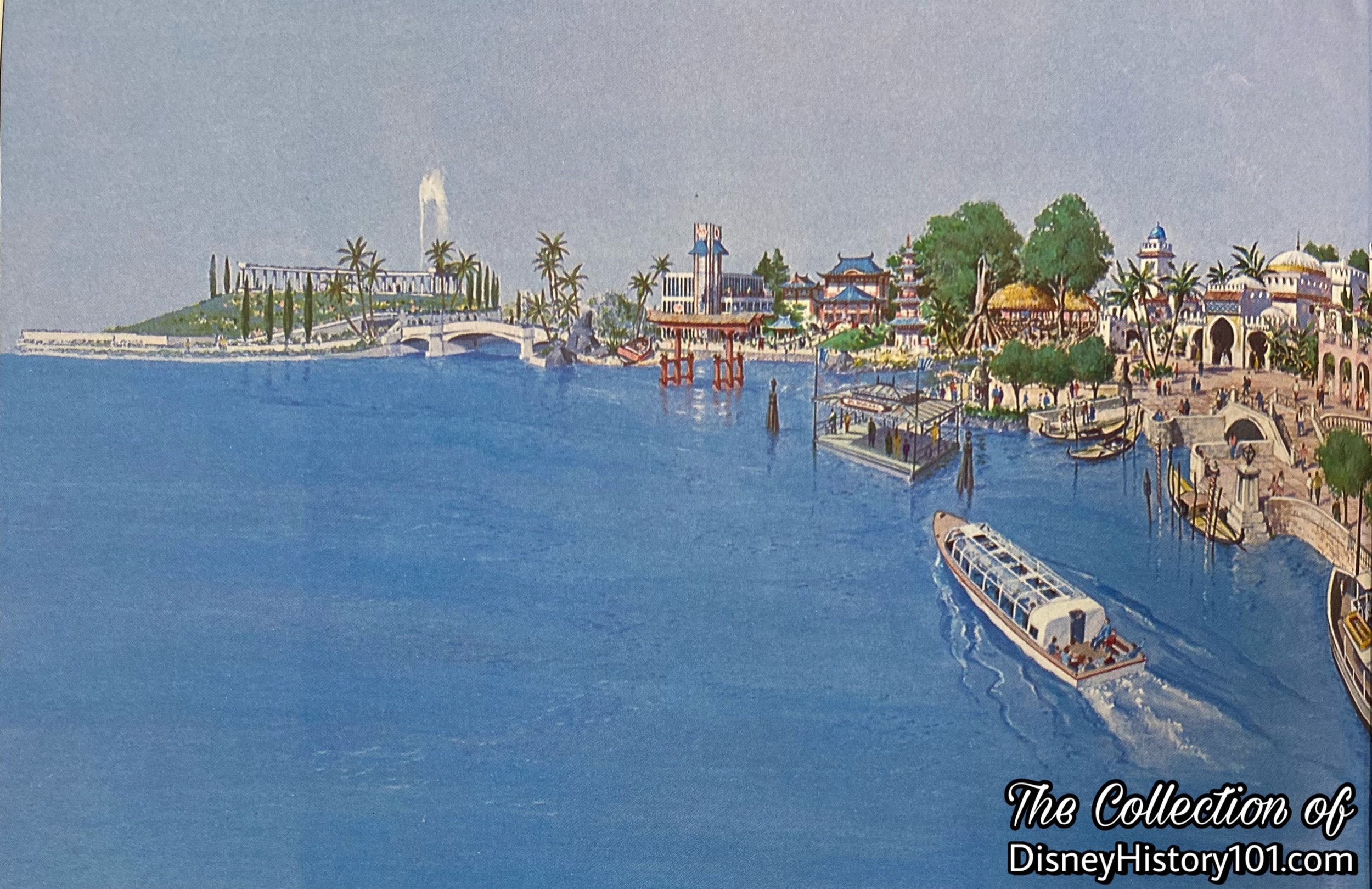
The “Walt Disney Productions Annual Report 1978“ briefly described the Japan Pavilion for shareholders and employees: “A traditional wooden archway marks the entrance to this pavilion. A carrousel theater show, ‘The Winds of Change,’ will be located just past a ceremonial temple bell and an ornately-decorated pagoda. The four-act show features Audio-Animatronics figures and film. A section of the Ginza, Tokyo's famous nighttime shopping and entertainment district will also be a part of the pavilion.”
Walt’s people and company were now embarking on “imagineering” a new, grander “theme show” for Florida audiences. The latter expression (“theme show”) was once defined as: “A controlled, usually man-made environment where as many as possible elements pertain to a single fictional or non-fictional motif. Thus, an individual placed within that environment may consciously or subliminally experience it.” But even more (as one sanctioned statement elaborated): “We are talking about all the things a guest may experience and be entertained by - colors, sounds, lights, detail - timing, taste and texture. Through art and animation, our imagination, creativity and talent blend together to make our ’show.’”
Walt Disney once said: “The whole thing here is the organization. Whatever we accomplish belongs to our entire group, a tribute to our combined effort.” In step with Walt’s philosophies, what was described as a “complex and highly diversified team” of individuals (among the Project Management and the Project Team) would coordinate and translate the concept of EPCOT Center into a reality. The microcosm that would be the Japan pavilion would be Imagineered by the collaborative contributions of writers, designers, artists, film makers, engineers, sculptors, and builders, in addition to committees of foreign nationals, representatives of corporations and governments.
Marty Sklar recollected (in “One Little Spark! Mickey’s Ten Commandments and The Road to Imagineering”: “I had spent eight of my eventual fifty-four years at Disney leading the Imagineers in developing the concepts, playing a key role in convincing the major corporate sponsors to make Epcot a reality, and producing the myriad of shows and stories that attracted more than ten million visitors to visit Epcot in its first year.”
These were lead by Project Director Jim Nagy, EPCOT Center World Showcase Japan Project Manager Jim Wolford, Allen Moyer (Resident Engineer), Jerry Hunt (BVCC Project Manager), John Moore (Tishman Project Manager), Pete Rahill (Pico Coordinator), Joanne Fernholz (Project Business Administrator), and Linda Nations (Project Planner), with the help of General Contractors Palmer-Smith Company, Inc.
Walt Disney World Shops would employ disciplines found at MAPO, supporting MAPO with in construction manufacturing.
The Showcase Area Development Landscaping Team was comprised of Don Hughes (Project Manager), Bill Coan (Resident Engineer), Jim Franklin (BVCC Project Manager), John Payne (PICO Coordinator), Joanne Fernholz (Project Business Administrator), and Dave Yanchar (Project Planner). [“Epcot Center - People Bring it to Life,” prepared by WED/MAPO, c.1980]
By this time, the current preliminary concept for the Japan World Showcase Pavilion was described the following way:
“The entrance to the Japan Pavilion is marked by traditional wooden archway located along the shoreline of the World Showcase lagoon. Guests will walk past a ceremonial temple bell and an ornately decorated pagoda before arriving at the pre-show area for a carrousel theater show entitled ‘The Winds of Change.’ Through the magic of Disney Audio-Animatronics and film, this four-act show traces the major influences of Japanese culture from the earliest Chinese visitors to the present. The show concludes with a multiple screen film presentation depicting modern Japan’s vast manufacturing outpost and its impact on the rest of the world. Exiting the carrousel theater, guests will be greeted by neon lights and music typical of the Ginza, a recreation of downtown Tokyo’s famous nighttime shopping and entertainment district. From the Ginza, guests ramp down to the first floor display and merchandise areas where products such as pearls, ceramics, bonsai trees and time-keeping devices are available for purchase. The shops sponsored by Japanese companies, will be situated on a pedestrian ‘street’ and will feature architectural theming as well as the finest quality in Japanese products. A major department store will feature merchandise on the first floor, a teppanyaki restaurant on the second floor and a VIP tea garden on the third floor.”
As for the firms which would sponsor these attractions, “Jack Lindquist, Vice President of Marketing for Disneyland and Walt Disney World… [headed] up our team responsible for lining up participants for EPCOT and World Showcase,” according to Disneyland LINE Magazine. By 1978, at least five companies - Mitsukoshi Ltd., Seiko Time Corp., Japan Airlines Co. Ltd., K. Mikimoto & Co. Ltd., and Noritake - officially notified Jack Lindquist of their intention to participate in the Japan Pavilion World Showcase at EPCOT Center. When Epcot Center opened in 1982, there were 34 merchandise locations, some of which were supported by these sponsors in the Japan World Showcase. It is notable to mention that during these early years, it was commonplace for merchandise locations to stock General Merchandise - non -character and/or decorative items, including film and sundries.
The aforementioned “The Spirit of EPCOT Center” c.1982 instructor’s orientation guide introduces the Japan Pavilion the following way :
“The brilliant, Red Torii gate and a five-story pagoda welcome guests to Japan. A visit to Japan might begin in the Yakitori House, a small restaurant offering traditional Japanese Yakitori. . . bits of beef, skewered, basted, and simmered.
The merchandise and food locations in the Japan pavilion are operated by Mitsukoshi. One of the largest retail firms in the world, Mitsukoshi has been in business since 1673. Tempura Kiki, a small corner for the main restaurant, is devoted to the batter-dipped chicken, beef, seafood and fresh vegetables.
In the five Teppanyaki Dining Rooms, it’s possible to sample a traditional style of tableside cooking.
Shrimp in cocktail sauce and crab meat in a tasty rice vinegar sauce are among the appetizers available in the Matsunoma Lounge.”
While a four-act presentation of film and Audio-Animatronics wizardry was planned, the Japan Pavilion opened with the Mitsukoshi Department Store (inside the Grand Shishinden Hall), Teppanyaki Dining Rooms restaurant, Yakitori House restaurant, and the Mitsukoshi Restaurant (featuring Japanese master chefs performing “culinary magic and spell-binding table-side presentations”), the exterior of which is surrounded by paths through tranquil bonsai gardens of old Japan.
The EPCOT Center World Showcase almost had a legacy in WESTCOT Center - “a West Coast version of EPCOT Center, with a Spacestation Earth as its centerpiece, and a World Showcase. It was initially announced in March 1991, to be built where Disney California Adventure was eventually situated.” [Disney Facts Revealed by Dave Smith, 2016]
EPCOT Center Cast Members have been referred to as “the spirit of EPCOT Center” since that very c.1982 namesake orientation class. Without them, EPCOT Center would just be one magnificent stage.
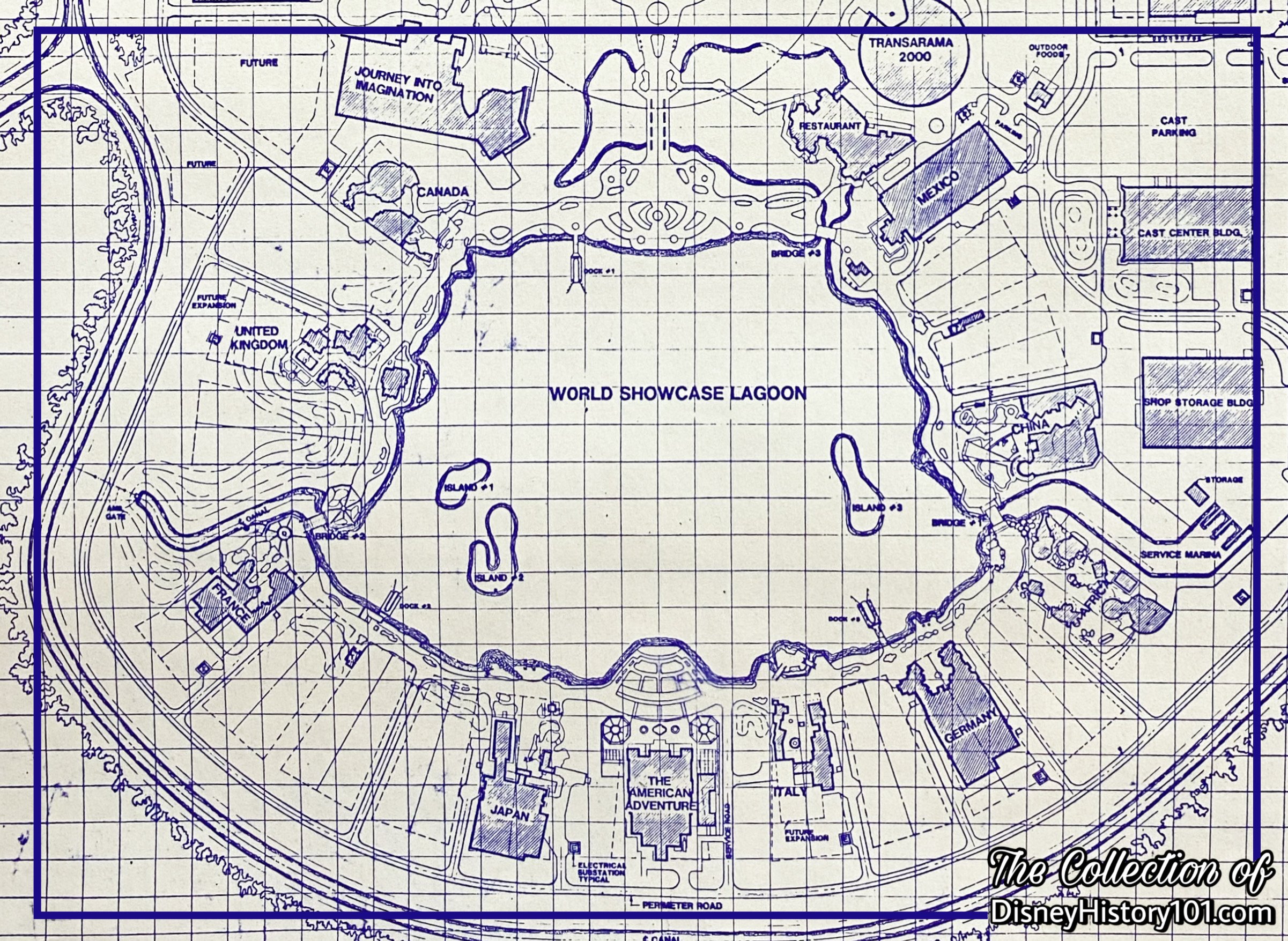
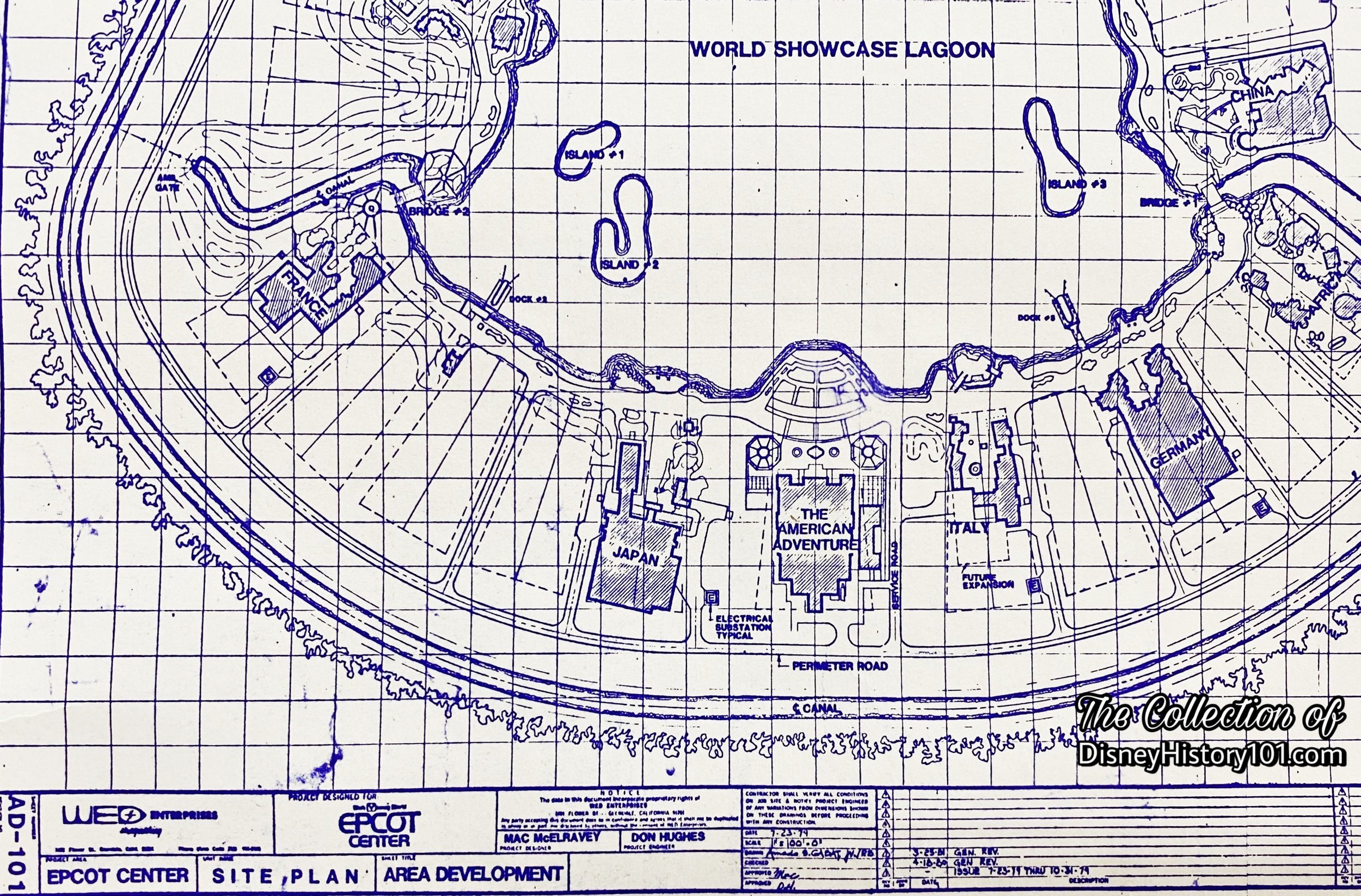
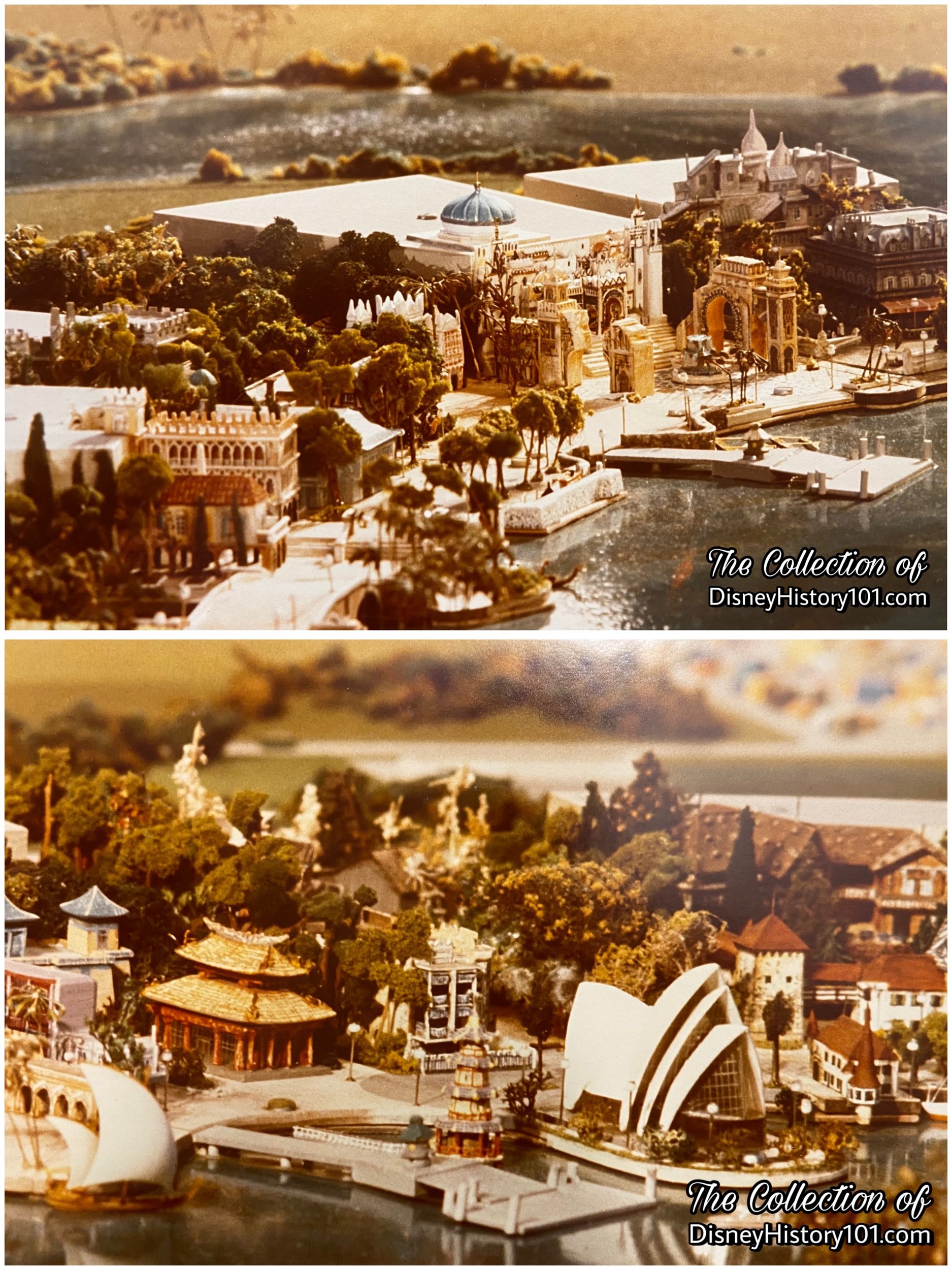
“Master Planning Japan World Showcase”
“I don't want the public to see the world they live in while they're in the park. I want them to feel they're in another world.” -Walt Disney. Nestled between a stretch (of more than 40 miles) of canal, a perimeter road, a service road, and the shores of the World Showcase Lagoon Promenade, is the EPCOT Center Japan World Showcase. Everything in the EPCOT Center Japan World Showcase would be to this theme and atmosphere from this particular time, place and subject. A themed motif would be incorporated into every aspect of operation (e.g., room décor, menus, attractions and costumes).
アトラクション
Several attractions (アトラクション) were master planned for the Japan World Showcase. Show models were prepared for Japan World Showcase, depicting its attractions, their show elements, right down to their figures and stages. Photographic Show Documentation captured the creative intent.

![Among the many renderings and show models developed for potential participating nations were these concepts including an OmniMover ride for Japan. [1976 Shareholders Report]](https://images.squarespace-cdn.com/content/v1/5b3d7f804eddec6e826be0c9/1690440627306-LWSMSHF5KZ7SPLG58DCU/433C38EF-9EF6-41FB-91D3-A8F5B1F5E1B2.jpeg)
At least one concept for a theater show was prepared by Harper Goff consultant of styling and design. Therein the theater, four Hokusai murals come alive with the story of how Japan came to be. Many necessary changes were made. For instance, Harper recalled: “When the Japanese looked at the design for their pavilion, they criticized us for using Chinese-style buildings. We had to change them to buildings that were distinctly Japanese, like the seventh-century Horyuji pagoda and the Shishinden Palace in Kyoto.”
“A Magical Journey Through the Wonders of Japan’s Heritage”
Then there was “The Winds of Change.” During the late 1970s, Konosuke Matsushita (of Matsushita Electric Industrial Company) was approached to contribute toward Tokyo Disneyland. At the time, Matsushita had expressed an interest in the historic figures of Walt Disney World’s hall of Presidents, as well as a desire to tell a story of Japanese history. Incidentally, Walt Disney Imagineer Claude Coats had been working on a theater show called “The Winds of Change” that would incorporate audio-animatronics of important figures of the past in a story of Japan’s history. Herbert Ryman (who had painted and sketched during his travels through Japan, as far back as his days with MGM Studios) now prepared conceptual paintings for show scenes of Meet the World.
Drawings from this period depict the Mitsukoshi building prepared to house sales and display areas, Mikimoto, Seiko, Noritake, “N.E.C.”, “J.A.L.,” Matsushita’s “The Winds of Change,” and another display (utilized for storage).
Then the attraction was constructed for EPCOT Center. However, the show building could not support the weight of the attraction. So it was decided to install the show at Tokyo Disneyland. The attraction had more than thirty Audio-Animatronics figures, all of which were sculpted by Blaine Gibson, except for three Meiji figures which were by a Japanese sculptor from Tokyo’s Toho Studios. A theme song was composed and written by Richard and Robert Sherman. Matsushita Electric paid for part of the attraction, subsidizing cost, and creating a “free attraction” similar to what happened to previous Disneyland attractions. “Meet the World” opened, presented by Participant Sponsor Japan Airlines.
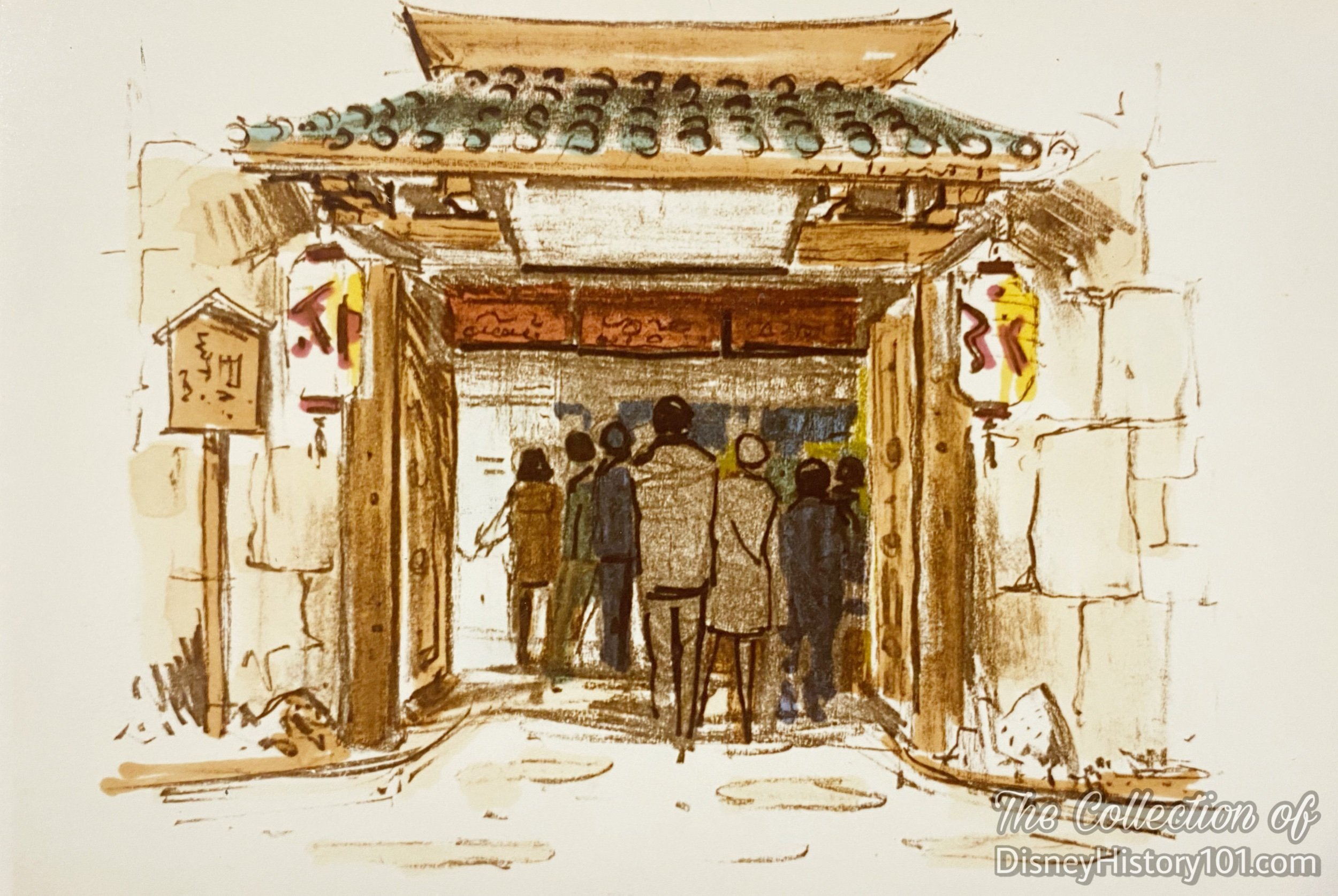
“Mount Fuji”
There are thousands of mountains in the world. There is only one, indelible Fujiyama. Naturally, other master plans would involve a Mt. Fuji-themed attraction. The pictures feature tandem-style vehicles (similar to Space Mountain rockets) passing traditional torii gates, Komainu lion dogs, and legendary Kami spirit encountered before a drop-off over the World showcase Lagoon.
Today Concept Development Team members, a Show Producer, Writer, and Artists develop a High-Concept into a full Story. Using a technique referred to as story-boarding the team repeatedly expands upon the initial concept, developing scenes, characters and content necessary to convey the Story. During the concept development of the Japan Pavilion, Clem Hall prepared two-dimensional, rough, thumbnail story sketches outlining the story concept. Some of the vignettes (incidents in scenes and sequences) were illustrated. Clem’s artwork depicted tandem-style vehicles (similar to Space Mountain rockets) passing traditional torii gates, Komainu lion dogs, and legendary Kami spirits encountered before a drop-off over the World showcase Lagoon.
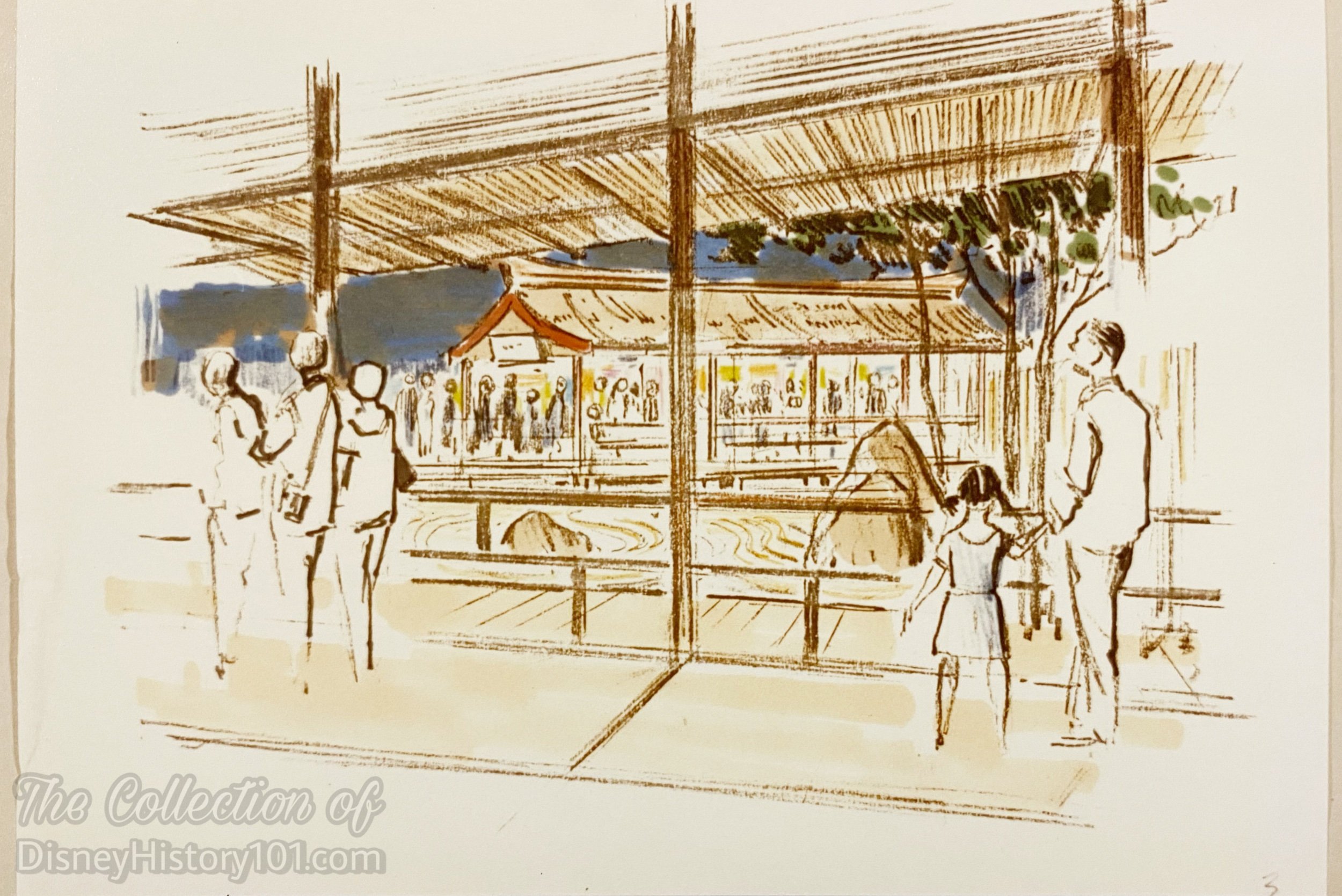
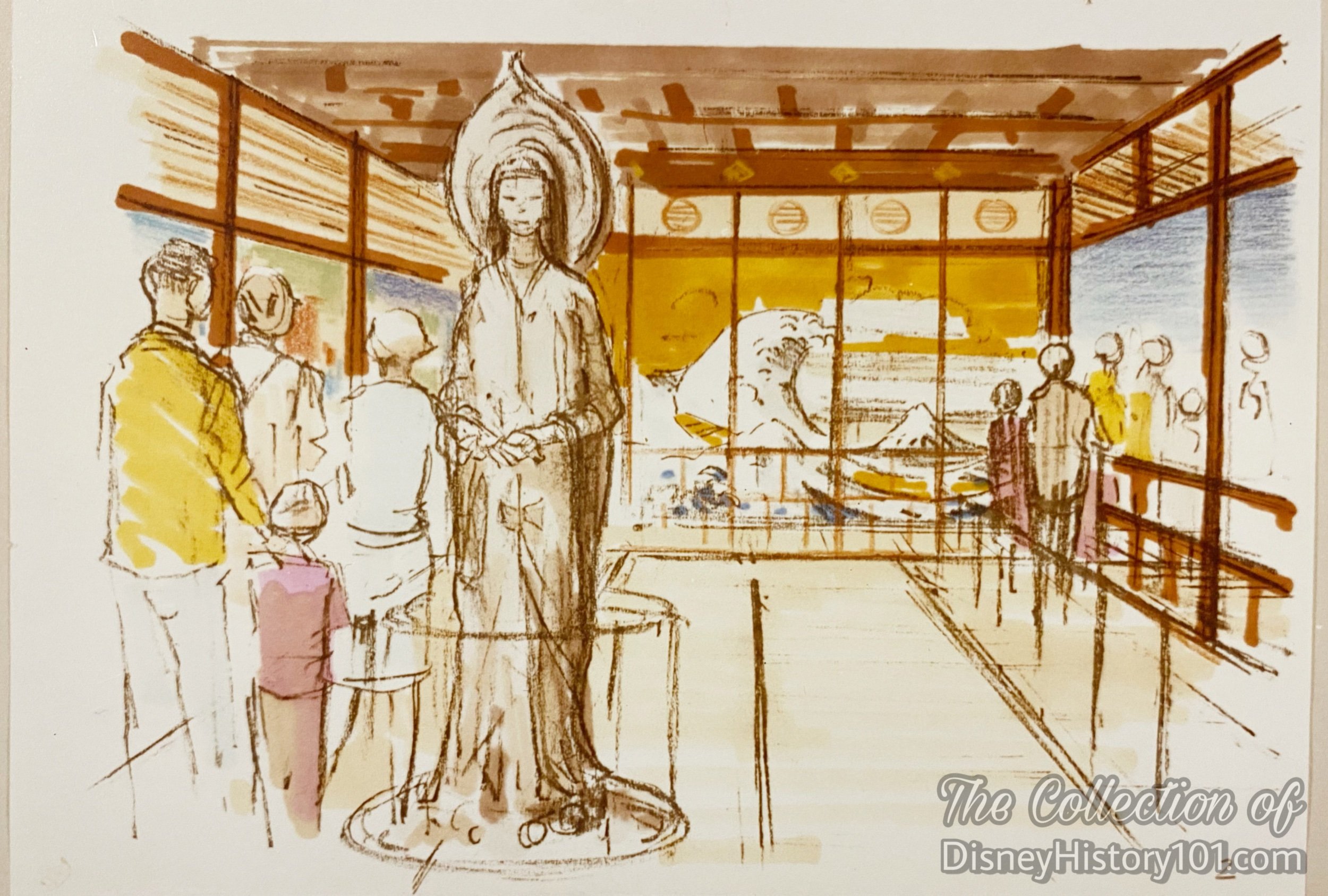

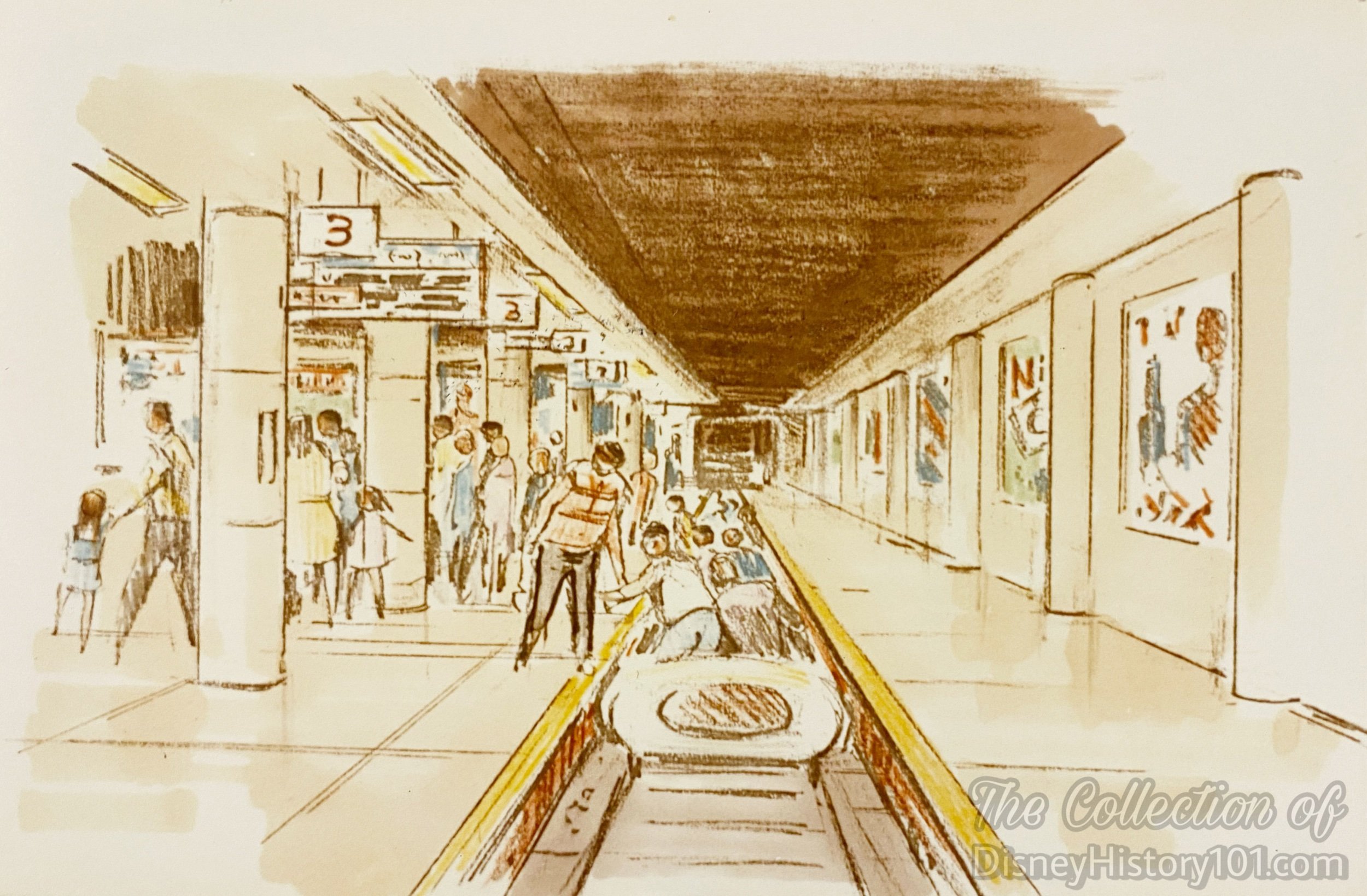
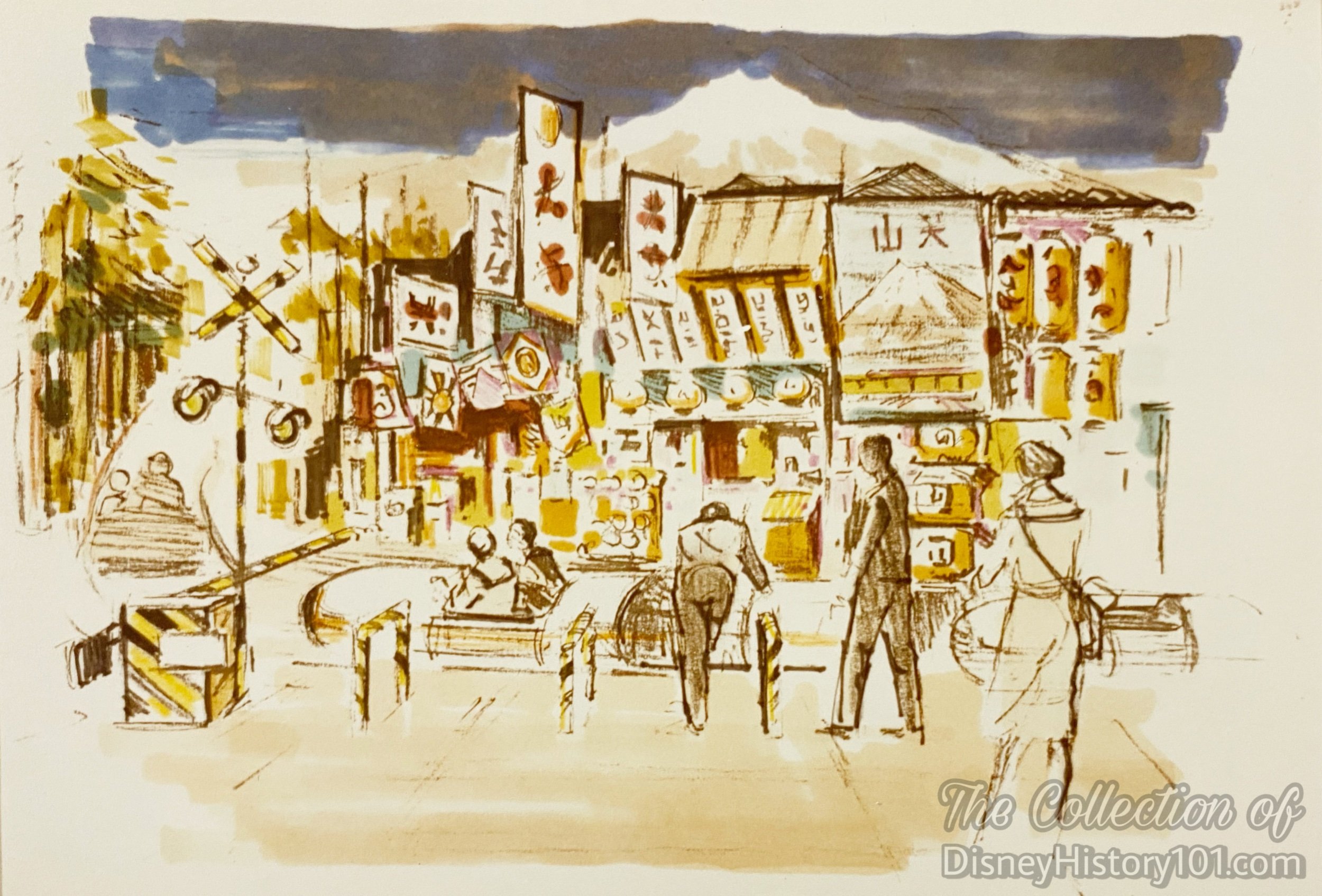
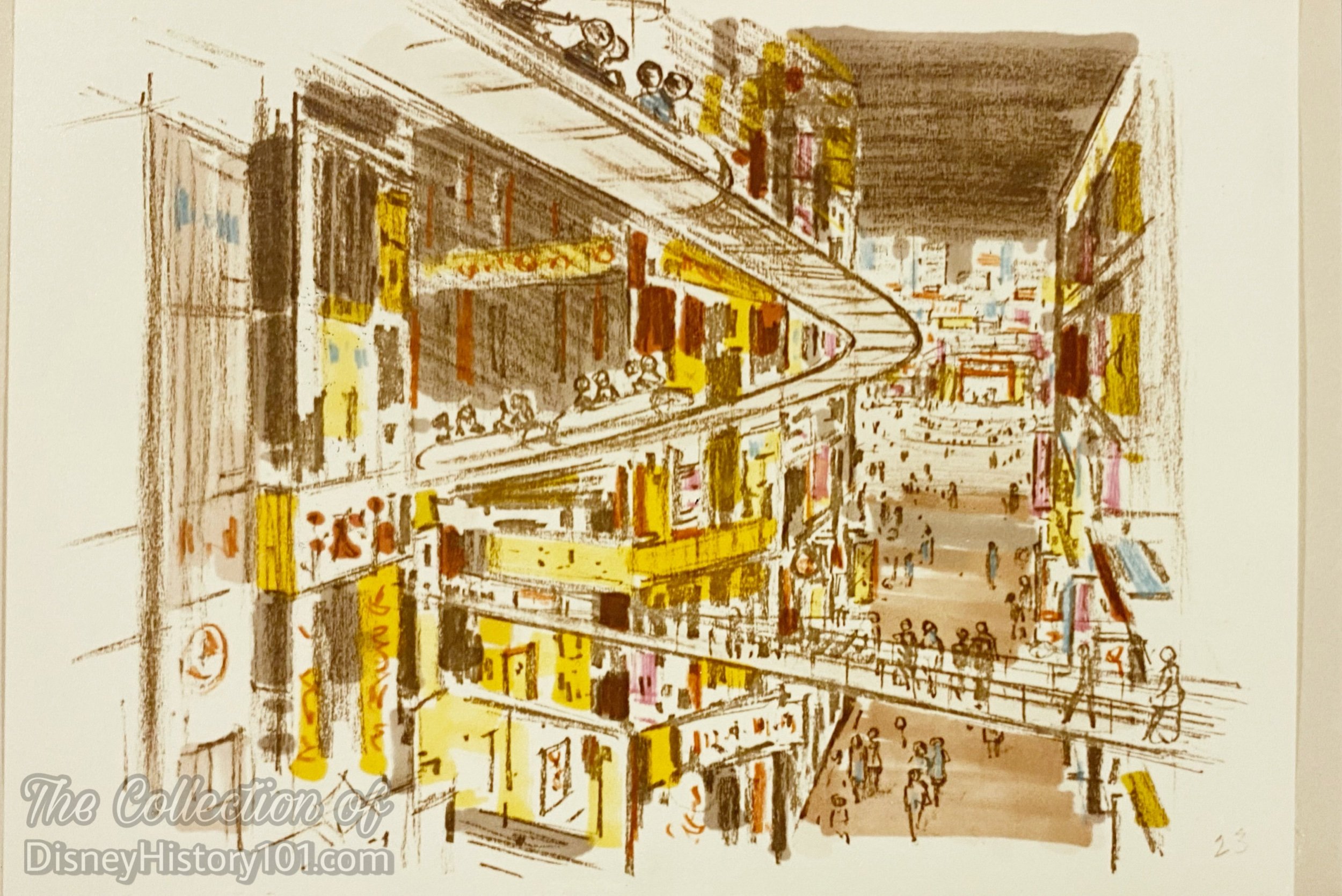

Tandem vehicles (similar to those of Space Mountain) would carry guests through the adventure.
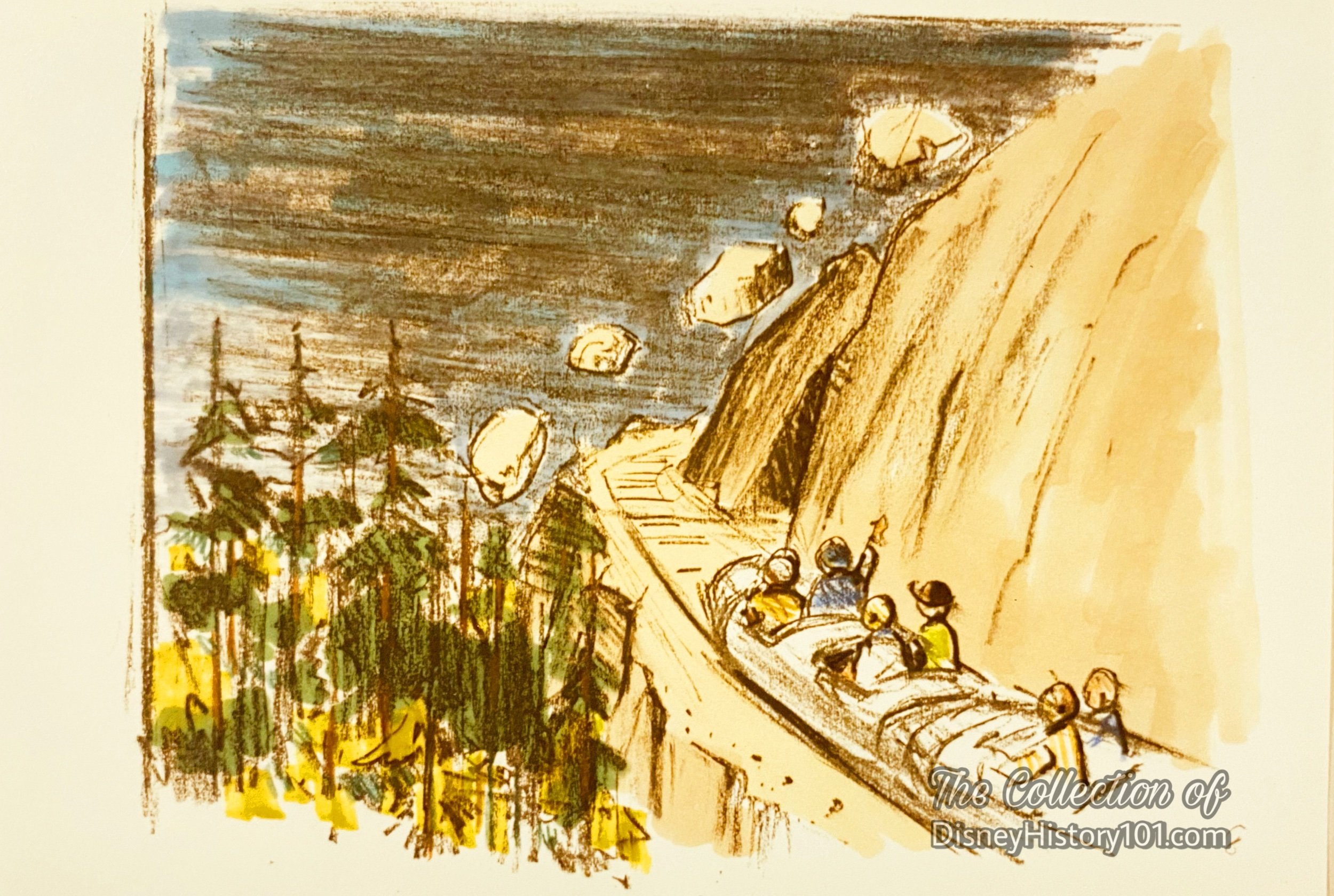
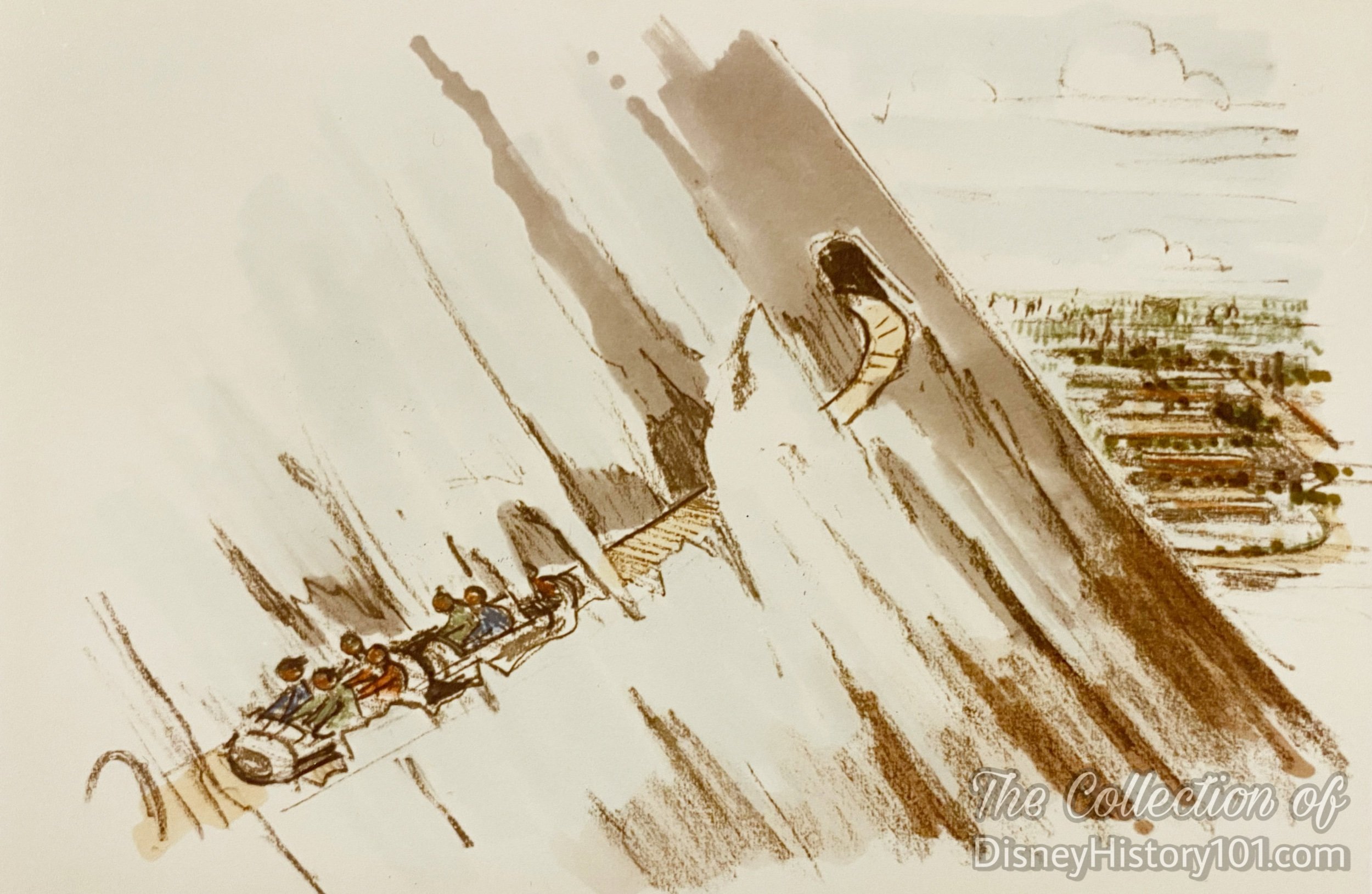

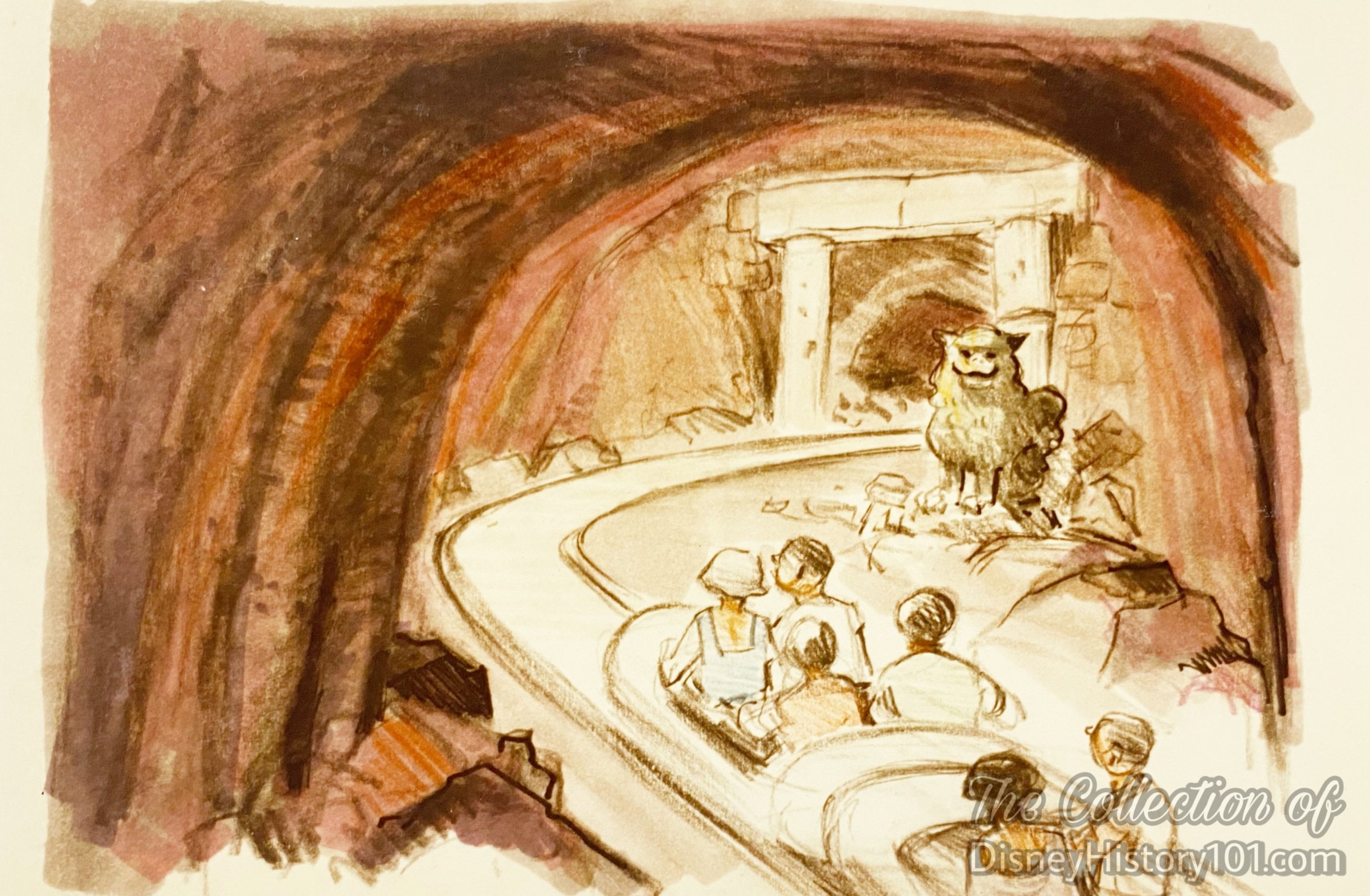
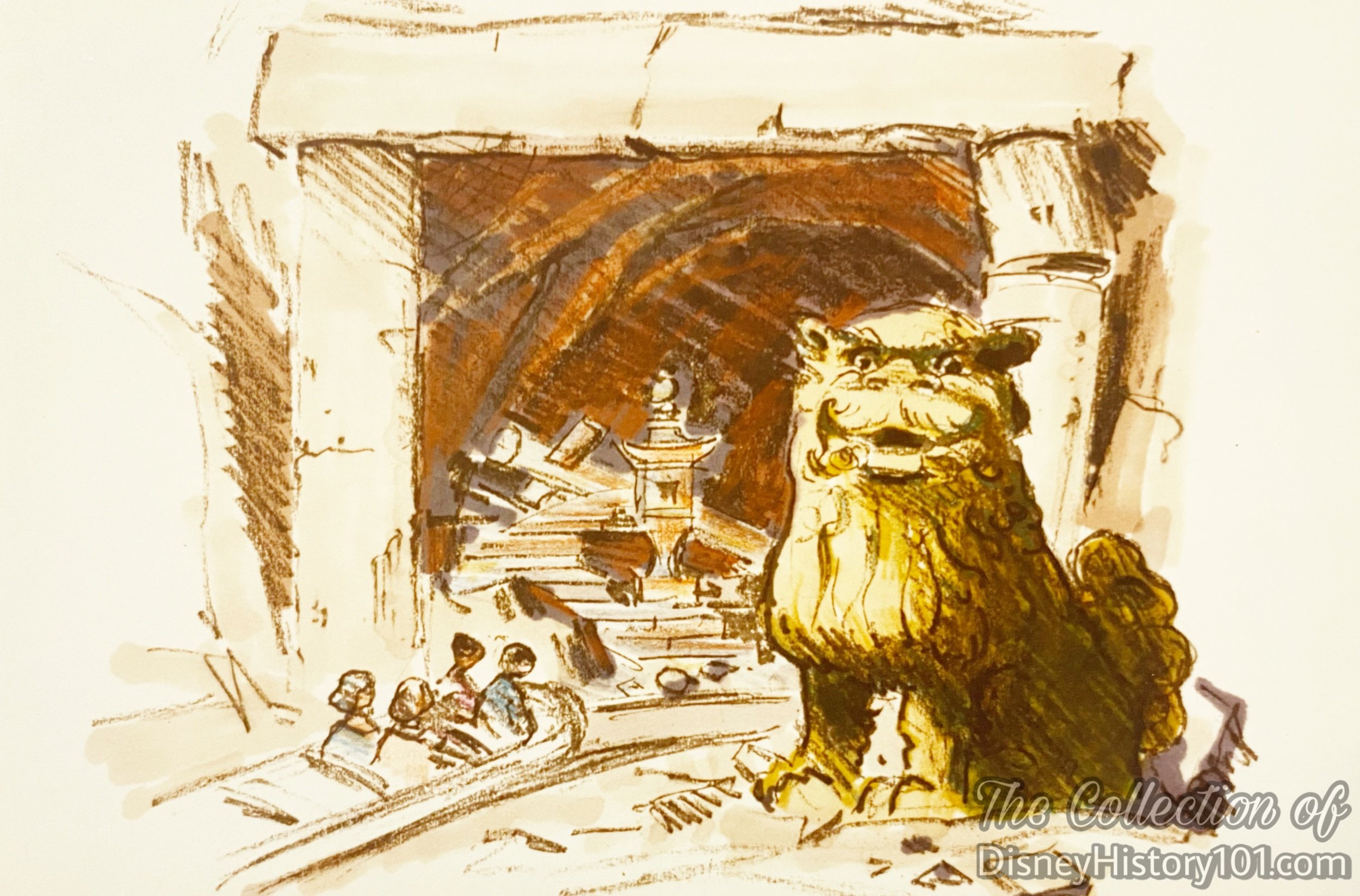
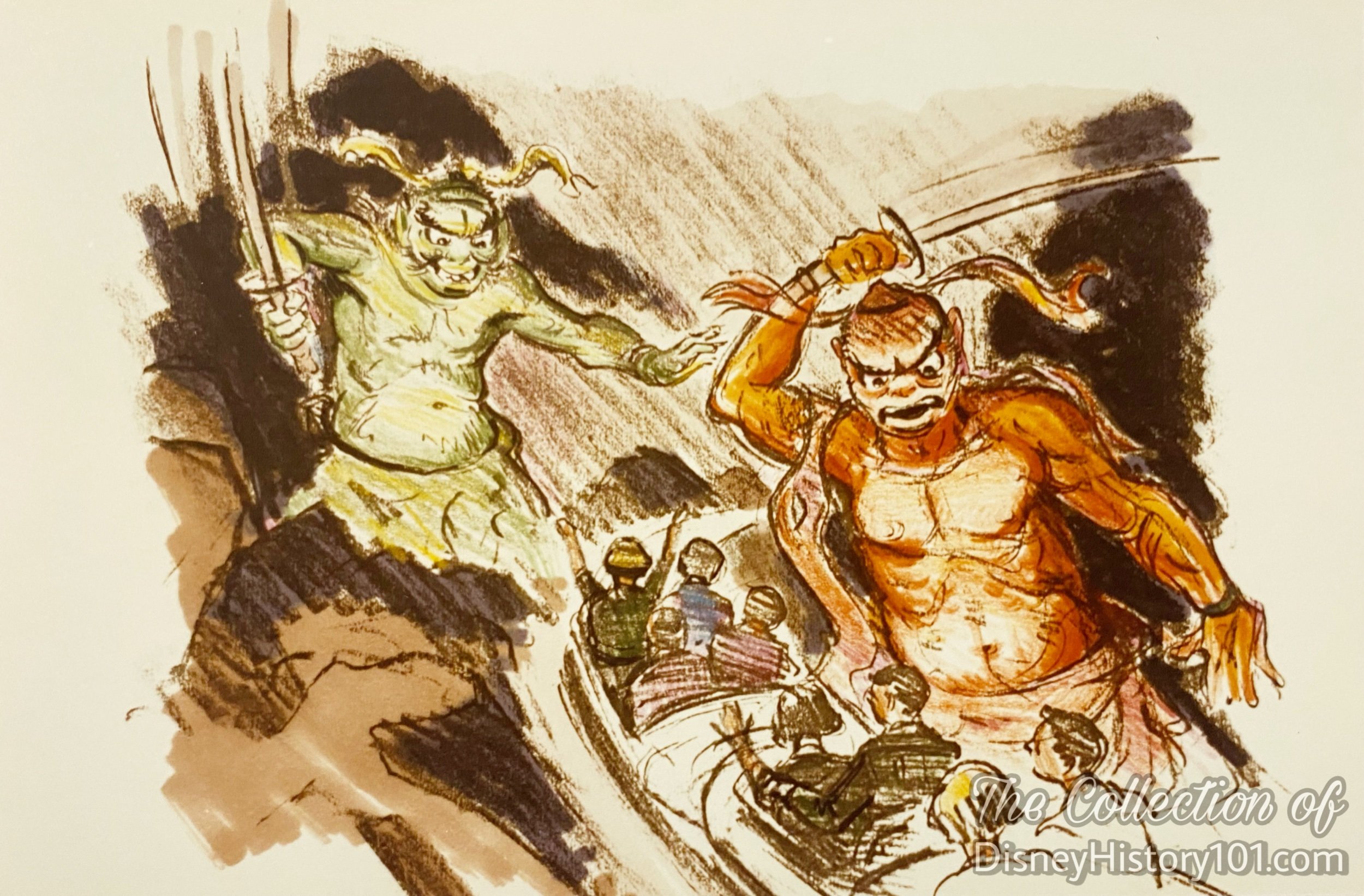
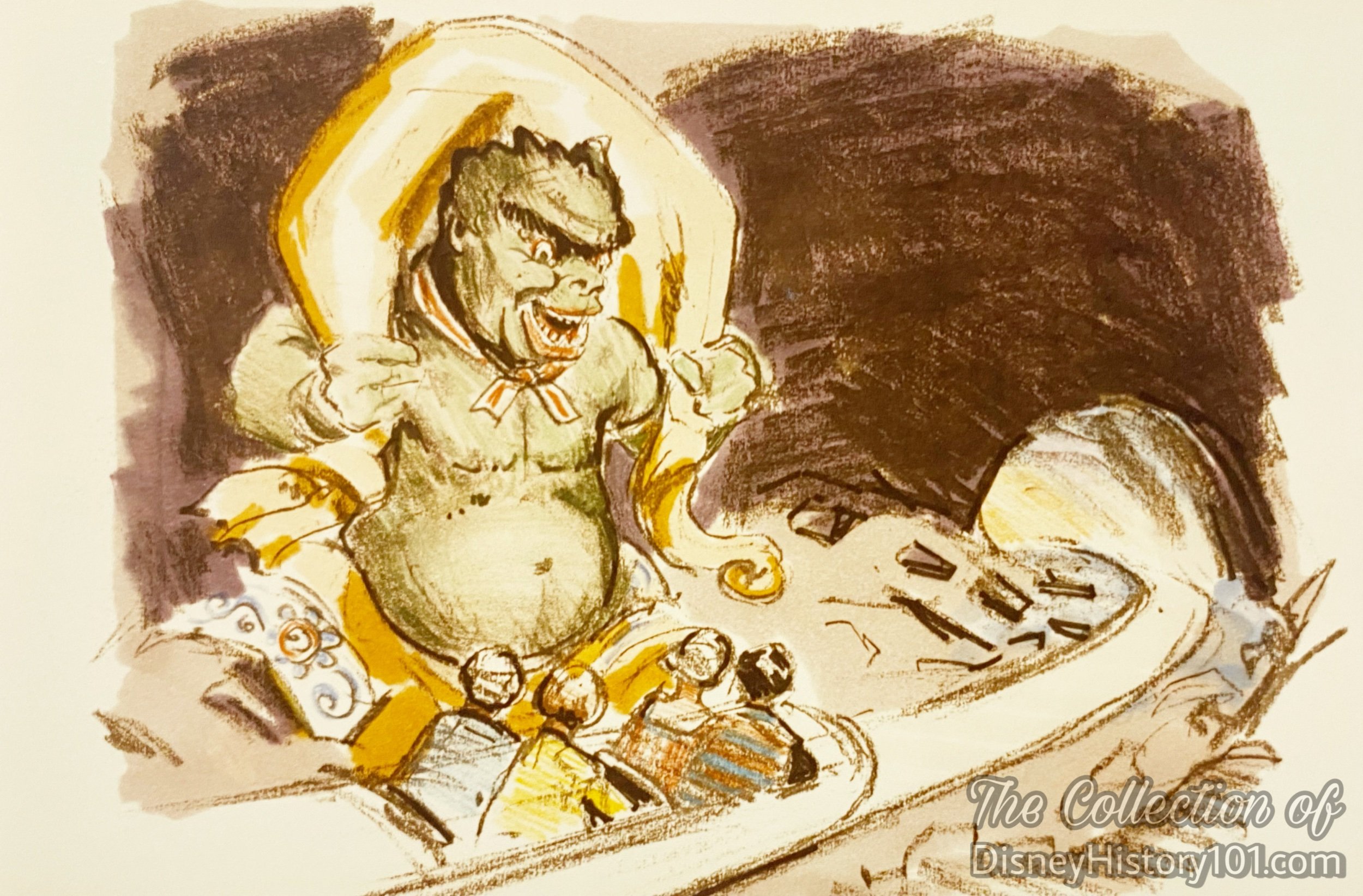
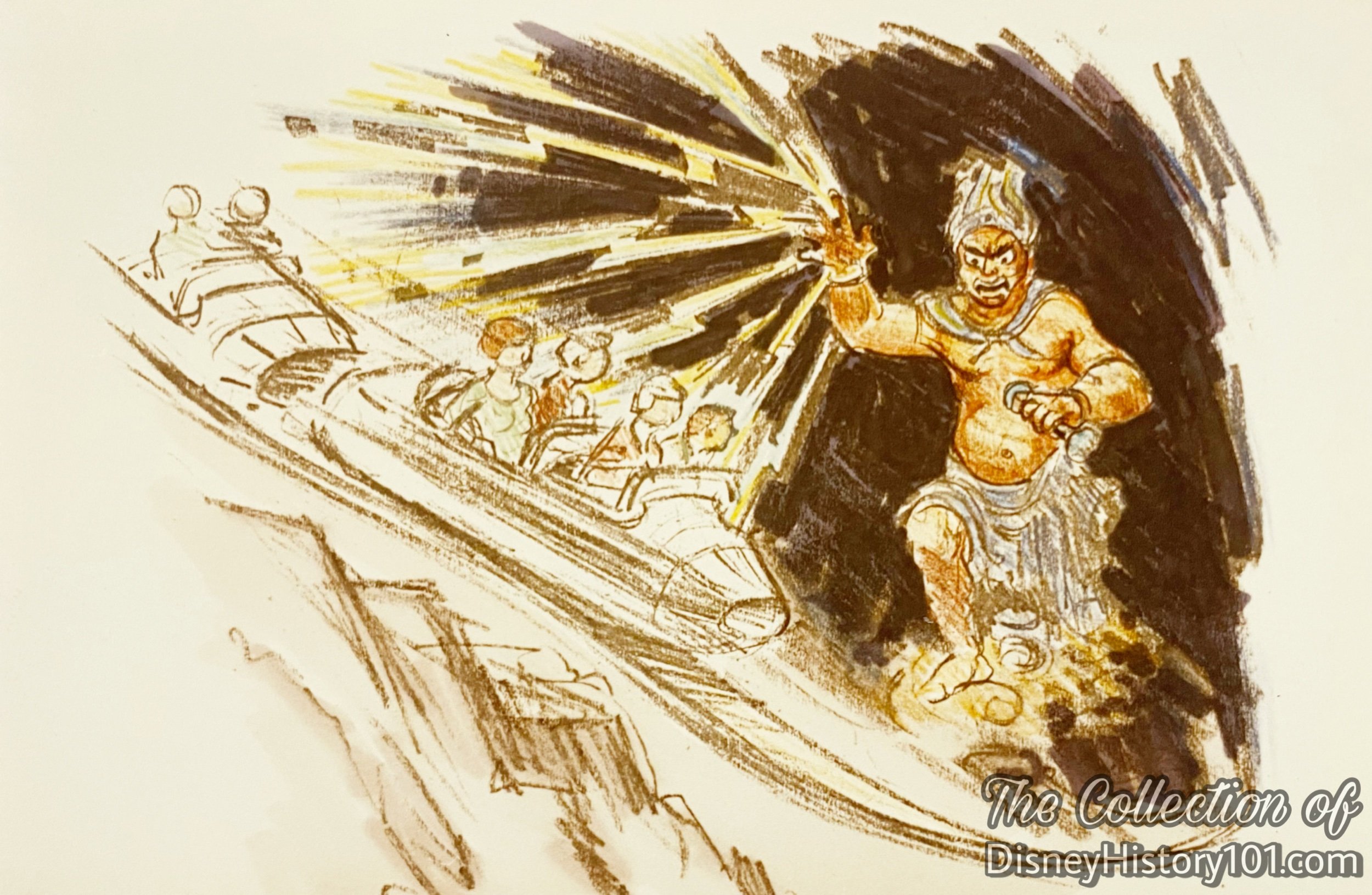
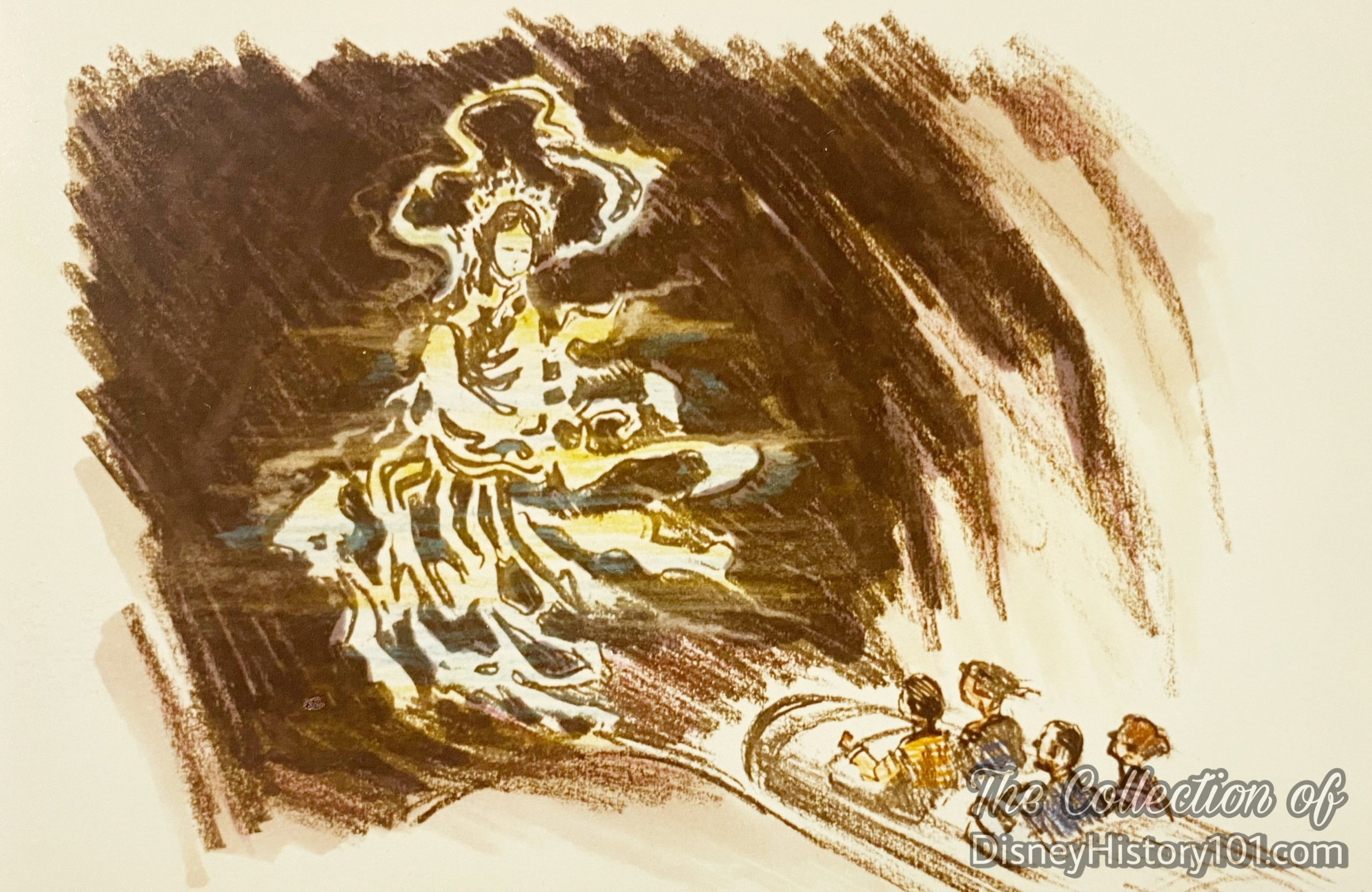
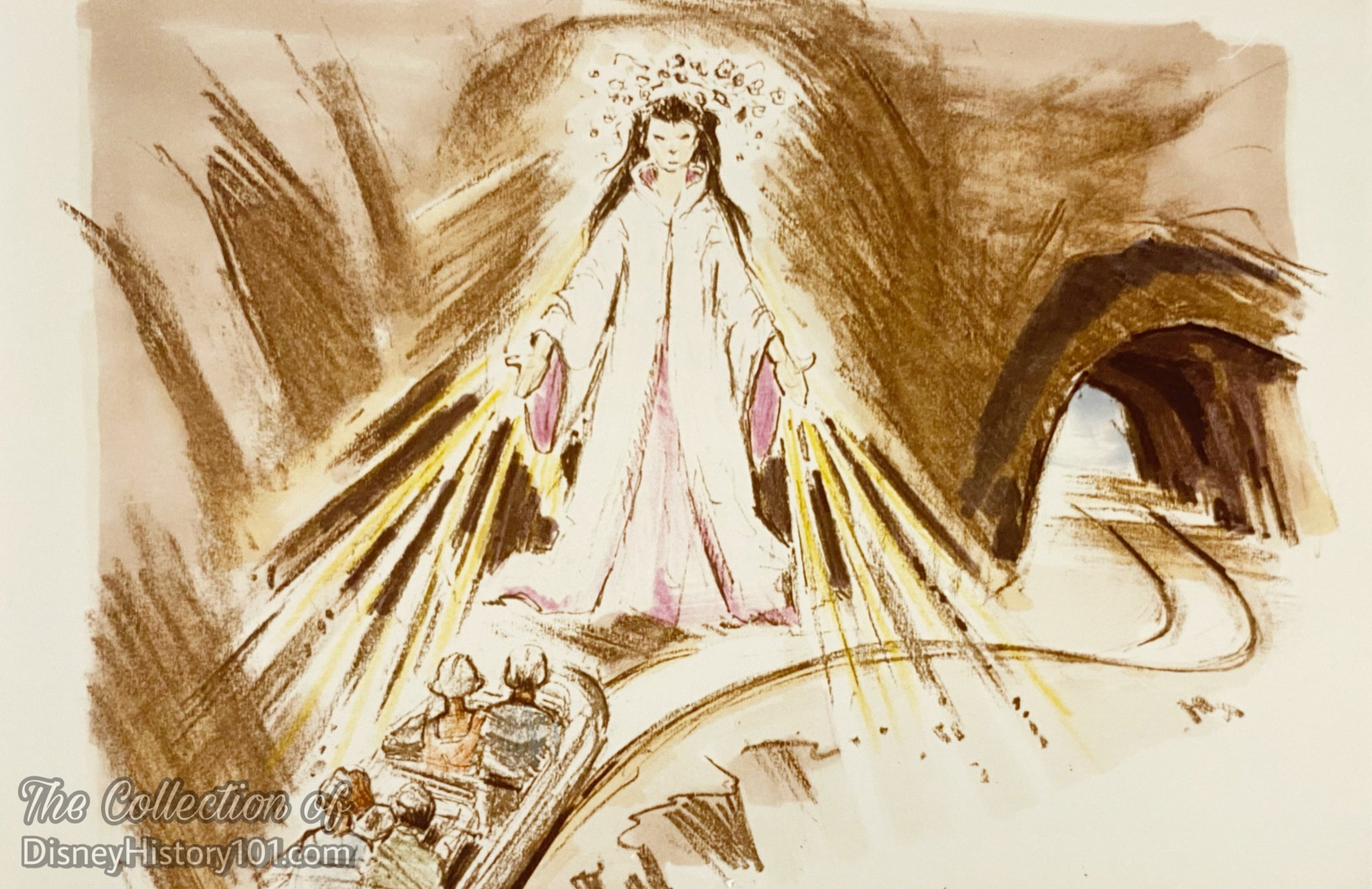
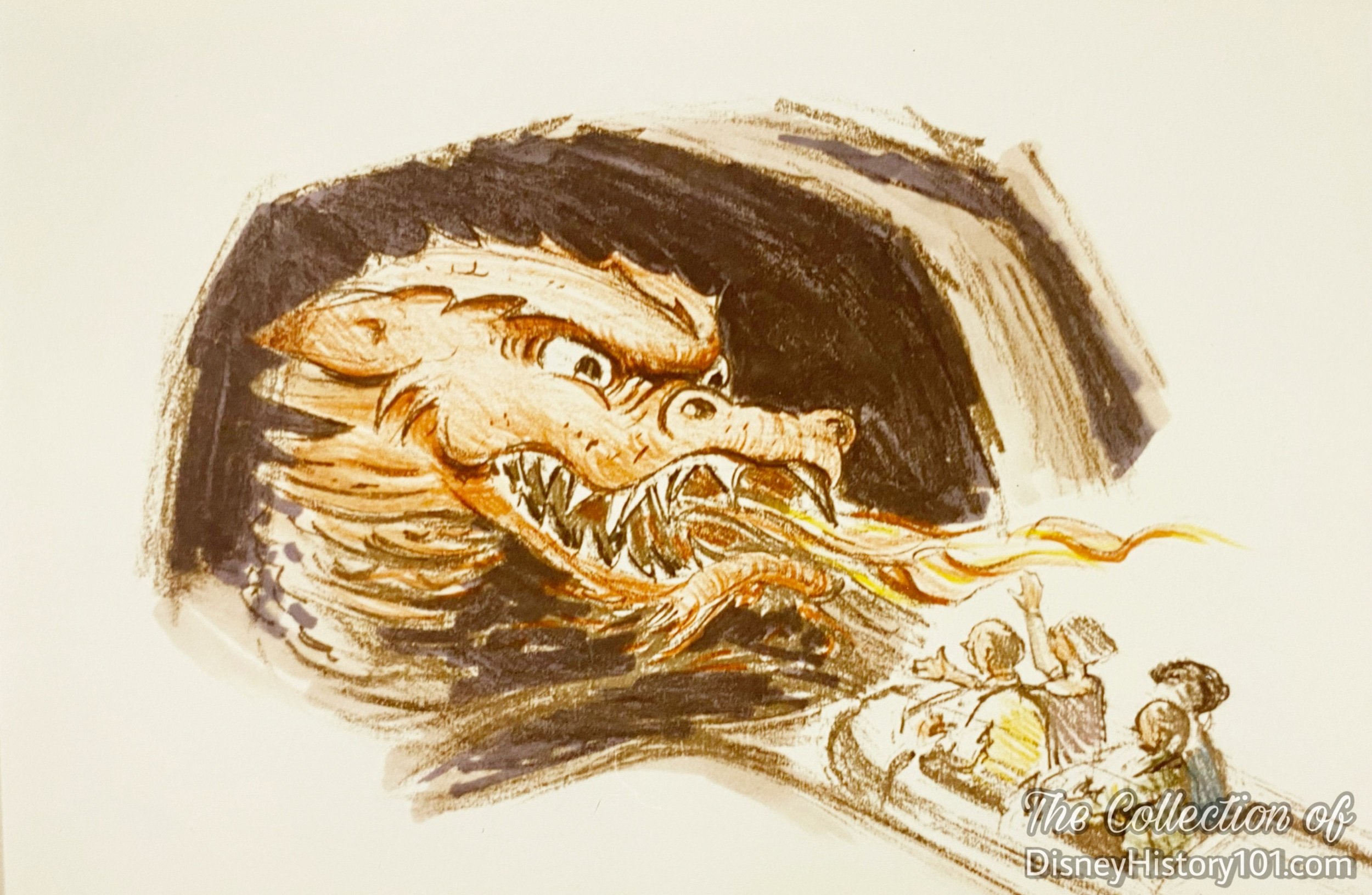
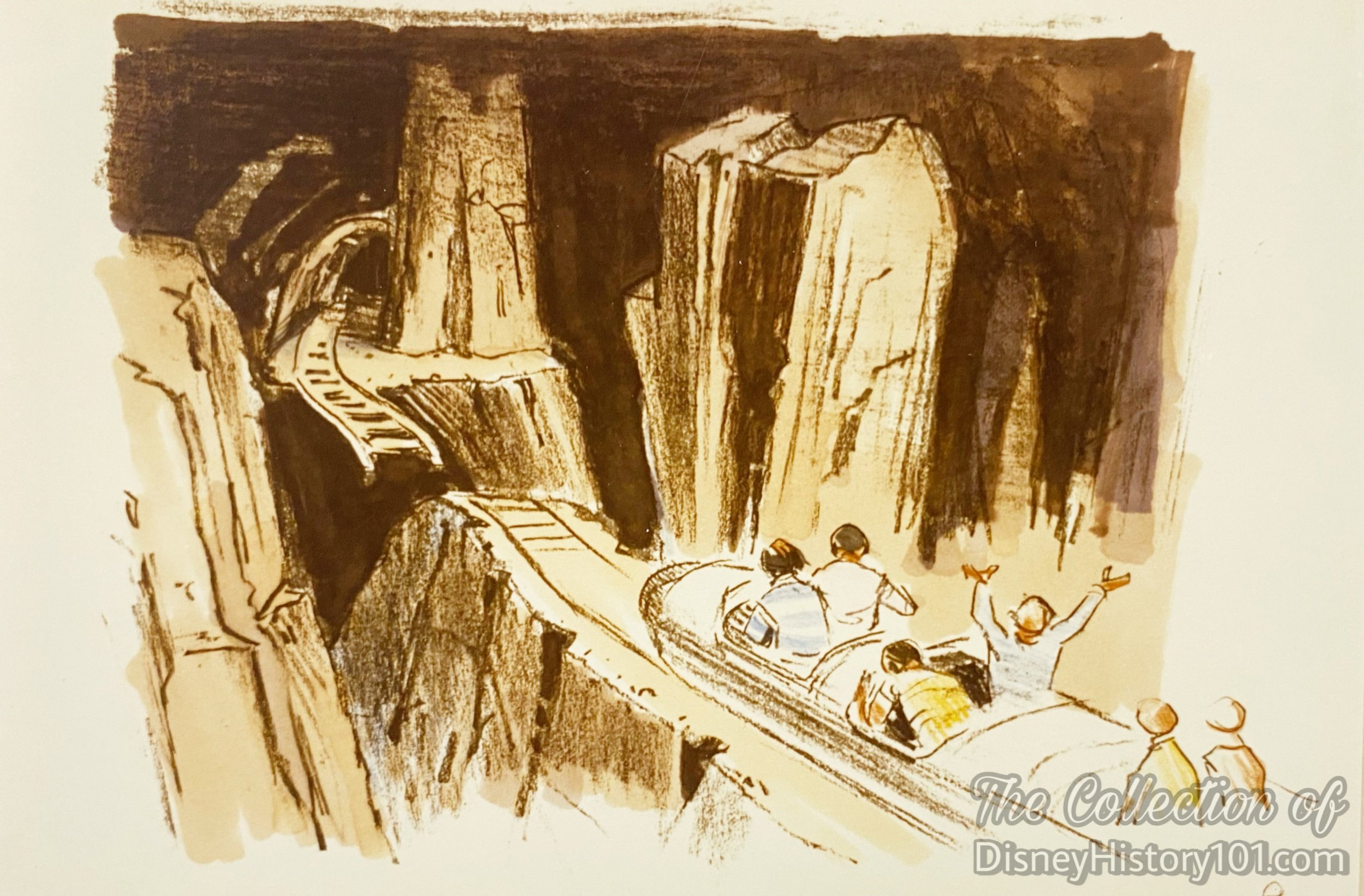
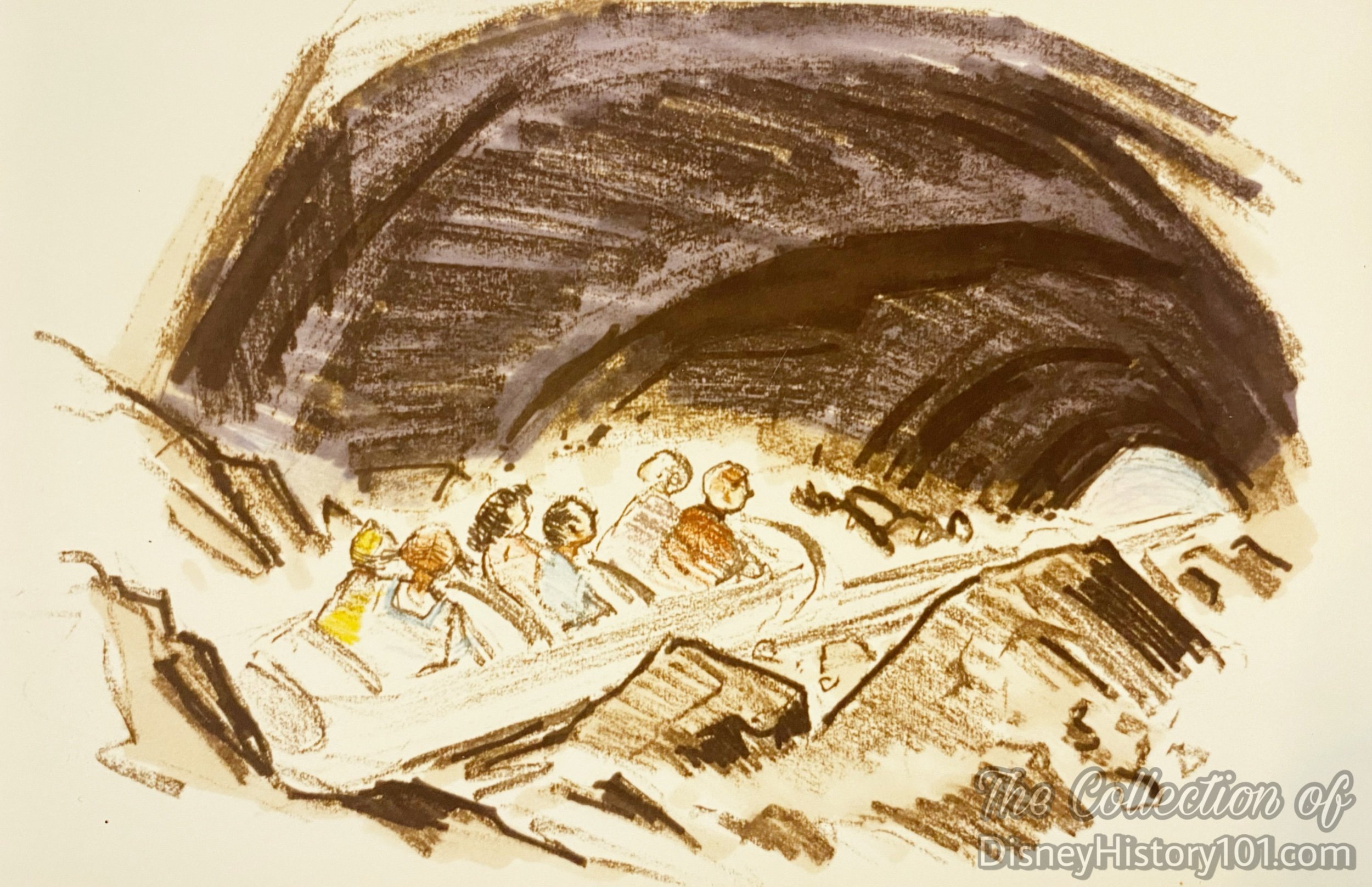
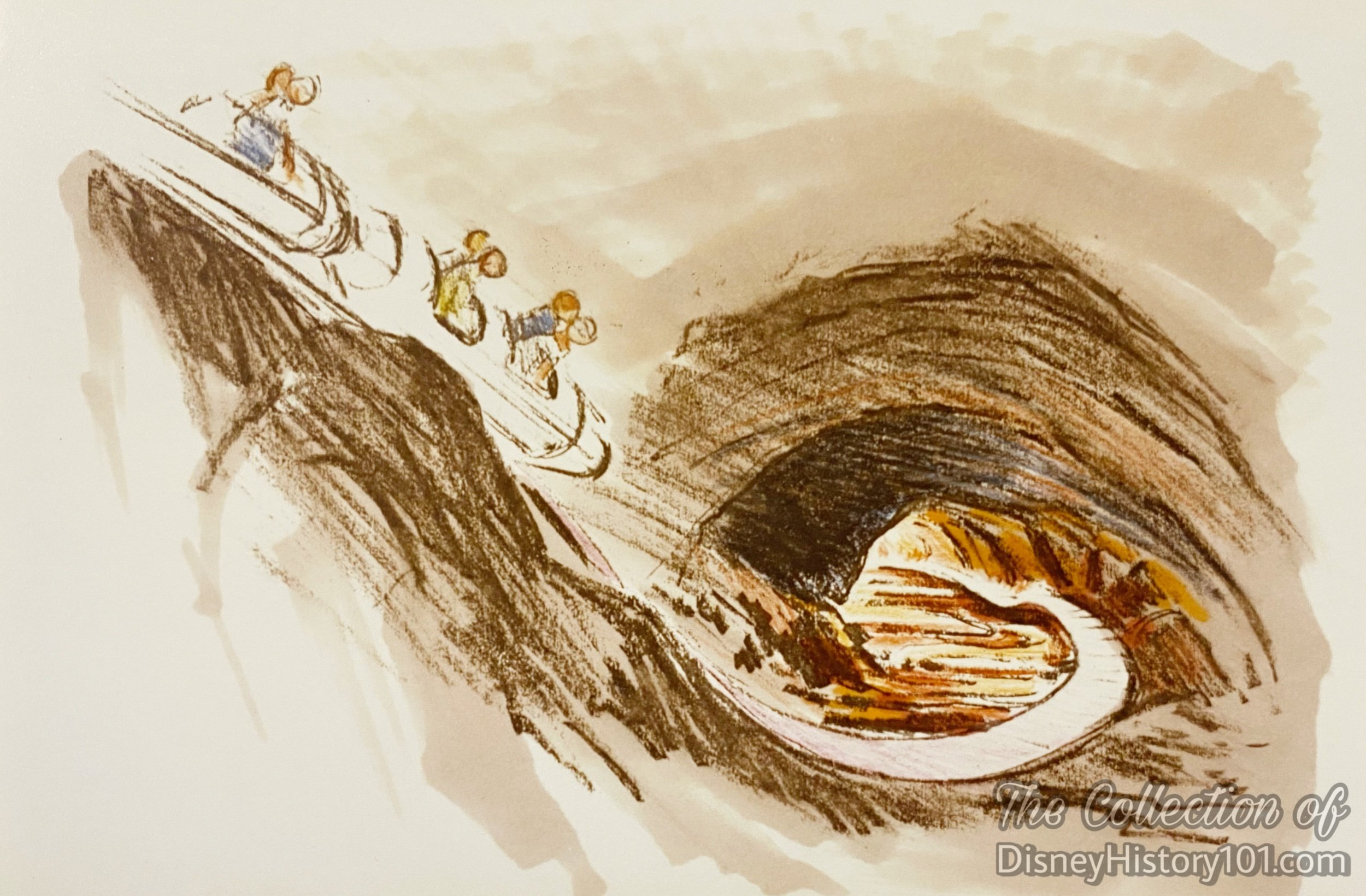

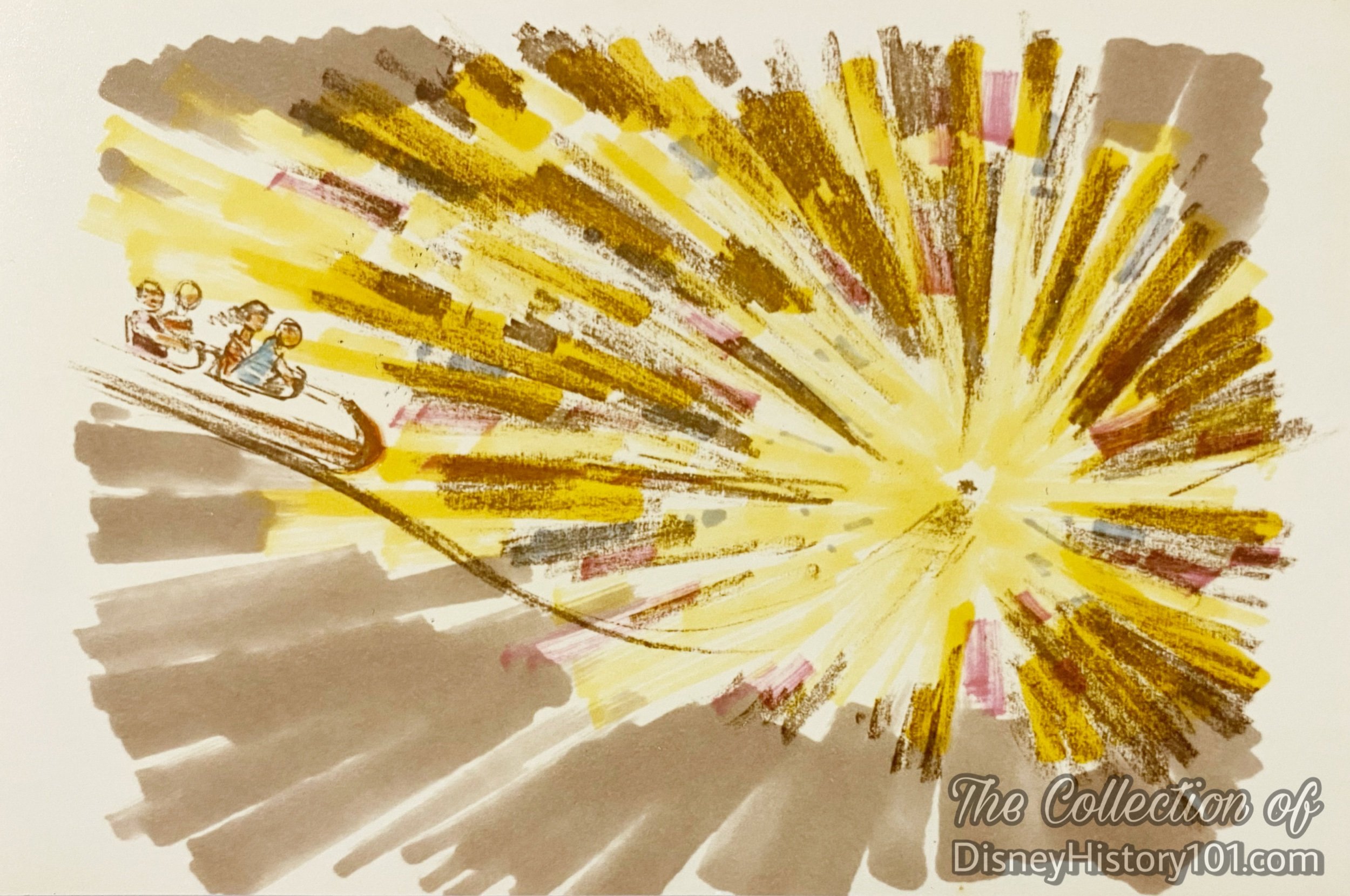
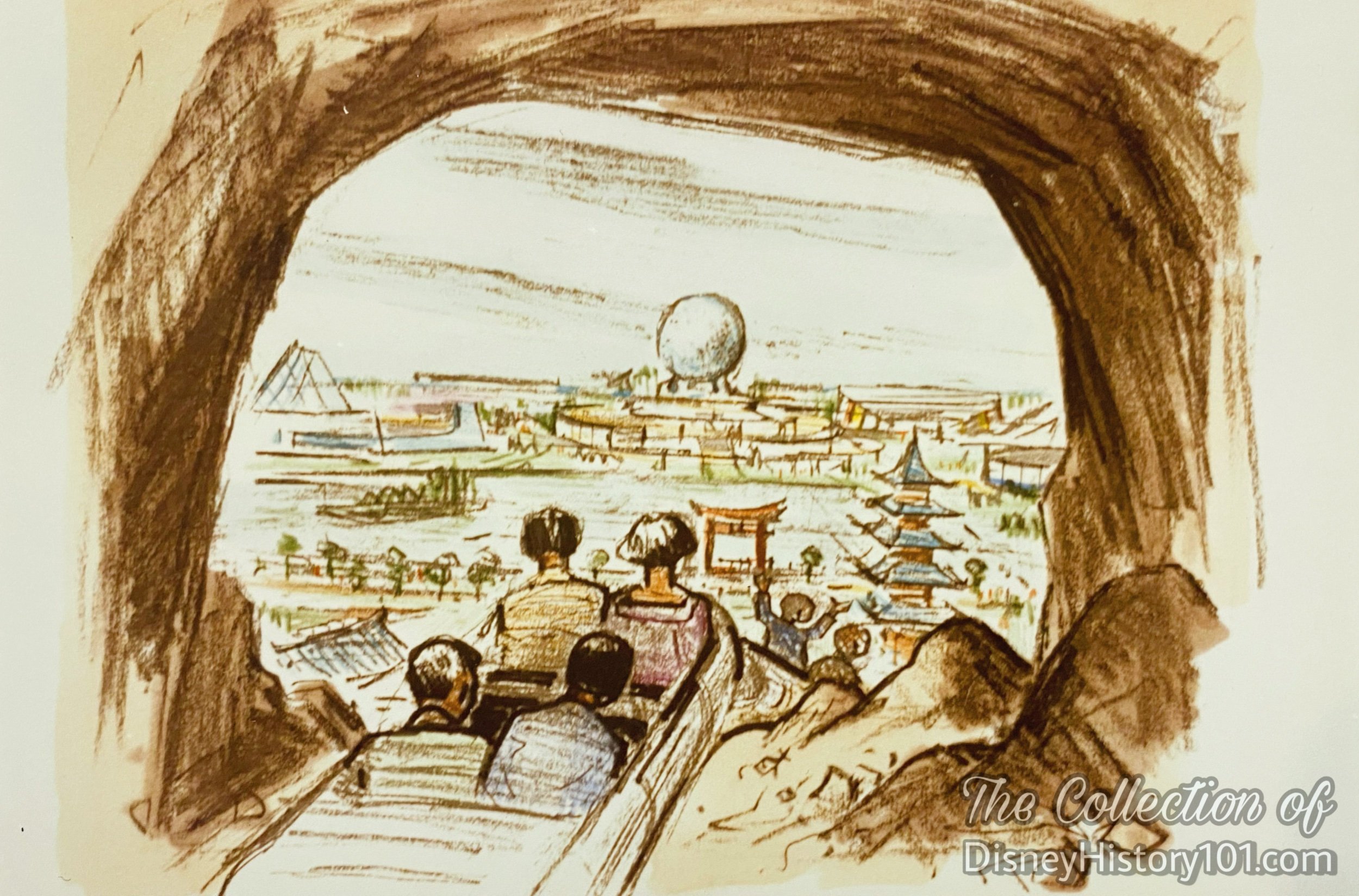
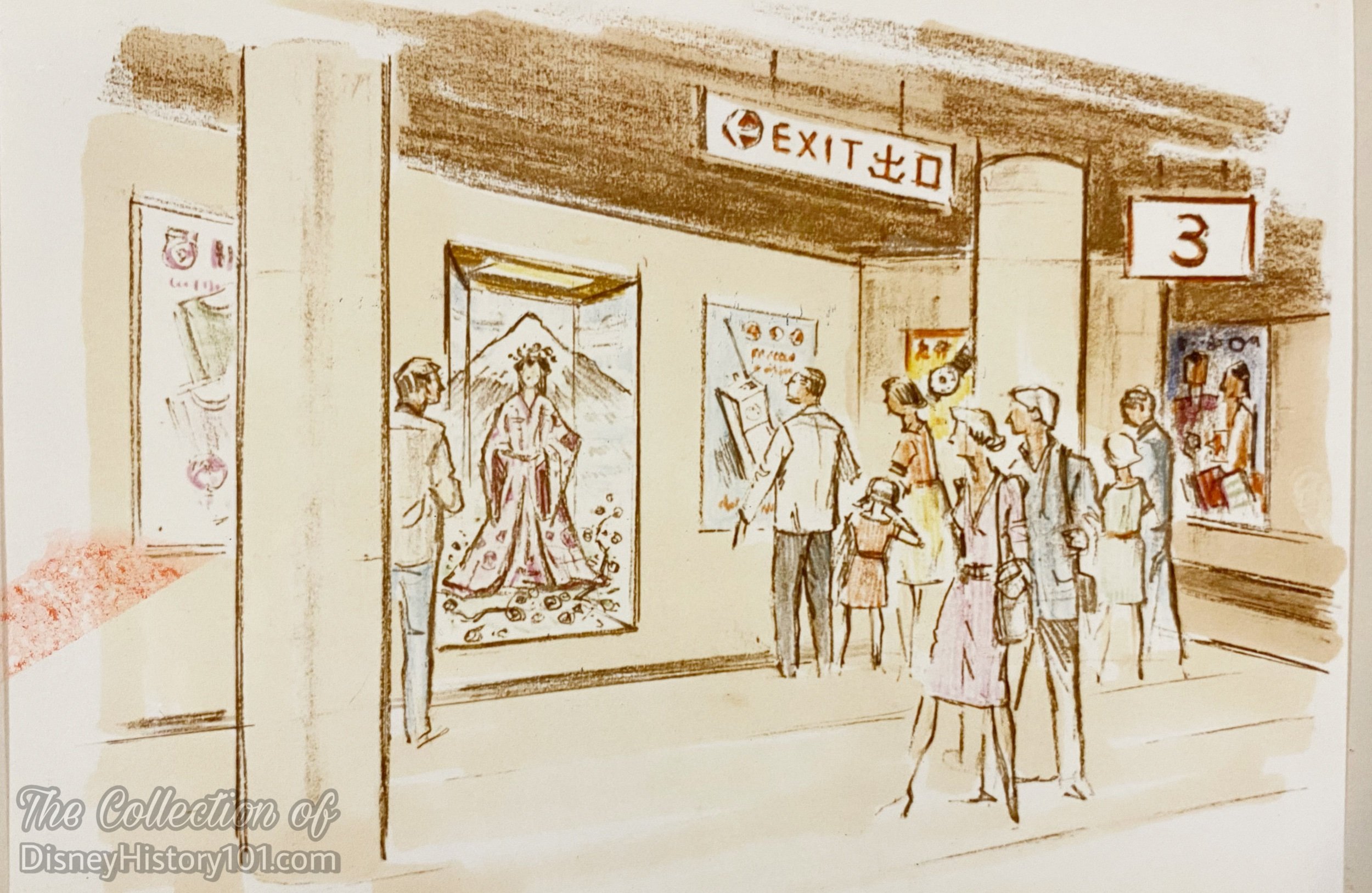
After the story was conveyed, the tools of estimating and scheduling begin to assist in defining the projects total scope. It is unclear whether the concept was disapproved or the approved concept was thoroughly evaluated and deemed to costly, risky, and overall technically unfeasible. At some point, this concept was no longer explored, defined or tested for potential story elements.
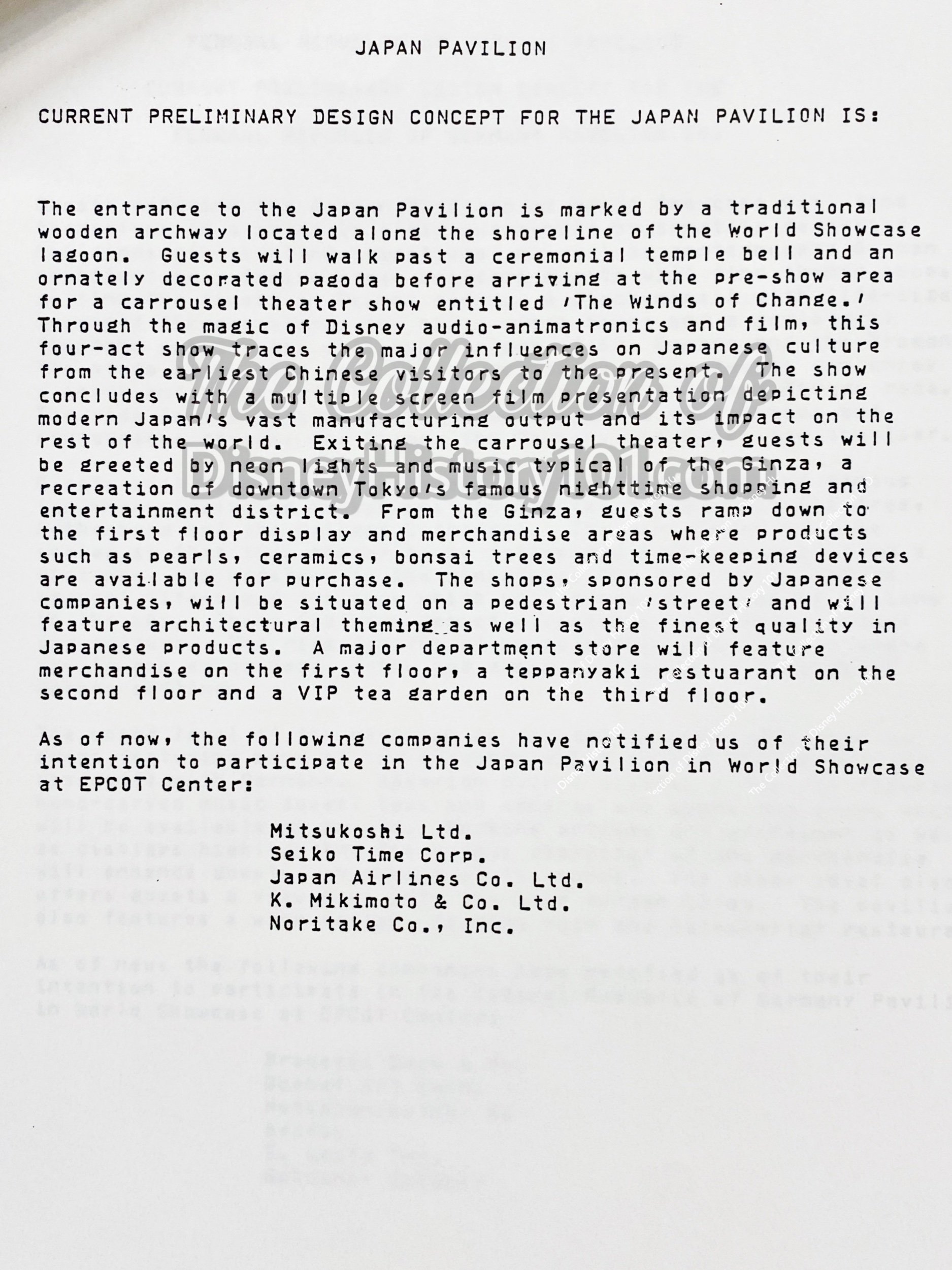
By the time the preceding document was prepared, several companies notified developers of their intention to participate in the Japan Pavilion in World Showcase at EPCOT Center, including Mitsukoshi Ltd., Seiko Time Corp., Japan Airlines Co. Ltd., K. Mikimoto & Co. Ltd., and Noritake Co., Inc.
Notably, a motion picture experience was also in the “preliminary design” stage. “Guests will walk past a ceremonial temple bell and an ornately decorated pagoda before arriving at the pre-show area for a carrousel theater show entitled The Winds of Change. Through the mage of Disney audio-animatronics and film, this four-act show traces the major influences on Japanese culture from the earliest Chinese visitors to the present. The show concludes with a multiple screen film presentation depicting modern Japan's vast manufacturing output and its impact on the rest of the world.”
This show was further developed and by October 5, 1982, Walt Disney World EPCOT Center News Brief divulged: “In keeping with Walt's vision of a ‘community of tomorrow that will never be completed,’ Epcot Center's continued growth also will include additions to existing attractions. Additional shows and ride attractions are also being planned for several World Showcase countries; including Germany, the United Kingdom, Italy and Japan. Japan's added attraction, ‘Meet the World,’ is a carousel theater presentation featuring ‘Audio-Animatronics’ characters in settings that depict the nation's history and spirit. The presentation, in which the audience seating area will revolve around the stage, premieres at Epcot Center in October 1983. The show will be similar to a Tokyo Disneyland presentation opening in the spring of 1983.”
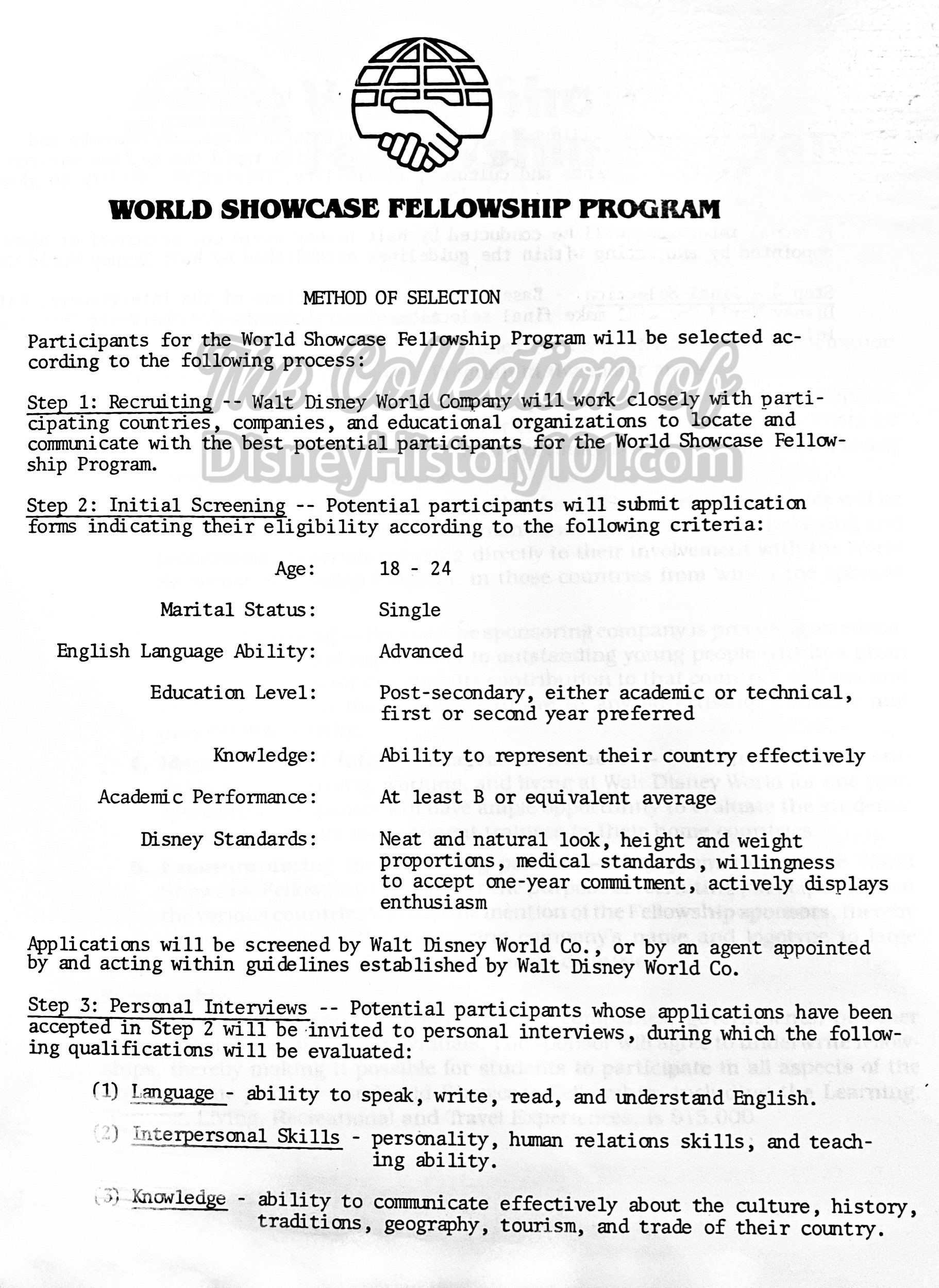
In 1978, Card Walker (at the World Congress of the International Chamber of Commerce) announced: “The World Showcase will be a community of nations, the only permanent international exposition of its kind anywhere, focusing on the culture, traditions, tourism and accomplishments of people around the world… a model for true people-to-people exchange, the World Showcase will offer participating nations an opportunity to send their outstanding young adults to operate the attractions, shops, restaurants and exhibits of their pavilions. And these young people who will work, play and learn together for a period of up to one year will help to generate greater international understanding.” The Epcot World Showcase would truly be “a showcase of the world…and a showcase to the world.” Here ”the nations of the world will stand side by side…” and “meet on a coequal basis to communicate on a ‘people to people’ exchange with the more than 12 million visitors.”
According to one Pre-Opening Day c.1982 orientation instructor’s guide : “The familiar faces of the Disney Characters won’t be there.” Instead, EPCOT Center Cast Members would be referred to as ambassadors of “the spirit of EPCOT Center,” since that very namesake orientation class. Without them, EPCOT Center would just be one magnificent stage. This ambassadorial Cast (in understanding the Epcot dream) would become “the link between the shows and the guest.” According to a souvenir guide, the EPCOT Center Hosts and Hostesses were ambassadors “of happiness, hope, optimism and goodwill.” According to one prospectus: “In this true people-to-people concept, sponsoring nations will be invited to send their outstanding young adults to operate the attractions, shops, restaurants and exhibits of their pavilion.” Proving this were the Odori Festival of Japan and authentic Japanese Candy Man, who created “herons and unicorns from his treasure trove of rice toffee,” and helped open the World Showcase on October 1, 1982. Through the World Showcase Festival Program, Epcot Center guests were entertained by performers from all over the world. These “cultural ambassadors” included entertainers representing Greece, Africa, Cambodia, the Dominican Republic, Yugoslavia, Israel and Norway.
The international guests would soon find that the Japan World Showcase Cast Members were knowledgeable and prepared to answer questions about the pavilion and the country itself, and would even provide foreign language assistance, and guest literature in many languages. As early as June of 1980, it was divulged: “Young people will be brought over from their native country on a combination work and education program. Courses with college credit will be conducted at Walt Disney World University.” [“Orlando-Land!” published for June of 1980]

“Dedication”
Walt Disney said: “Everything in EPCOT will be dedicated to the people who live here and work here... and to those who come here from around the world to visit our living showcase.” On October 20, 1982, individual dedication ceremonies for the month of October drew to a close with a small ceremony in Japan.
“Odori Festival of Japan Comes to the International Festival of Festivals”
Epcot Center World Showcase Festival Program Reception celebrated a unique Community of Nations on Saturday, October 23, 1982. The grand finale the evening's festivities, Le Carna-val de Lumière proudly proclaimed the Official Opening with the presentation of the world premiere of its International Festival of Festivals, a celebration of celebrations. Epcot Center's nighttime extravaganza of illuminations, water, sound, and fire was viewed from Showcase Plaza. This show, was to be an ongoing feature of World Showcase, using the new medium of computerized “magic-lantern” illumination to transport audiences to other times and cultures, inviting their imagination to engage in moments of festivity around the world.
Every society rejoices in what it feels most deeply about, inventing vivid rituals to celebrate important events in the cycle of life. Throughout the ages, the family of man has marked these joyous occasions with impressive public feasts and fêtes, dancing and music, parades and processions, pageants and exhibitions, spectacles and fireworks. These celebrations march from the past, through our lives today, and into the heritage of future generations. Through kaleidoscopic tapestries of light and sound, Le Carnaval de Lumière took audiences across the entire world and through twenty centuries to experience the rich diversity - and the commonality - of human celebration.
The roster of international entertainers is still impressive. The following groups were featured: All-American College Marching Band, West Point Glee Club, the Royal Irish Rangers (the last Irish infantry regiment in the British Army), Koleda (a highly professional group of dancers and musicians from Valenje, Yugoslavia), the Folkloric Dancers of Madrid (Spain), the Folklore Group Fribourg (Switzerland), Leyte Kalipayan Dance Company (Philippines), Areyto (The National Folkloric Ballet of Puerto Rico), Kelaa M'Gouna and Imintanout Folk Dancers and Musicians (Morocco), Ballet Folklórico Nacional de Mexico, The Boys Band of Meersburg (Germany), National Korean Folk Dance Company, Historic Standard Bearers of the District of Cori (Italy), "Lous Pastous Seignossais" Folk Ensemble (France), Finnish Folk Dance and Music Ensemble, "Katrilli" (Finland), Tivoli Boys Guard Band (Denmark), The National Folklore Troupe of Egypt, Universidad del Valle Folk Dance Group (Columbia), Lucnica (Czechoslovakia), The Shanghai City Song and Dance Ensemble (China), the Royal Canadian Mounted Police Musical Ride, The Royal Barbados Police Band, The Hunting Horns of Hoffalize and The Hunting Horns of St. Hubert (Belgium), COSAAN African Dance Company, and Odori Festival of Japan.
The 1982 program described Odori Festival of Japan as “one of the Orient's most dynamic dance exports, the Odori Festival of Japan presents a diversified repertory of ancient peasant and religious dances gleaned from the many regions of Japan. One of the most evident characteristics of Japanese folk dancing is its very complicated yet highly refined technique, which elevates this entertainment to a high art form. Along with the graceful temple dances and dances that celebrate the planting of rice, there are the haunting ‘Devil Sword Dance,’ the ‘Wild Horse Dance,’ and the ‘Bo Odori,’ a martial arts dance, among many others. The indigenous costumes and exotic instruments create an aura as colorful as the history of Japan. The group is presented under the auspices of Tokyo's International Artists Center and was organized in 1966 to ‘establish artistic contact with all countries and try to foster cultural exchange beyond ideologies.’”
The grand finale of Sunday's Grand Opening Dedication Ceremony will be a 1 1/2 minute fireworks spectacular -- “The Colors of the World” immediately followed by a flyover salute by the Florida Air National Guard.
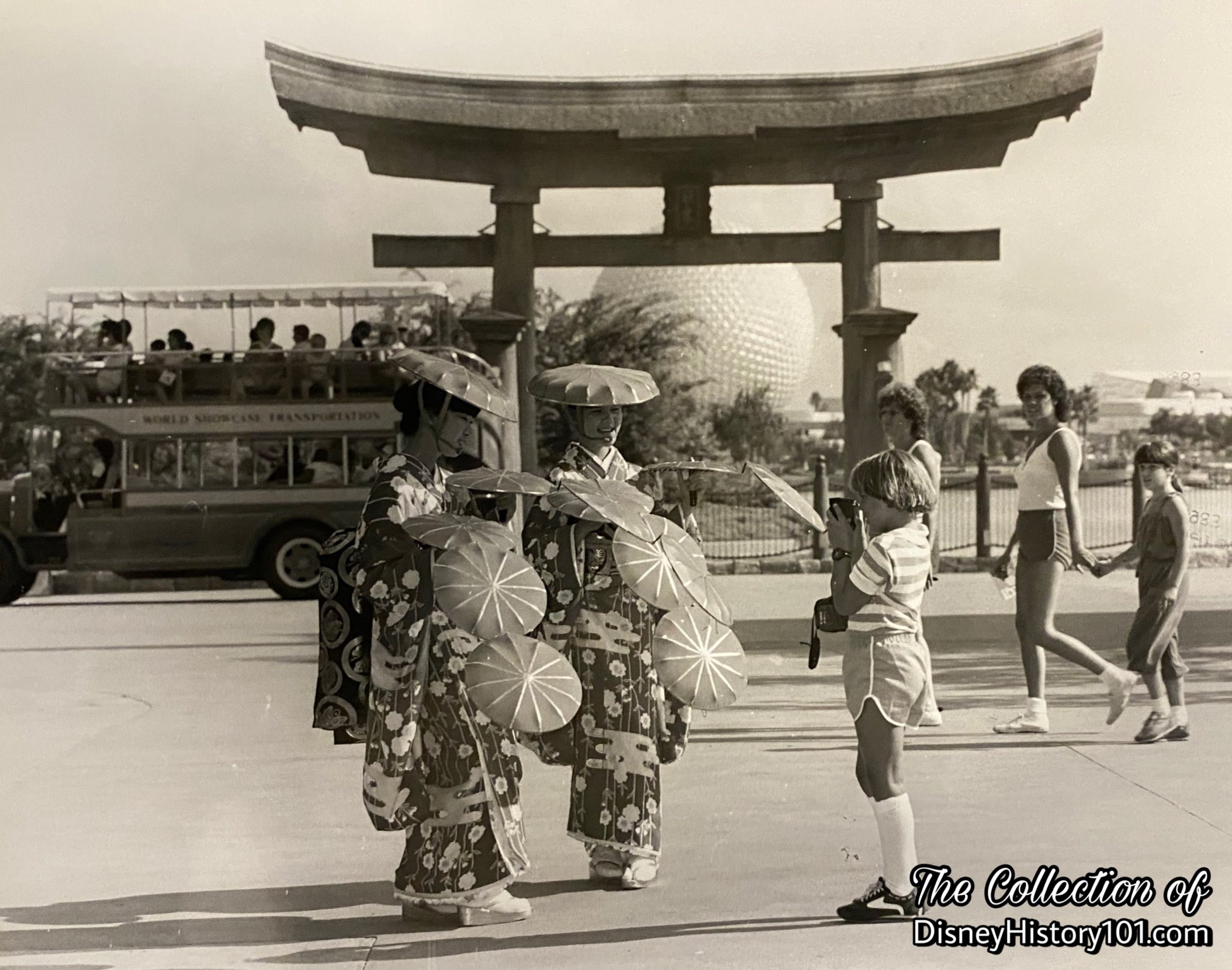

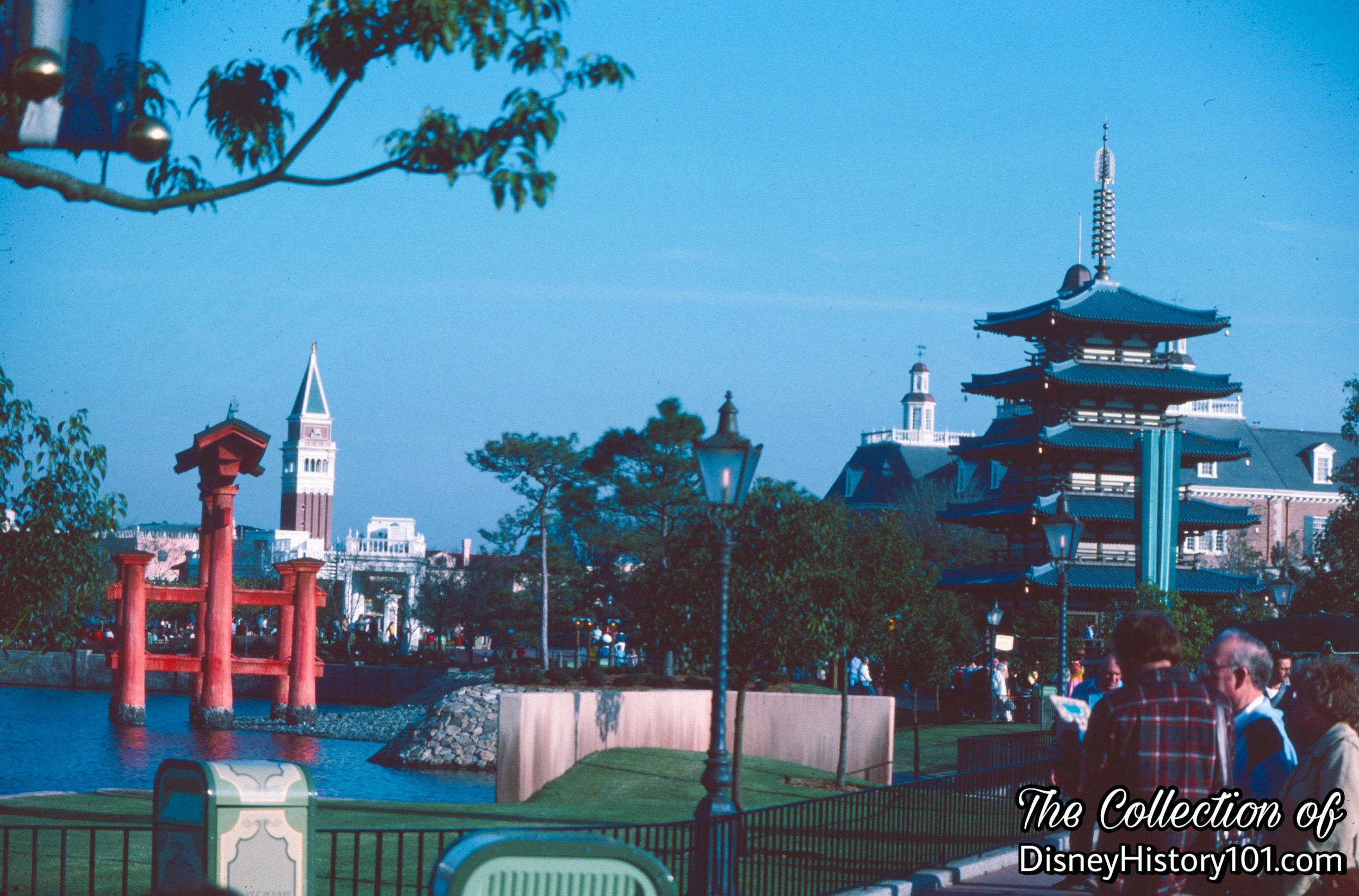
Coming toward Japan on the World Showcase Lagoon, we pass a flaming red Tori. “Resembling a giant calligraphic character, the Torii (or "Gate of Honor") is a popular good luck symbol, wishing us well as we begin our Japan experience.”
According to one “Walt Disney World Epcot Center - Japan” prospectus prepared by Walt Disney Productions, c.1982: “Lanterns, which we may take for granted as simple ornaments, also have special significance, determined by their size and design. The ones here, like the giant Torii in the lagoon, mean ‘good luck.’”

Pagodas are religious shrines and memorial buildings, common throughout Burma, China, India, Thailand and Japan. Other parks and gardens like Tivoli Gardens included pagoda attractions. What sets the Goju No To apart from others? The 83-foot-tall pagoda has a sorin with nine rings and a water flame clearly outlined at its tip. This Treasure (surrounded by “formal bonsai gardens carved with paths, a meandering stream and waterfall”), is modeled after the famous eighth century Horyuji Temple in Nara, Japan.
According to one “Walt Disney World Epcot Center - Japan” prospectus prepared by Walt Disney Productions, c.1982: “On the shore beyond the Torii stands the majestic Goju No To, a five story pagoda, nearly 83 feet tall. Each of the five stories of this graceful structure represents one of the elements which, according to Buddhist teachings, produced everything in the universe. The first level represents the earth, the second water, the third fire, the fourth wind, and, finally, the sky. If we listen as the breeze blows, we’ll hear the wind chimes from the sorin, the spire reaching from the roof.”
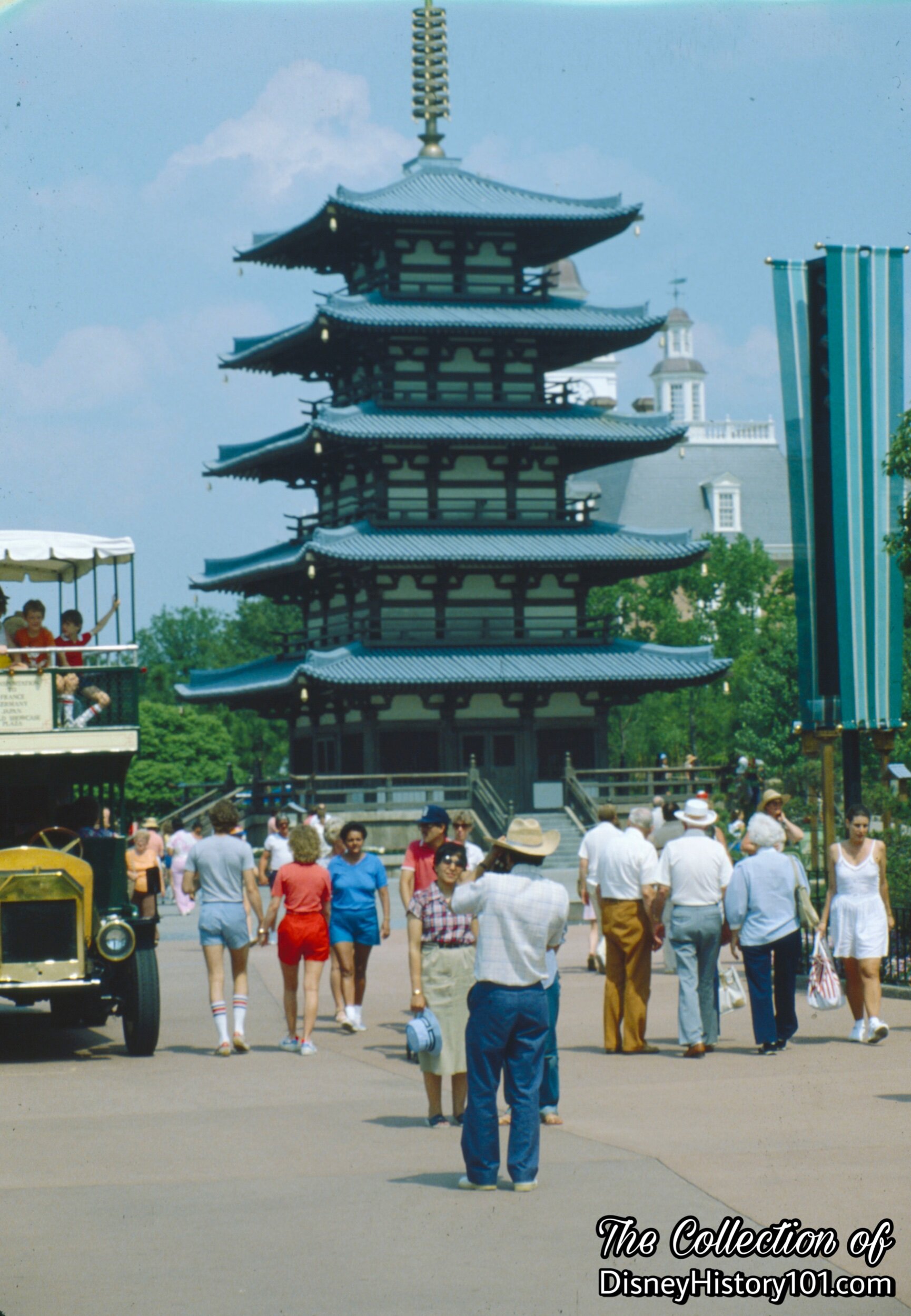
Nearby, the Kodak Photo Spot indicated a prime photo-taking location.
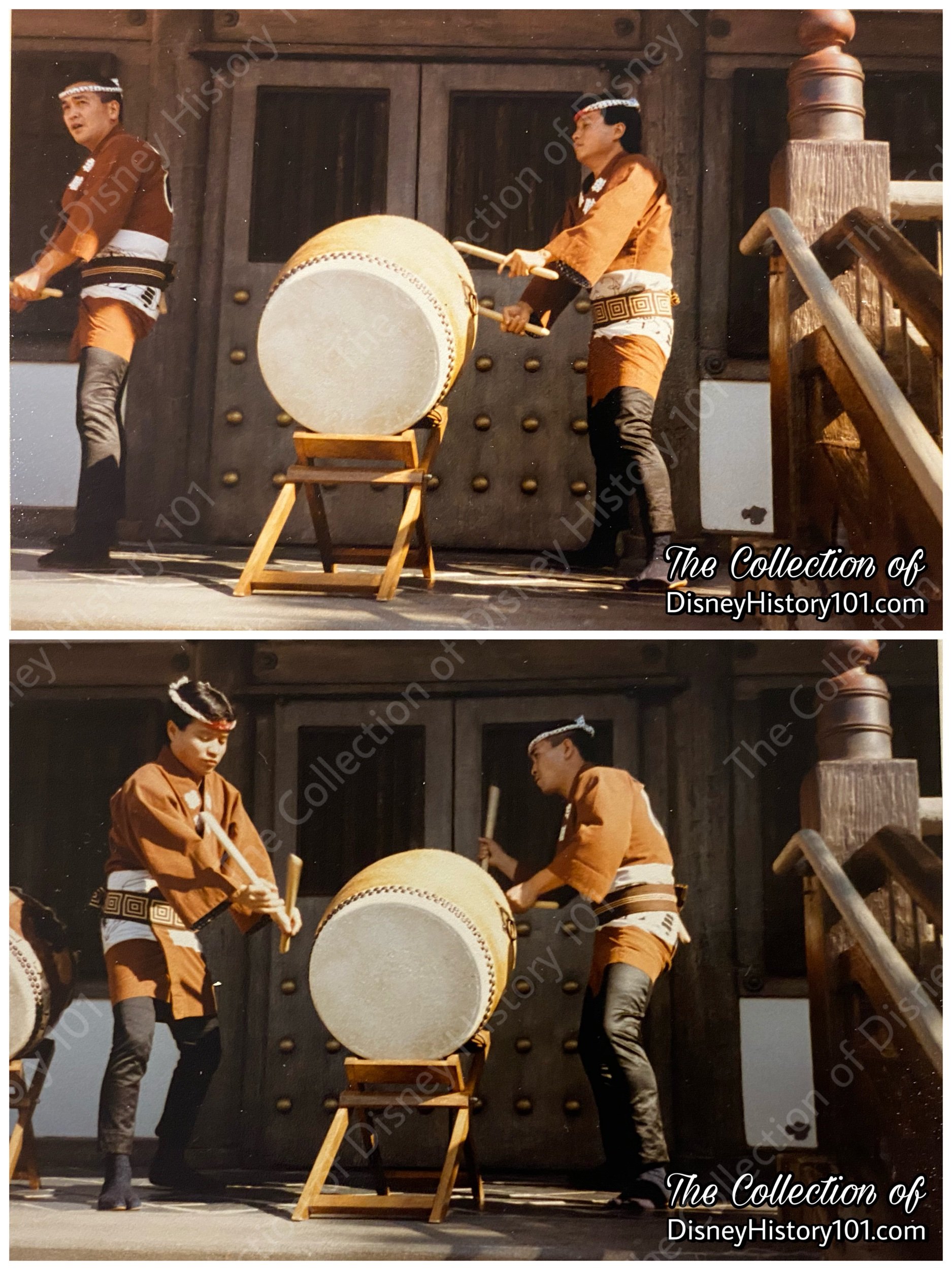
Since 1983, a number of groups performed taiko including Kanto Abare Daiko (1983-1993). Then there the Staccato rhythms of traditional Japanese music from One World Taiko (1993) featuring Gary Tsujimoto, Nancy Ozaki, and Matsuriza. In the present, Matsuriza are the sole taiko storytellers remaining to perform.
In addition to taiko, there were other performers. During 1988, Fantasy Dreammaker (a Japanese artist creates surprising entertainment) and Yume Shabai performed in Japan.
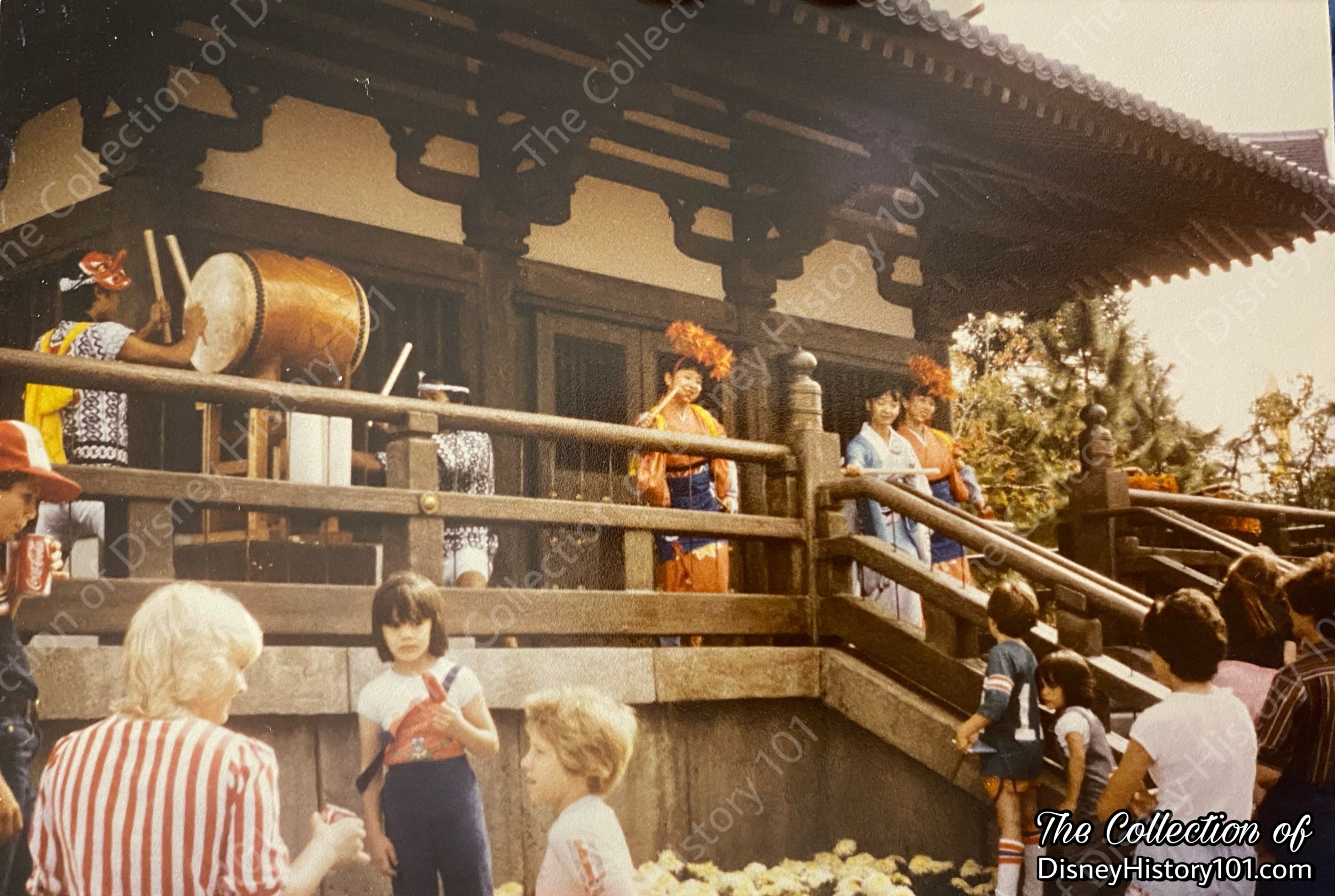

“Japanese Garden”
“Heading clockwise away from the pagoda, we begin a leisurely stroll through a typically tranquil Japanese garden. Landscaping is an art form in Japan, with rocks plants, and water as the essential mediums. The path is defined by bamboo screen fences, lined with ‘cloud pruned’ evergreens, willow trees, and flowering shrubs. We will pause at the ‘view perfecting pine’ to admire the way it frames the view of the waterfall which graces this garden. We linger at the water's edge, captivated by the koi, colorful fish known for their longevity and brilliant colors. Around each corner is a lovely sight, either an engaging rock composition or a splendid view of the waterfall.”
The area utilized two separate types of lighting: Character lighting, and Functional Lighting. Character lighting such as a chandelier, or kerosene lamp, was themed to enhance the overall appearance and complement the interior. These added to the show, but didn’t necessarily create enough illumination for operation. Functional lighting on the other hand, offered substantial light without being obvious, or distracting from the show.
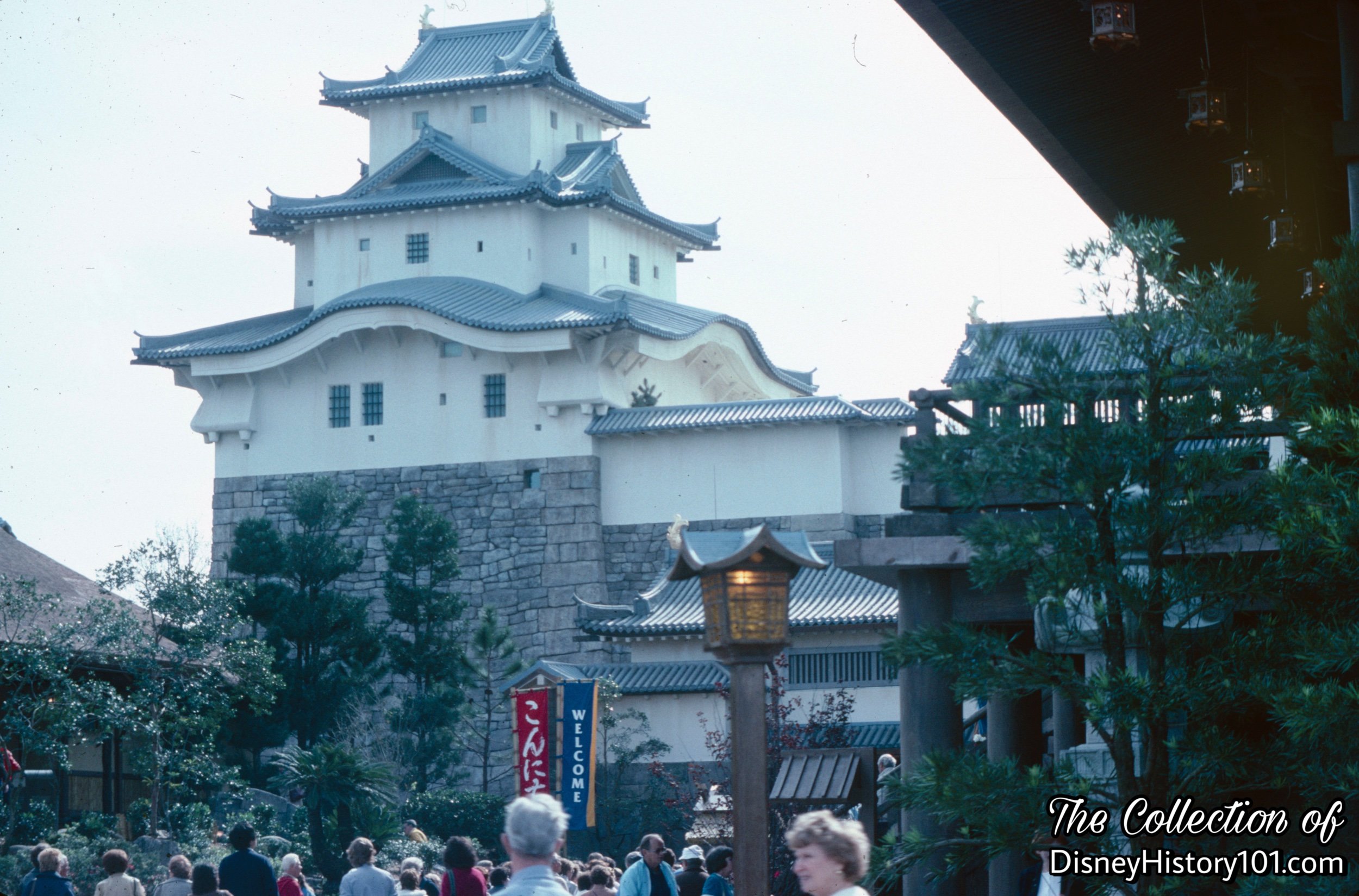
“Mitsukoshi Department Store”
The largest department store in Japan operates the largest merchandise location in World Showcase -Mitsukoshi, the same company with stores in New York, Honolulu, and around the world. Typically, a Mitsukoshi store in Japan features a wide variety of products from groceries to clothing. Various counters in the store are rented or leased out to outside vendors to sell their wares, but it's still all part of Mitsukoshi.
As with the Participant Sponsors of other World Showcase Pavilions, Mitsukoshi was an Operational Participant of the Japan Pavilion, meaning they staff and buy for their shop. At Epcot Center, only traditional Japanese merchandise was available, including clothing, crafts, and silks, each one was a local product of Japan. Here, Mitsukoshi Department Store stocked dolls, fine porcelain, kimonos and Japanese handicrafts. There were antique toys, jewelry, perfume, stationery and food items. And for the Japanese guest, they may note that merchandise is wrapped in a traditional fine, expensive silk paper, which was designed 300 years ago and is what the Japanese have come to expect. Souvenirs of Mitsukoshi Department Store were prepared for Omiyage (お土産), that is, gift for others!
Design concepts for the shop itself were characterized by traditional Japanese art and architecture.
While a few Magic Kingdom merchandise locations offered souvenirs from Asiatic lands (e.g. the antiquated Oriental Imports, Ltd. shop in Adventureland which sold gifts from Hong Kong from 1971 to 1987), Mitsukoshi Department Store was truly unique.
This is the only Mitsukoshi Department Store operating in North America since the closure of the New York location.
The Mitsukoshi Kiosk also offered Gifts and mementos.
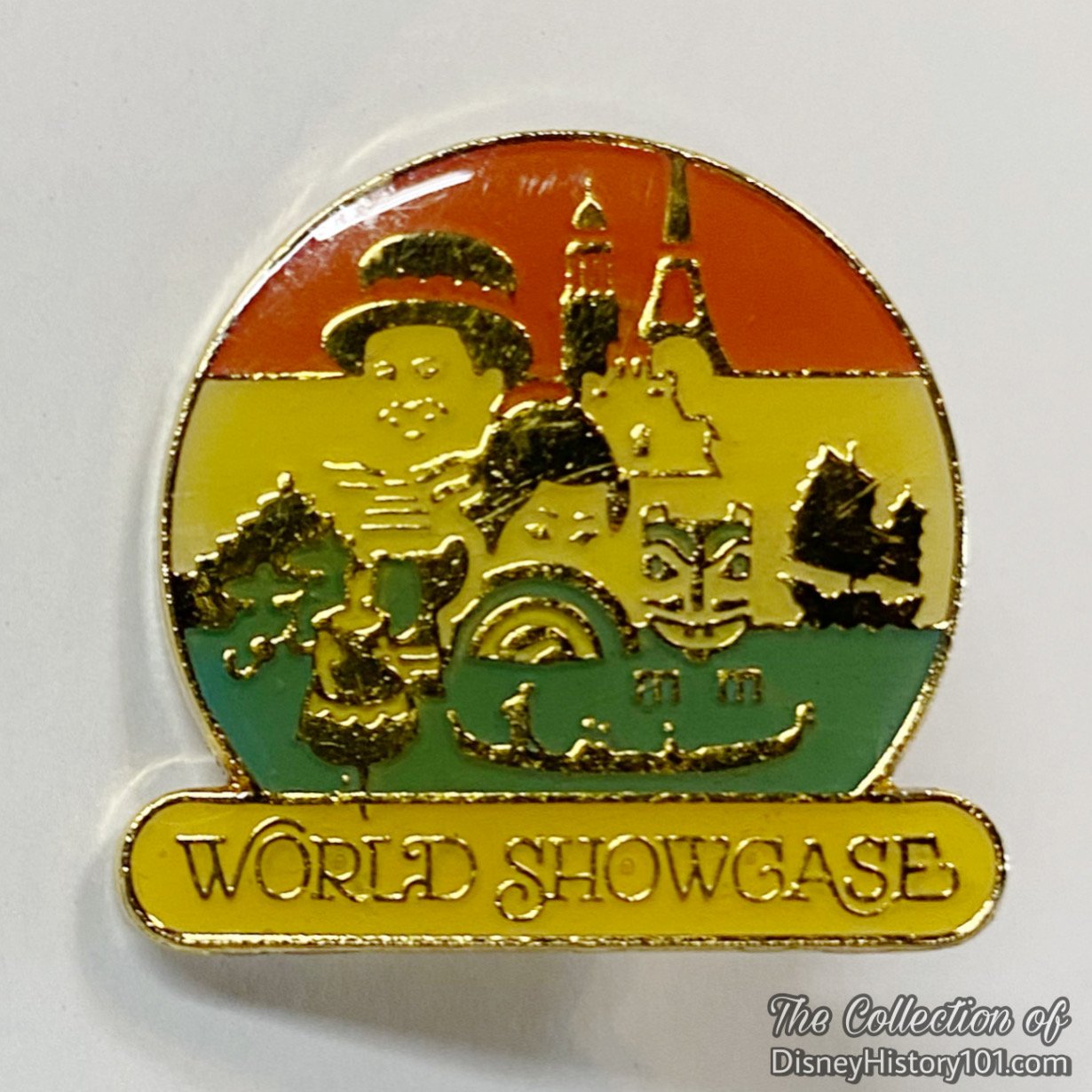
The Disney concept of theming was evident throughout Disneyland and Walt Disney World. Each shop complemented the themed area and the merchandise. This is also carried over to Epcot Center World Showcase where we find souvenir shops that create tangible memories for Guests through Show and traditional merchandise of national origin.
It is notable to mention that during these early years, it was commonplace for merchandise locations to stock General Merchandise - non-character and/or decorative items, including film and sundries. In all, about 30% of merchandise had the Epcot Center logo, while the other 70% was general.
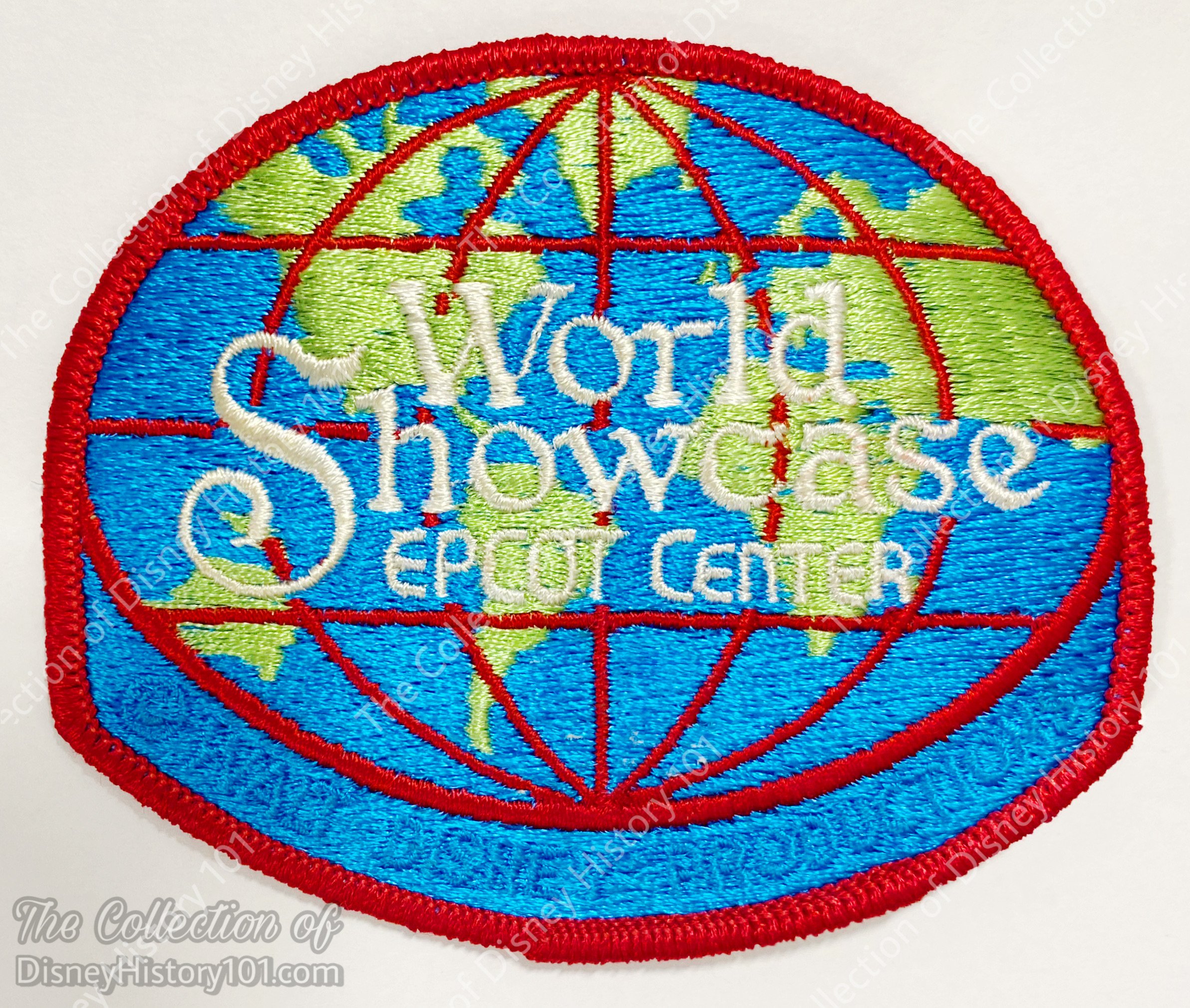
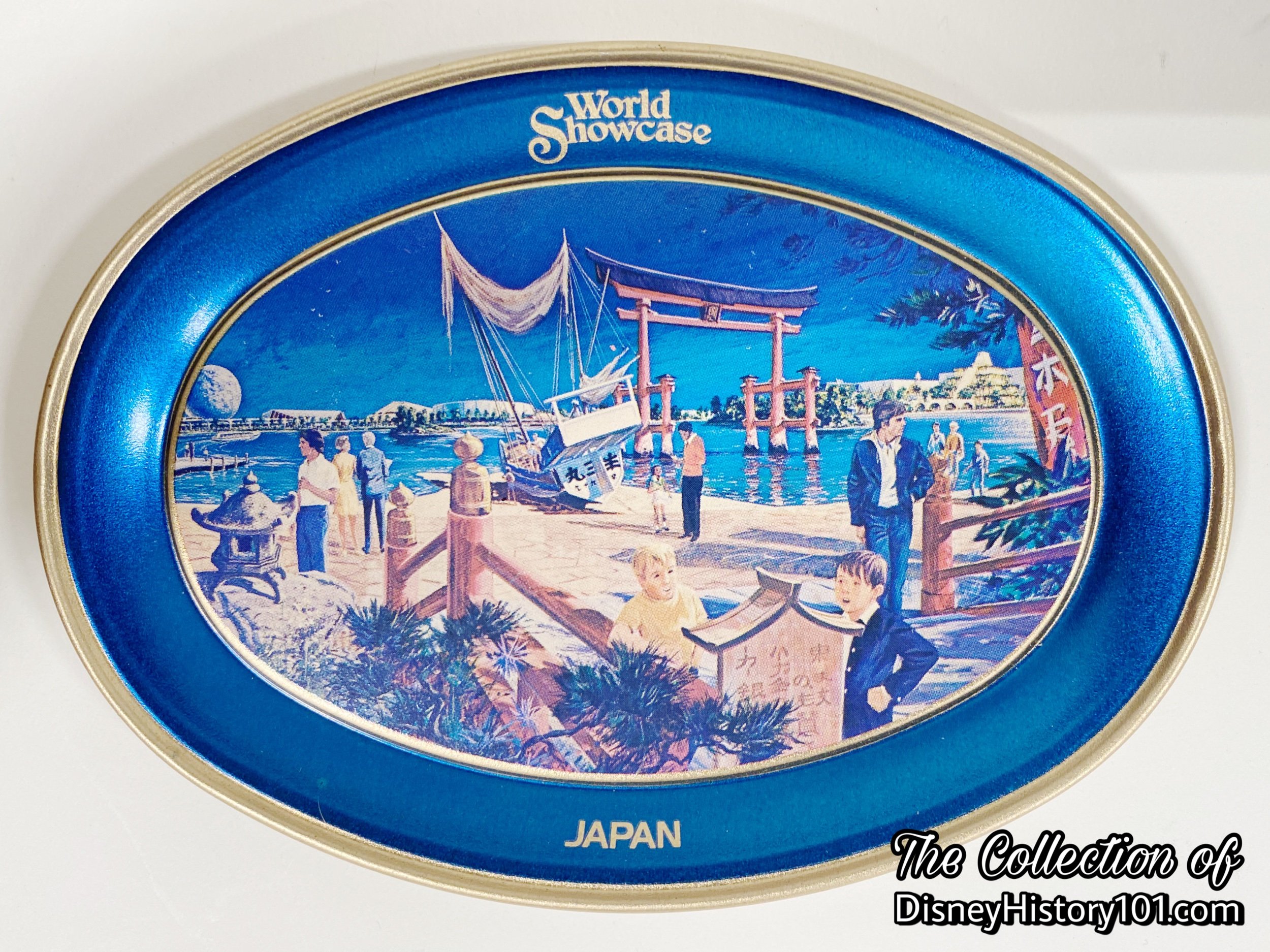

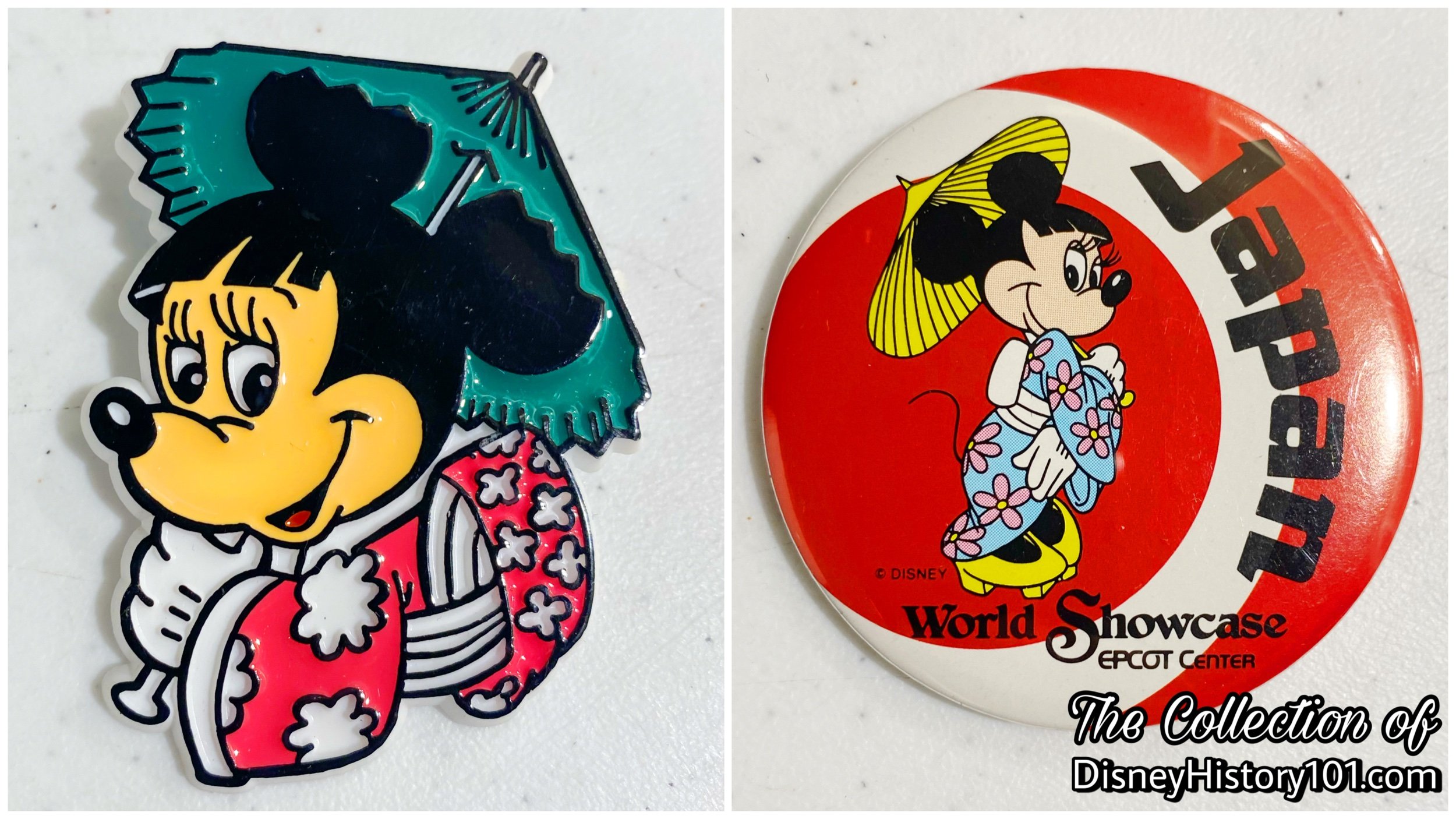
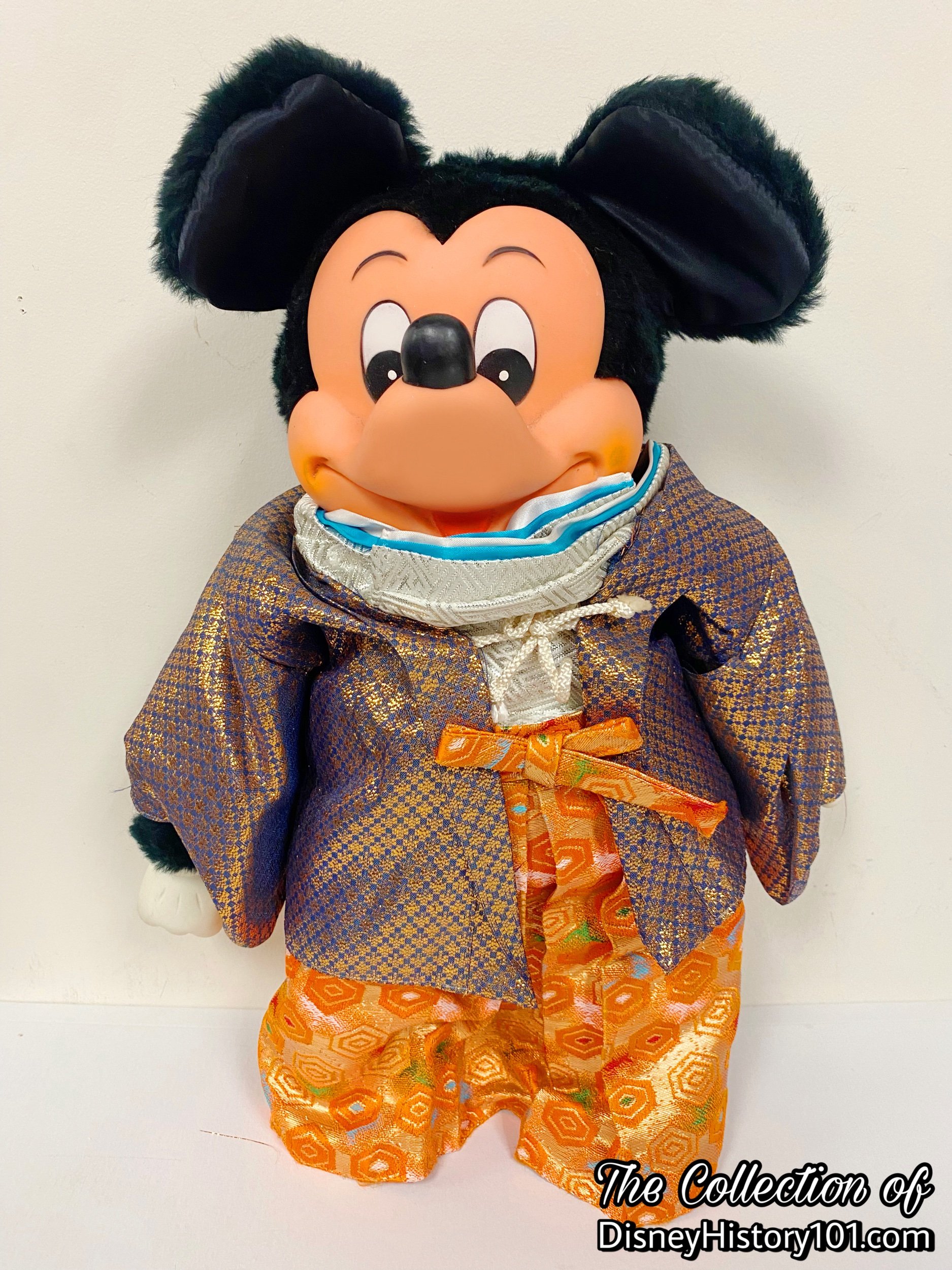

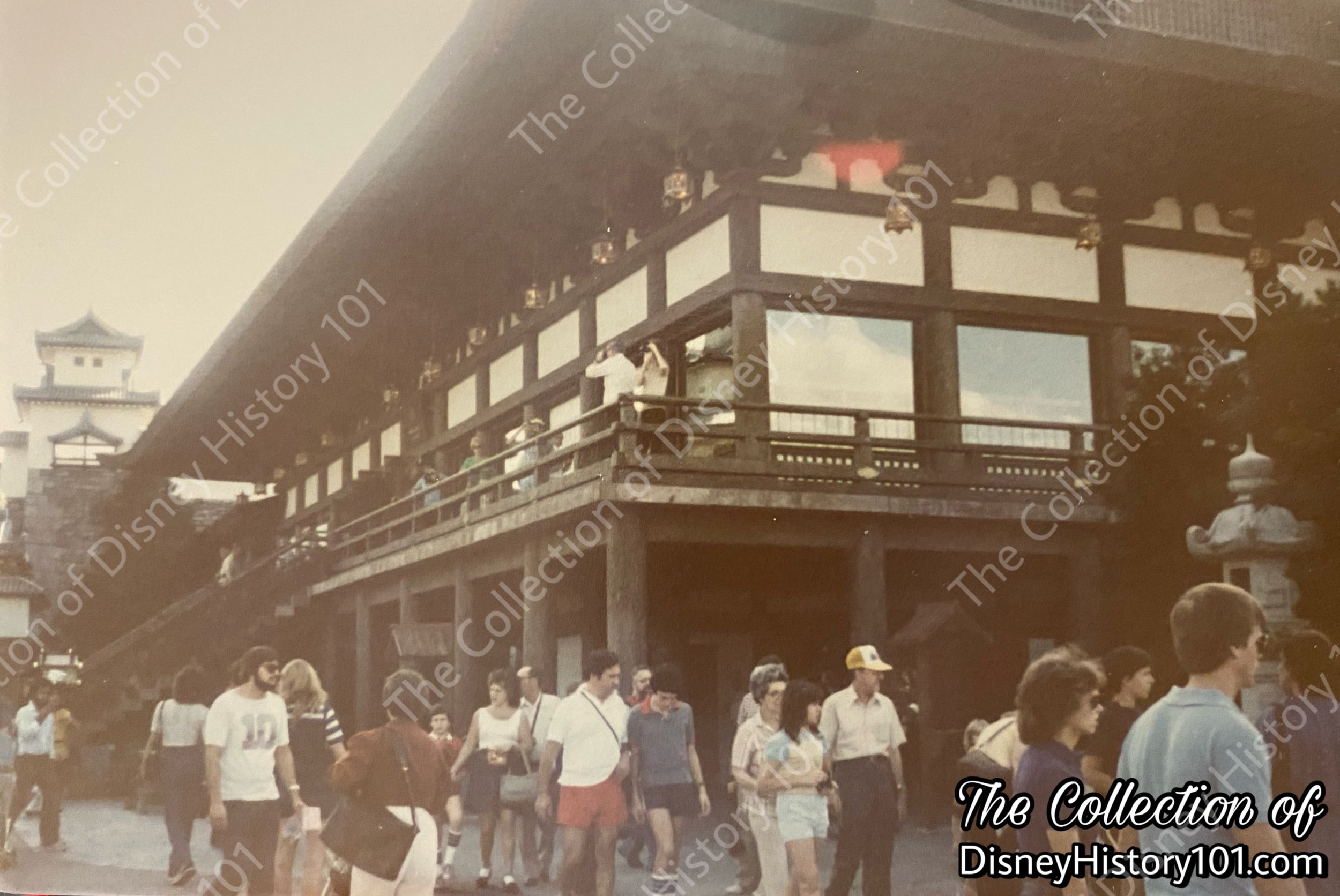
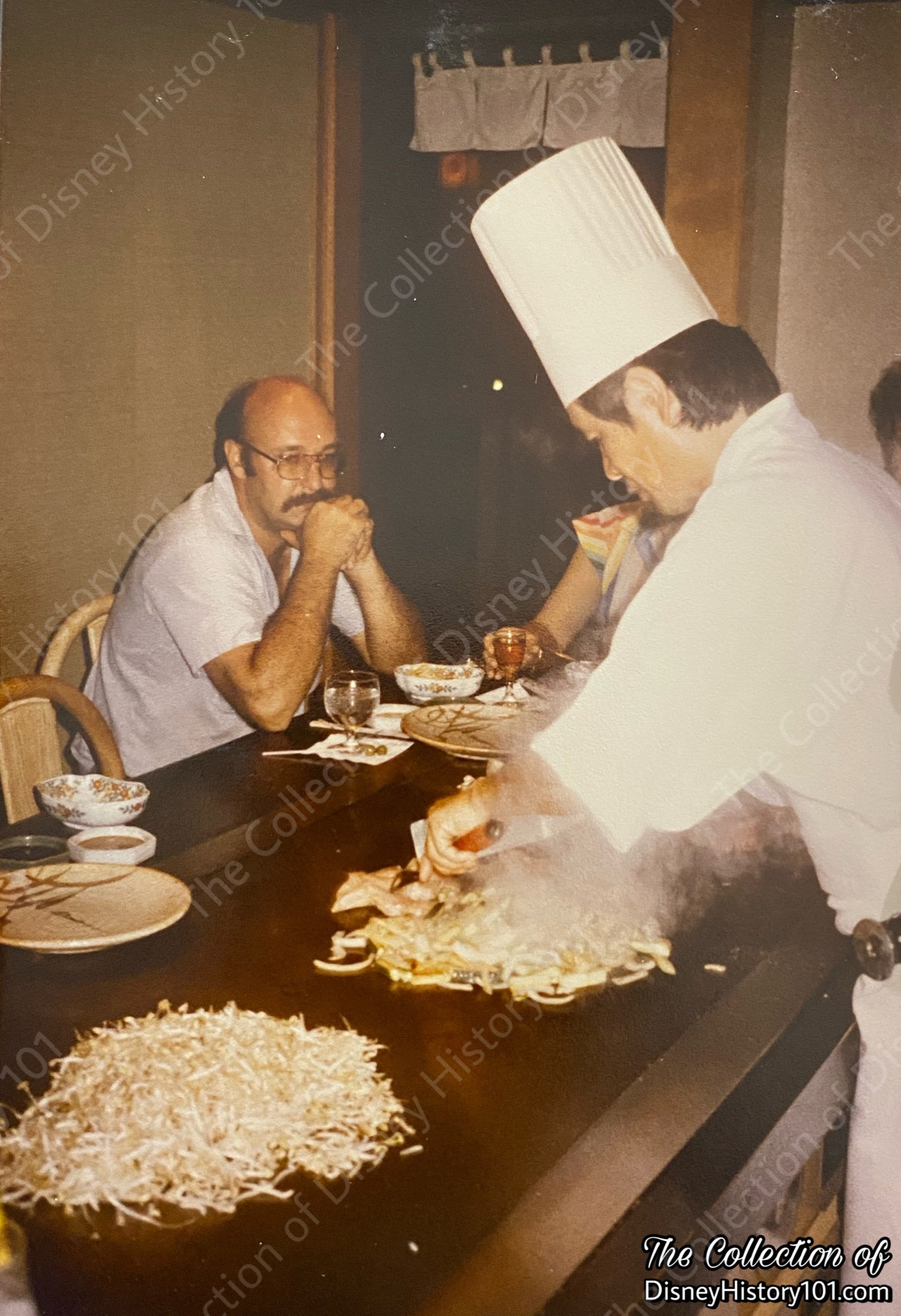
“EPCOT World Showcase Dining”
Epcot Center offered a sampling of delicious cuisine - a wide variety of dining experiences available for guests to savor in an international setting. Beer, wine and spirits were available at all table-service locations. Refreshing ice cream, beverages and snack carts could be found throughout Epcot Center. Four Restaurants were hosted by Mitsukoshi U.S.A., Inc.
“Teppanyaki Dining Rooms”
In Japan's Restaurant Mitsukoshi, Teppanyaki Dining Rooms was a table-service restaurant, open for lunch and dinner. Inside, master chefs created culinary magic in spell-binding tableside presentations for guests at their table. Chefs served grilled teppanyaki meats and seafood, with Kirin beer, Sake and spirits.

“Yakitori House”
Having found our way to the top of the garden, we will be lured into the Yakitori House counter-service restaurant, perhaps by its structural charm, but it's just as likely that the promise of a scrumptious, satisfying snack will tempt us inside, as well. A replica of a renowned 16th century villa in Kyoto, the Yakitori House is a restaurant serving broiled chicken and Japanese-style beef among its authentic Japanese “fast food. The menu features a beef-rice bowl (marinated beef served over boiled rice) and yakitori chicken (Teriyaki chicken marinated in soy and ginger, skewered, then broiled). Sitting outdoors, surrounded by traditional lanterns and umbrellas, we will savor the atmosphere as much as the food.” The yakitori sauce is even carefully crafted of boiled sake and mirin wines.
“Matsu No Ma Lounge”
Mitsukoshi held Matsu No Ma Lounge a counter service restaurant offering Sushi and appetizers alongside exotic drink specialties.
“Tempura Kiku”
By 1984, one of the highlights was the Tempura Kiku table-service restaurant. The location offered batter-fried meats, seafood and vegetables served at a tempura bar). These batter-fried entrees were prepared as guests watched.
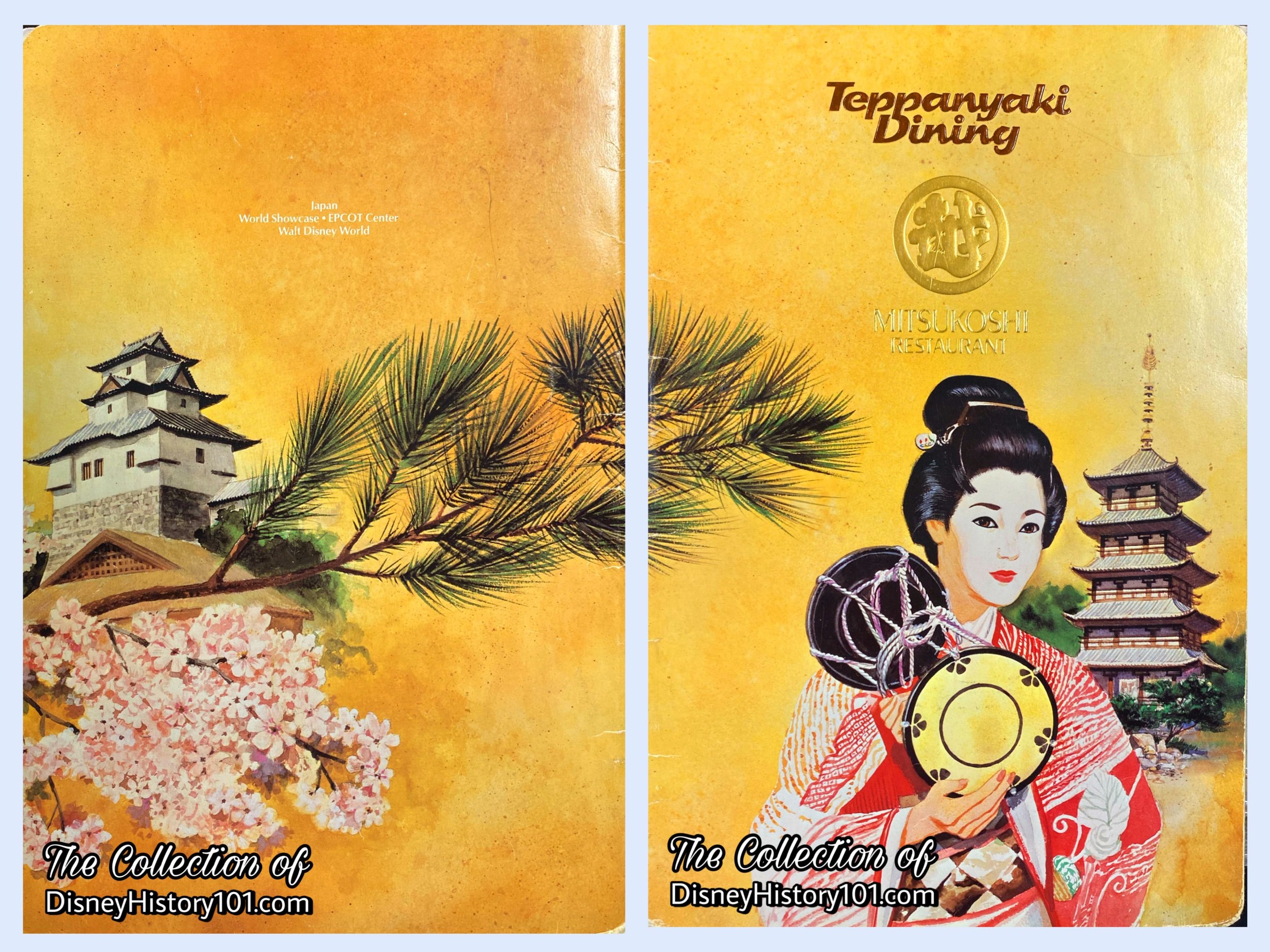
The menu of the Teppanyaki restaurant on the second floor of the Mitsukoshi department store. Teppanyaki Dining Rooms offered grilled meats, seafood, Kirin beer, sake, spirits. You may recall dining at Mitsukoshi Restaurant and enjoying the flavors of the Matsu Beverage, the Ginger Dressing, or Shogun Dinner (Ginger Sauce and Mustard Sauce accompanying the shrimp appetizer or main course of chicken or beef).

“Bijutsu-kan Gallery”
In its first year, the innovative showplace for technologies and human achievement had provided millions of visitors the opportunity to experience some of the world's finest art: an exhibit of pre-Columbian works from Mexico, and priceless sculpture from the tombs of China, and a display of Japanese crafts honoring that country's best living artists and craftsmen.
At Bijutsu-kan Gallery audiences experienced “Echoes Through Time”, an exhibit featuring traditional and contemporary Japanese art forms.
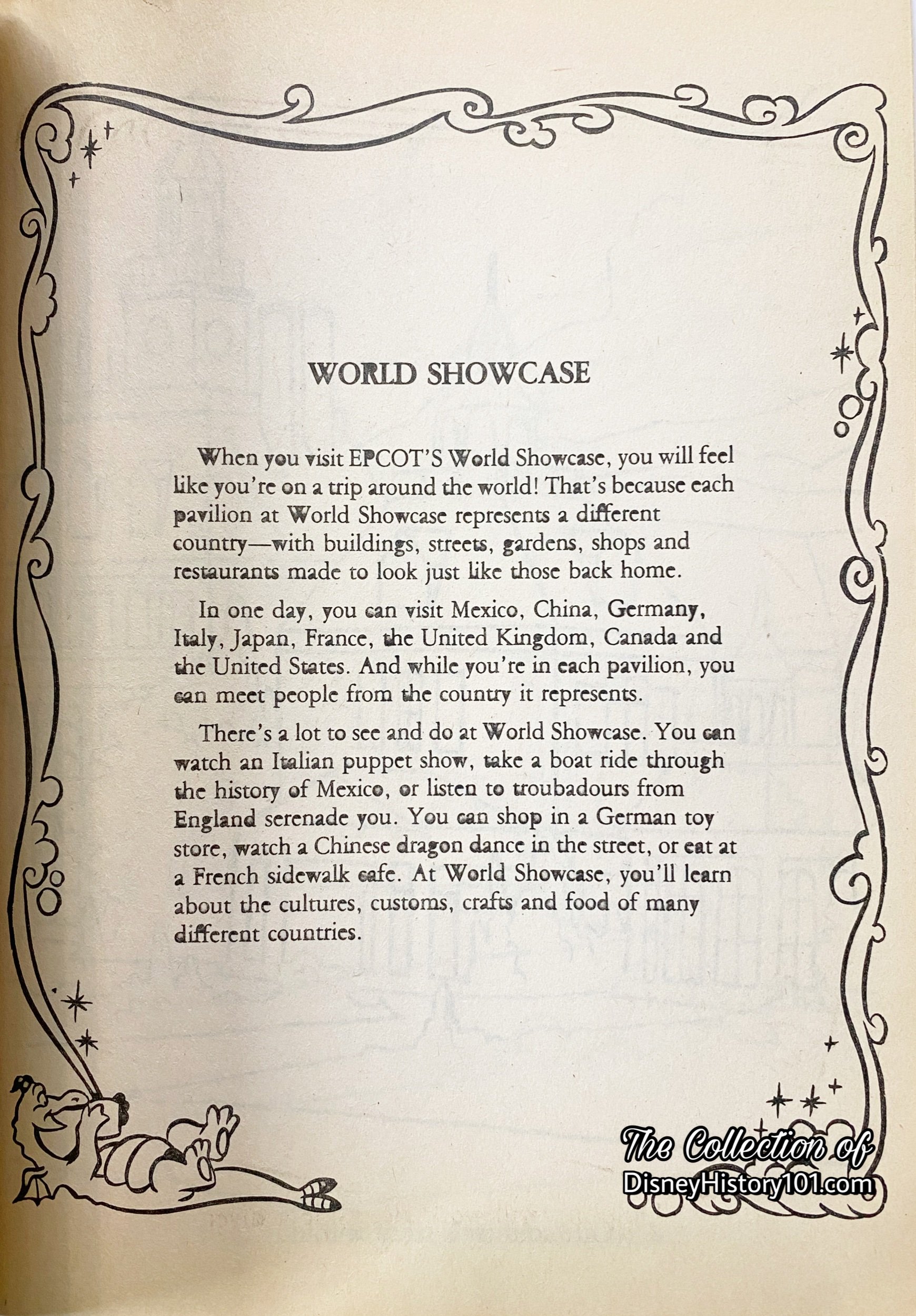
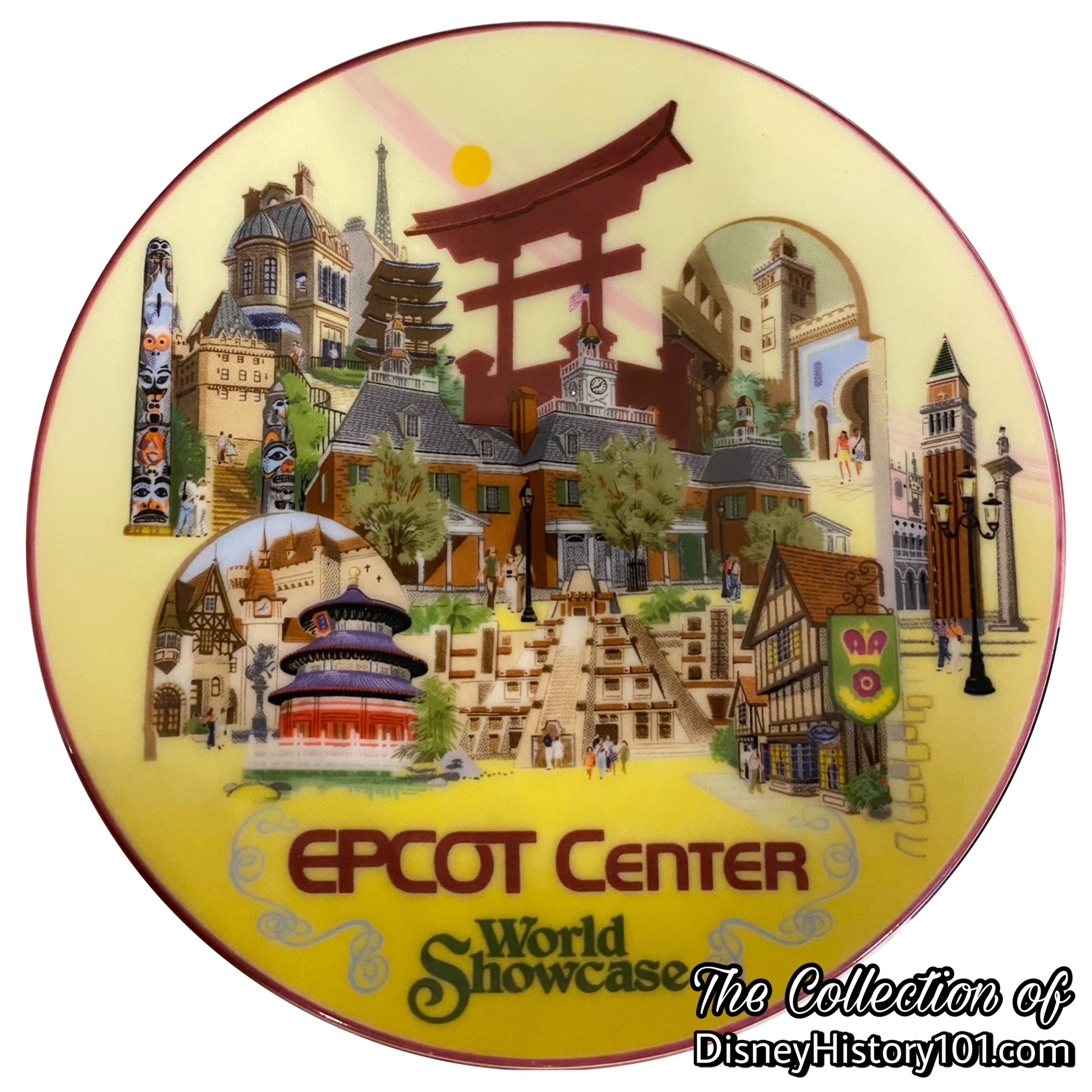
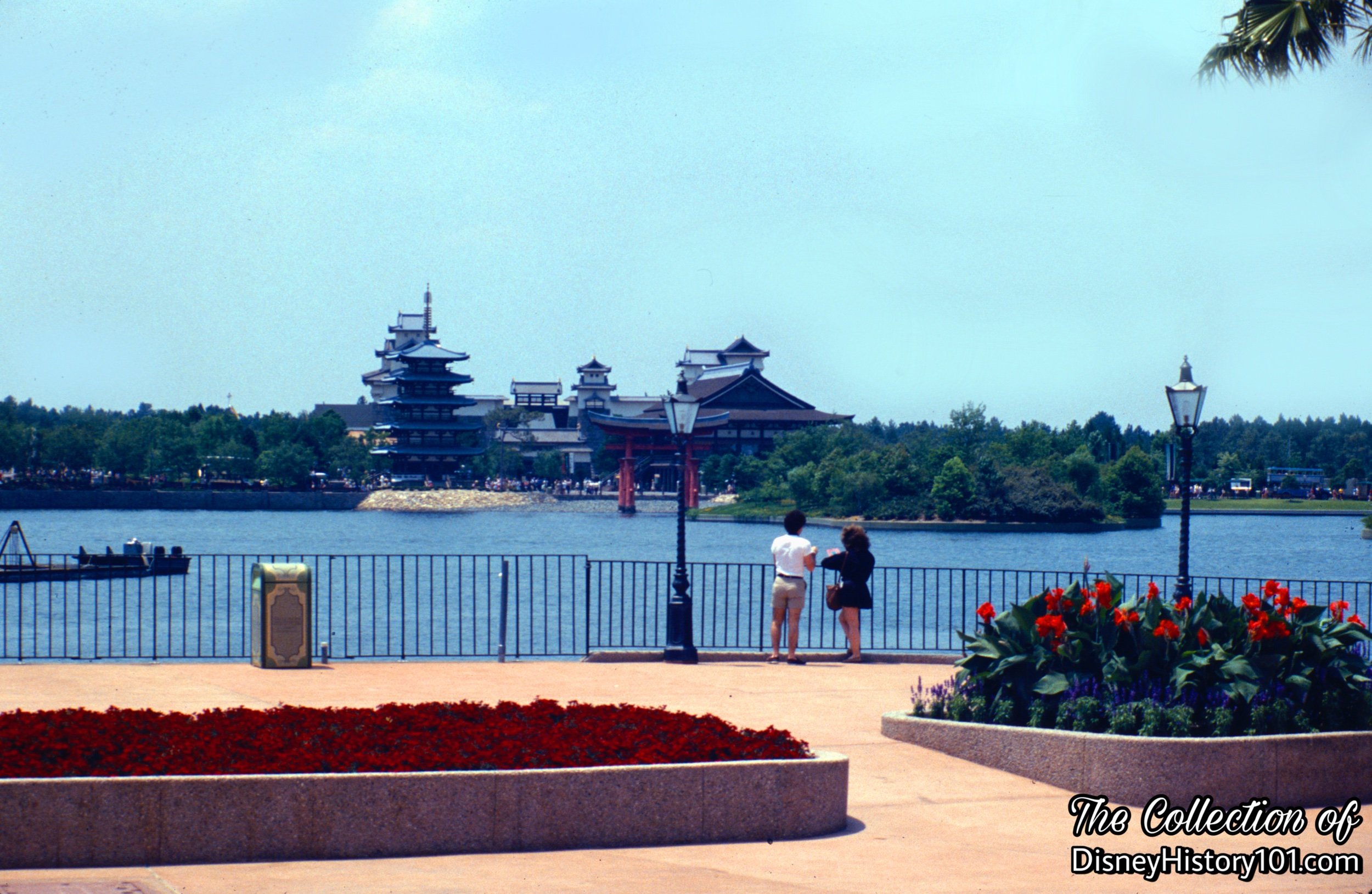
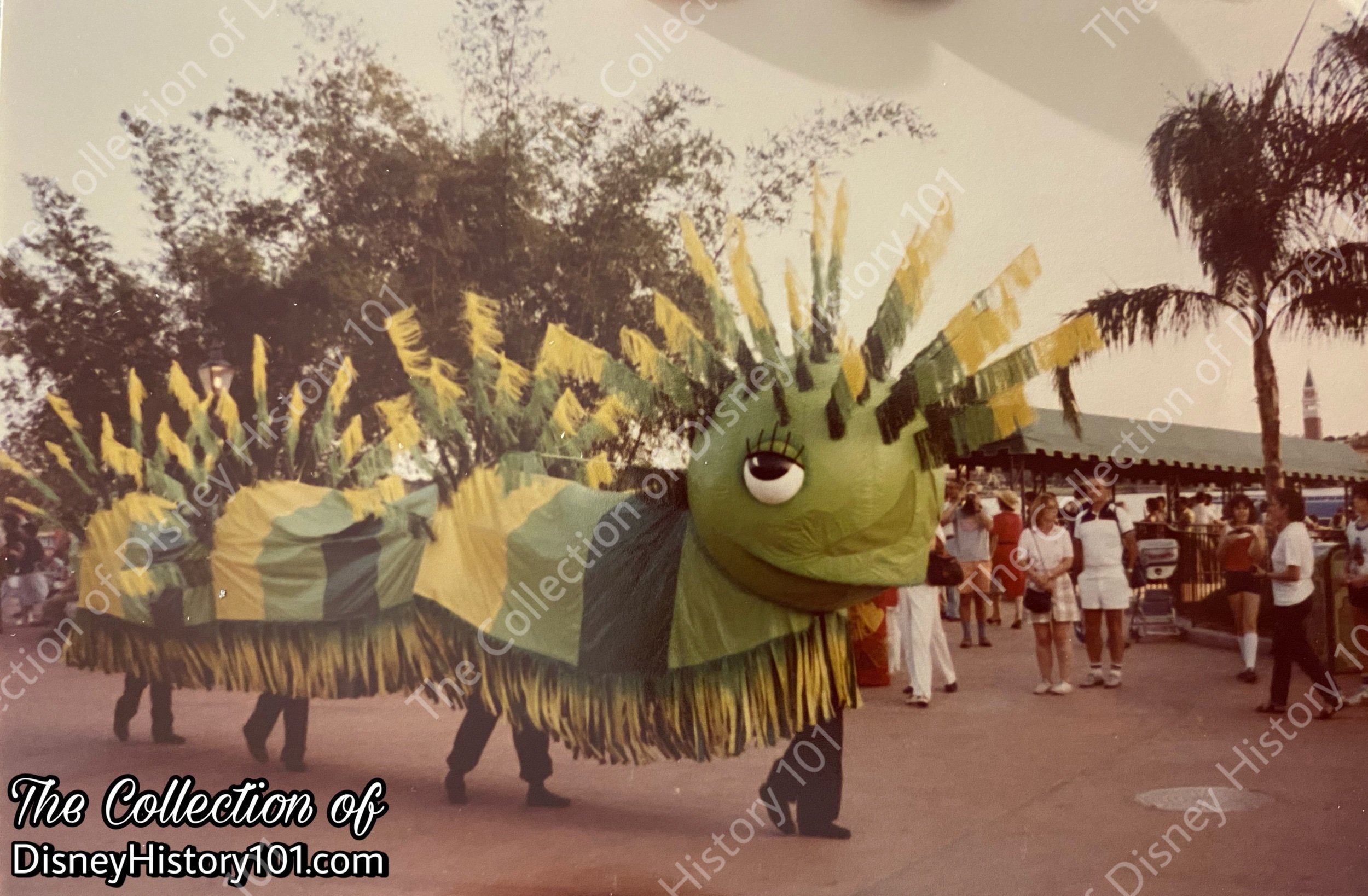
“EPCOT CENTER-Illumi-Nations”
EPCOT CENTER-Illumi-Nations, the most dazzling, high-tech spectacle ever produced by Disney opened January 30, 1981 at Epcot Center. IllumiNations took place every evening just before closing around World Showcase Lagoon. IllumiNations actually transformed World Showcase into a totally new sensory experience as it enveloped 8 international courtyards that surrounded World Showcase Lagoon. The electrifying display blended a lush orchestral score with spotlights, lasers, fountains, fireworks and projected images to create an event of unparalleled visual impact.
25 computer systems synchronized the following to create the special effects that made IllumiNations so electrifying:
13 special effects projectors
6 lasers
11 giant searchlights
12 wire mesh screens (each as big as the side of a warehouse!) on which light-designs are projected
108 dazzling fountains that create the lagoon's dancing waters
783 fireworks rockets—a 4th of July celebration every night!
550 theatrical and 680 strobe lights
5 miles of building-outlining rim lighting
More than 50,000 lightbulbs!
IllumiNations' theme was international travel, and as the show began pictures were drawn in light over the lagoon, setting the stage for the journey that followed. The classical music selections-recorded by the Toronto Symphony Orchestra delighted the ear as much as the fantasy of lights delighted the eyes.
Then, one by one, the nations around World Showcase changed in appearance through the magic of Disney as the musical score changed with them. Some buildings even appeared to undergo architectural transformations before the audience’s eyes.
The Canadian chateau became a stand of giant fir trees. Germany's Bavarian castle turned into a whimsical gingerbread Gasthaus. France became a cabaret. Kites appeared over Japan, and a dragon travelled across China. The rousing finale combined all the global tour's elements of sight and sound. Even then the colorful lighting effects remained on to offer guests a totally new nighttime adventure at Epcot Center.
If you thought you’d seen it all, the amazing new light of IllumiNations was the experience of a lighttime, nightly at Epcot Center.

Walt Disney Entertainment department developed new shows and parades for all of Walt Disney World. Soon, Character and Equity groups performed in this area of World Showcase South, with Characters overseen by the WSC South Captain. By 2007, Guests May recall “Disney Characters on Holiday” (DCOH), a group of Characters that performed in several locations in Epcot, entering and exiting on a European double-decker bus.
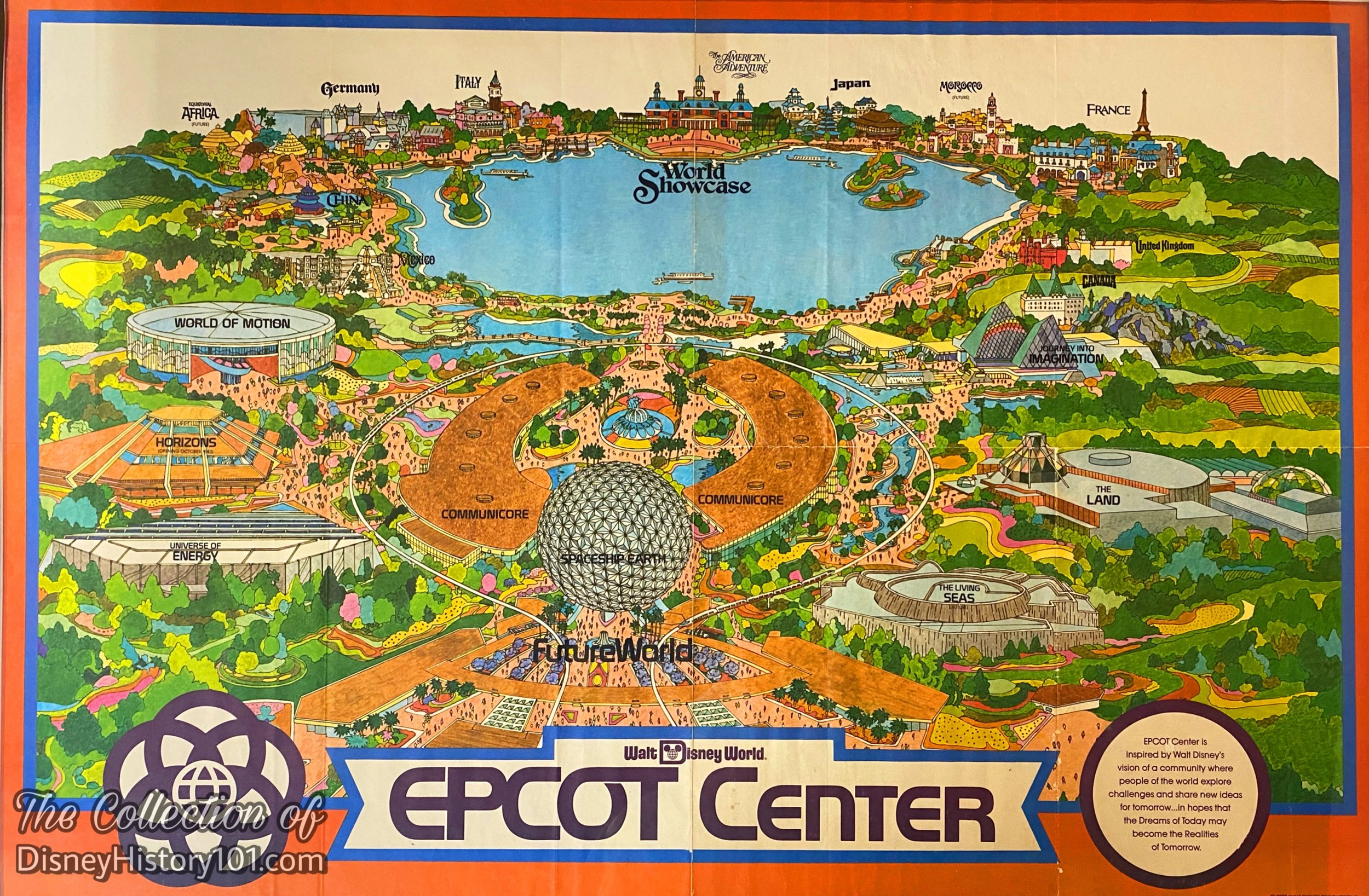
By 1982, the new 17,500-square-foot Morocco Showcase was being master planned to be situated on the 40-acre World Showcase Lagoon midway between the existing pavilions of France and Japan.
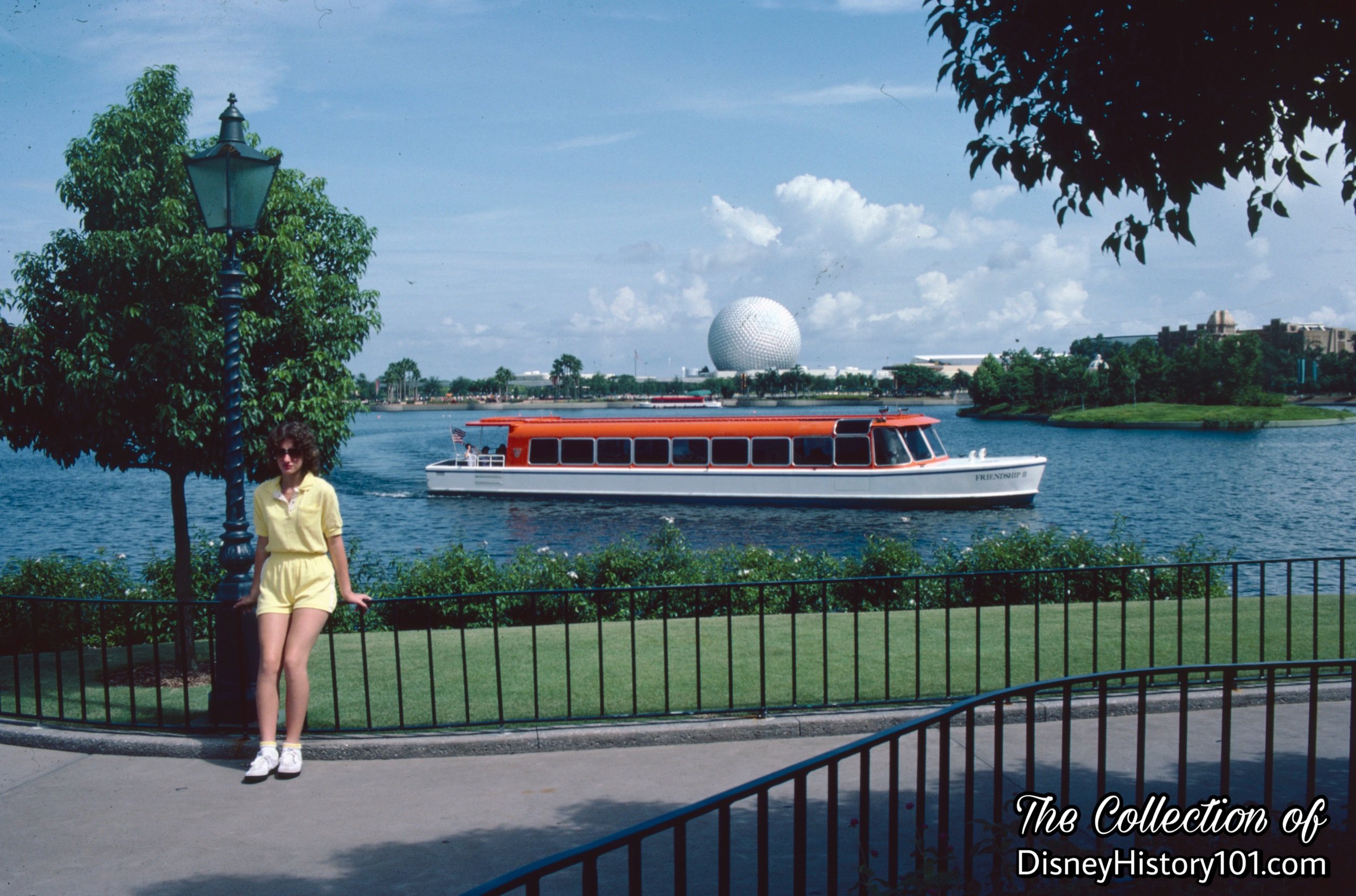
Both the American Adventure and Morocco would come to flank Japan. Obviously, the fastest way to move people over the extended areas of a Park is with moving vehicles. "FriendShip" launches crossed the World Showcase Lagoon and readily accommodated guests in wheelchairs and strollers. Buses regularly circled the World Showcase promenade. By 1982, getting around the World Showcase area was made easier with additional transportation, in the form of seven more busses and two new boats with a third under construction.

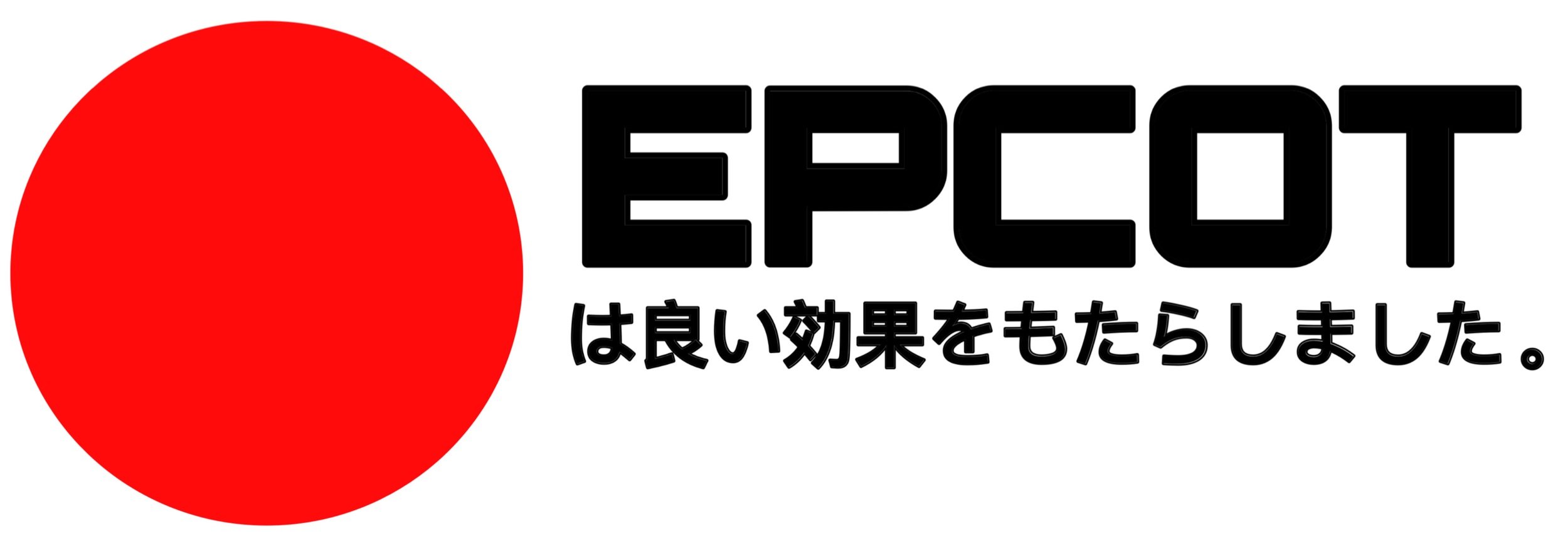

A 600-room and 50-royal suite Thai-inspired Asian Resort (with its own restaurant and lounge atop a 160-foot tower) would offer a complete range of resort facilities. “Primarily Thai in its decor and food specialities, this hotel will be located on the lagoon, nearest of all the hotels to the theme park entrance. It is being planned to include 600 rooms, about two-thirds in garden settings and the remainder in the 160-foot tower building. A theme restaurant and cocktail lounge at the top of the tower will provide nighttime dancing and stage entertainment. A unique feature is the location of convention facilities, all underneath and separated from the main public areas of the Asian resort. In addition, a multi-purpose main ballroom and smaller meeting rooms are planned for conventions. Every guest room (including 50 elegant suites) will face the lagoon or a central recreation area.” This particular additional development was planned to be completed by the Christmas of 1974 and beyond.

The Epcot Center Japan World Showcase nearly inspired a Hotel of the Walt Disney World Resort. Chairman of the Operating Committee of Walt Disney World Robert (Bob) C. Allen (who leads the team which meets regularly to plan projects) found that the Golf Resort was “pulling rooms from the Lake Buena Vista area. There has been a hiatus while the surrounding area builds up. With the World Showcase, we expect to build the Asian Hotel. We are also going to expand the Polynesian with 120 to 140 more rooms.” [Orlando-Land; October, 1976]
The new resort-hotel would be based on the exotic Asian theme of Thailand, planned for the shores of the Seven Seas Lagoon.
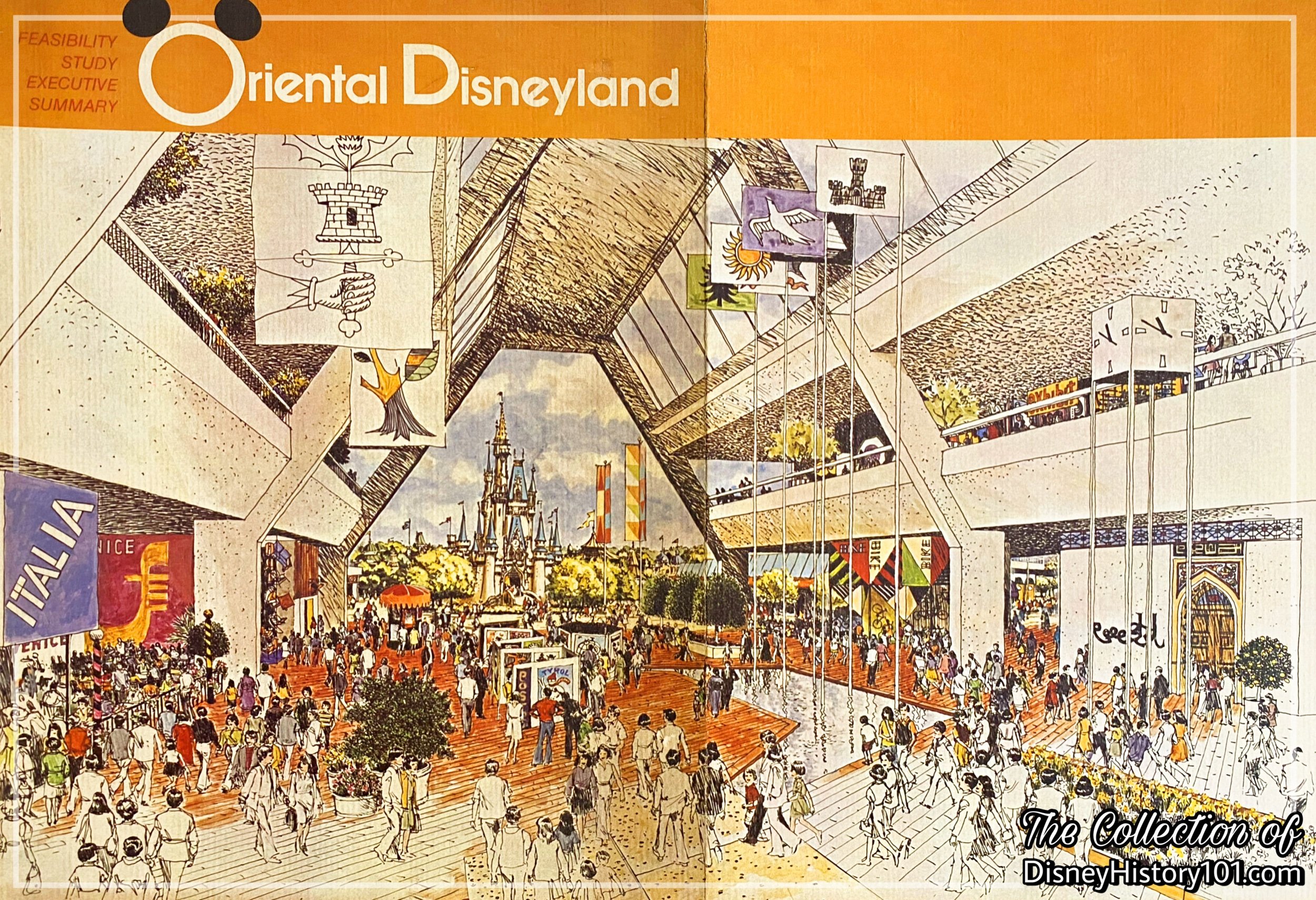
“Legacy - Disneyland in Japan”
By August of 1975, the Feasibility Analysis Economic Study was completed for (what was first billed as the now much-antiquated “Oriental Disneyland”), an area called “International Land” was mentioned. It seems that (much like the original concept for EPCOT Center), Guests of International Land would also have “an opportunity to experience the endless variety of today's community of nations… discover the culture, traditions, tourism, and accomplishments of the participating countries through a wide variety of exciting shows and attractions, restaurants, and shopping streets unique to the individual nations.”
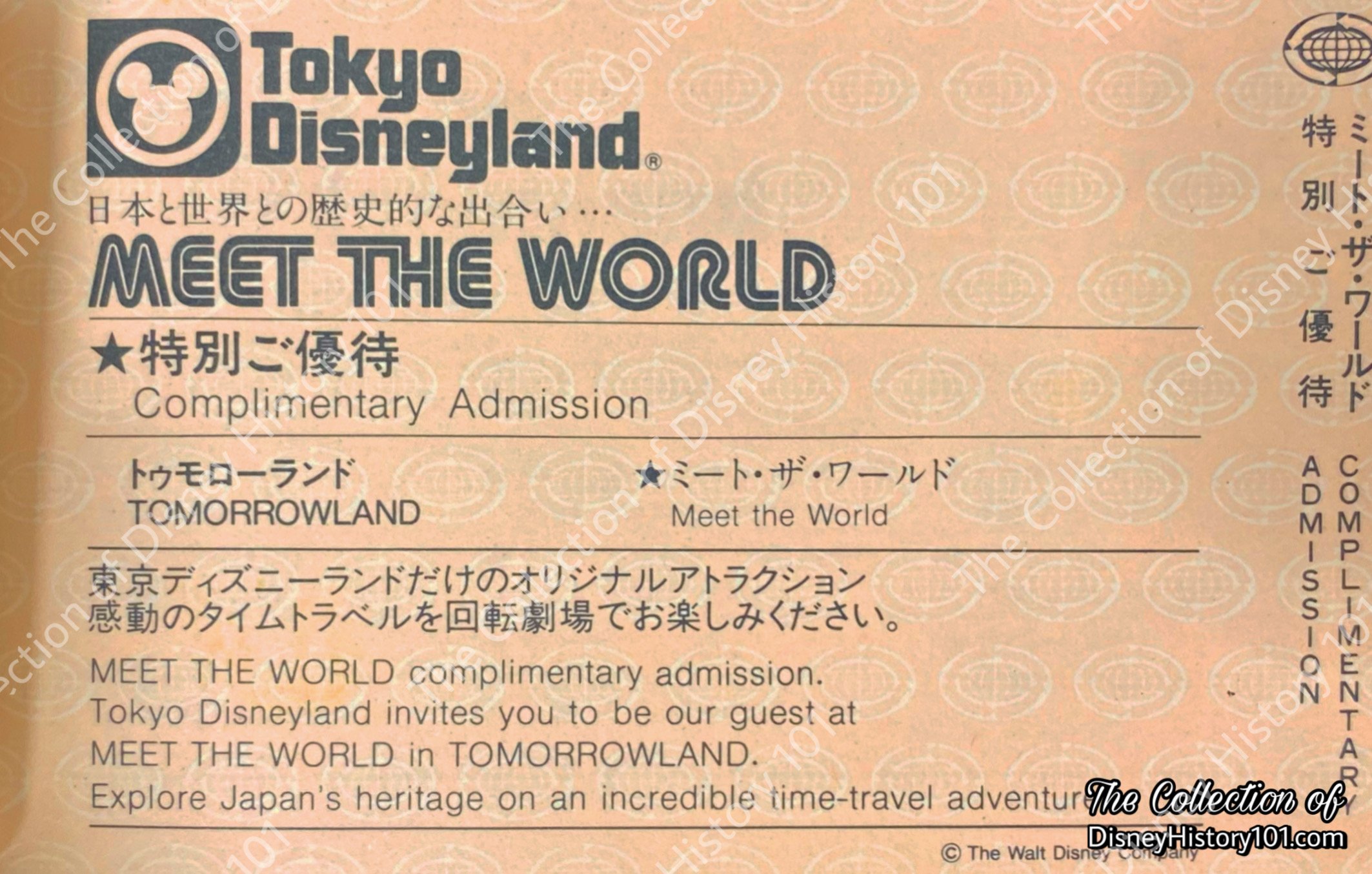

“It Looks Like We Started Something - Epcot Center Legacy of the Asian Hotel and WESTCOT”
The EPCOT Center World Showcase nearly had a legacy in WESTCOT Center - “a West Coast version of EPCOT Center, with a Spacestation Earth as its centerpiece, and a World Showcase. It was initially announced in March 1991, to be built where Disney California Adventure was eventually situated.” [Disney Facts Revealed by Dave Smith, 2016] WESTCOT was to include a whole new World Showcase of culture, traditions, tourism, and accomplishments of participating nations. Like EPCOT Center, these would be experienced through a wide variety of exciting shows and attractions, restaurants, and shopping streets unique to the individual nations.
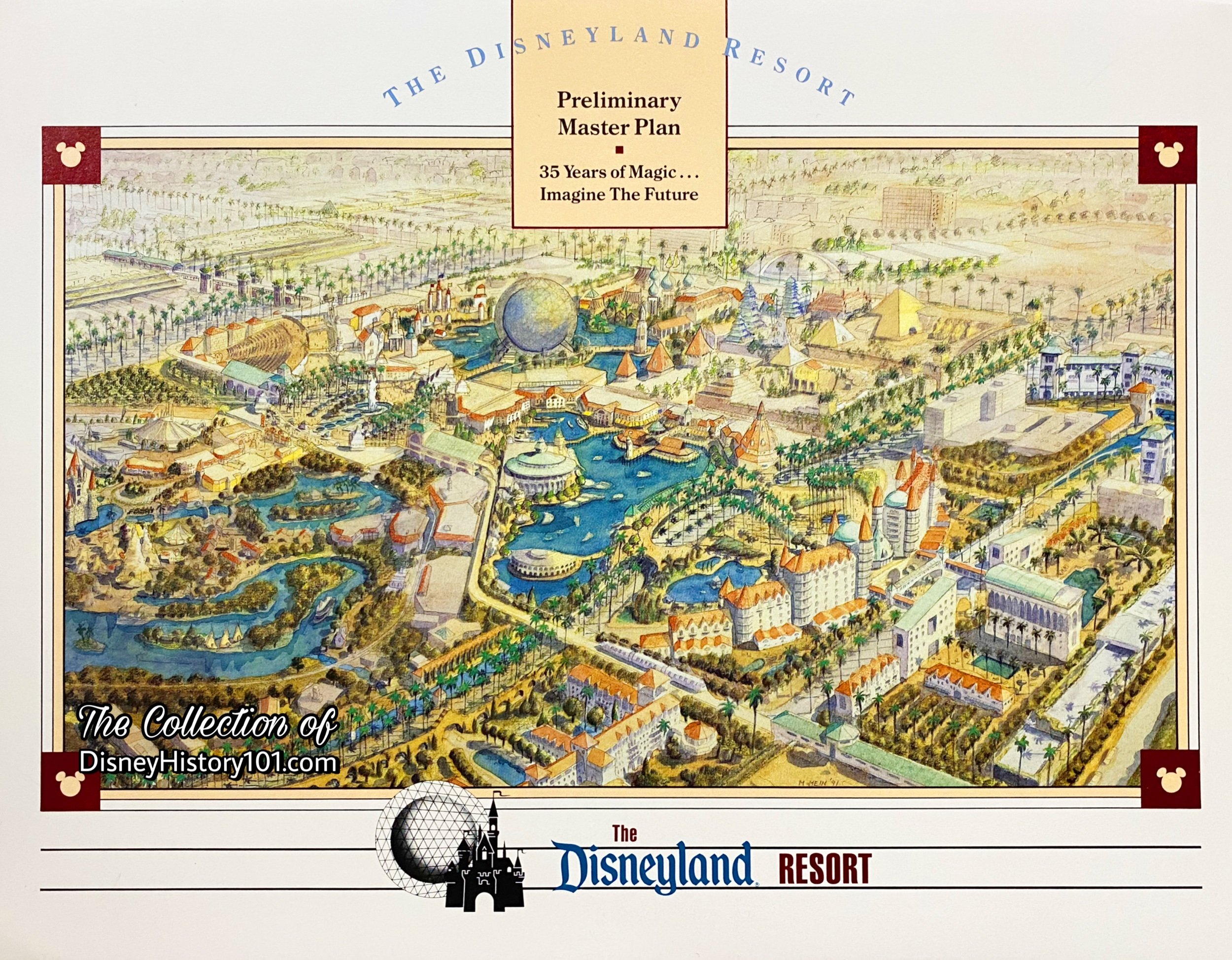
World Showcase nearly had a legacy in WESTCOT Center. Guests would have been transported to the Wonders of WESTCOT themed pavilions. At World Showcase, located around the island, visitors would have explored every corner of the globe at dramatic pavilions of foreign lands. WESTCOT was to include a whole new World Showcase of culture, traditions, tourism, and accomplishments of participating nations. Like EPCOT Center, these would be experienced through a wide variety of exciting shows and attractions, restaurants, and shopping streets unique to the individual nations.
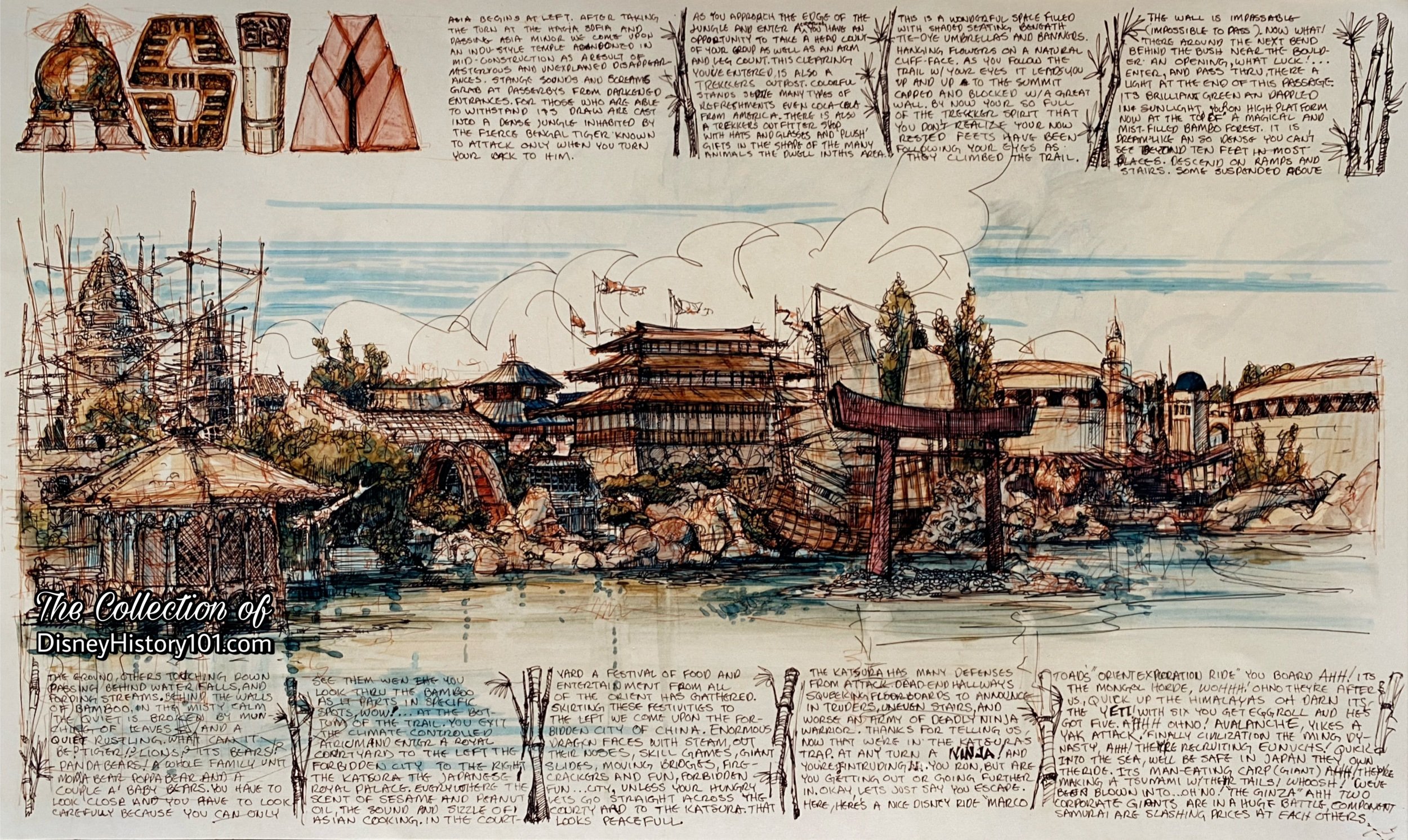
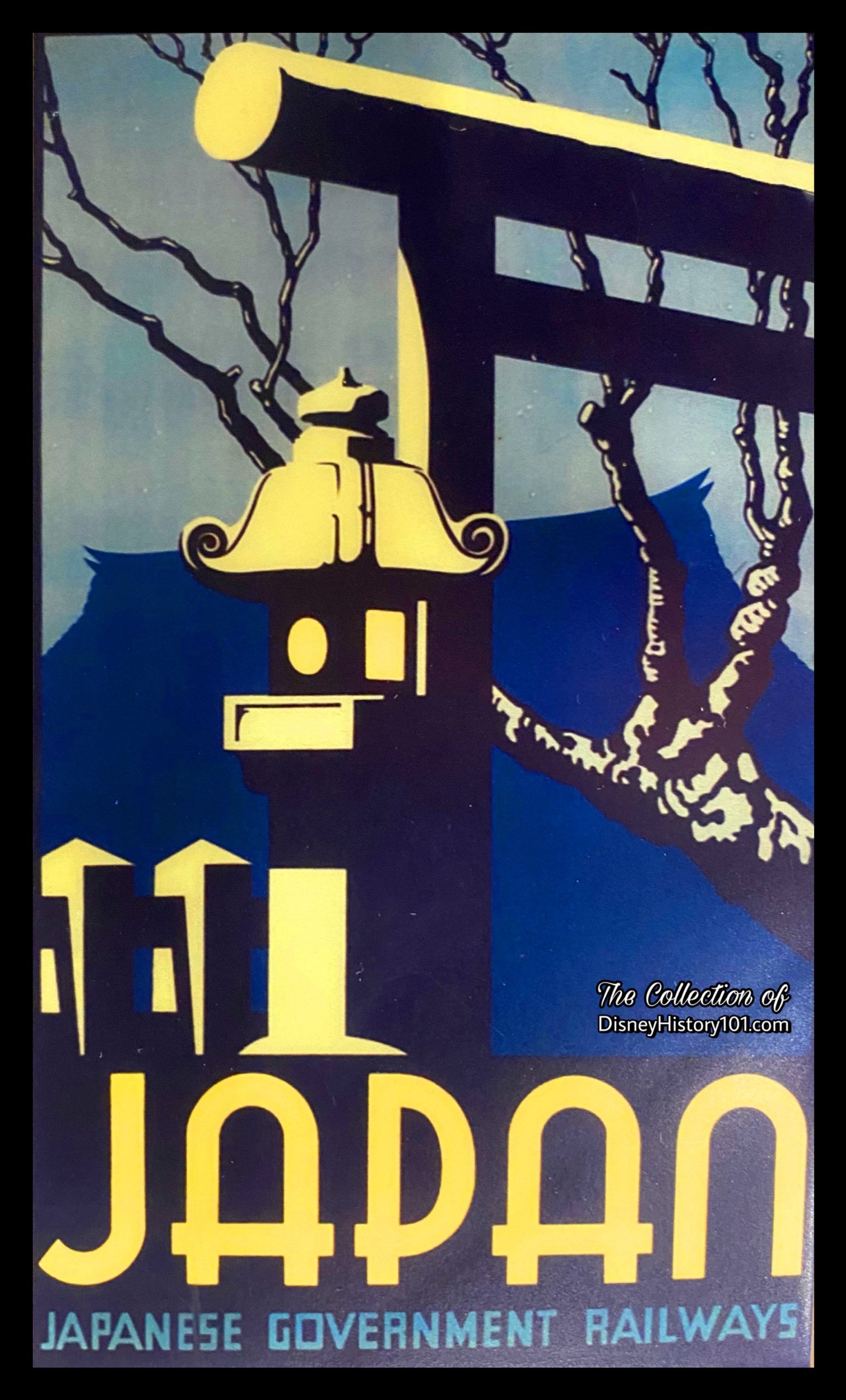
WORLD SHOWCASE - UNITED KINGDOM PAVAILION

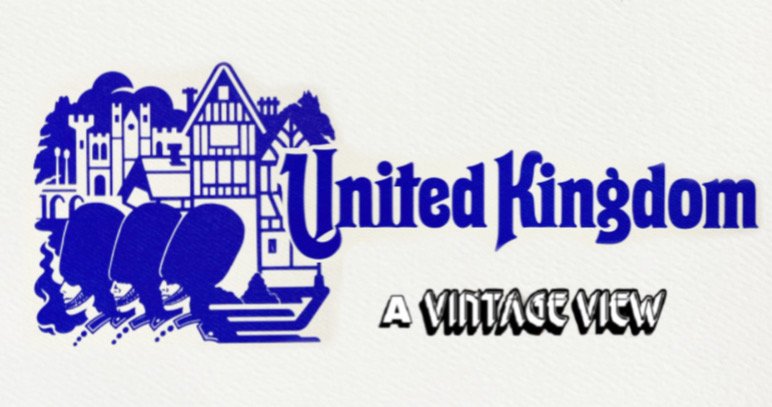
On December 15, 1966, Roy Disney addressed the employees of Walt Disney Productions: “Walt Disney's preparation for the future has a solid, creative foundation. All of the plans for the future that Walt had begun - new motion pictures, the expansion of Disneyland, television production and our Florida and Mineral King projects will continue to move ahead. That is the way Walt wanted it to be… Last October when he accepted the ‘showman of the World’ award in New York, Walt said, ‘The Disney organization now has more than four thousand employees. Many have been with us for over thirty years. They take great pride in the organization which they helped to build. Only through the talent, labor and dedication of this staff could any Disney project get off the ground. We all think alike in the ultimate pattern.’”
By 1975, “the need for an Experimental Prototype Community of Tomorrow… was[sic] even greater than when Walt Disney first began talking about it in 1965.” The Experimental Prototype Community of Tomorrow was to feature a living community where American Industry would always be introducing, testing and demonstrating new techniques and systems designed to enhance the quality of urban life. EPCOT was always to be a showcase to the world community. And so the author of one c.1975 prospectus stated: “Now, more than ever, our world needs a focal point a forum where creative men and women of science, industry, government and the arts from around the world can present new ideas and technologies... stimulating new concepts that will enable both the leaders of the world and the general citizenry to better understand the great challenges facing people around the world…and the possible solutions to these great challenges.”
Soon the second Phase of Walt Disney World was being planned - EPCOT Center. According to one EPCOT Center’s instructor’s orientation guide, one objective set out for EPCOT was “to be a ‘permanent international people-to-people exchange’. . . advancing the course of world understanding among its citizens. What we are doing now is creating a public focus. . . a ‘center’ for the communication of what is being done. . . made directly to the public in ways they will both understand and enjoy. Our goal through EPCOT Center is to inspire our guests who come here, so that they will be turned on to the positive potential of the future and will want to participate in making the choices that will shape it. In short, we believe that EPCOT Center will establish a new level of entertainment and equally important, education for families and people of all ages from all lands. . . and that EPCOT Center will give people hope that there are solutions to all the problems that exist in the world today. . . and that there truly can be understanding among nations.”


“Unlike a world's fair, EPCOT's World Showcase will be a permanent international exhibition. No nation's exhibit or restaurant or product displays will be ‘torn down’ after one year or less-the standard requirement at world's fairs. Instead the one-time construction costs will go on working for a country for many years at Walt Disney World. Here the nations of the world will stand side by side in two semicircular buildings. This semicircular design not only will offer equal exposure and public access for each nation...but will also function as an interrelated series of experiences for every guest. for the entire complex of attractions and exhibits will be tied together by a Disney people-moving system that will also offer visitors a ‘preview look’ into each country's pavilion.”



One Walt Disney World Showcase prospectus added: “Here the nations of the world will meet on a coequal basis to communicate on a ‘people to people’ exchange with the more than 12 million visitors to Walt Disney World. Here young people from all over the earth will come to operate the attractions of their native lands… to serve the distinctive foods and to demonstrate and sell the unique merchandise of their home countries. Unlike a world's fair, EPCOT's World Showcase will be a permanent international exhibition. No nation's exhibit or restaurant or product displays will be ’torn down’ after one year or less-the standard requirement at world's fairs. Instead the one-time construction costs will go on working for a country for many years at Walt Disney World.”
A prospectus (entitled “EPCOT Center… People Bring It To Life”) opens by describing how the World Showcase was one of two principle themes of EPCOT Center, as it “be a ‘Community of Nations,’ the only permanent international exposition of its kind anywhere, focusing on the cultures, traditions, tourism, and accomplishments of people around the world.” Initial show master-planning and conceptual development resulted in EPCOT Center World Showcase presentations were “80 per cent World Showcase and 20 per cent EPCOT. Since then, we’ve evolved to the place where there’s maybe 80 per cent EPCOT and 20 per cent World Showcase. I think now we feel we’re at a point where we know what EPCOT and World Showcase are going to be. The two projects will work together and compliment each other,” according to a statement by Jack Lindquist, in which he discussed EPCOT Center plans. Herb Ryman created c.1965 suggestions for Walt Disney’s Progress City and “enclosed shopping areas… representing countries of the world.” According to another prospectus, “The World Showcase comprises the southern half of EPCOT Center where at least ten participating countries will stand side-by-side in friendship along the banks of a broad lagoon… The participants in this first phase of World Showcase include United Mexican States, Japan, Federal Republic of Germany, United Kingdom, French Republic, United Arab Emirates, Italian Republic, Canada, State of Israel and Morocco. Disney Imagineers are now working with government or business interests from these countries to achieve a unique and meaningful showcase for each nation.” Surely any wanderlust was sure to be satiated through the Epcot Center World Showcase.
Walt’s people and company were now embarking on “imagineering” a new, grander “theme show” for Florida audiences. The latter expression (“theme show”) was once defined as: “A controlled, usually man-made environment where as many as possible elements pertain to a single fictional or non-fictional motif. Thus, an individual placed within that environment may consciously or subliminally experience it.” But even more (as one sanctioned statement elaborated): “We are talking about all the things a guest may experience and be entertained by - colors, sounds, lights, detail - timing, taste and texture. Through art and animation, our imagination, creativity and talent blend together to make our ’show.’” Everything in the EPCOT Center World Showcase would be to this theme and atmosphere from this particular time, place and subject. A themed motif would be incorporated into every aspect of operation (e.g., room décor, menus, attractions and costumes).

"I don't want the public to see the world they live in while they're in the park. I want them to feel they're in another world.” - Walt Disney. Nestled between a stretch (of more than 40 miles) of canal, a perimeter road, a service road, and the shores of the World Showcase Lagoon Promenade, is the EPCOT Center United Kingdom World Showcase.
Marty Sklar recollected (in “One Little Spark! Mickey’s Ten Commandments and The Road to Imagineering”: “I had spent eight of my eventual fifty-four years at Disney leading the Imagineers in developing the concepts, playing a key role in convincing the major corporate sponsors to make Epcot a reality, and producing the myriad of shows and stories that attracted more than ten million visitors to visit Epcot in its first year.” In June of 1980, Harper Goff described: “We start with the lagoon. The front has to be a water element. The pub in the British Pavilion has two aspects. On the lagoon side, it is a replica of the waterside pub on the Thames used by the boating population. On the side street in resembles a pub in Soho. You can dine in the pub and then wander back into a London park like Grosvenor Square. One building has the feel of St. James Palace. The replica of Hampton Court houses a toy shop. The pavilion will also have a Royal Doulton china shop, a gift shop and a biscuit and confectionery store. farther back, you’ll be able to stroll into an area like the Cotswold Hills.” Within the same interview, Dave Baron (World Showcase Development) added: “Soon after opening we’ll have a British music hall. A live show will be presented with dinner.” And still, Jack Lindquist added: “We may also have a British historical facility.”
Walt Disney once said: “The whole thing here is the organization. Whatever we accomplish belongs to our entire group, a tribute to our combined effort.” In step with Walt’s philosophies, what was described as a “complex and highly diversified team” of individuals (among the Project Management and the Project Team) would coordinate and translate the concept of EPCOT Center into a reality.
The United Kingdom Pavilion would be Imagineered by the collaborative contributions of writers, designers, artists, film makers, engineers, sculptors, and builders, in addition to committees of foreign nationals, representatives of corporations and governments. These were lead by Project Director Jim Nagy, EPCOT Center World Showcase United Kingdom Project Manager Joe Navarro, Jim Barrett (Resident Engineer), Jerry Hunt (BVCC Project Manager), Robby Blackman (Tishman Project Manager), Alan Bourgeois (Pico Coordinator), Joanne Fernholz (Project Business Administrator), and Dave Yanchar (Project Planner).
Katie Olson (future WED Principal Color Concept Designer” was a painter in the Model Shop and had been tasked with painting the color boards for the facilities at EPCOT. “A ‘Color board’ is a term used by Disney to describe the documentation that takes color from pure design to construction in a format that can be used by both designers and paint contractors to first understand and then deliver the finished product— and do it right. An architectural elevation of the facility is printed, dry-mounted on board, and then painted with colors that have been hand-mixed and exactly matched to swatches that have been chosen by the designated art director.” She recalled: “I was given the United Kingdom Pavilion in World Showcase to render, and I was told to take color direction from the architect. That architect was, in fact, color-blind. He said he had to trust me to illustrate what he wanted, as he couldn't see the color for himself.”
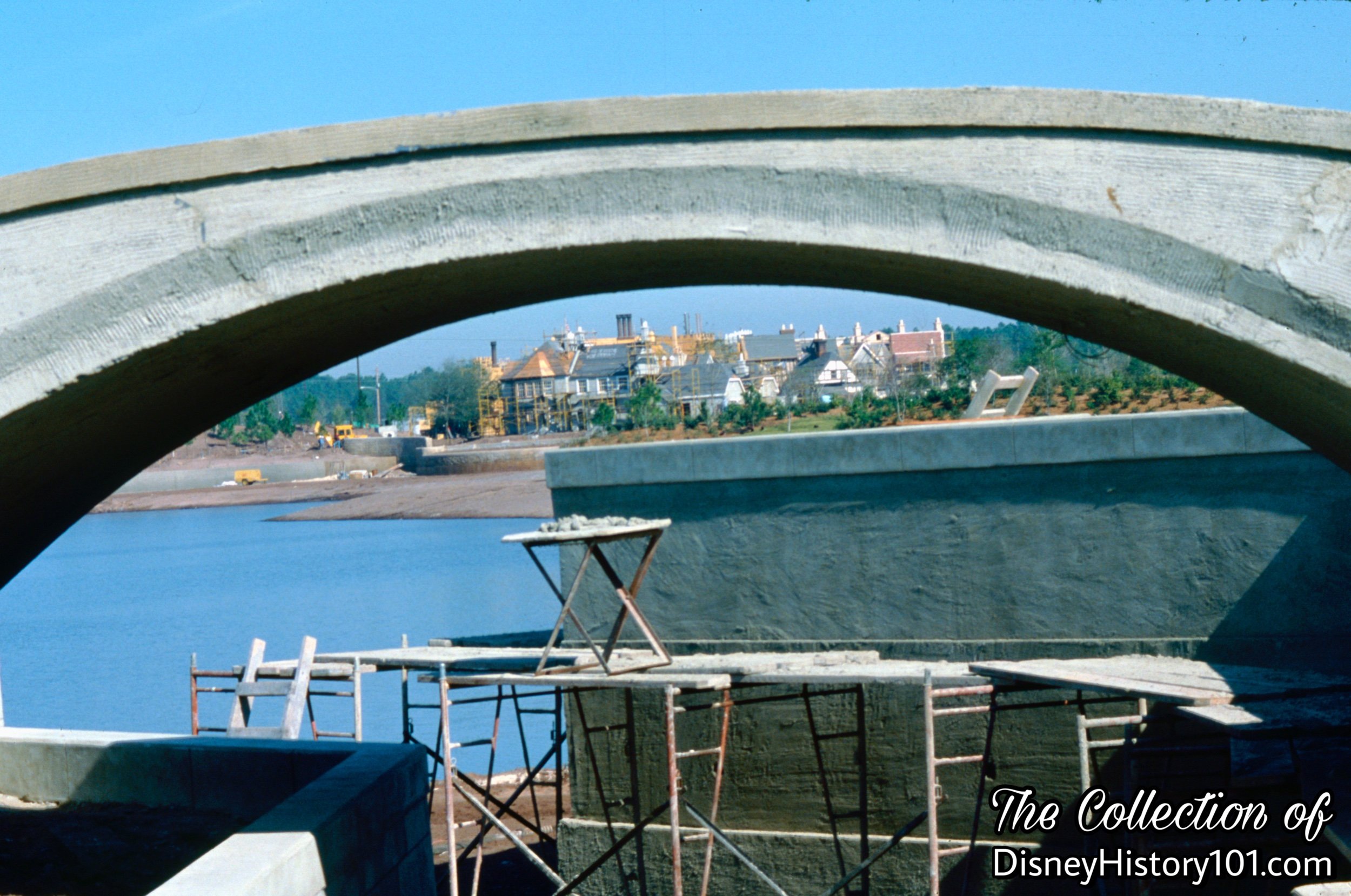
Walt Disney World Shops would employ disciplines found at MAPO, supporting MAPO with in construction manufacturing. During construction some 750,000 - 800,000 square feet of concrete were poured in EPCOT Center.
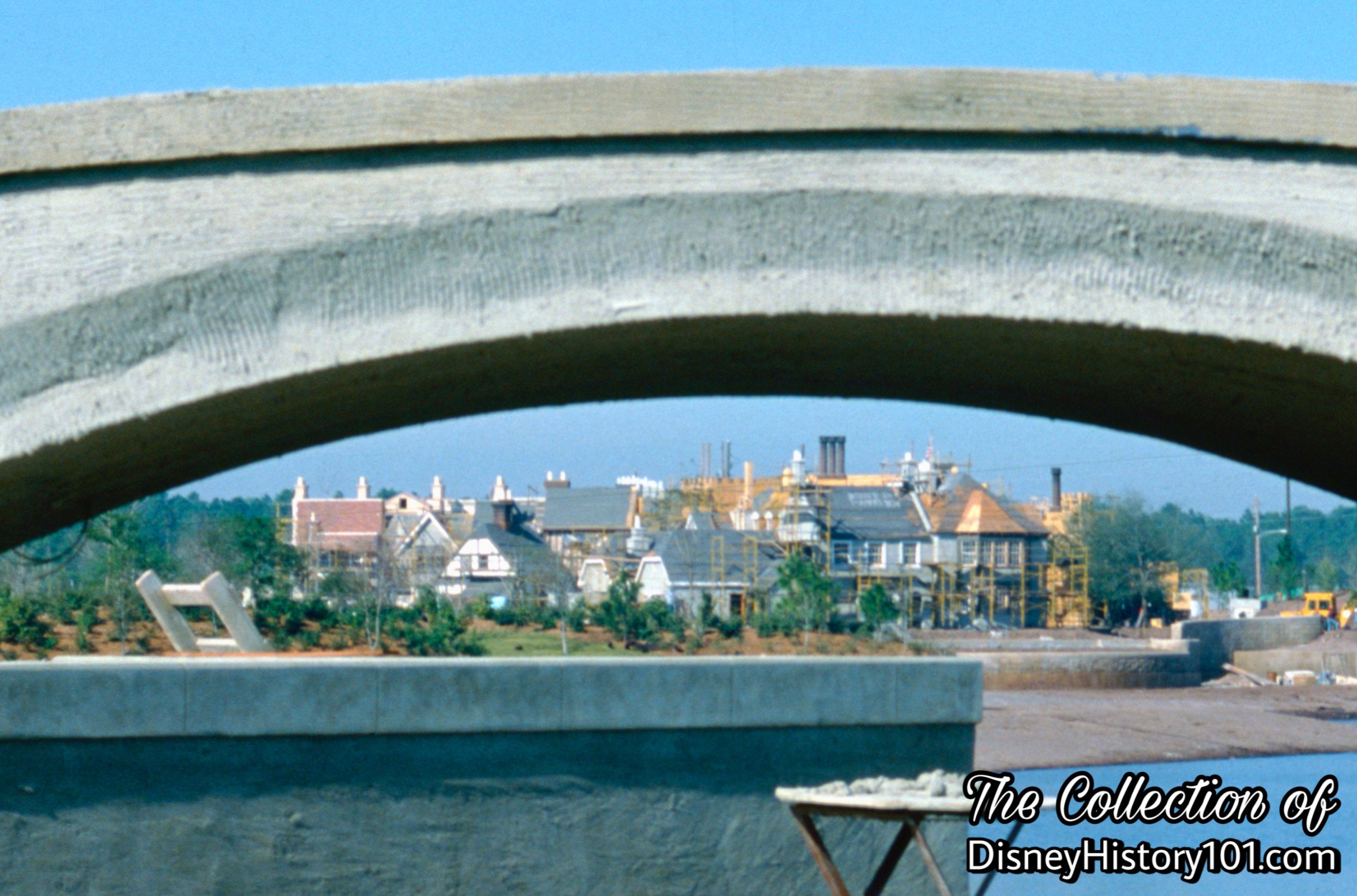
The Showcase Area Development Landscaping Team was comprised of Don Hughes (Project Manager), Bill Coan(Resident Engineer), Jim Franklin (BVCC Project Manager), John Payne (PICO Coordinator), Joanne Fernholz (Project Business Administrator), and Dave Yanchar (Project Planner). [“Epcot Center - People Bring it to Life,” prepared by WED/MAPO, c.1980]

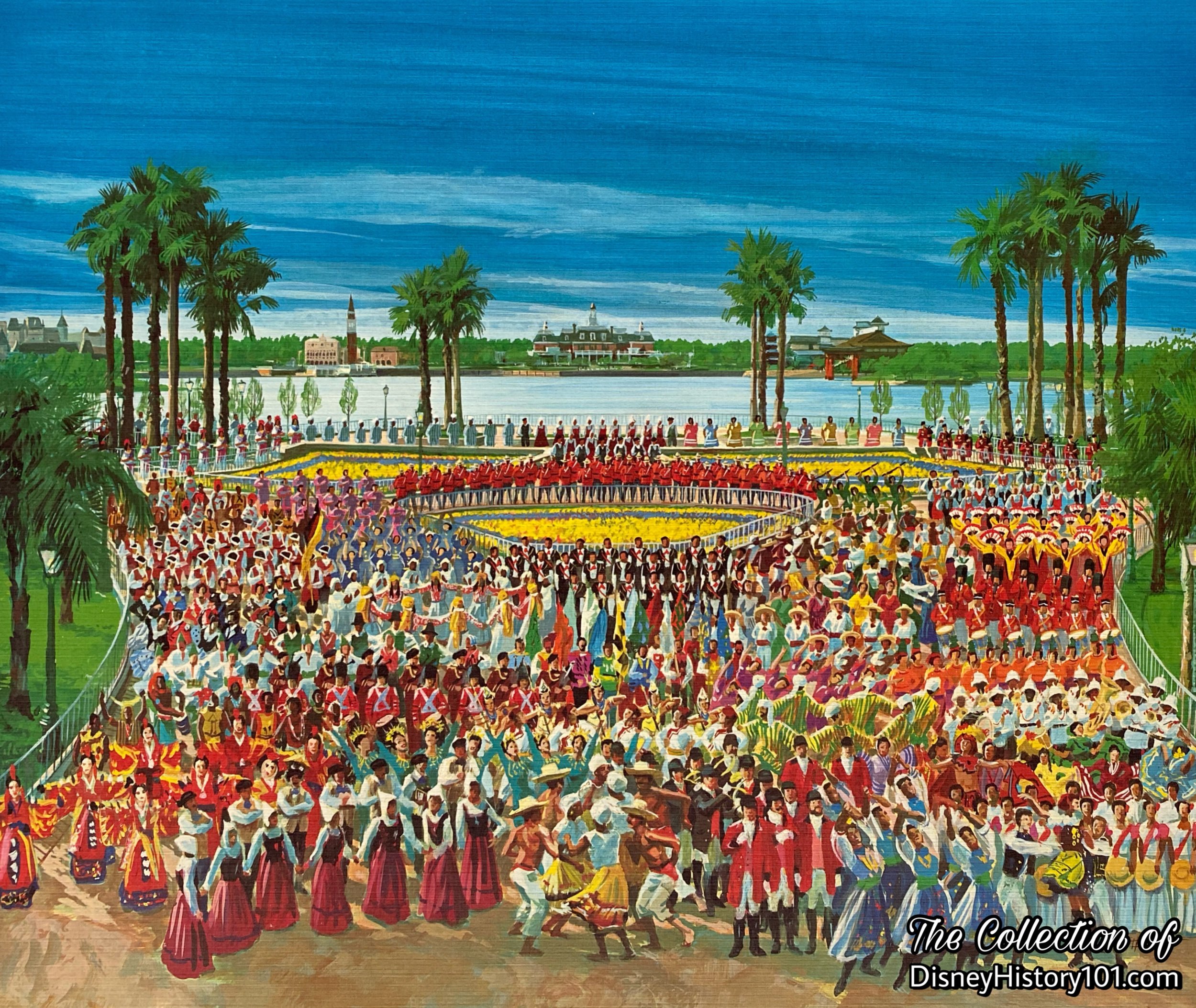
On September 16, 1981, Jack Lindquist firmly announced the official EPCOT Center Grand Opening date for EPCOT Center World Showcase United Kingdom Pavilion - Tuesday, October 19, 1982. On Tuesday, October 19, 1982, ceremonies were held at United Kingdom.
“The United Kingdom is Represented at the International Festival of Festivals”
Epcot Center World Showcase Festival Program Reception celebrated a unique Community of Nations on Saturday, October 23, 1982. The grand finale the evening's festivities, Le Carna-val de Lumière proudly proclaimed the Official Opening with the presentation of the world premiere of its International Festival of Festivals, a celebration of celebrations. Epcot Center's nighttime extravaganza of illuminations, water, sound, and fire was viewed from Showcase Plaza. This show, was to be an ongoing feature of World Showcase, using the new medium of computerized “magic-lantern” illumination to transport audiences to other times and cultures, inviting their imagination to engage in moments of festivity around the world.
Every society rejoices in what it feels most deeply about, inventing vivid rituals to celebrate important events in the cycle of life. Throughout the ages, the family of man has marked these joyous occasions with impressive public feasts and fêtes, dancing and music, parades and processions, pageants and exhibitions, spectacles and fireworks. These celebrations march from the past, through our lives today, and into the heritage of future generations. Through kaleidoscopic tapestries of light and sound, Le Carnaval de Lumière took audiences across the entire world and through twenty centuries to experience the rich diversity - and the commonality - of human celebration.
The roster of international entertainers is still impressive. The following groups were featured: All-American College Marching Band, West Point Glee Club, the Royal Irish Rangers (the last Irish infantry regiment in the British Army), Koleda (a highly professional group of dancers and musicians from Valenje, Yugoslavia), the Folkloric Dancers of Madrid (Spain), the Folklore Group Fribourg (Switzerland), Leyte Kalipayan Dance Company (Philippines), Areyto (The National Folkloric Ballet of Puerto Rico), Kelaa M'Gouna and Imintanout Folk Dancers and Musicians (Morocco), Ballet Folklórico Nacional de Mexico, The Boys Band of Meersburg (Germany), National Korean Folk Dance Company, Historic Standard Bearers of the District of Cori (Italy), "Lous Pastous Seignossais" Folk Ensemble (France), Finnish Folk Dance and Music Ensemble, "Katrilli" (Finland), Tivoli Boys Guard Band (Denmark), The National Folklore Troupe of Egypt, Universidad del Valle Folk Dance Group (Columbia), Lucnica (Czechoslovakia), The Shanghai City Song and Dance Ensemble (China), the Royal Canadian Mounted Police Musical Ride, The Royal Barbados Police Band, The Hunting Horns of Hoffalize and The Hunting Horns of St. Hubert (Belgium), COSAAN African Dance Company, and Odori Festival of Japan.
The 1982 program introduced The Royal Irish Rangers:
“As the last Irish infantry regiment in the British Army, the Royal Irish Rangers regard themselves as custodians of the proud heritage of all the gallant Irish regiments that preceded them. Organized in 1968 from an amalgamation of three famous old Irish regiments, the Royal Irish Rangers consist of a Military Band, Pipe Band with Drums, and a Corps of Bugles which, when combined, form a massed band of upwards of 60 performers. The military band in its green and silver uniforms, the buglers in their shakos, and the pipers dressed in saffron kilts create an impressive visual effect. The Rangers produce a variety of musical entertainments, including band concerts, parades, Irish dancing, and folk ensembles, as well as ceremonial fanfares and formations.”
![“Jack Lindquist, Vice President of Marketing for Disneyland and Walt Disney World… [headed] up our team responsible for lining up participants for EPCOT and World Showcase,” according to Disneyland LINE Magazine. By 1978, at least nine companies h](https://images.squarespace-cdn.com/content/v1/5b3d7f804eddec6e826be0c9/1670953625872-Z8V1HFN7WXCN3SK6S513/5CCDAF6B-F3EA-45D9-89D8-6A0C66EED647.jpeg)
“Jack Lindquist, Vice President of Marketing for Disneyland and Walt Disney World… [headed] up our team responsible for lining up participants for EPCOT and World Showcase,” according to Disneyland LINE Magazine. By 1978, at least nine companies had expressed an intention to participate in the United Kingdom World Showcase - British Airways, Selfridges Ltd., Bass Export Ltd., Dunbee-Combex-Marx Ltd., Associated Biscuits Ltd., Royal Doulton, British Rail, Guinness-Harp Corp., and Heraldic Promotions.
When Epcot Center opened in 1982, there were 34 merchandise locations, several located in the the United Kingdom Pavilion. The United Kingdom Pavilion opened with the Rose & Crown Pub & Dining Room restaurant, Pringle of Scotland shop, His Lordship shop, Toy Soldier shop, and Biscuit Barrel shop.
The Disney concept of theming is evident throughout Disneyland and Walt Disney World. Our shops complement the themed area and the merchandise. This is also carried over to Epcot Center World Showcase where we find souvenir shops that create tangible memories for Guests through Show and traditional merchandise of national origin.
It is notable to mention that during these early years, it was commonplace for merchandise locations to stock General Merchandise - non -character and/or decorative items, including film and sundries. In all, about 30% of merchandise had the Epcot Center logo, while the other 70% was general.
The aforementioned “The Spirit of EPCOT Center” c.1982 instructor’s orientation guide introduces the microcosm that is the U.K. Pavilion the following way:
“In a matter of only a few hundred feet, it’s possible to stroll from an elegant London square to the edge of a canal in the rural countryside via a bustling urban English street. In all, there are more than eight different architectural styles along the way, from English Tudor and Georgian to English Victorian.
The Rose & Crown Pub & Dining Room serves fish and chips, hot roast beef piled on an English muffin and steak and kidney pie. Bass Exports is the participant here.
Rocking horses, toys, baby carriages, dolls, all made in the U.K., are available in the Toy Soldier.
His Lordship sells brass blazer buttons, compasses, oil lamps, and a variety of other men’s accessories.
Pringle of Scotland offers a huge selection of styles and colors in men’s and women’s sweaters knitted by Scotland’s most famous maker.
The Queen’s Table specializes in Royal Doulton’s fine collector’s plates, figurines, and limited edition offerings.
The Biscuit Barrel looks something like Anne Hathaway’s cottage in Stratford-Upon-Avon, offering English cookies and other goodies.
Sharing Anne Hatahway’s cottage with the Biscuit Barrel , The Tea Caddy stocks English tea cups and other necessities.”
•Toy Shop (The Toy Soldier) was stocked with toys, dolls, cars, wooden toys and figures. As guests browse through the shop one of the first things they notice is the window display. The colorful designs provide yet another dimension to the Epcot Center experience. The animated display for the toy shop in the United Kingdom, provides a charm and craftsmanship that appeals to everyone. Display design also encompasses the fixtures and props which exhibit merchandise within the shop. Antique pieces from England, along with the specially designed displays, are part of the elements used to enhance the authenticity for the store.
•Men's Gift Shop (His Lordship) offered tobacco items, men's gifts and accessories.
•Tea Shop (The Tea Caddy), featuring Twining Teas carried teas and service accessories.
•Biscuit Shop (The Biscuit Barrel) sold an assortment of packaged biscuits, tins, cookies and jellies.
•Apparel Shop (Pringle of Scotland, Fine Woolens Since 1815), offered a full line of men's and ladies' wearables and accessories.
•China Shop (The Queen's Table), featuring Royal Doulton sold figurines, flatware and mugs.
•The Rose & Crown Pub & Dining Room featured traditional British fare, imported beers and ales over lunch and dinner.

The area utilized two separate types of lighting: Character lighting, and Functional Lighting. Character lighting such as a chandelier, or kerosene lamp, was themed to enhance the overall appearance and complement the interior. These added to the show, but didn’t necessarily create enough illumination for operation. Functional lighting on the other hand, offered substantial light without being obvious, or distracting from the show.
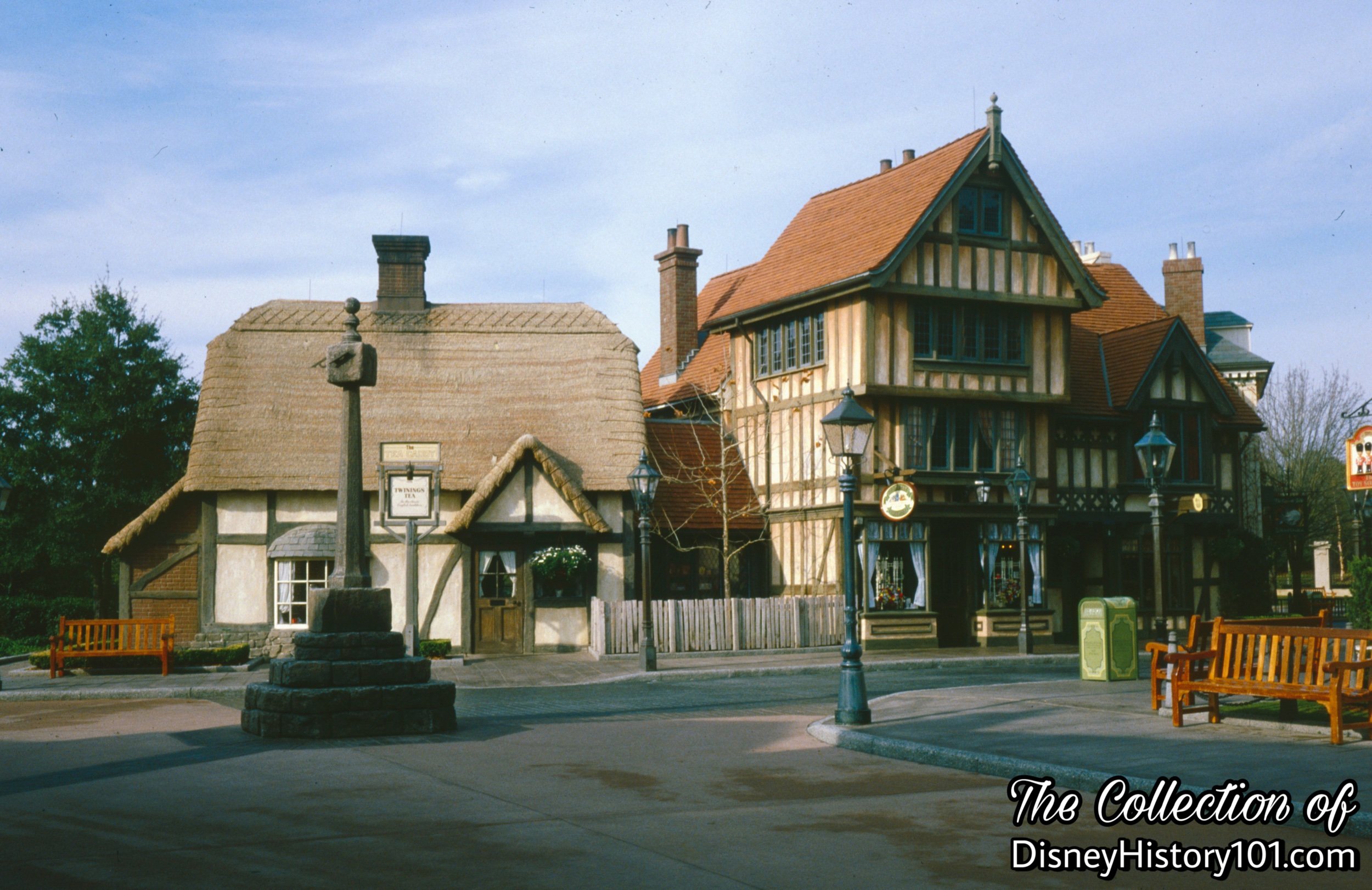
“EPCOT World Showcase Dining”
Epcot Center offered a sampling of delicious cuisine - a wide variety of dining experiences available for guests to savor in an international setting. Beer, wine and spirits were available at all table-service locations. Refreshing ice cream, beverages and snack carts could be found throughout Epcot Center.
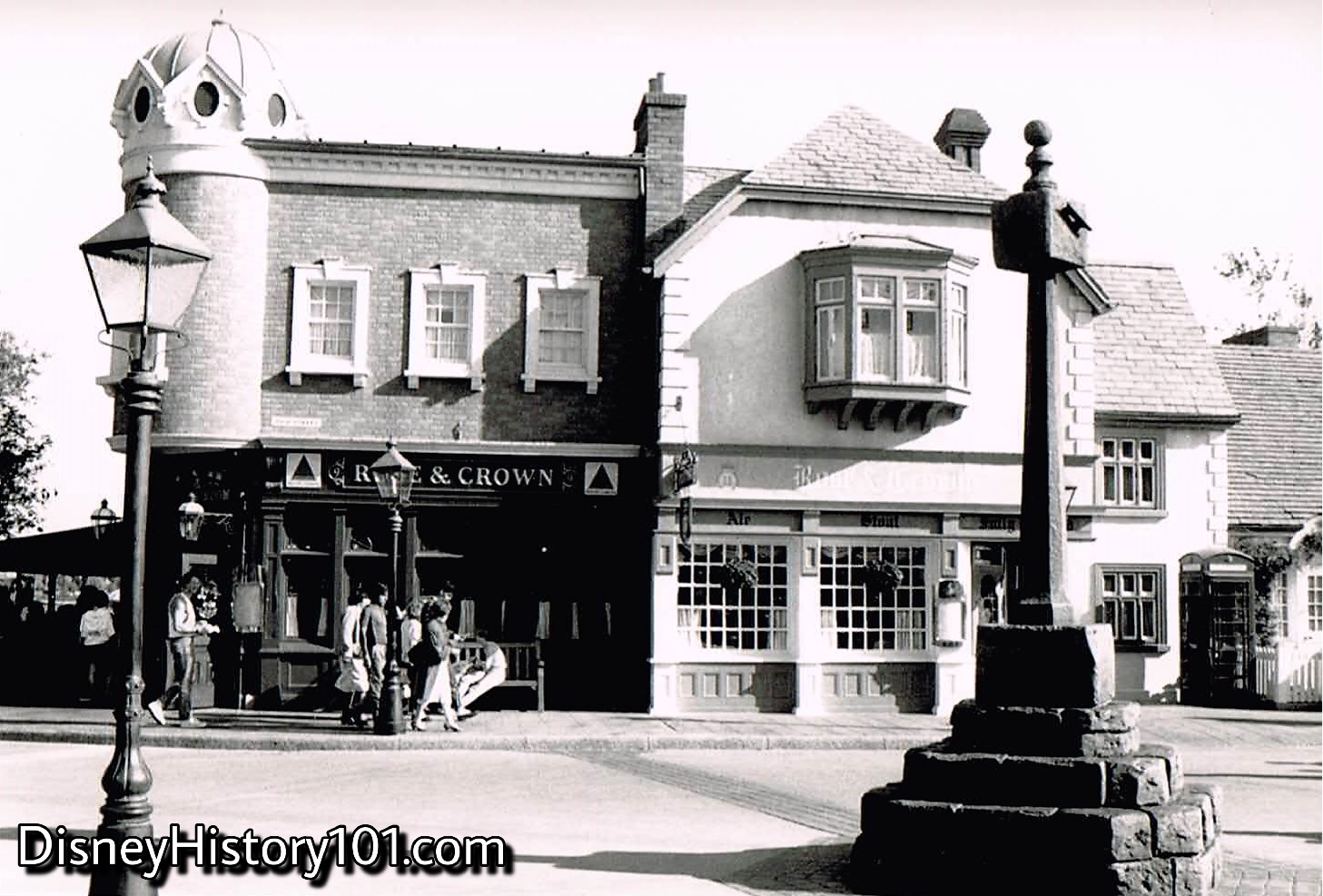
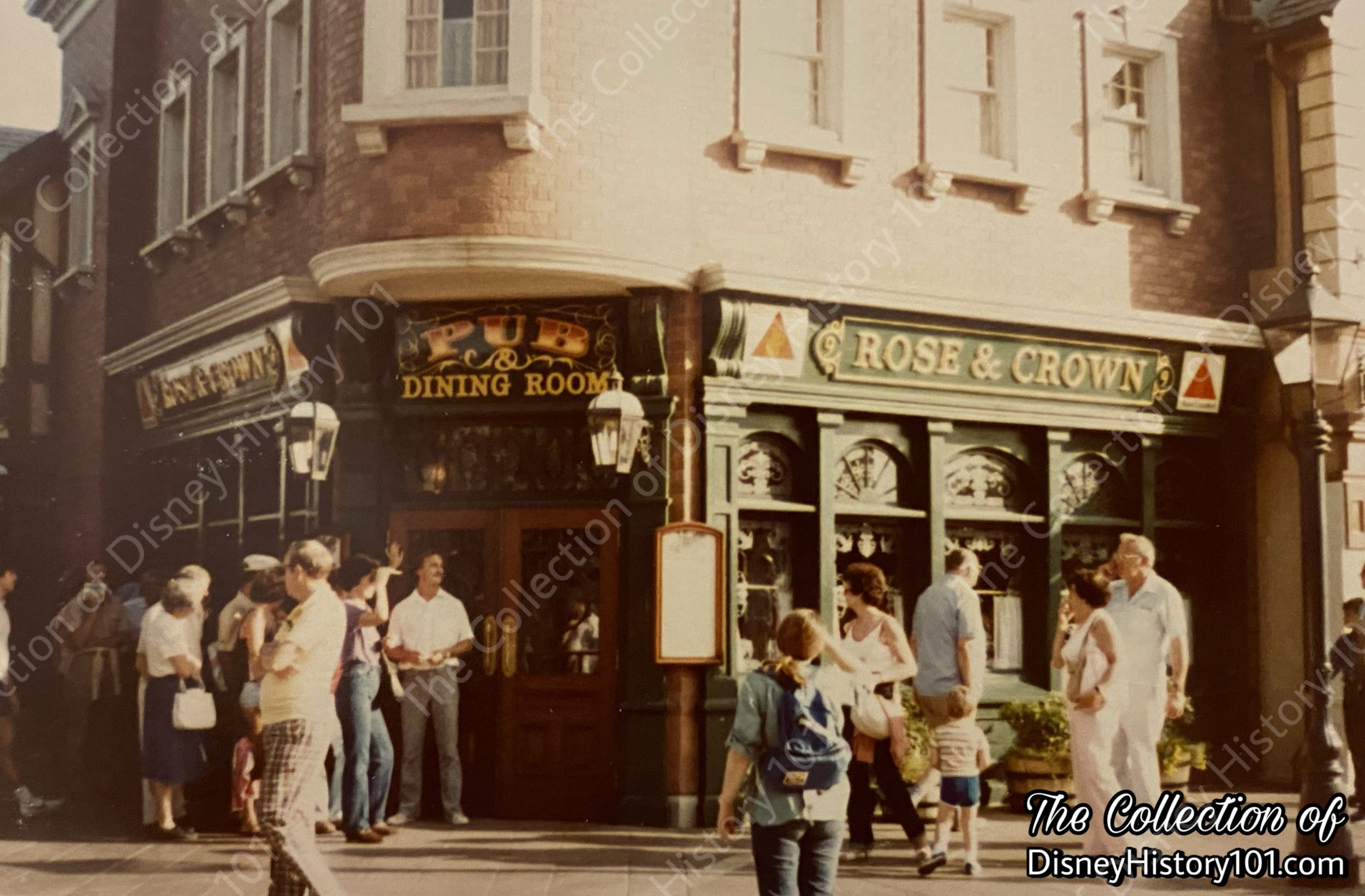
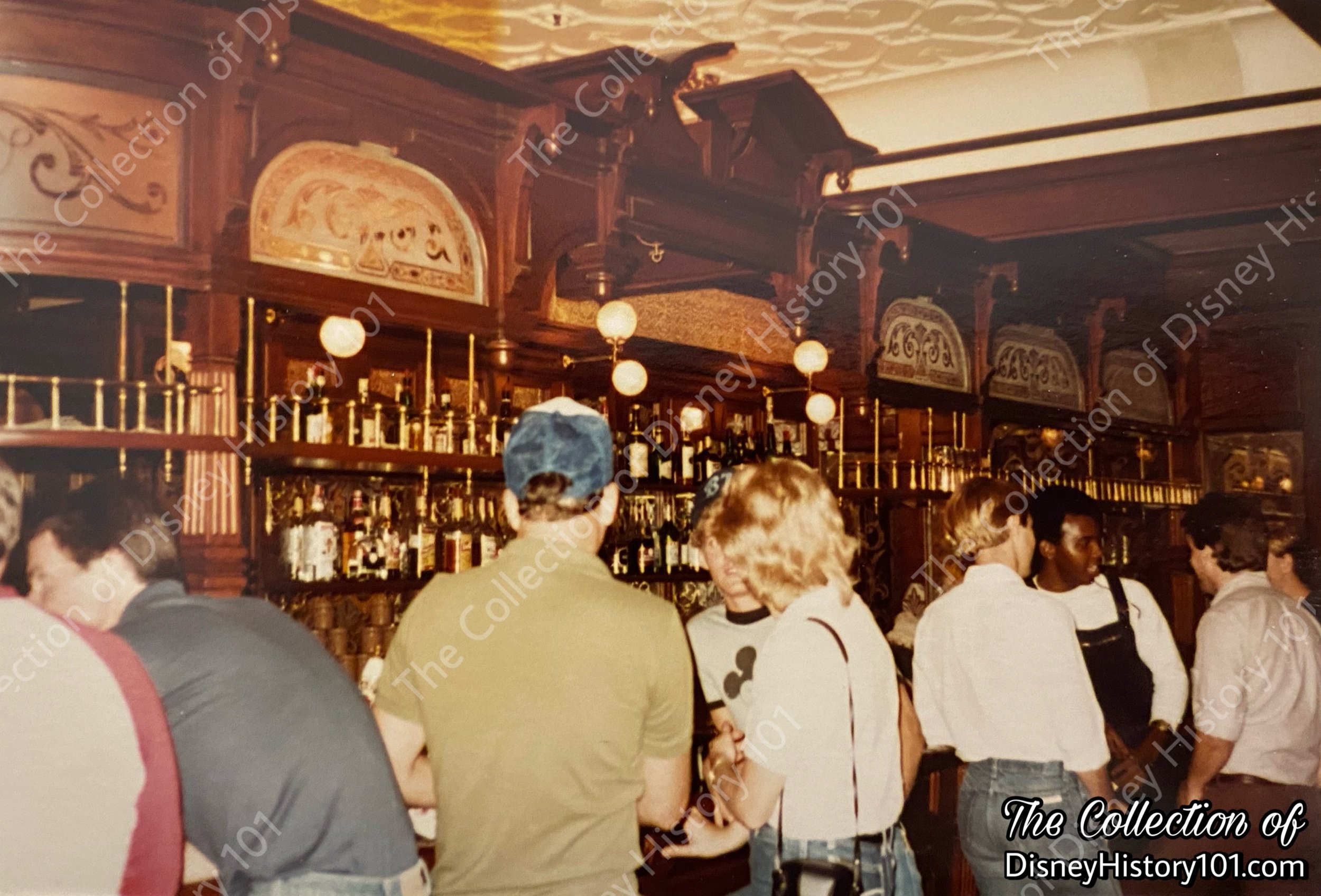
A Latin phrase is woven into the Pub sign - “Otium cum Dignatate,” (meaning leisure with dignity).
When asked what his favorite Park food is, Disneylander (and “55er”) Buzz Price answered: “Martinis at the English Pub in Epcot at Walt Disney World in Florida.”
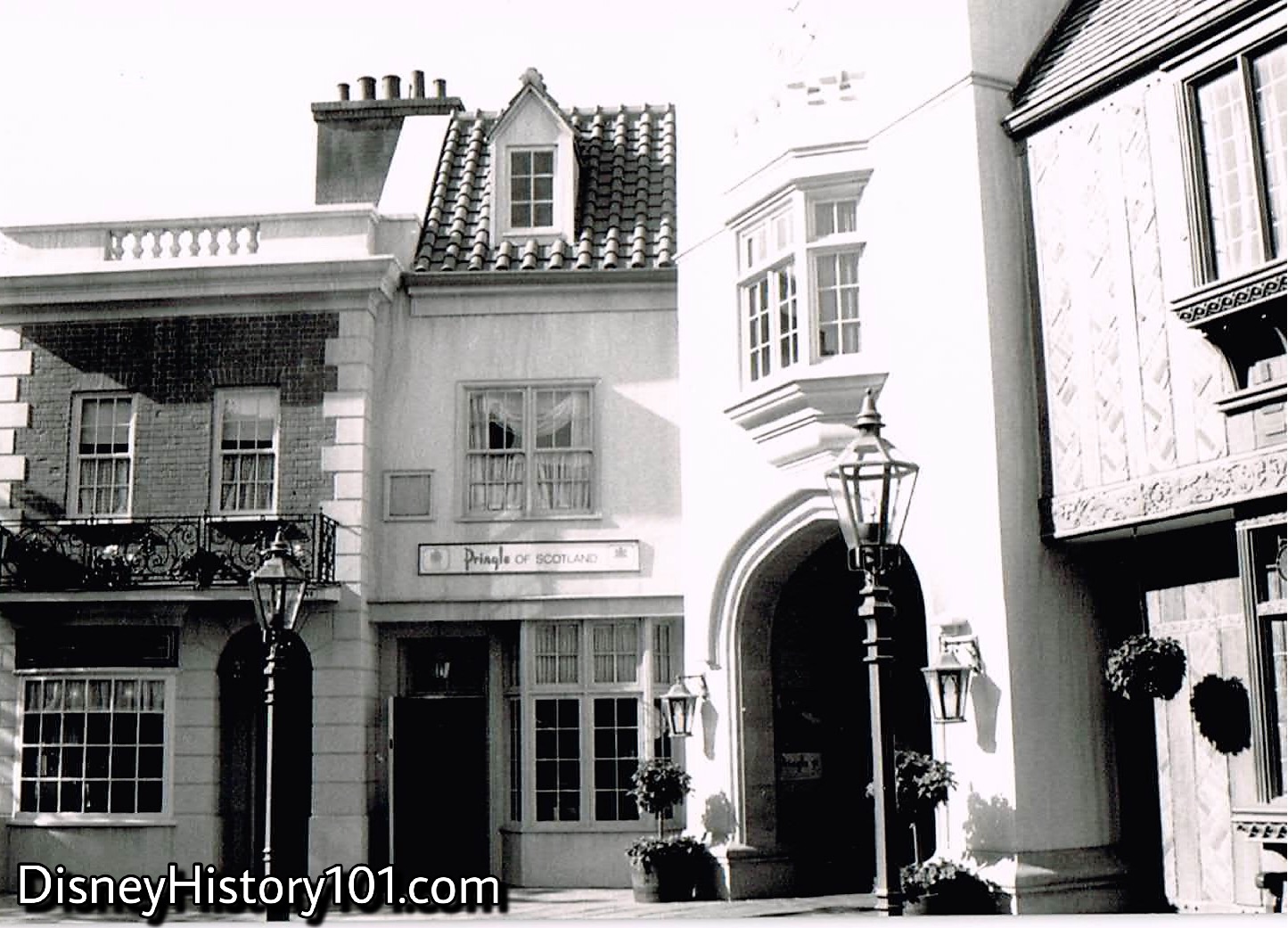
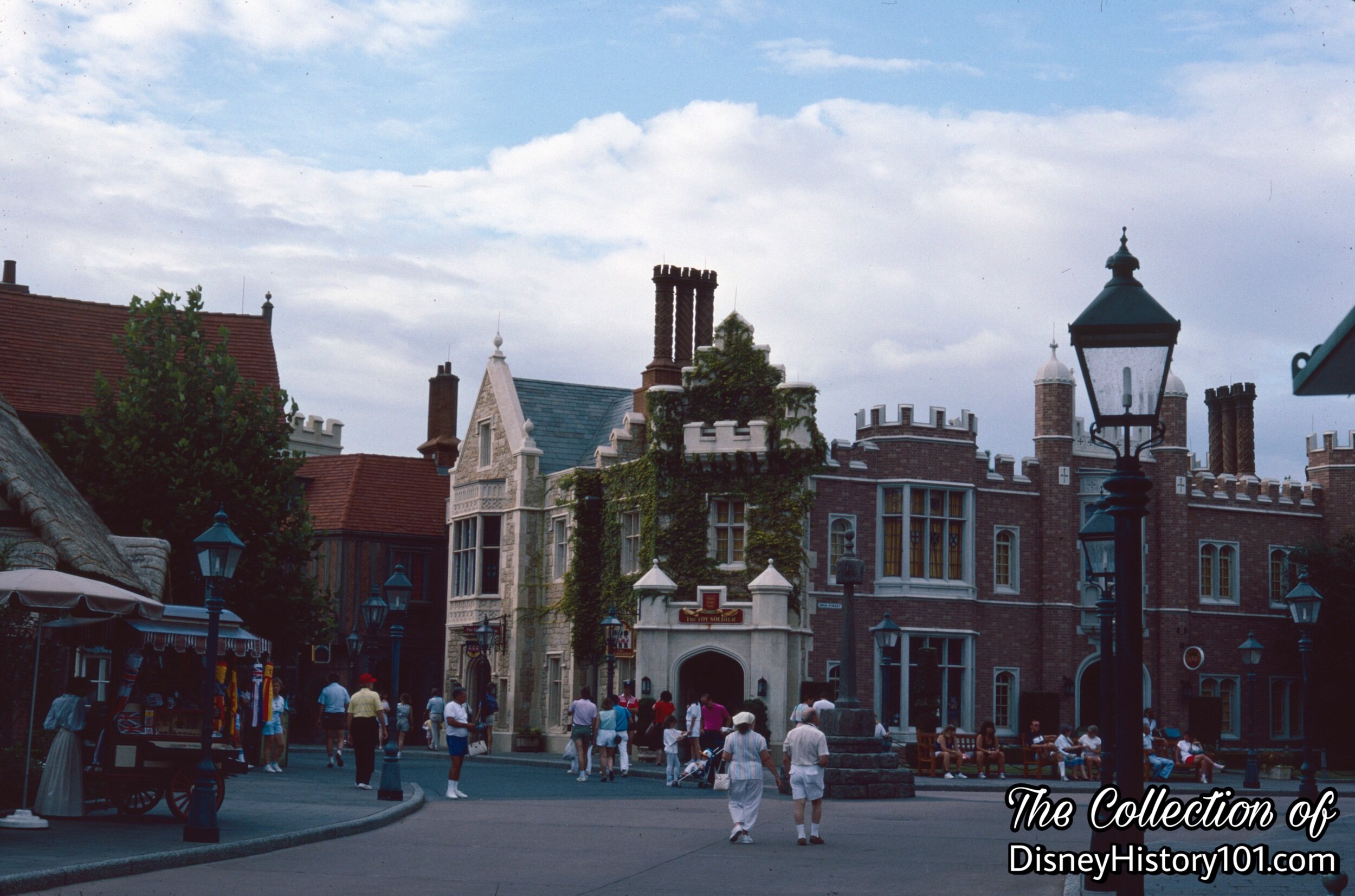

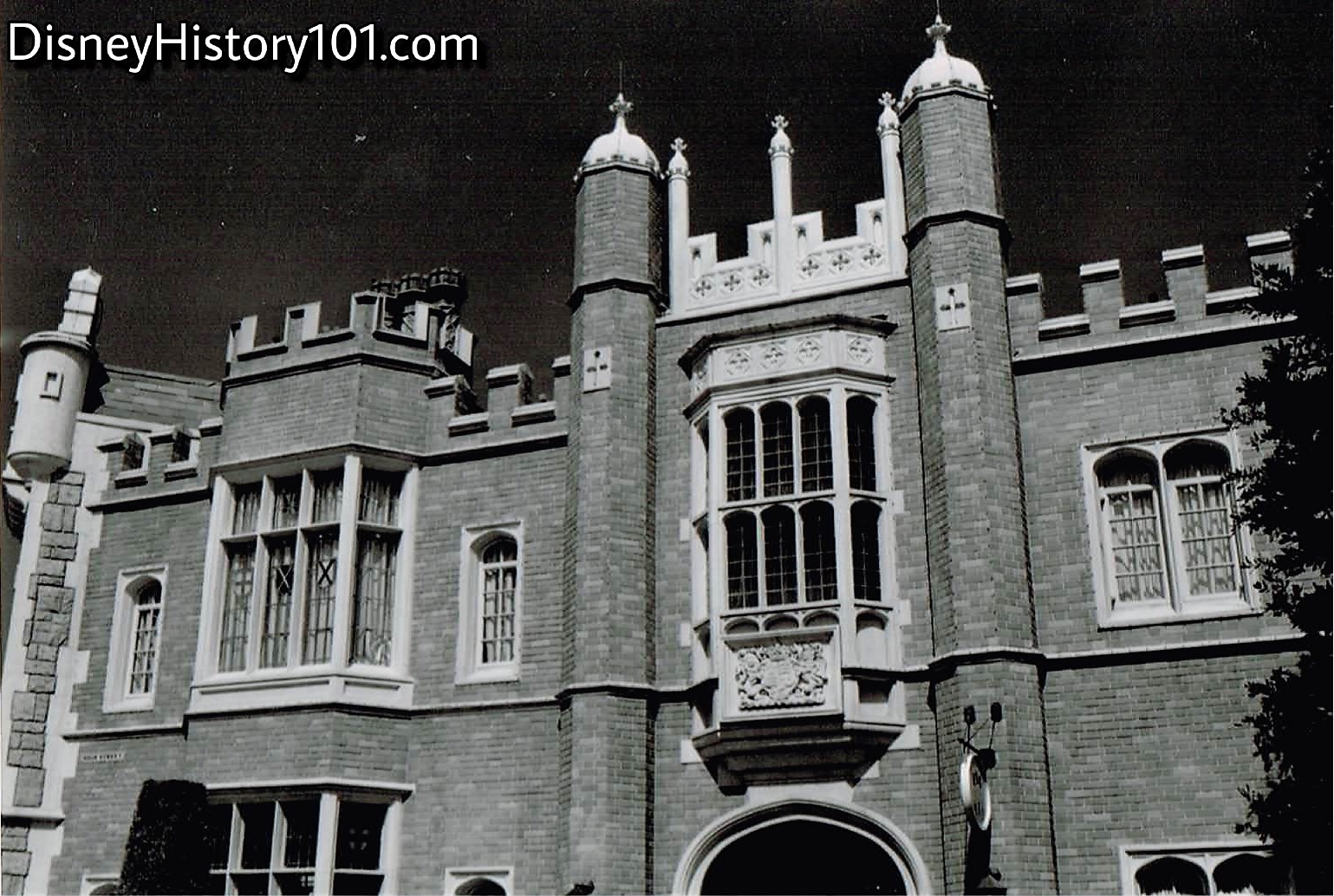

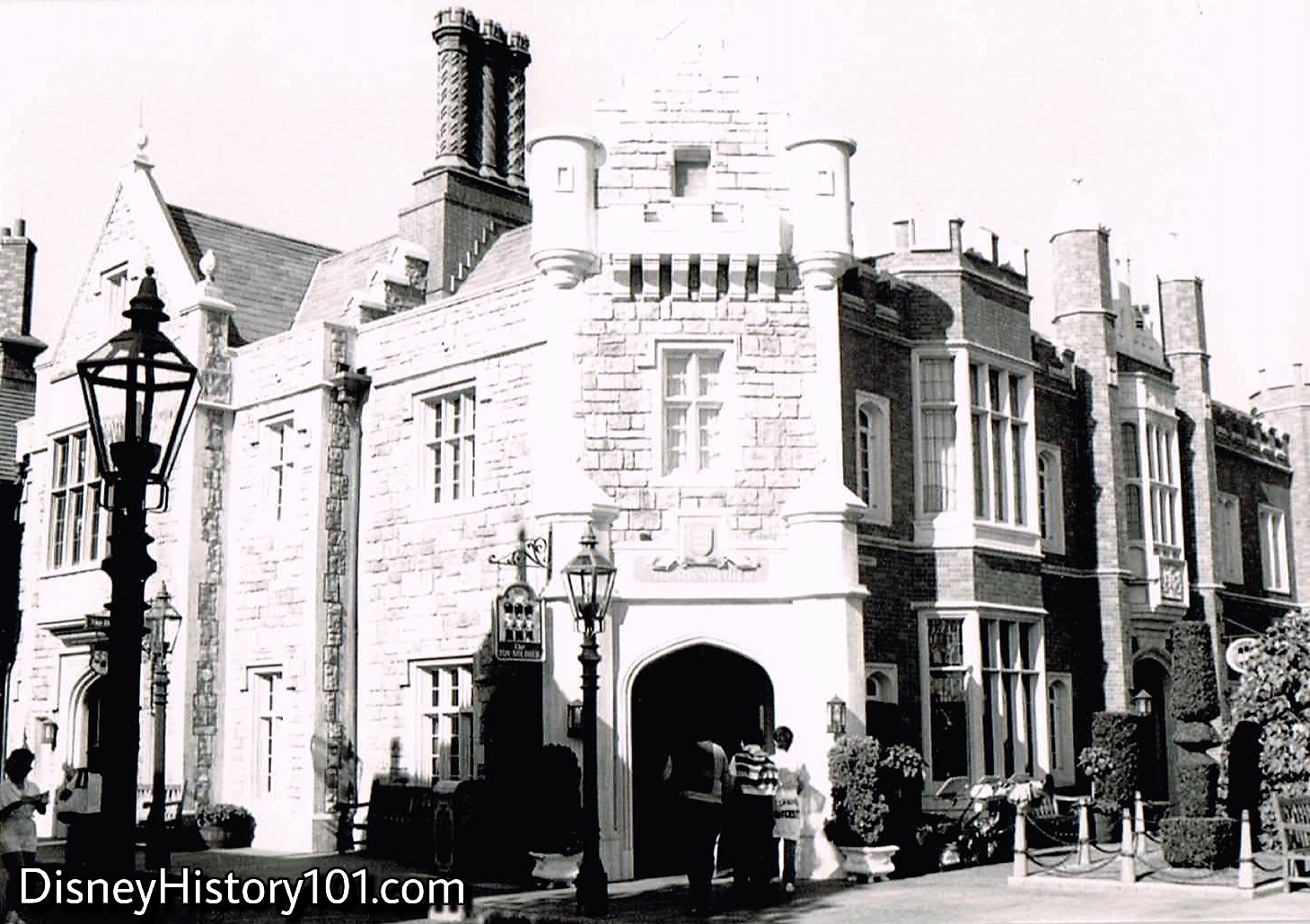



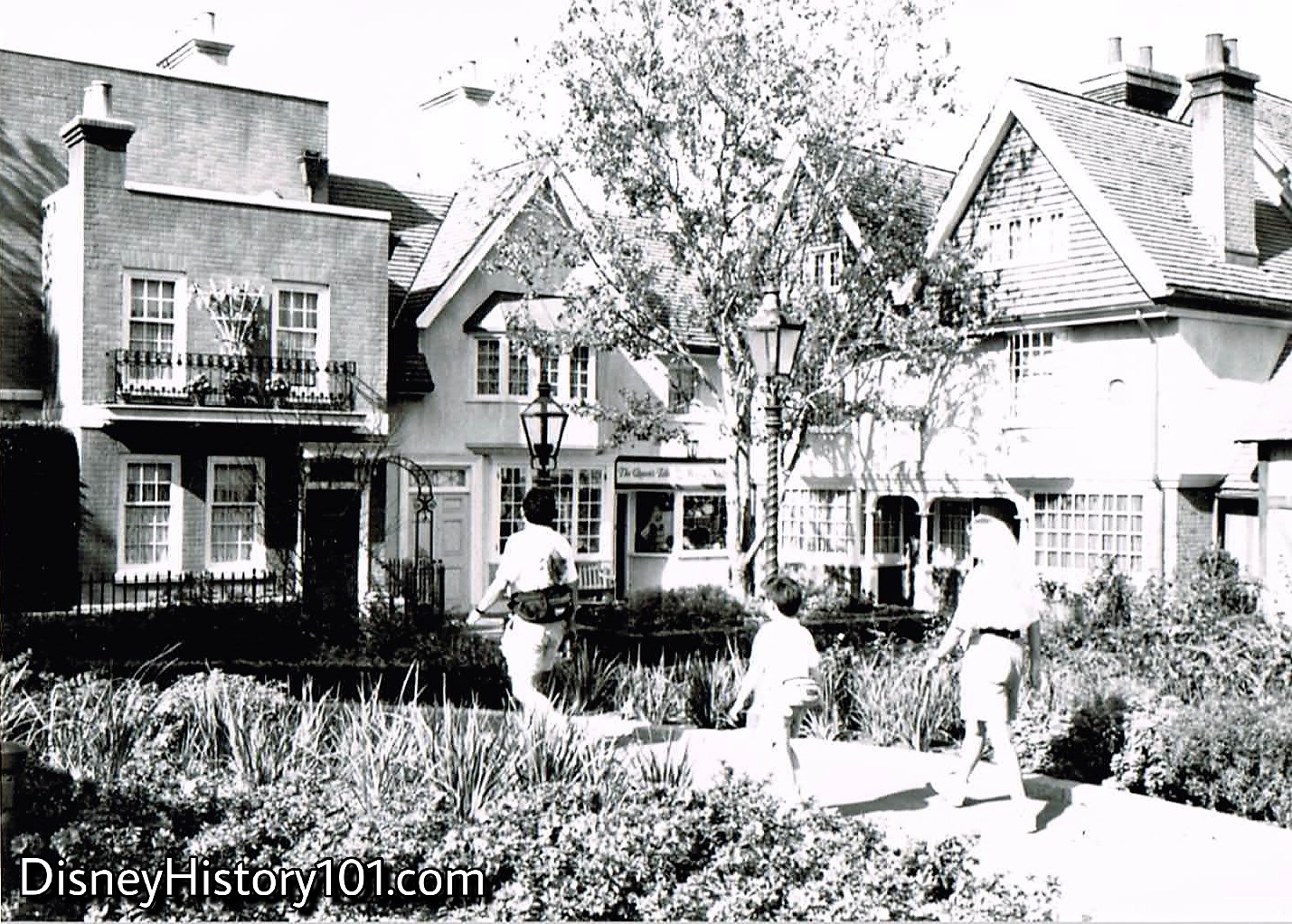
“The Queen’s Table”
Alison Nisbet, a second generation designer and costumer from The House of Nisbet visited The Queen’s Table fine china shop in Epcot Center’s World Showcase, Monday and Tuesday, September 19 and 20, 1983. Mrs. Nisbet introduced two new dolls recently added to the Royal Doul-ton Heirloom Collection: “H.R.H. Prince William of Wales” and “Princess Diana.” In celebration of Prince William's first birthday, Royal Doulton had created special limited edition “H.R.H. Prince William of Waler” and “Princess Diana” Heirloom dolls. Limited to 2,500 editions worldwide, “Prince William” was a cuddly one-year-old dressed in a typical Victorian-style sailor suit.
The House of Nisbet had taken its cue from the British press, which had closely watched Princess Diana’s choice of royal clothing for her royal heir and had duplicated the type of outfit in which she would dress him.
The House of Nisbet was internationally famous for its 8” high styrene dolls representing historical and contemporary royalty and other famous personalities. With over 100 portrait and costume dolls in the editions of “H.R.H. Prince William”, one of the brand new dolls that was added to the Royal Doulton Heirloom Doll Collection Nisbet Collection, the subjects ranged from a London Bobby through King Henry VIII to Ronald Reagan. The first House of Nisbet doll was created in 1953. 30 years later, it was still the extraordinary detail in costuming that marks dolls created by The House of Nisbet.
The association of Royal Doulton with The House of Nisbet brings together two extraordinary English traditions: Fine Bone China figure making and painting by Royal Doulton and fine doll costuming by The House of Nisbet. The end result: Royal Heirloom Dolls were a delight to today's doll collectors and admirers.
Nisbet Collection, the subjects range from a London Bobby through King Henry VIII to Ronald Reagan. The first House of Nisbet doll was created in 1953. Today, 30 years later, it is still the extraordinary detail in costuming that marked dolls created by The House of Nisbet.
The association of Royal Doulton with The House of Nisbet brings together two extraordinary English traditions: Fine Bone China figure making and painting by Royal Doulton and fine doll costuming by The House of Nisbet. The end result:
Royal Heirloom Dolls that are a delight to today's doll collectors and admirers.
Alison Nisbet autographed the days’ purchases from the famous line of Royal Doulton Heirloom dolls. Collectors and connoisseurs of Royal Doulton Heirloom dolls were able to learn, on a firsthand basis, what went on behind the scenes in the making of the treasured and sought-after collector’s items.
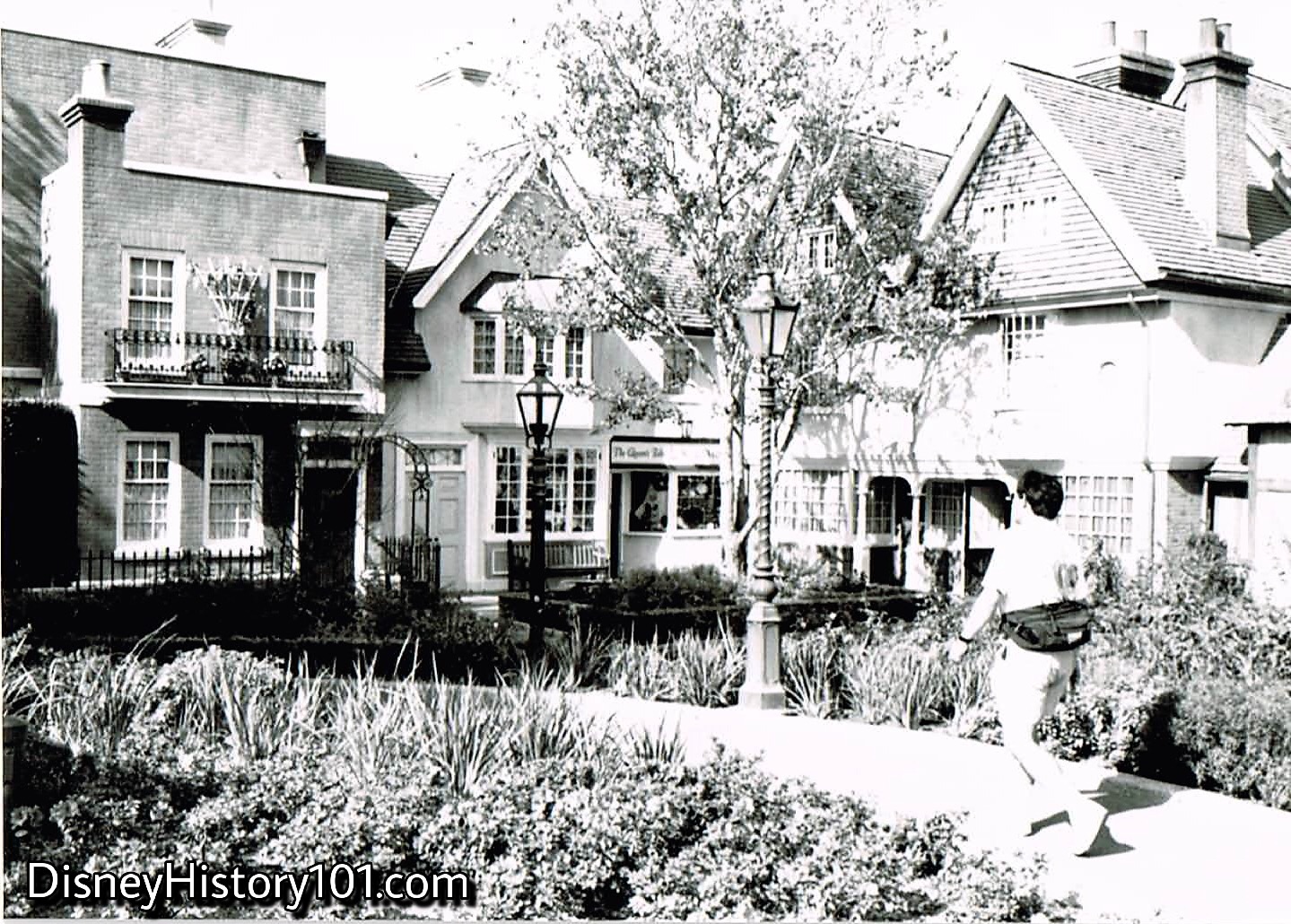

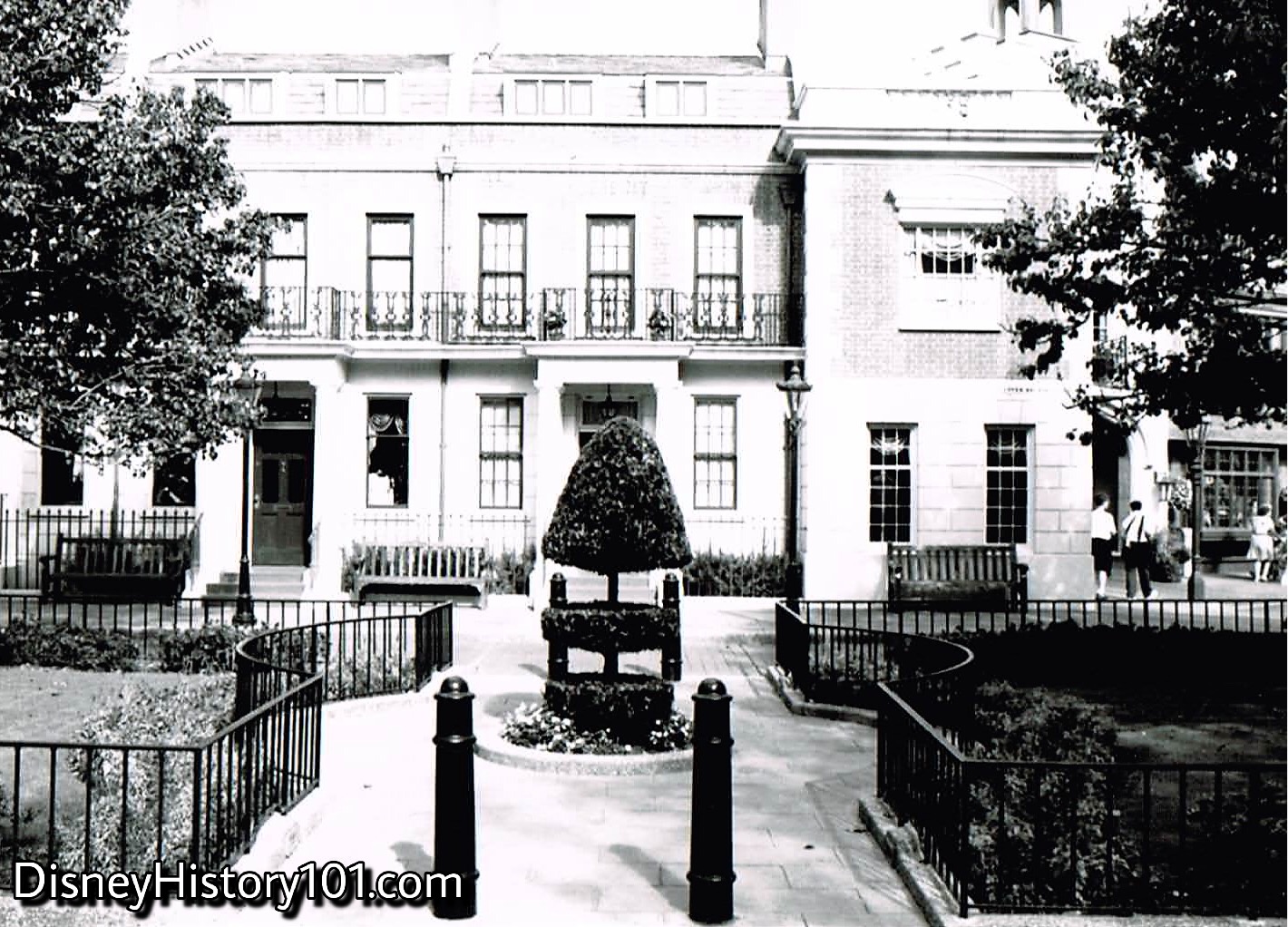
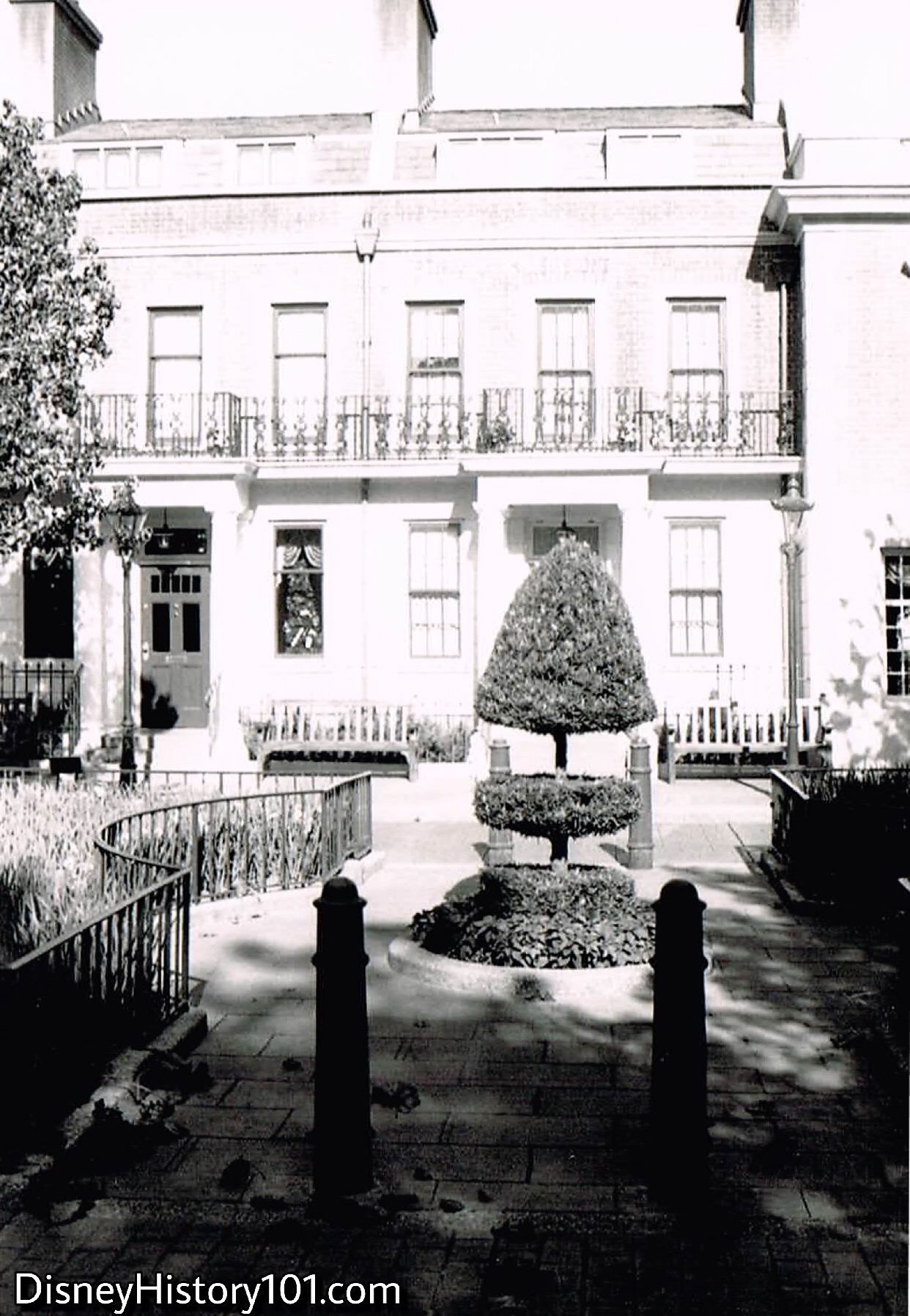
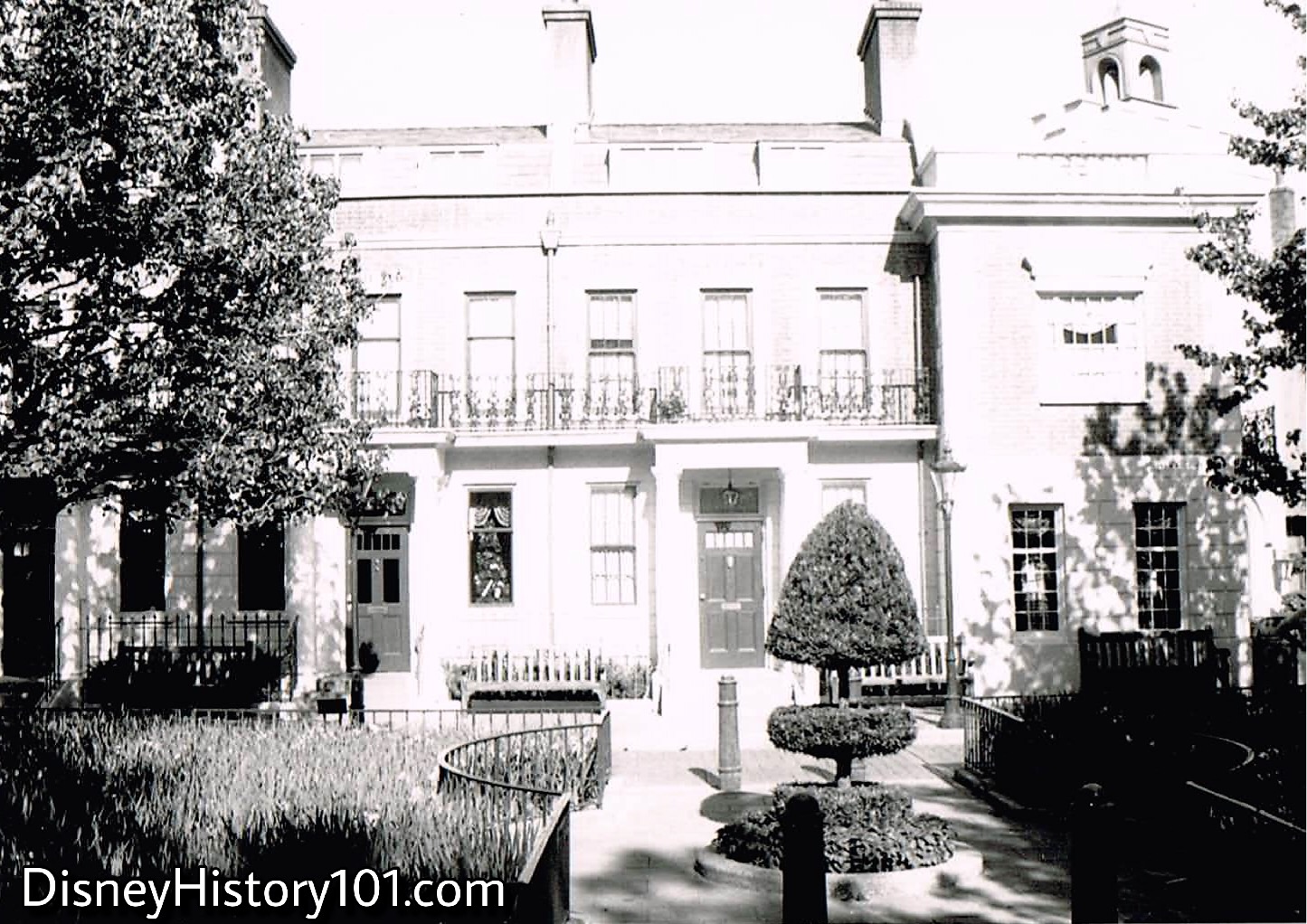
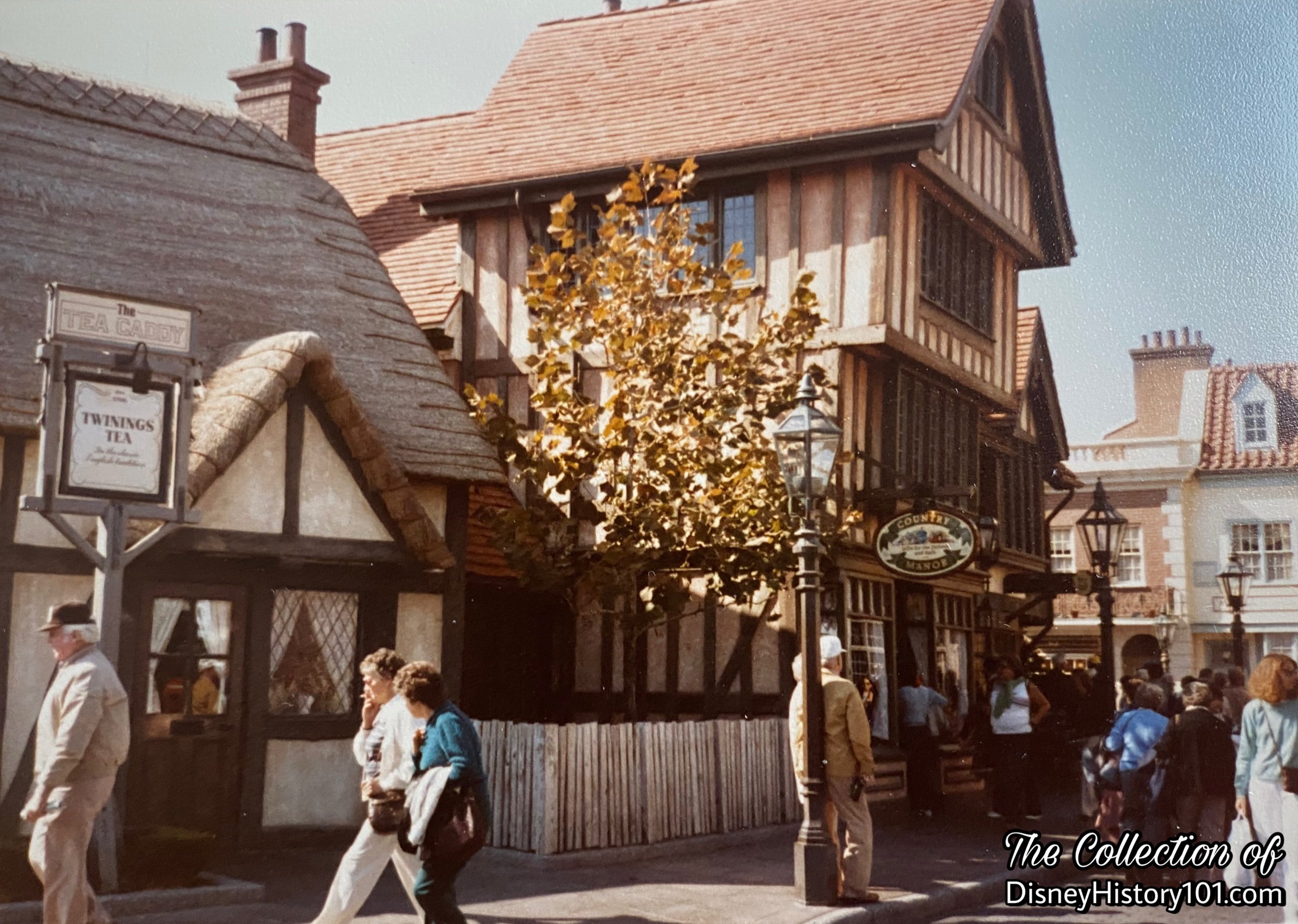


In 1978, Card Walker (at the World Congress of the International Chamber of Commerce) announced: “The World Showcase will be a community of nations, the only permanent international exposition of its kind anywhere, focusing on the culture, traditions, tourism and accomplishments of people around the world… a model for true people-to-people exchange, the World Showcase will offer participating nations an opportunity to send their outstanding young adults to operate the attractions, shops, restaurants and exhibits of their pavilions. And these young people who will work, play and learn together for a period of up to one year will help to generate greater international understanding.” The Epcot World Showcase would truly be “a showcase of the world…and a showcase to the world.” Here ”the nations of the world will stand side by side…” and “meet on a coequal basis to communicate on a ‘people to people’ exchange with the more than 12 million visitors.” Here ”the nations of the world will stand side by side…” and “meet on a coequal basis to communicate on a ‘people to people’ exchange with the more than 12 million visitors.”
According to one Pre-Opening Day c.1982 orientation instructor’s guide: “The familiar faces of the Disney Characters won’t be there.” Instead, EPCOT Center Cast Members would be referred to as ambassadors of “the spirit of EPCOT Center,” since that very namesake orientation class. Without them, EPCOT Center would just be one magnificent stage. This ambassadorial Cast (in understanding the Epcot dream) would become “the link between the shows and the guest.” According to a souvenir guide, the EPCOT Center Hosts and Hostesses were ambassadors “of happiness, hope, optimism and goodwill.” According to one prospectus: “In this true people-to-people concept, sponsoring nations will be invited to send their outstanding young adults to operate the attractions, shops, restaurants and exhibits of their pavilion.” Proving this were the authentic Royal Irish Rangers, Pearly Kings and Queens, and one “William Shakespeare” that helped open the World Showcase on October 1, 1982. Through the World Showcase Festival Program, Epcot Center guests were entertained by performers from all over the world. These “cultural ambassadors” included entertainers representing Greece, Africa, Cambodia, the Dominican Republic, Yugoslavia, Israel and Norway.
The international guests would soon find that the United Kingdom World Showcase Cast Members were knowledgeable and prepared to answer questions about the pavilion and the country itself, and would even provide foreign language assistance, and guest literature in many languages. As early as June of 1980, it was divulged: “Young people will be brought over from their native country on a combination work and education program. Courses with college credit will be conducted at Walt Disney World University.” [“Orlando-Land!” published for June of 1980] All of these would contribute to a community of nations standing side by side. As Ken Anderson once noted, “I see people getting to know one another better on a scale, and in an environment that makes our similarities more important than our differences… a tremendous way of shrinking the world even further.”

Since the beginning, Atmosphere Entertainment complimenting the theme of areas was staged to entertain Pavilion Guests on an immediate and personal level. The Streetmosphere program began in the Italy Pavilion with some 60 SAK Theater actors (including C. McNair Wilson, Terry Olson, Herb Hansen). Eventually shows were added to Future World and the United Kingdom World Showcase Pavilion, at a rate of 45 shows a day performed from four areas. At the United Kingdom, you'll meet the Pearly Kings and Queens and an Elizabethan poet named Will Shakespeare.
Walt Disney Entertainment department developed new shows and parades for all of Walt Disney World. Soon Character and Equity groups performed in this area of World Showcase West (and the International Gateway between the UK and France Pavilions), with Characters overseen by the WSC West Captain. Ultimately, Streetmosphere also called “Streetmo”) would support the Disney-MGM Studios Show. There, equity contract performers would portray 1930's/40's Hollywood citizens on Hollywood or Sunset Boulevards.
At EPCOT, “8,990 additional costume pieces will be laundered each day - bringing daily output to approximately 27,400 costume pieces.”
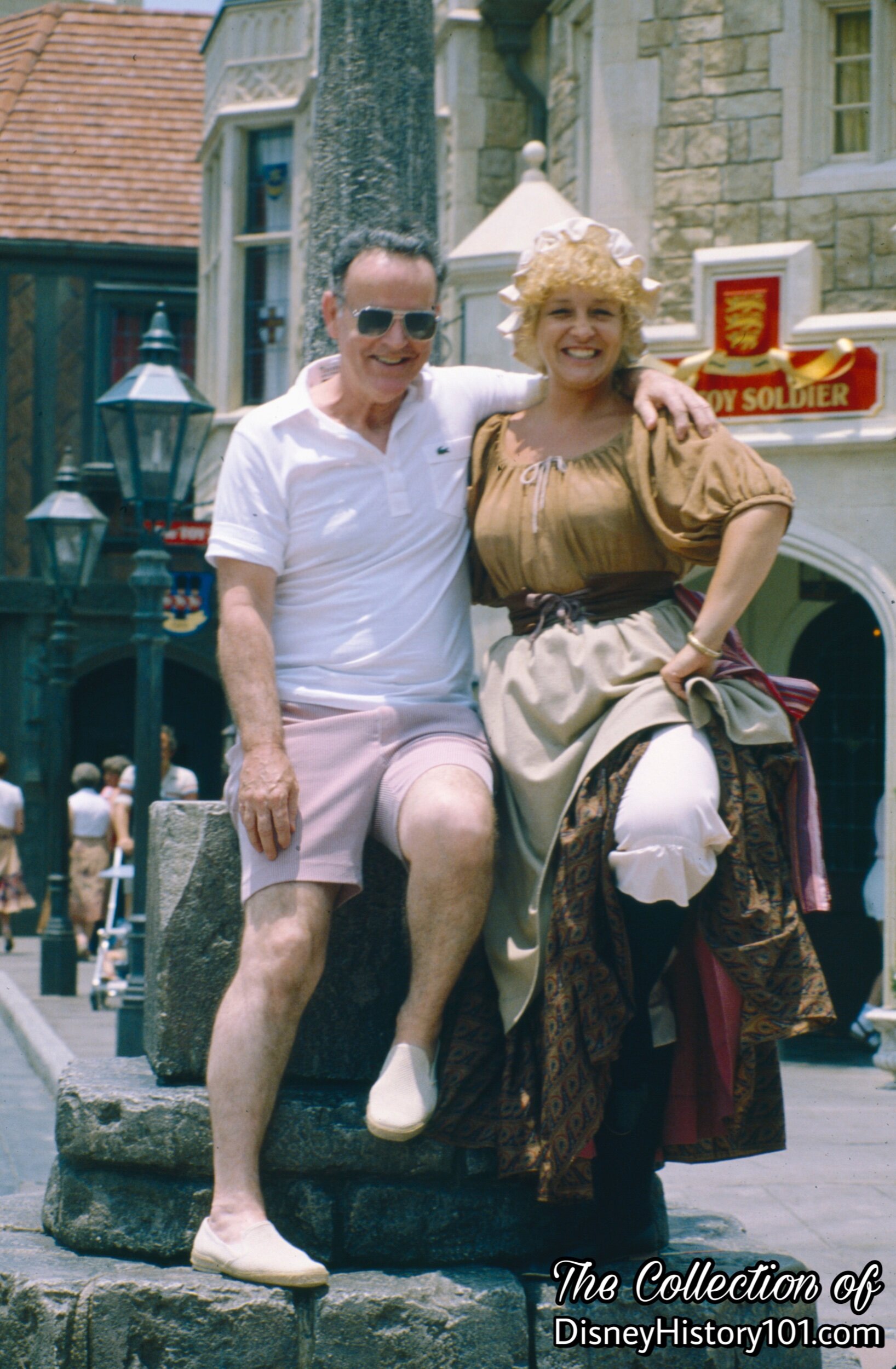
Other popular crowd-pleasers were the Pearly Kings and Queens.
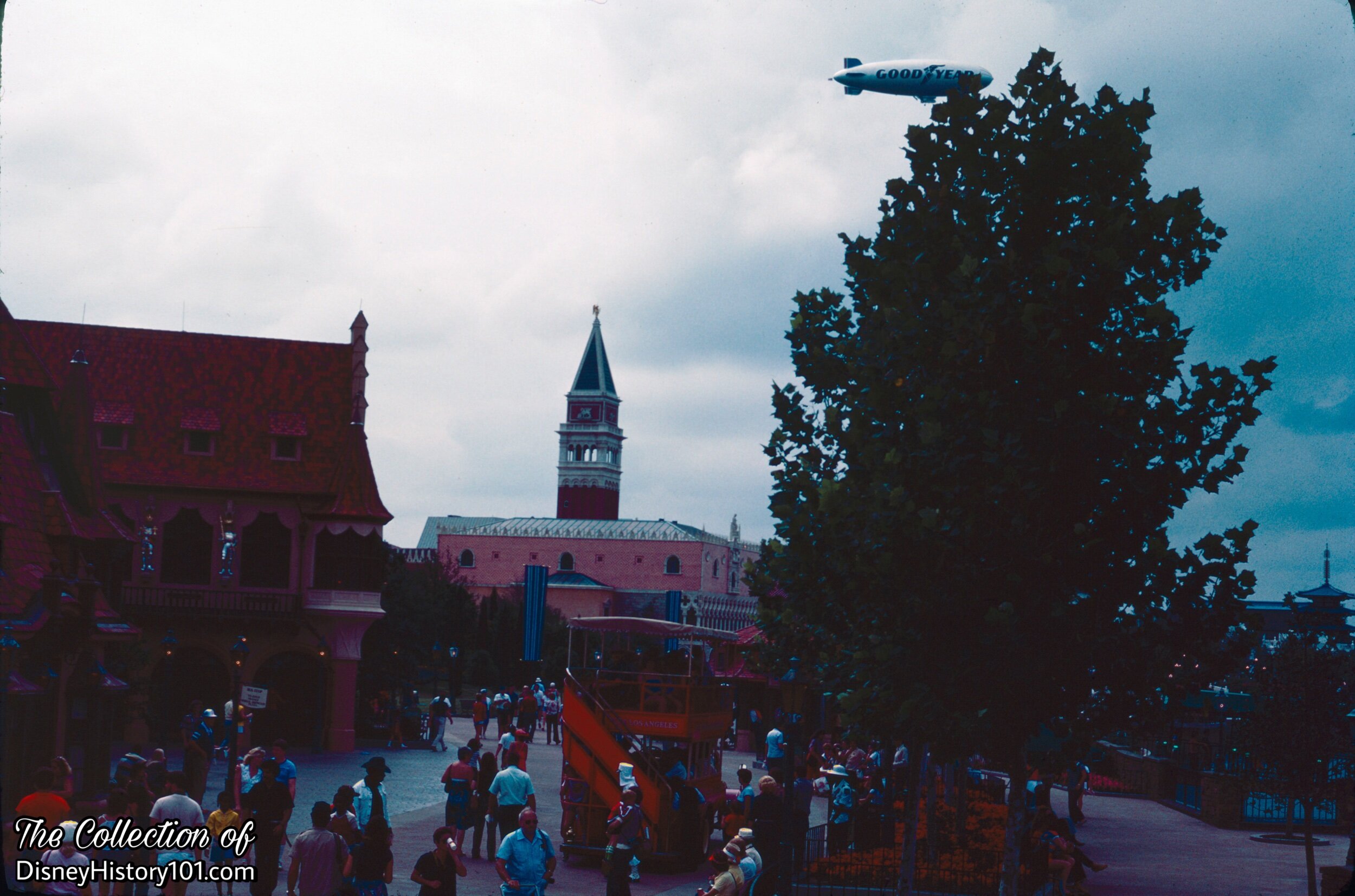
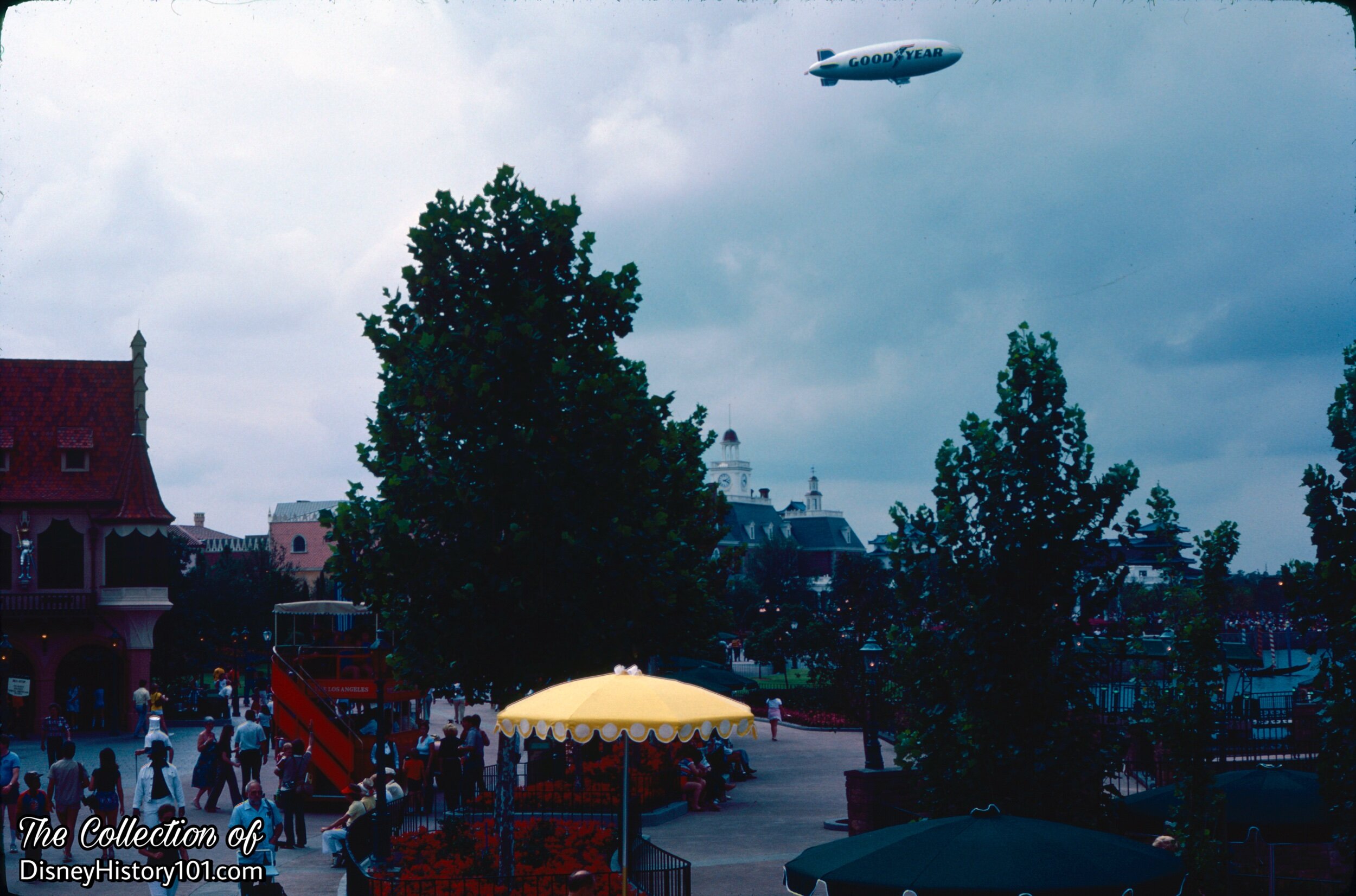


By c.2007, Guests May recall “Disney Characters on Holiday” (DCOH), a group of Characters that performed in several locations in Epcot, entering and exiting on a European double-decker bus. One of their Set Locations was in the Norway pavilion.

Obviously, the fastest way to move people over the extended areas of a Park is with moving vehicles. "FriendShip" launches crossed the World Showcase Lagoon and readily accommodated guests in wheelchairs and strollers. Buses regularly circled the World Showcase promenade. By 1982, getting around the World Showcase area was made easier with additional transportation, in the form of seven more busses and two new boats with a third under construction.

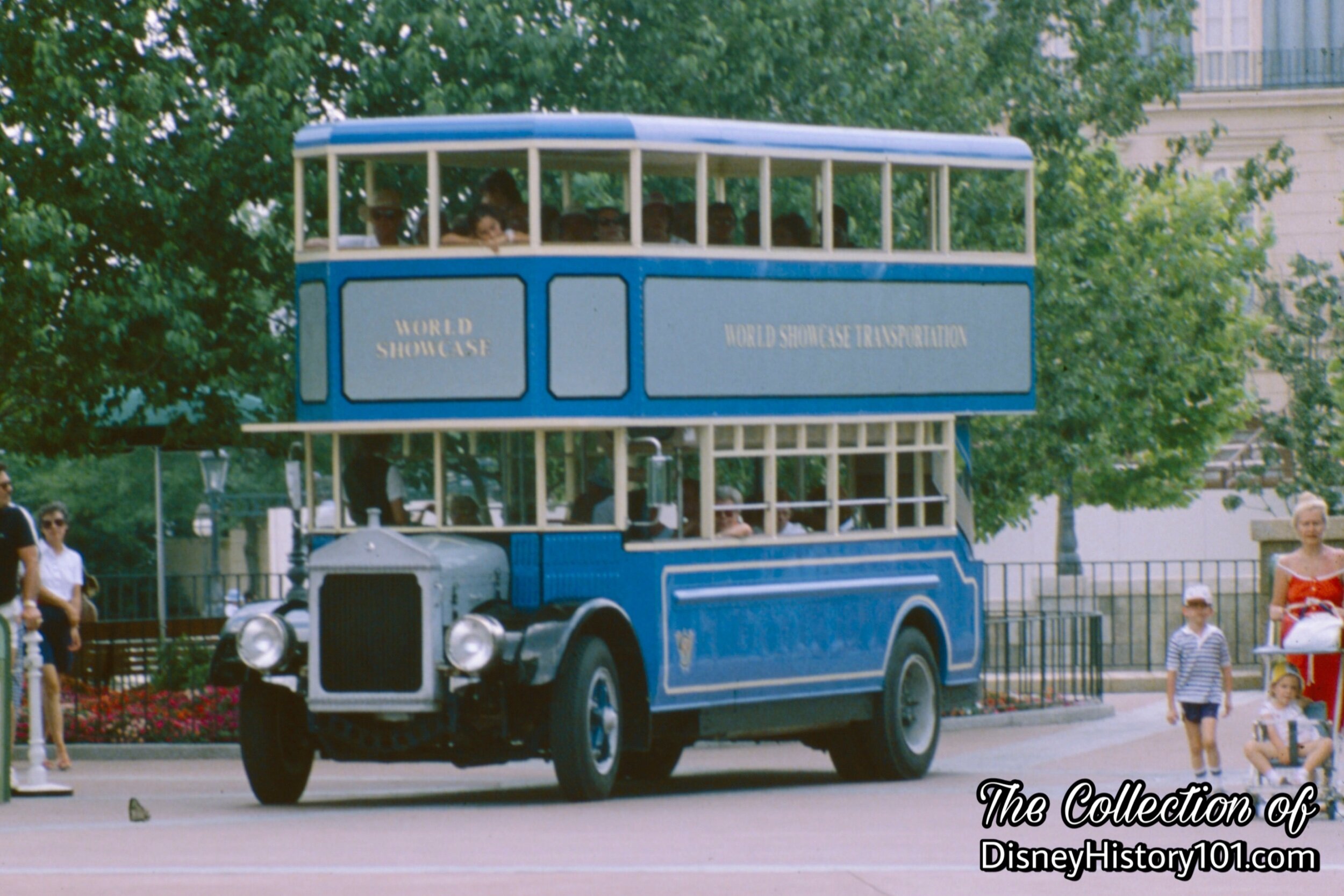

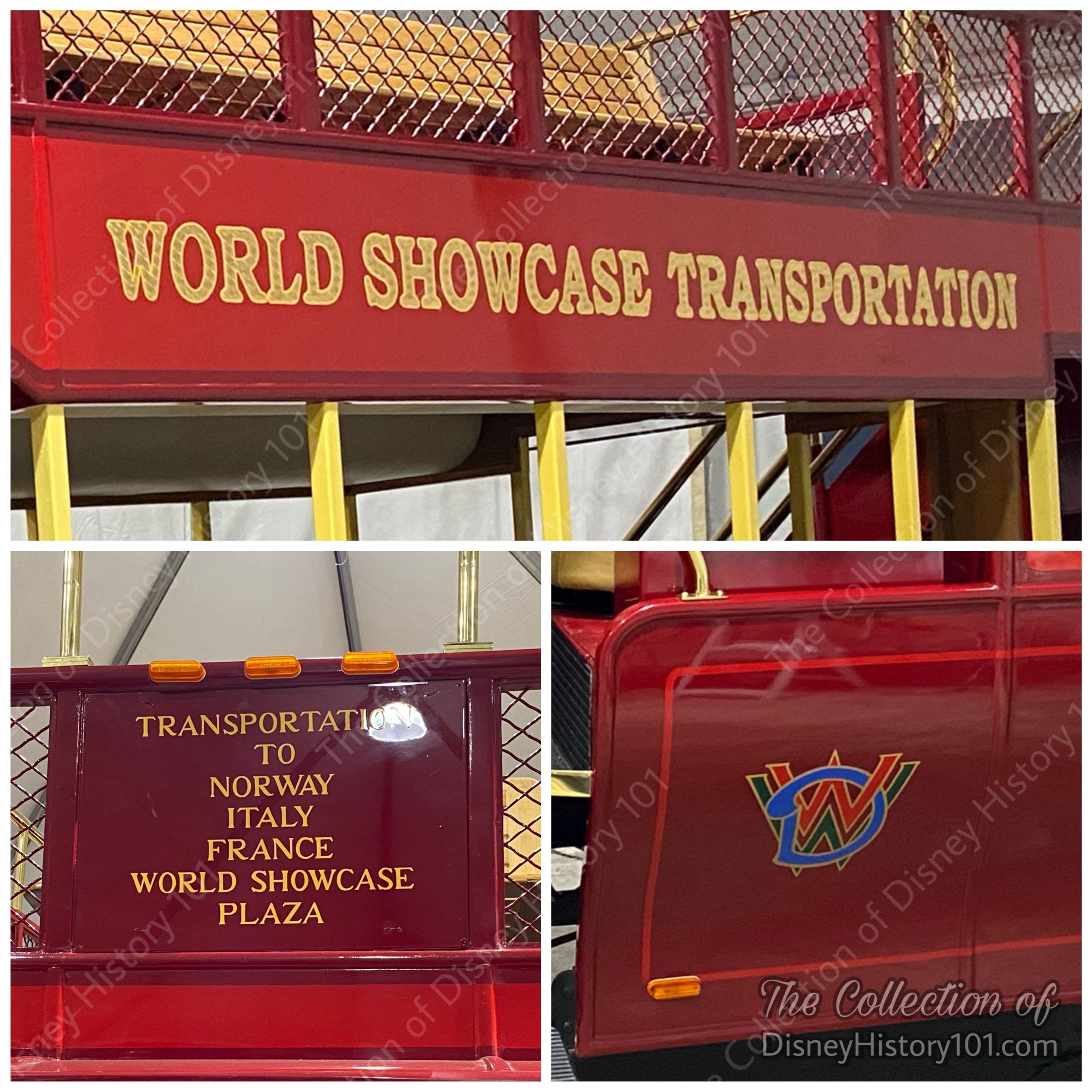
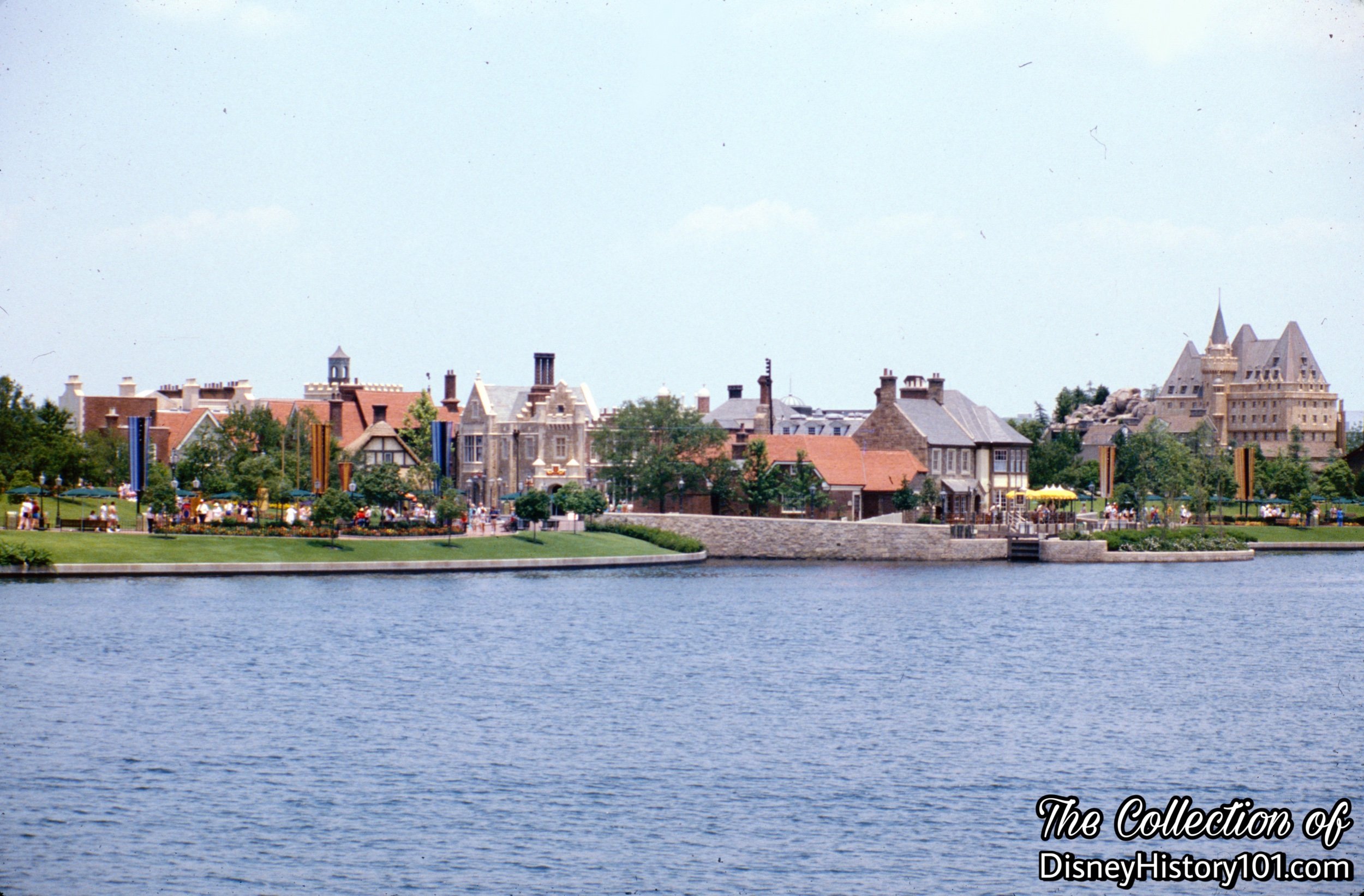
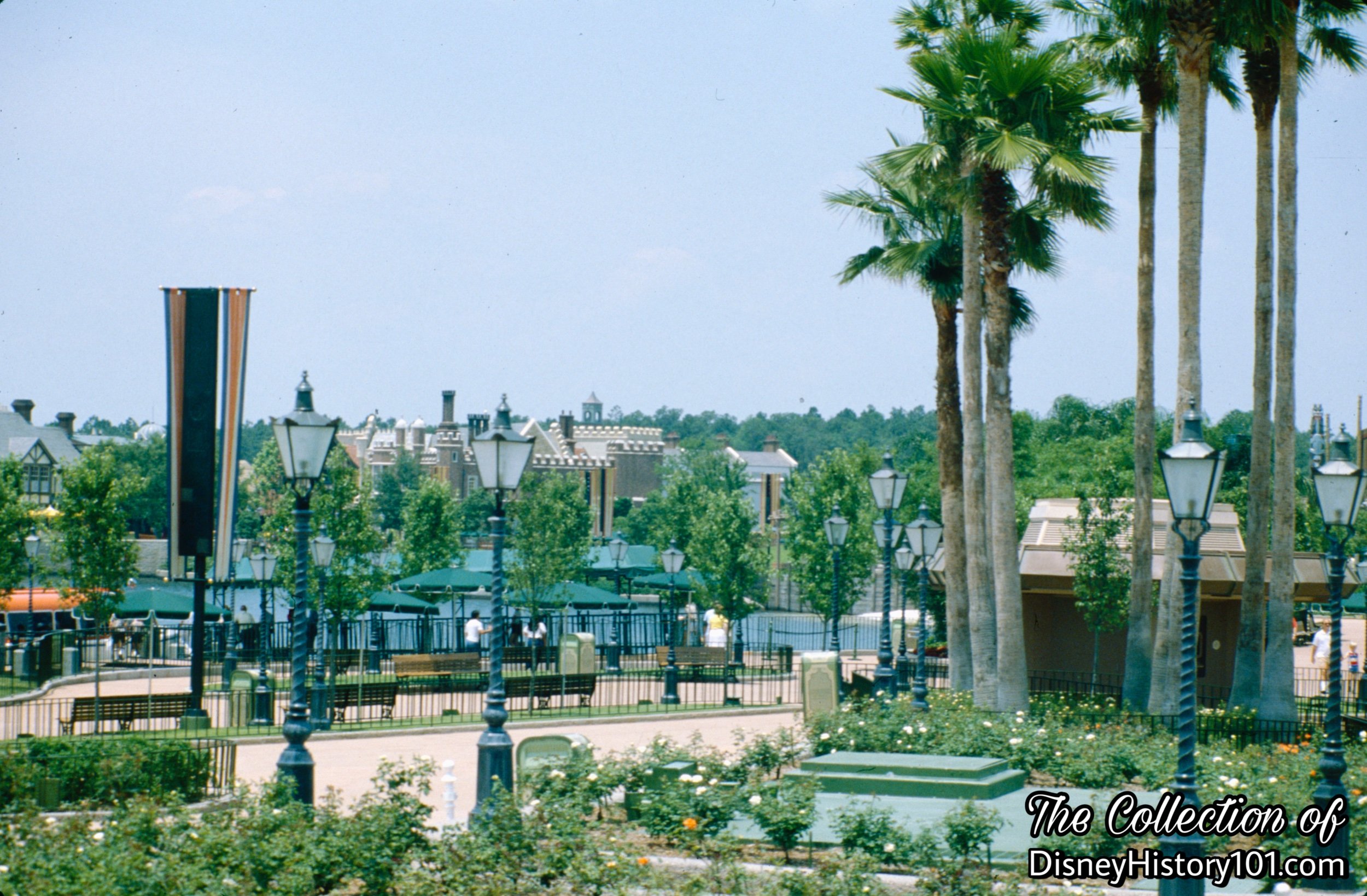

By August of 1975, the Feasibility Analysis Economic Study was completed for (what was first billed as “Oriental Disneyland”), an area called “International Land” was mentioned. It seems that (much like the original concept for EPCOT Center), Guests of International Land would also have “an opportunity to experience the endless variety of today's community of nations… discover the culture, traditions, tourism, and accomplishments of the participating countries through a wide variety of exciting shows and attractions, restaurants, and shopping streets unique to the individual nations.”
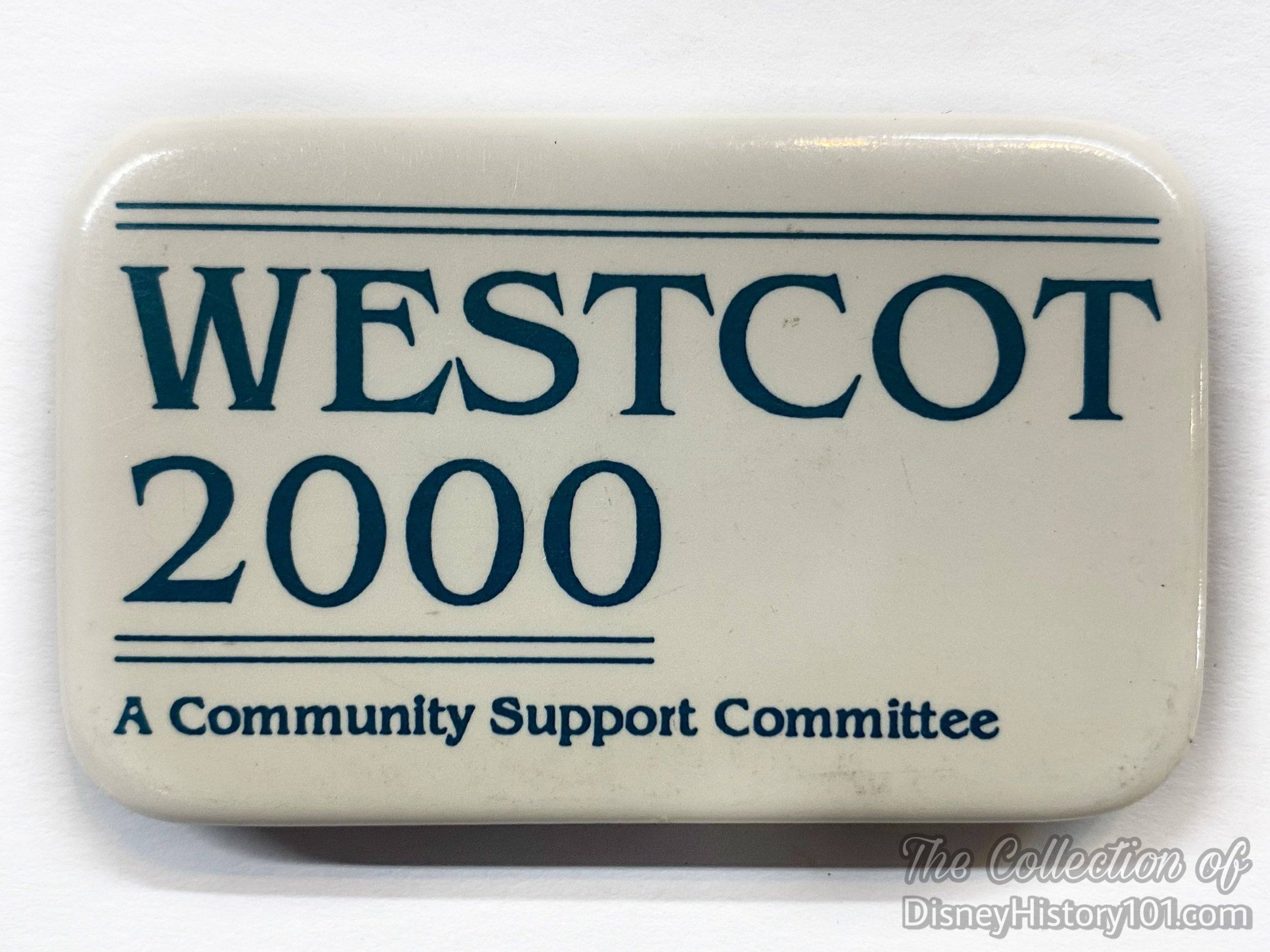
“It Looks Like We Started Something - Epcot Center Legacy”
The EPCOT Center World Showcase nearly had a legacy in WESTCOT Center - “a West Coast version of EPCOT Center, with a Spacestation Earth as its centerpiece, and a World Showcase. It was initially announced in March 1991, to be built where Disney California Adventure was eventually situated.” [Disney Facts Revealed by Dave Smith, 2016]

World Showcase nearly had a legacy in WESTCOT Center. Guests would have been transported to the Wonders of WESTCOT themed pavilions. At World Showcase, located around the island, visitors would have explored every corner of the globe at dramatic pavilions of foreign lands. WESTCOT was to include a whole new World Showcase of culture, traditions, tourism, and accomplishments of participating nations. Like EPCOT Center, these would be experienced through a wide variety of exciting shows and attractions, restaurants, and shopping streets unique to the individual nations.
